Workflows Summary

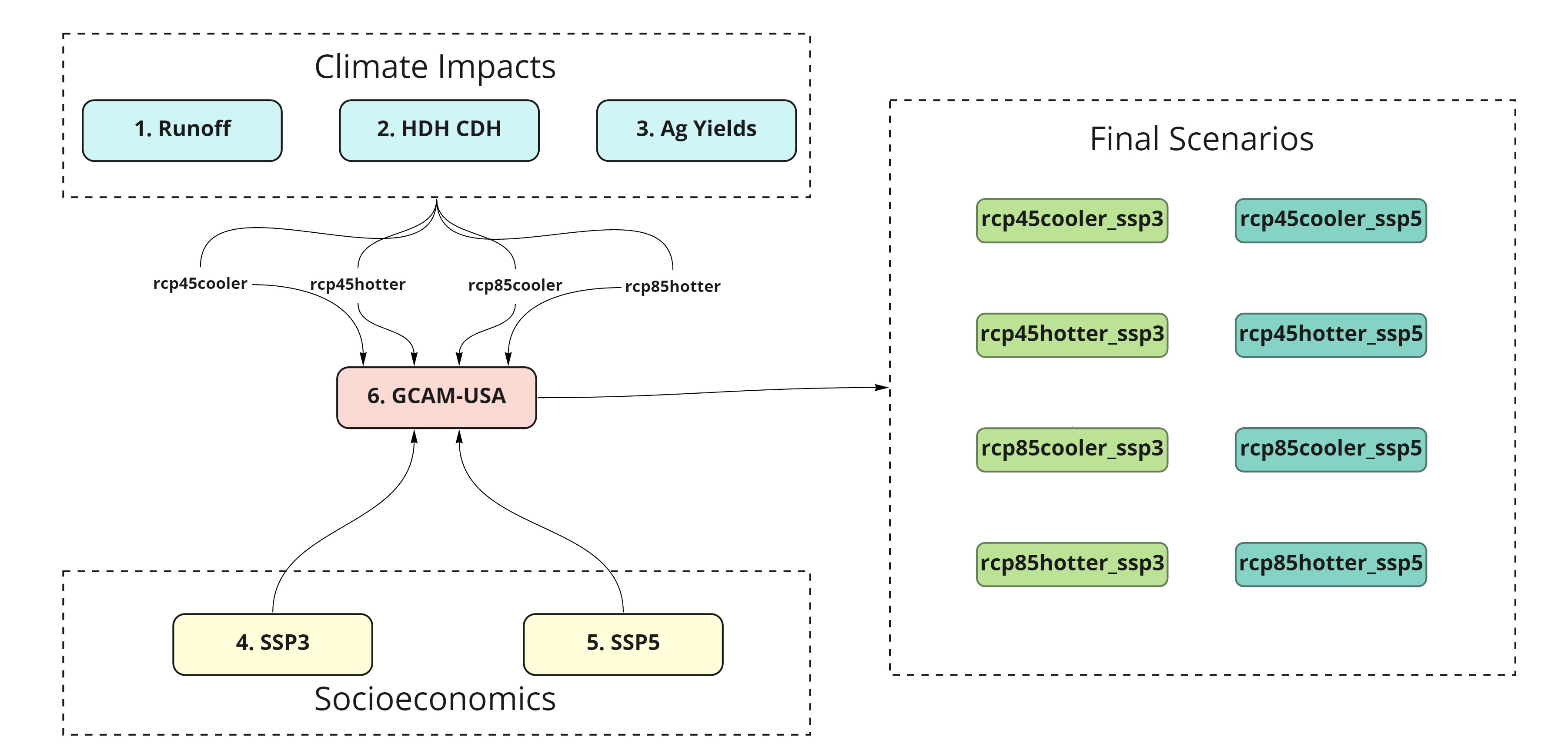
Summary of experiment workflows.
Workflow 1 - Runoff

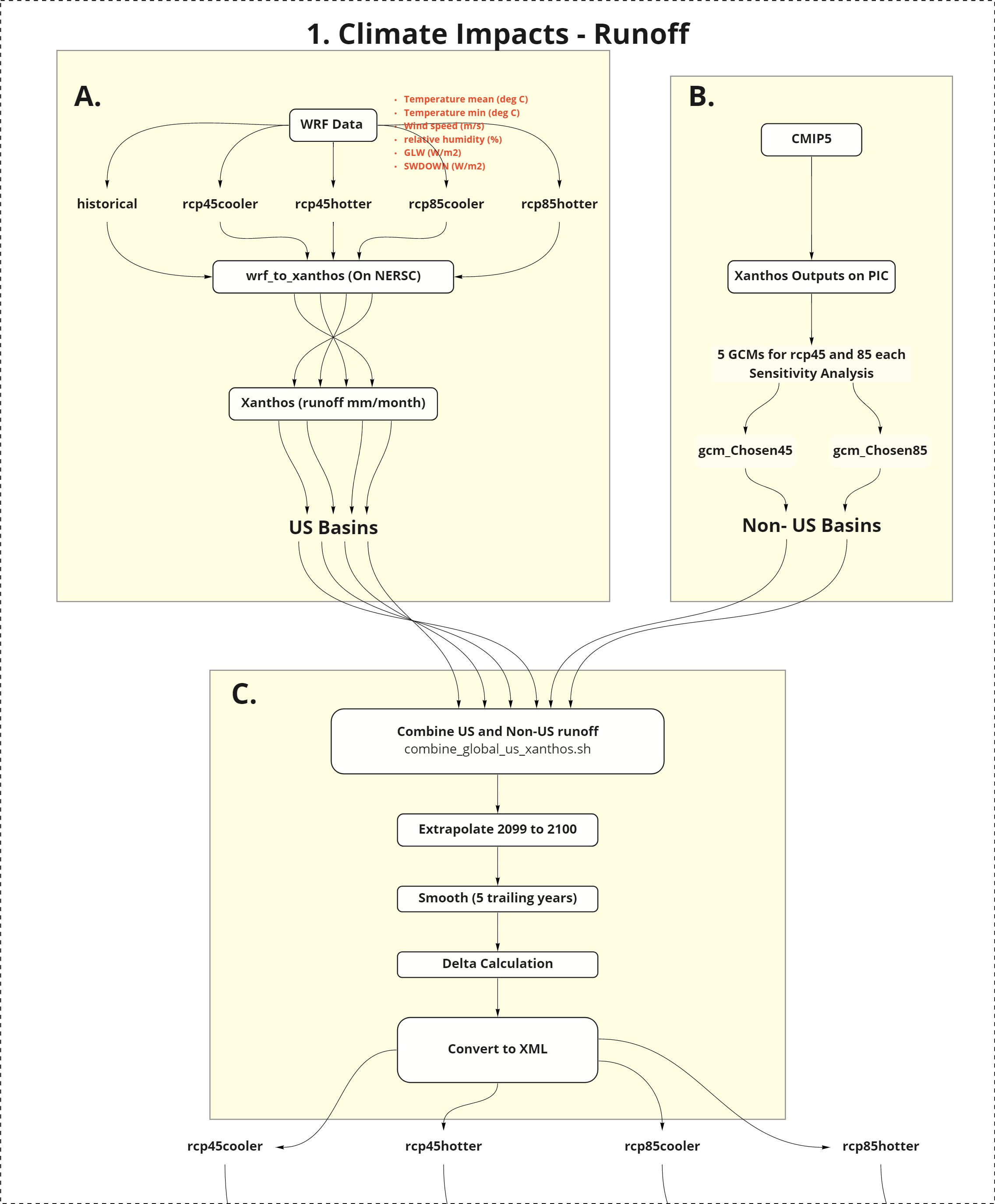
Workflow 1: Climate Impacts Runoff.
Workflow 1A US Basins
Table Workflow 1A
Workflow 1A results in WRF outputs being processed and run through Xanthos to produce runoff in mm per month for US Basins to be combined with Non-US Basins runoff results from Workflow 1B.
| Step | Description | Location |
|---|---|---|
| WRF Outputs Raw |
|
(NERSC) /global/cfs/cdirs/m2702/gsharing |
| wrf_to_xanthos |
|
|
| xanthos | wrf_to_xanthos_combine_historical_ssp585_hot_near_far_us_global_xanthos.sh |
|
Workflow 1B Global Basins
Table Workflow 1B
| Step | Description | Location |
|---|---|---|
| CMIP5 Outputs Raw |
|
*(PIC) /pic/projects/im3/gcamusa/climateimpacts/raw_global_runoff_files |
| Xanthos Outputs on PIC | runoff_global_xanthos_to_gcam.sh | *(Repo) https://github.com/IMMM-SFA/khan-etal_2022_im3gcamusa/scripts |
| Xanthos GCAM GCM Sensitivity Analysis | gcamDiagnostics_runoff_GCMs_5trail_delta.sh | (PIC) /pic/projects/im3/gcamusa/diagnostics /pic/projects/im3/gcamusa/diagnostics/outputs_runoff_GCMs_5trail_delta |
| Xanthos GCAM smoothing Sensitivity Analysis | gcamDiagnostics_runoff_NORESM_smooth_delta.sh | (PIC) /pic/projects/im3/gcamusa/diagnostics /pic/projects/im3/gcamusa/diagnostics/outputs_runoff_NORESM_smooth_delta |
Runoff Diagnostics
Compare GCMs
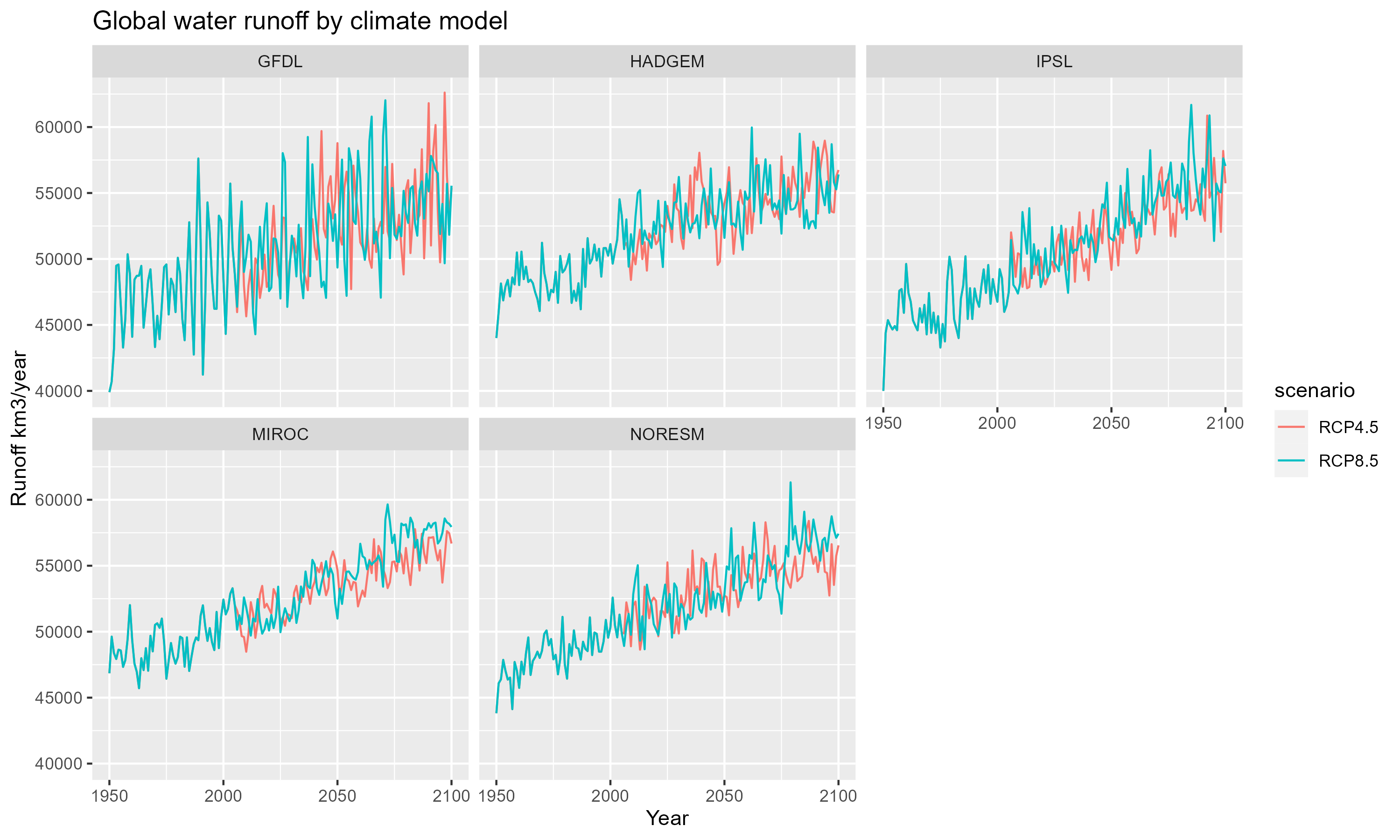
Comparison of water runoff across five global climate models (GCMs).
Compare Smoothing
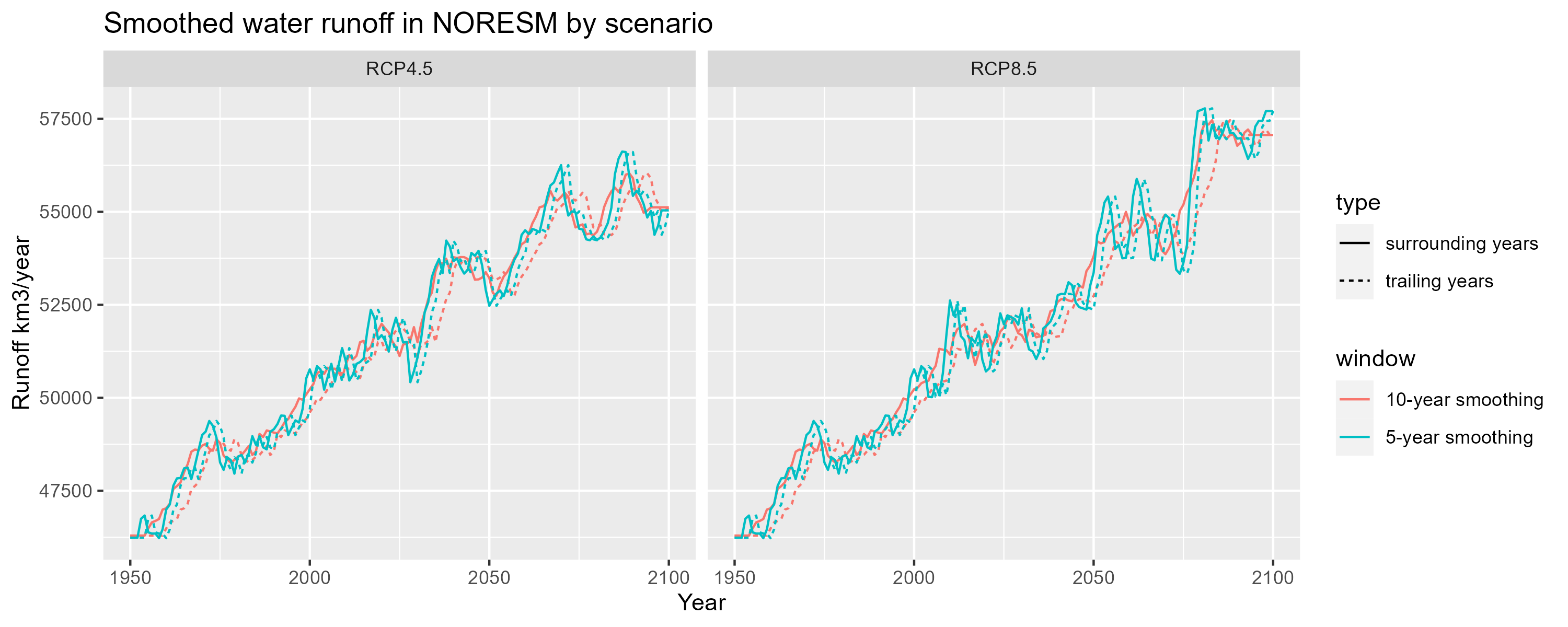
Comparison of smoothed runoff data from the NORESM model
Compare Deltas
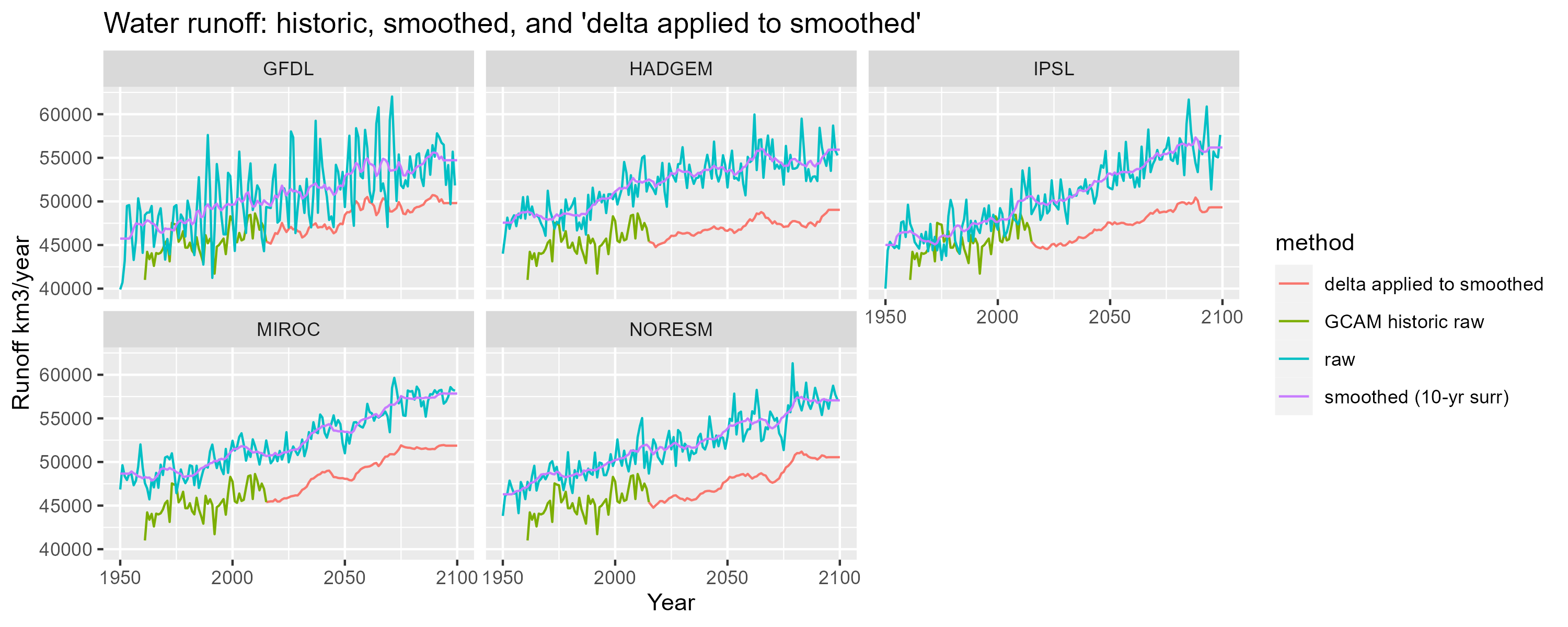
Comparison of baseline data, smoothed runoff data, and ‘delta’ applied to smoothed data
GCAM Outputs GCMs
Summary
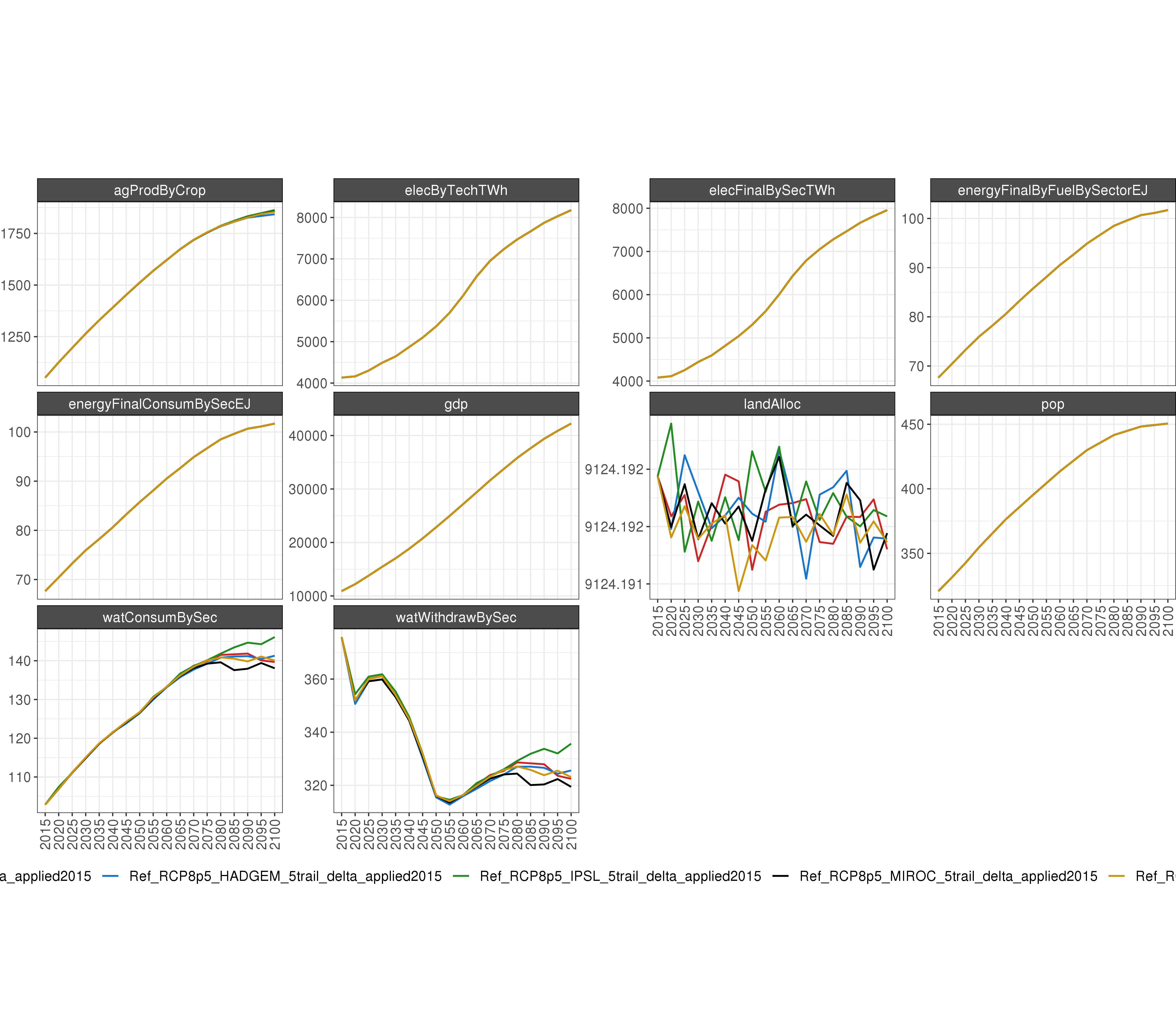
Comparison of GCAM outputs global runoff for 5 GCMS
Socioeconomics
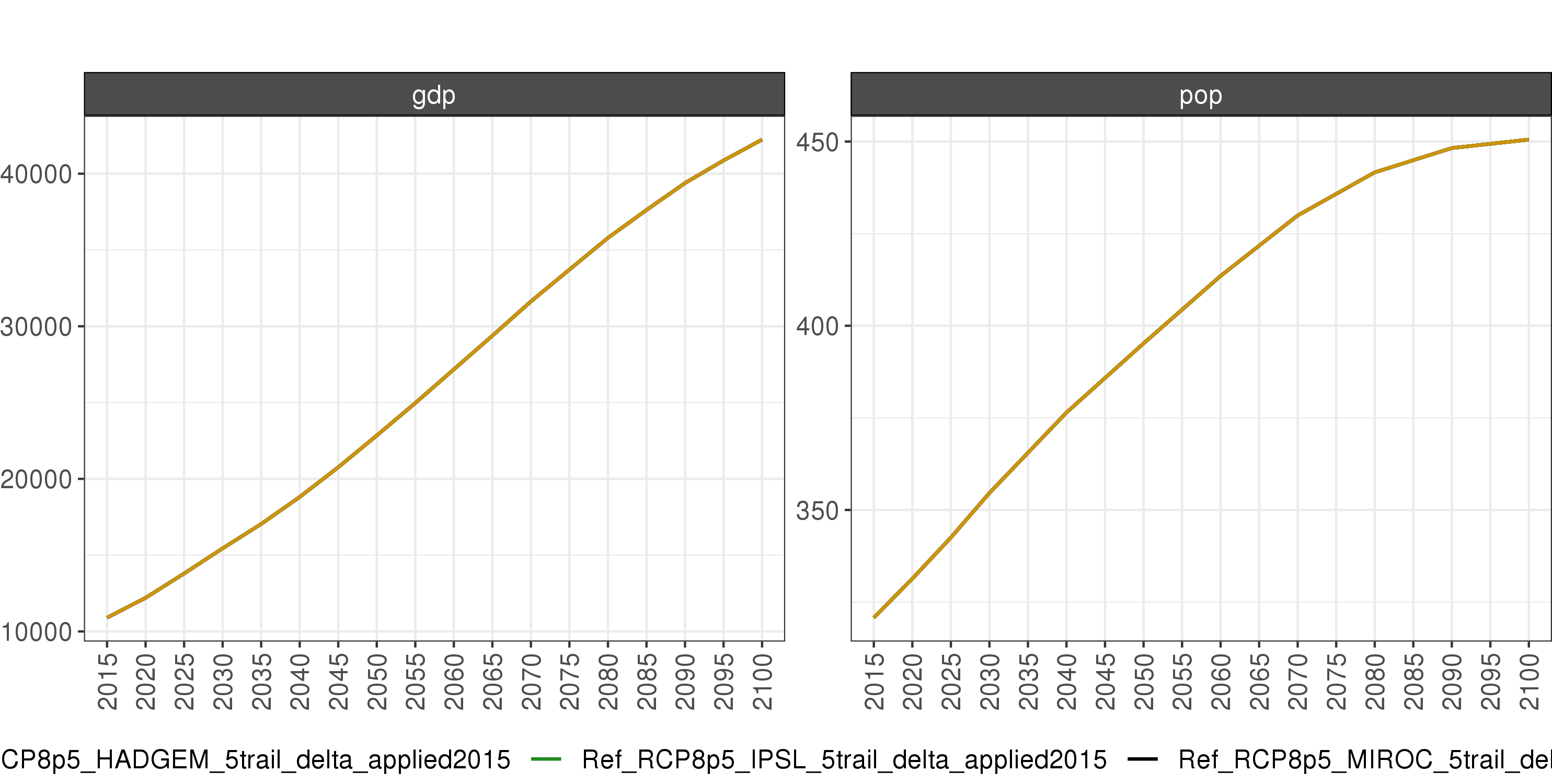
Comparison of GCAM socioeconomic outputs for 5 GCMS

Comparison of GCAM socioeconomic outputs for 5 GCMS % Diff
Water

Comparison of GCAM water outputs for 5 GCMS

Comparison of GCAM water outputs for 5 GCMS % Diff
Energy

Comparison of GCAM electricity outputs for 5 GCMS

Comparison of GCAM electricity outputs for 5 GCMS % Diff
Electricity

Comparison of GCAM electricity outputs for 5 GCMS

Comparison of GCAM electricity outputs for 5 GCMS % Diff
AGLU

Comparison of GCAM AGLU outputs for 5 GCMS

Comparison of GCAM AGLU outputs for 5 GCMS % Diff
Emissions
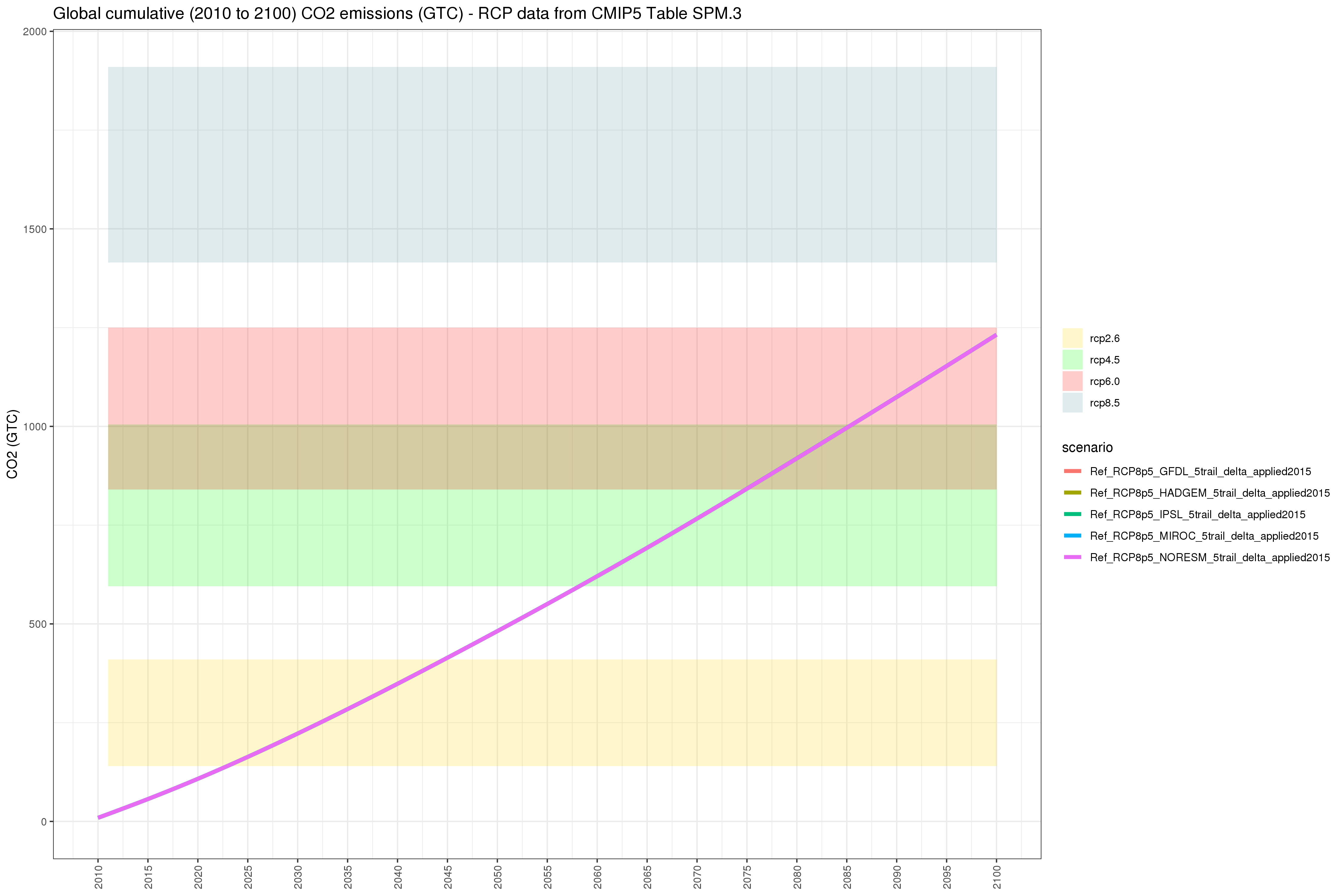
Comparison of GCAM emissions outputs for 5 GCMS
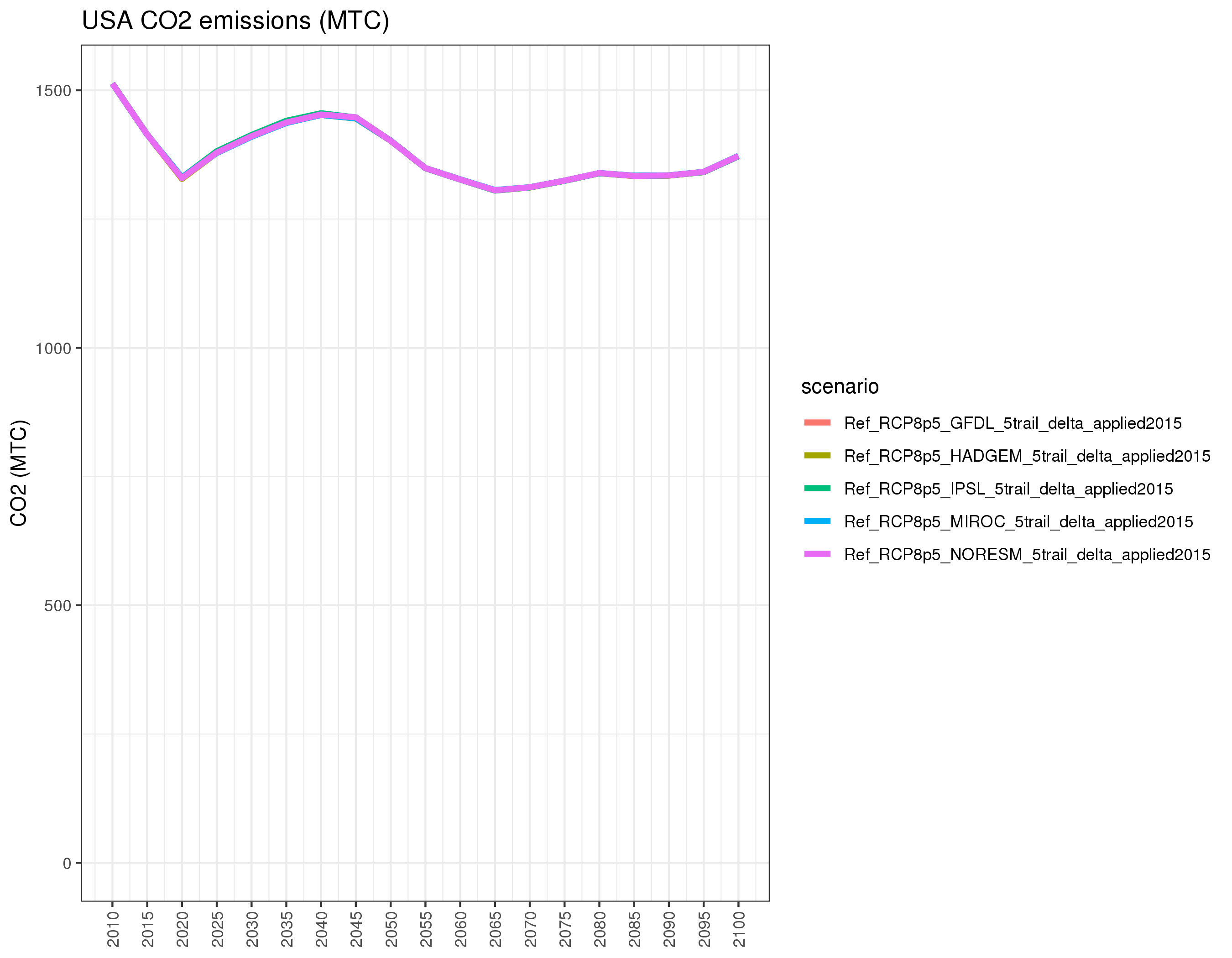
Comparison of GCAM emissions outputs for 5 GCMS
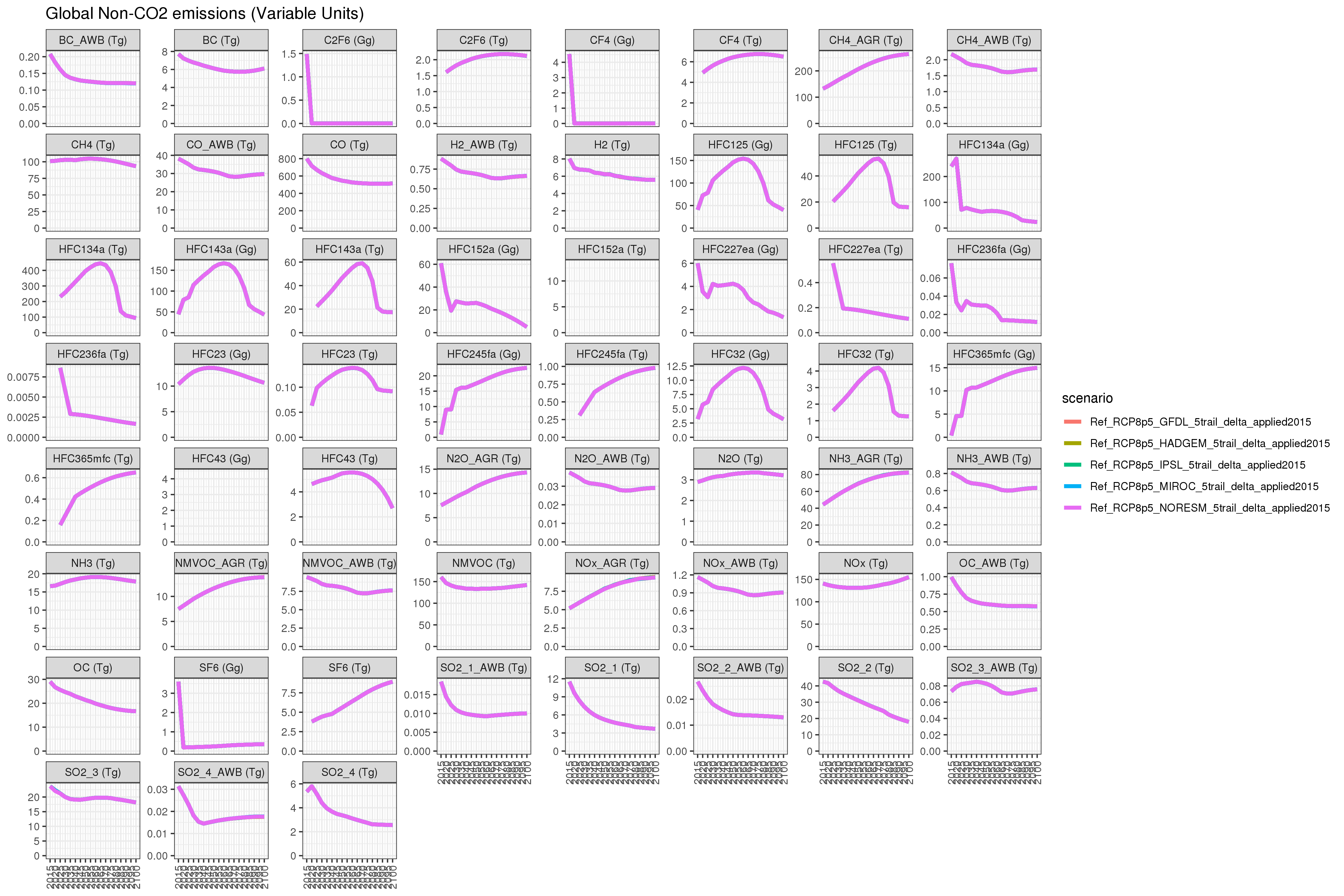
Comparison of GCAM emissions outputs for 5 GCMS
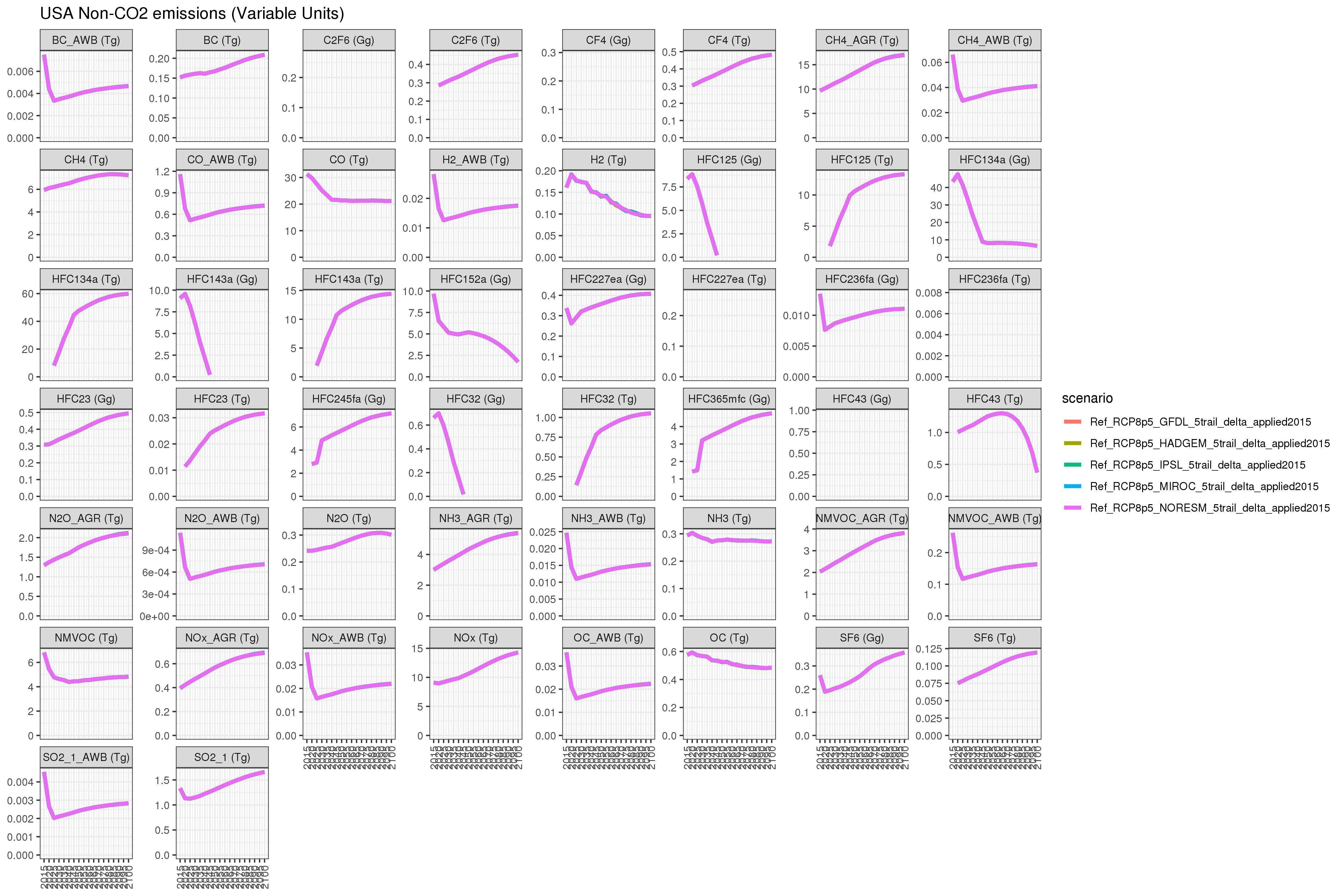
Comparison of GCAM emissions outputs for 5 GCMS
GCAM Outputs Smoothing
Summary
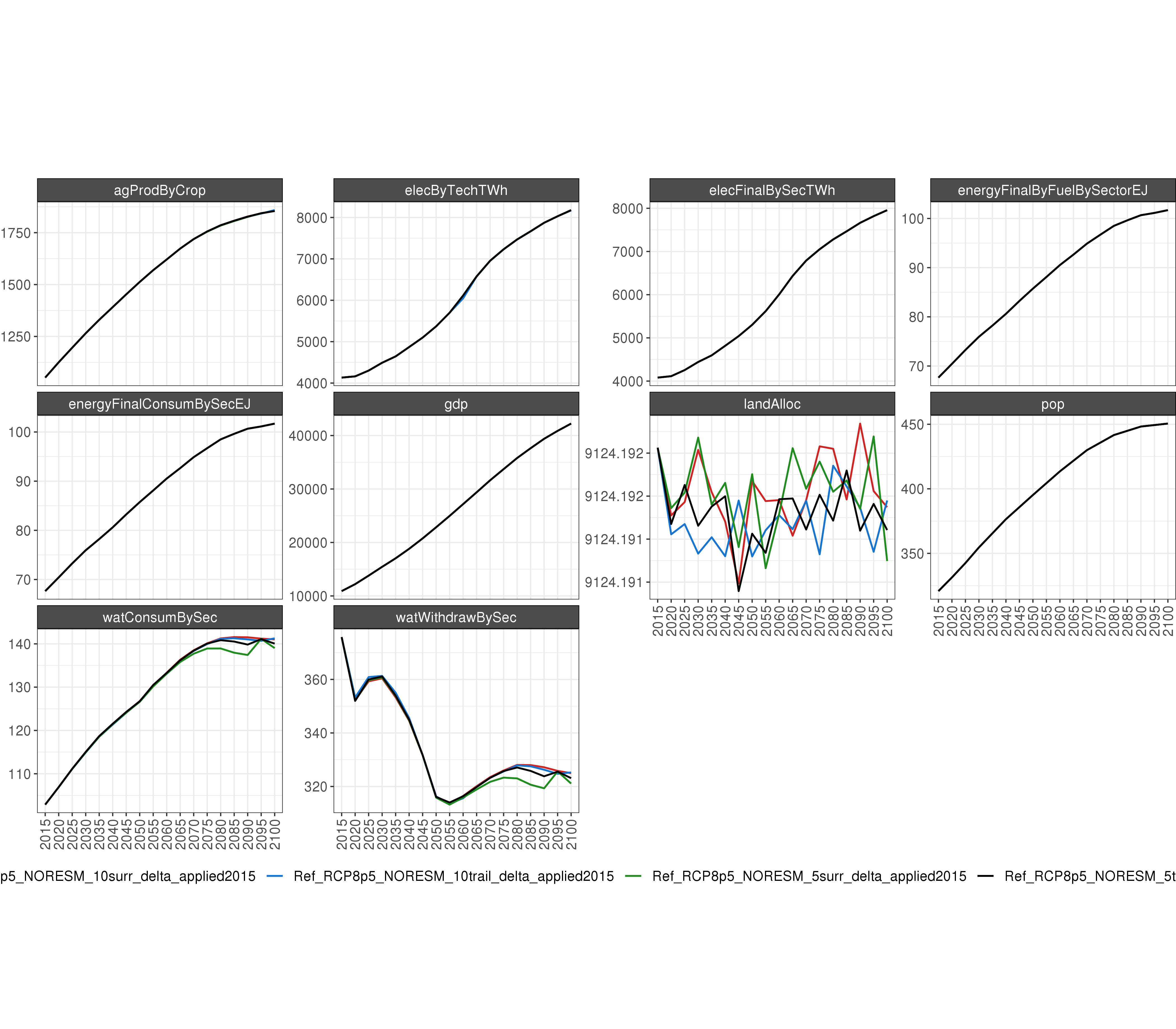
Comparison of GCAM outputs global runoff for 5 GCMS
Socioeconomics
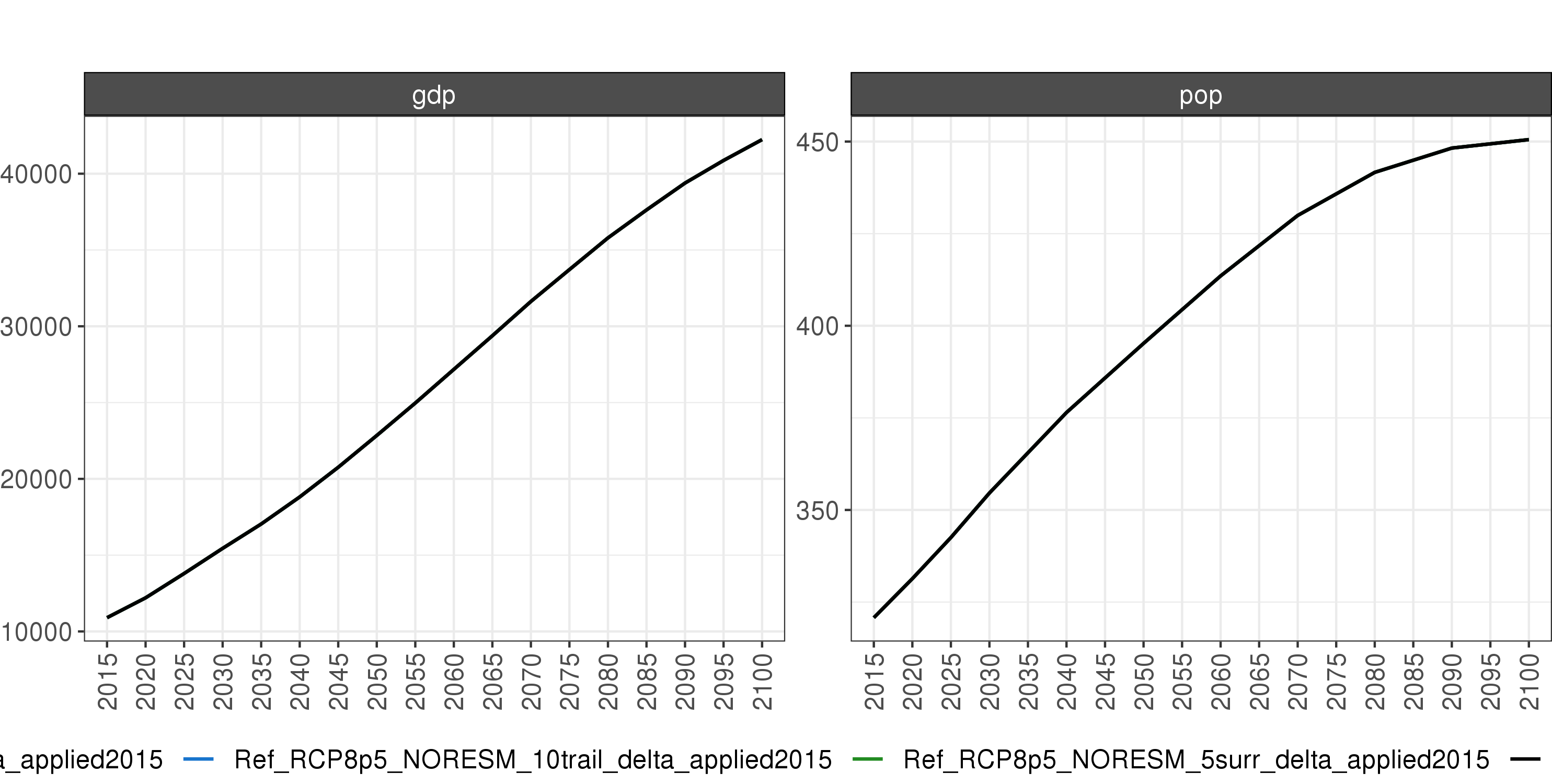
Comparison of GCAM socioeconomic outputs for Smoothing
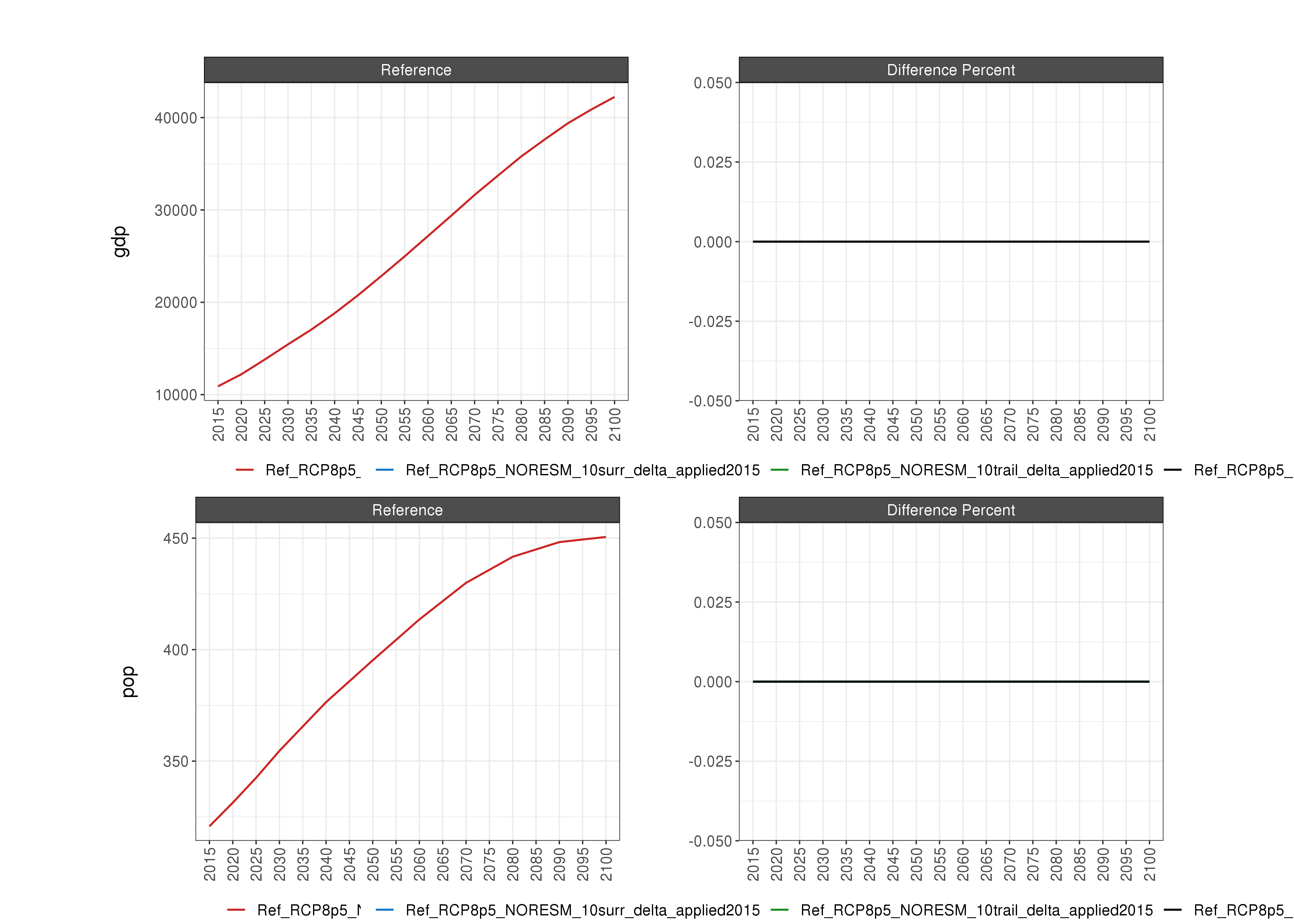
Comparison of GCAM socioeconomic outputs for Smoothing % Diff
Water
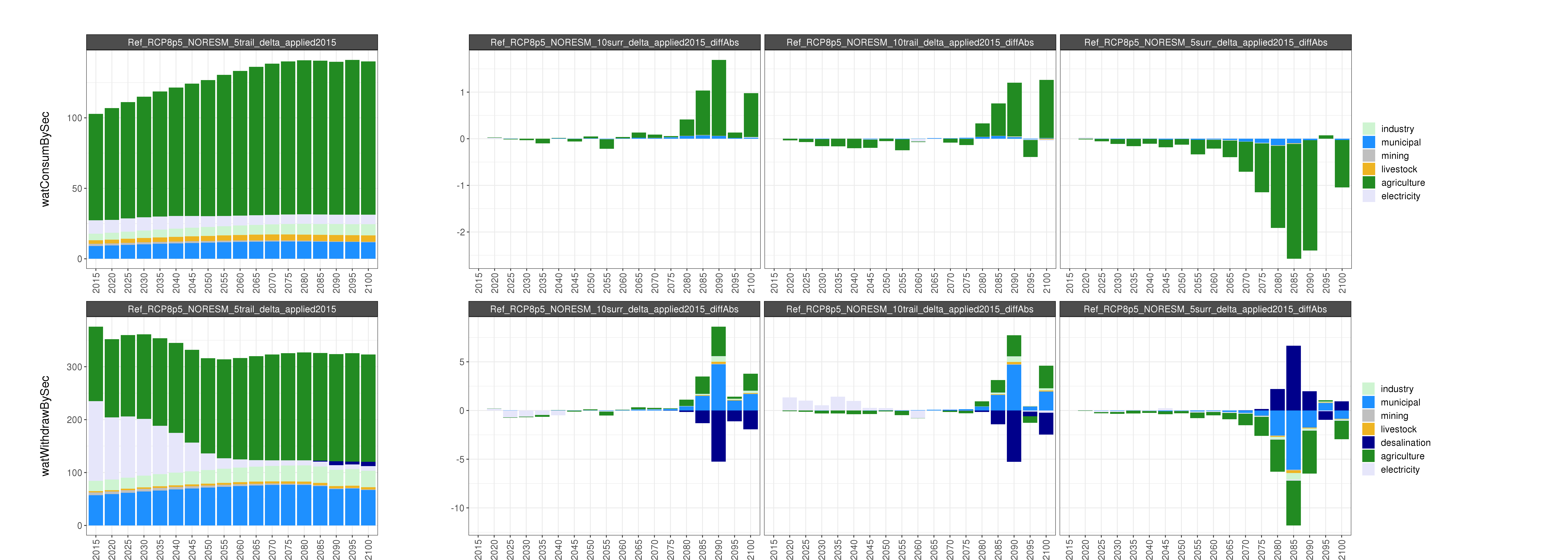
Comparison of GCAM water outputs for Smoothing
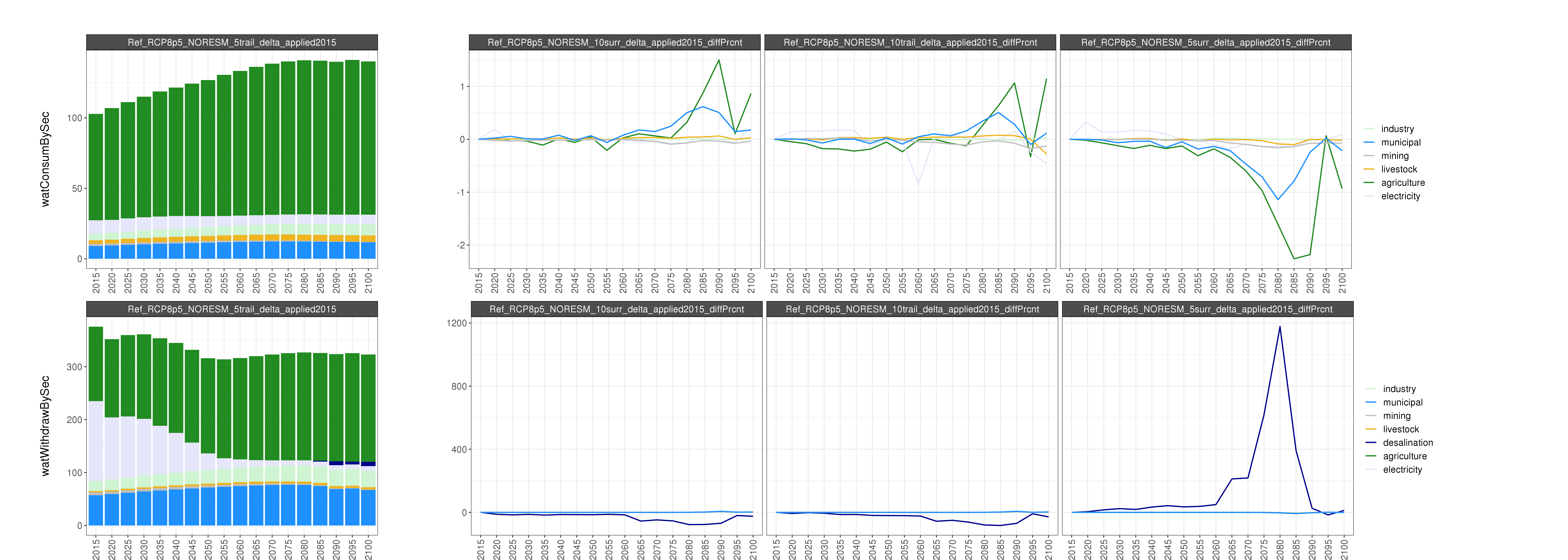
Comparison of GCAM water outputs for Smoothing % Diff
Energy
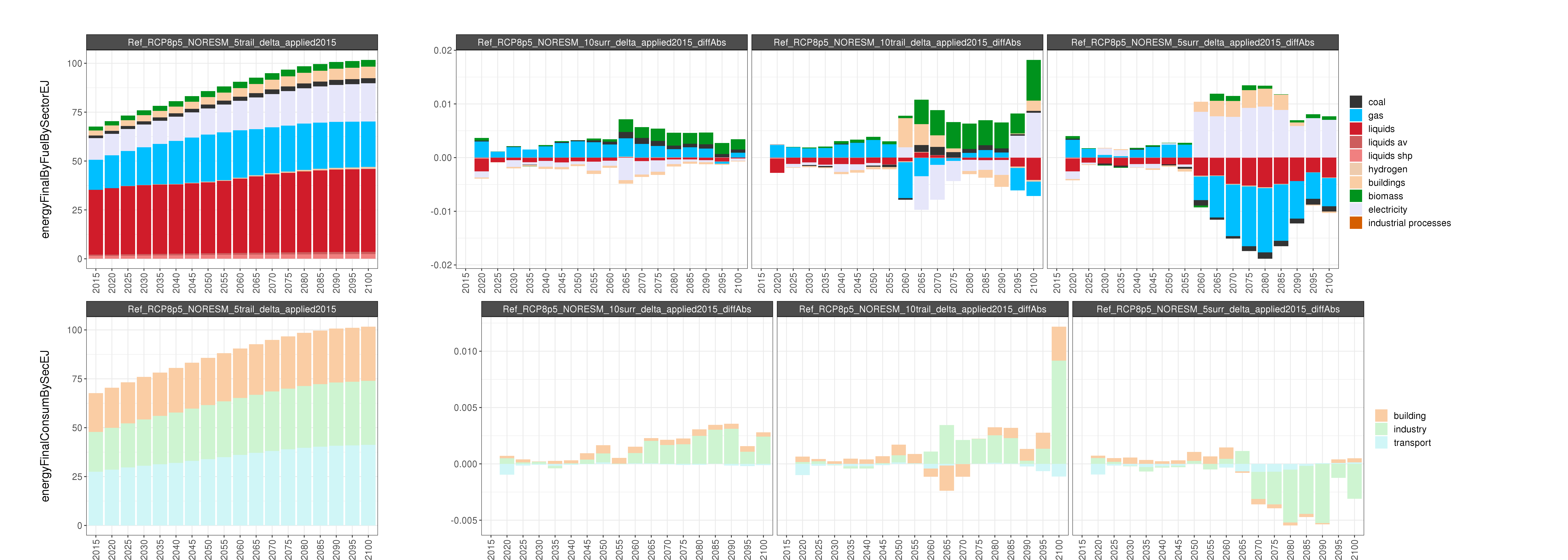
Comparison of GCAM electricity outputs for Smoothing
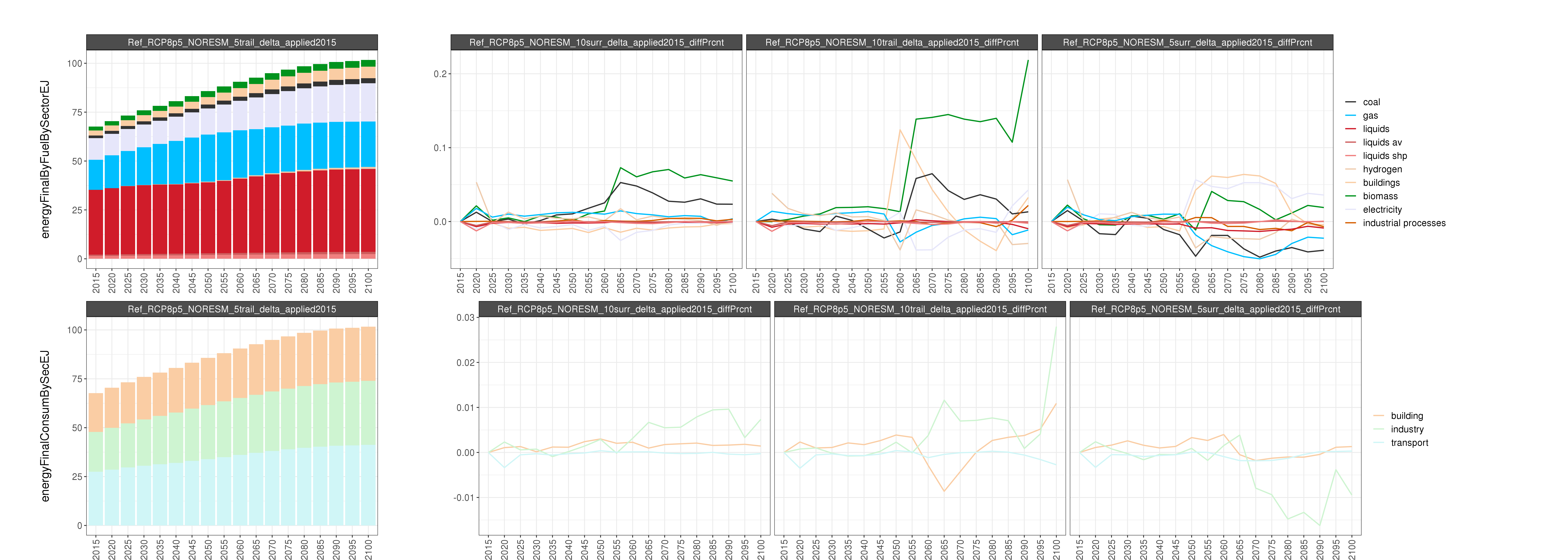
Comparison of GCAM electricity outputs for Smoothing % Diff
Electricity

Comparison of GCAM electricity outputs for Smoothing

Comparison of GCAM electricity outputs for Smoothing % Diff
AGLU
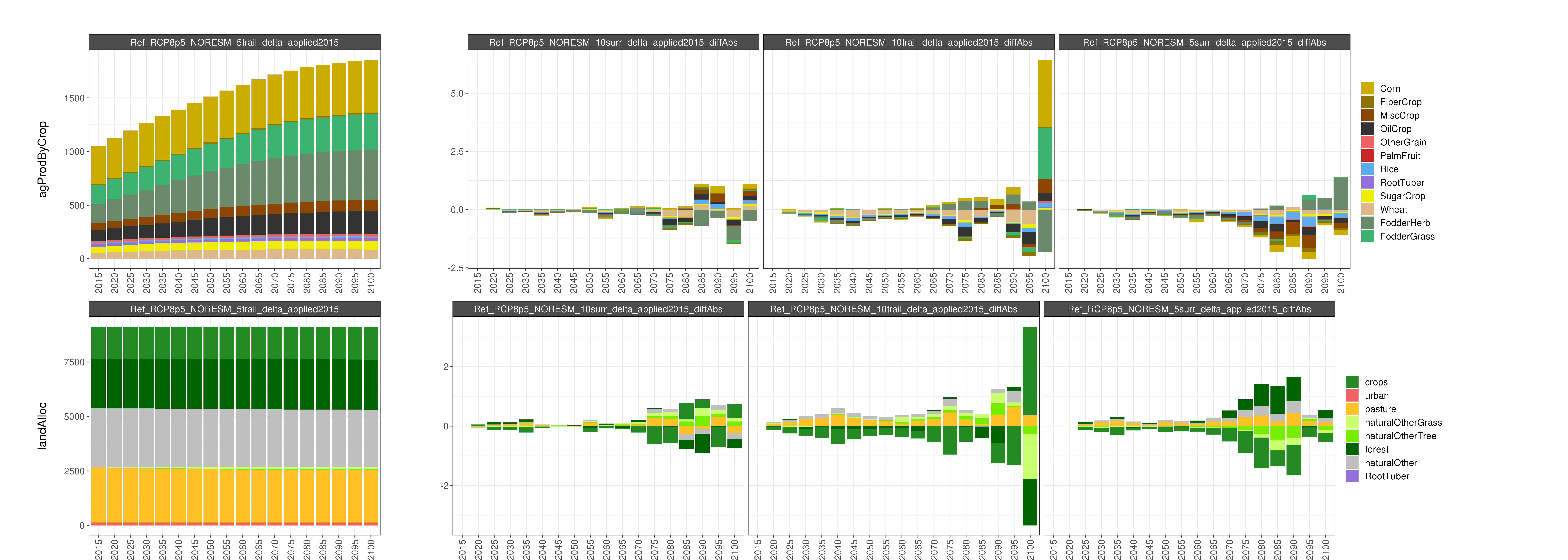
Comparison of GCAM AGLU outputs for Smoothing
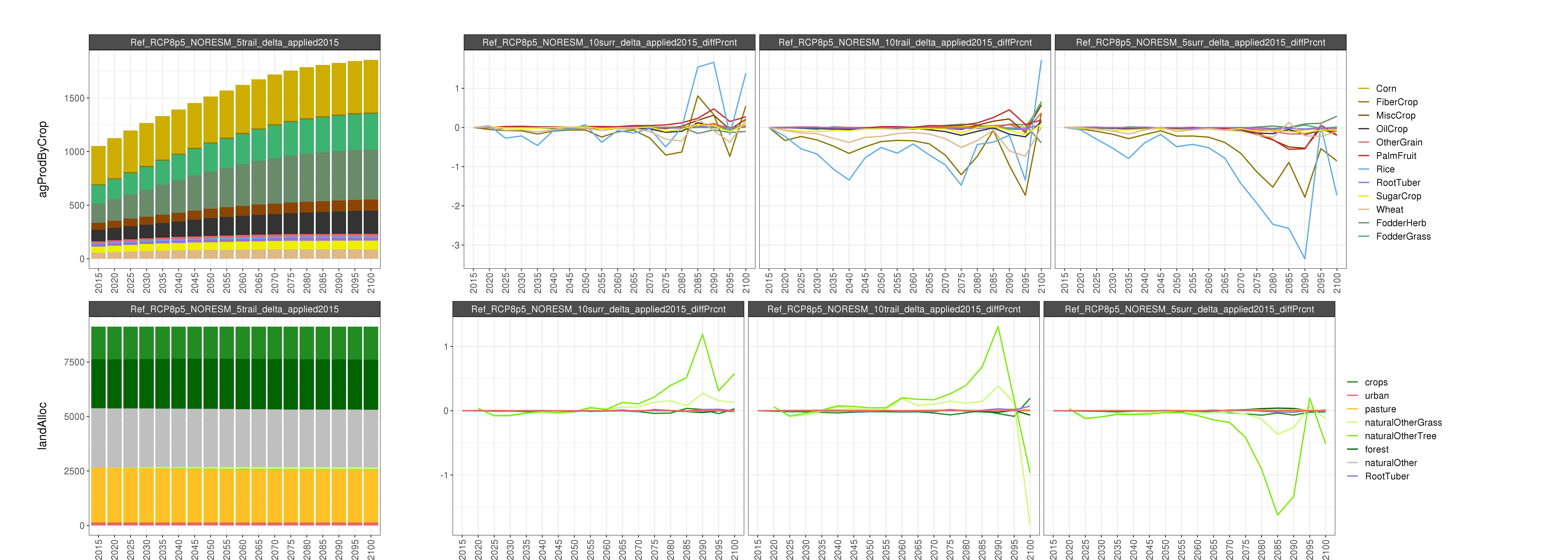
Comparison of GCAM AGLU outputs for Smoothing % Diff
Emissions
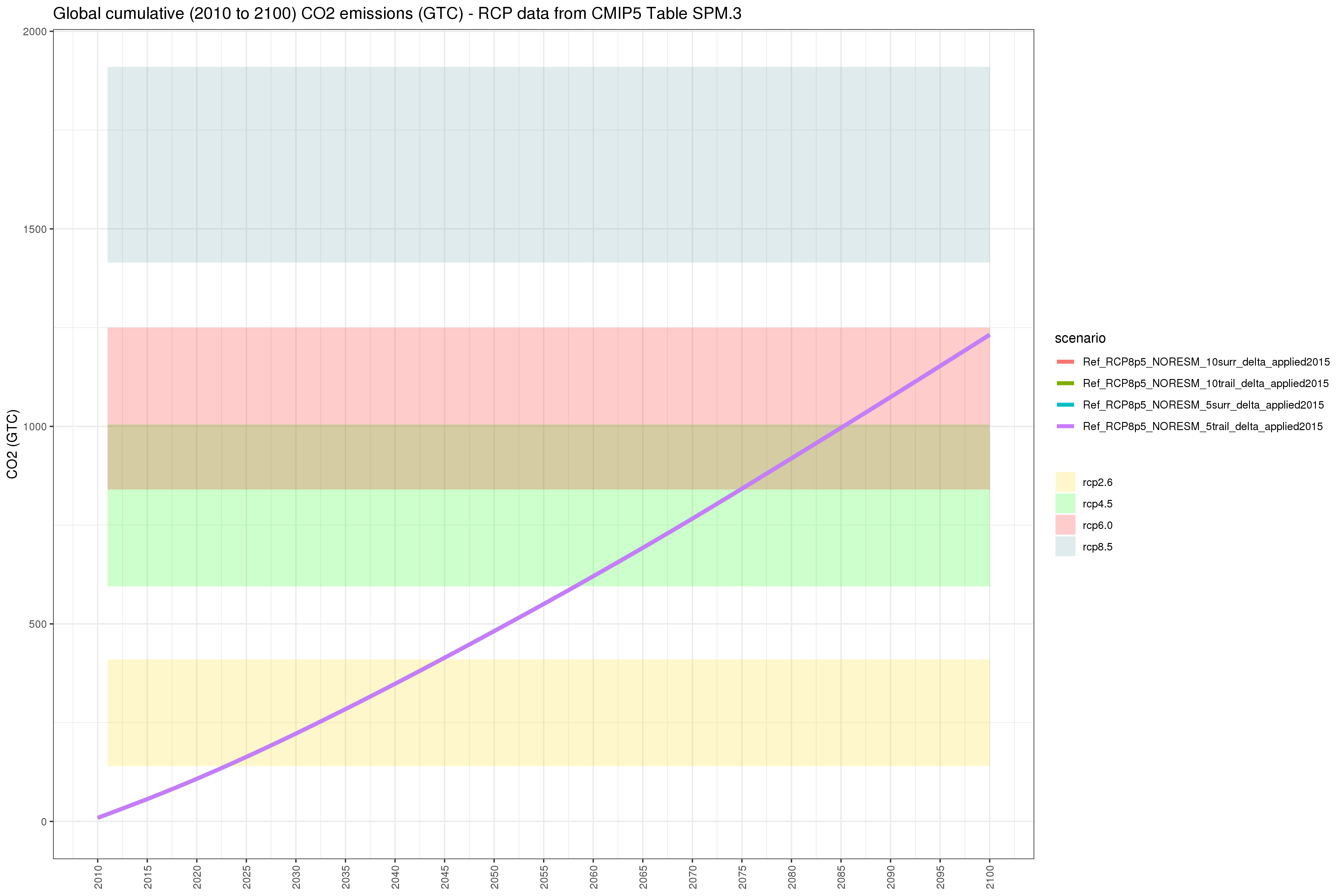
Comparison of GCAM emissions outputs for 5 GCMS
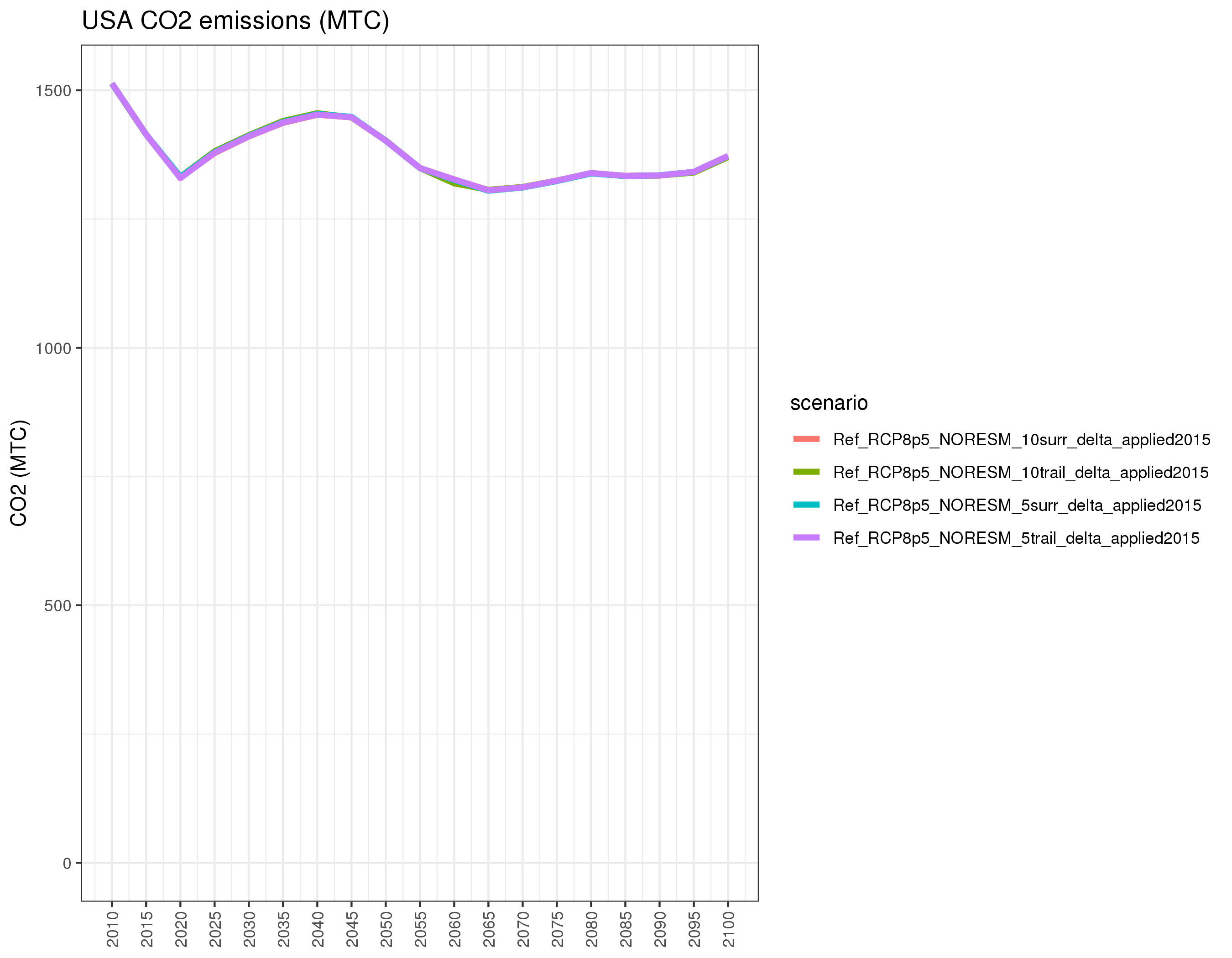
Comparison of GCAM emissions outputs for 5 GCMS
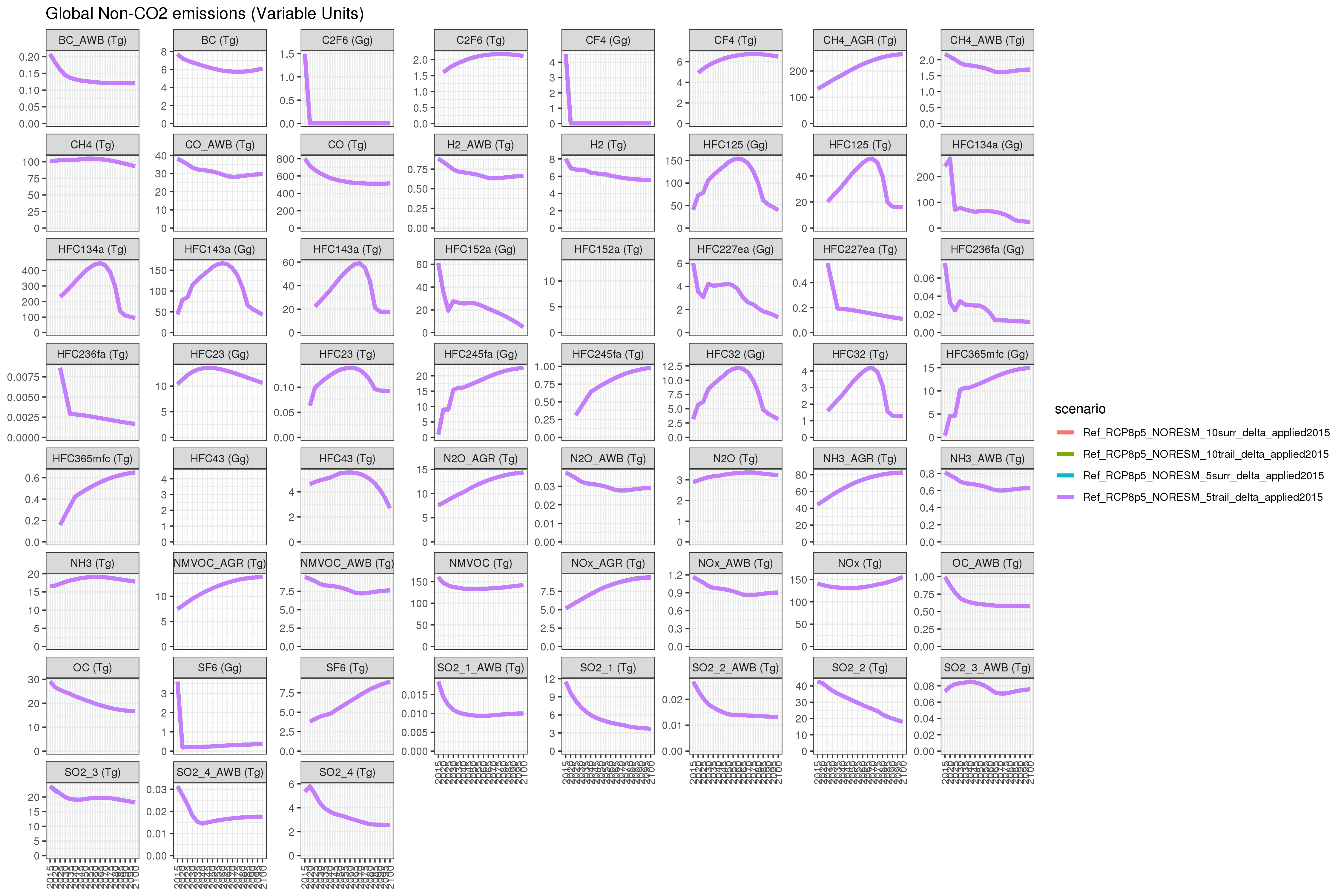
Comparison of GCAM emissions outputs for 5 GCMS
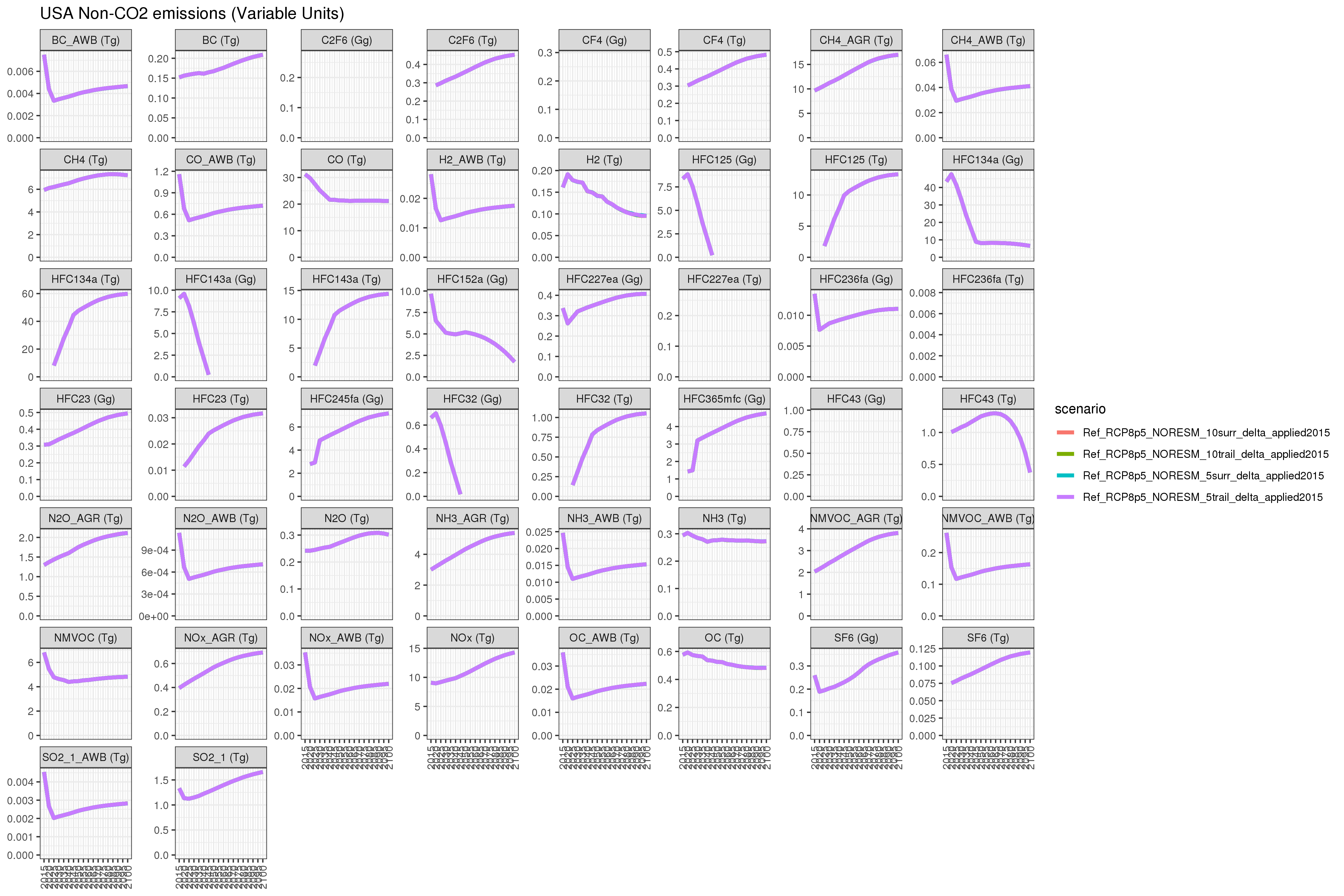
Comparison of GCAM emissions outputs for 5 GCMS
Workflow 1C US and Global
Table Workflow 1C
| Step | Description | Location |
|---|---|---|
| Workflow 1A Outputs | Runoff mm per month for US Basins. |
|
| Workflow 1B Outputs | Runoff mm per month for Non-US Basins. |
|
| Combine US and Non-US runoff |
|
|
| Extrapolate 2099 to 2100 |
|
|
| Smoothing |
|
|
| Convert to XML |
|
|
| Run GCAM scenario rcp85hotter_ssp35_runoff |
|
|
Runoff Diagnostics
Global vs WRF
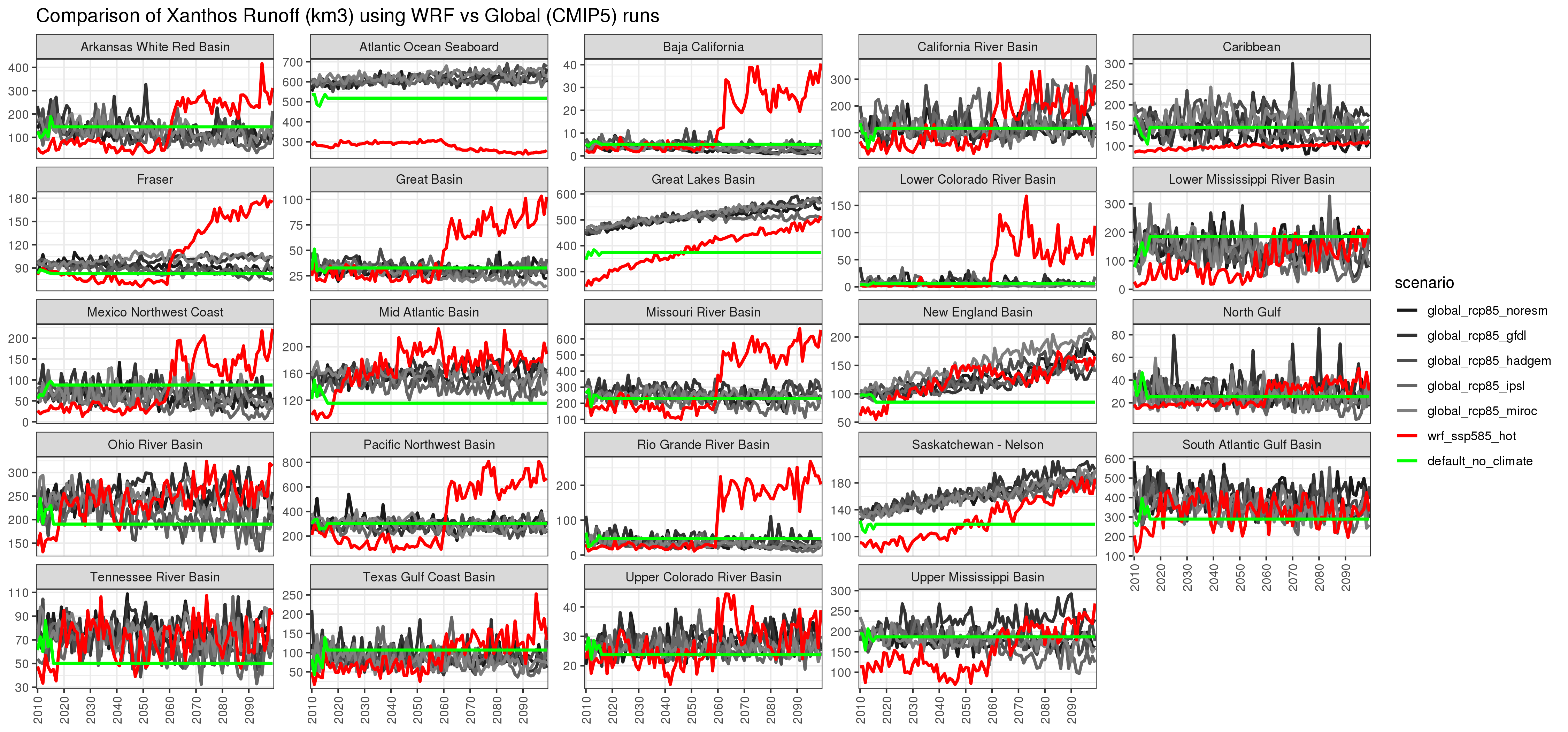
Comparison of Global vs WRF Xanthos Runoff for U.S. Basins
Smoothing
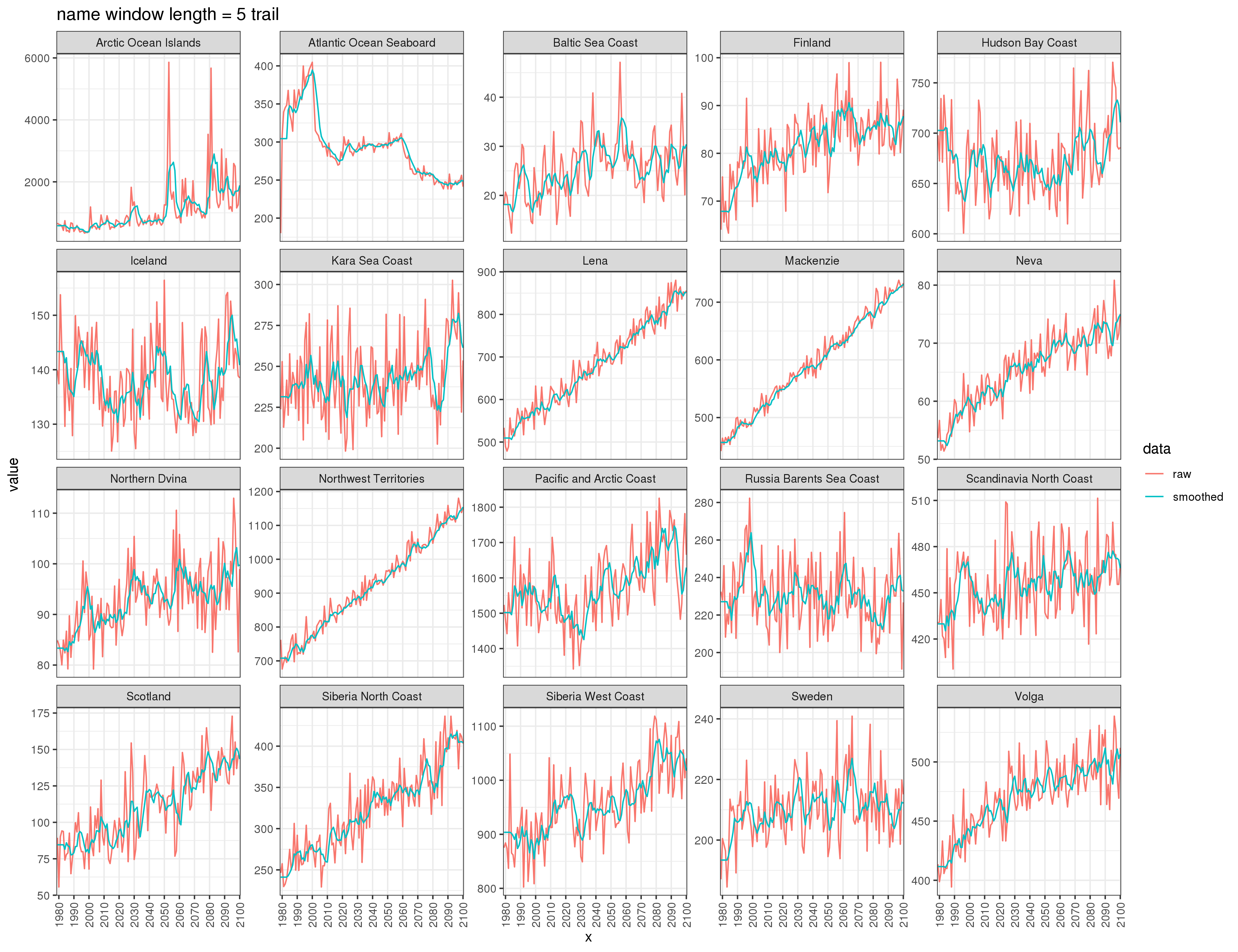
Smoothing diagnostics for selected US Basins for rcp85hotter_ssp5
Deltas
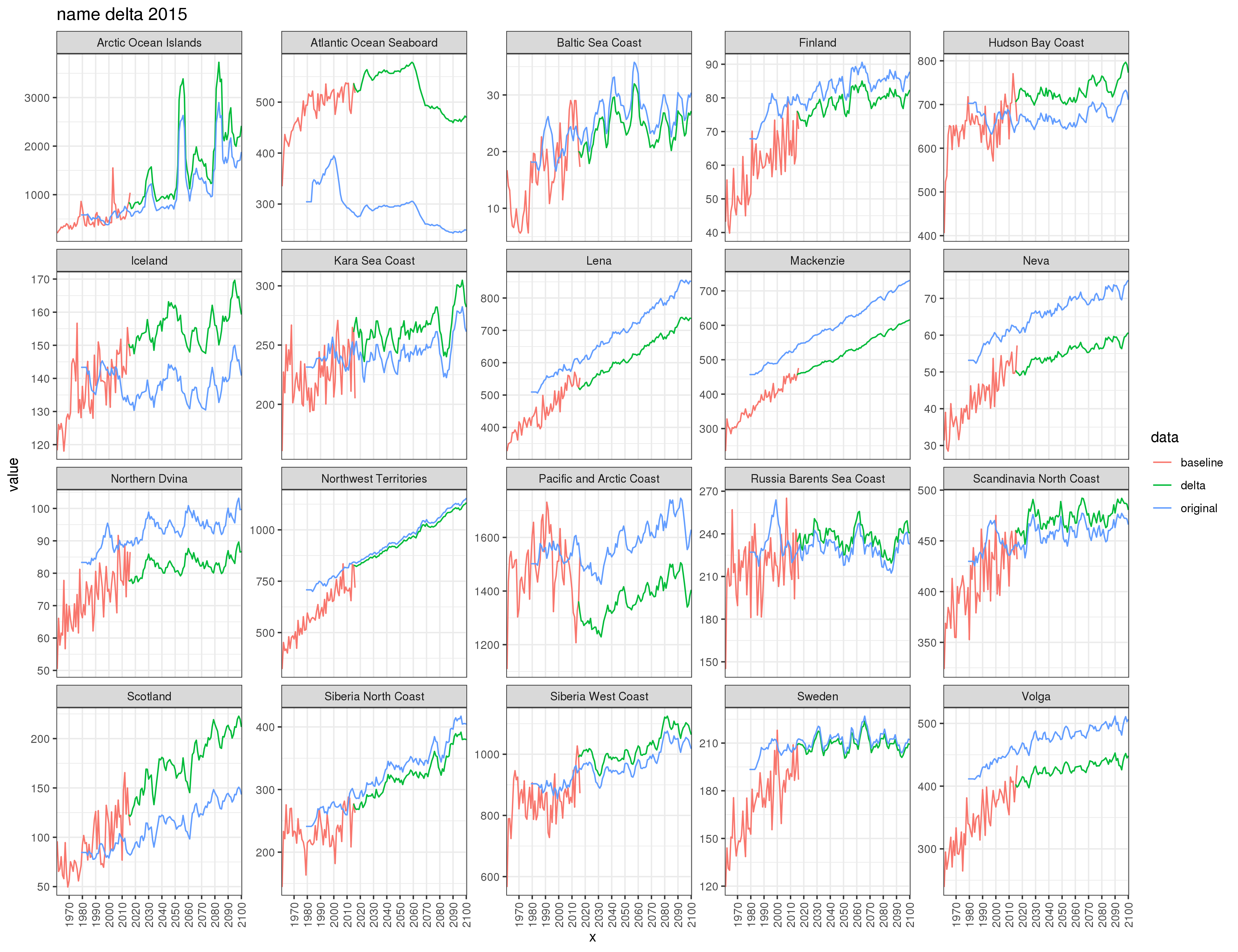
Delta processing diagnostics for selected US Basins for rcp85hotter_ssp5
Maps of water runoff in the US

Comparison of global water runoff in 2100 (km3) under RCP8.5 hotter and RCP8.5 cooler
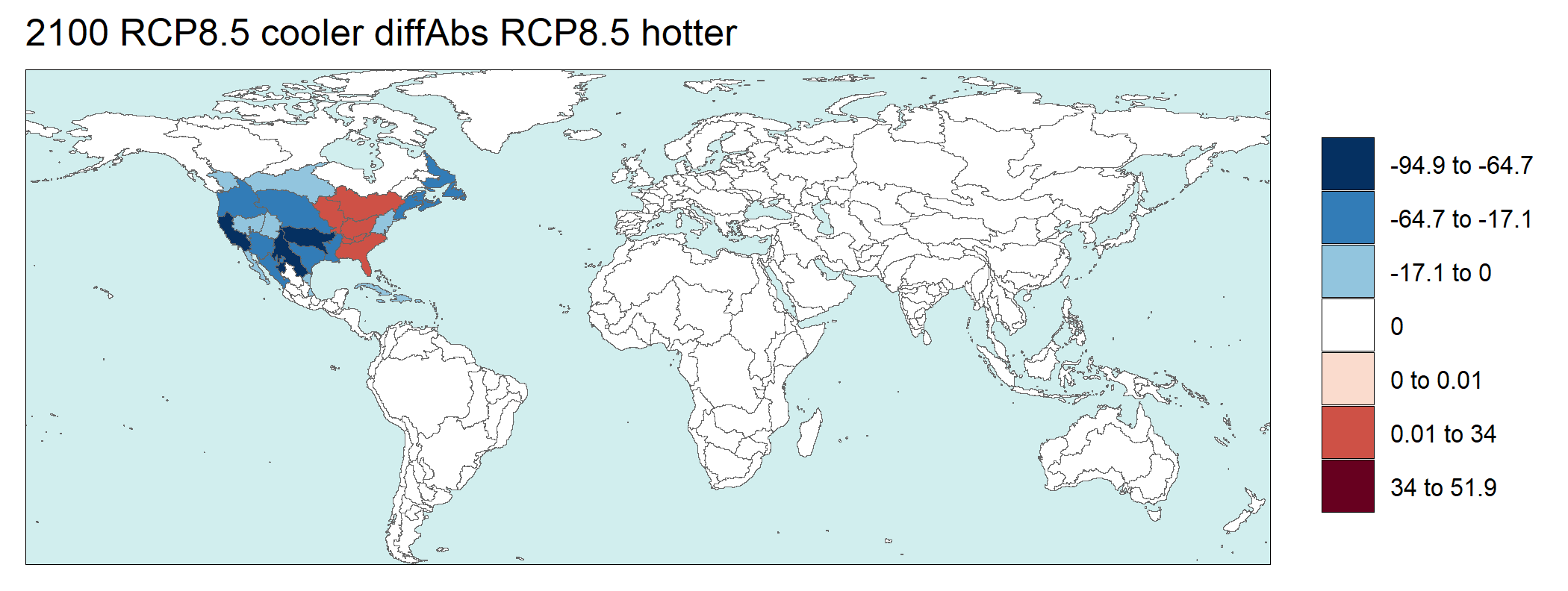
Absolute difference of global water runoff in 2100 (km3) under RCP8.5 hotter and RCP8.5 cooler
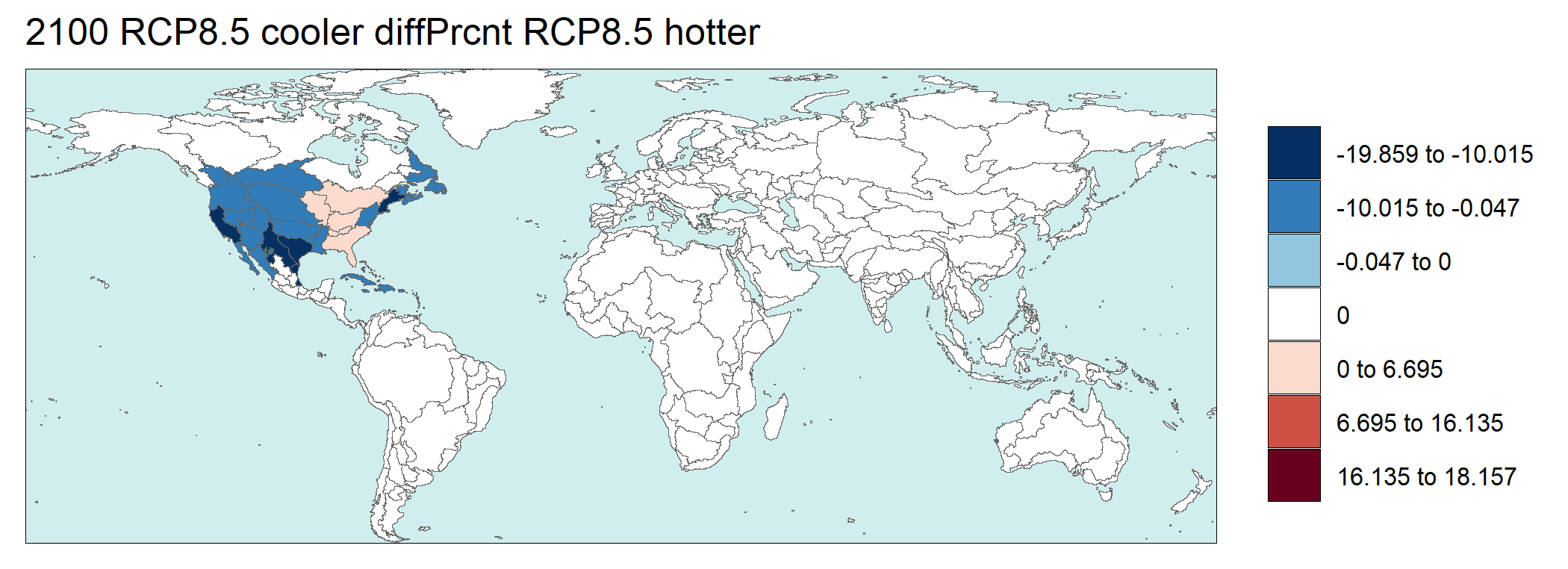
Relative difference of global water runoff in 2100 (km3) under RCP8.5 hotter and RCP8.5 cooler
GCAM SSP3
Summary
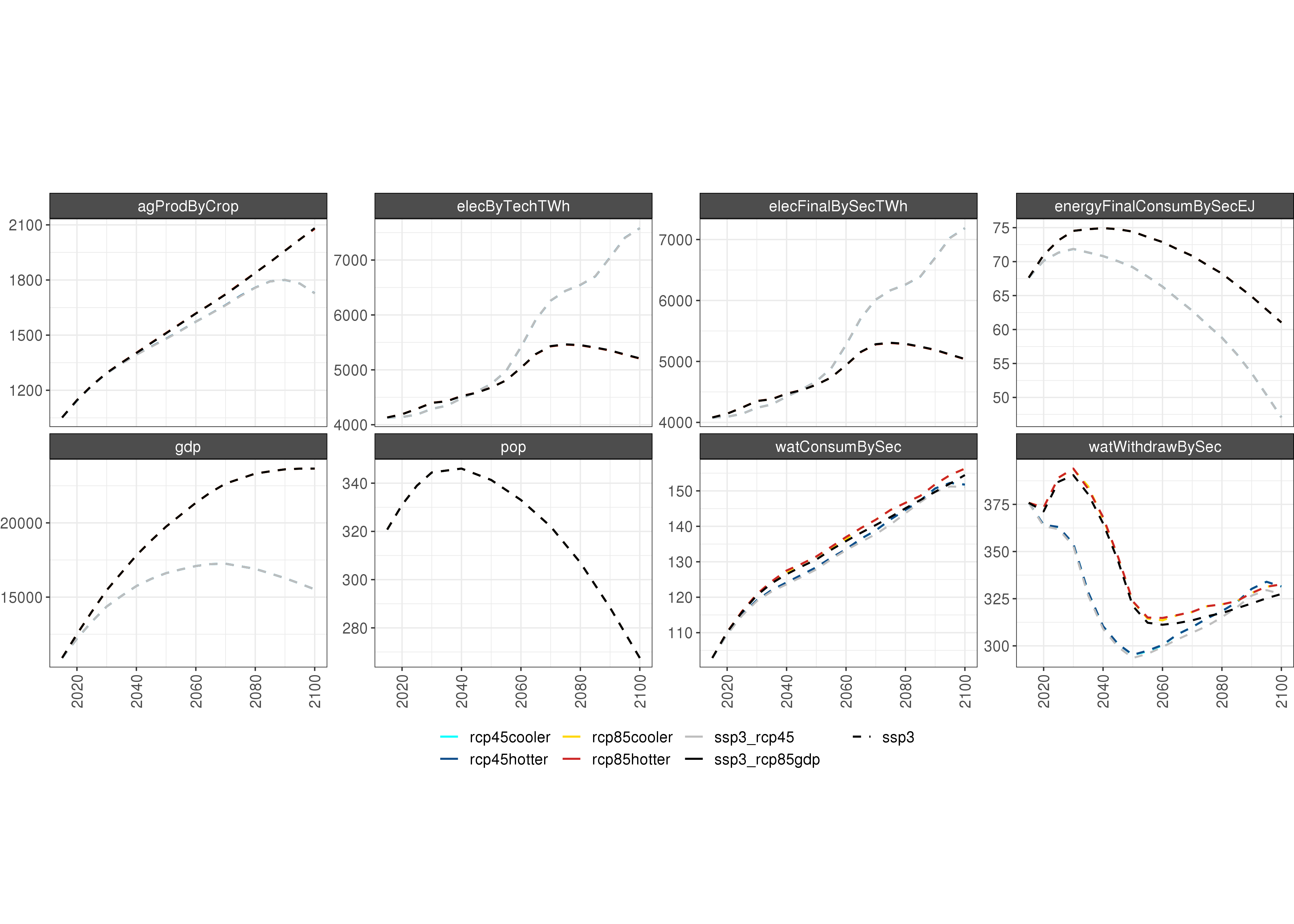
Comparison of GCAM global agyield outputs
Socioeconomics
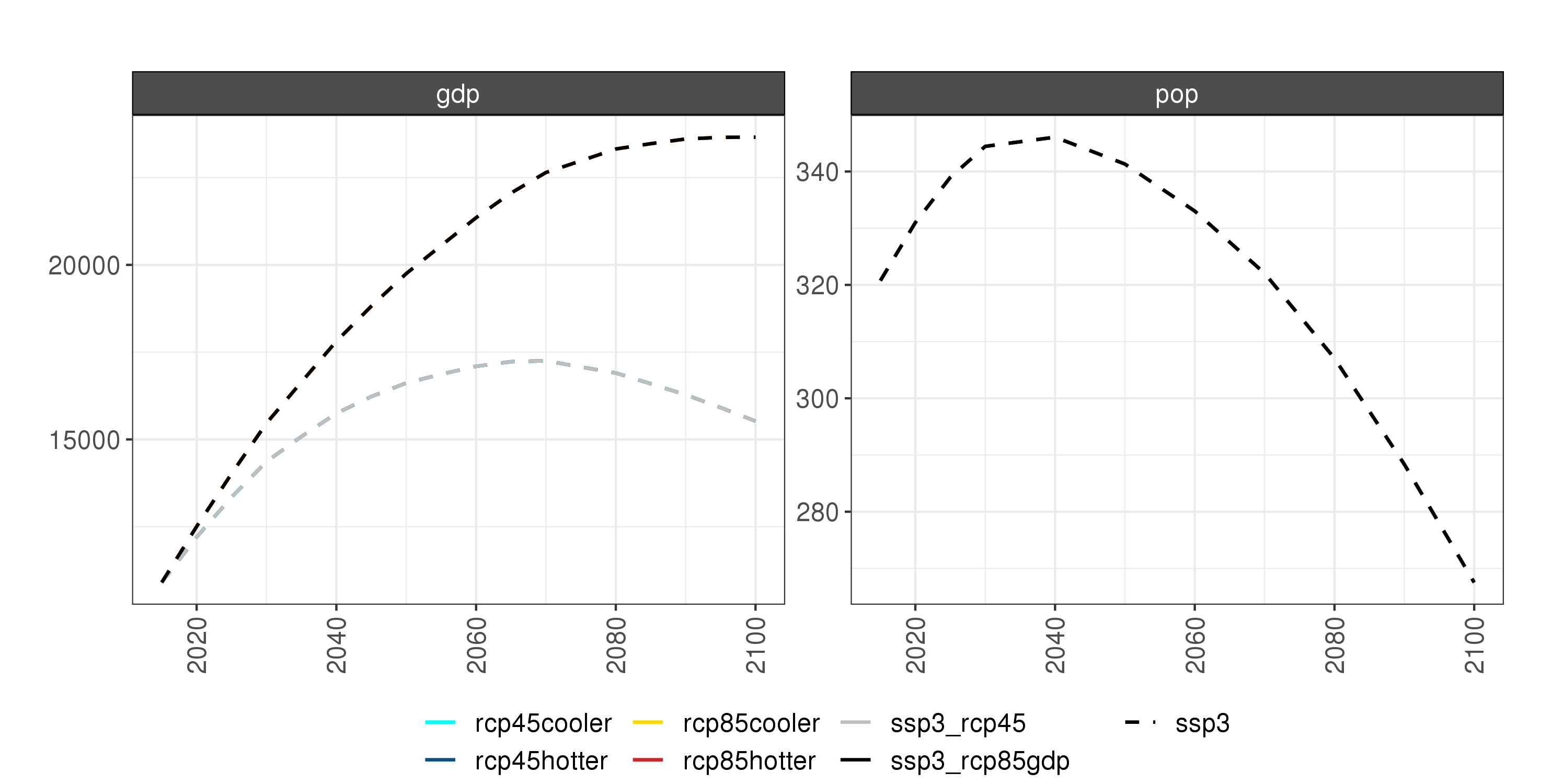
Comparison of GCAM socioeconomic outputs
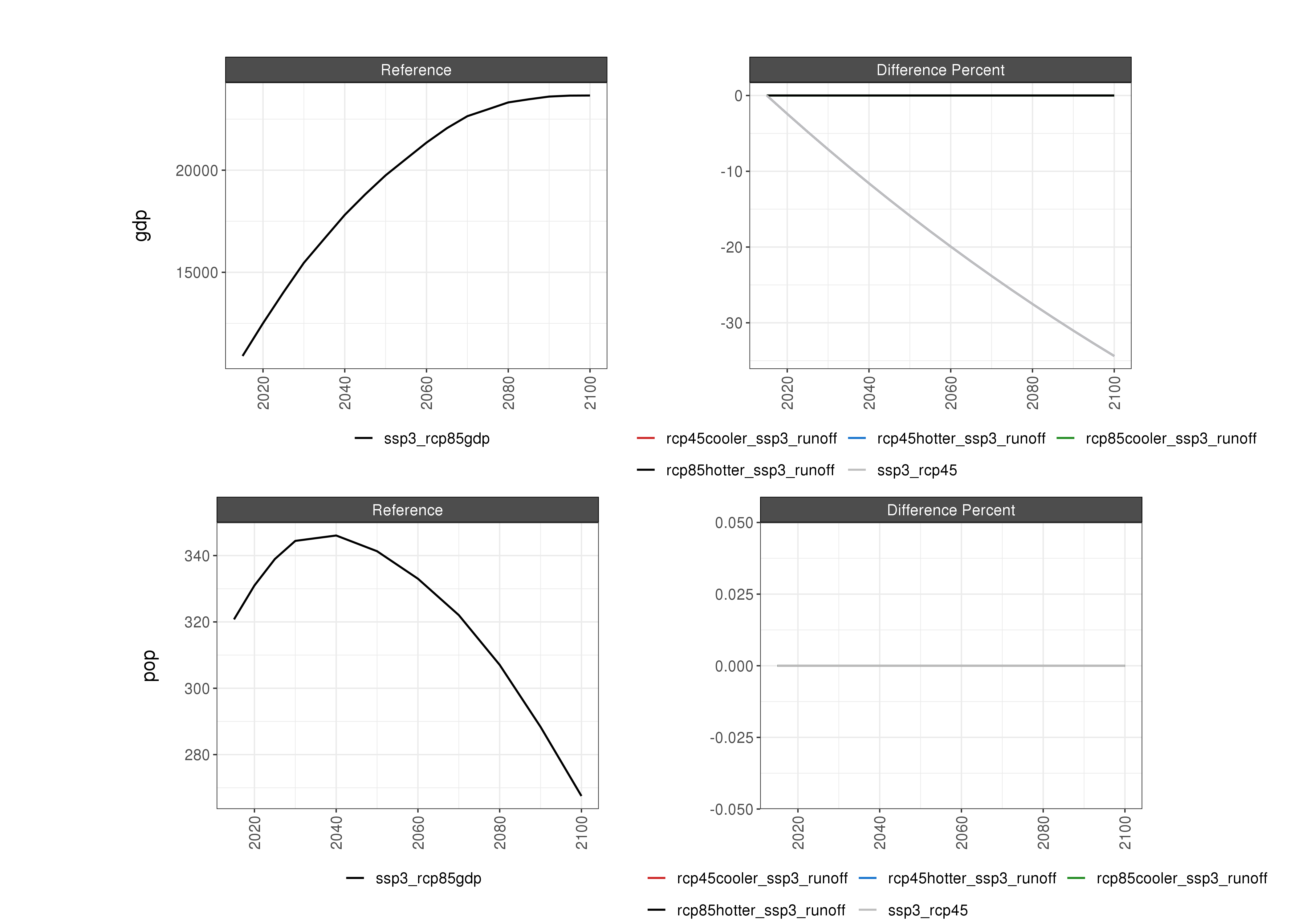
Comparison of GCAM socioeconomic outputs % Diff
Water
RCP4.5
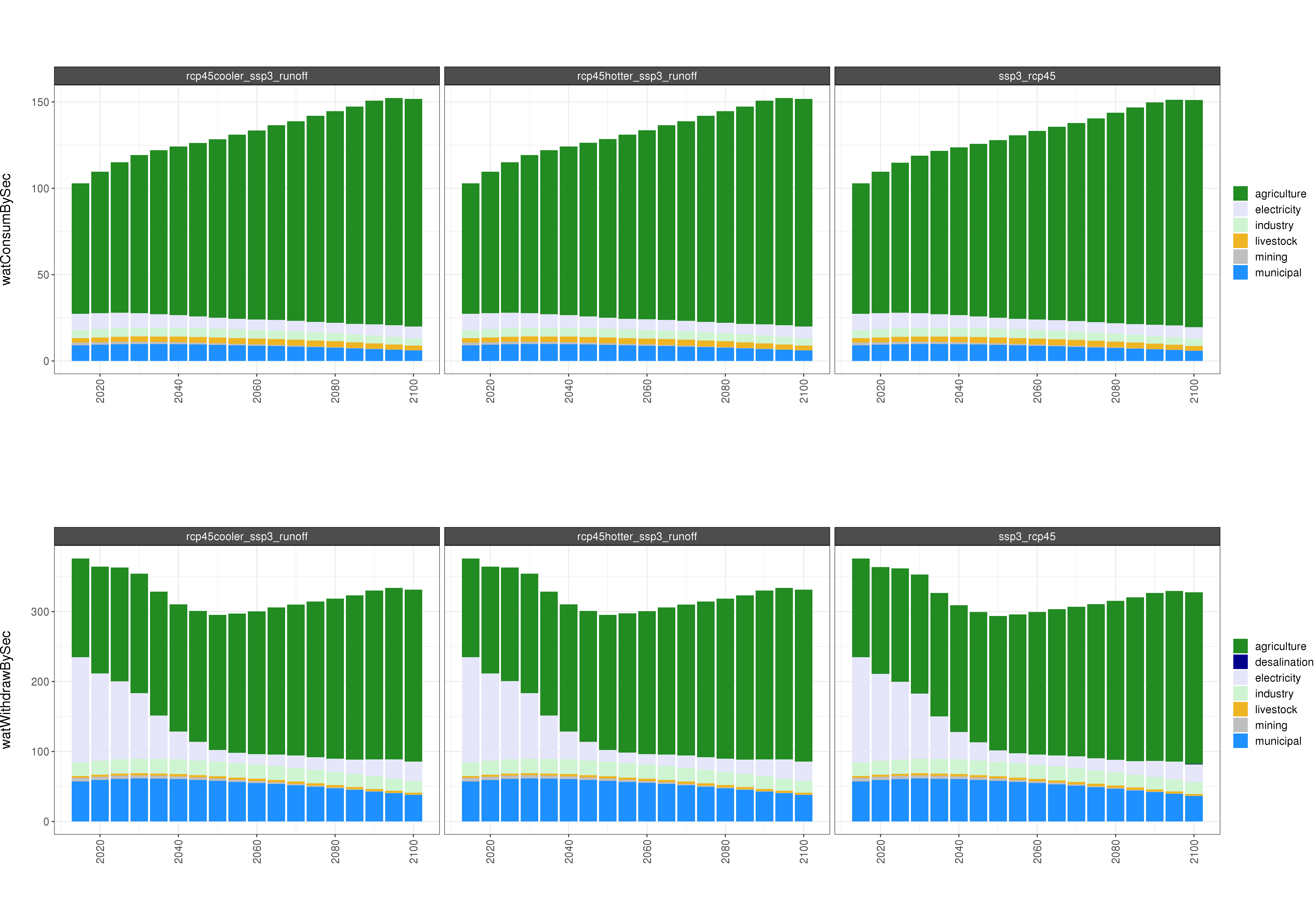
Absolute GCAM water outputs
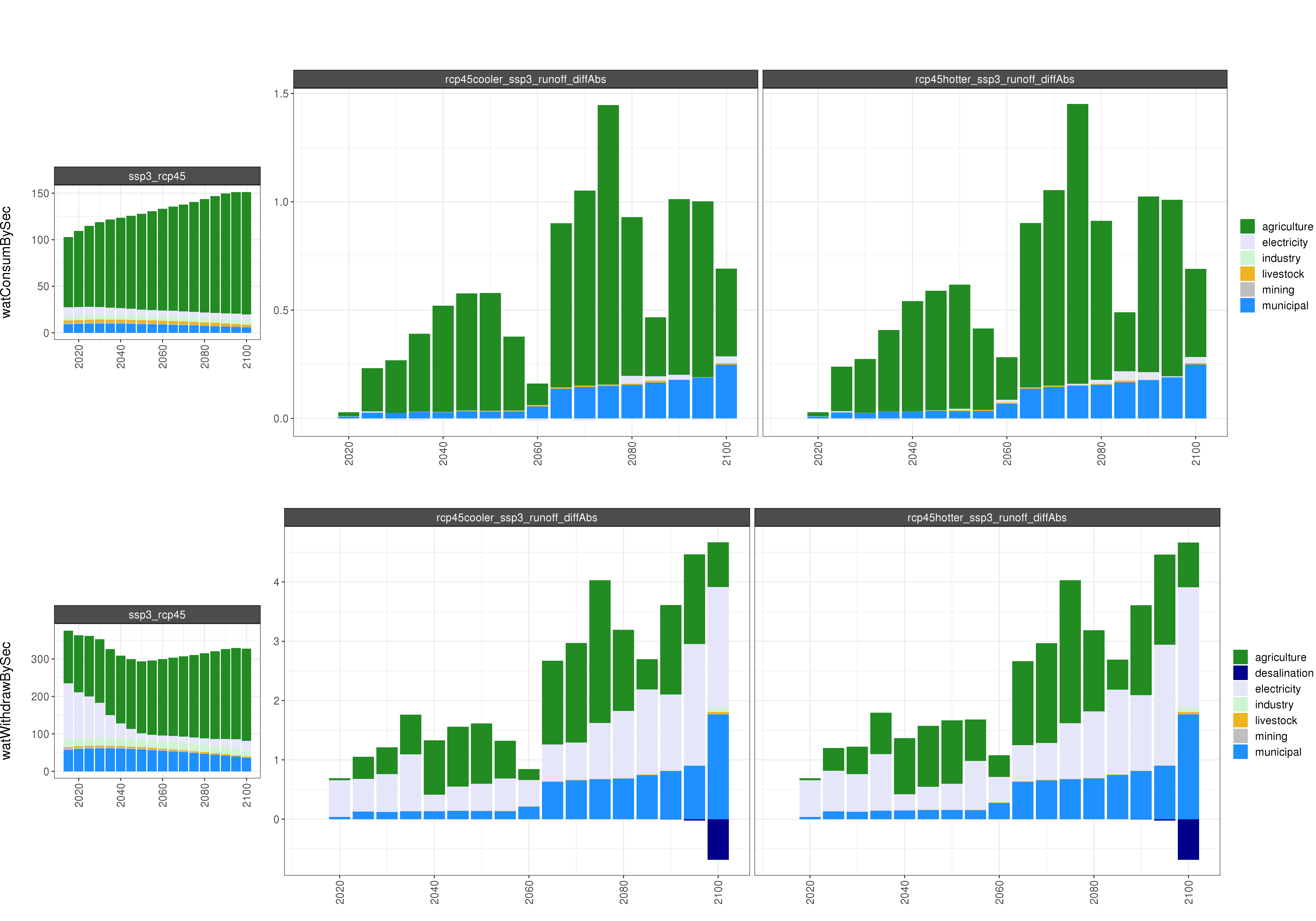
Comparison of GCAM water outputs
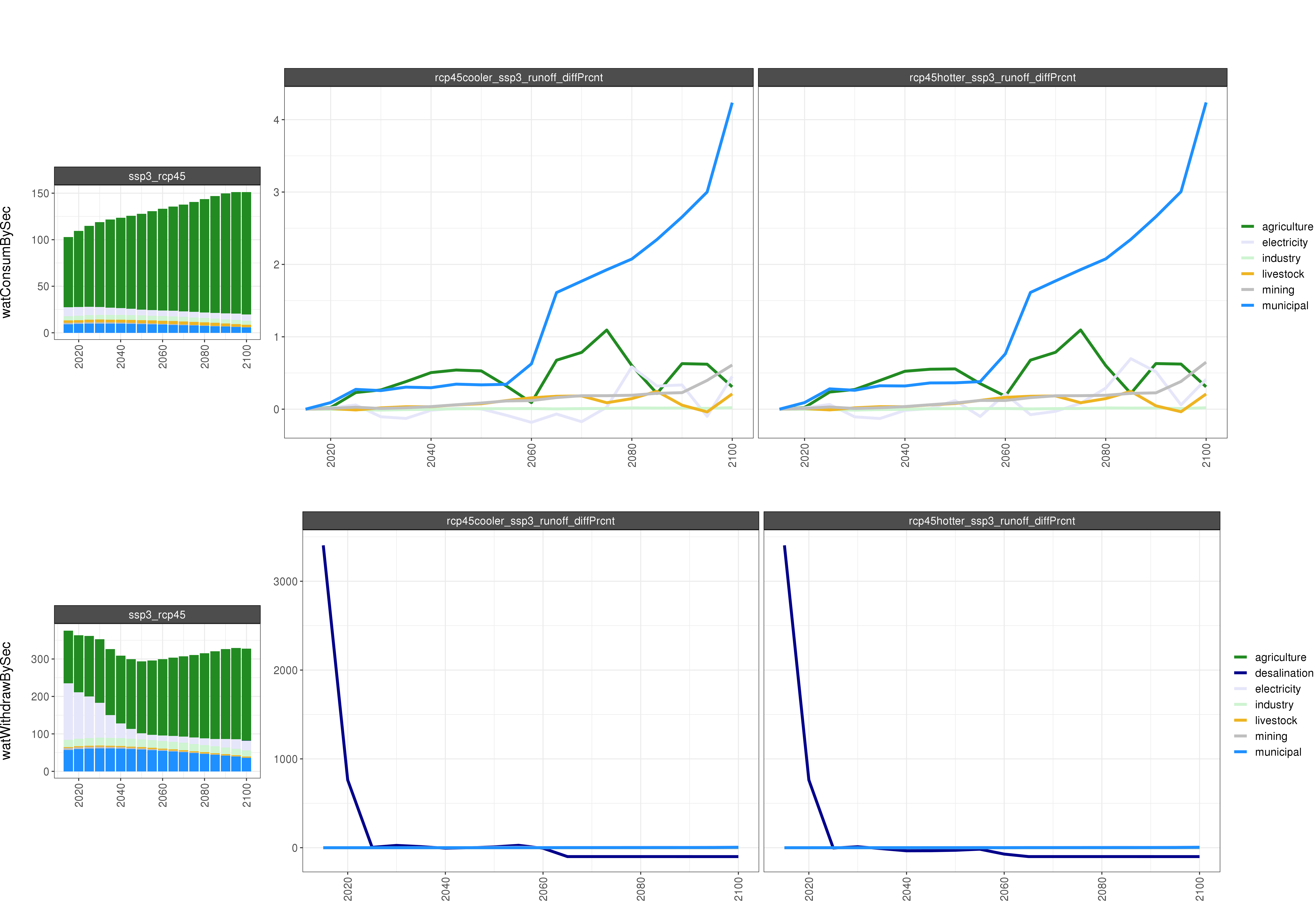
Comparison of GCAM water outputs % Diff
RCP8.5
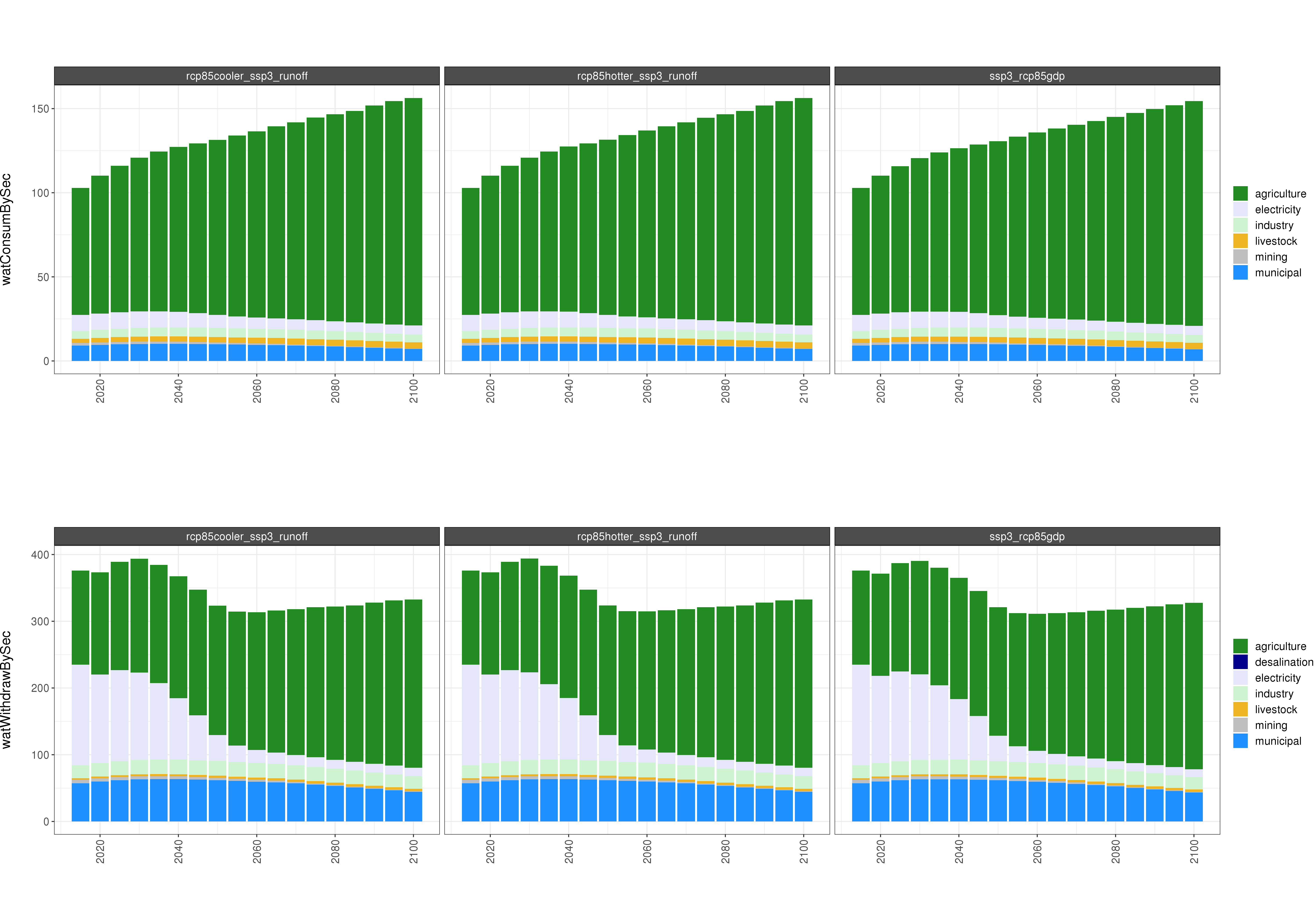
Absolute GCAM water outputs
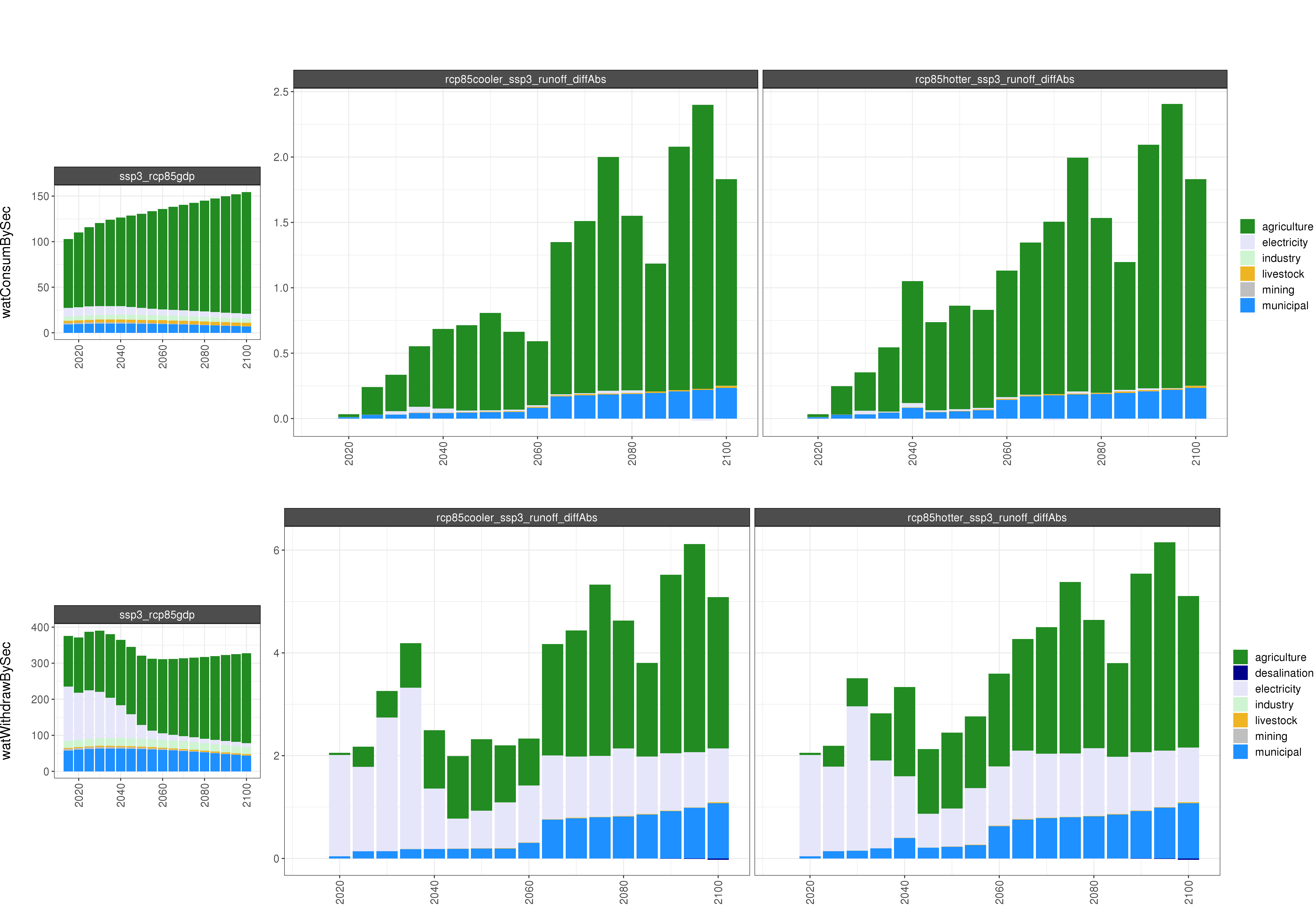
Comparison of GCAM water outputs
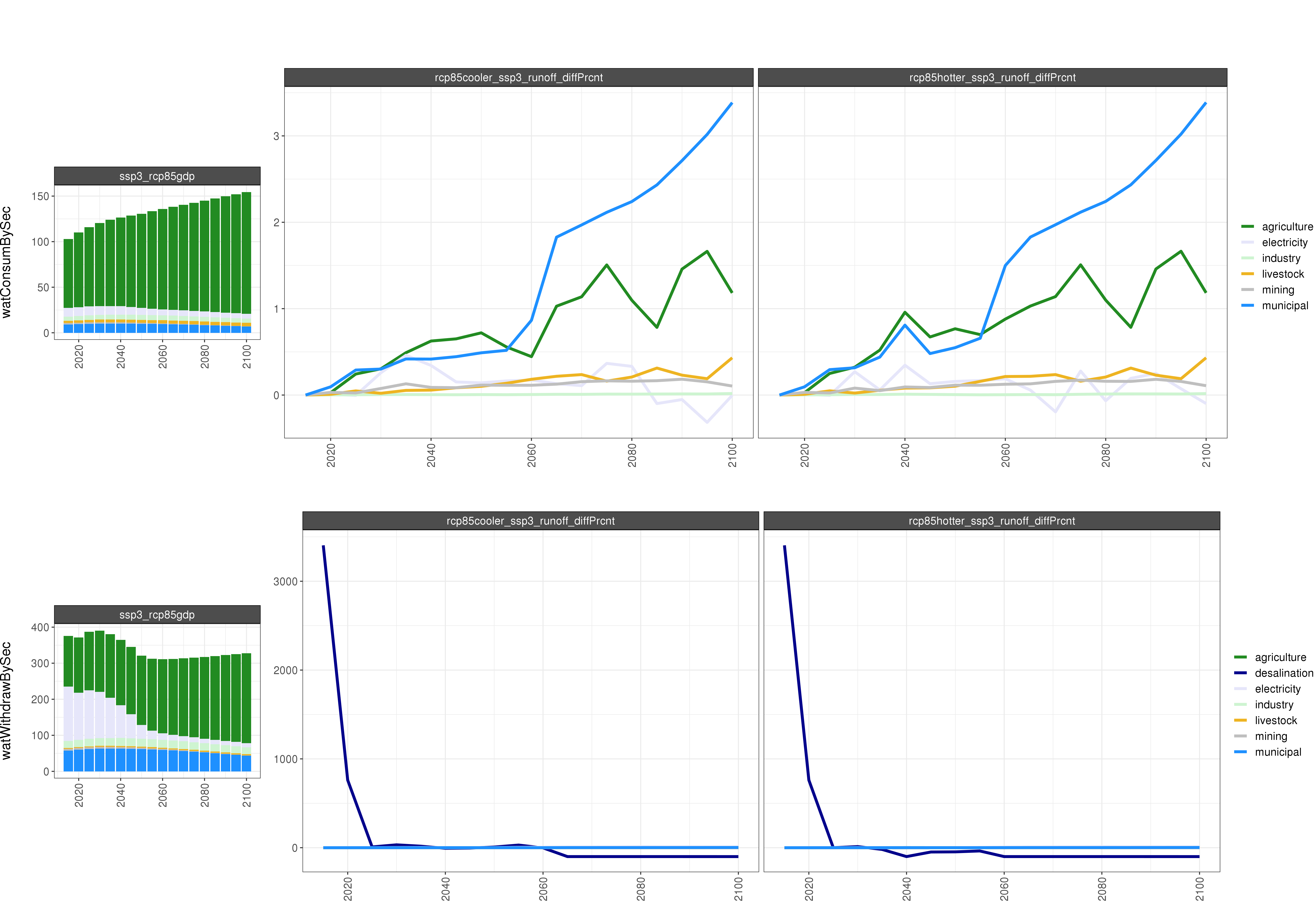
Comparison of GCAM water outputs % Diff
Energy
RCP4.5
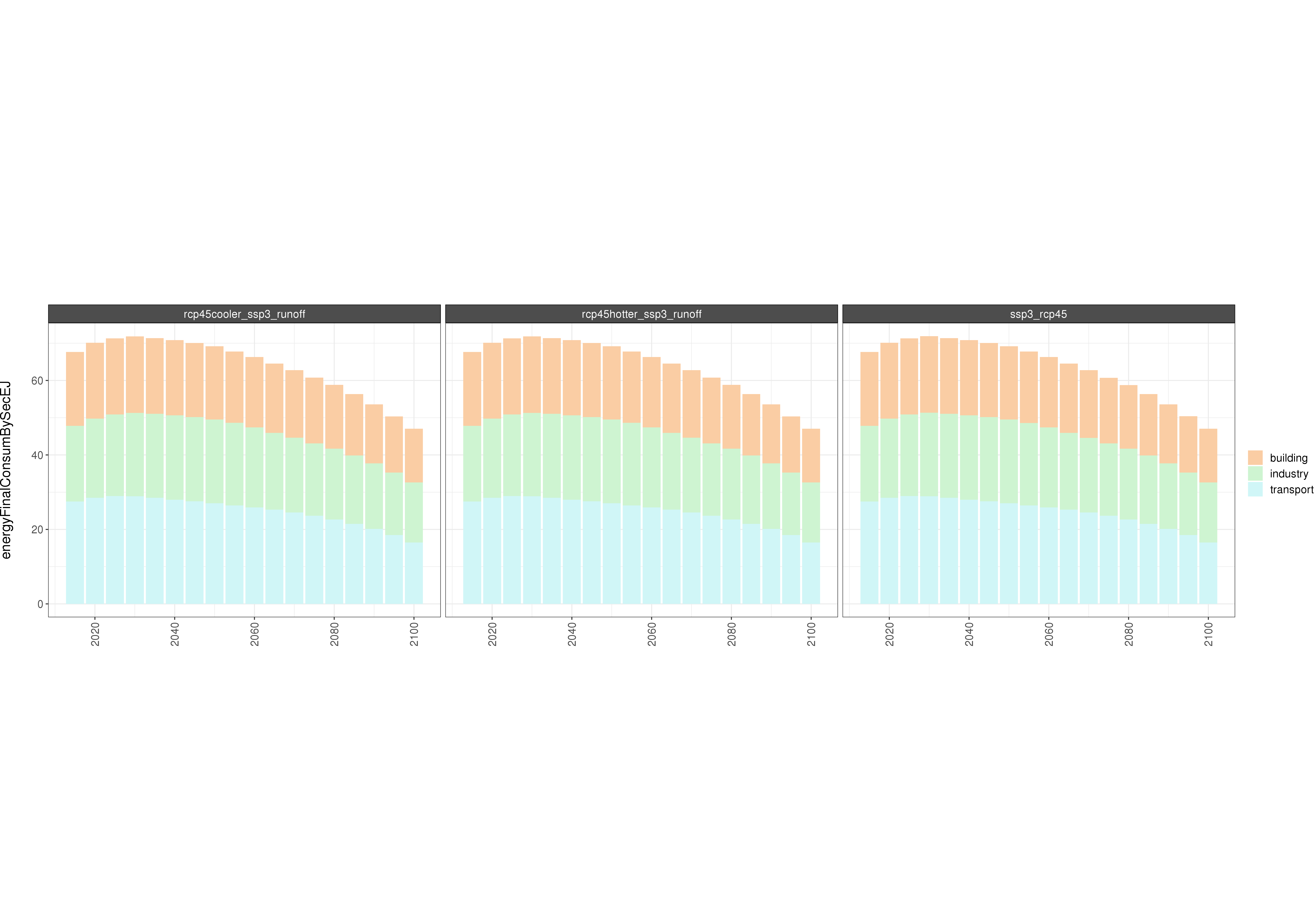
Absolute GCAM energy outputs
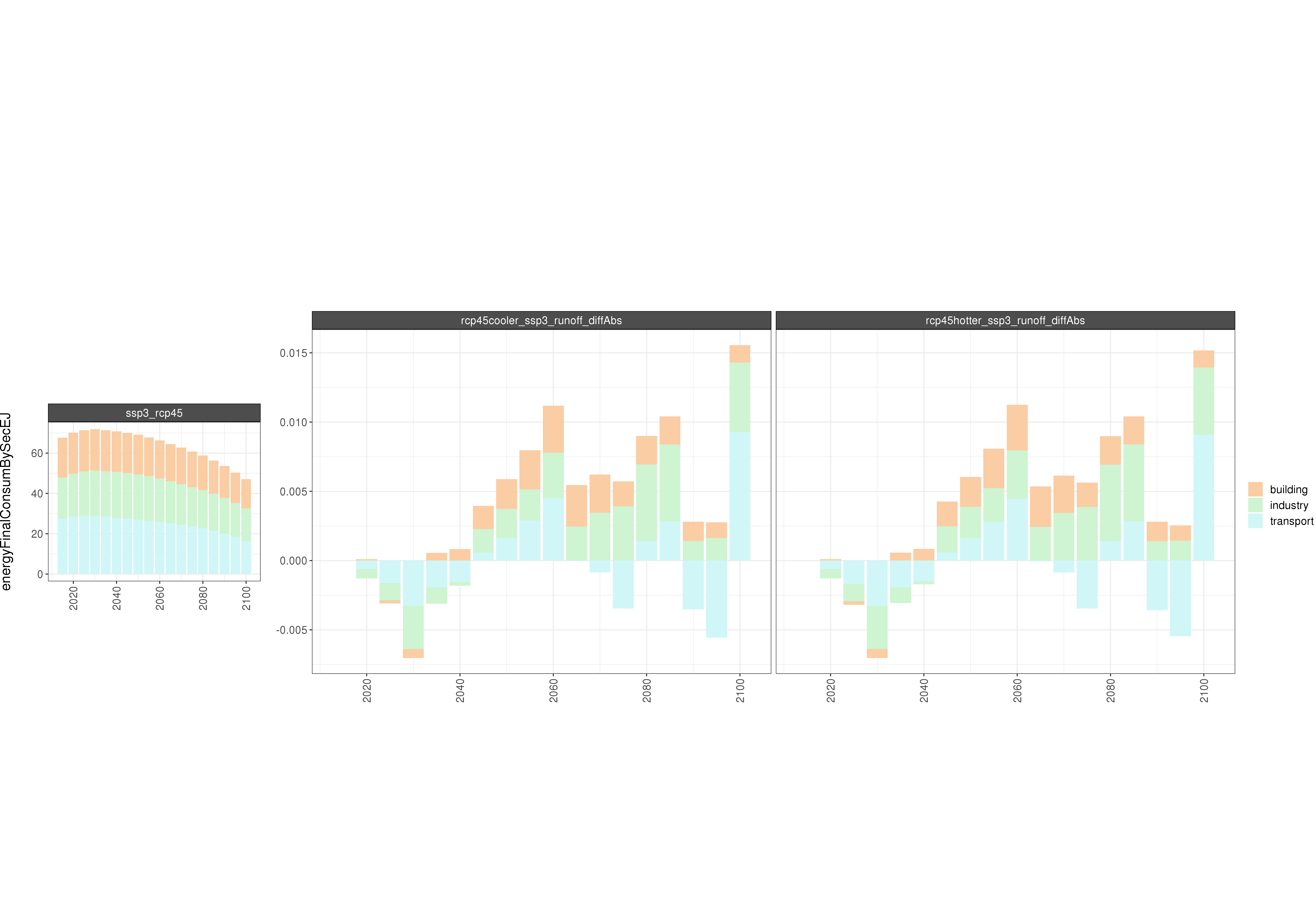
Comparison of GCAM energy outputs
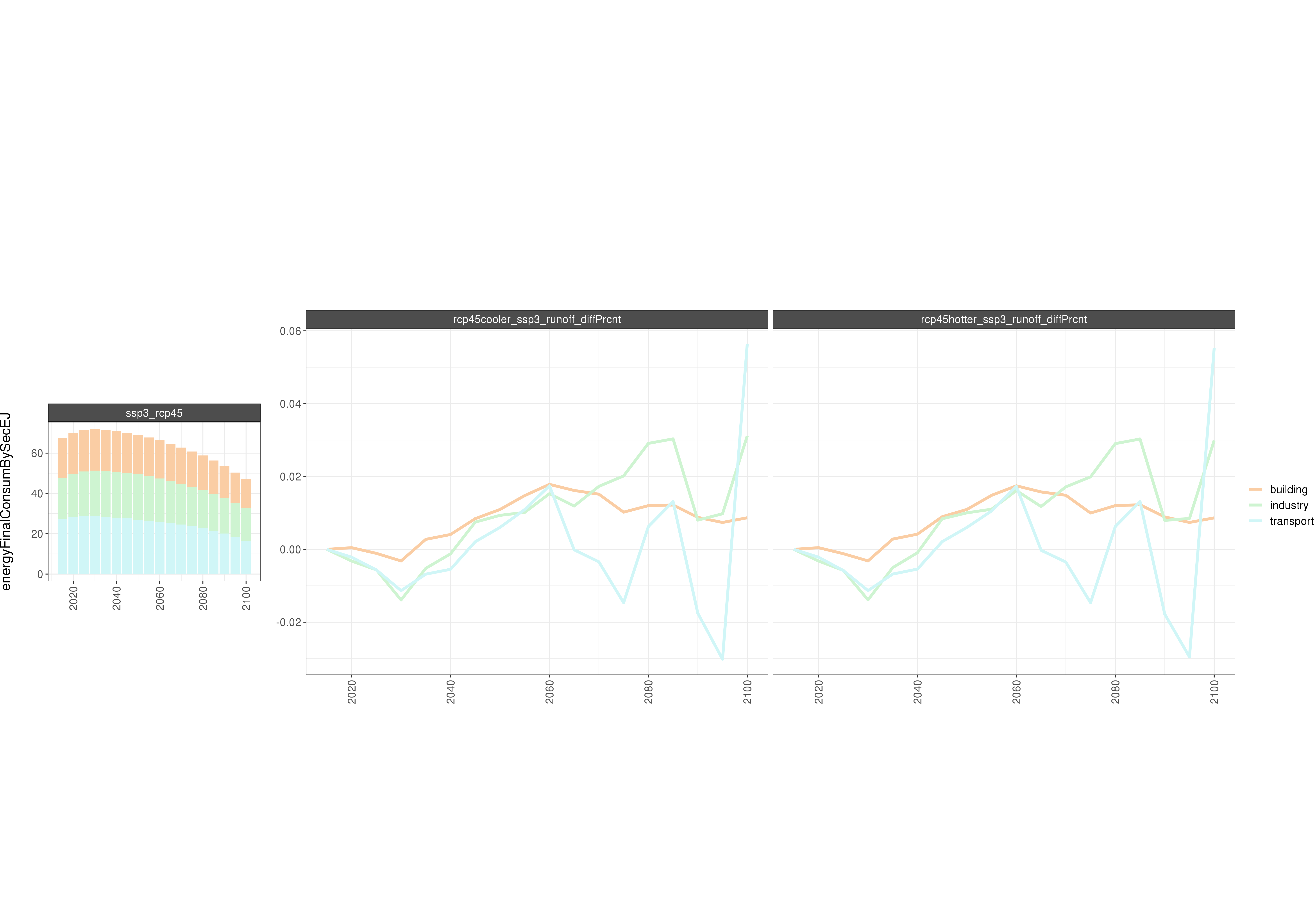
Comparison of GCAM energy outputs % Diff
RCP8.5
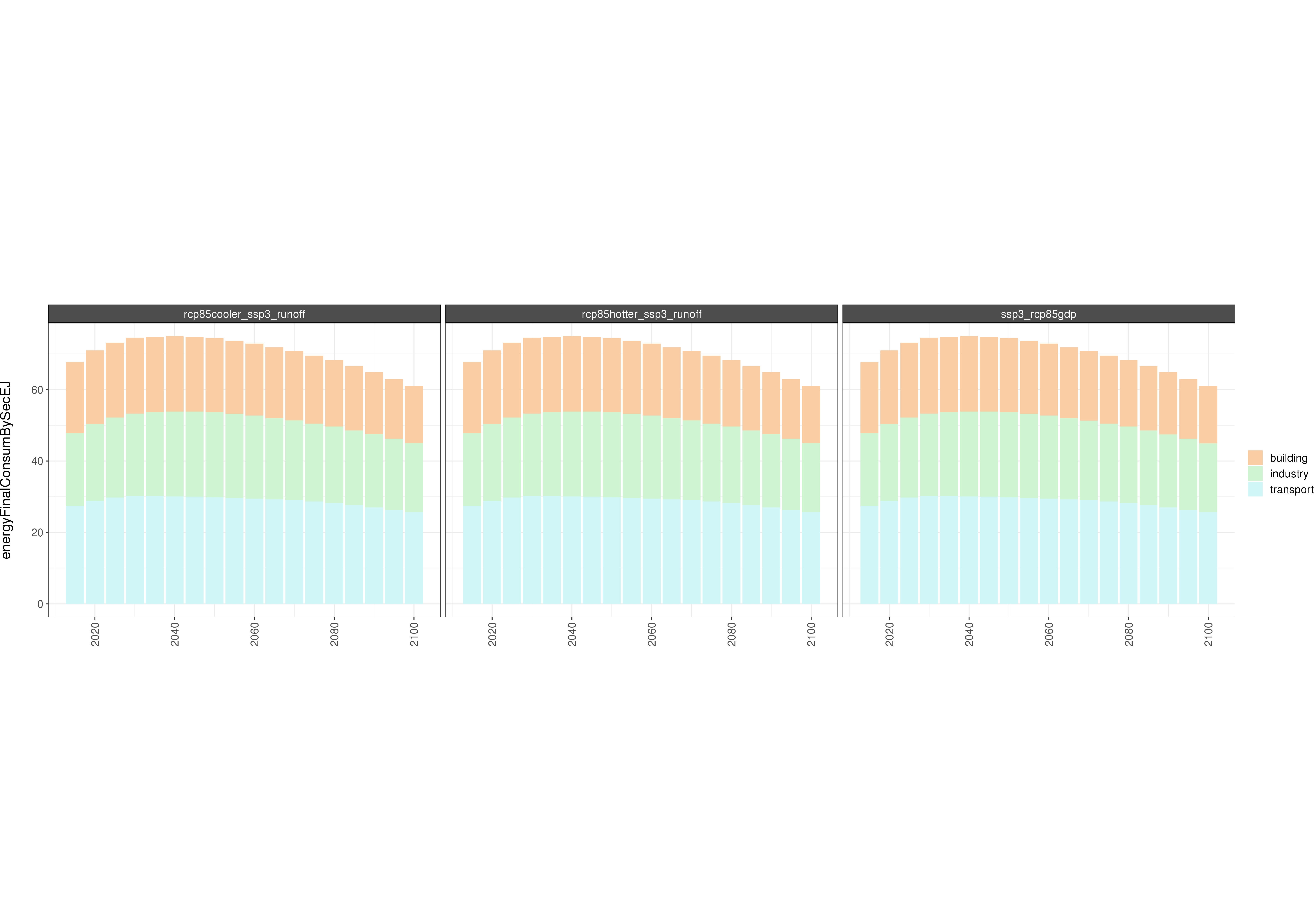
Absolute GCAM energy outputs
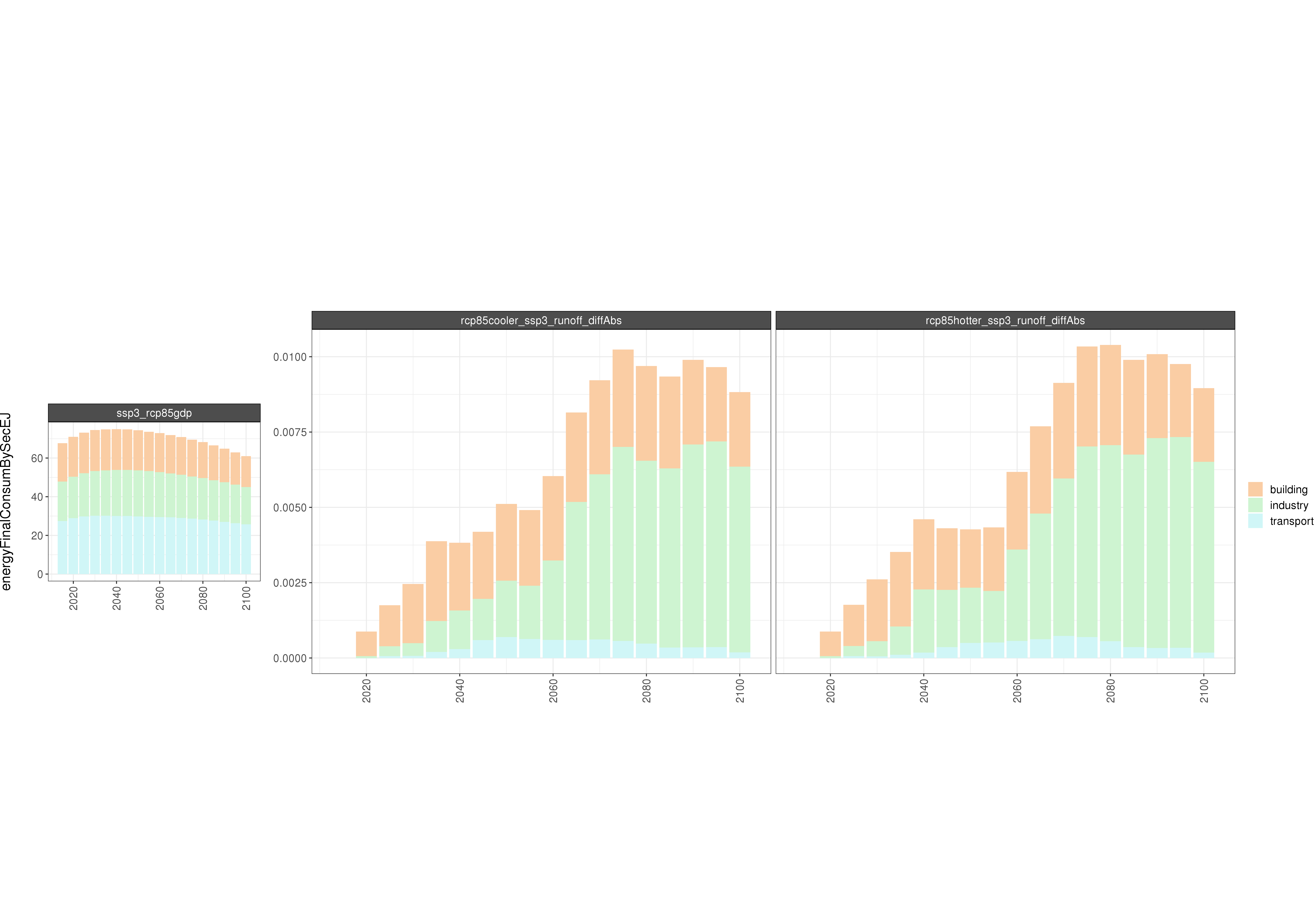
Comparison of GCAM energy outputs
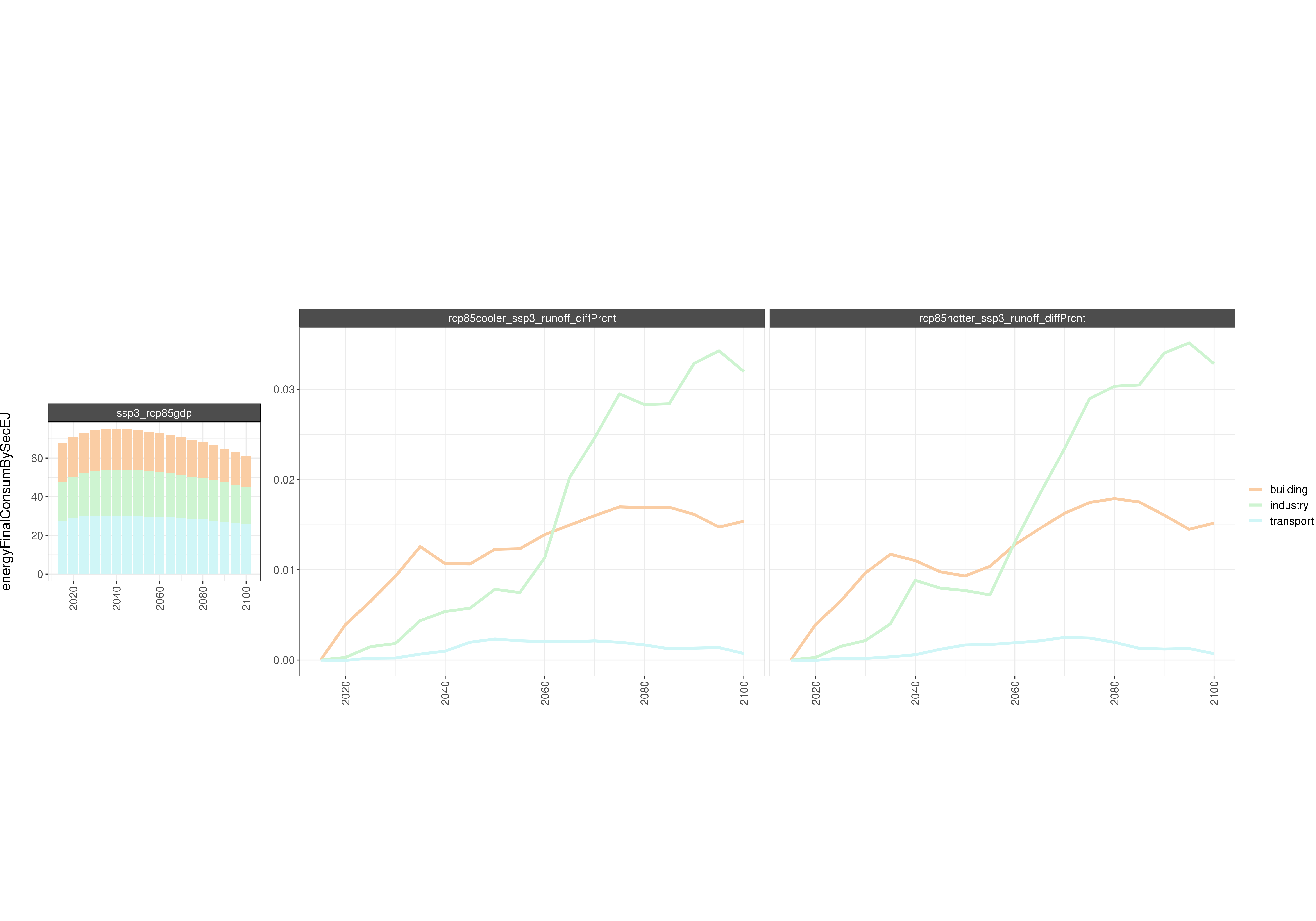
Comparison of GCAM energy outputs % Diff
Electricity
RCP4.5
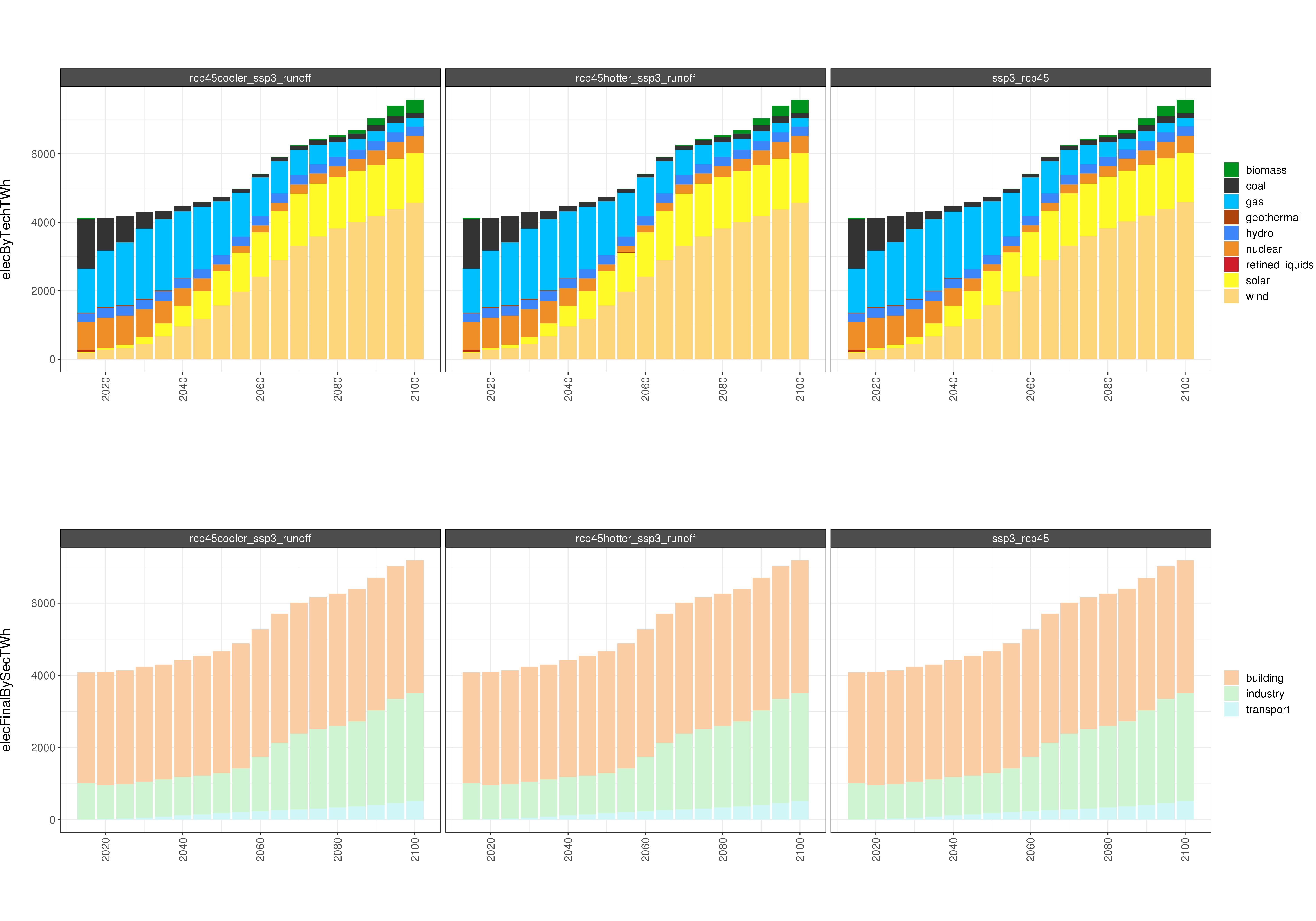
Absolute GCAM electricity outputs
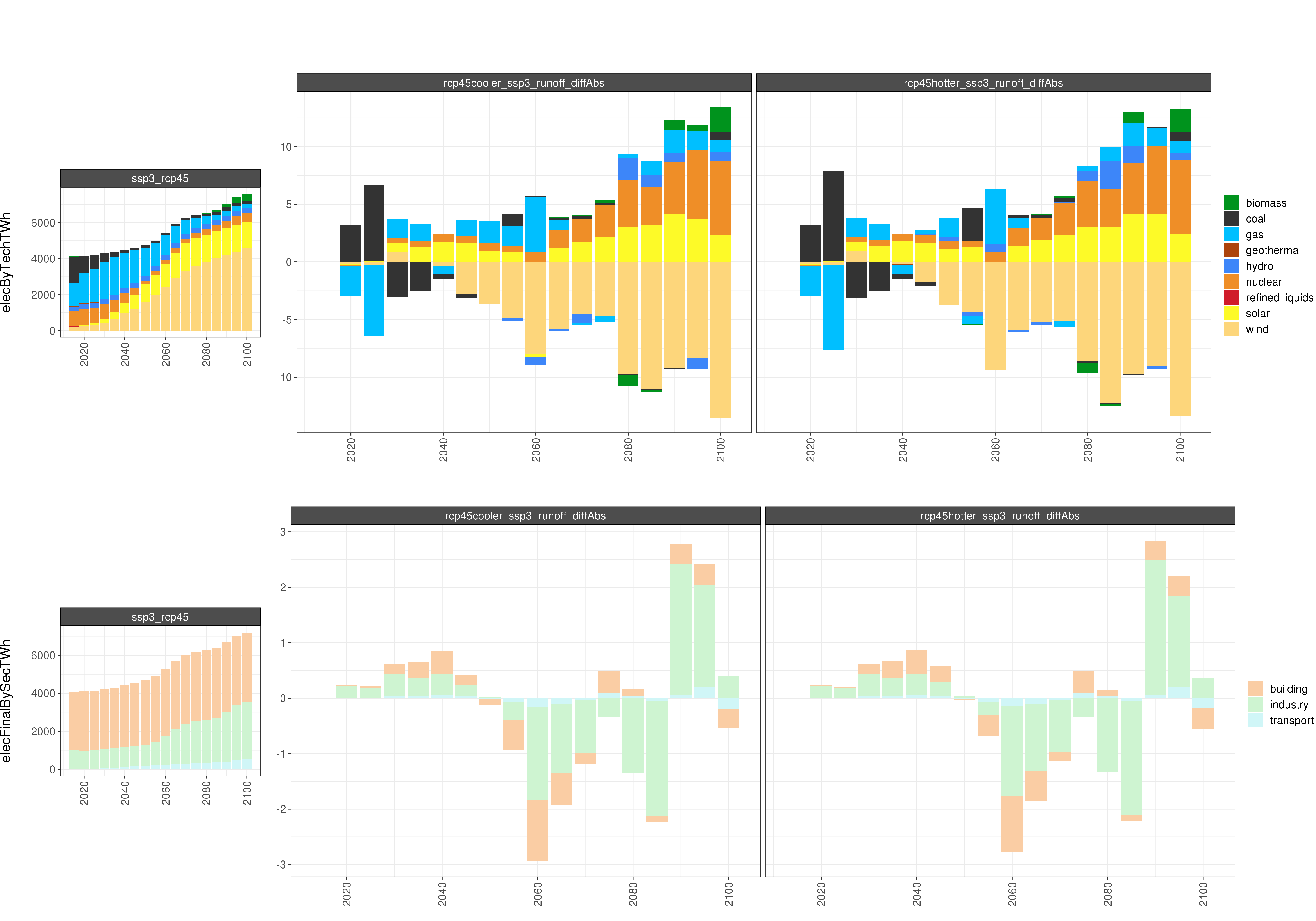
Comparison of GCAM electricity outputs
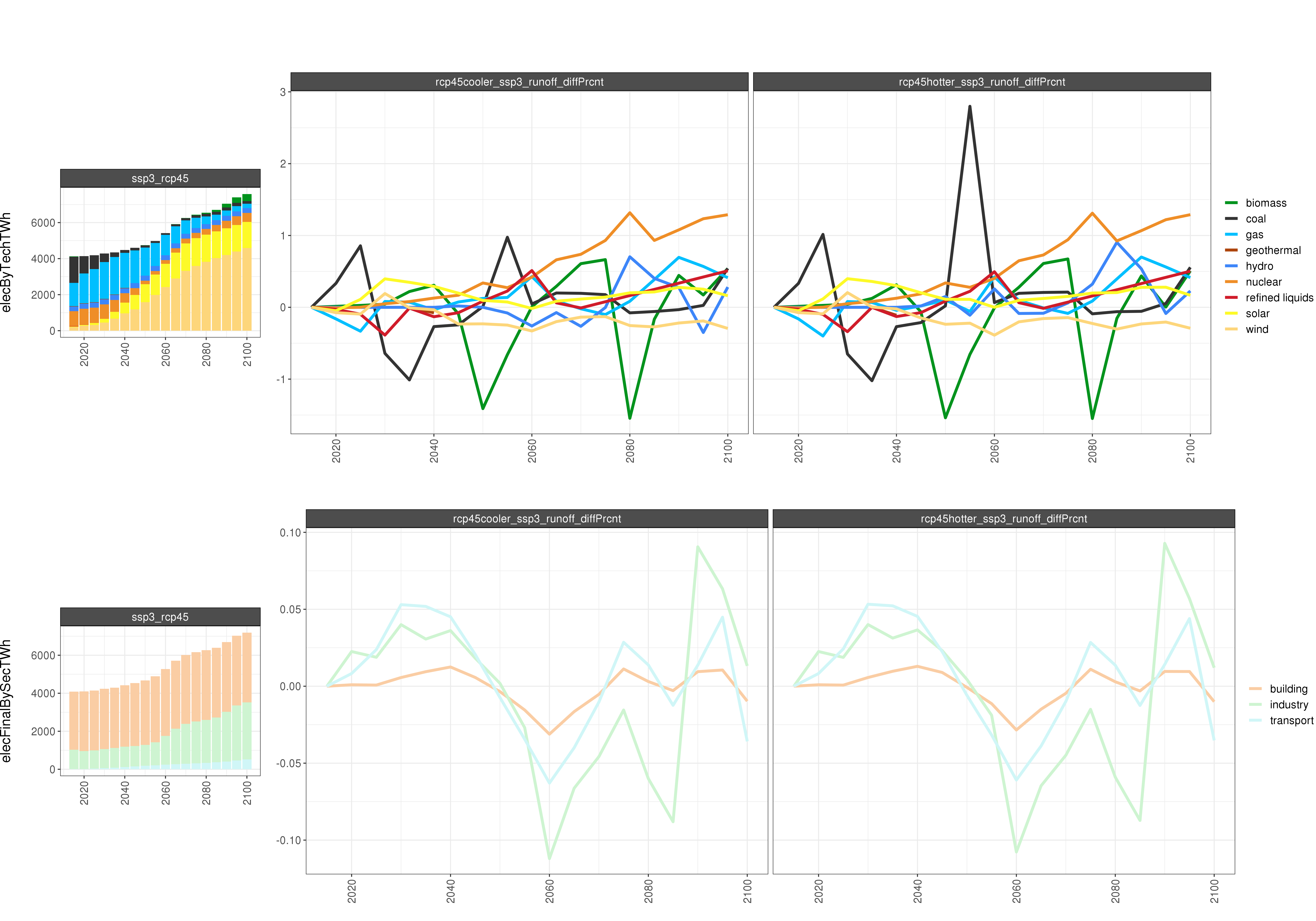
Comparison of GCAM electricity outputs % Diff
RCP8.5
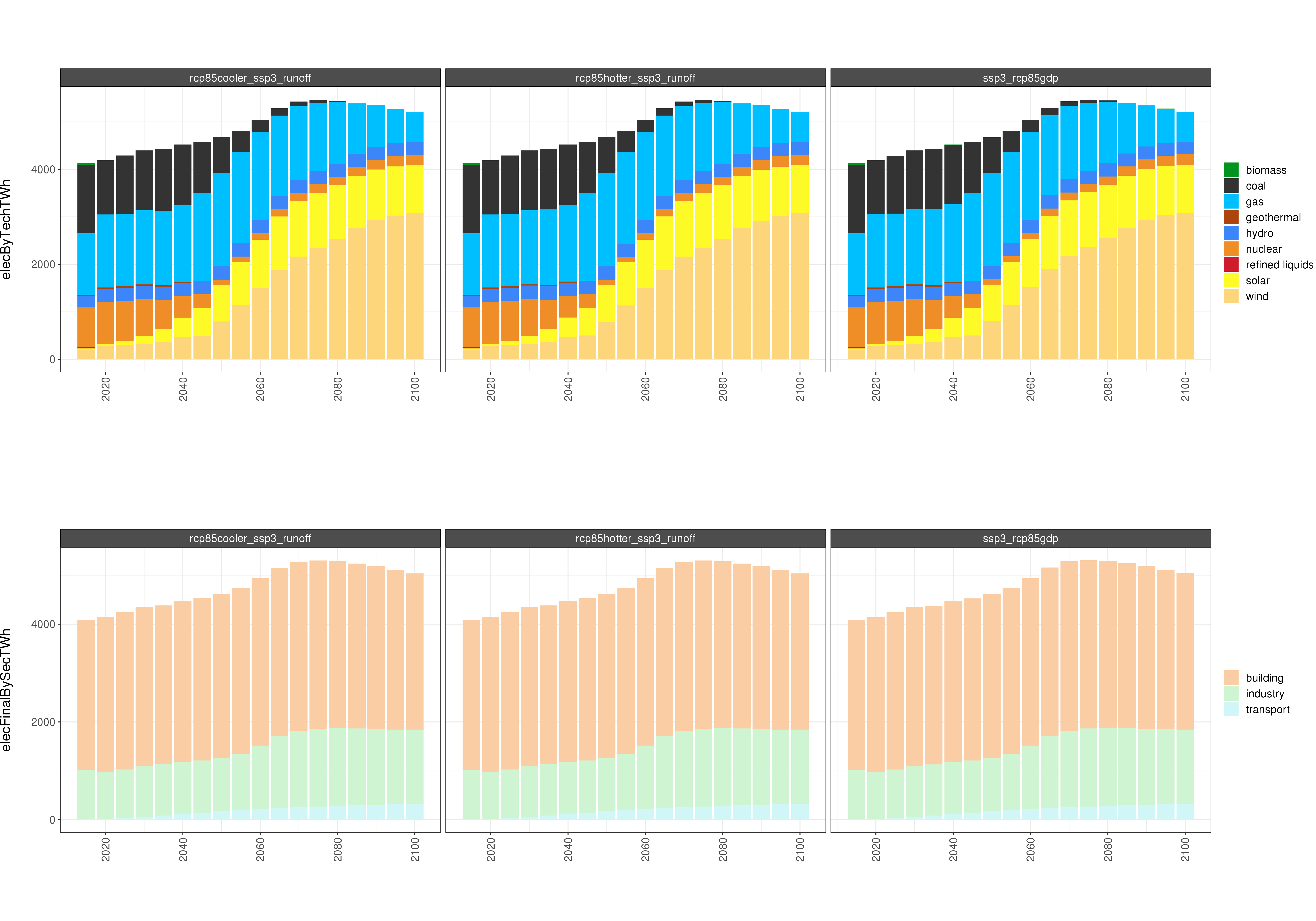
Absolute GCAM electricity outputs
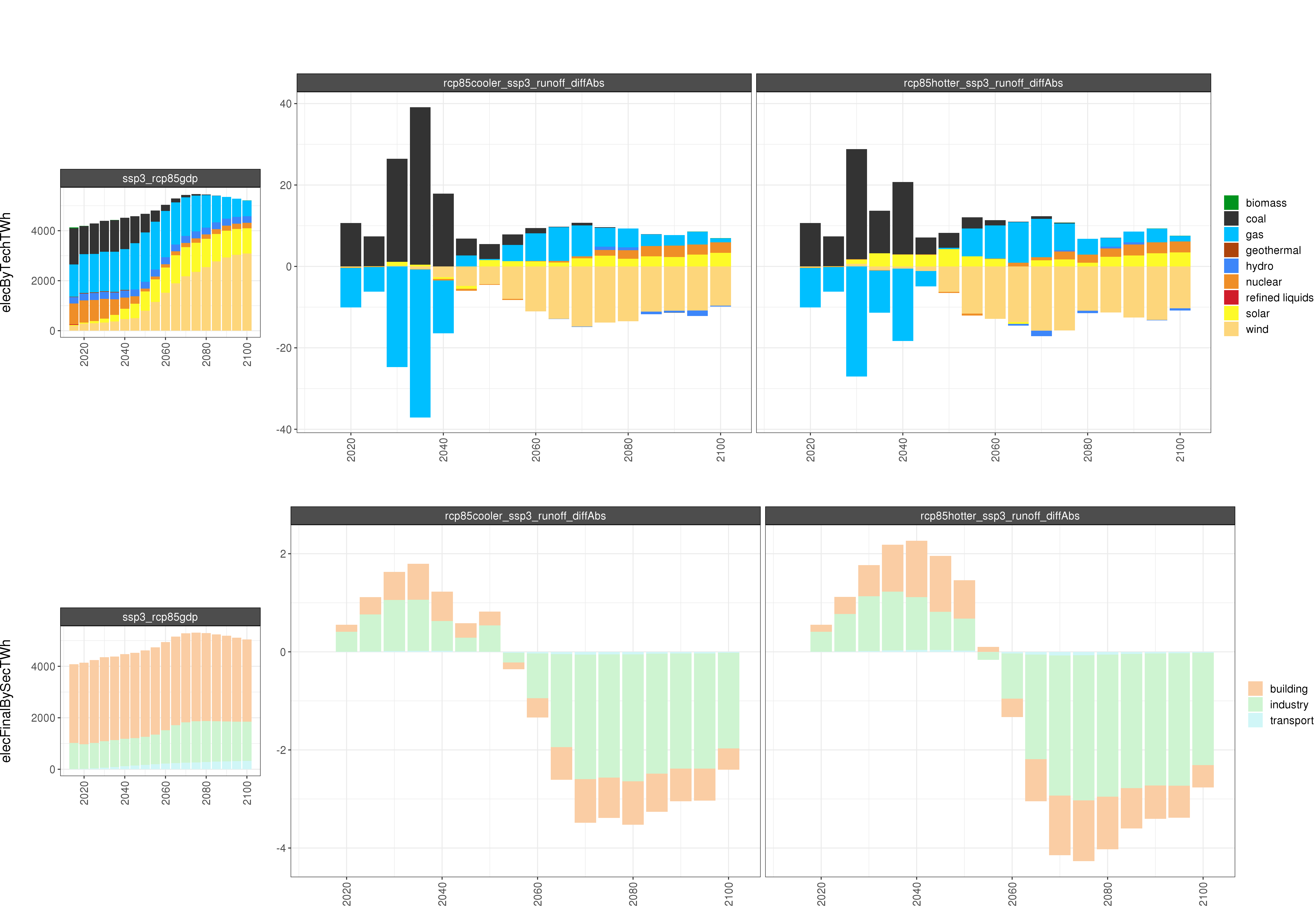
Comparison of GCAM electricity outputs
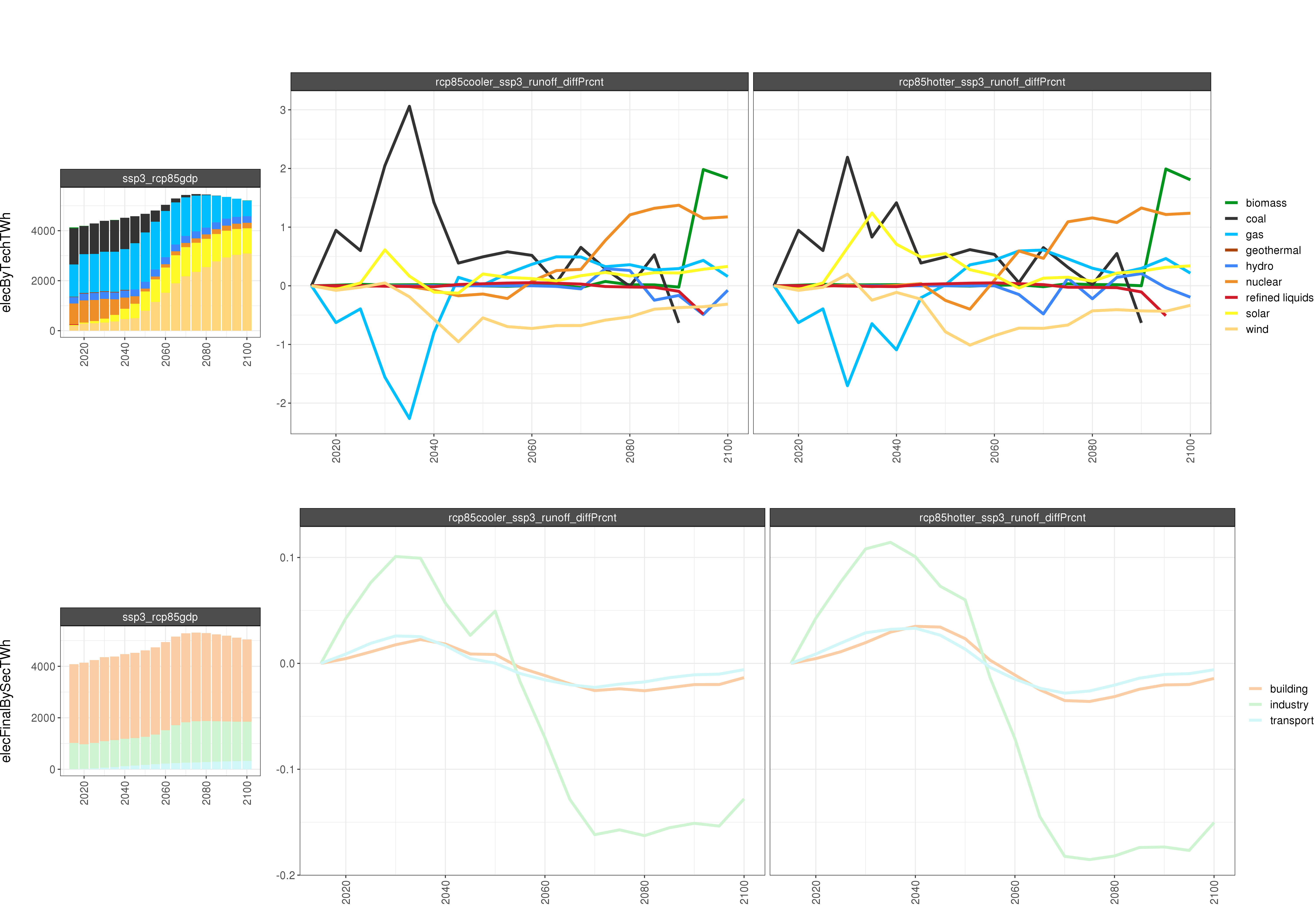
Comparison of GCAM electricity outputs % Diff
AGLU
RCP4.5
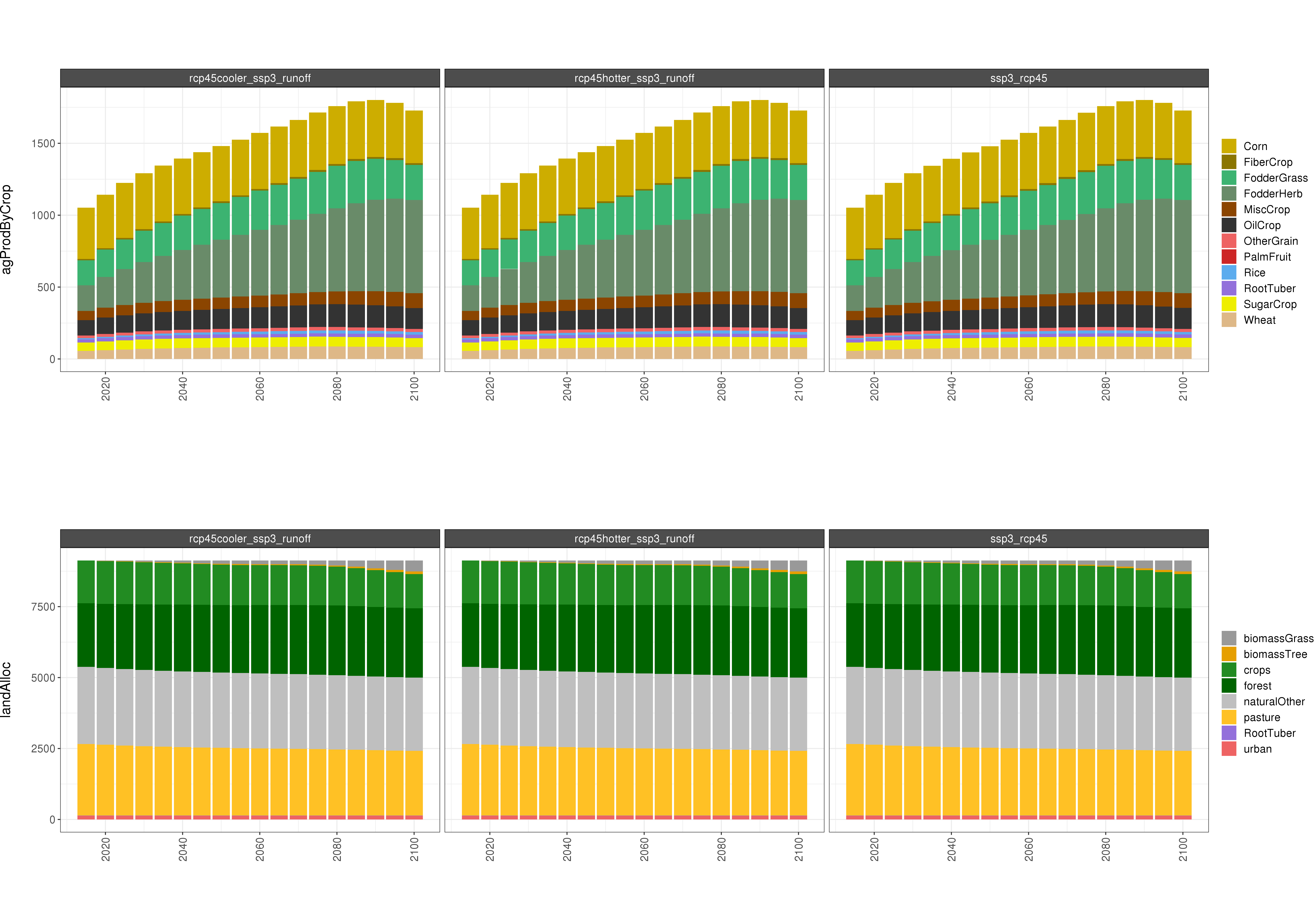
Absolute GCAM AGLU outputs

Comparison of GCAM AGLU outputs - absolute difference
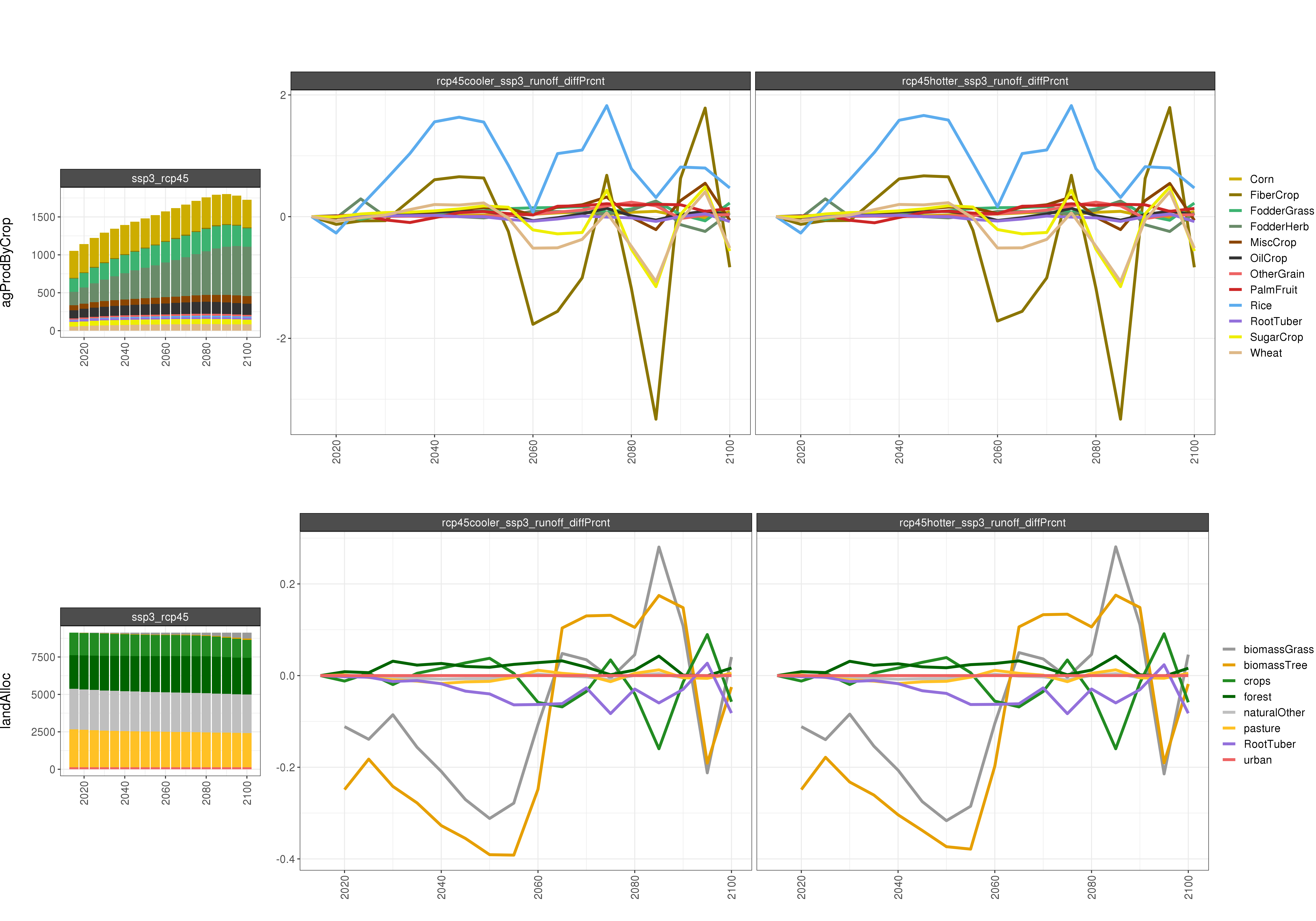
Comparison of GCAM AGLU outputs - percent difference
RCP8.5
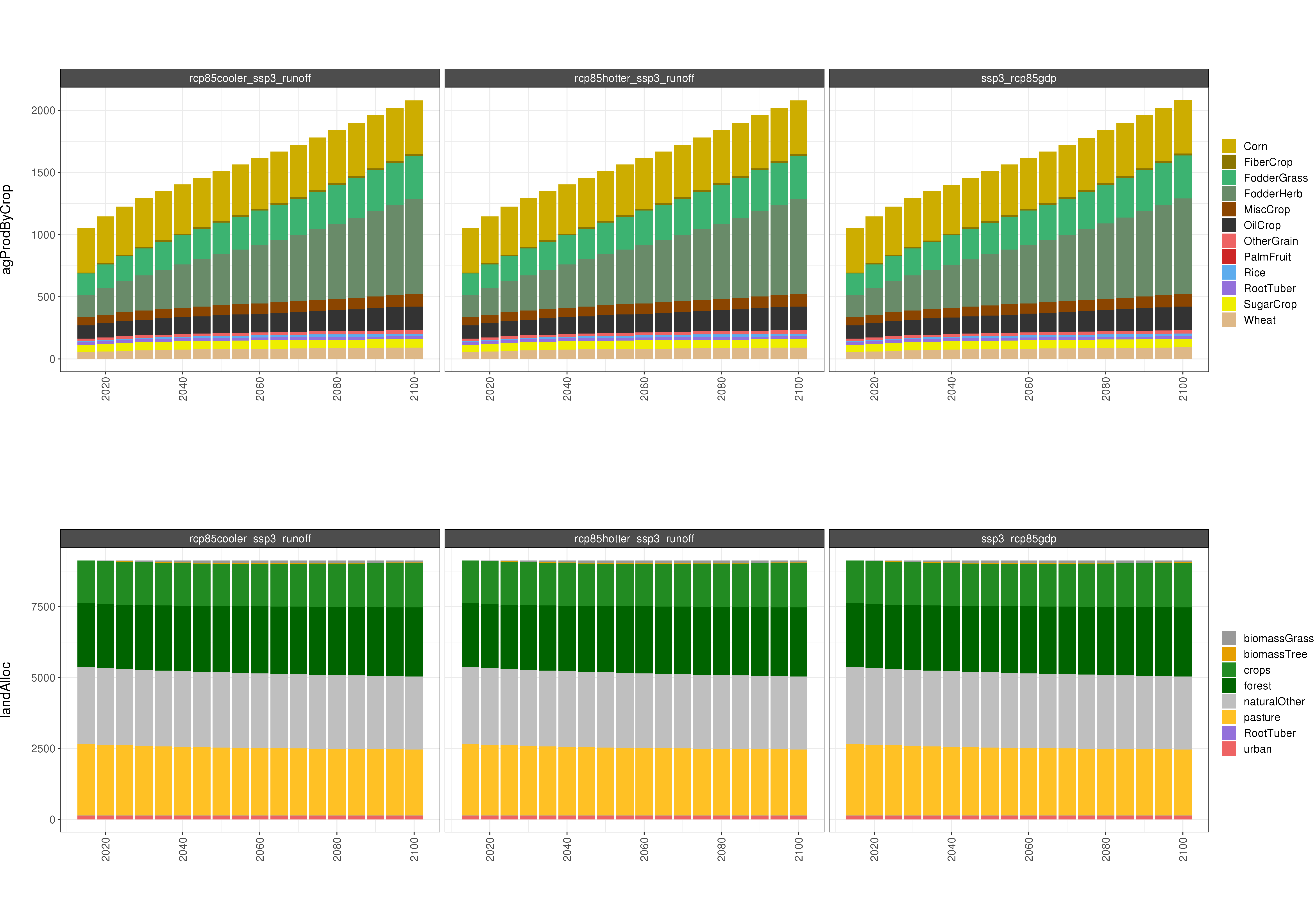
Absolute GCAM AGLU outputs
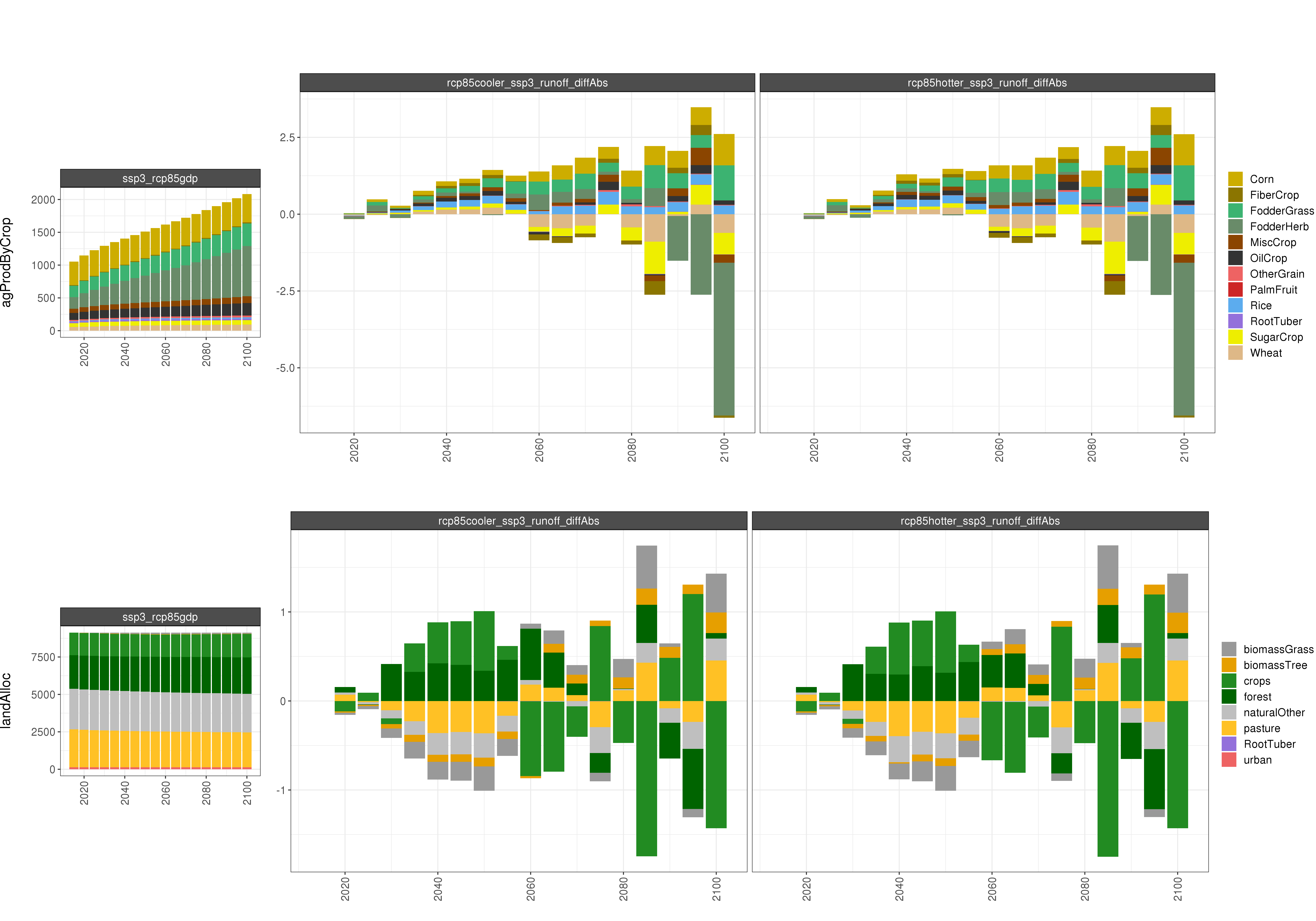
Comparison of GCAM AGLU outputs - absolute difference
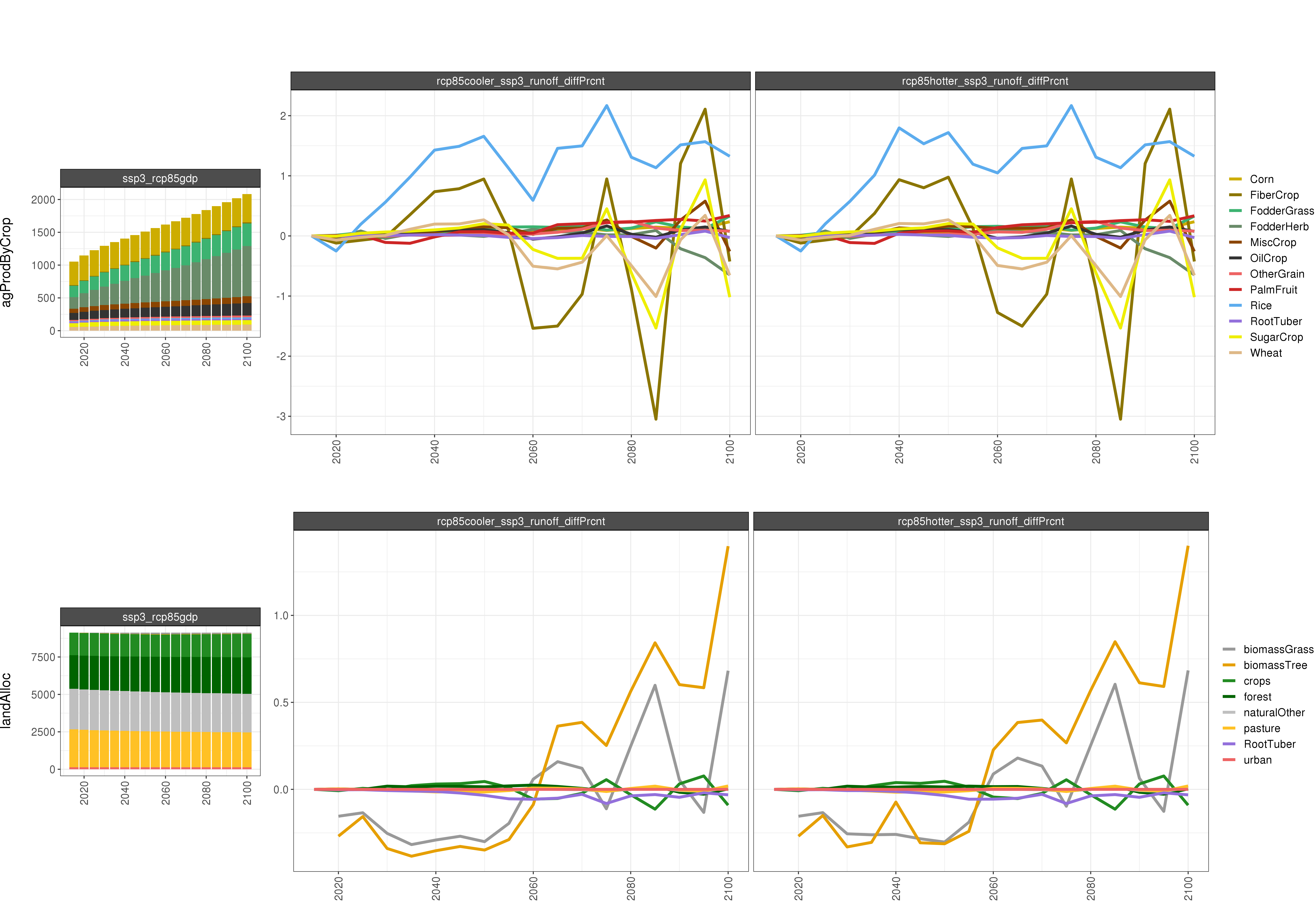
Comparison of GCAM AGLU outputs - percent difference
Emissions
RCP4.5
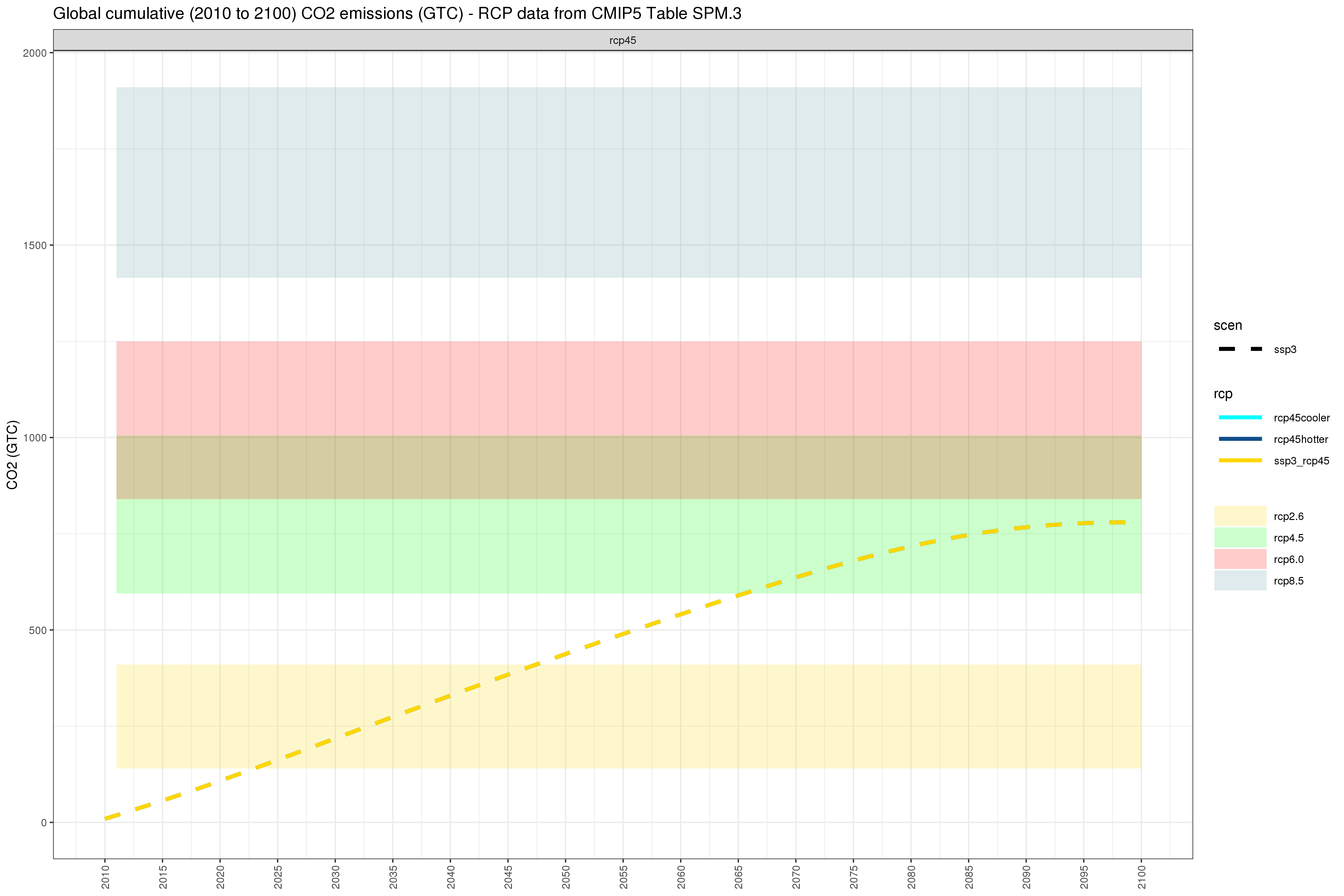
Cumulative global carbon emission pathways under different combinations of SSP3/SSP5 and RCP4.5/RCP8.5

Annual US carbon emissions under different combinations of SSP3/SSP5 and RCP4.5/RCP8.5
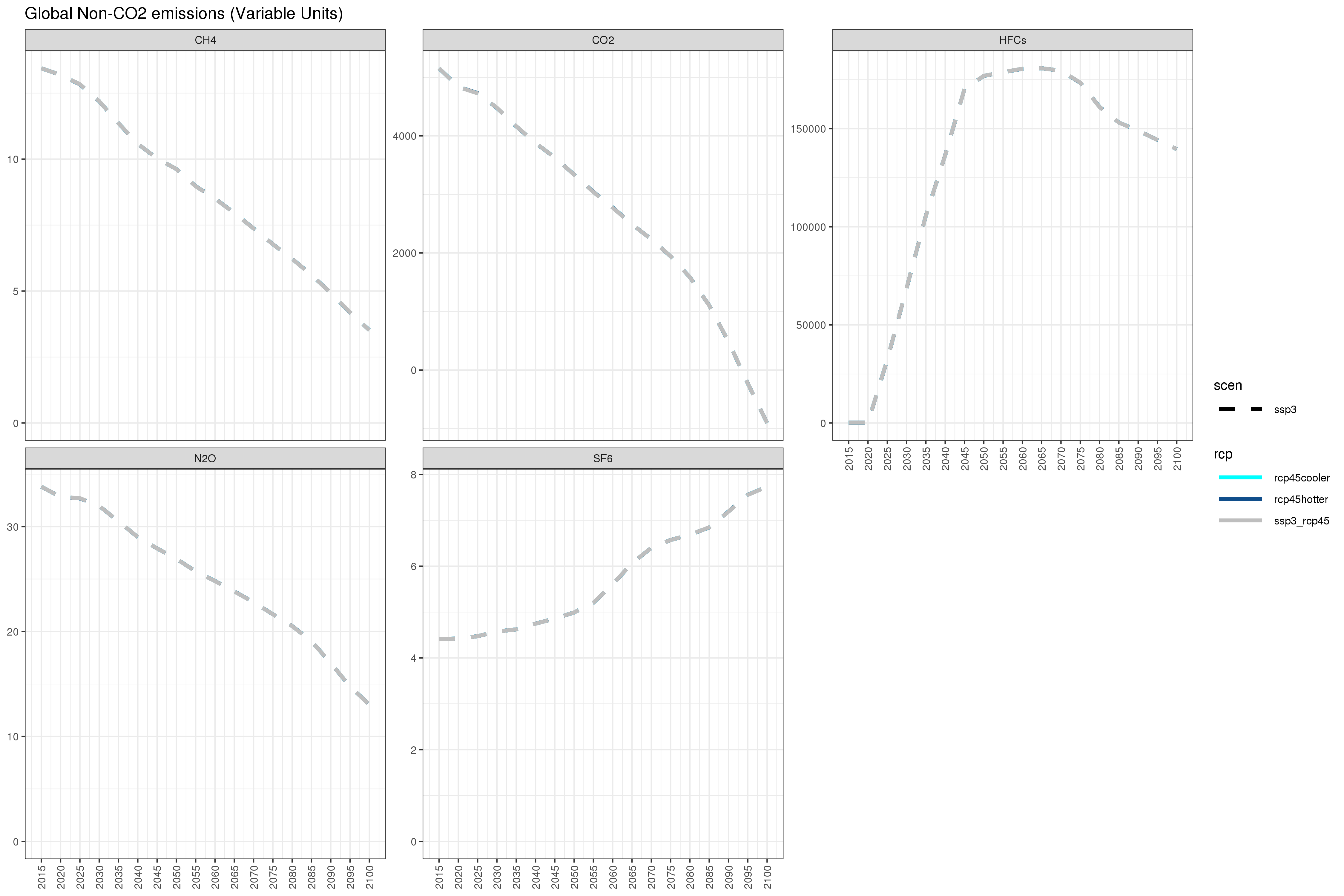
Annual global non-CO2 emissions under different combinations of SSP3/SSP5 and RCP4.5/RCP8.5

Annual US non-CO2 emissions under different combinations of SSP3/SSP5 and RCP4.5/RCP8.5
RCP8.5
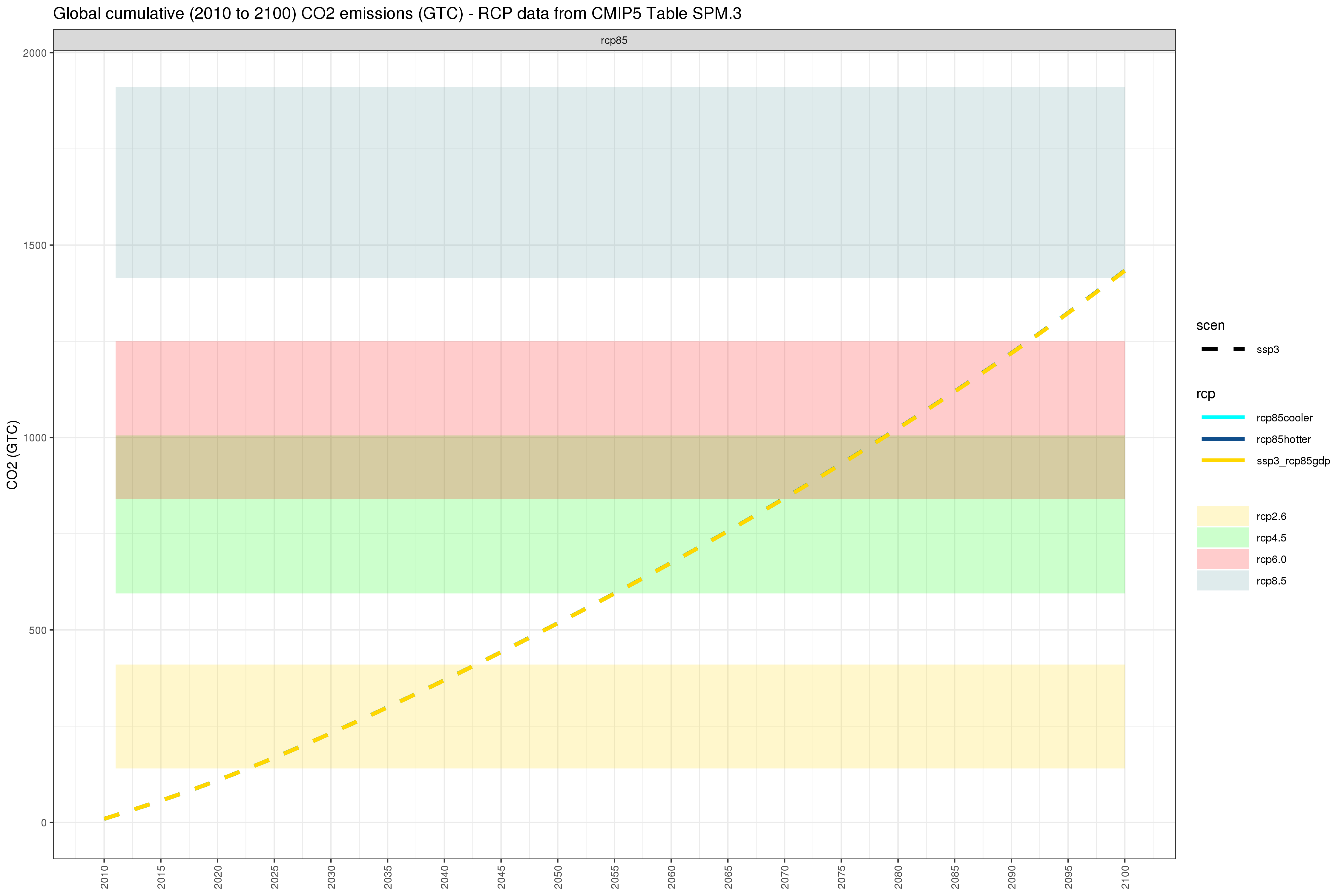
Cumulative global carbon emission pathways under different combinations of SSP3/SSP5 and RCP4.5/RCP8.5
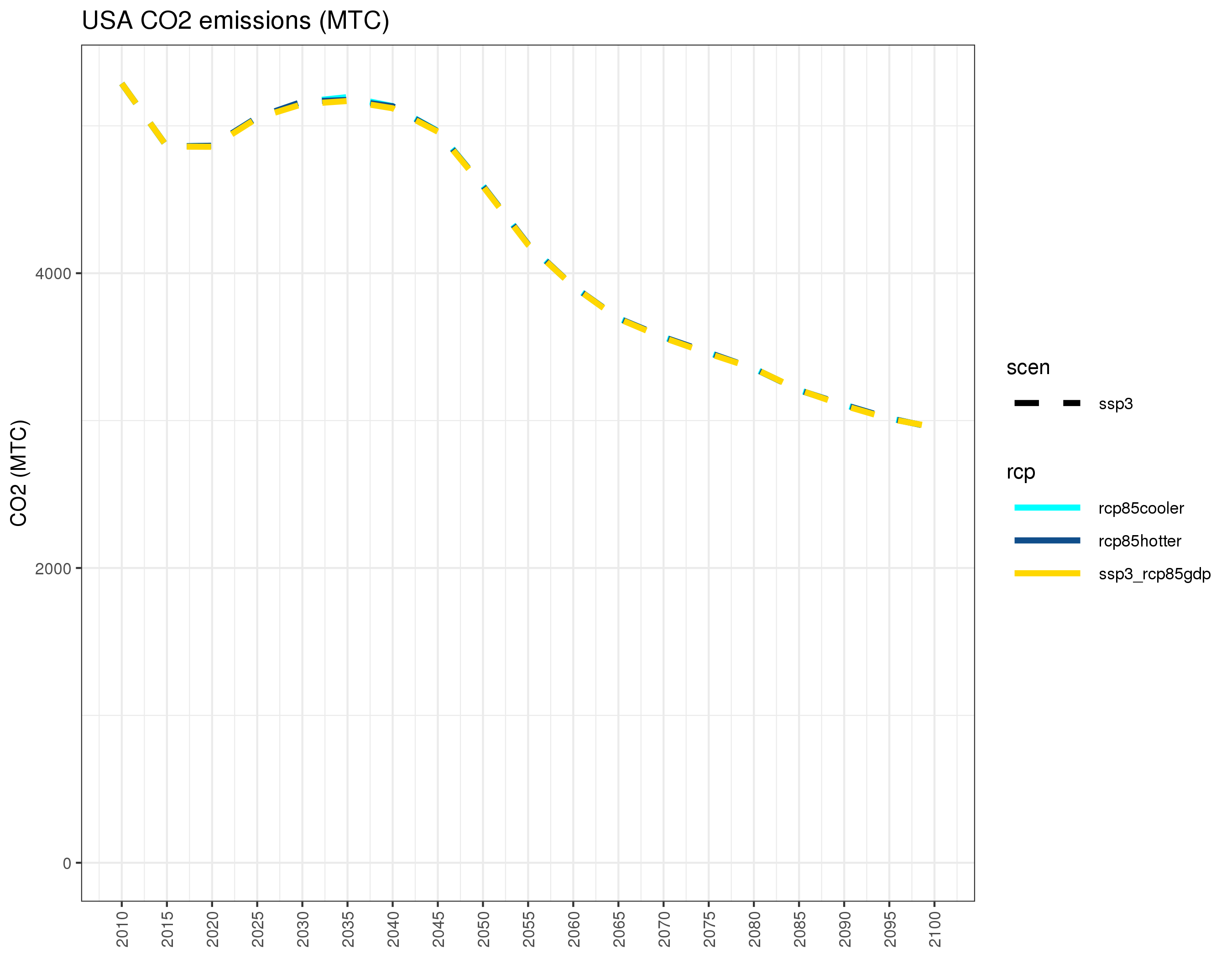
Annual US carbon emissions under different combinations of SSP3/SSP5 and RCP4.5/RCP8.5
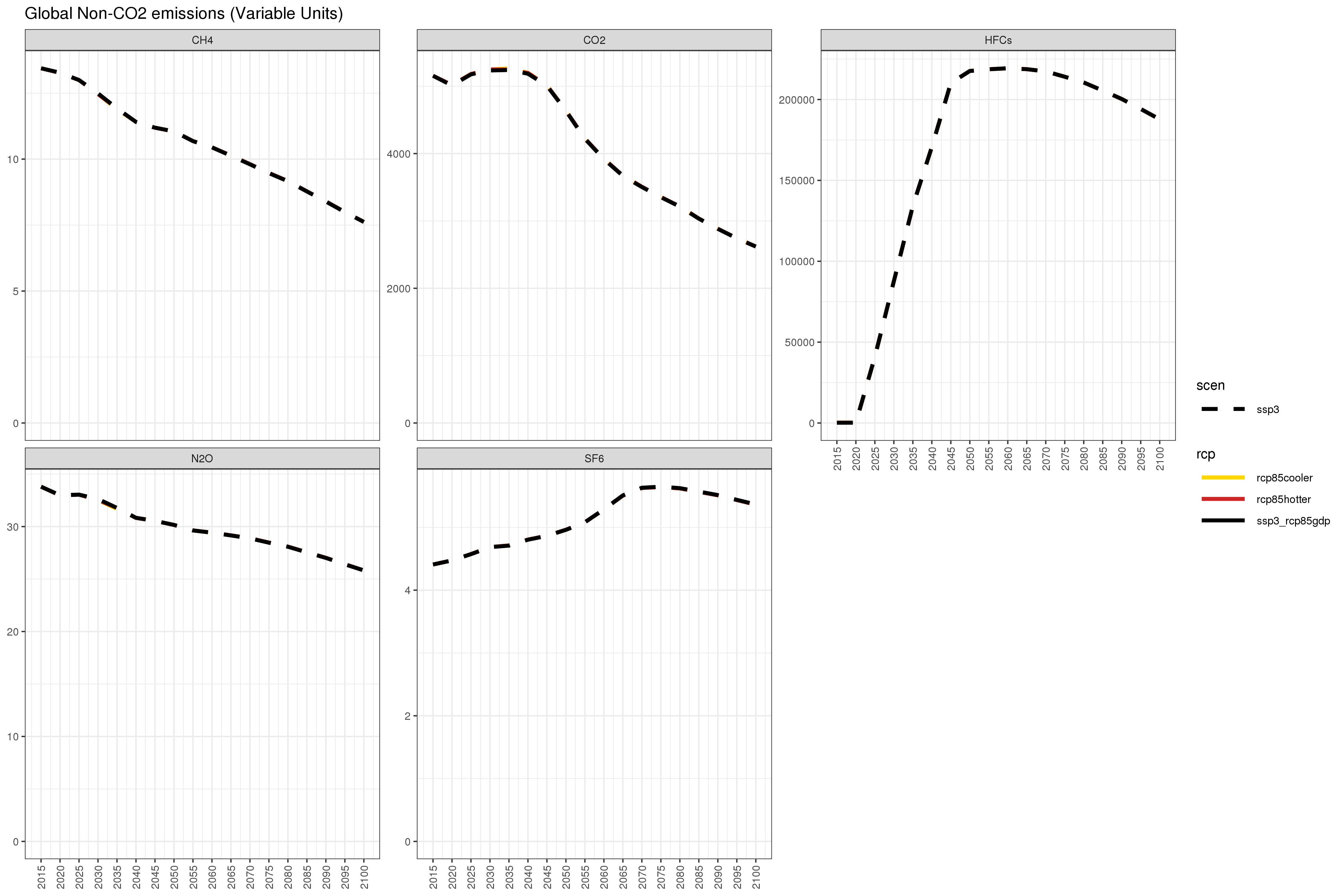
Annual global non-CO2 emissions under different combinations of SSP3/SSP5 and RCP4.5/RCP8.5
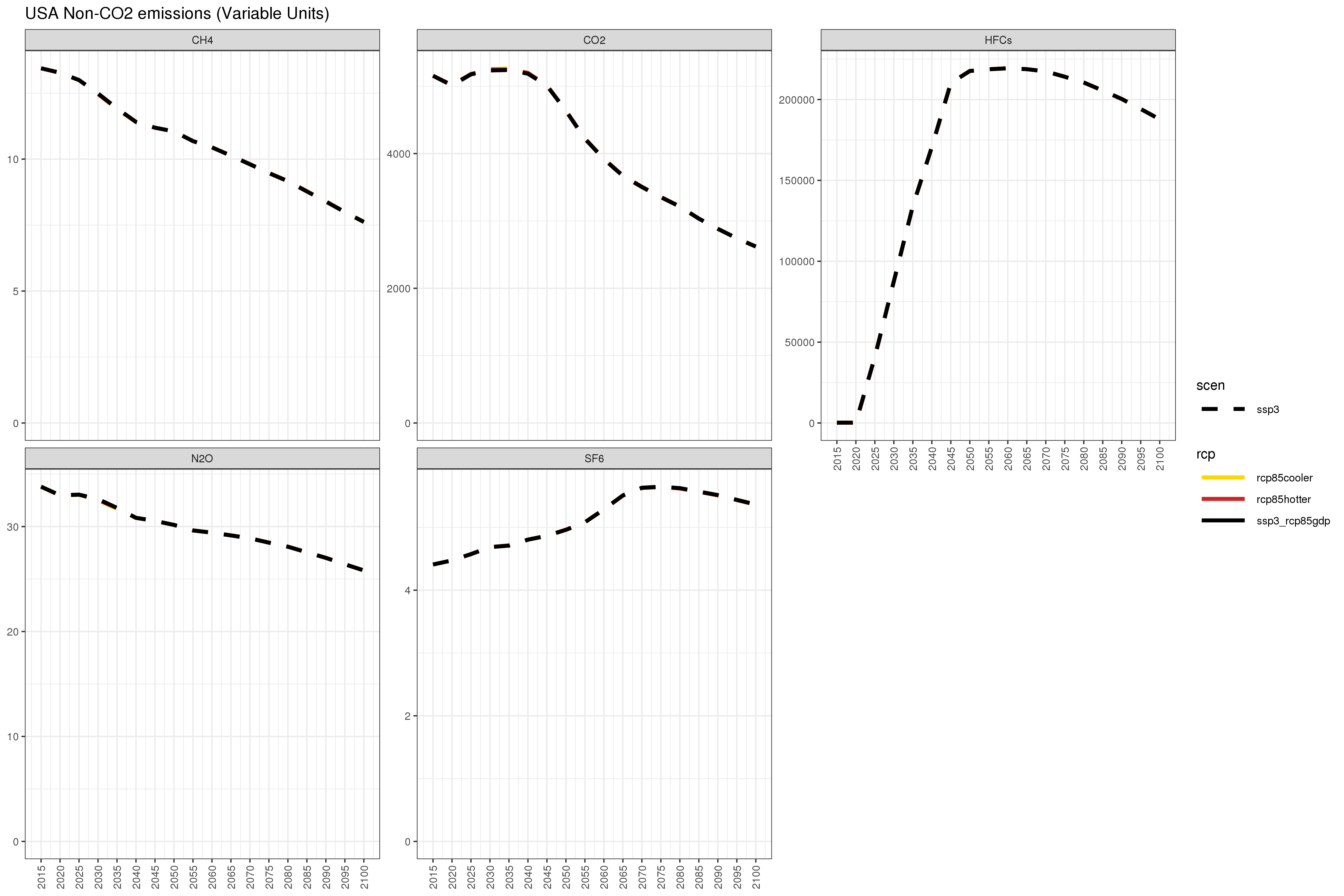
Annual US non-CO2 emissions under different combinations of SSP3/SSP5 and RCP4.5/RCP8.5
GCAM SSP5
Summary
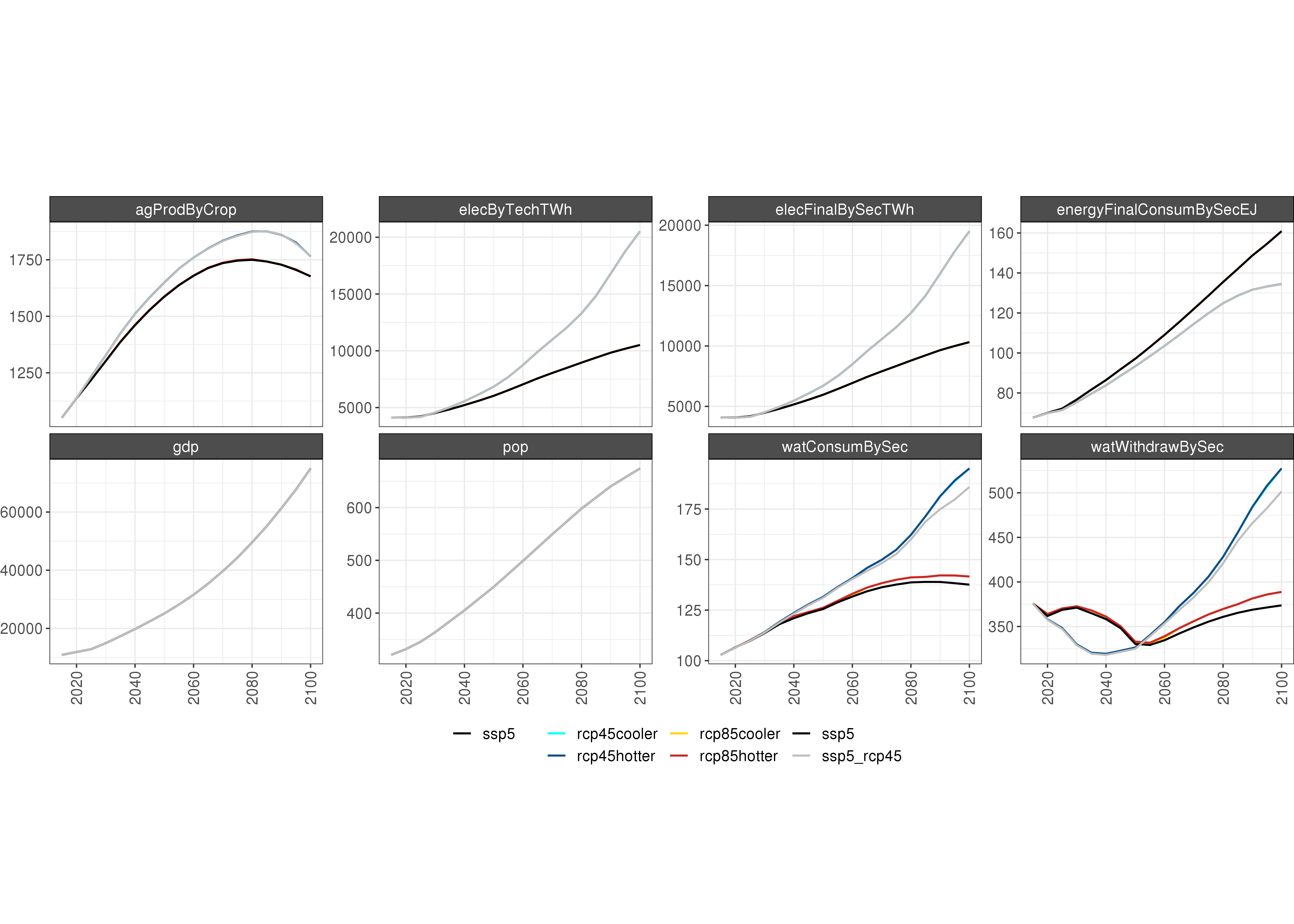
Comparison of GCAM global agyield outputs
Socioeconomics
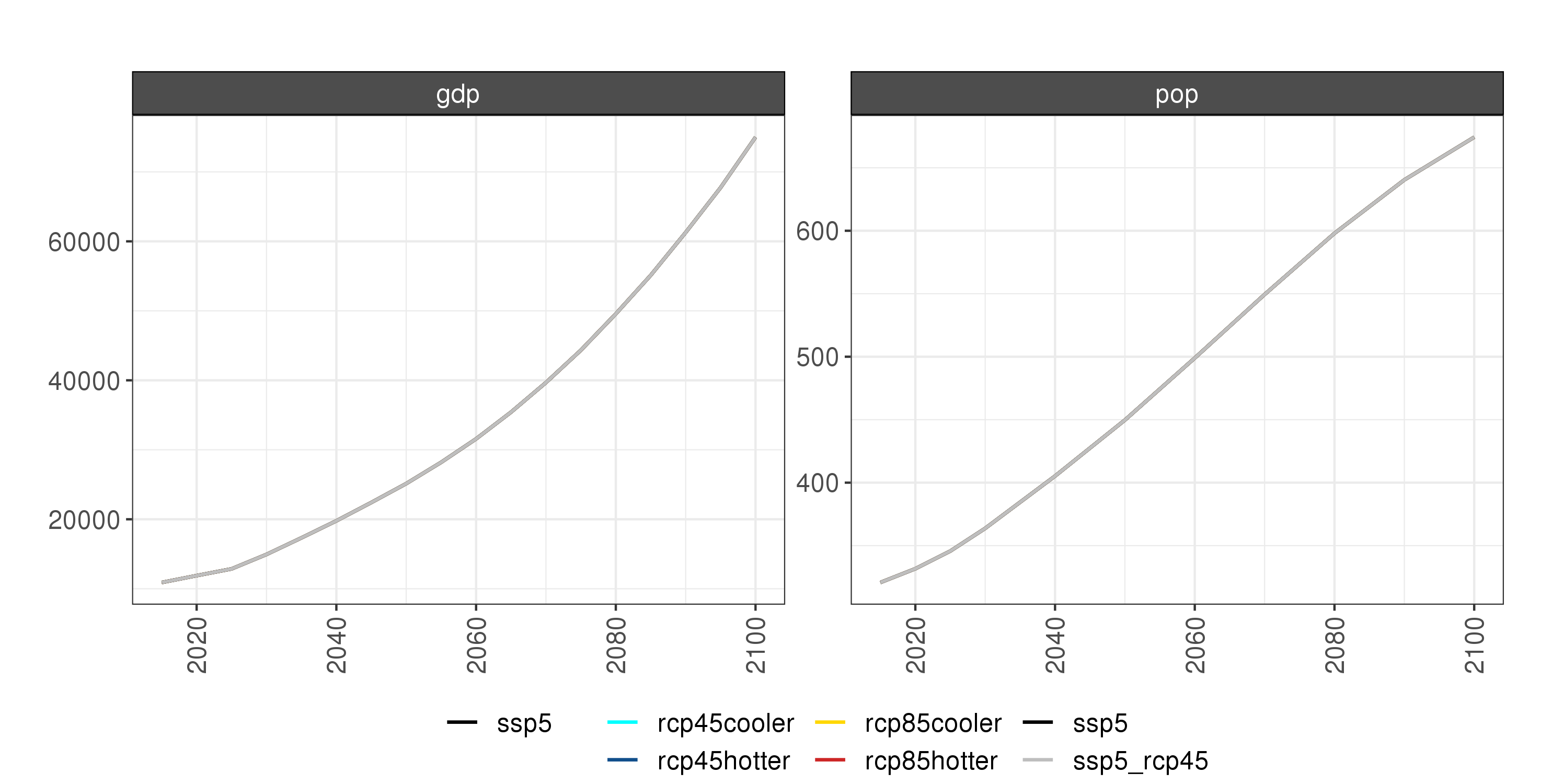
Comparison of GCAM socioeconomic outputs
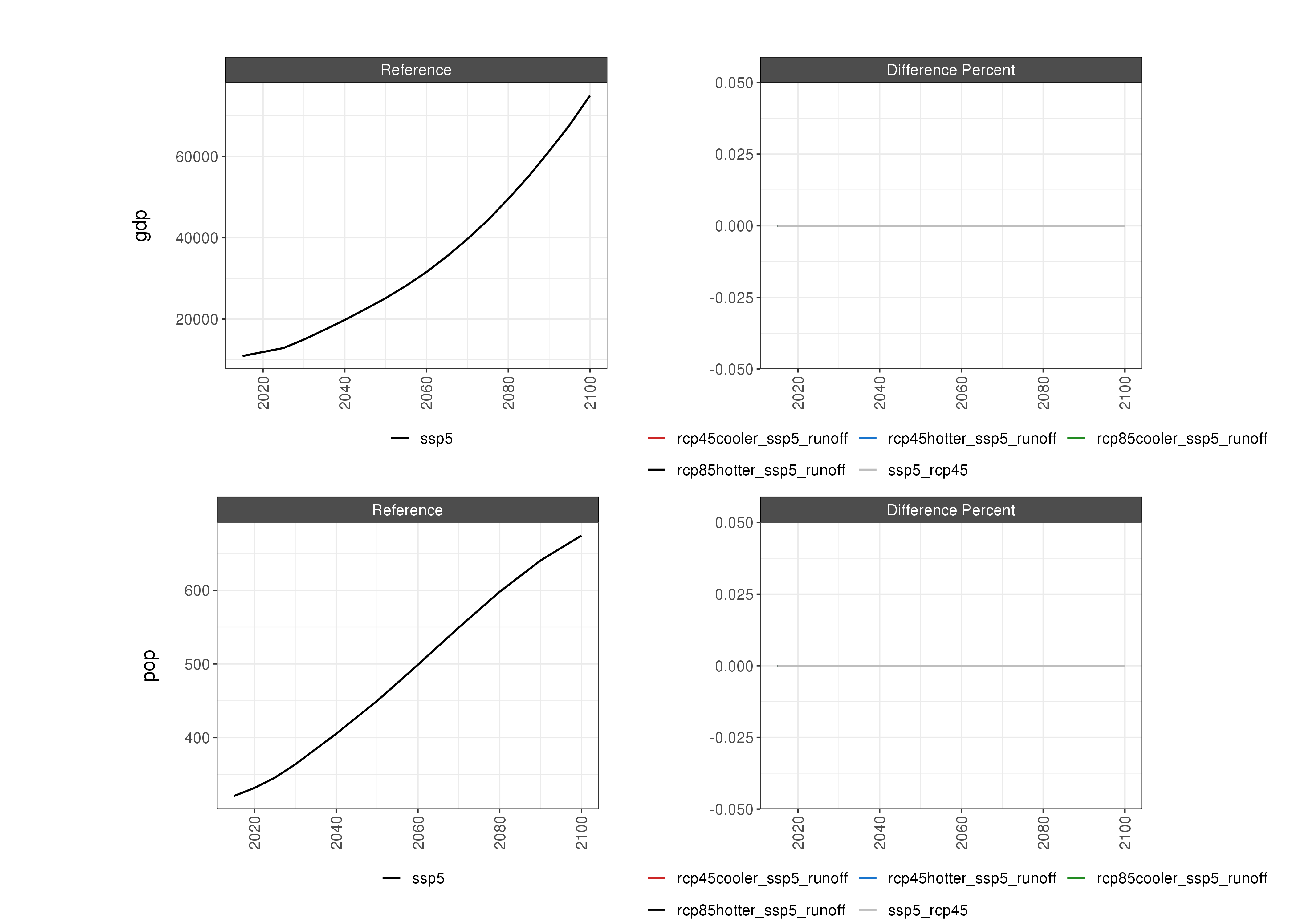
Comparison of GCAM socioeconomic outputs % Diff
Water
RCP4.5
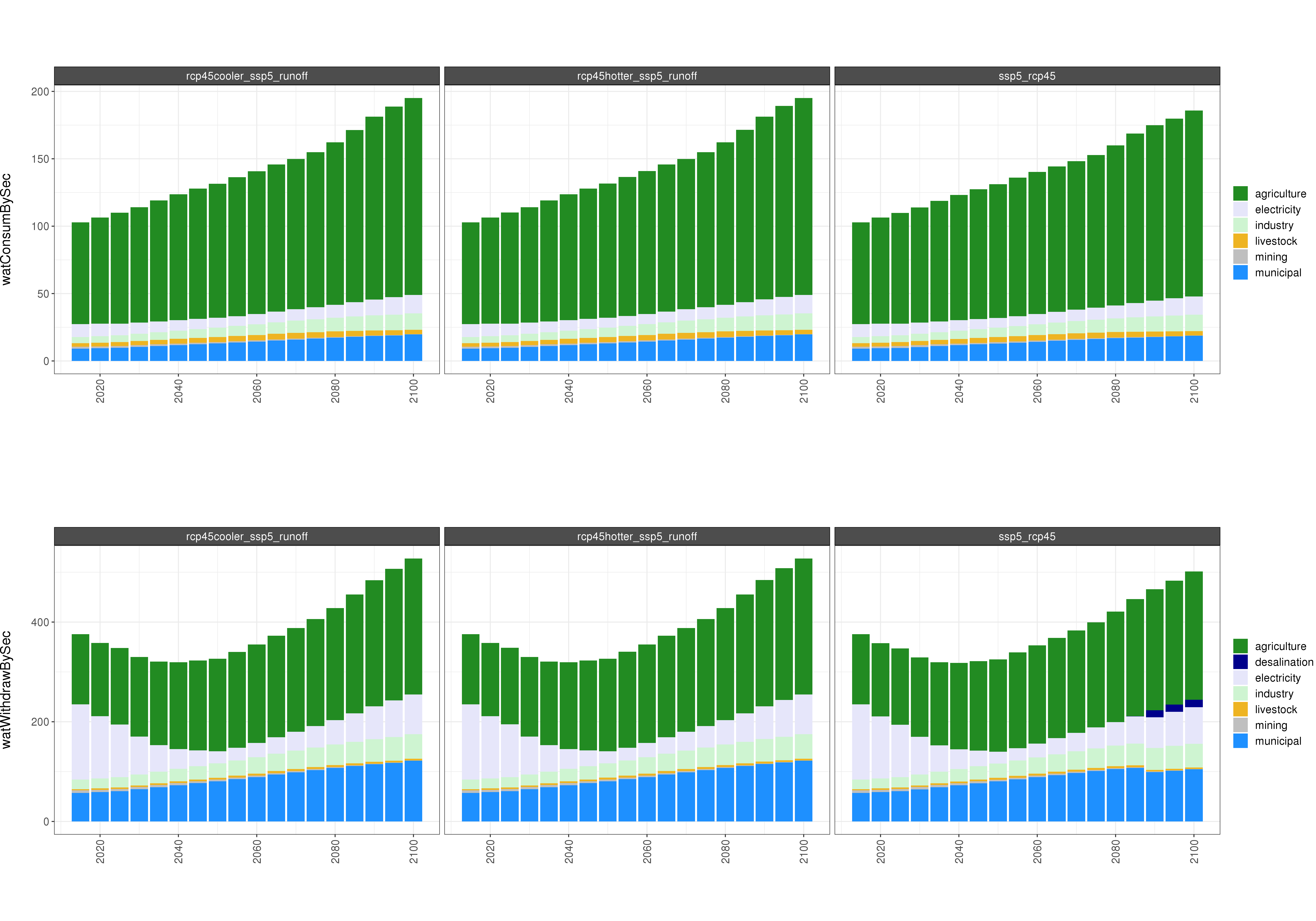
Absolute GCAM water outputs
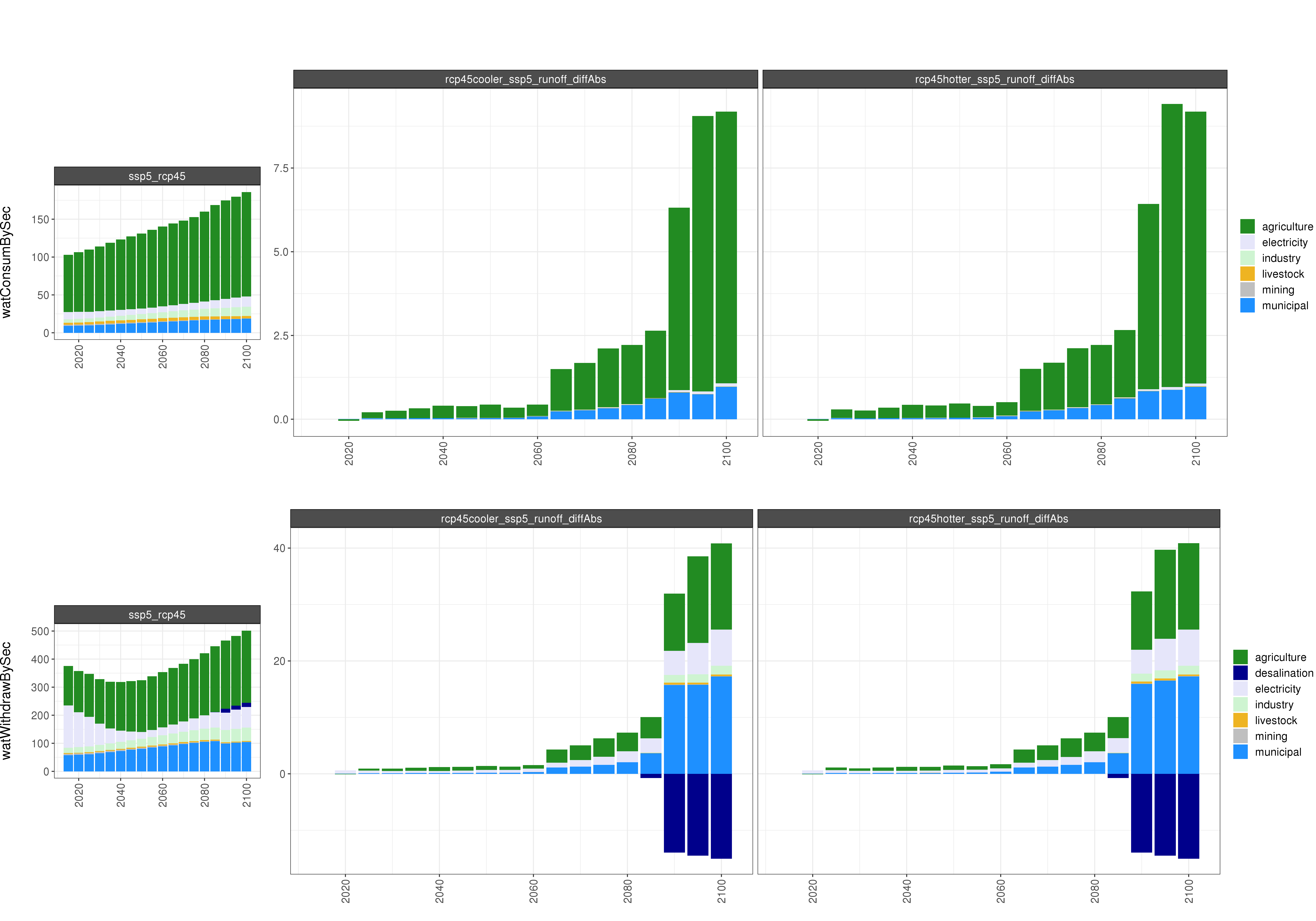
Comparison of GCAM water outputs
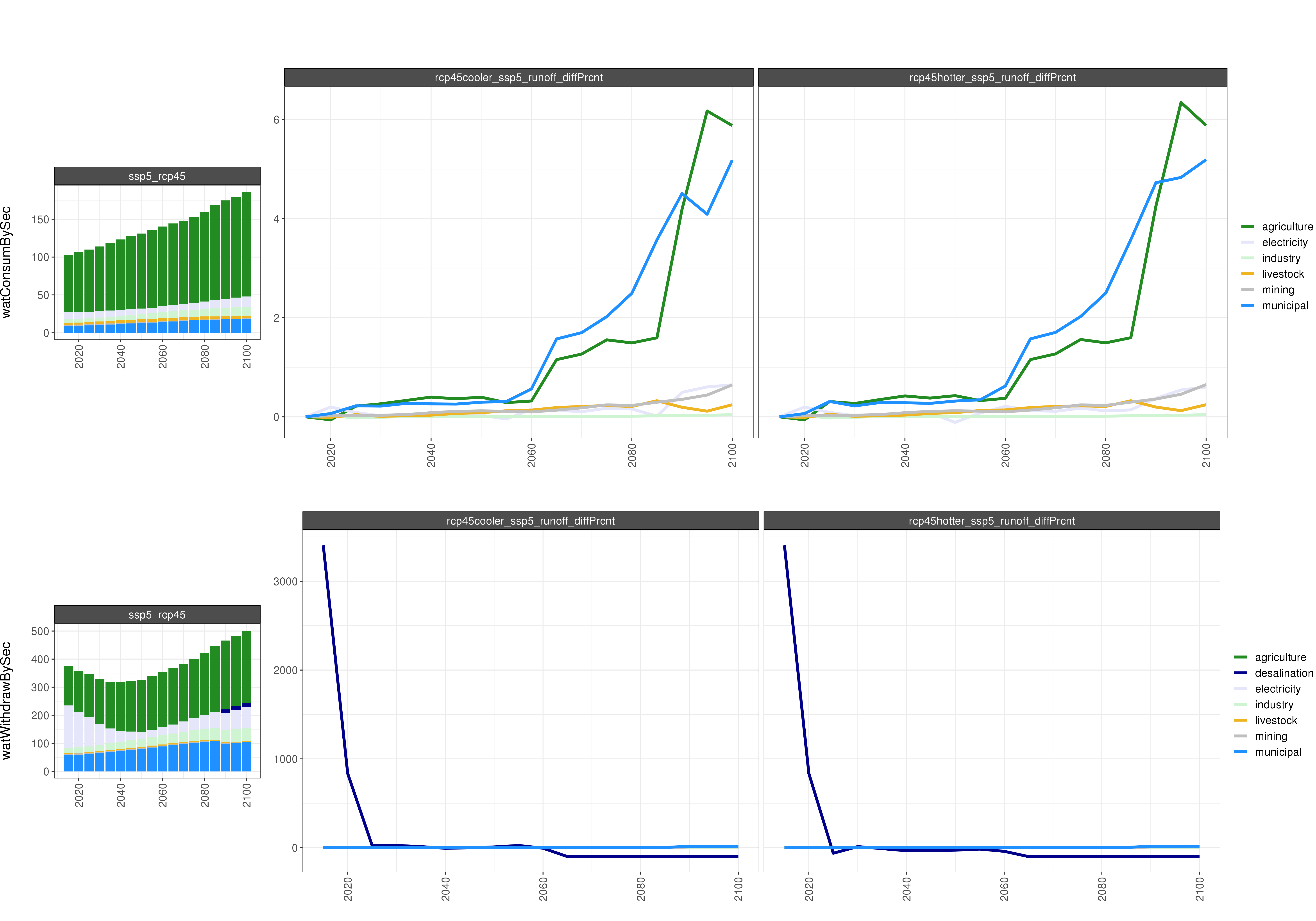
Comparison of GCAM water outputs % Diff
RCP8.5
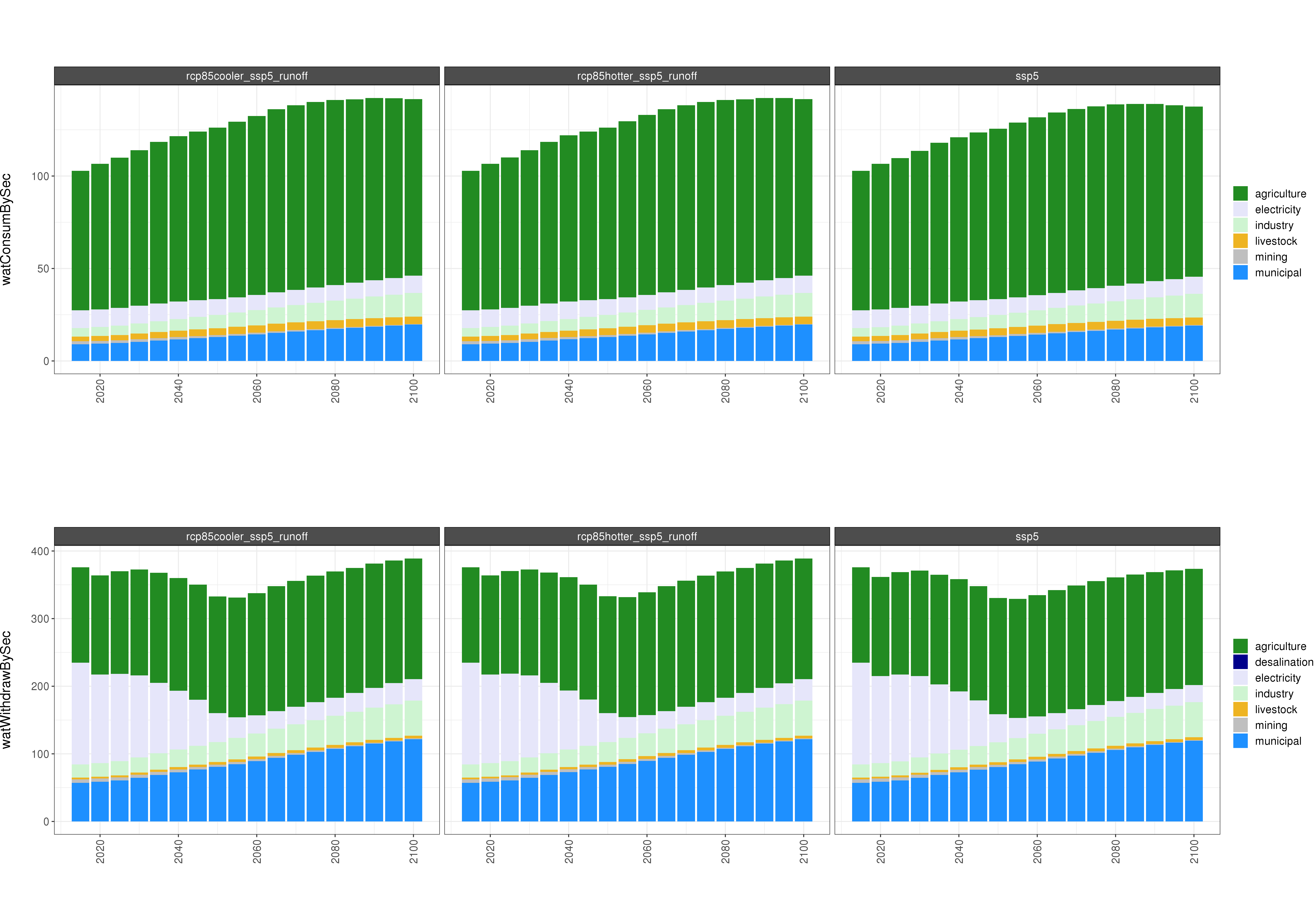
Absolute GCAM water outputs
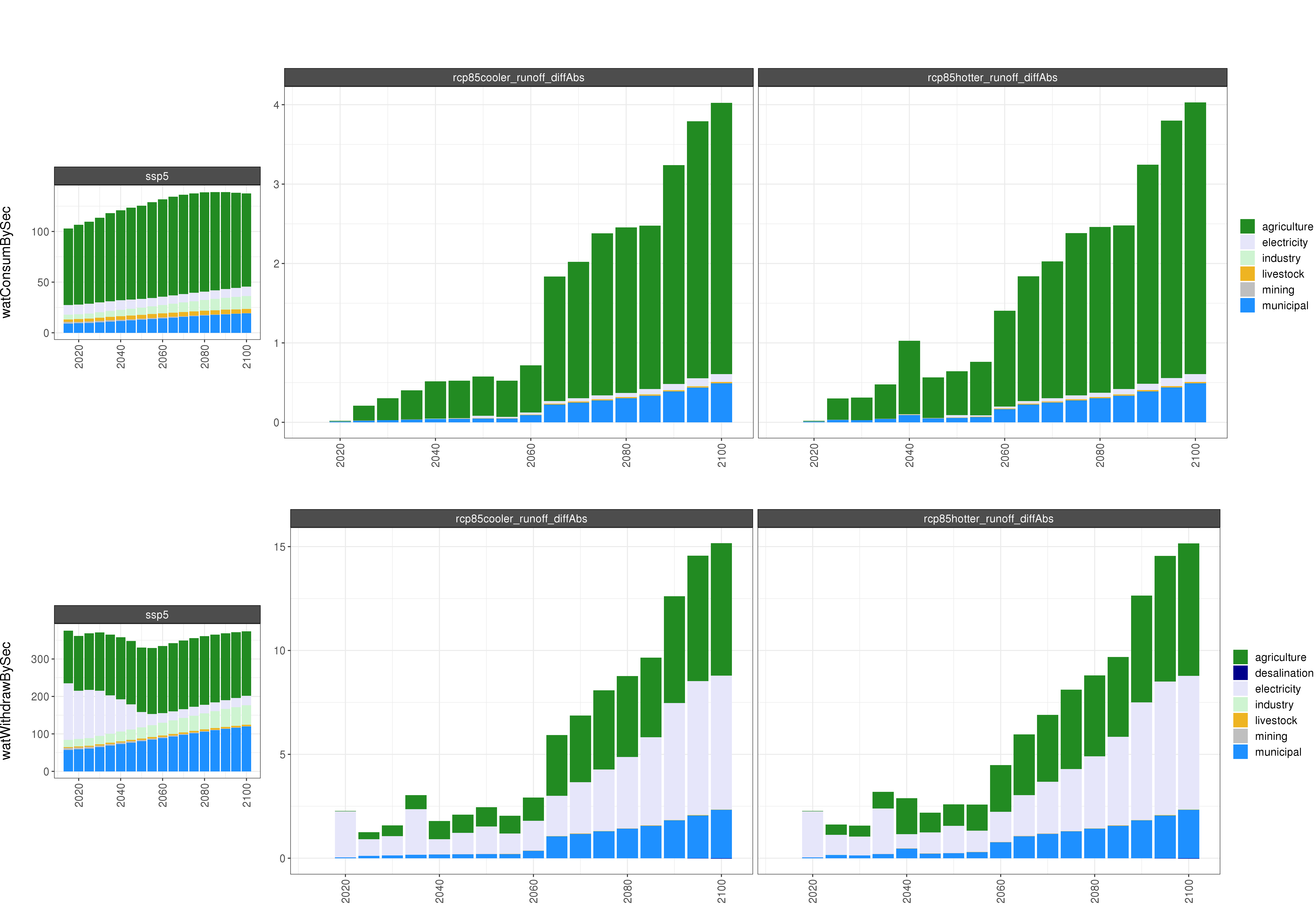
Comparison of GCAM water outputs
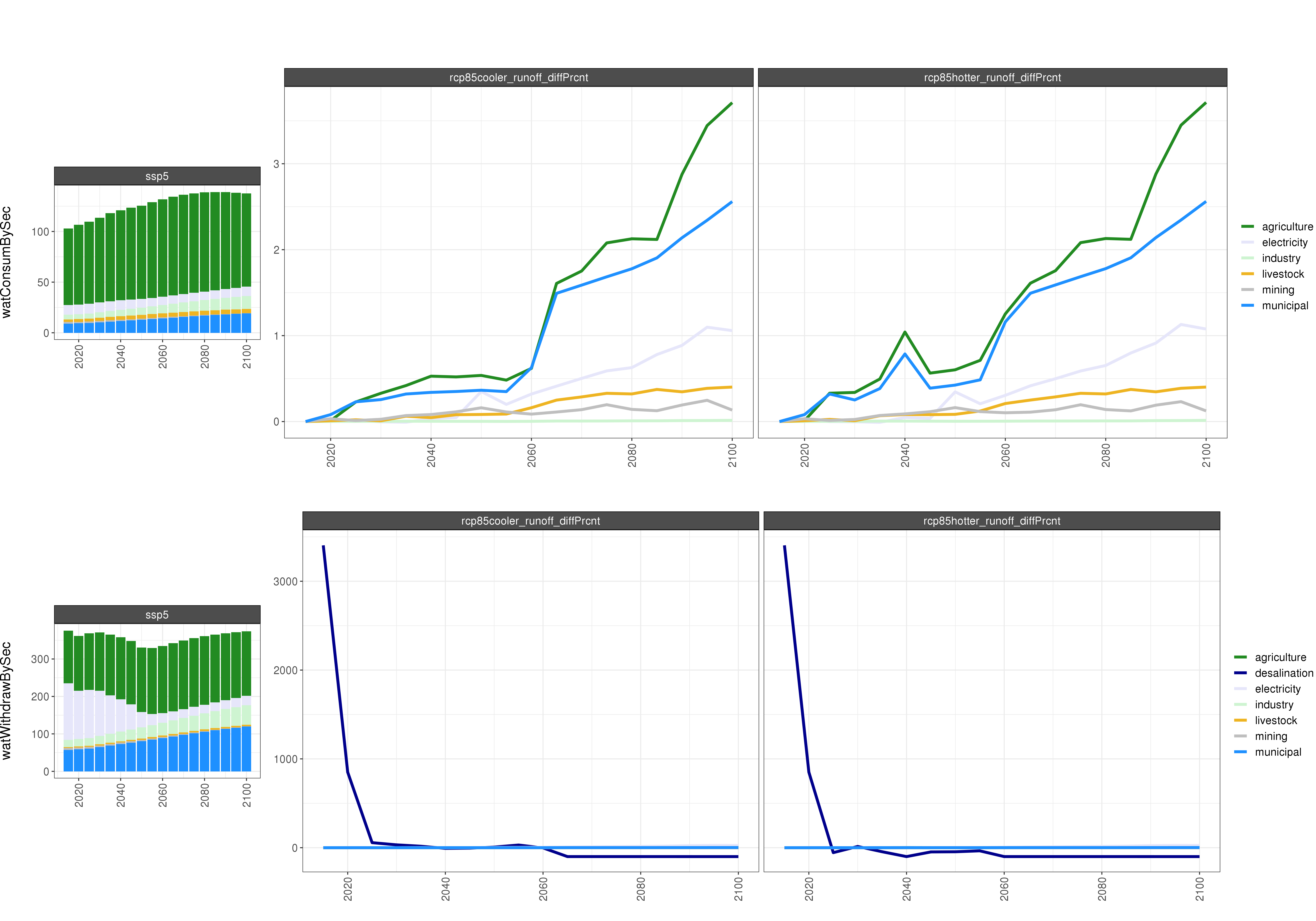
Comparison of GCAM water outputs % Diff
Energy
RCP4.5
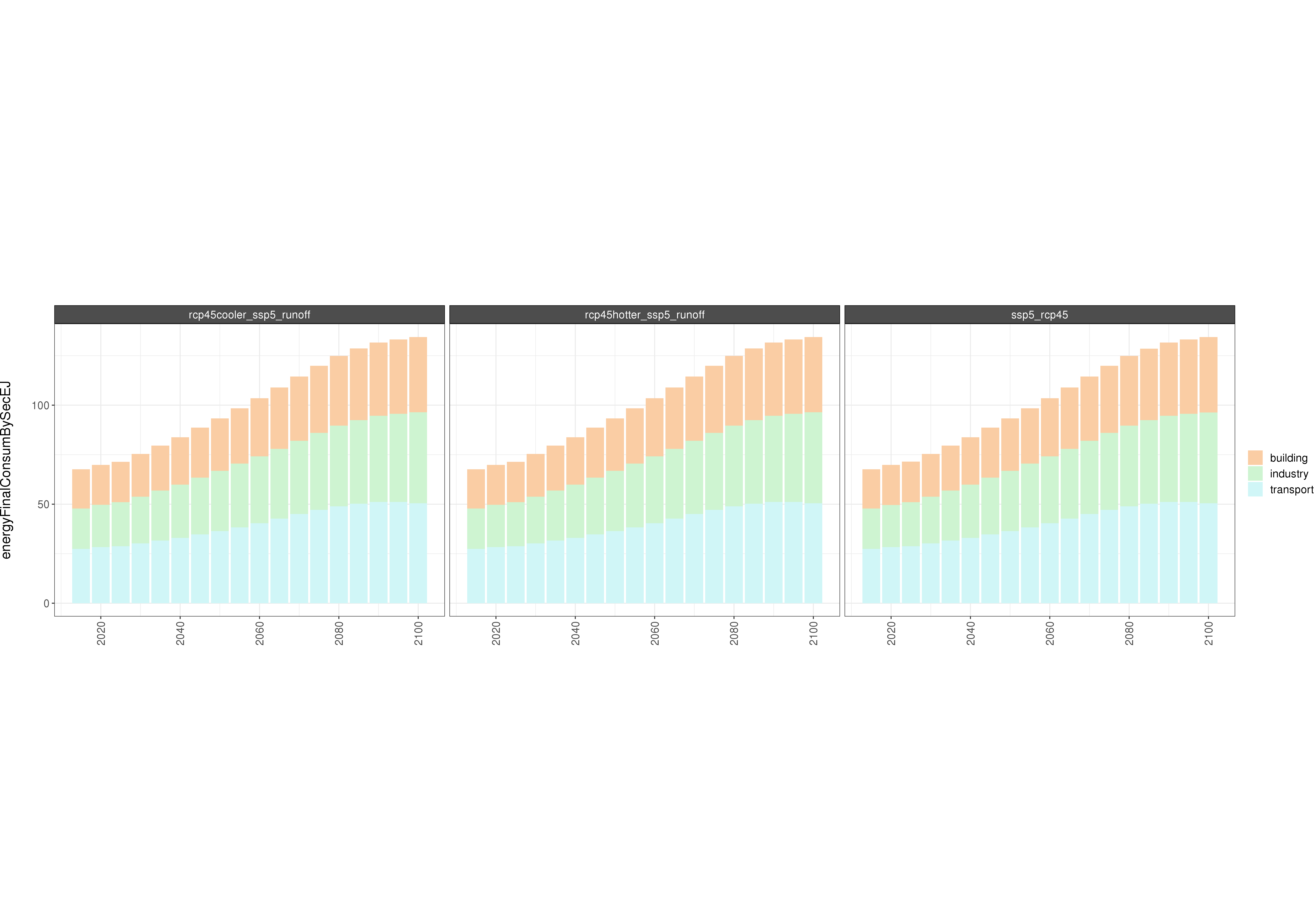
Absolute GCAM energy outputs
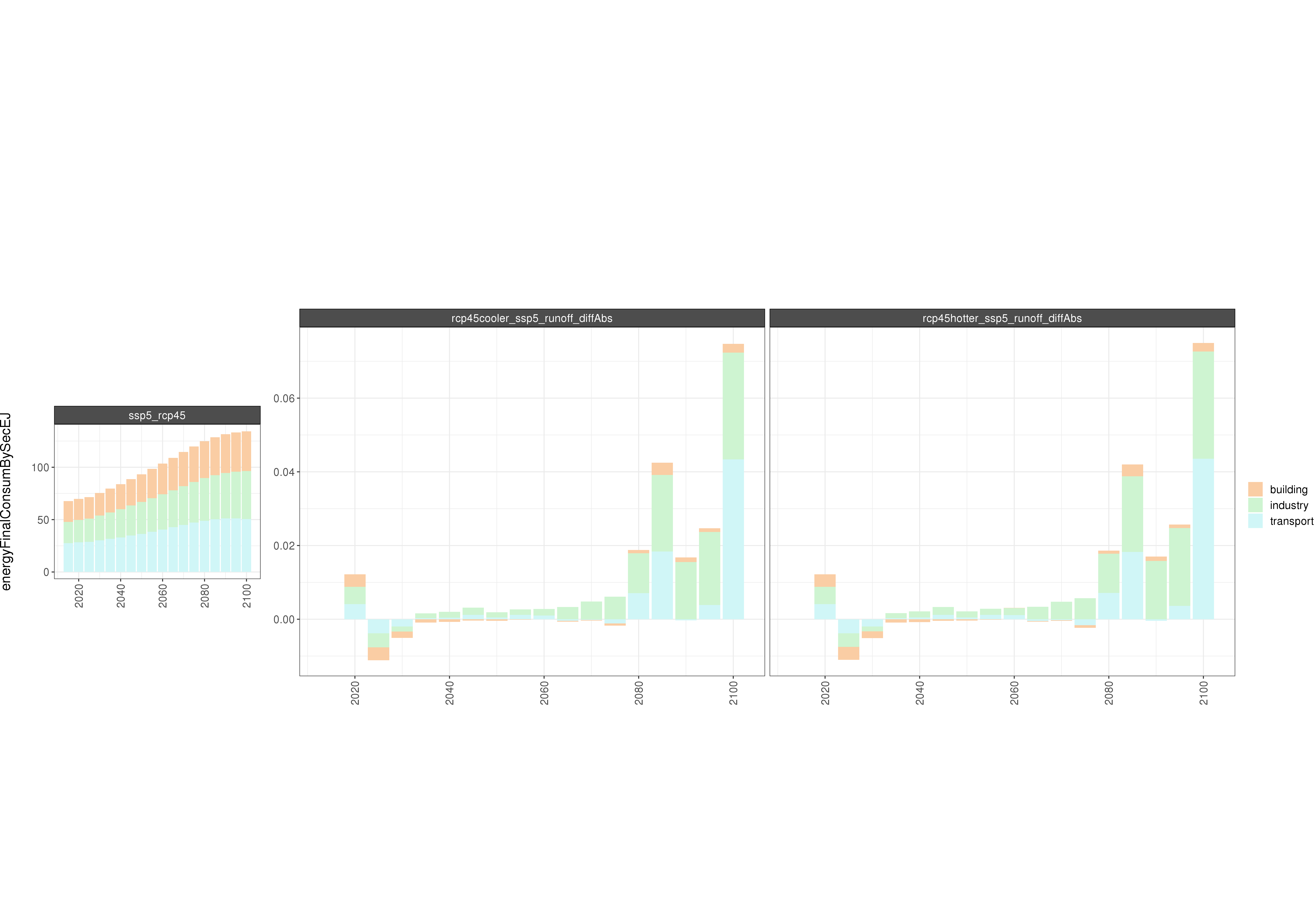
Comparison of GCAM energy outputs
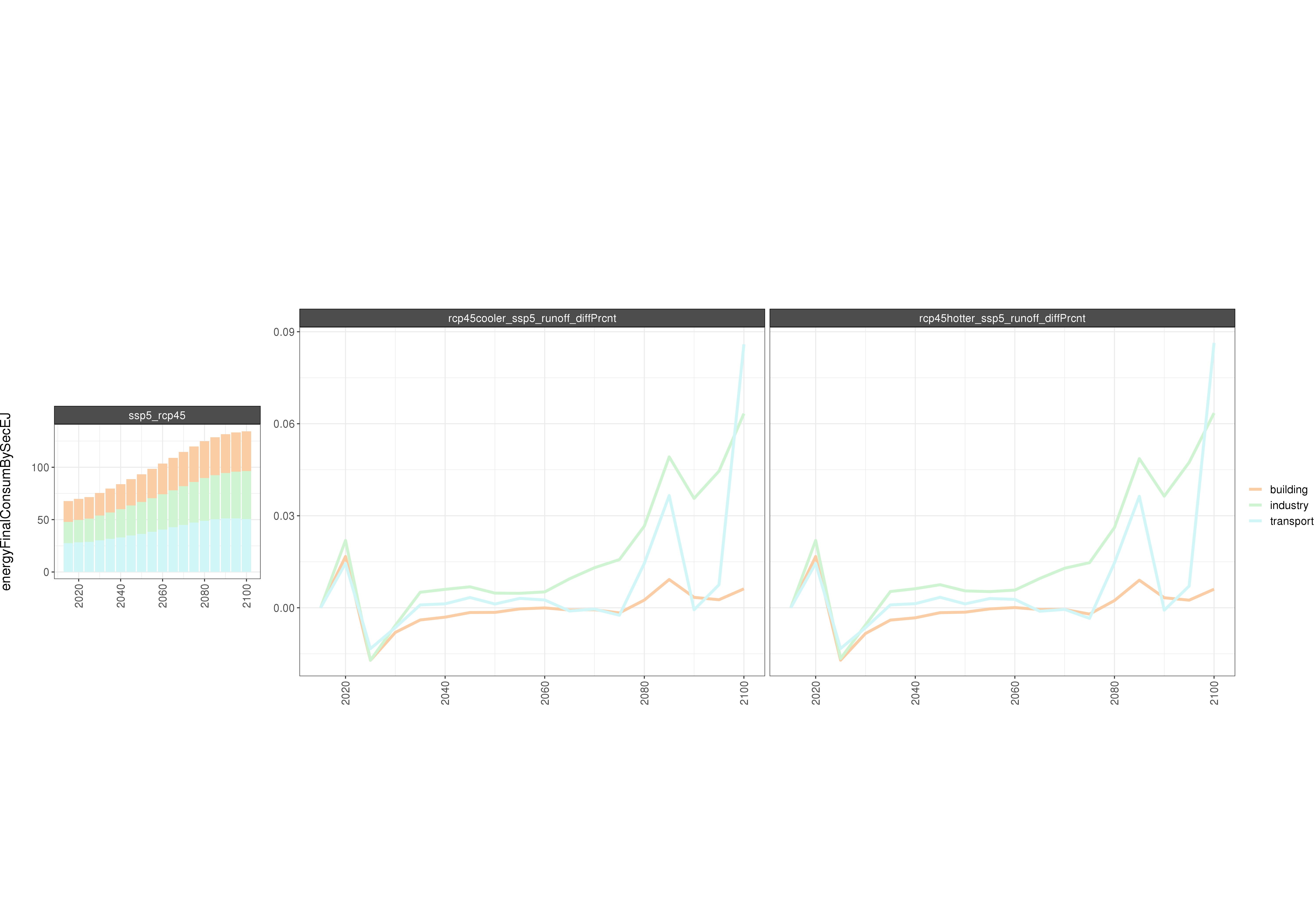
Comparison of GCAM energy outputs % Diff
RCP8.5
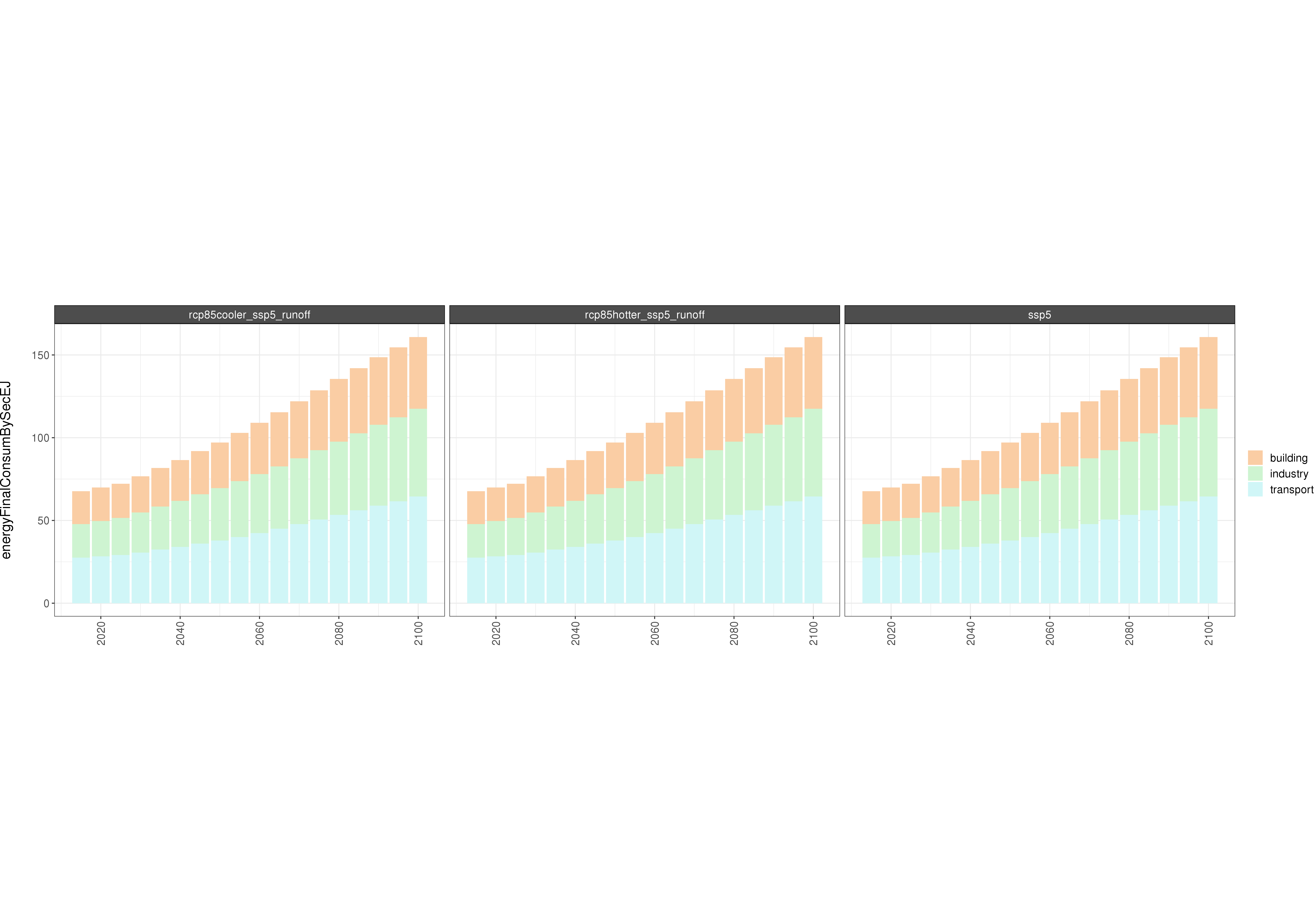
Absolute GCAM energy outputs
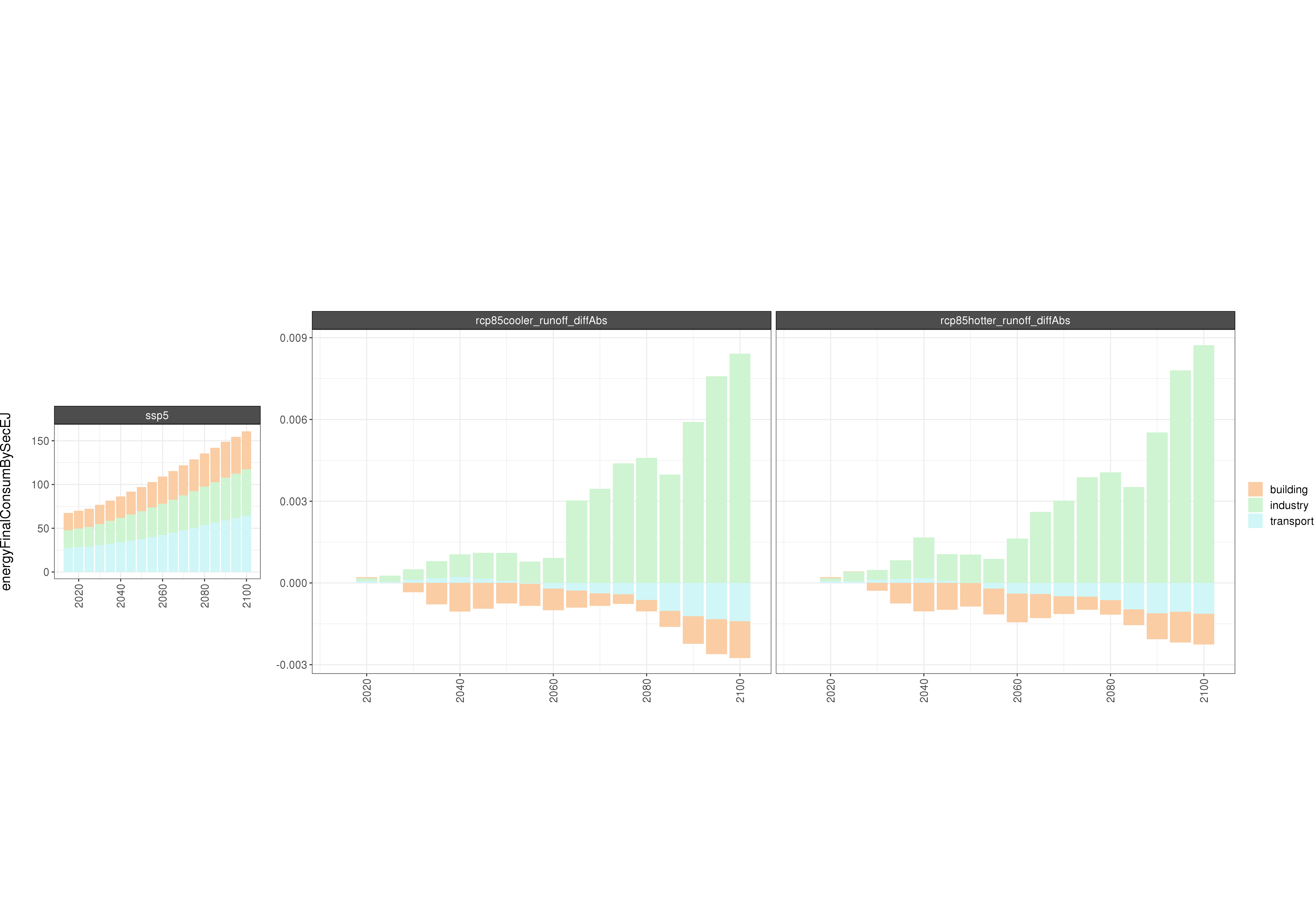
Comparison of GCAM energy outputs
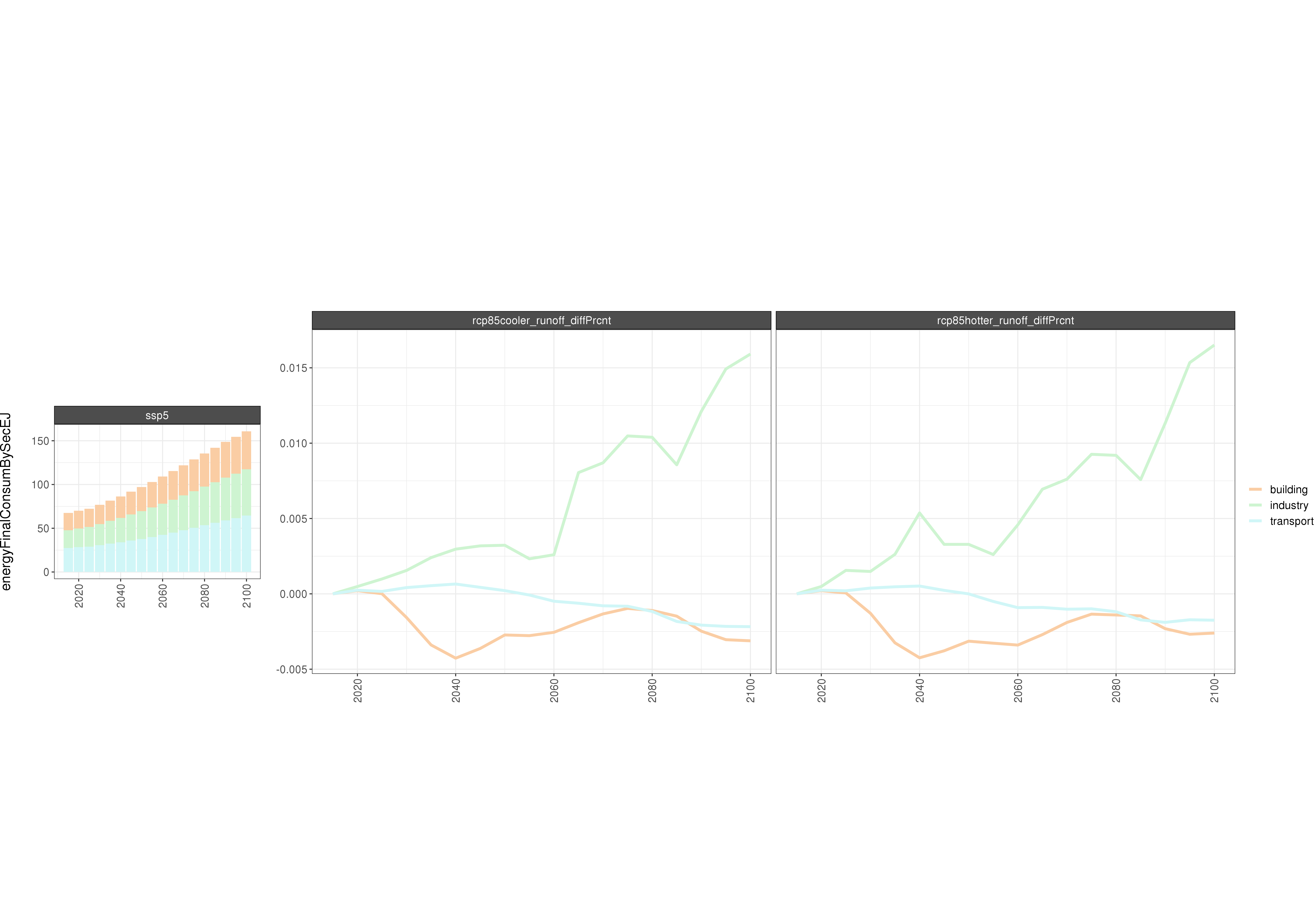
Comparison of GCAM energy outputs % Diff
Electricity
RCP4.5
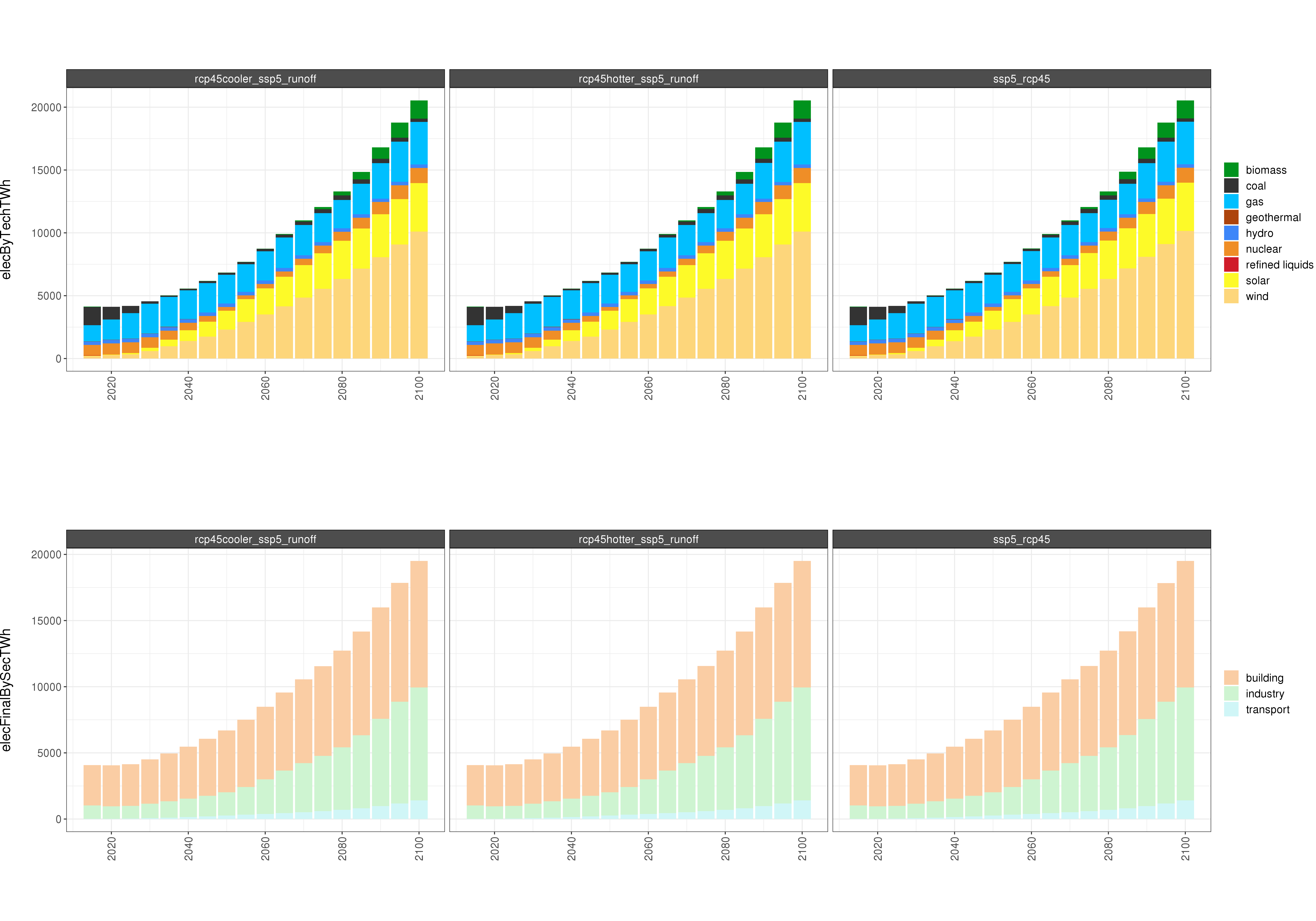
Absolute GCAM electricity outputs
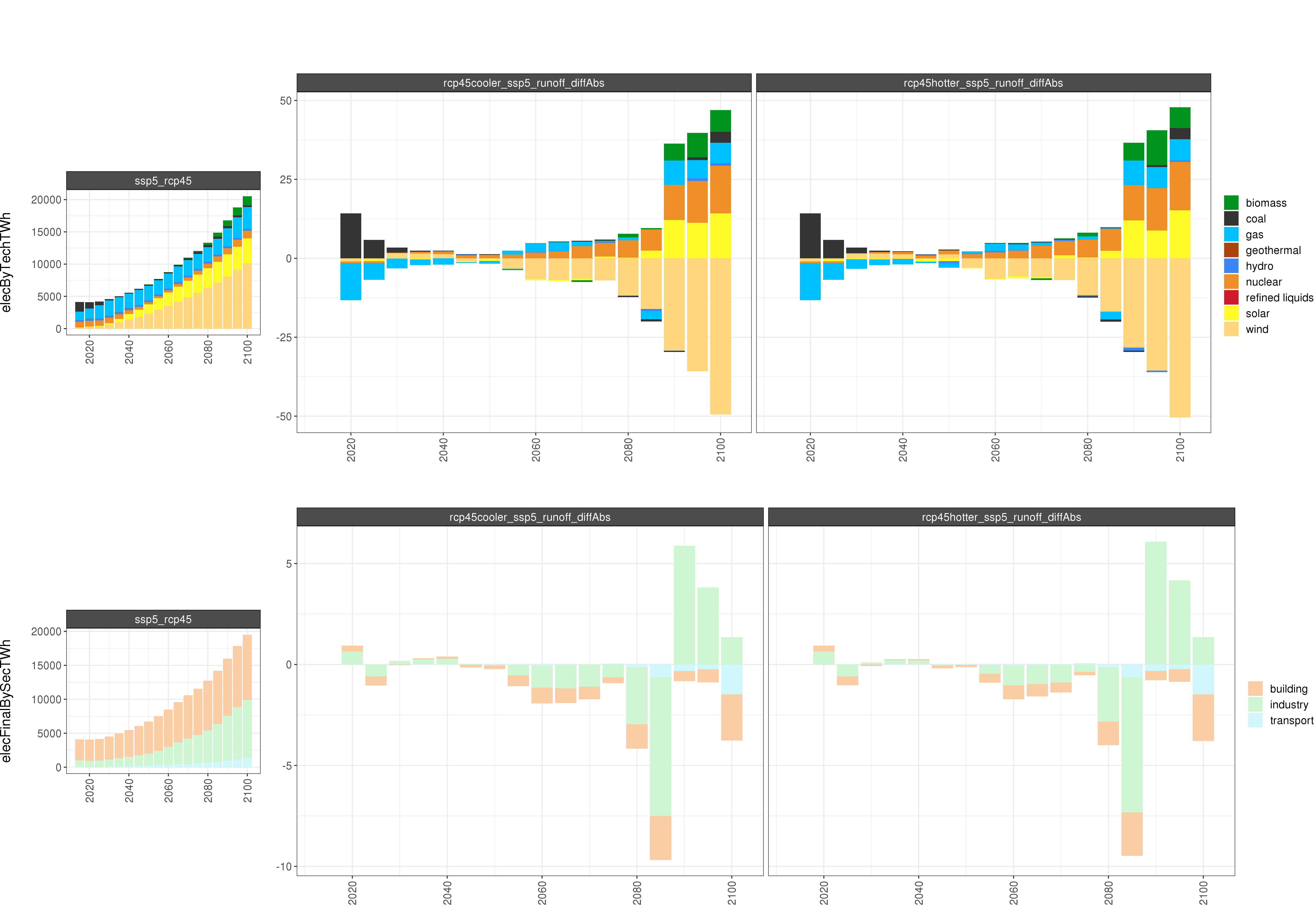
Comparison of GCAM electricity outputs
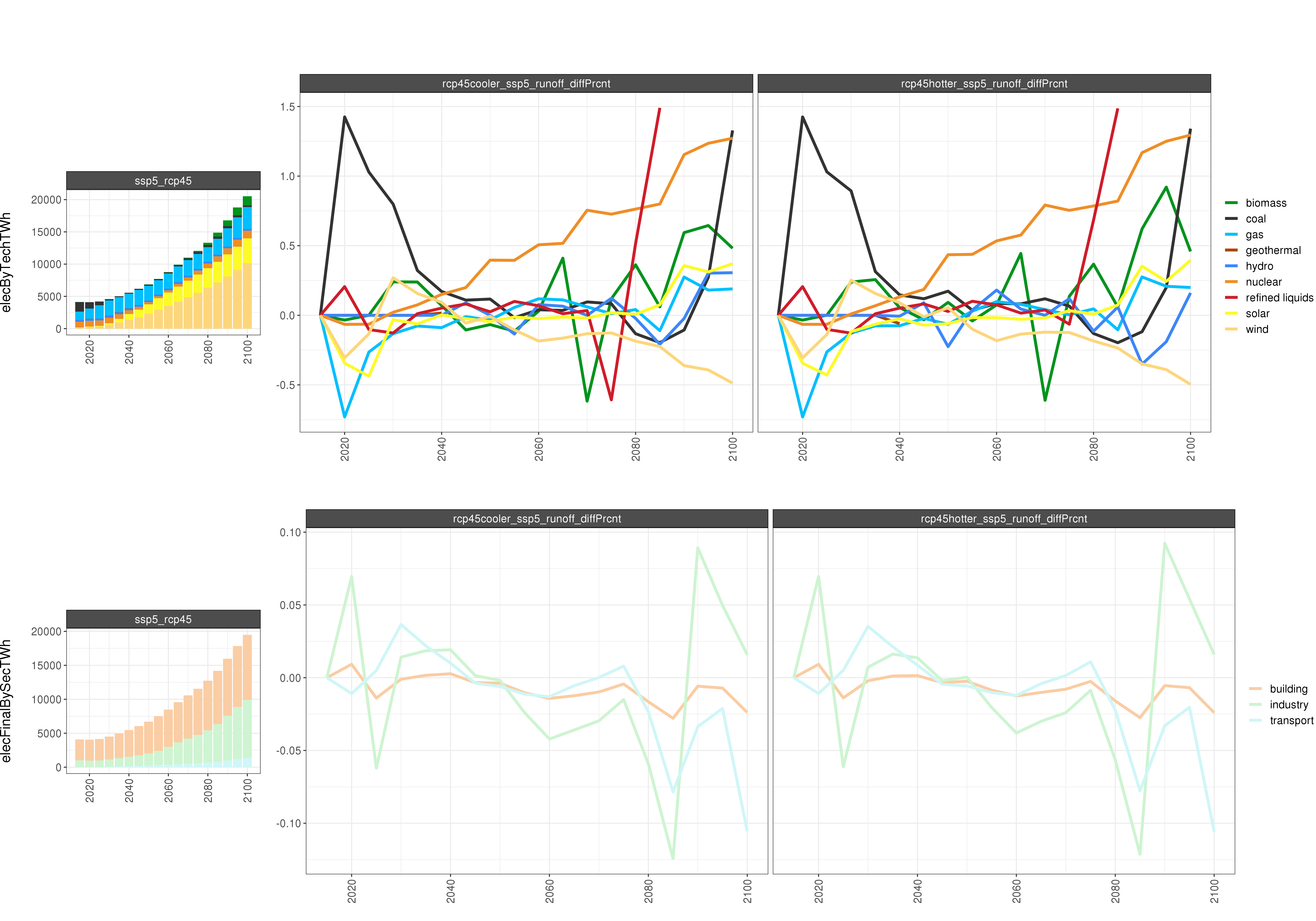
Comparison of GCAM electricity outputs % Diff
RCP8.5
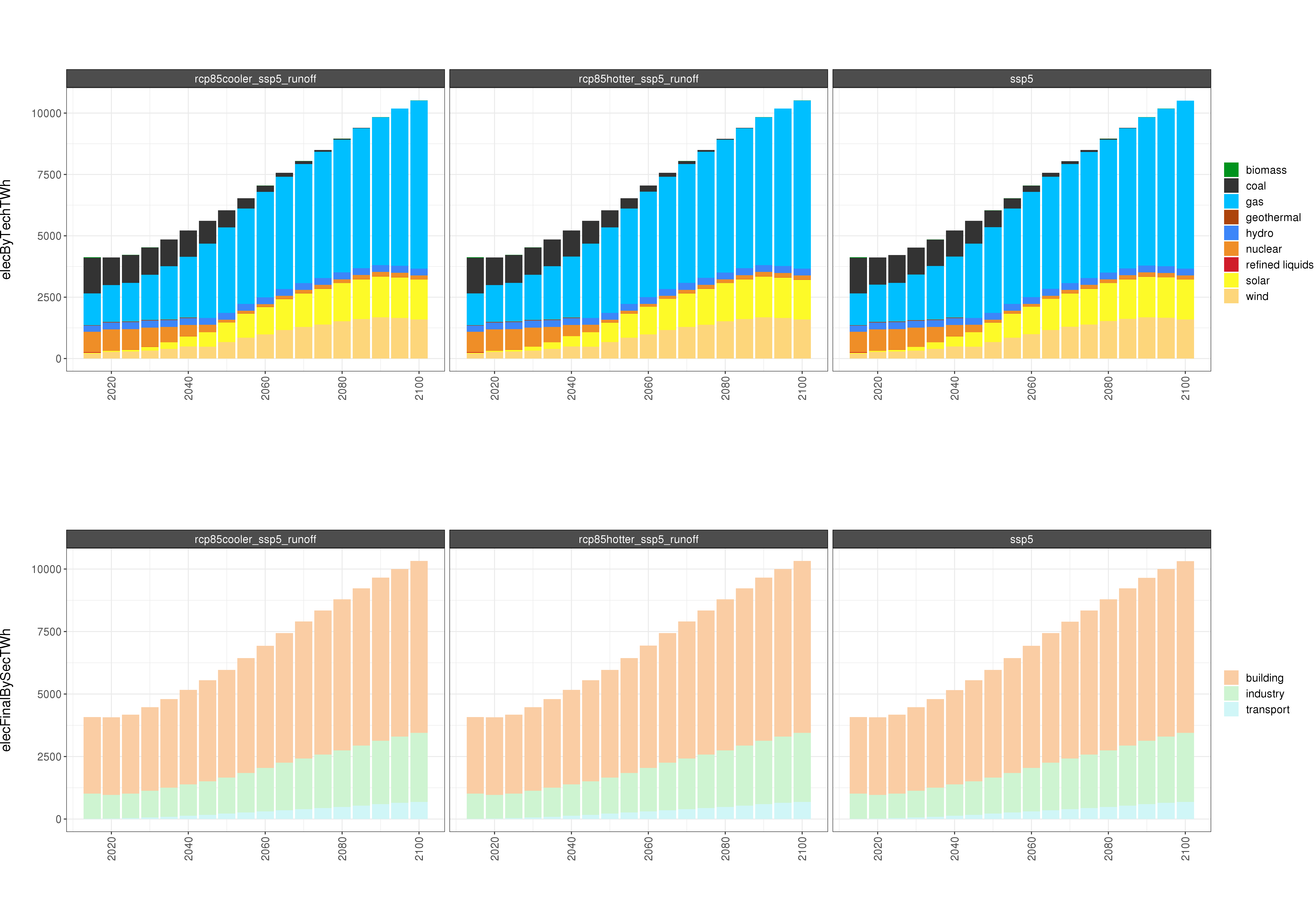
Absolute GCAM electricity outputs
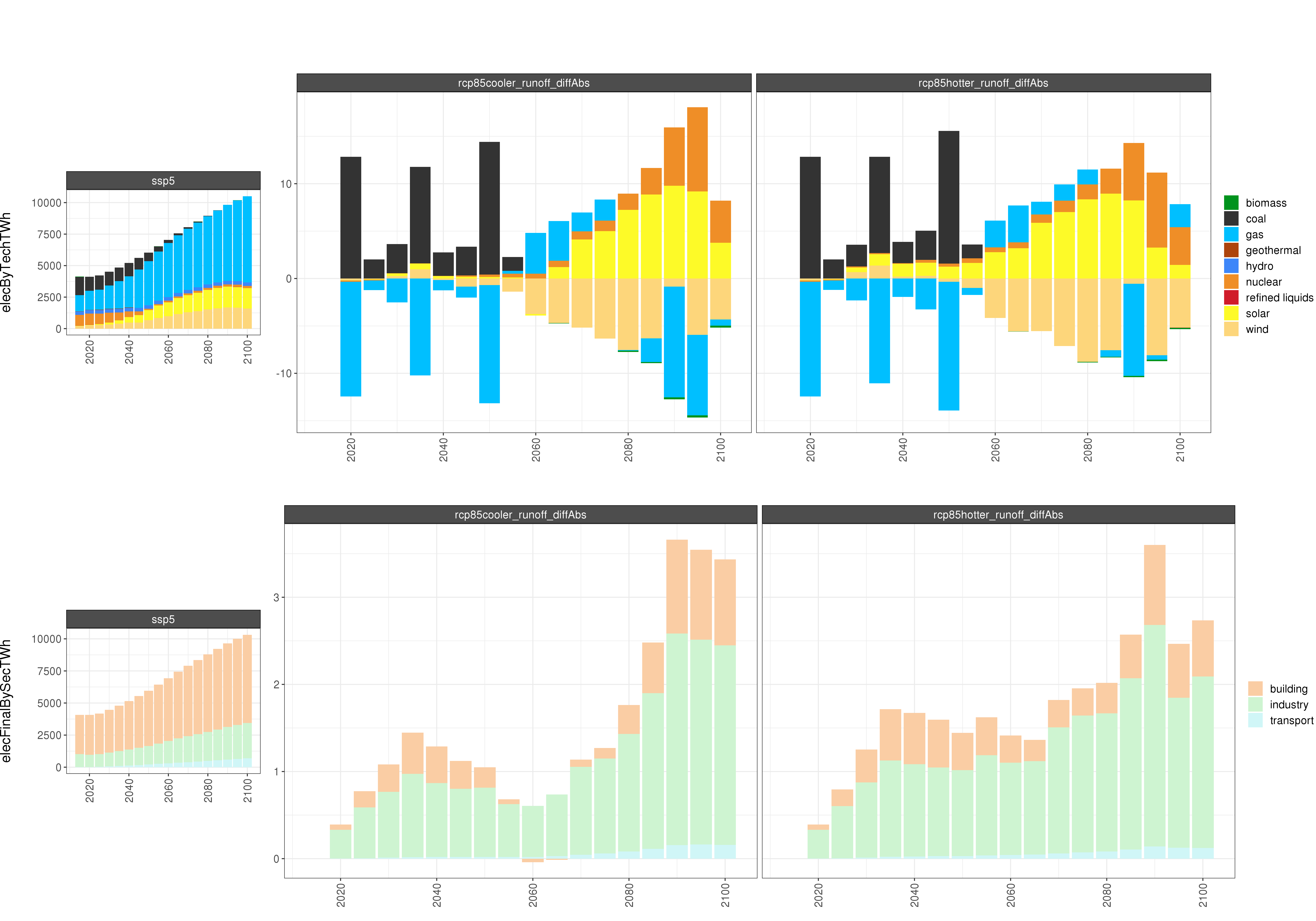
Comparison of GCAM electricity outputs
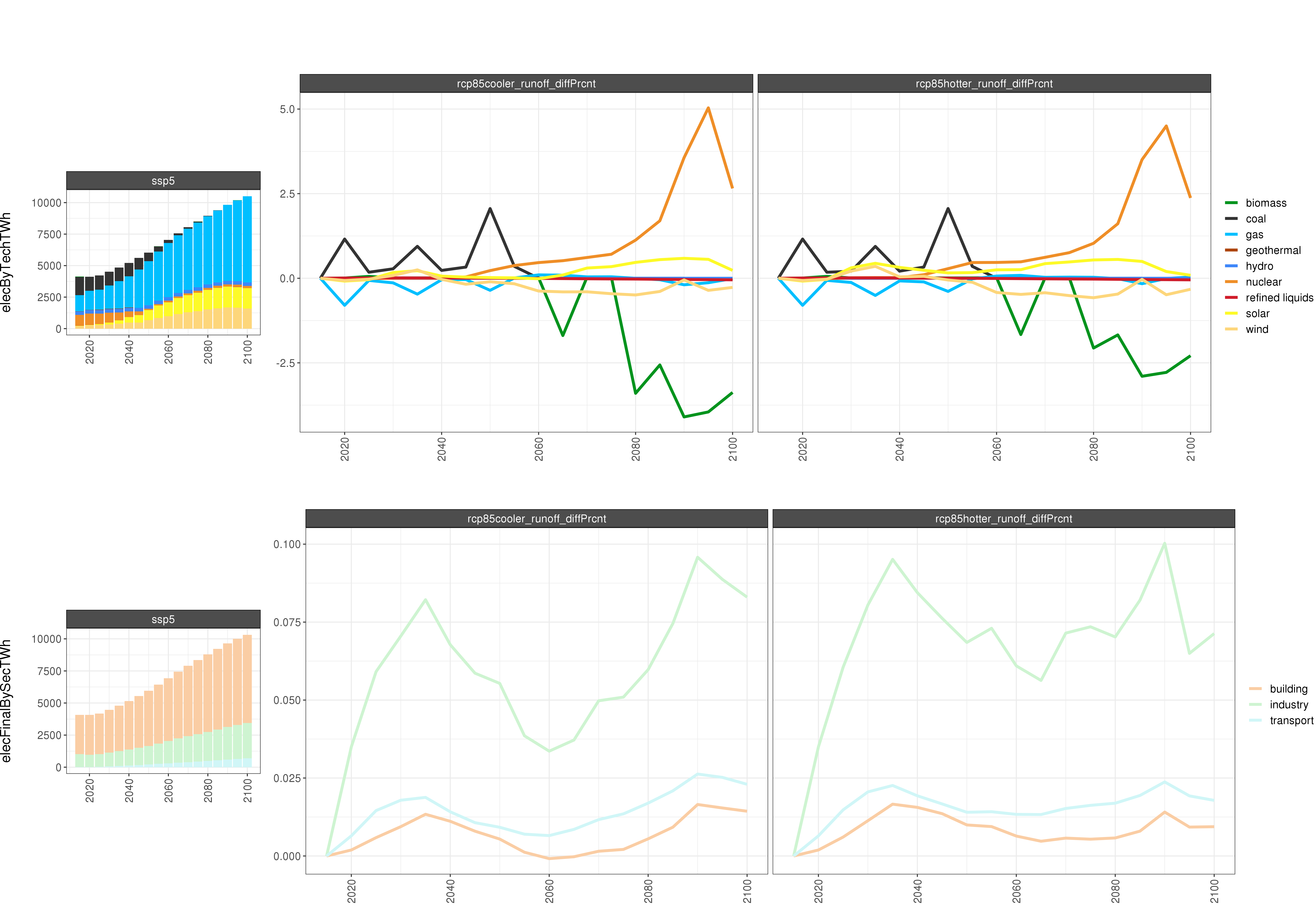
Comparison of GCAM electricity outputs % Diff
AGLU
RCP4.5
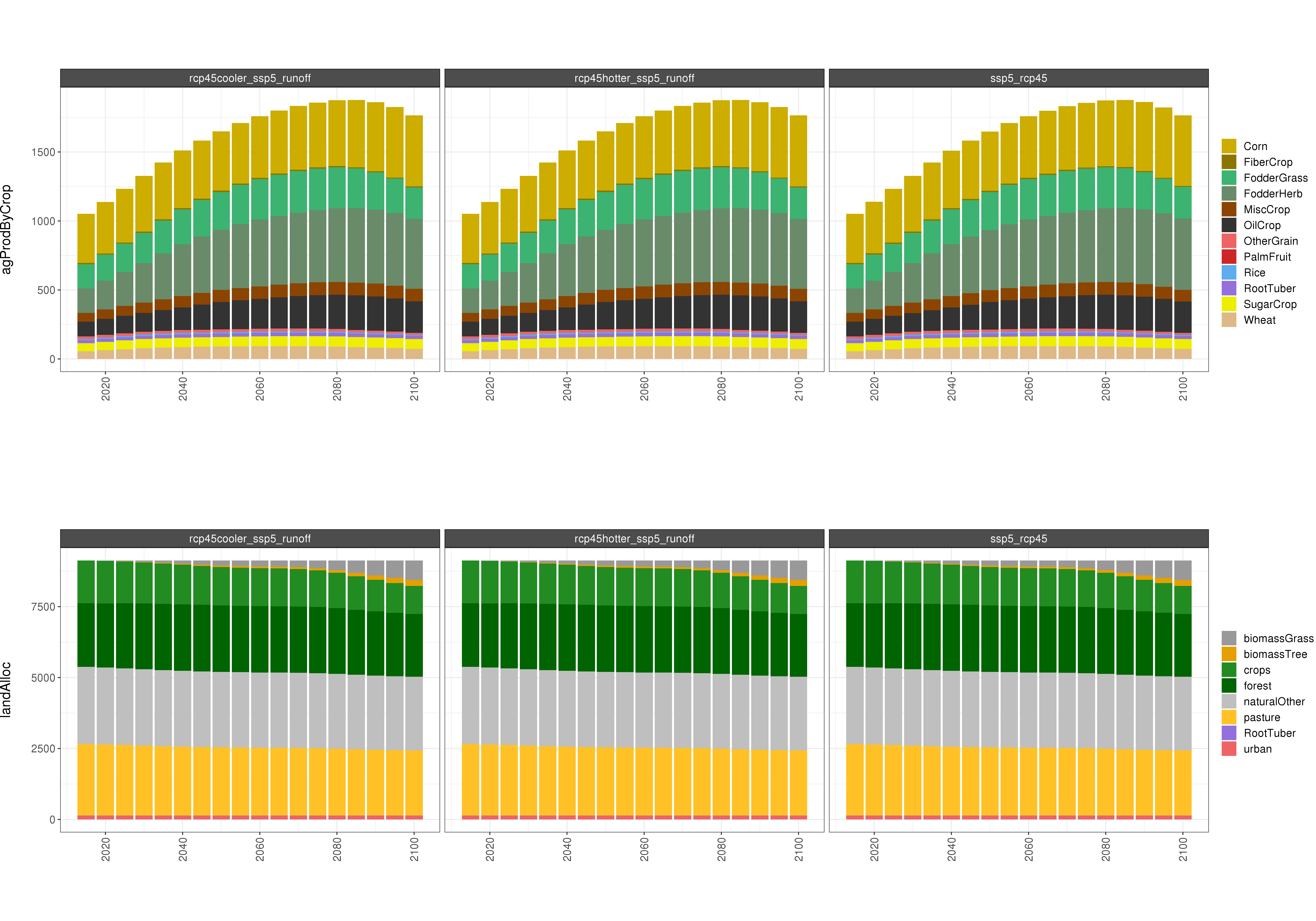
Absolute GCAM AGLU outputs
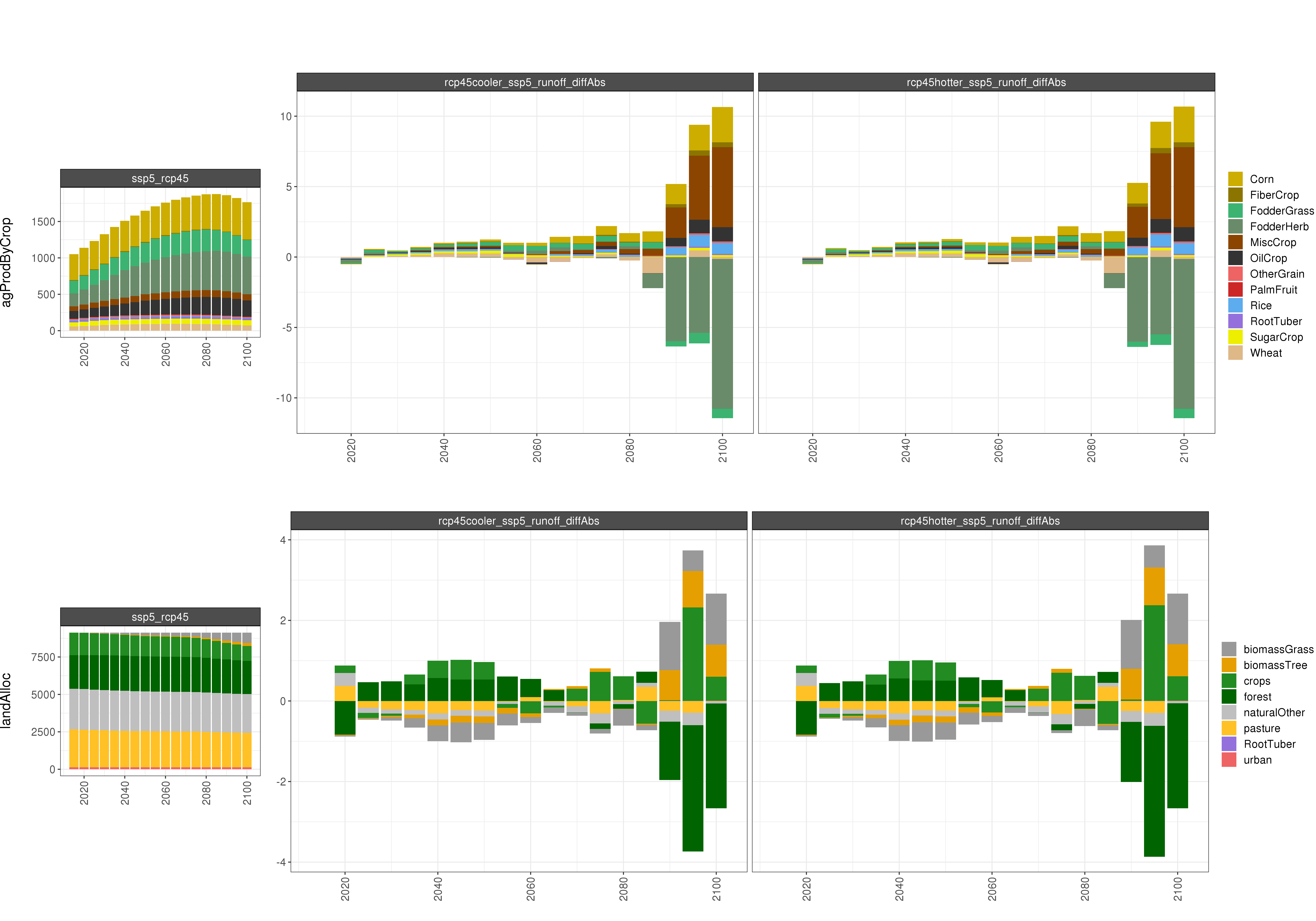
Comparison of GCAM AGLU outputs - absolute difference
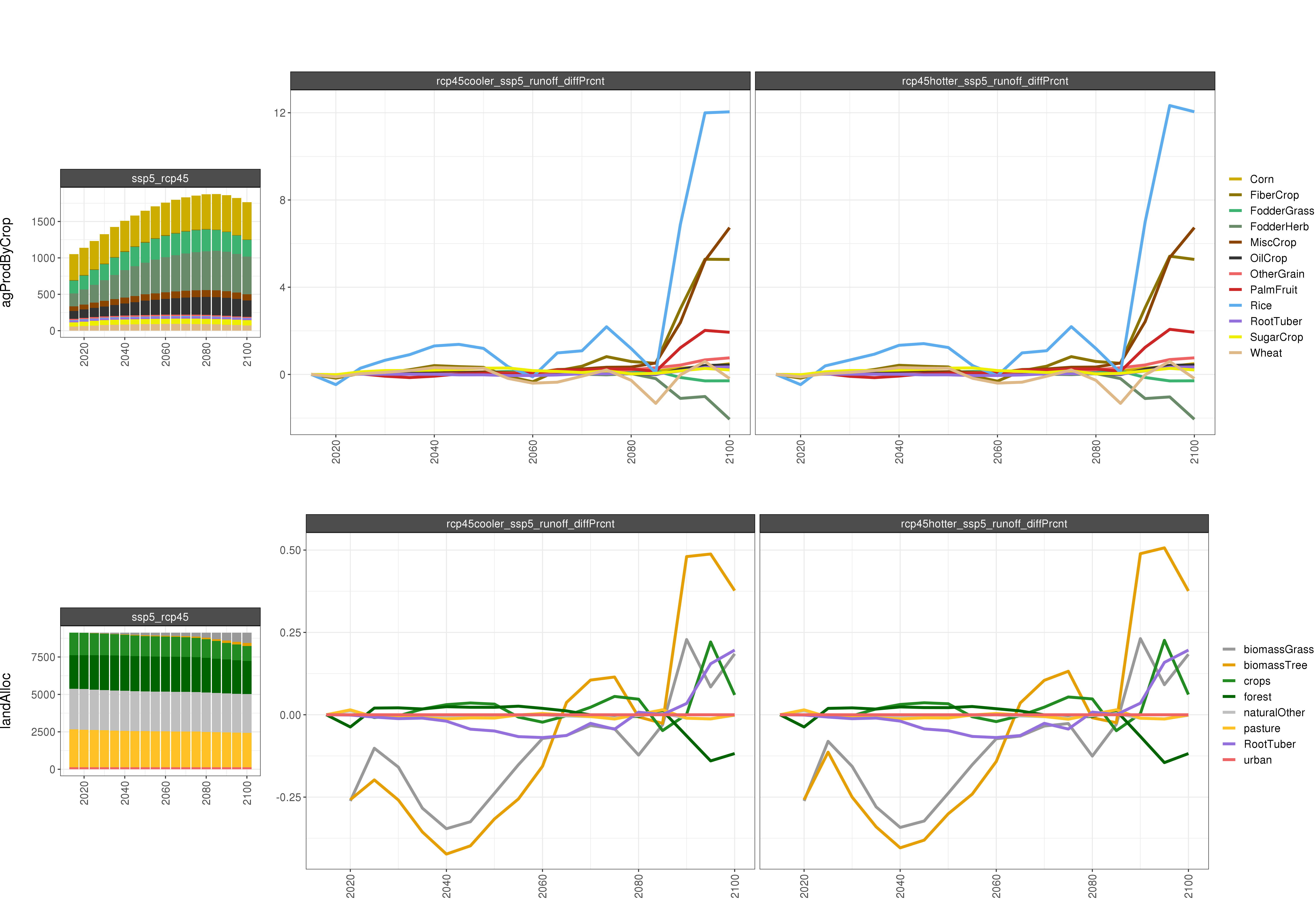
Comparison of GCAM AGLU outputs - percent difference
RCP8.5
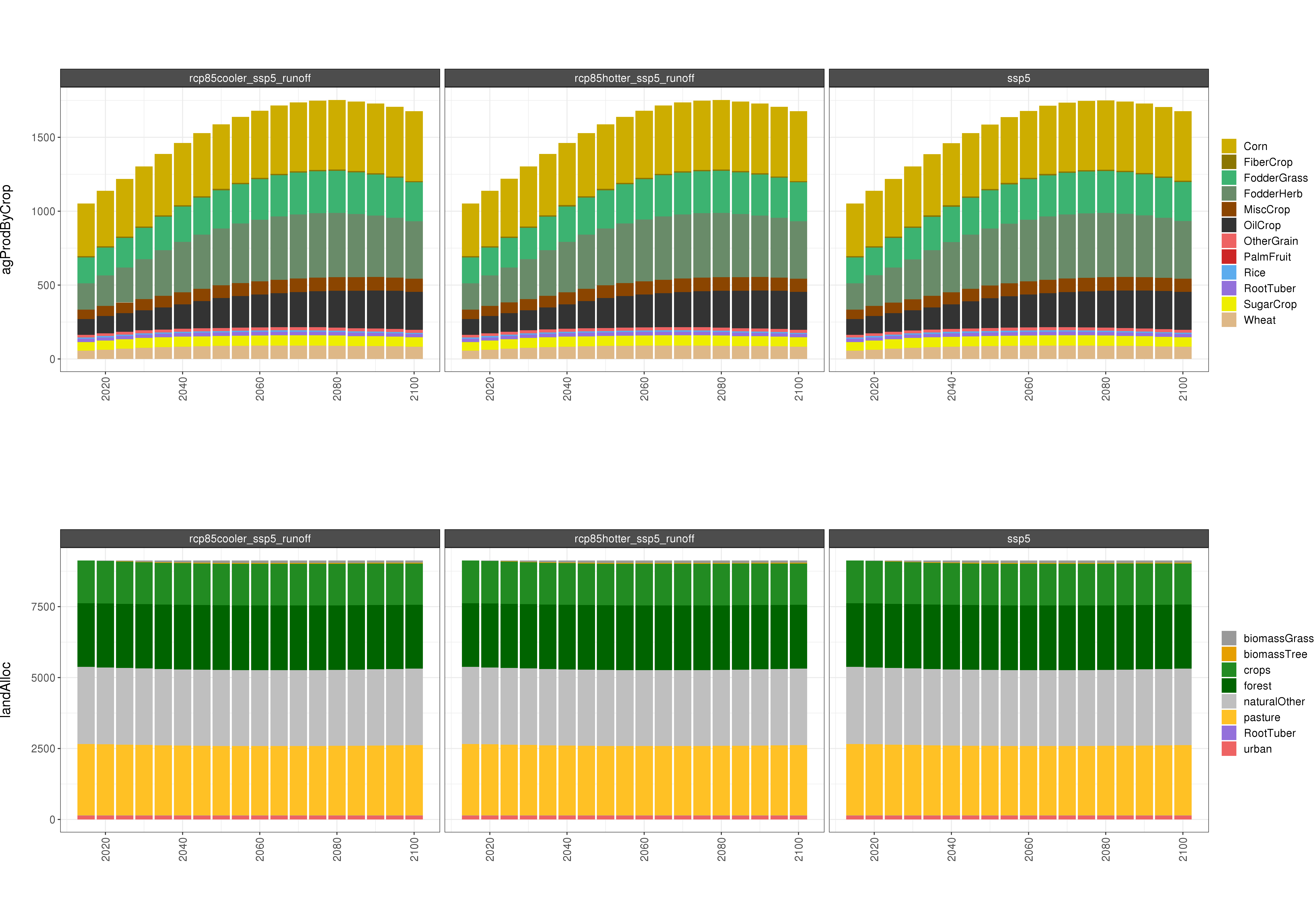
Absolute GCAM AGLU outputs
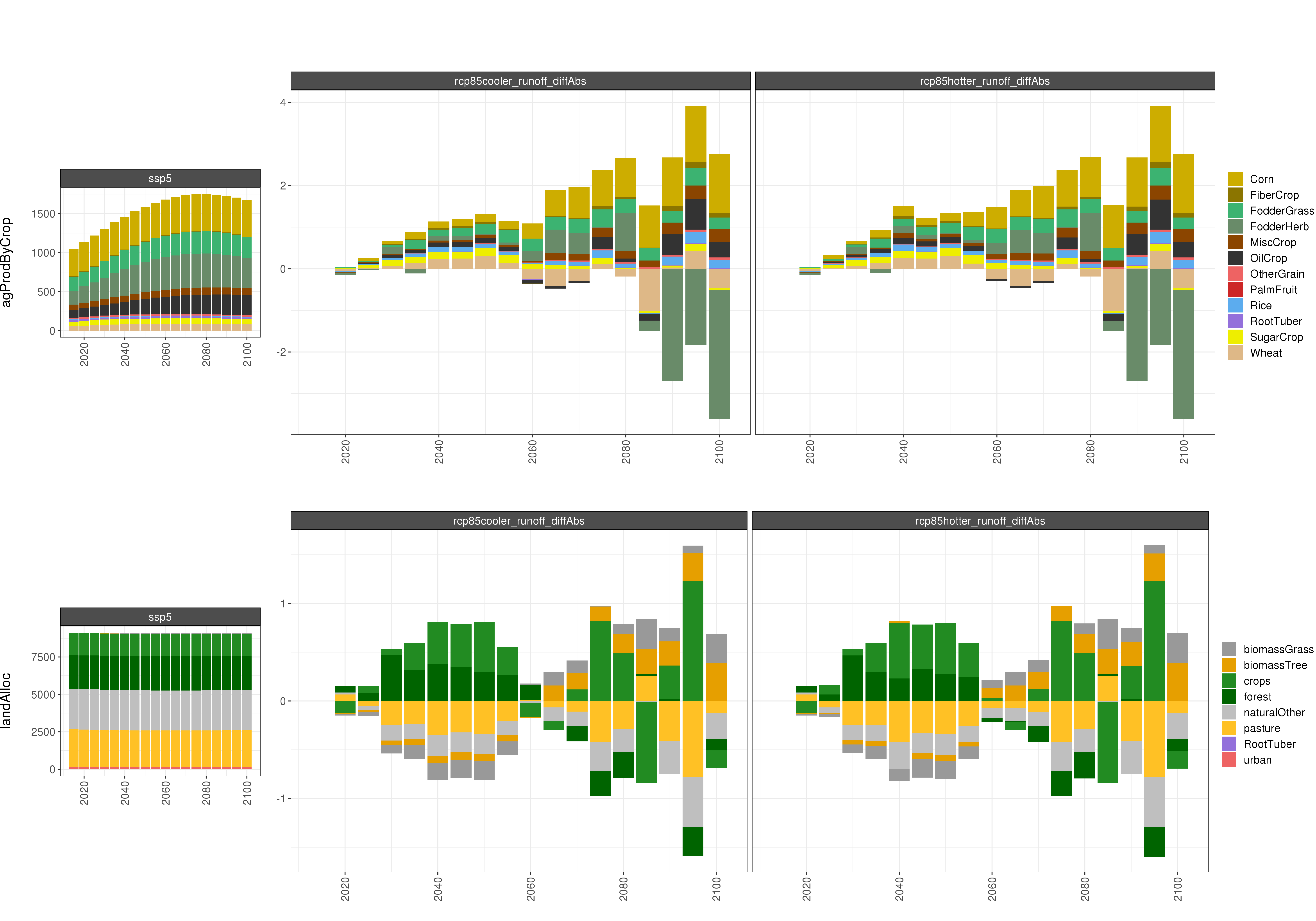
Comparison of GCAM AGLU outputs - absolute difference

Comparison of GCAM AGLU outputs - percent difference
Emissions
RCP4.5
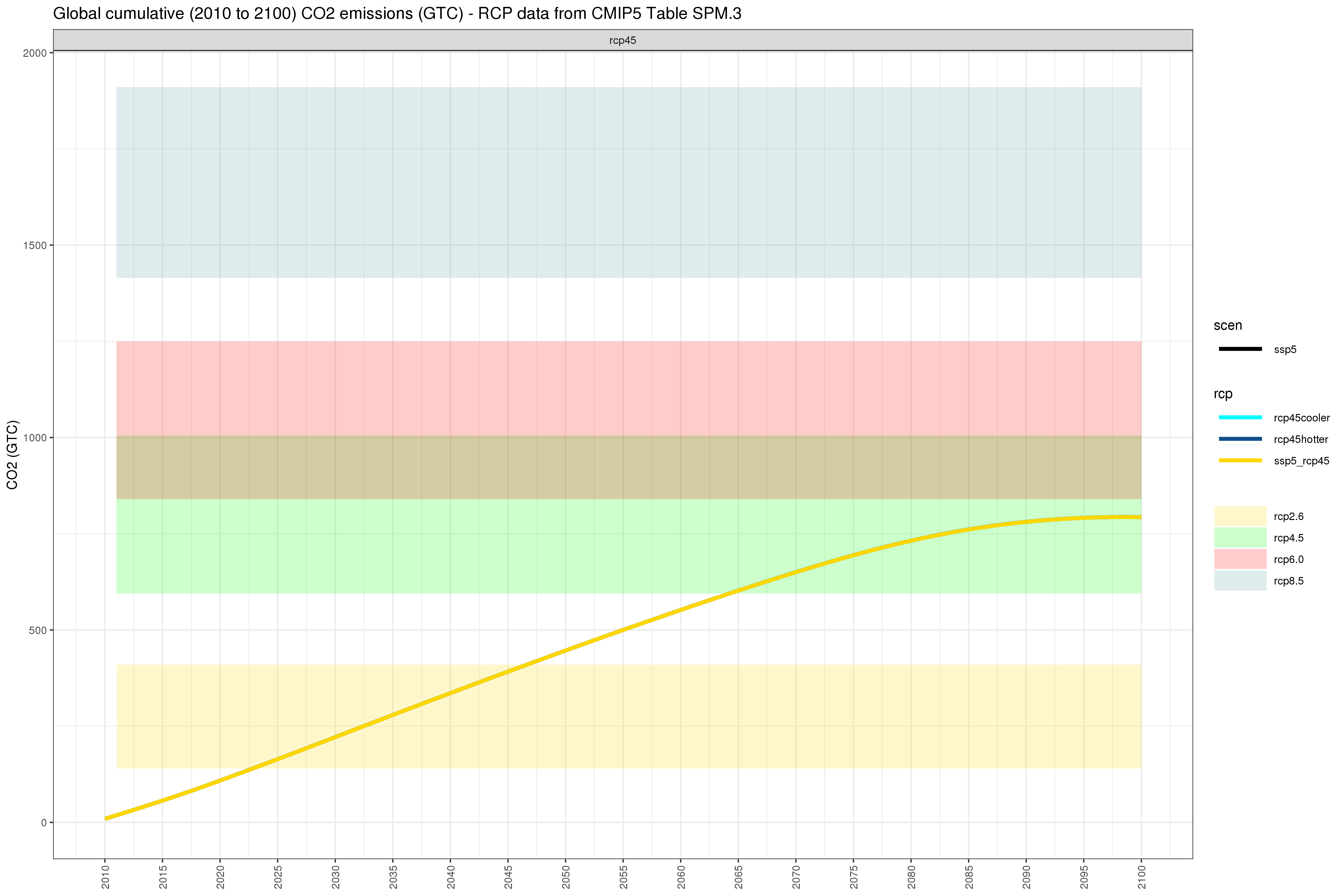
Cumulative global carbon emission pathways under different combinations of SSP3/SSP5 and RCP4.5/RCP8.5
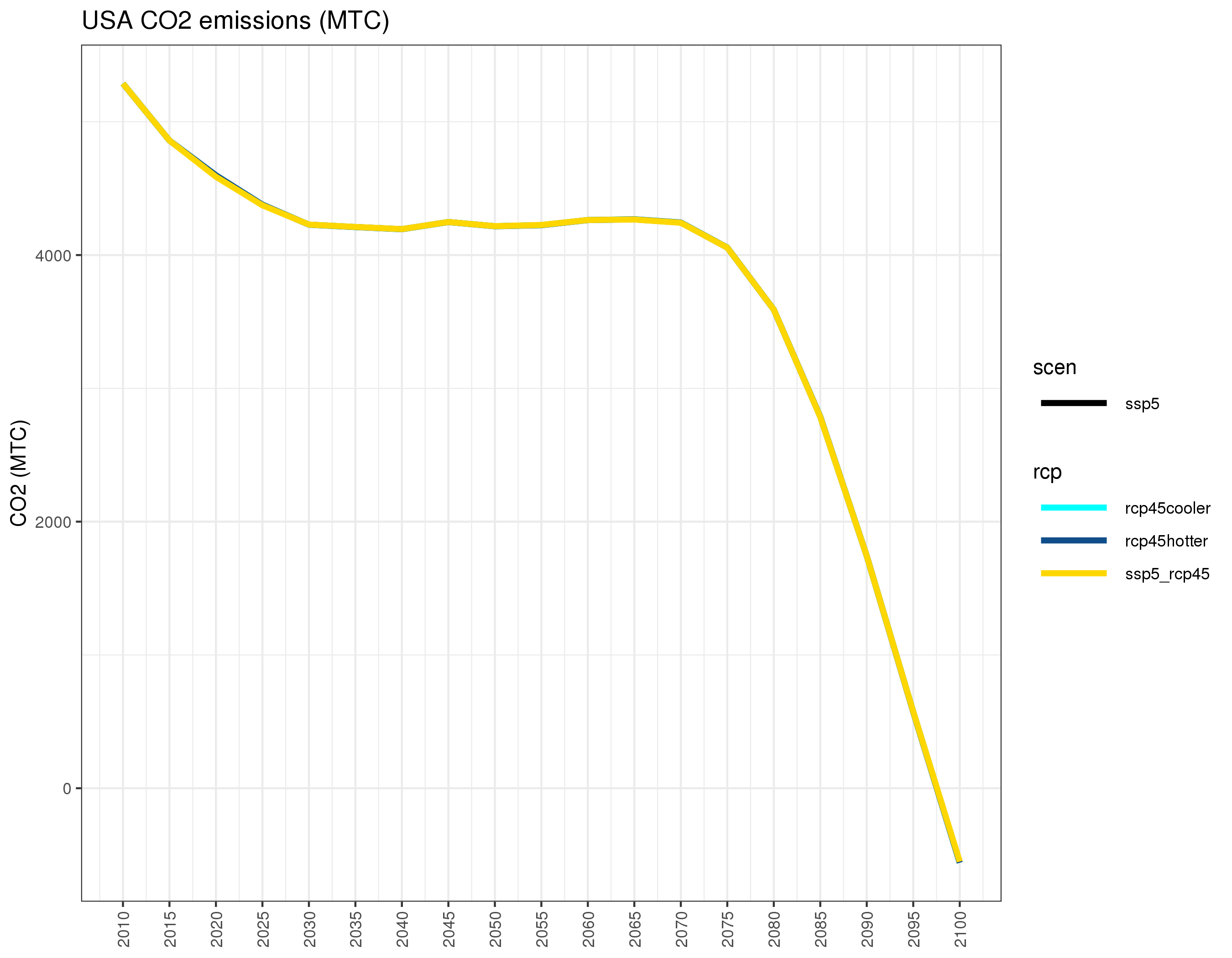
Annual US carbon emissions under different combinations of SSP3/SSP5 and RCP4.5/RCP8.5
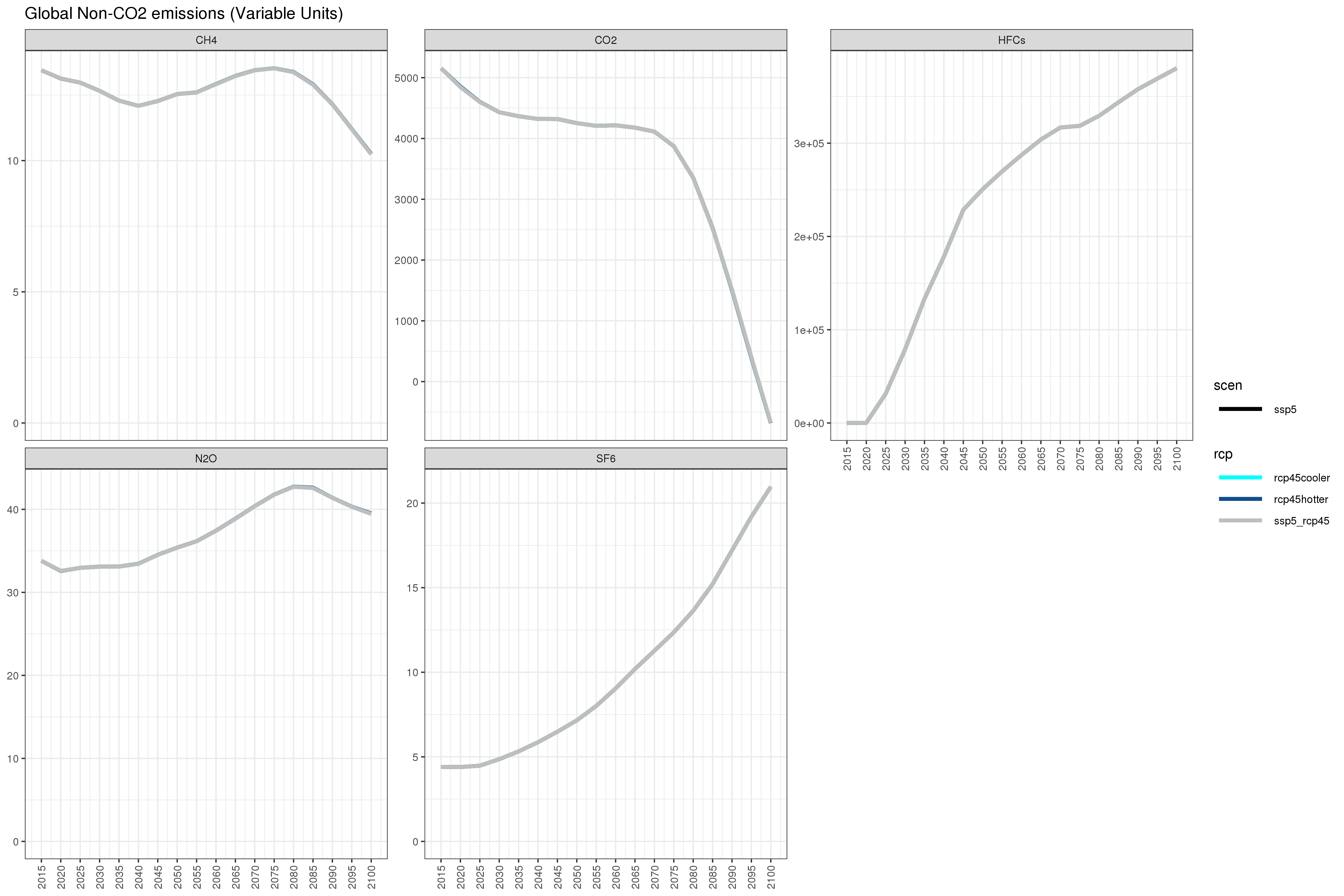
Annual global non-CO2 emissions under different combinations of SSP3/SSP5 and RCP4.5/RCP8.5
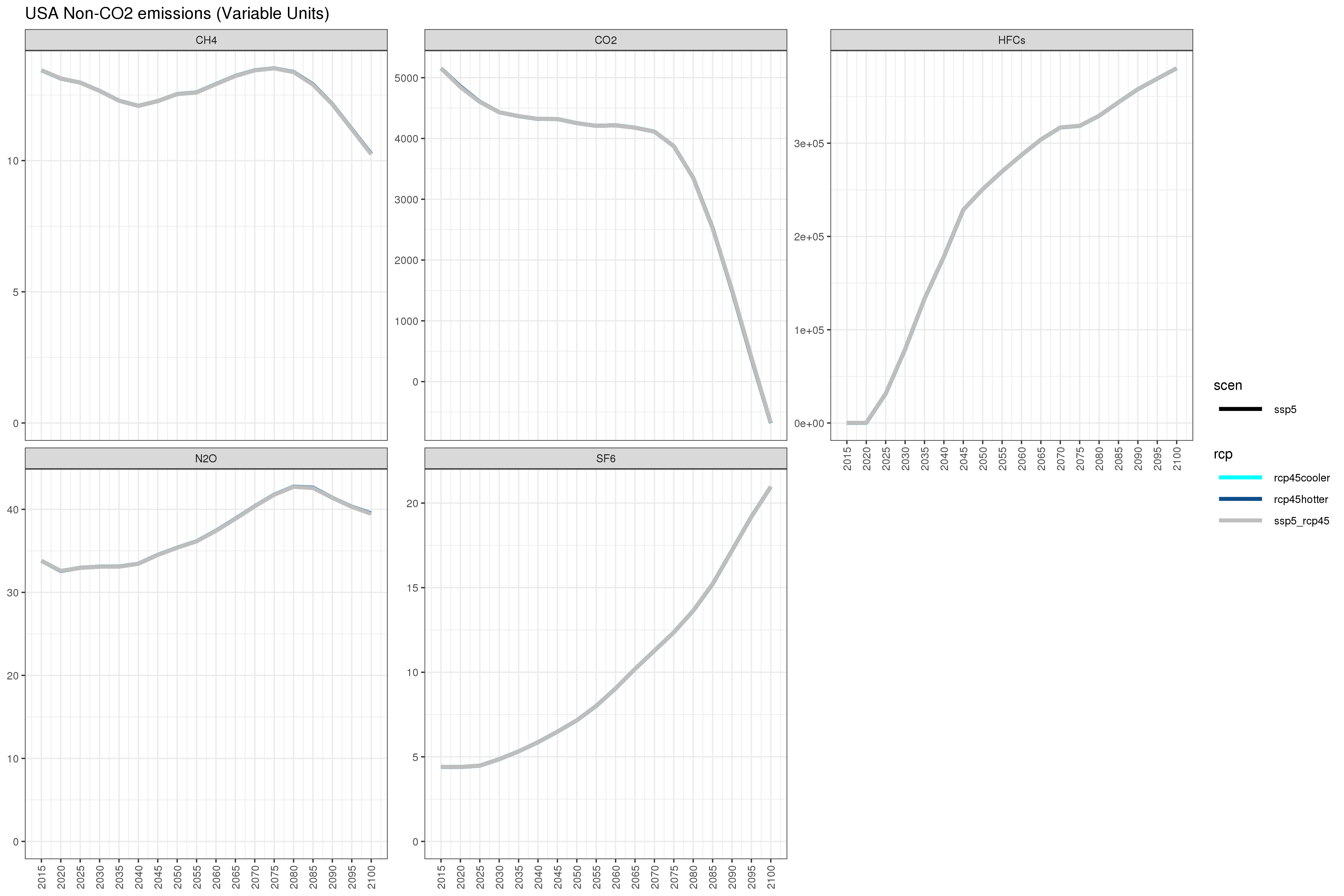
Annual US non-CO2 emissions under different combinations of SSP3/SSP5 and RCP4.5/RCP8.5
RCP8.5
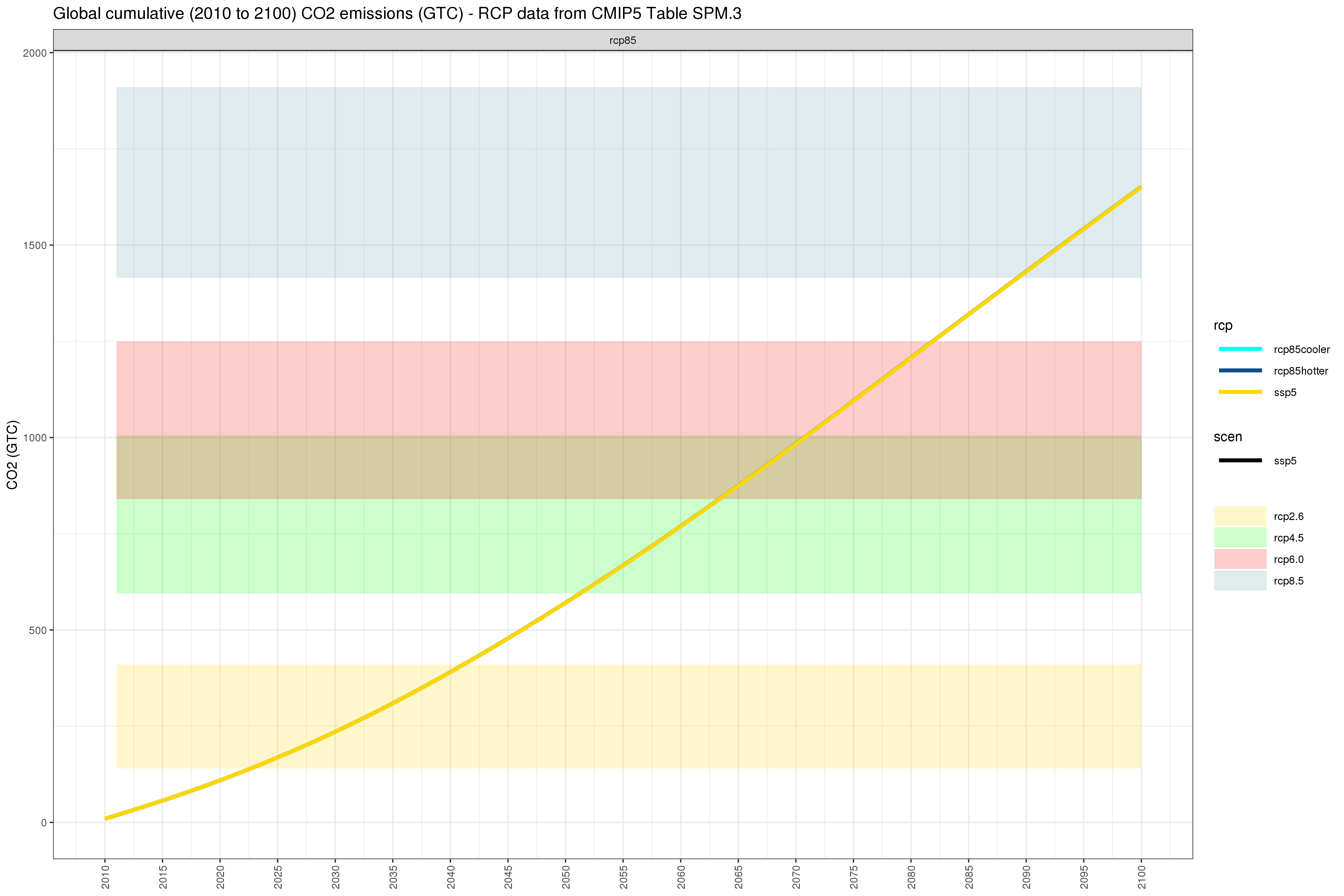
Cumulative global carbon emission pathways under different combinations of SSP3/SSP5 and RCP4.5/RCP8.5
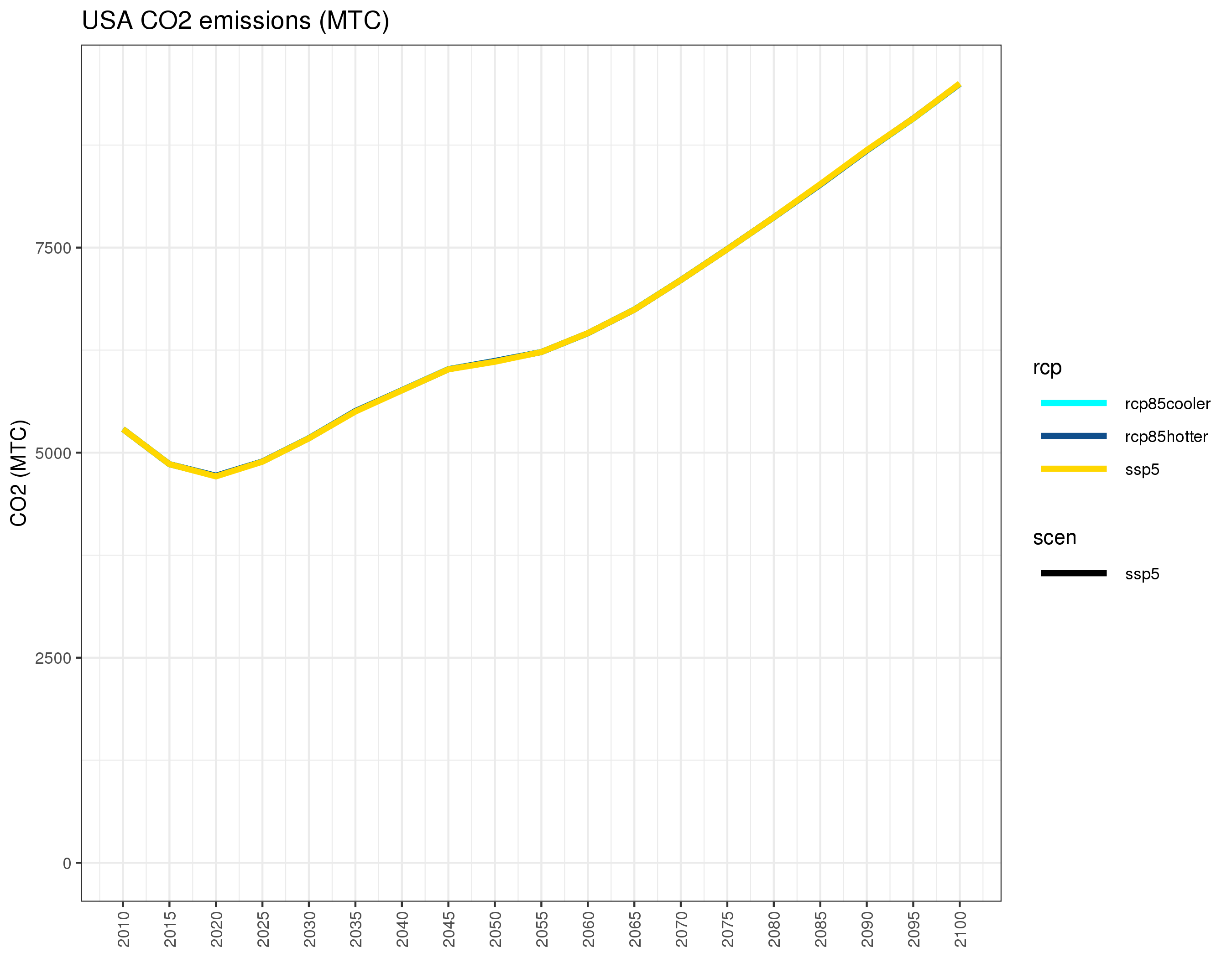
Annual US carbon emissions under different combinations of SSP3/SSP5 and RCP4.5/RCP8.5
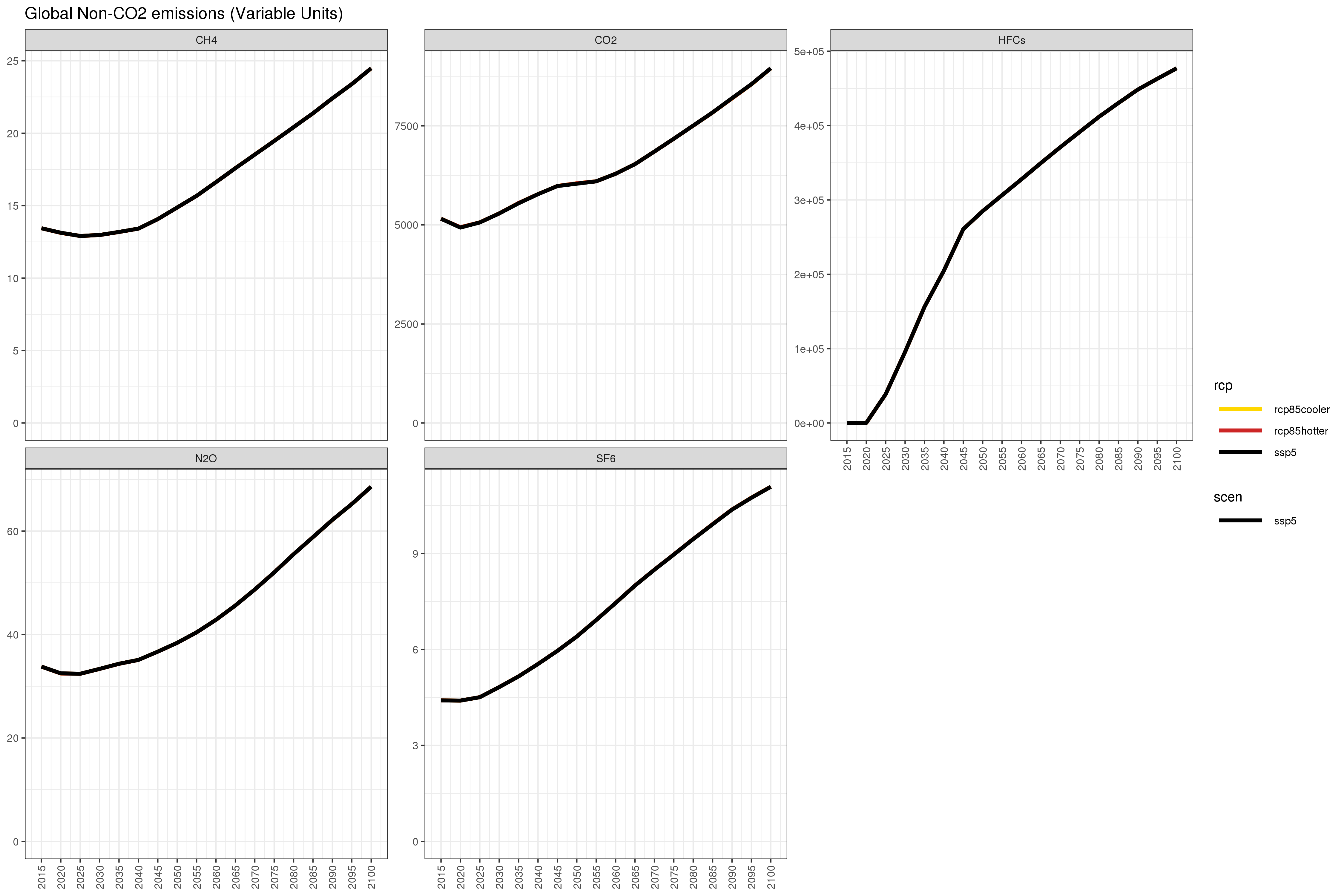
Annual global non-CO2 emissions under different combinations of SSP3/SSP5 and RCP4.5/RCP8.5
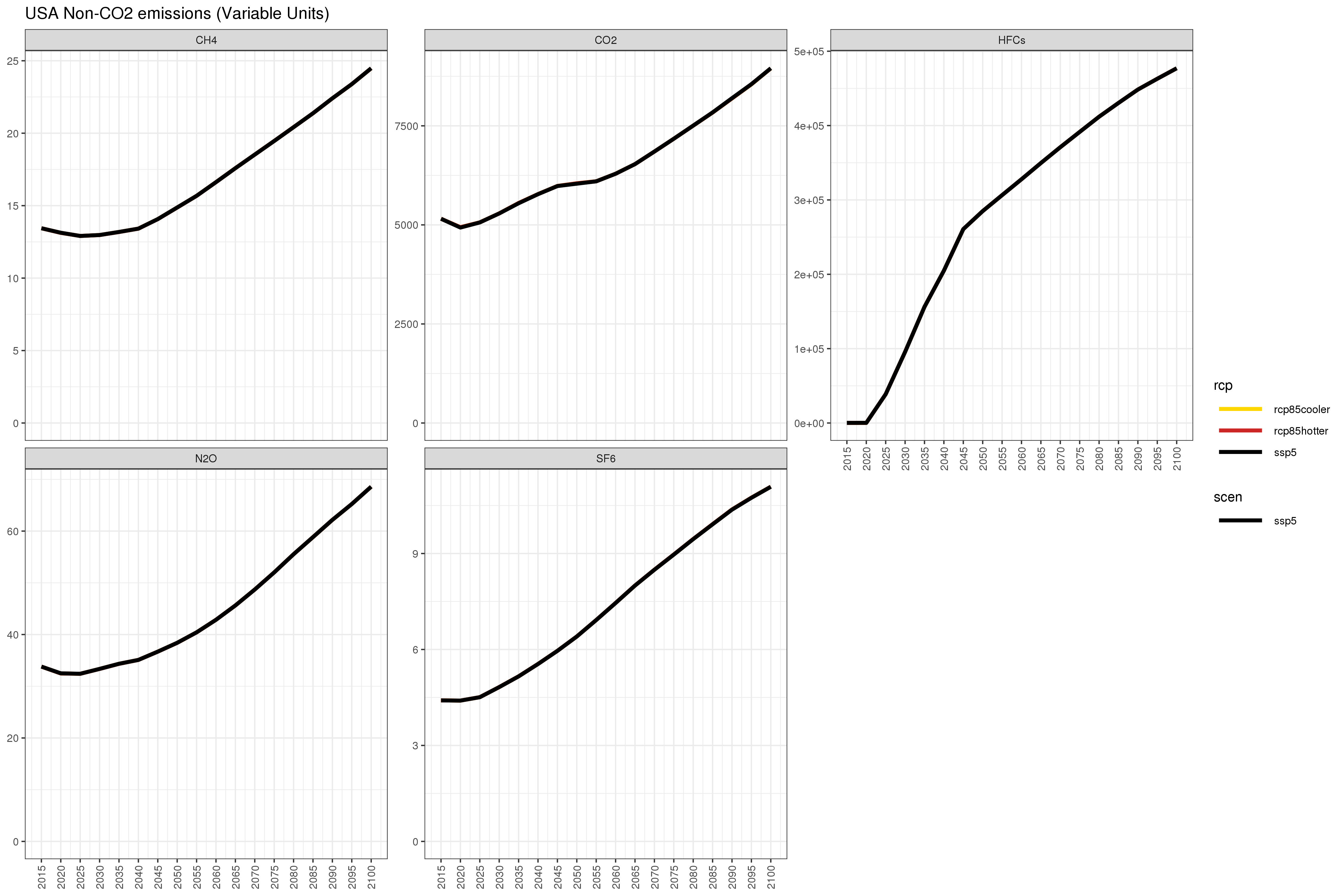
Annual US non-CO2 emissions under different combinations of SSP3/SSP5 and RCP4.5/RCP8.5
Workflow 2 - HDDCDD

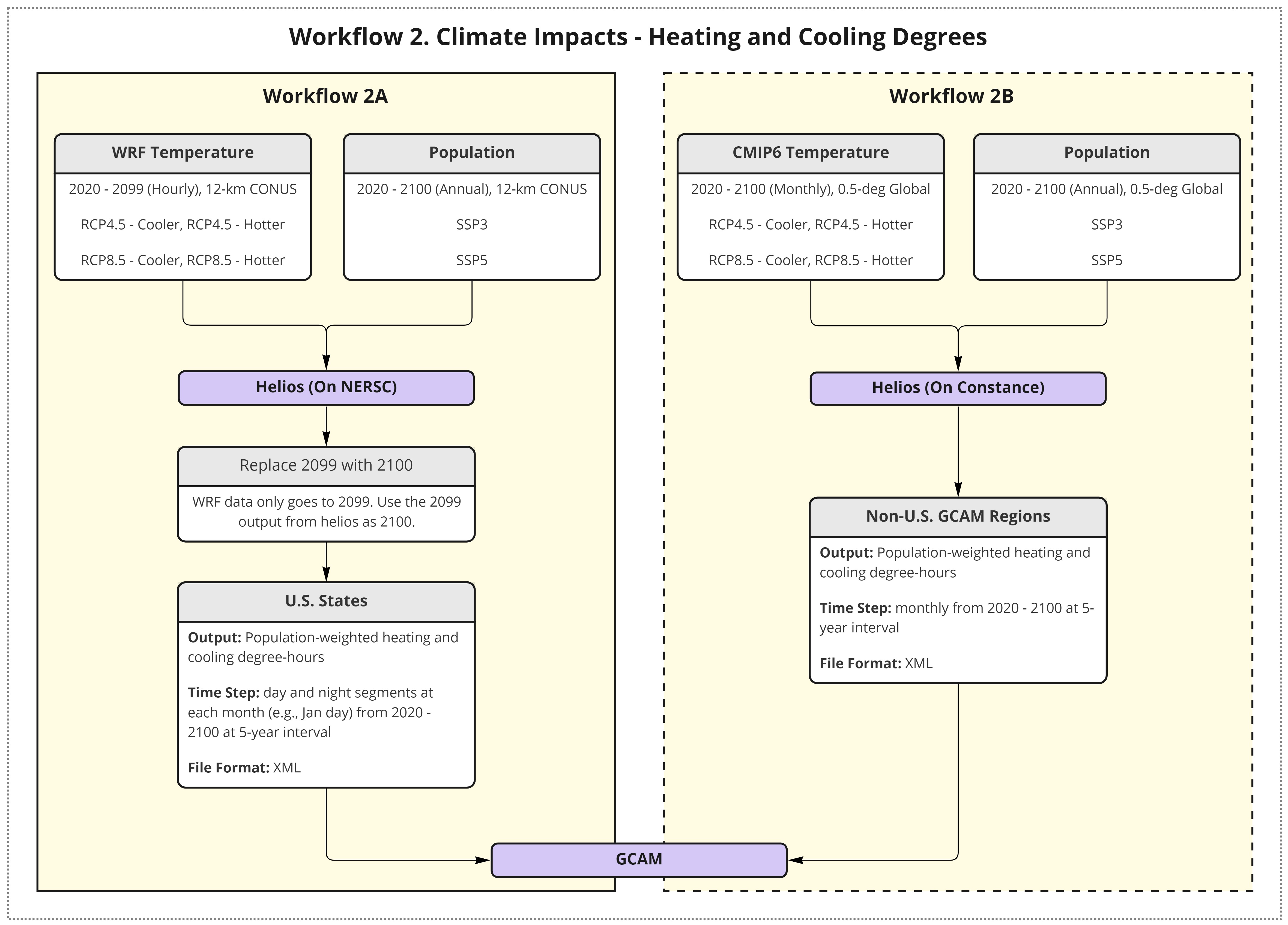
Workflow 2: Climate impacts on heating and cooling degrees.
Workflow 2A US States
Workflow 2A results in WRF outputs being processed and run through
helios to produce total heating and cooling degree-hours at
day and night segment for each month for commercial and residential
buildings.
Table Workflow 2A
| Step | Description | Location |
|---|---|---|
| WRF Outputs Raw |
|
(NERSC) /global/cfs/cdirs/m2702/gsharing |
| HDCD |
|
(NERSC) /global/cfs/cdirs/m2702/gcamusa/hddcdd |
| Create HDCD XML |
|
(NERSC) /global/cfs/cdirs/m2702/gcamusa/hddcdd |
| Run GCAM |
|
(PIC) /pic/projects/im3/gcamusa/gcam-usa-im3/exe |
| HDCD Sensitivity Analysis |
|
(PIC) /pic/projects/im3/gcamusa/diagnostics |
Raw Data
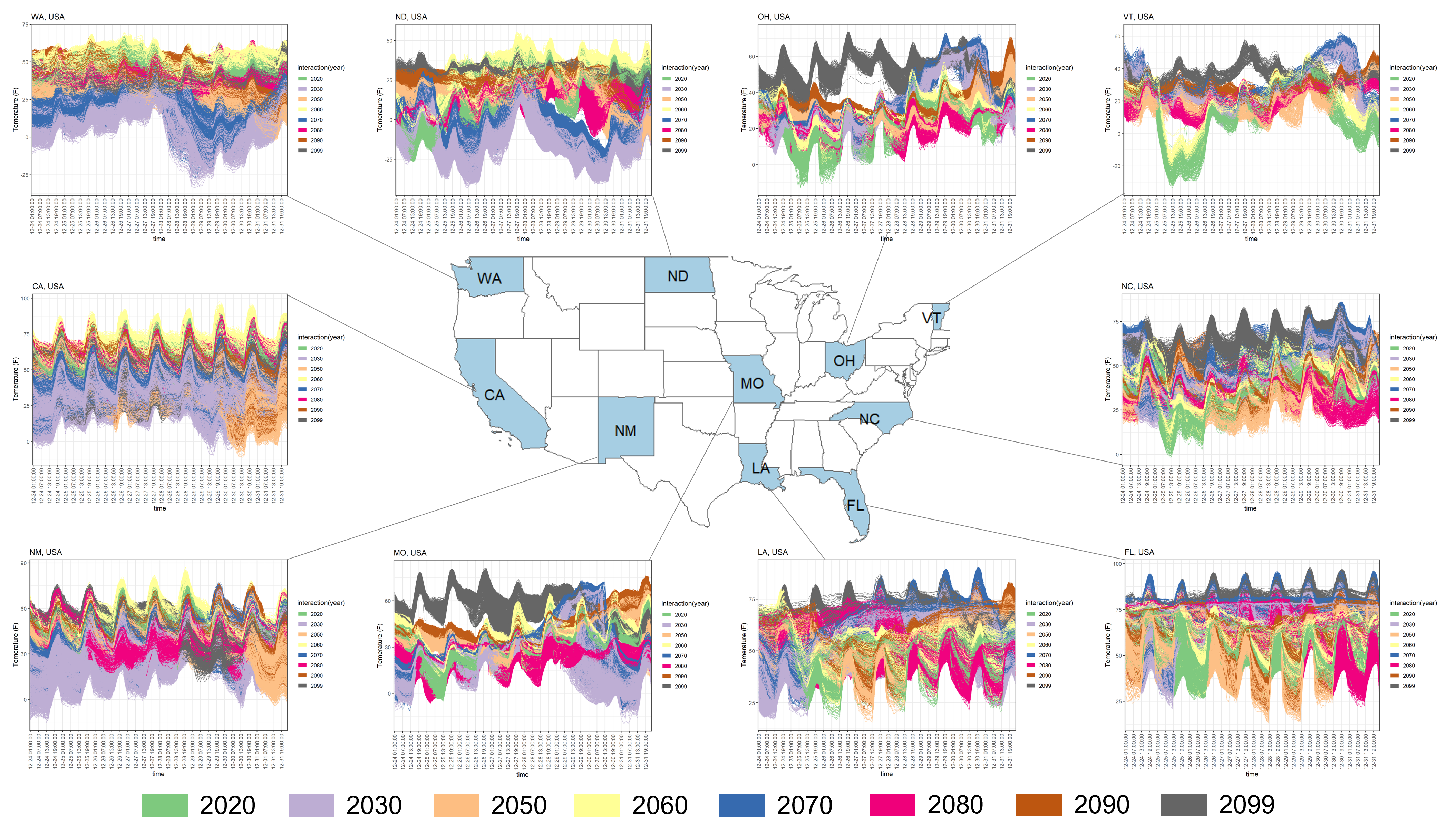
WRF hourly temperature (Dec 24 - 31) in 2020, 2030, …, 2090, and 2099 for each grid within selected states.
Monthly HDCD Diagnostic
RCP8.5 Cooler - SSP3
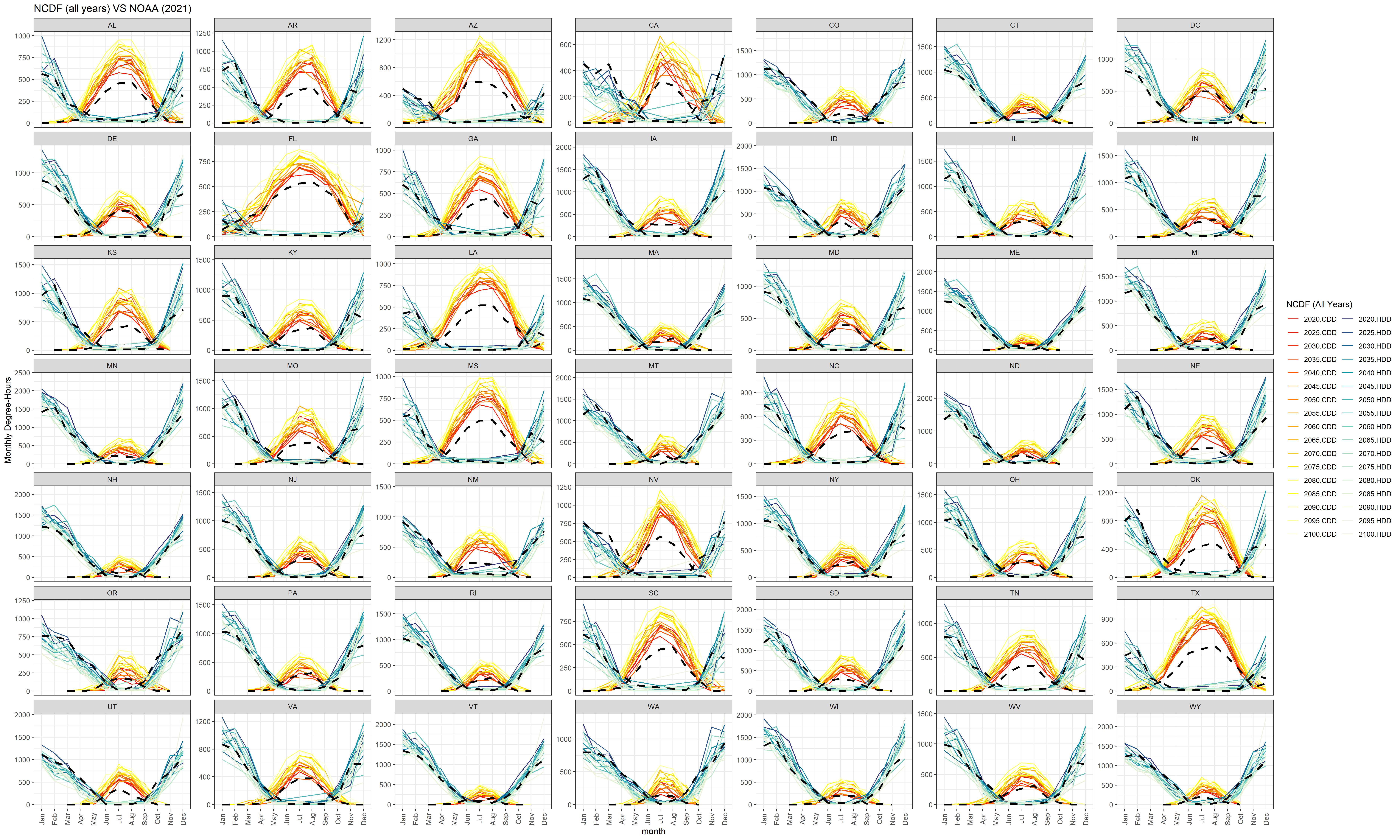
Monthly heating and cooling degree-days calculated from helios versus NOAA 2021 Observations (dashed black lines).
RCP8.5 Cooler - SSP5
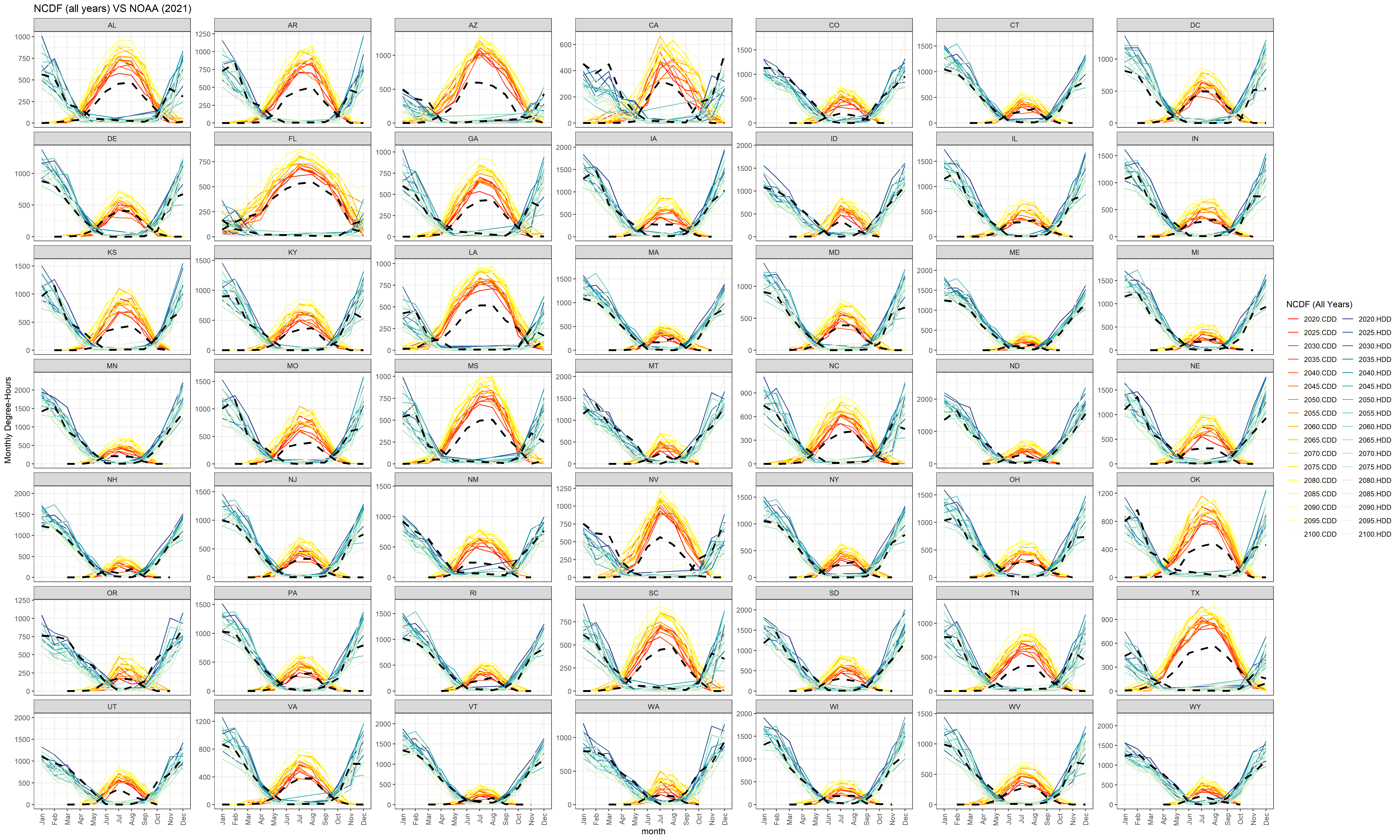
Monthly heating and cooling degree-days calculated from helios versus NOAA 2021 Observations (dashed black lines).
RCP8.5 Hotter - SSP3
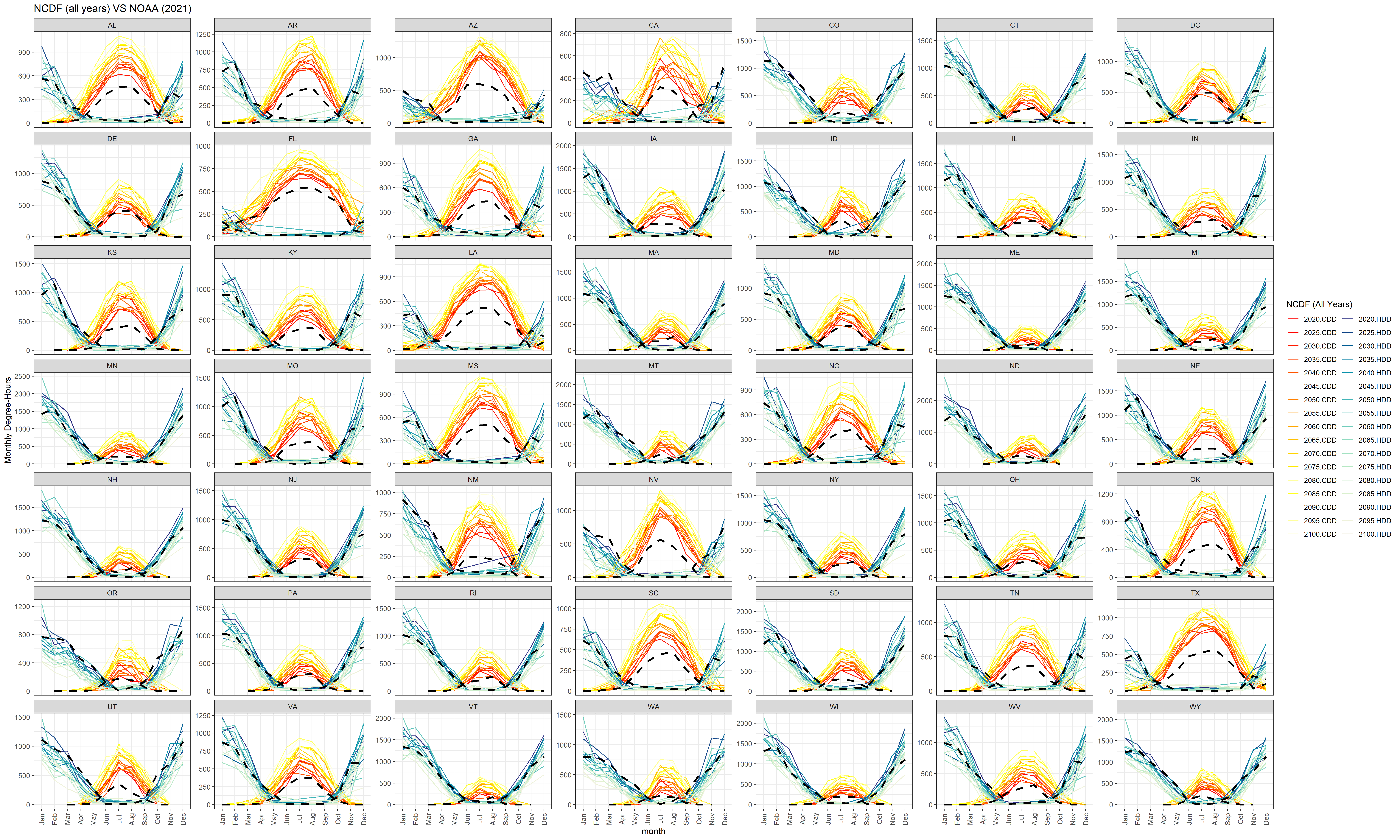
Monthly heating and cooling degree-days calculated from helios versus NOAA 2021 Observations (dashed black lines).
RCP8.5 Hotter - SSP5
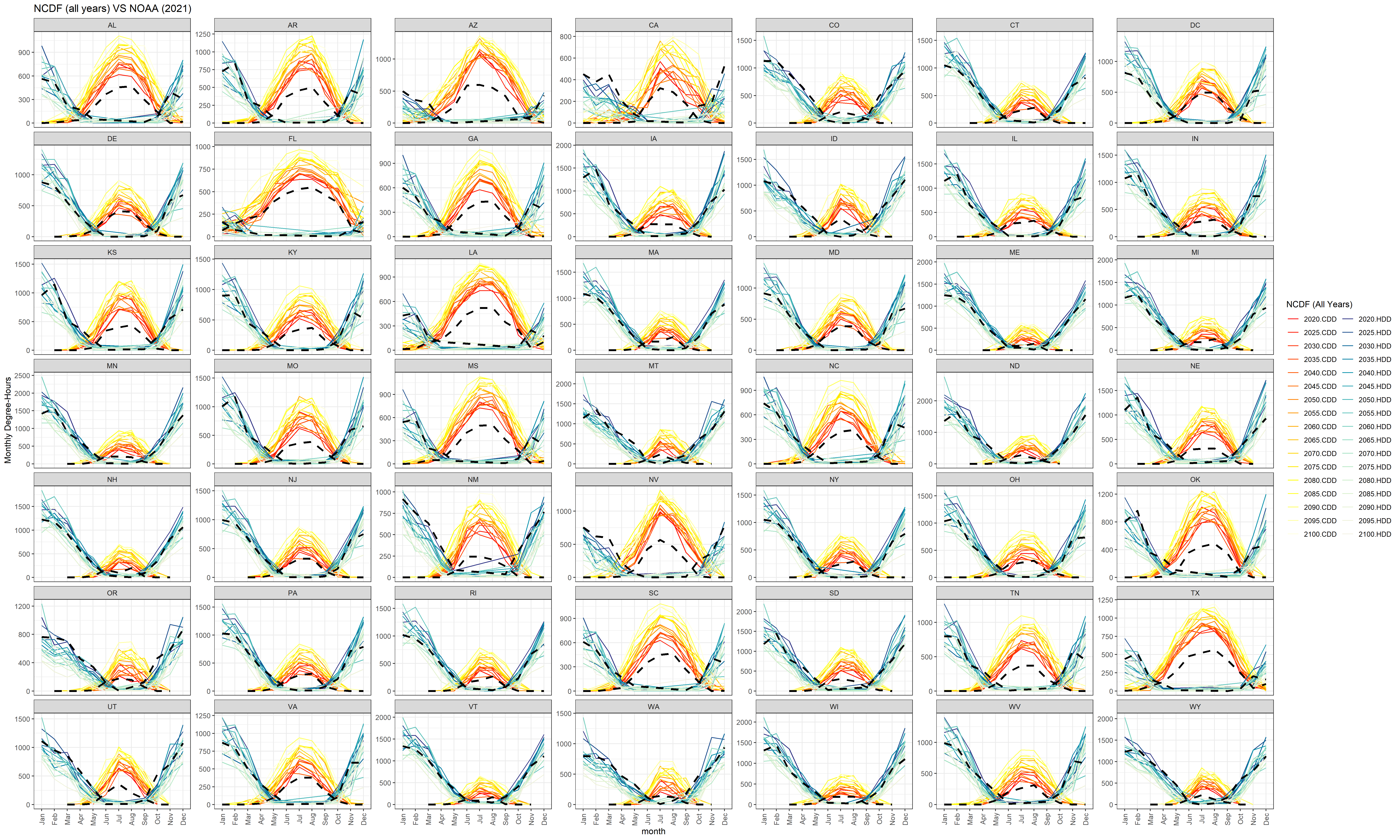
Monthly heating and cooling degree-days calculated from helios versus NOAA 2021 Observations (dashed black lines).
RCP4.5 Cooler - SSP3
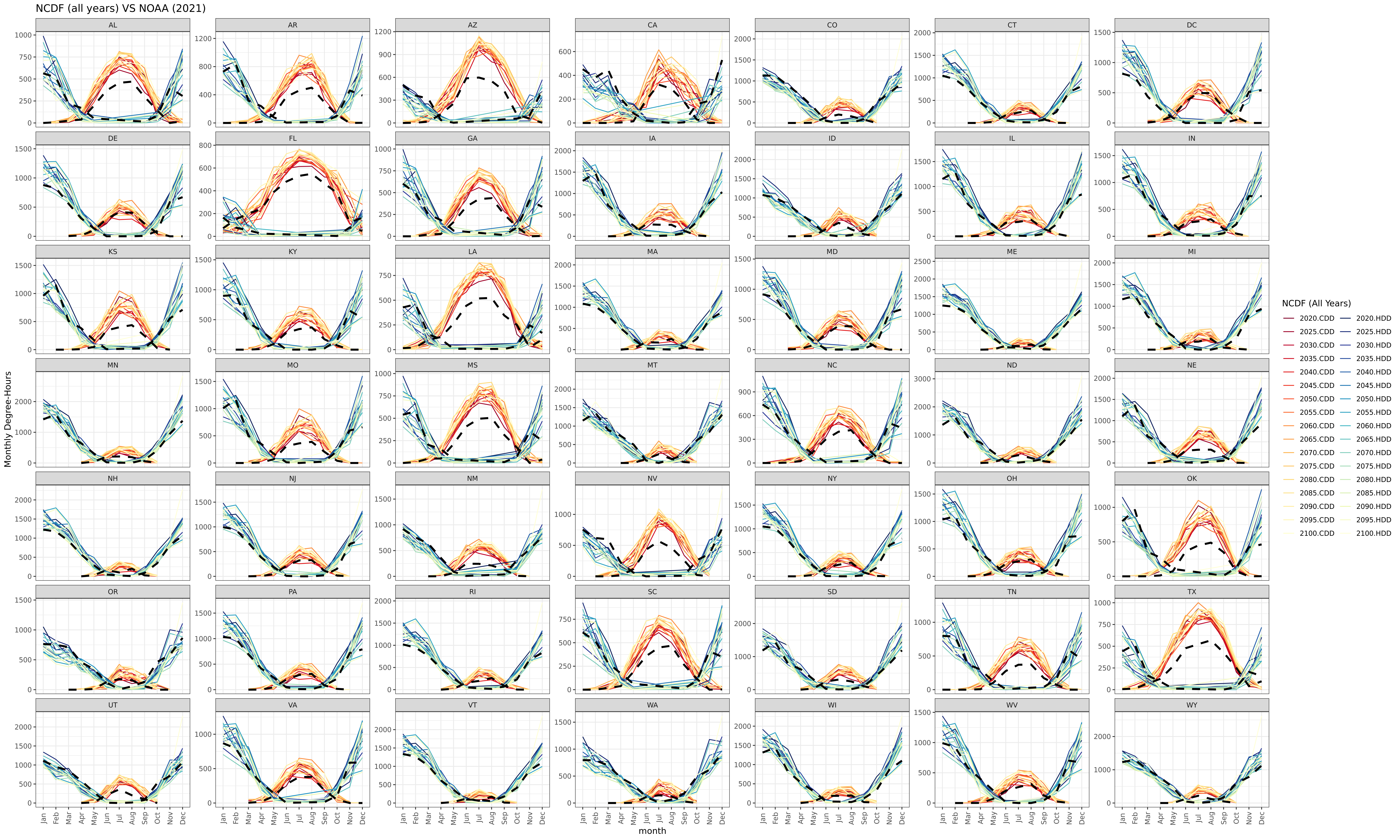
Monthly heating and cooling degree-days calculated from helios versus NOAA 2021 Observations (dashed black lines).
RCP4.5 Cooler - SSP5
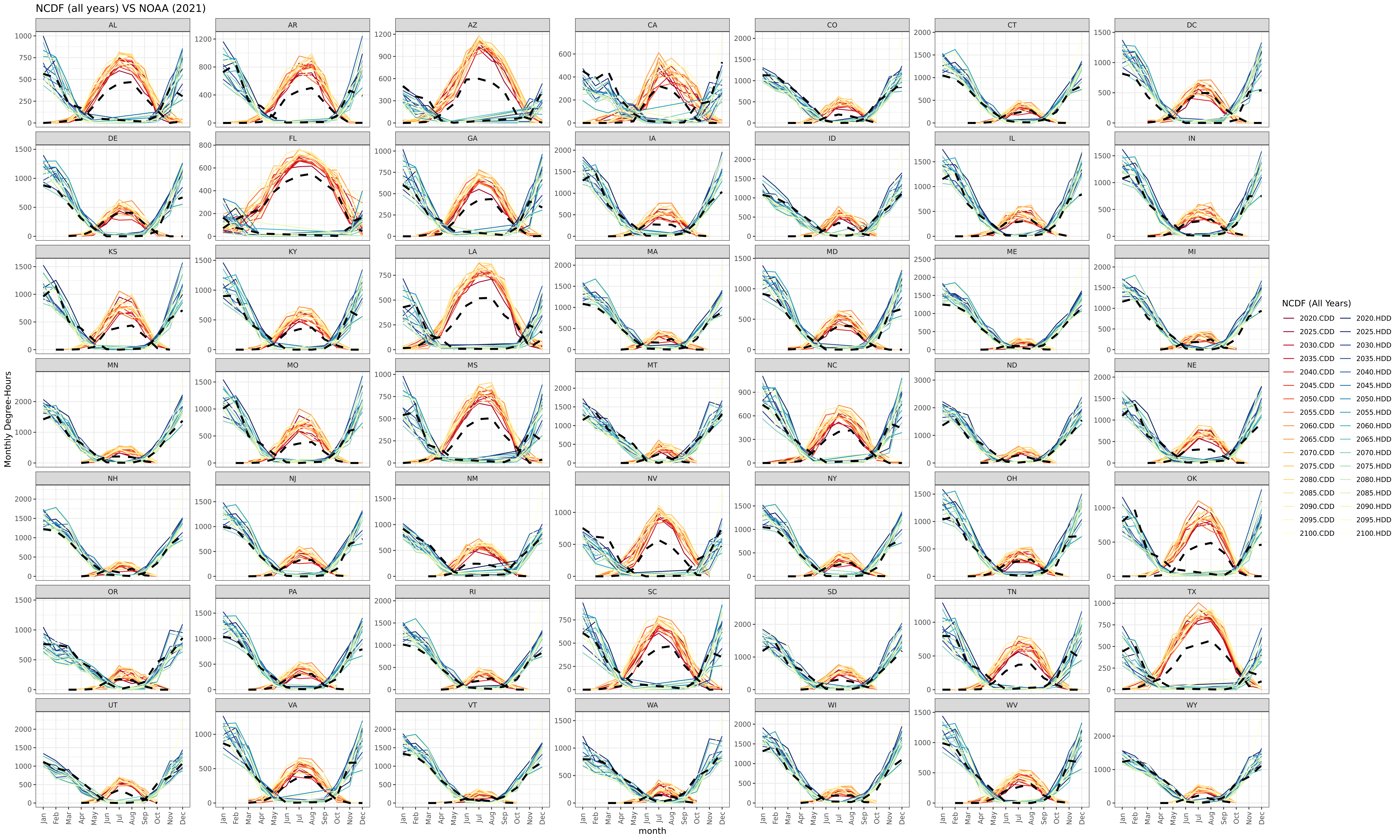
Monthly heating and cooling degree-days calculated from helios versus NOAA 2021 Observations (dashed black lines).
RCP4.5 Hotter - SSP3
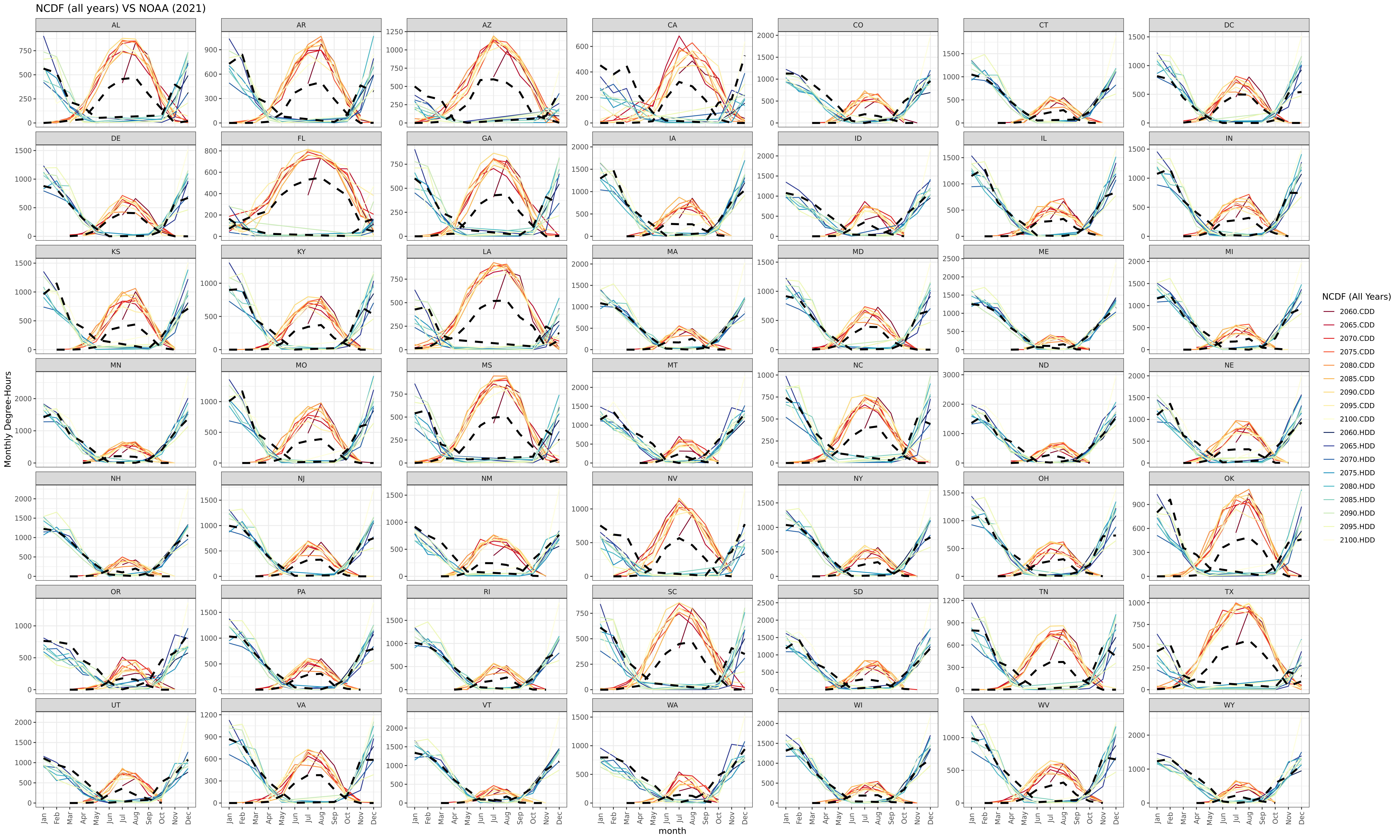
Monthly heating and cooling degree-days calculated from helios versus NOAA 2021 Observations (dashed black lines).
RCP4.5 Hotter - SSP5
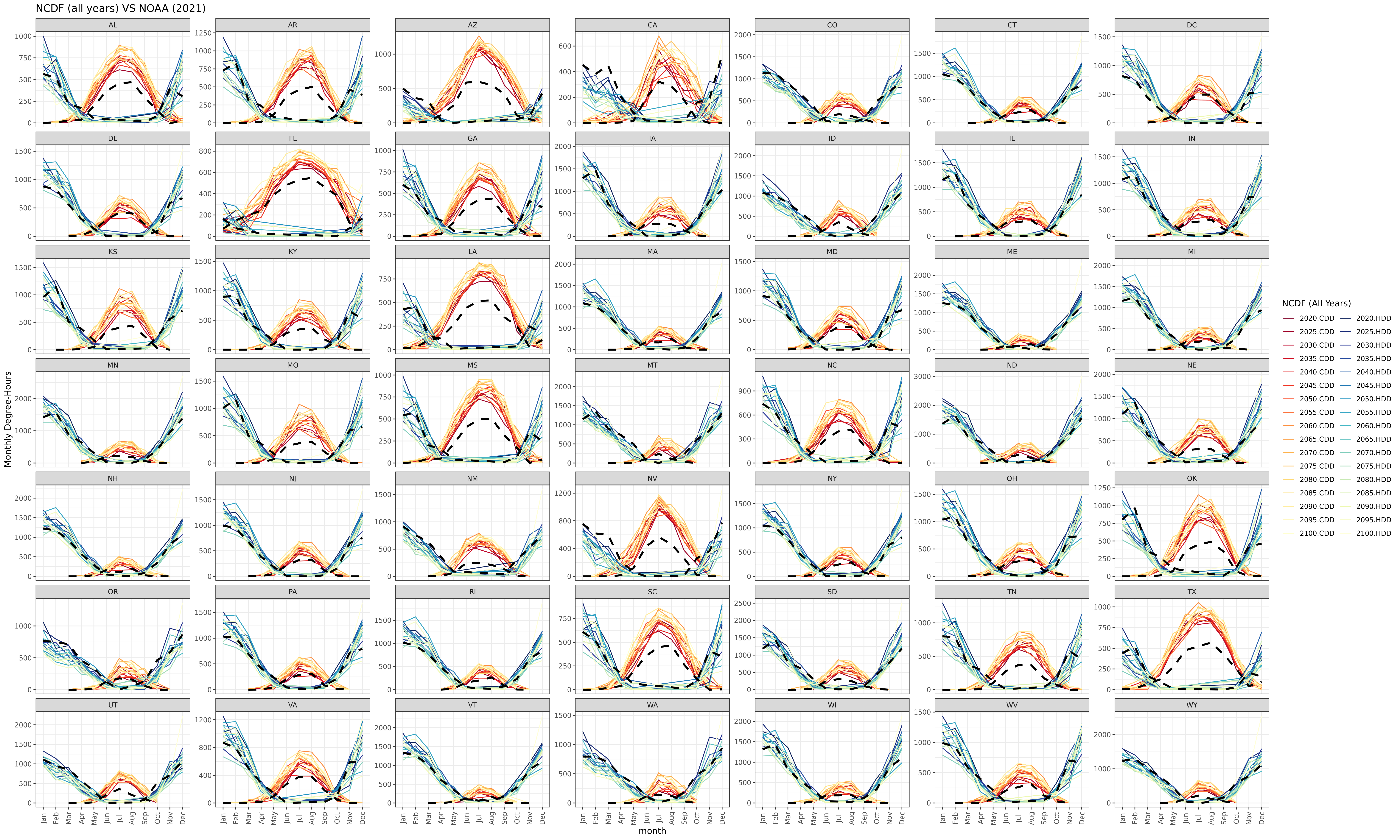
Monthly heating and cooling degree-days calculated from helios versus NOAA 2021 Observations (dashed black lines).
Segment HDCD Diagnostic
RCP8.5 Cooler - SSP3
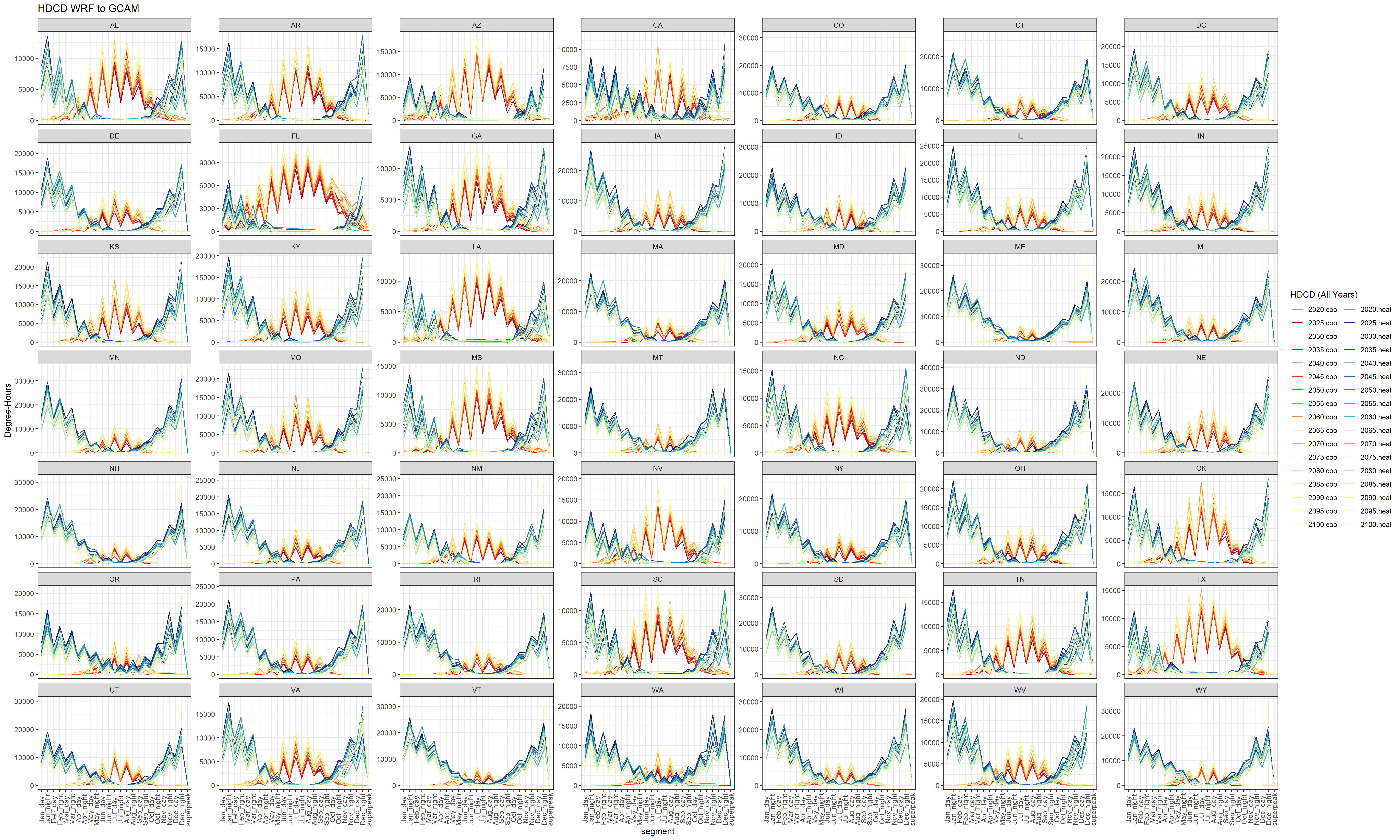
Heating and cooling degree-hours by GCAM-USA segments from 2020 - 2100 at 5-year interval.
RCP8.5 Cooler - SSP5
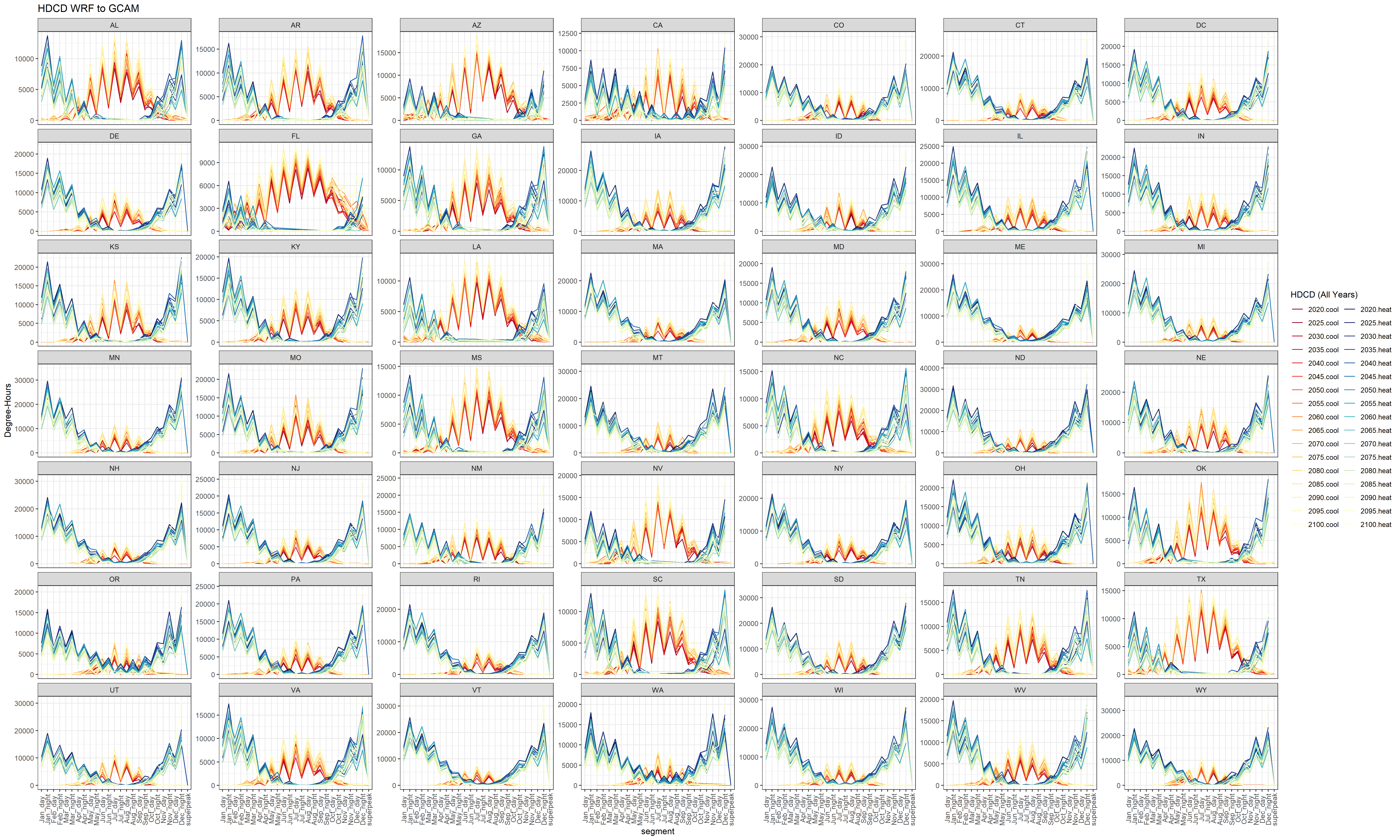
Heating and cooling degree-hours by GCAM-USA segments from 2020 - 2100 at 5-year interval.
RCP8.5 Hotter - SSP3
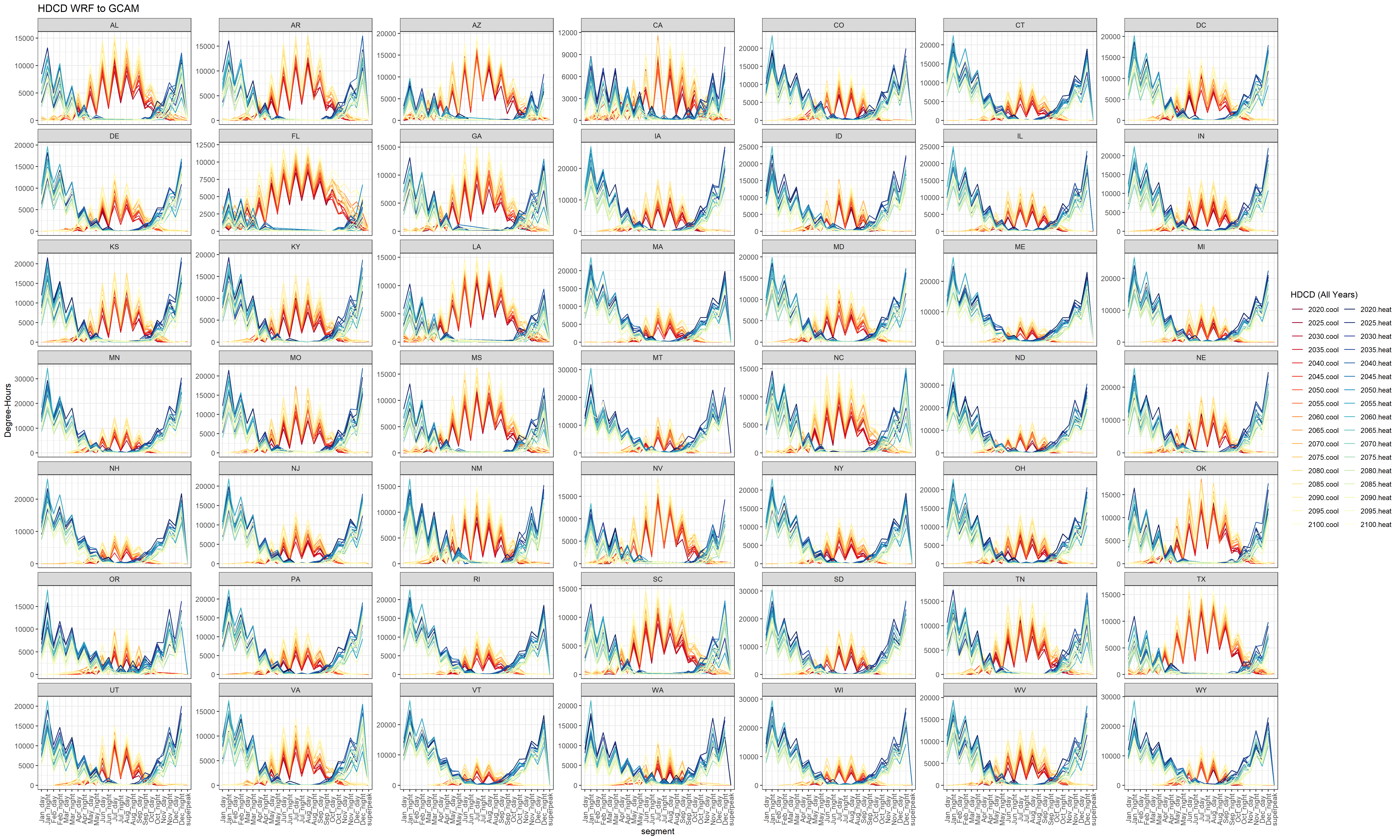
Heating and cooling degree-hours by GCAM-USA segments from 2020 - 2100 at 5-year interval.
RCP8.5 Hotter - SSP5

Heating and cooling degree-hours by GCAM-USA segments from 2020 - 2100 at 5-year interval.
RCP4.5 Cooler - SSP3
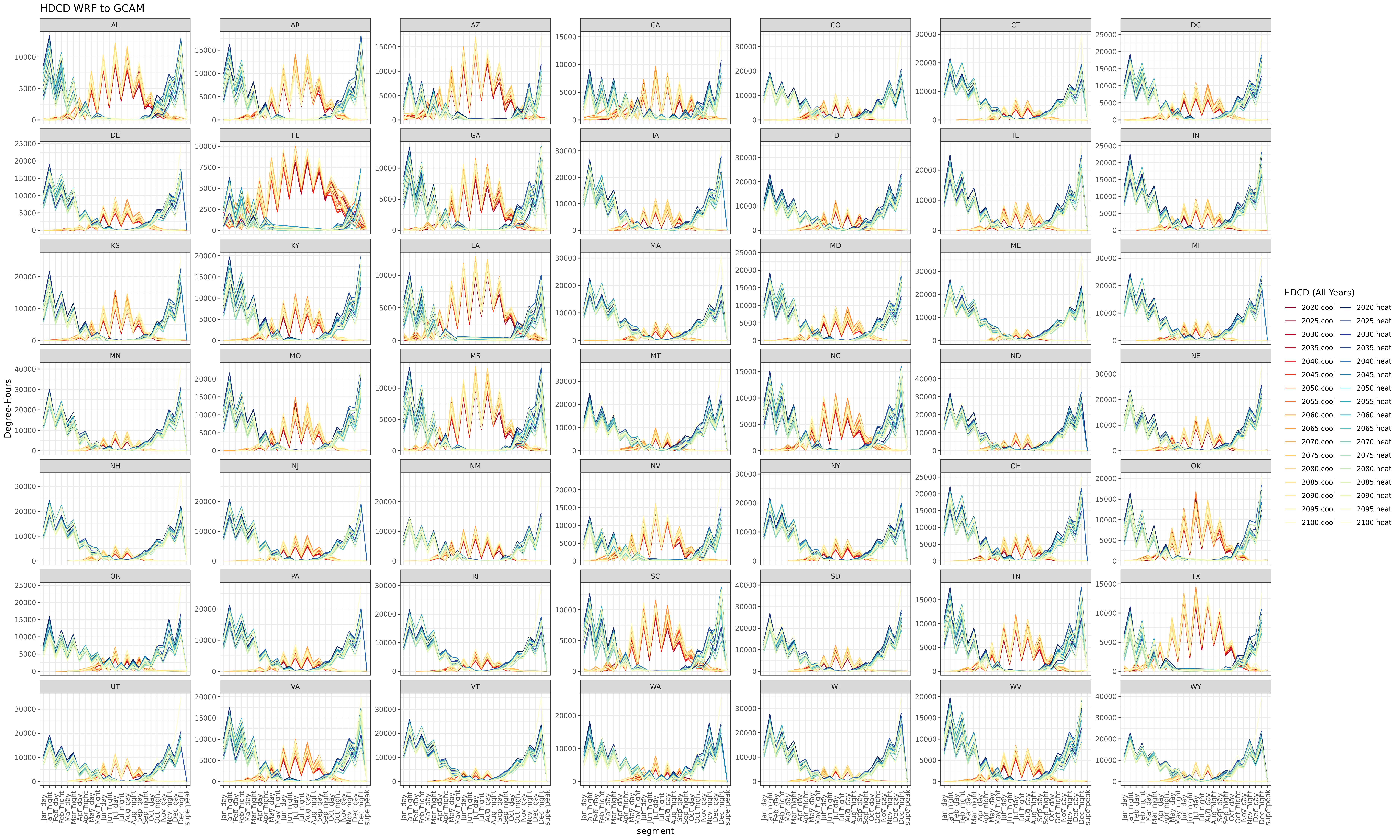
Heating and cooling degree-hours by GCAM-USA segments from 2020 - 2100 at 5-year interval.
RCP4.5 Cooler - SSP5
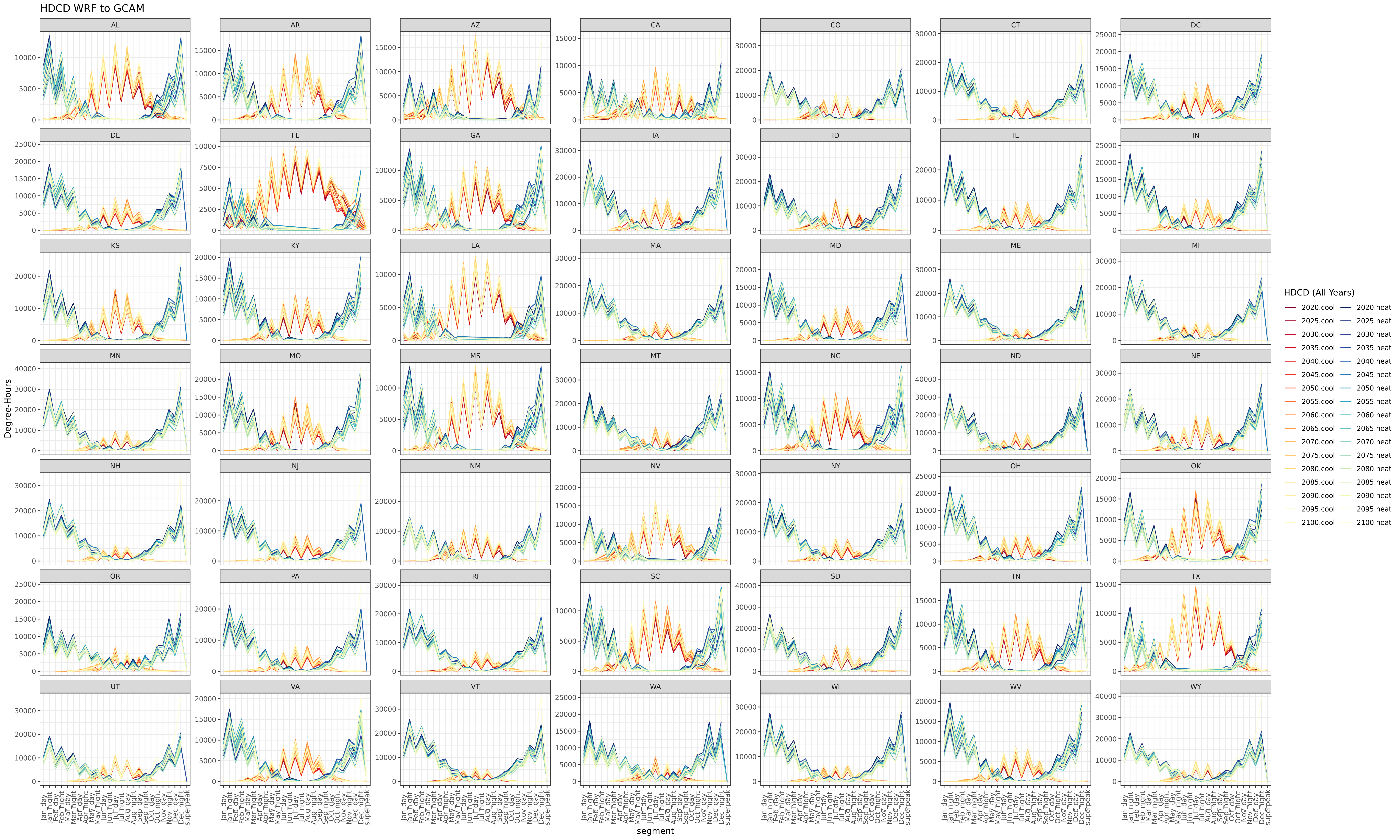
Heating and cooling degree-hours by GCAM-USA segments from 2020 - 2100 at 5-year interval.
RCP4.5 Hotter - SSP3
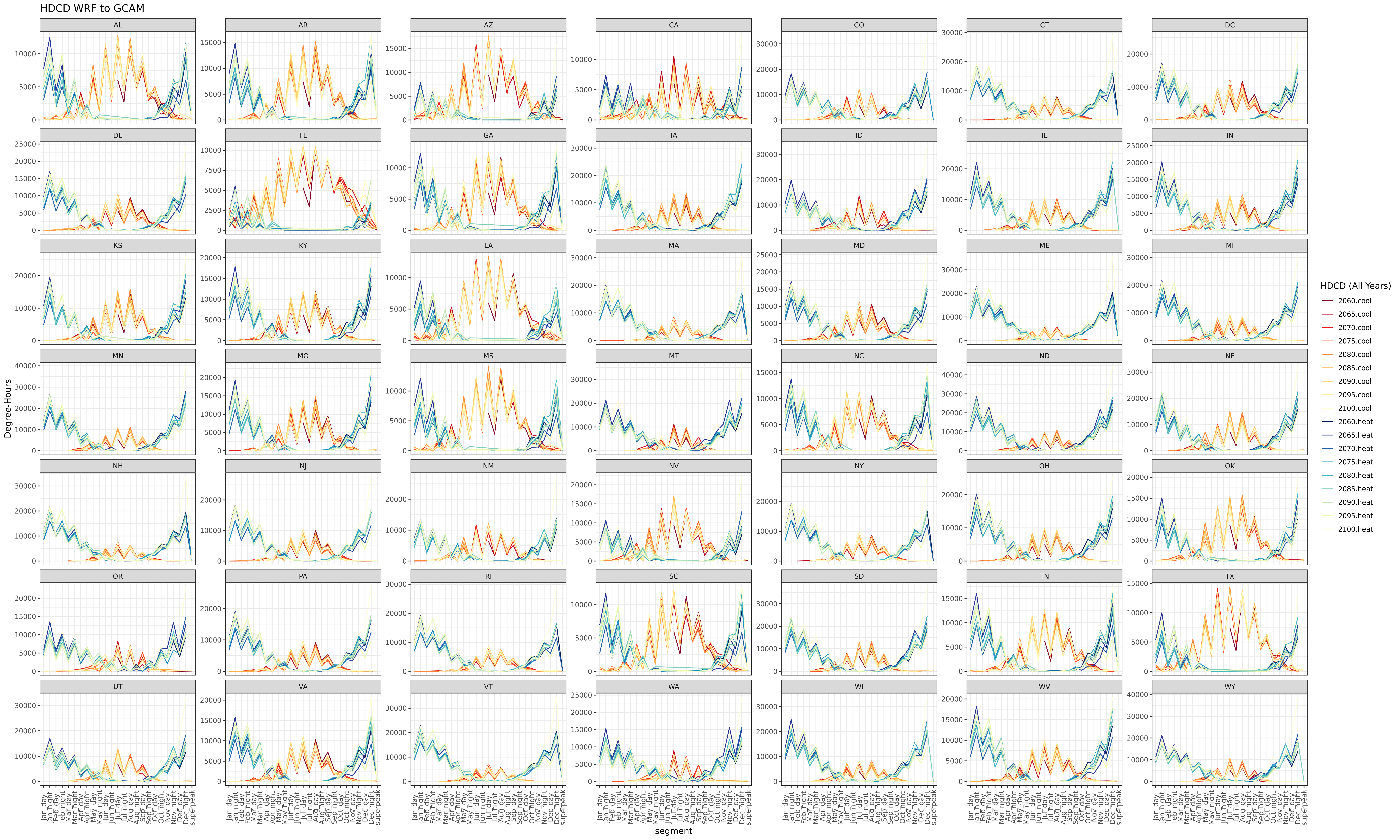
Heating and cooling degree-hours by GCAM-USA segments from 2020 - 2100 at 5-year interval.
RCP4.5 Hotter - SSP5
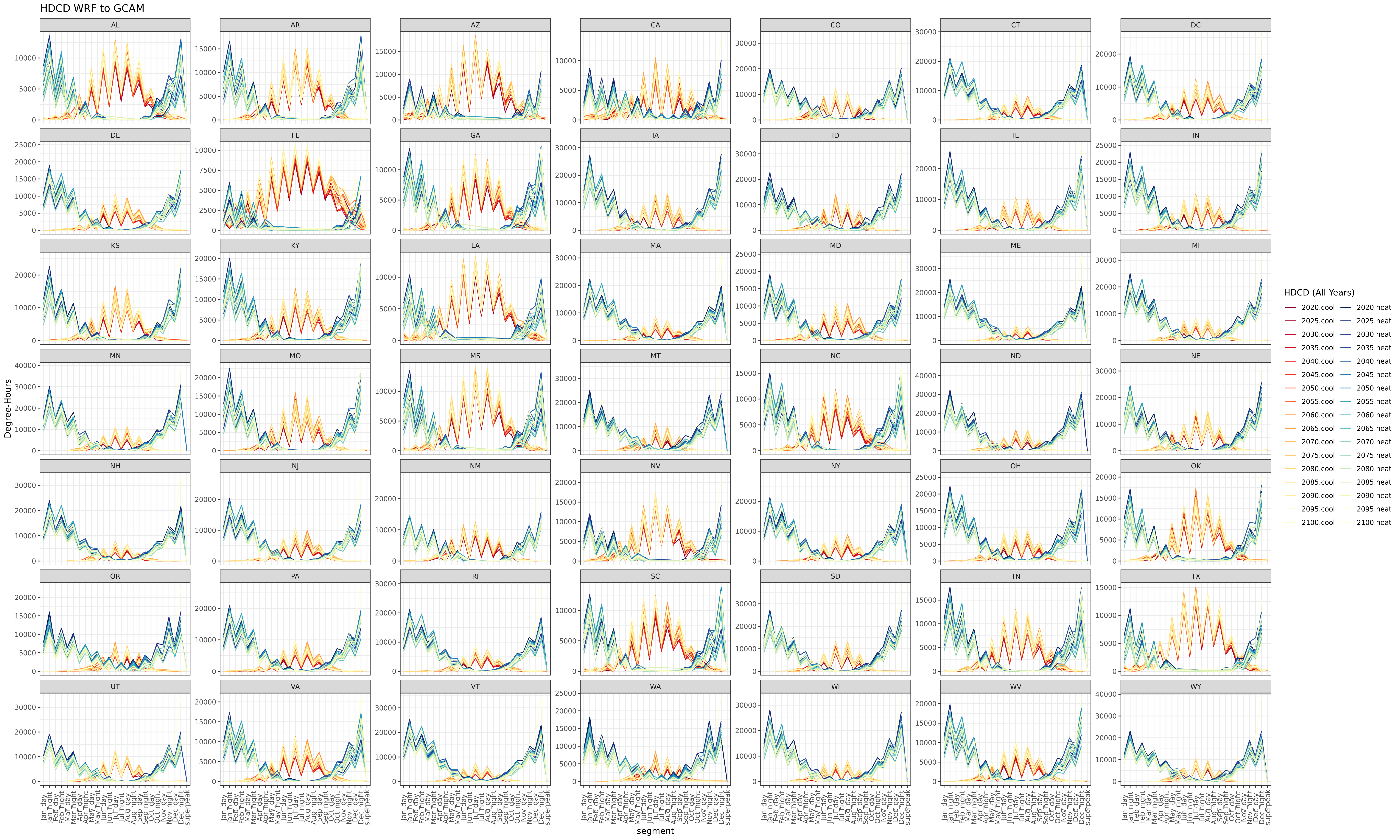
Heating and cooling degree-hours by GCAM-USA segments from 2020 - 2100 at 5-year interval.
GCAM SSP3
Summary
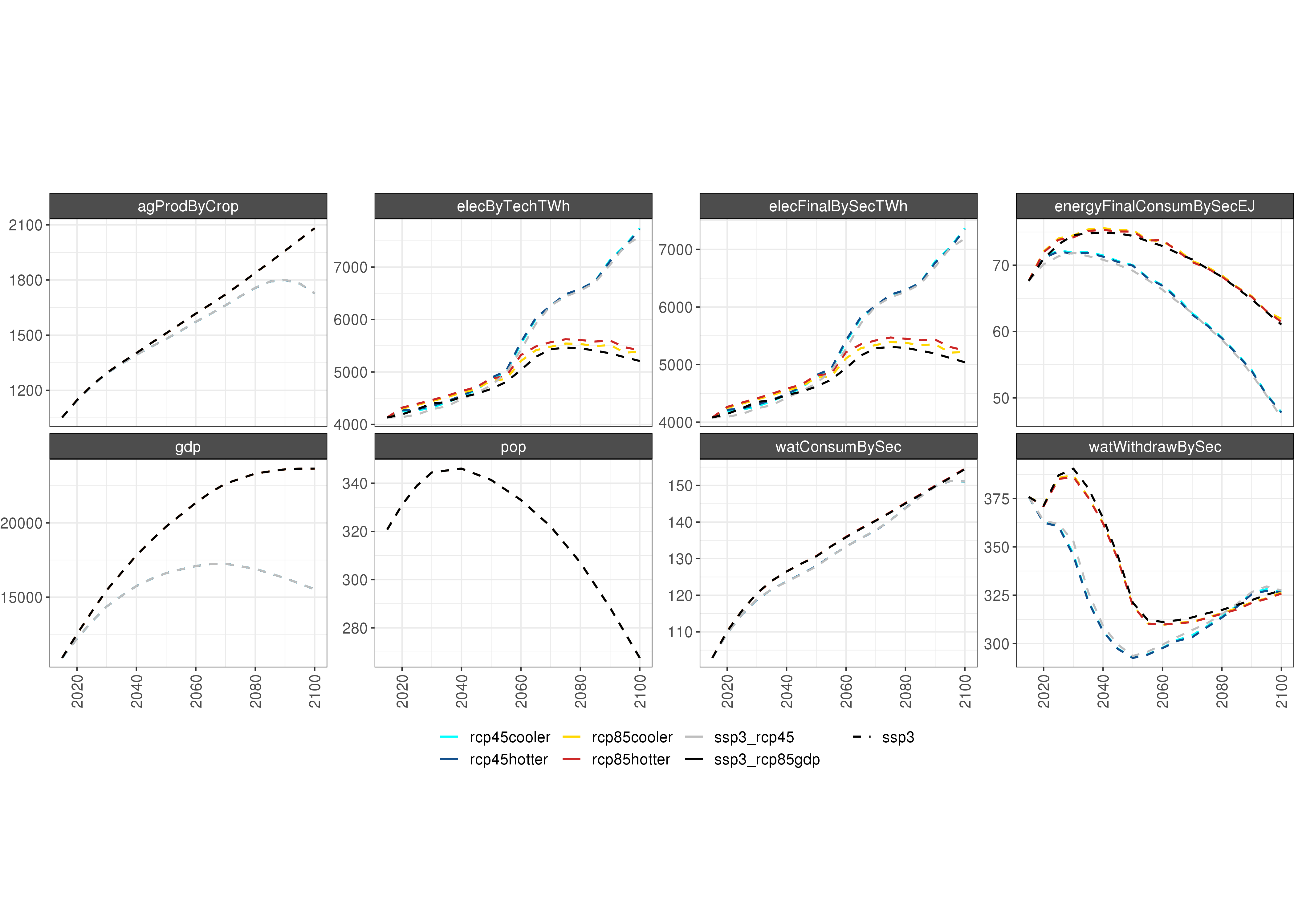
Comparison of GCAM global agyield outputs
Socioeconomics
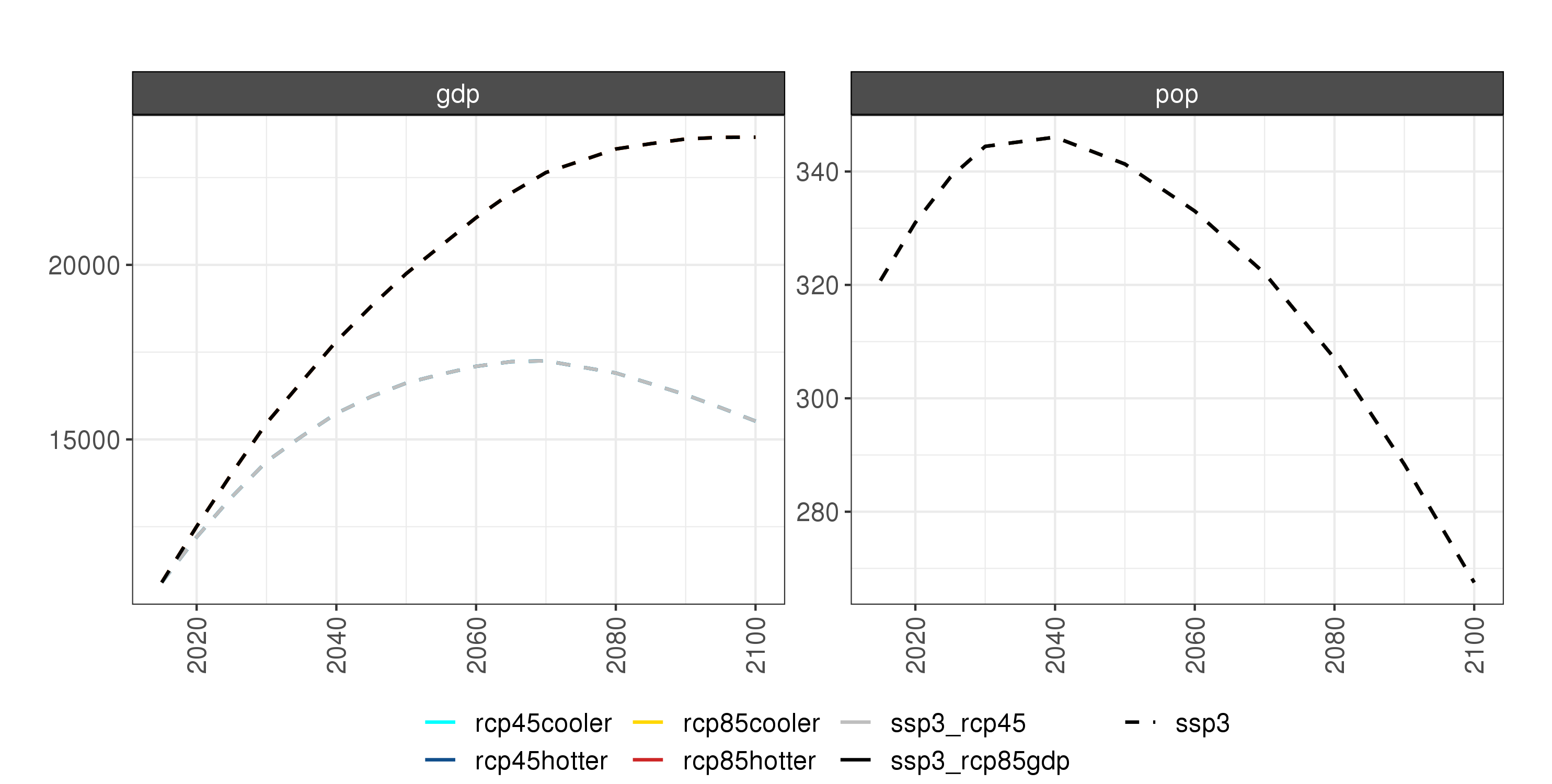
Comparison of GCAM socioeconomic outputs
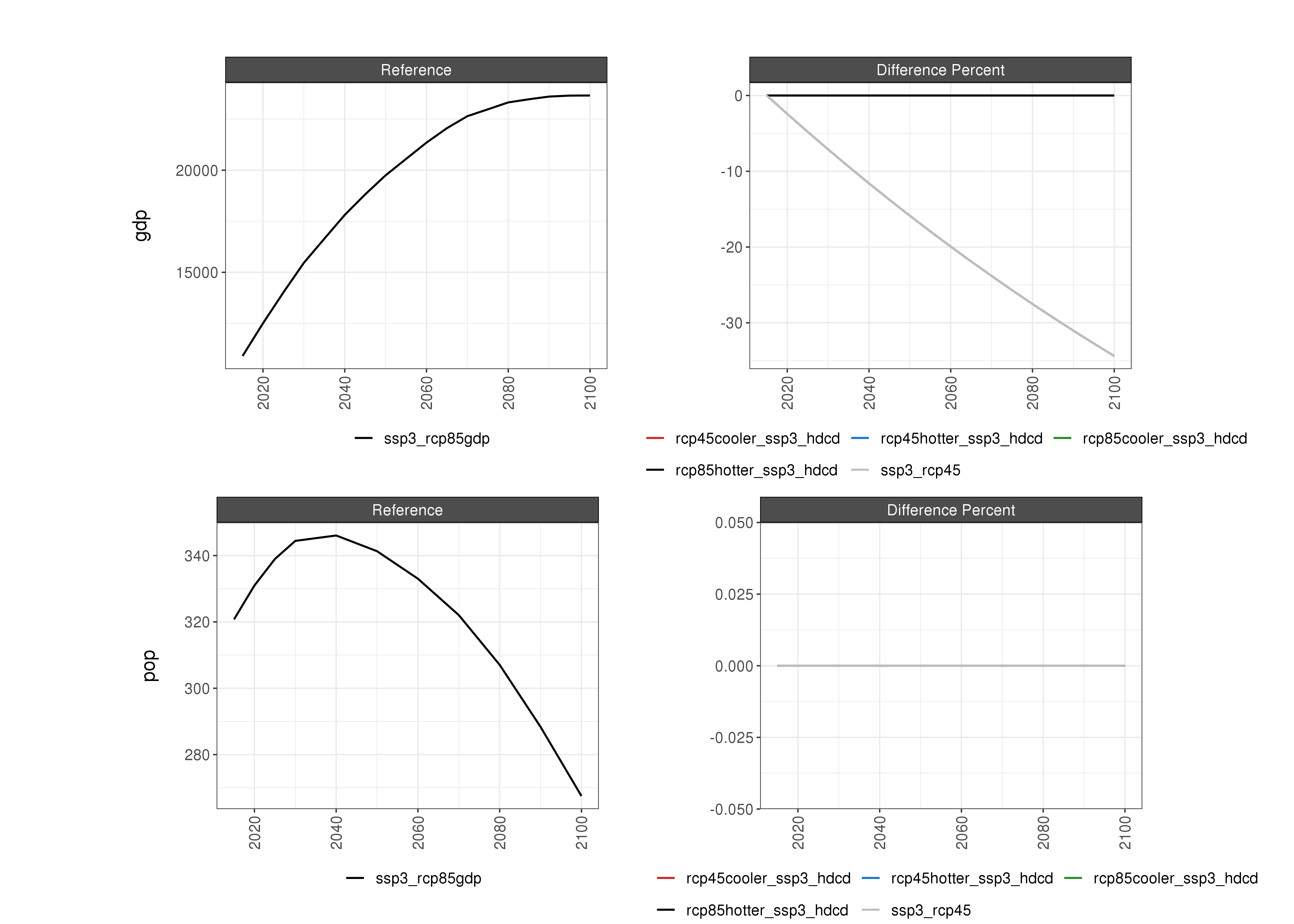
Comparison of GCAM socioeconomic outputs % Diff
Water
RCP4.5
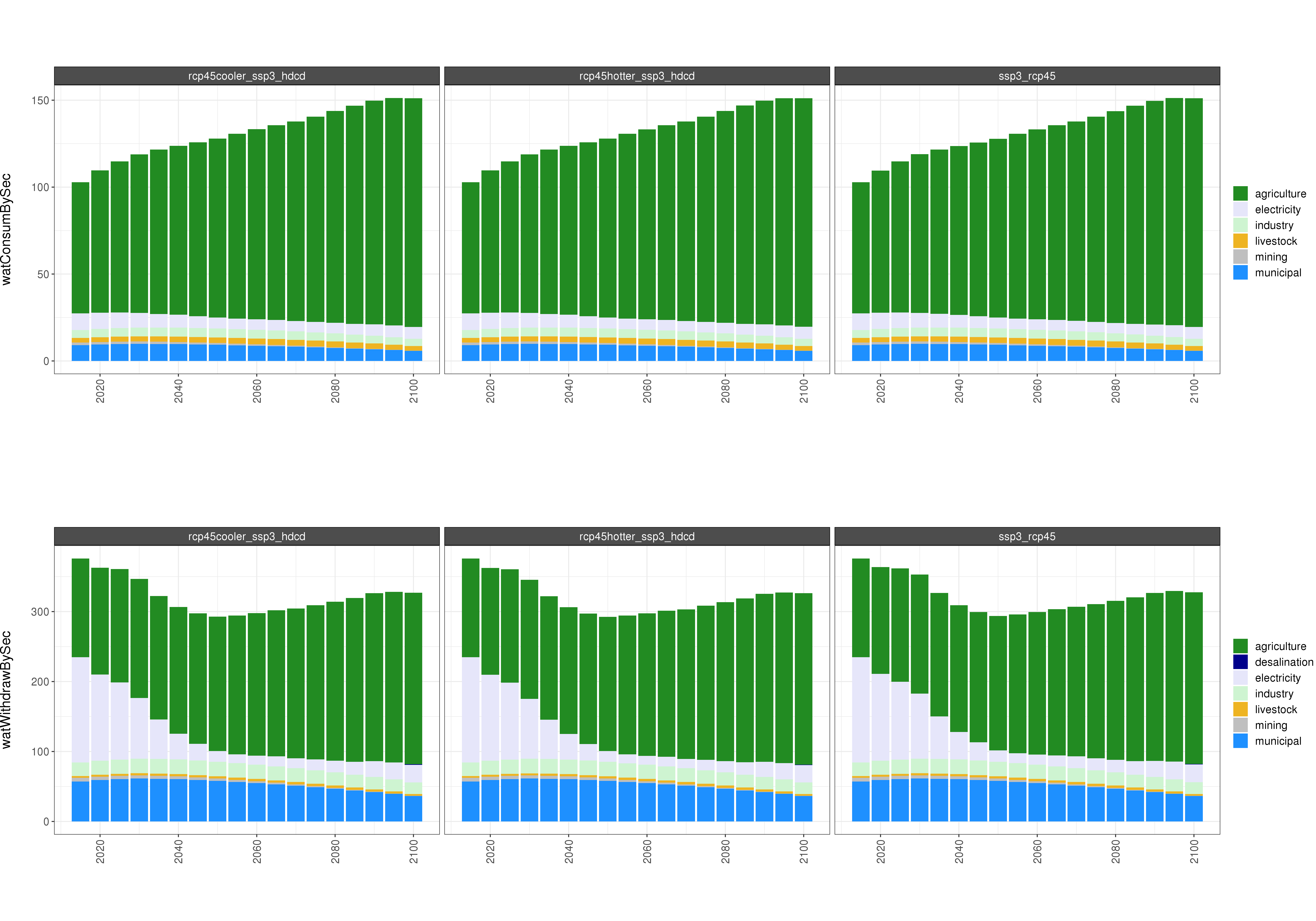
Absolute GCAM water outputs
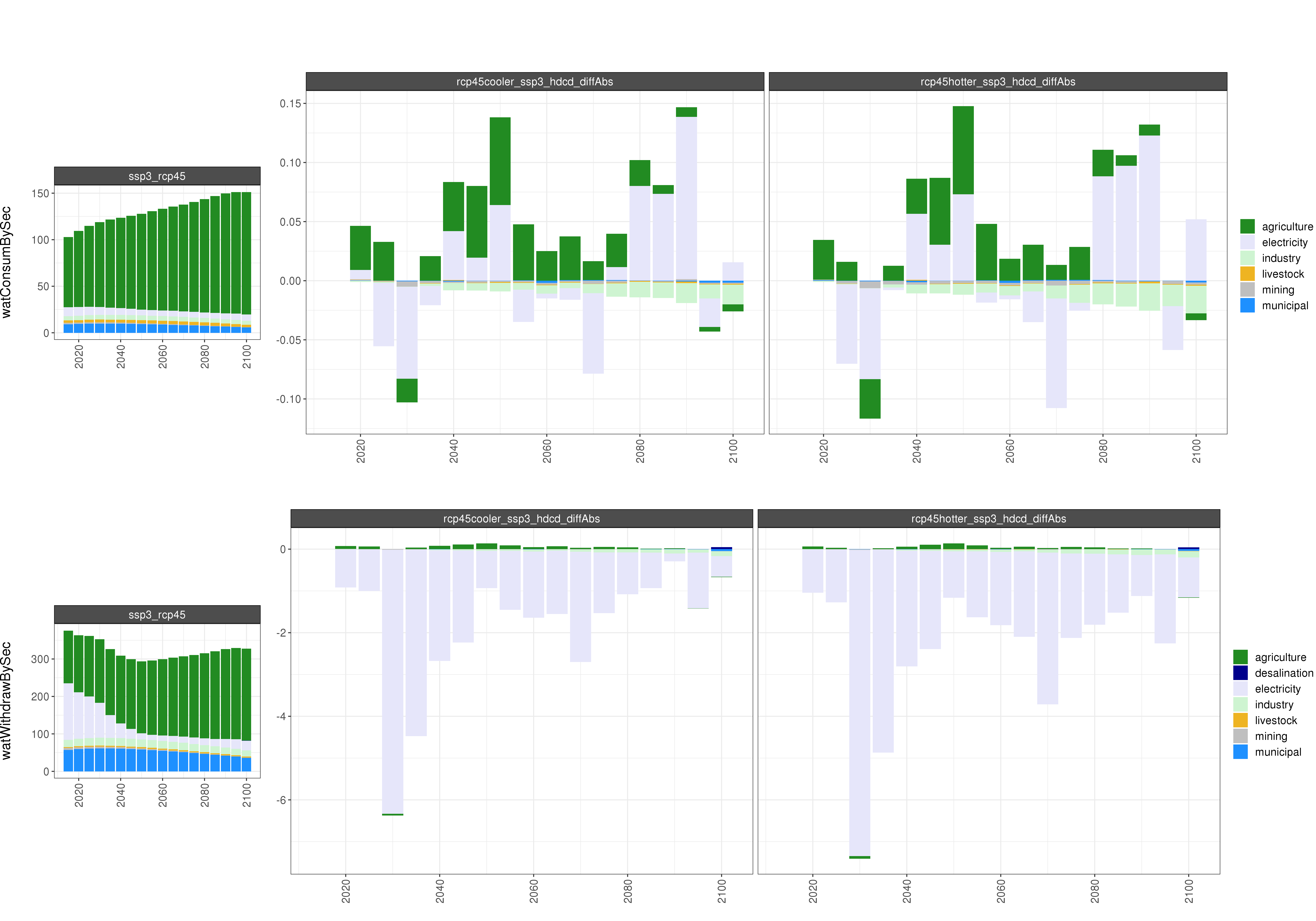
Comparison of GCAM water outputs
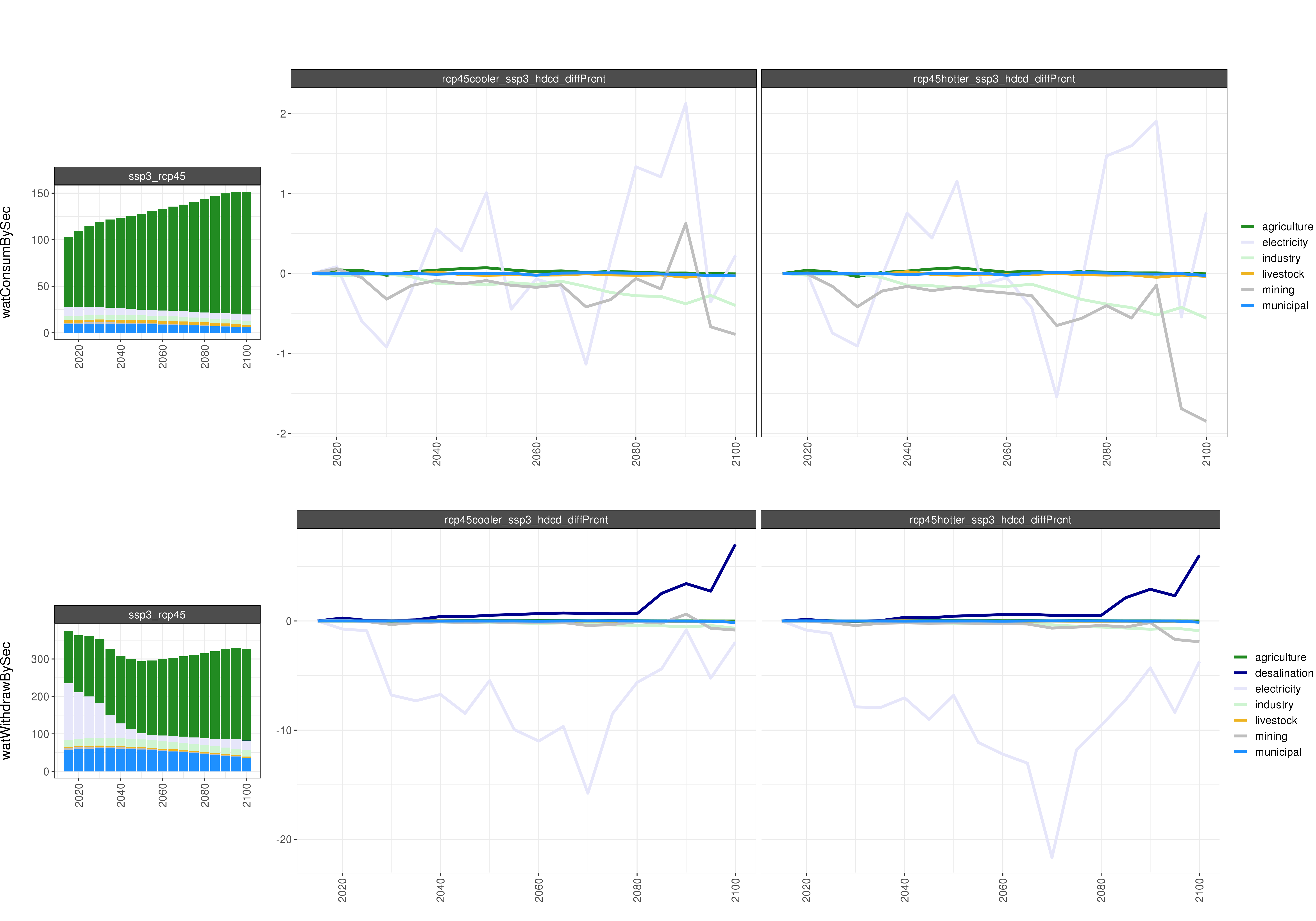
Comparison of GCAM water outputs % Diff
RCP8.5
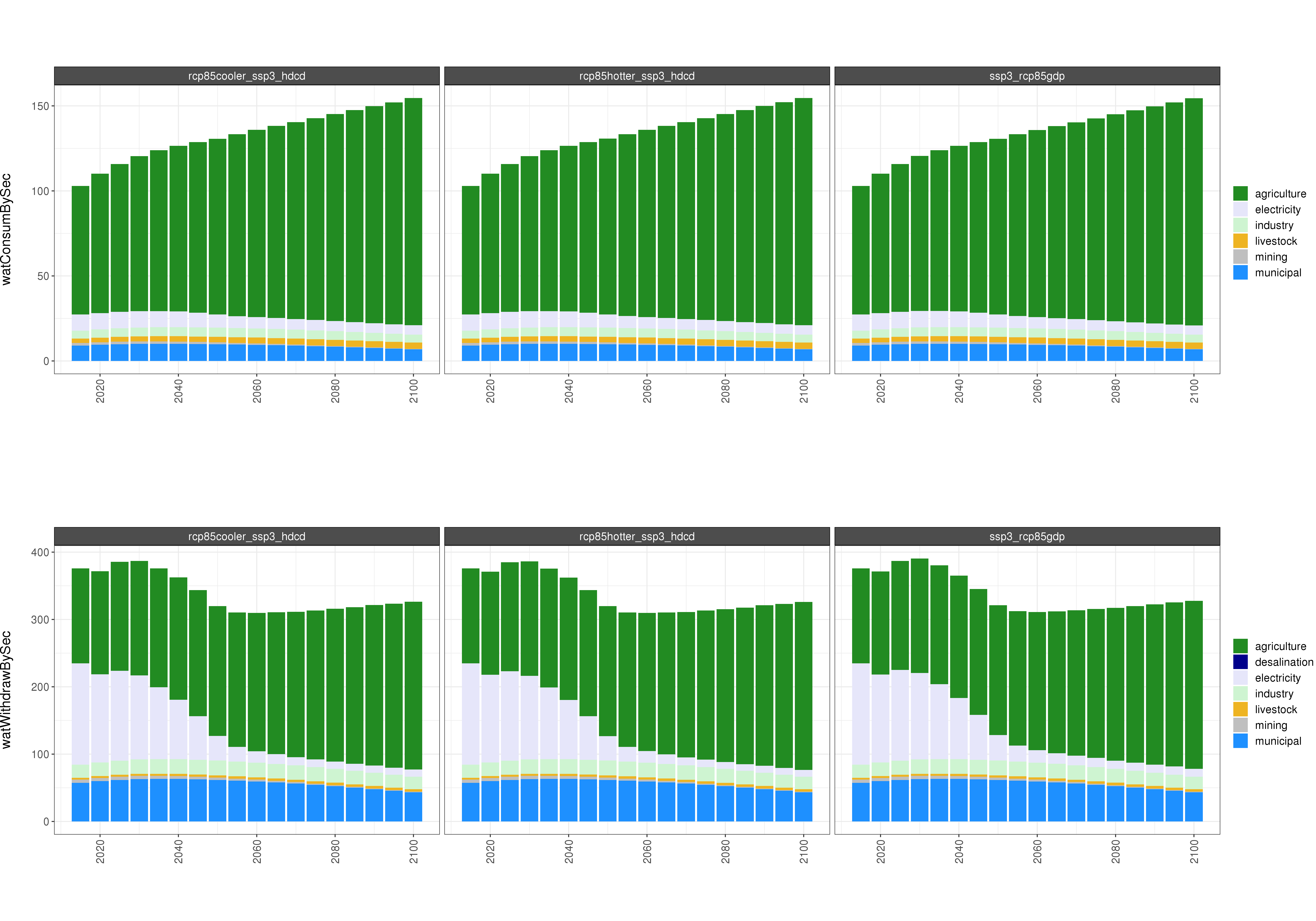
Absolute GCAM water outputs
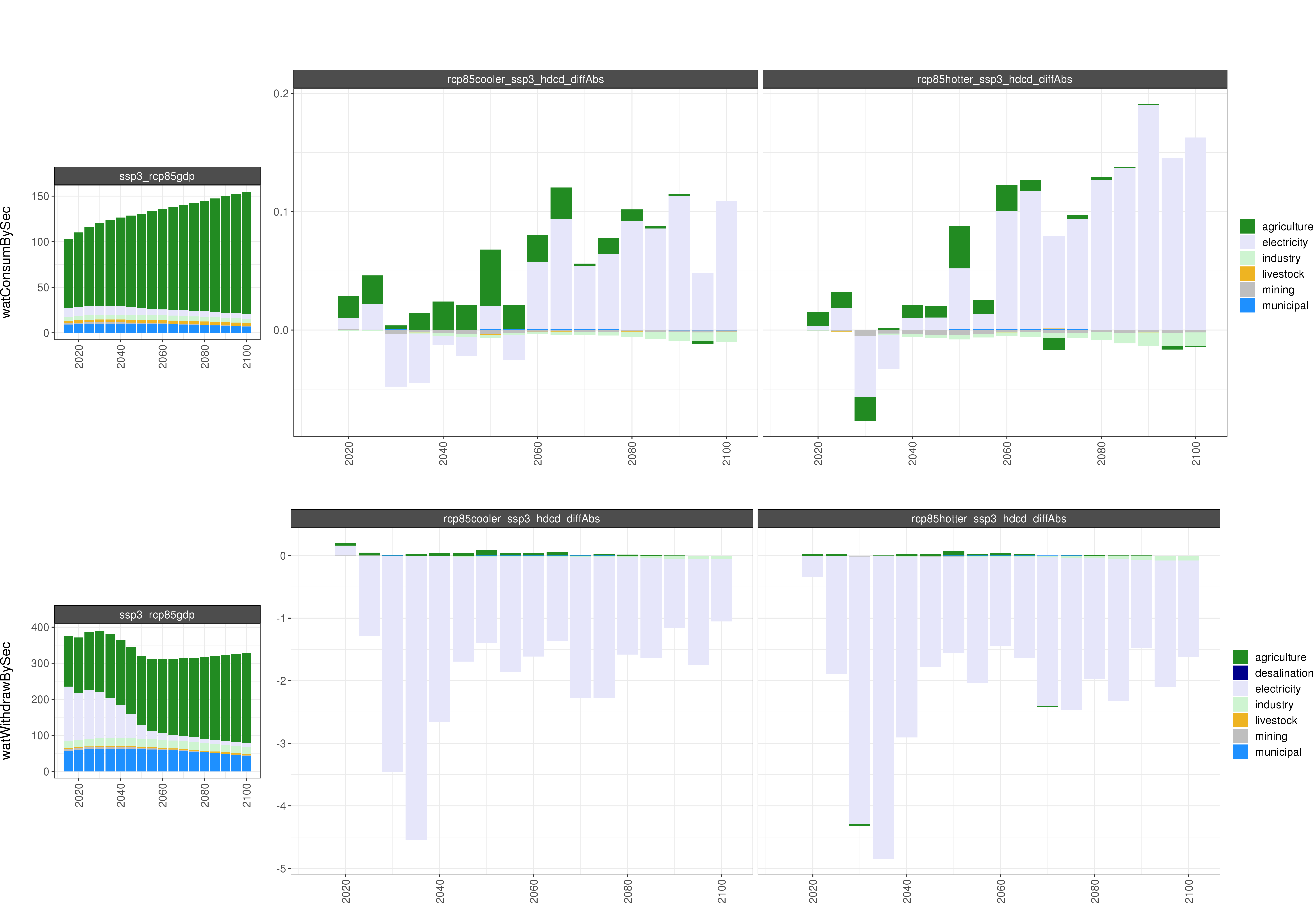
Comparison of GCAM water outputs
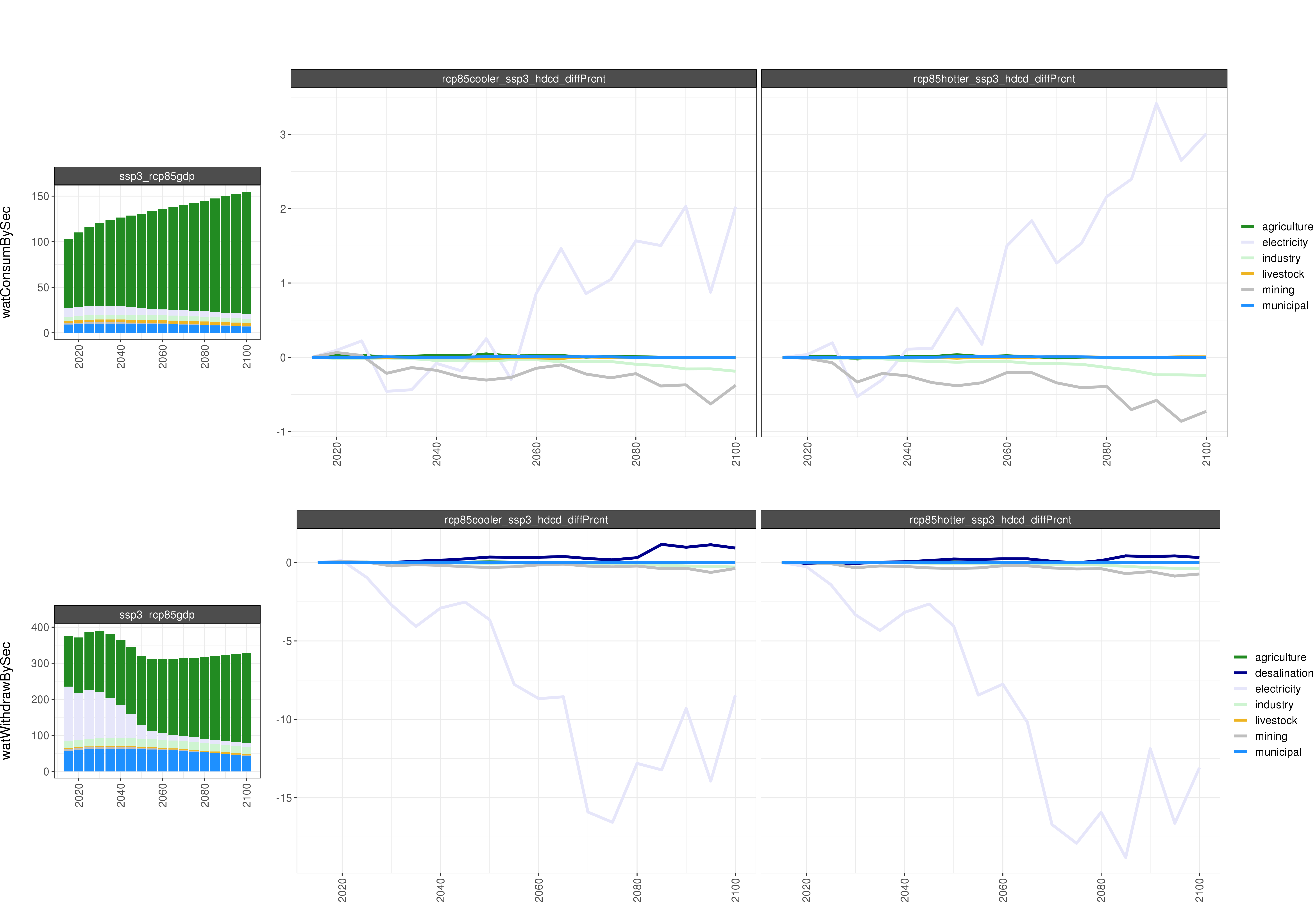
Comparison of GCAM water outputs % Diff
Energy
RCP4.5
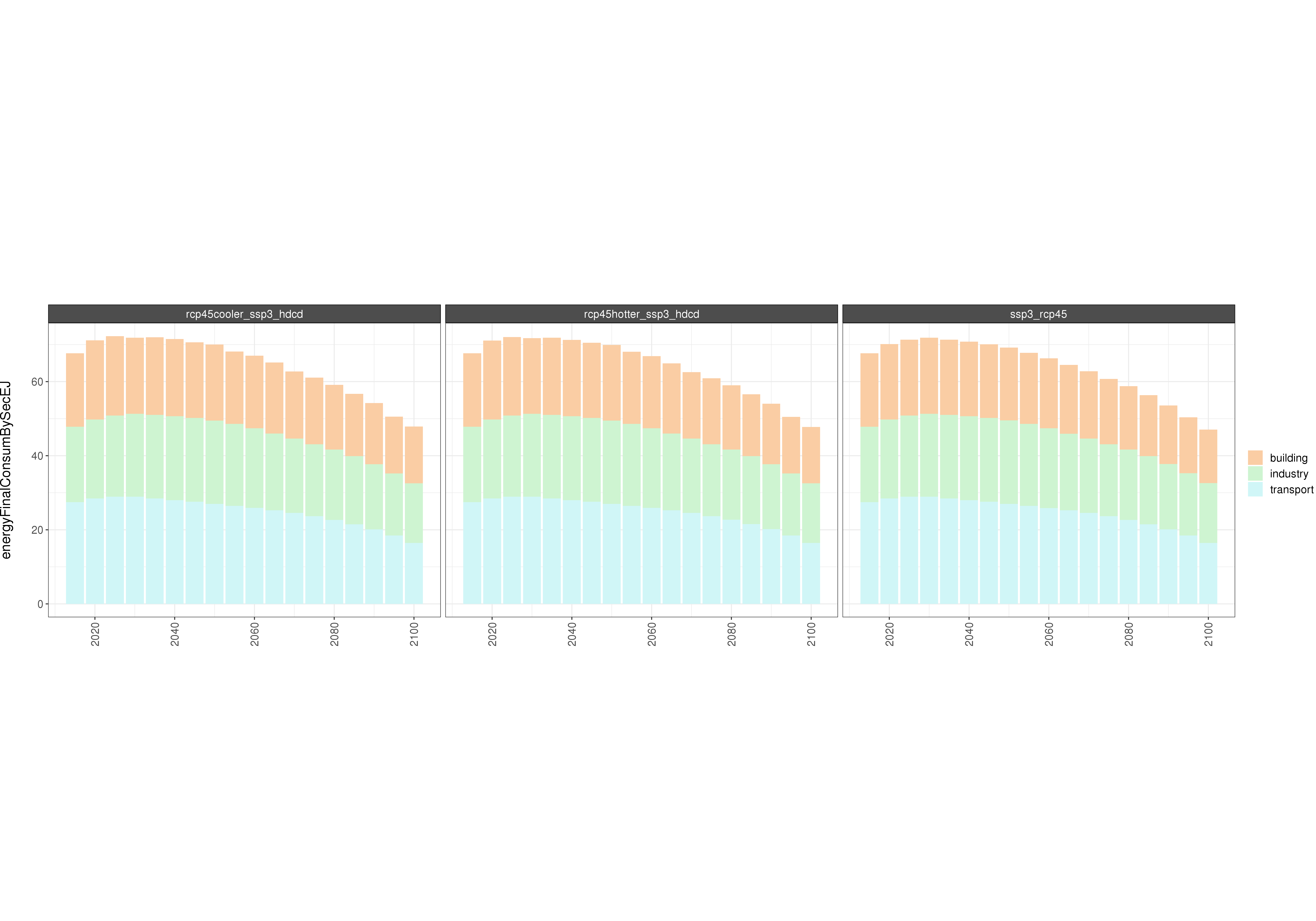
Absolute GCAM energy outputs
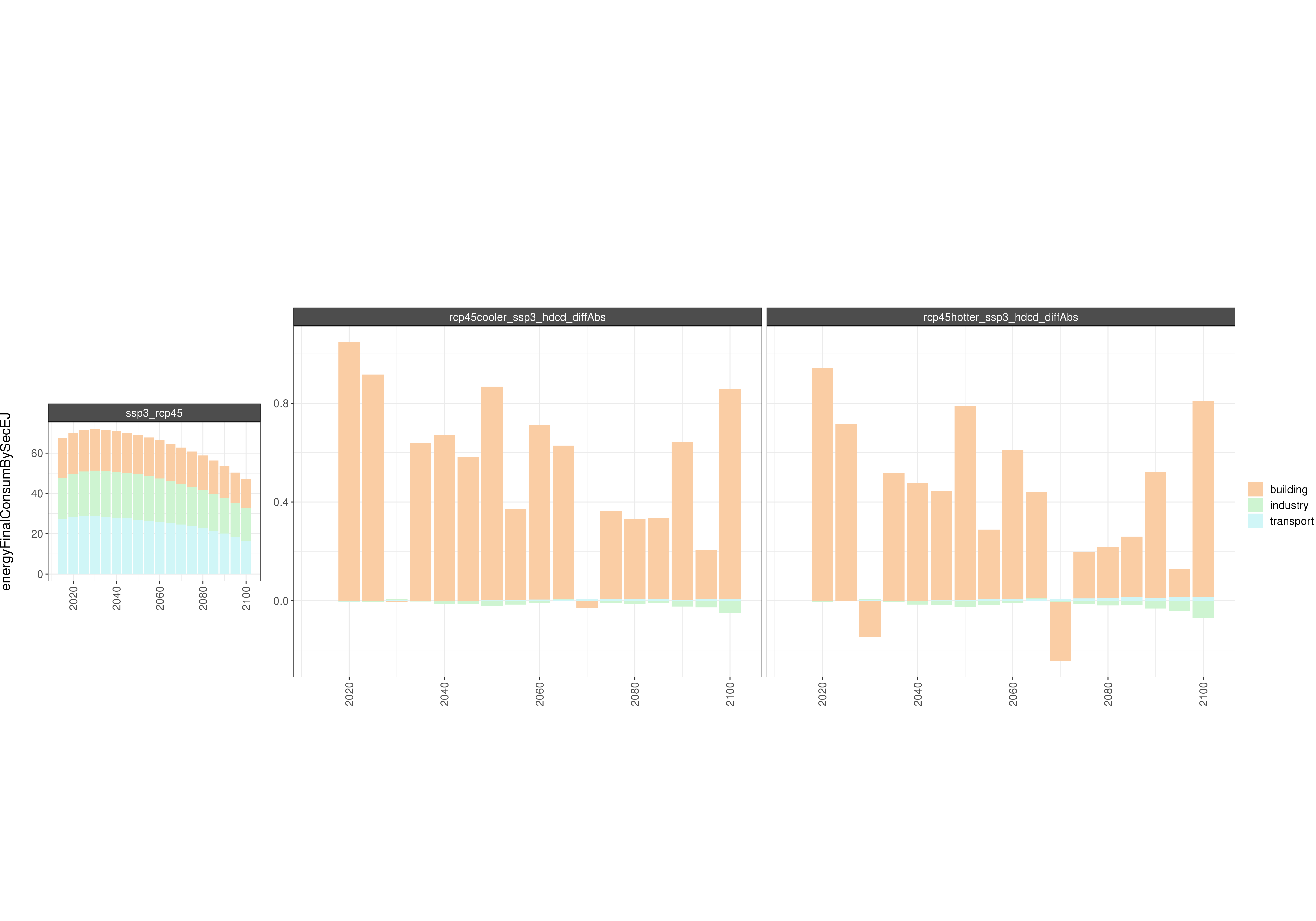
Comparison of GCAM energy outputs
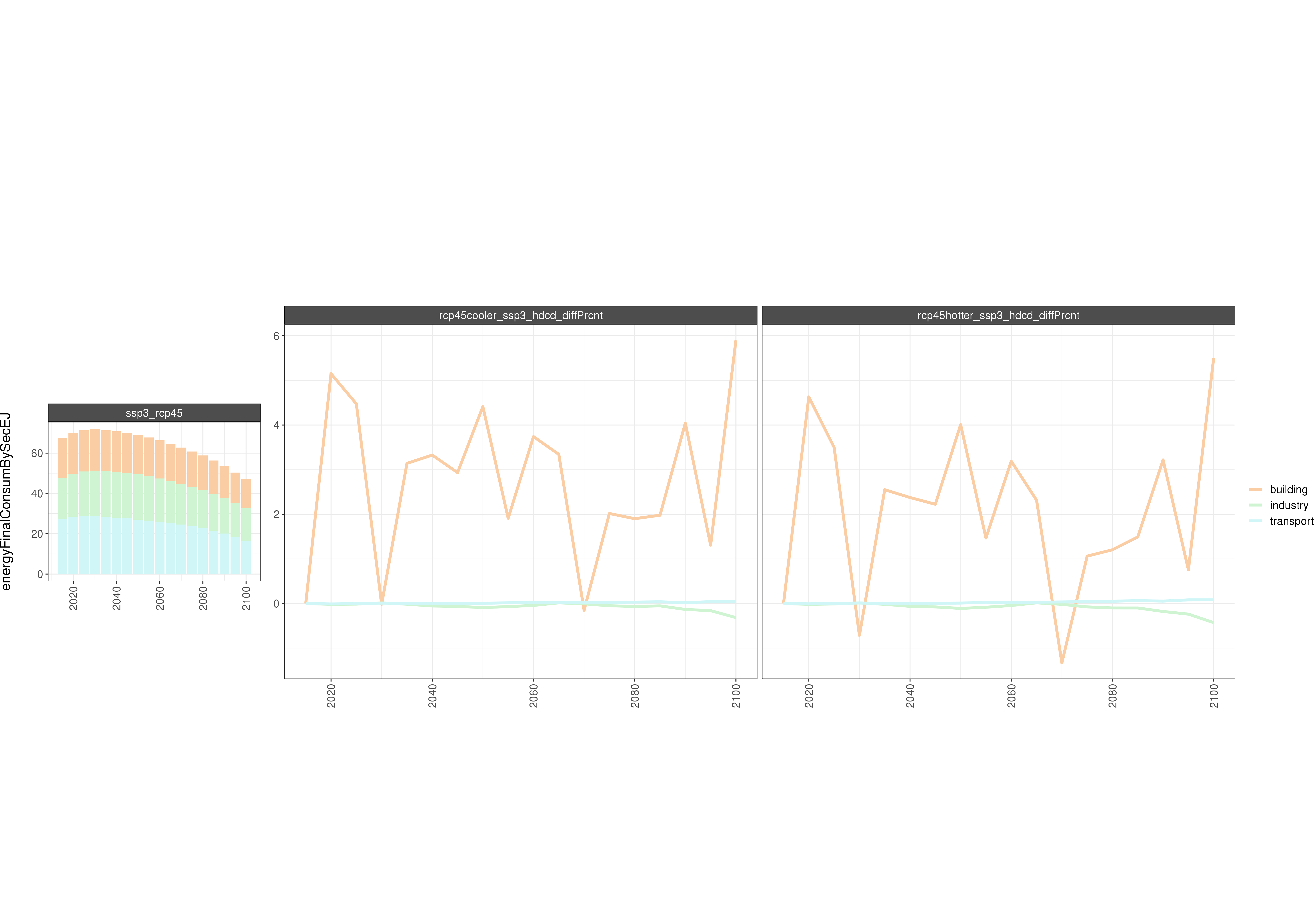
Comparison of GCAM energy outputs % Diff
RCP8.5
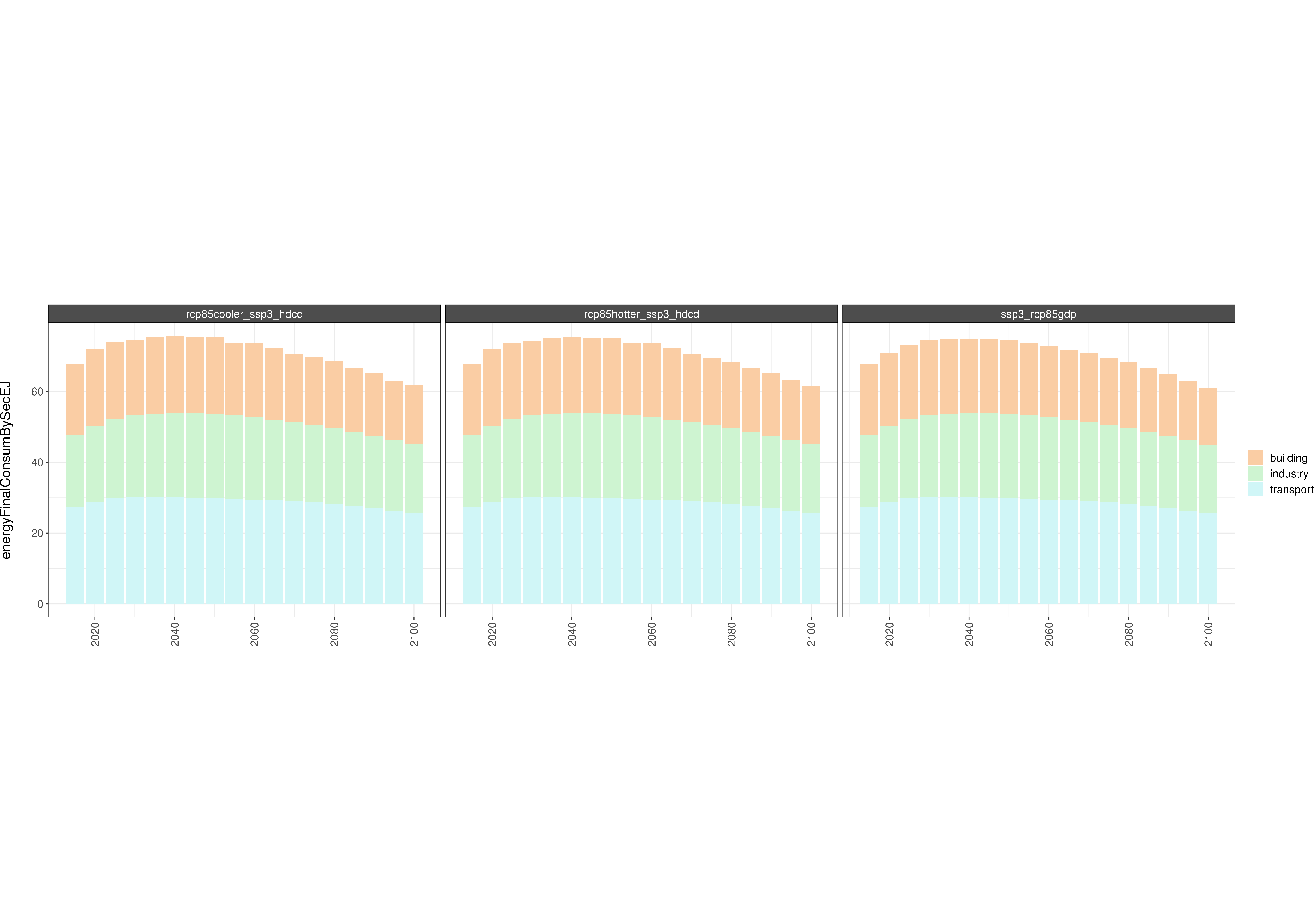
Absolute GCAM energy outputs
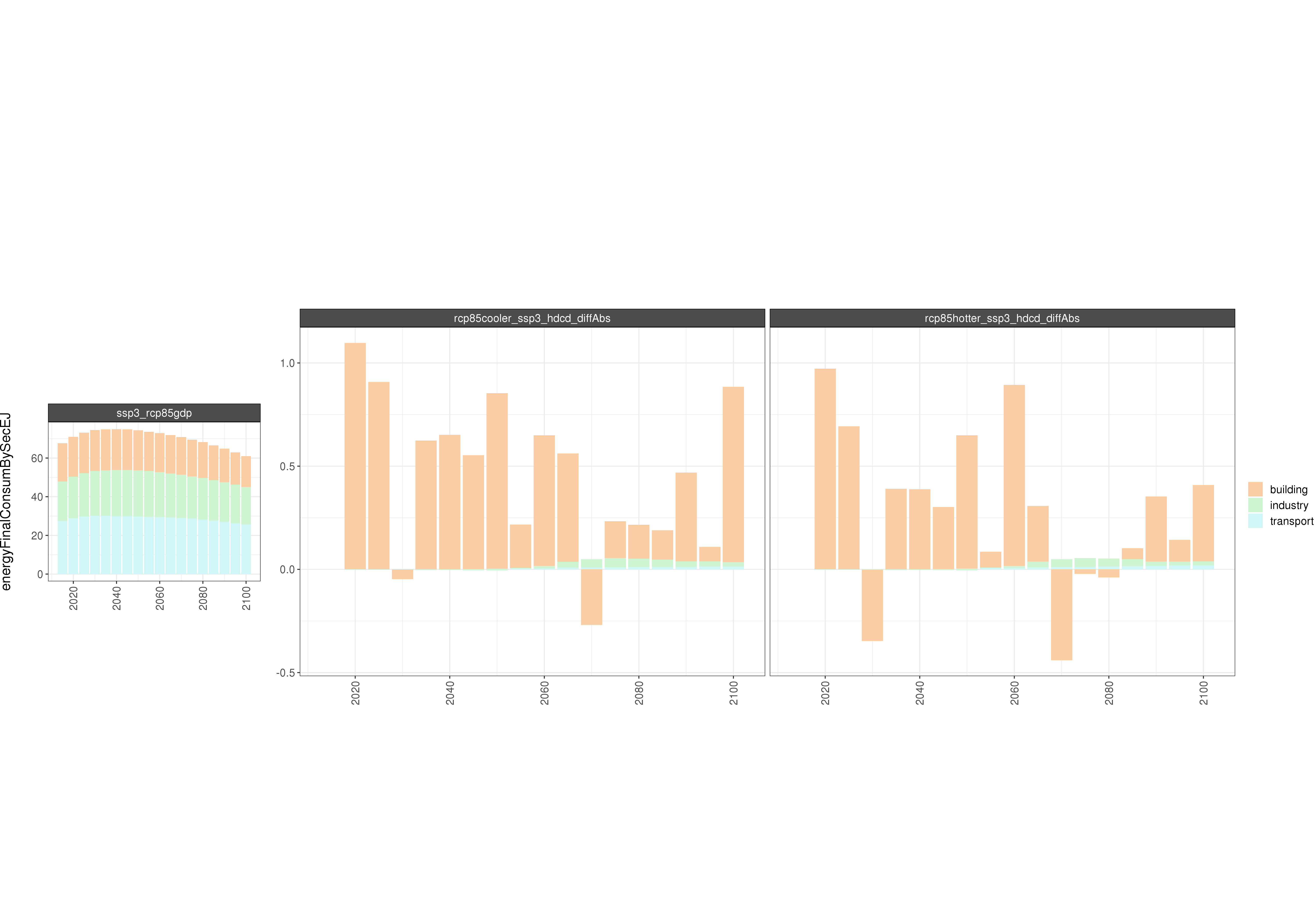
Comparison of GCAM energy outputs
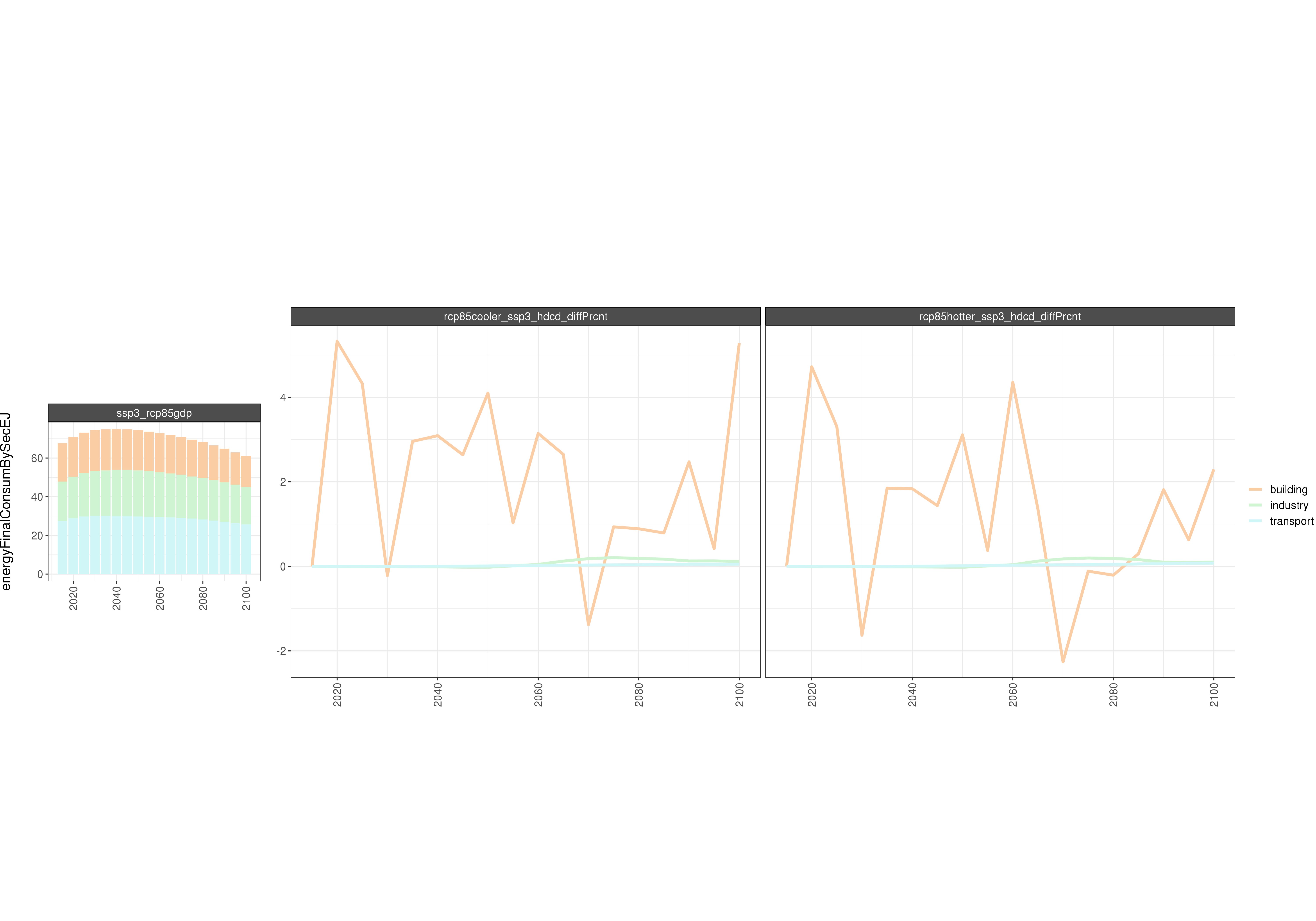
Comparison of GCAM energy outputs % Diff
Electricity
RCP4.5
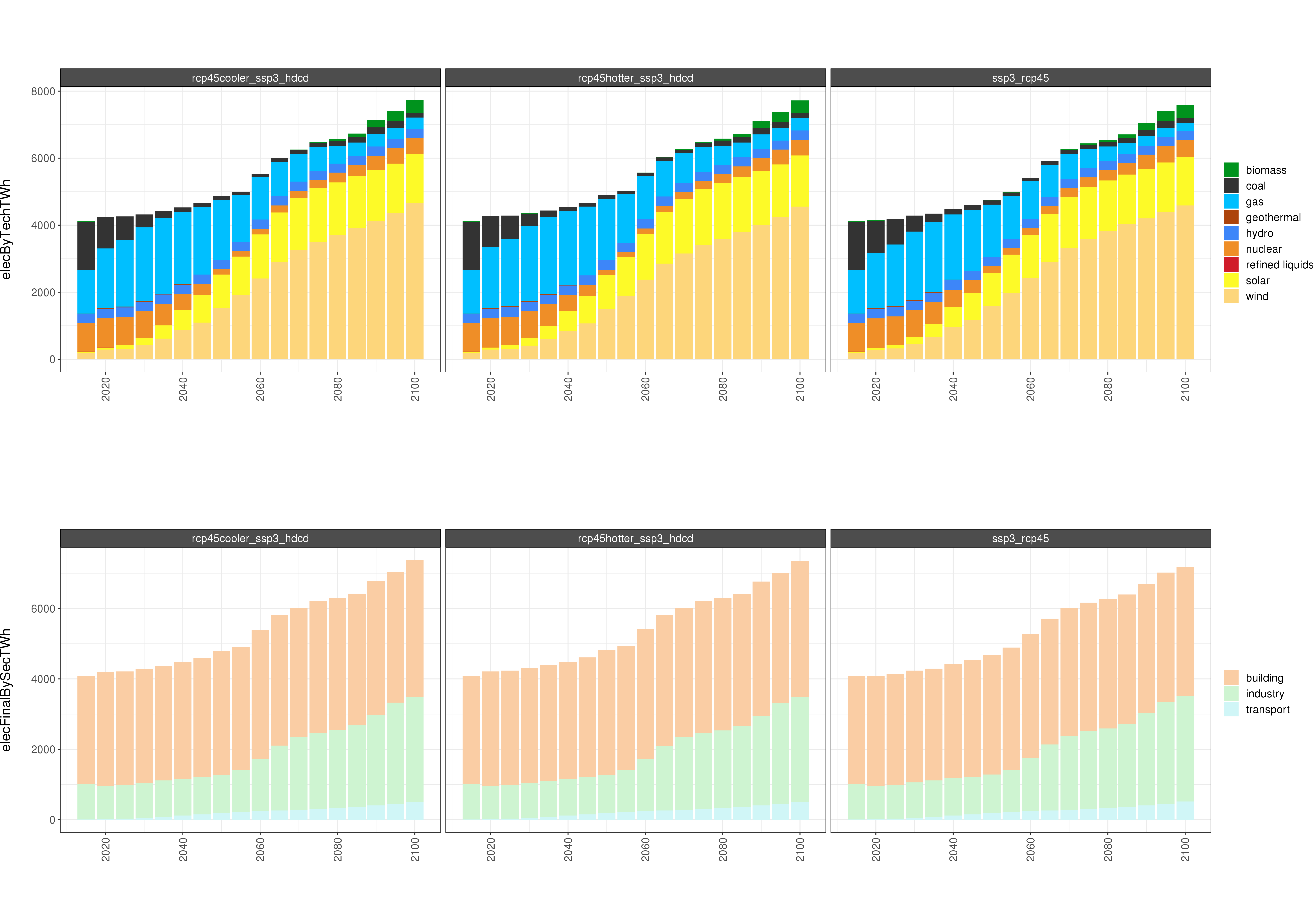
Absolute GCAM electricity outputs
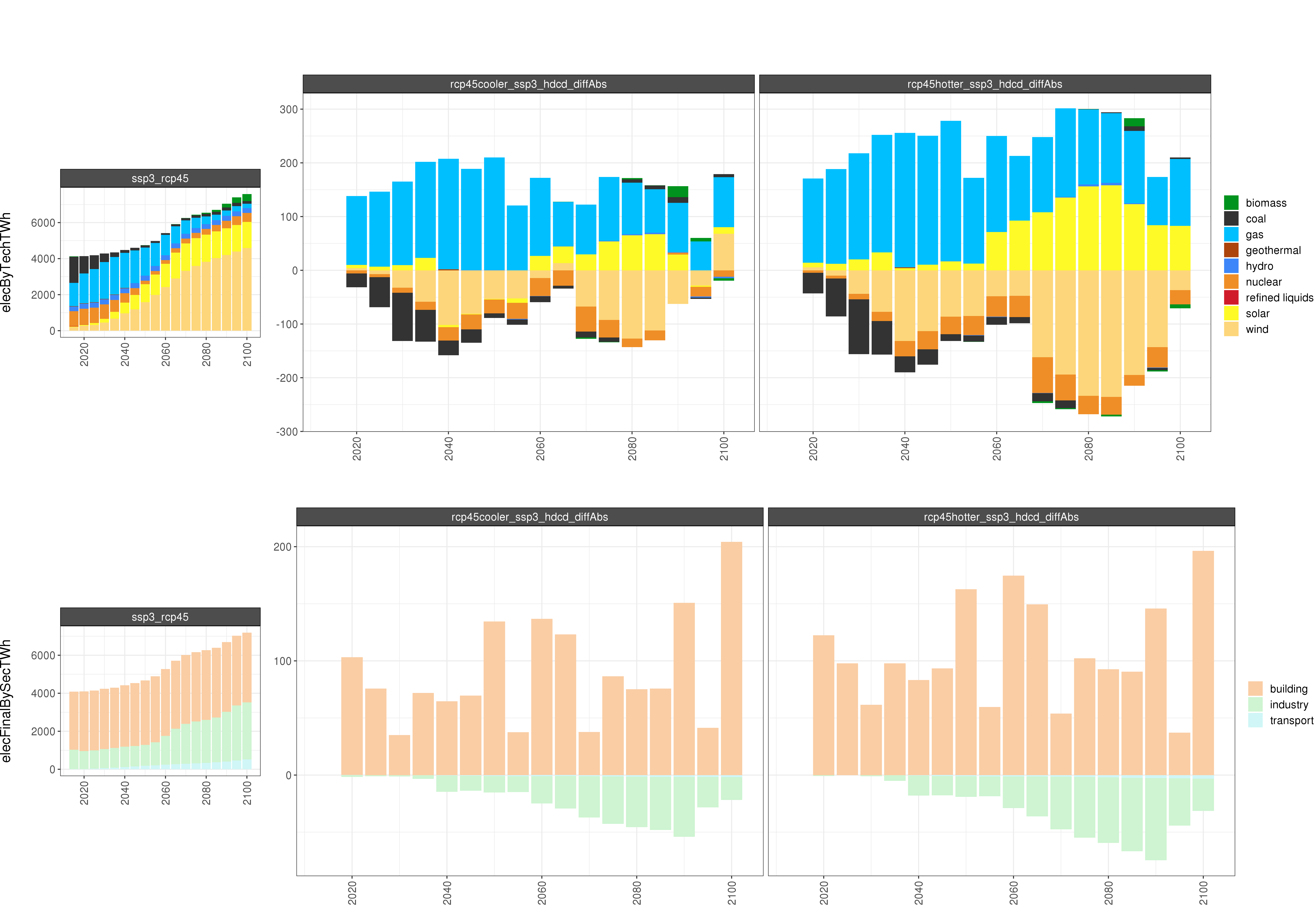
Comparison of GCAM electricity outputs
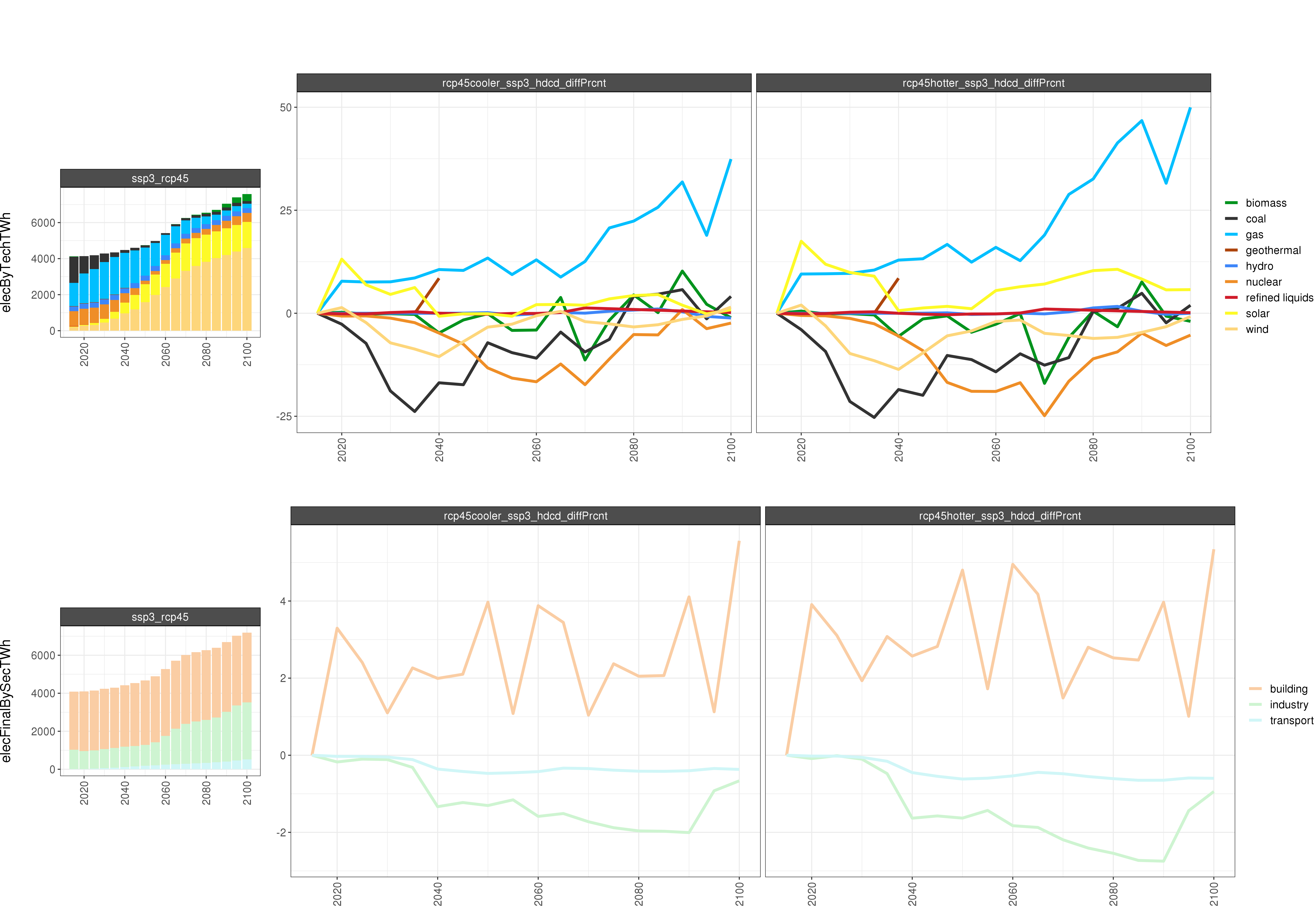
Comparison of GCAM electricity outputs % Diff
RCP8.5
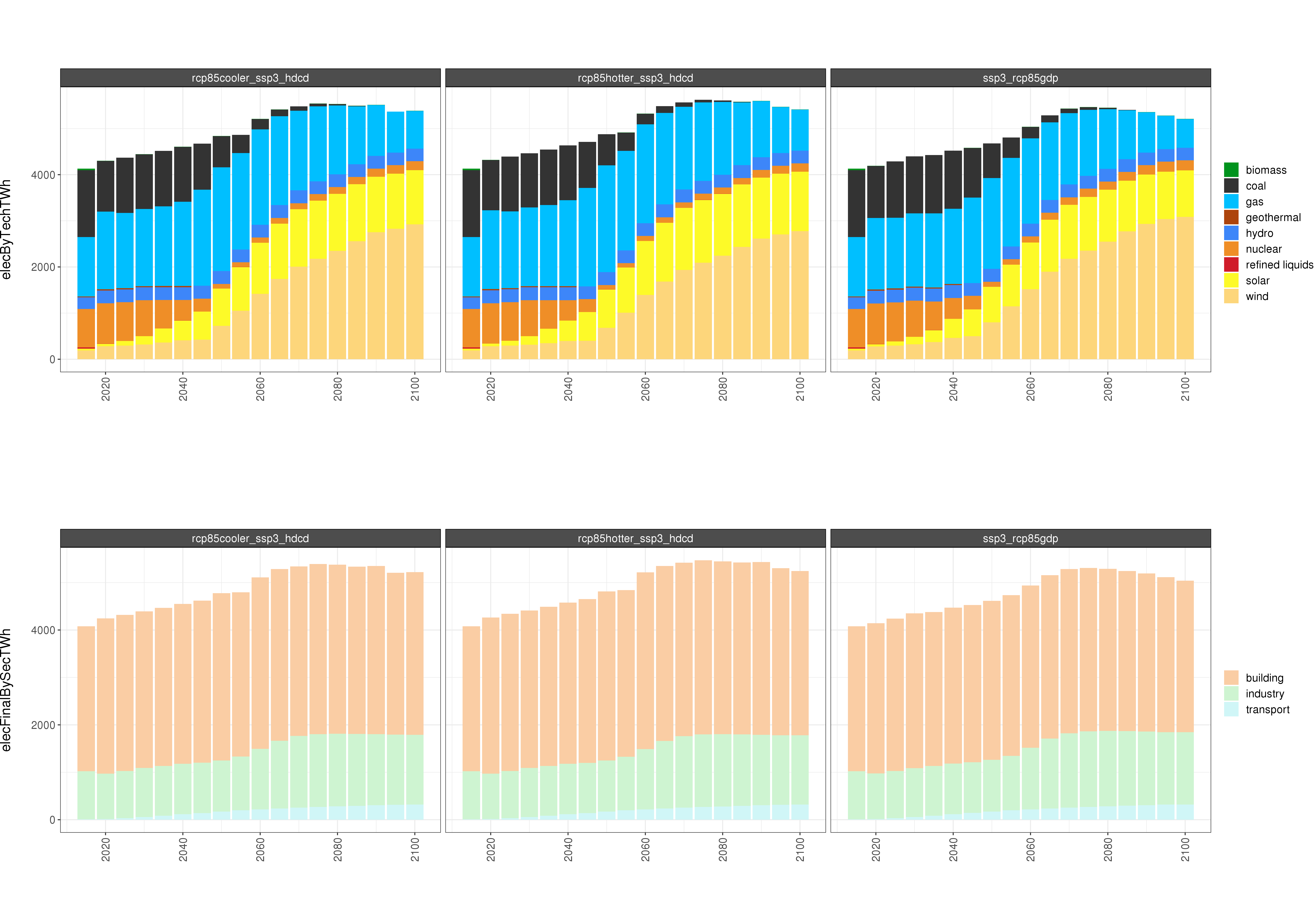
Absolute GCAM electricity outputs
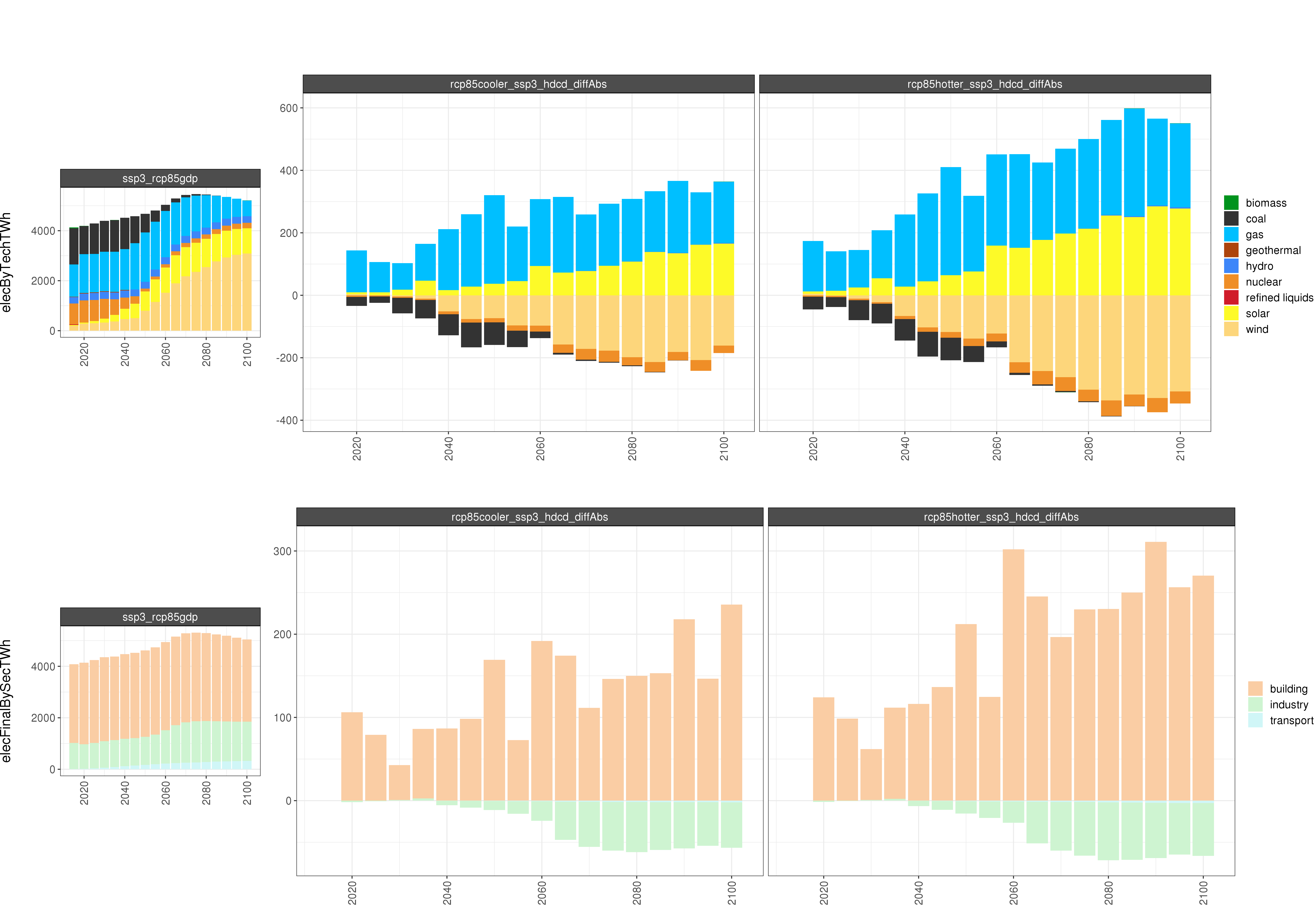
Comparison of GCAM electricity outputs
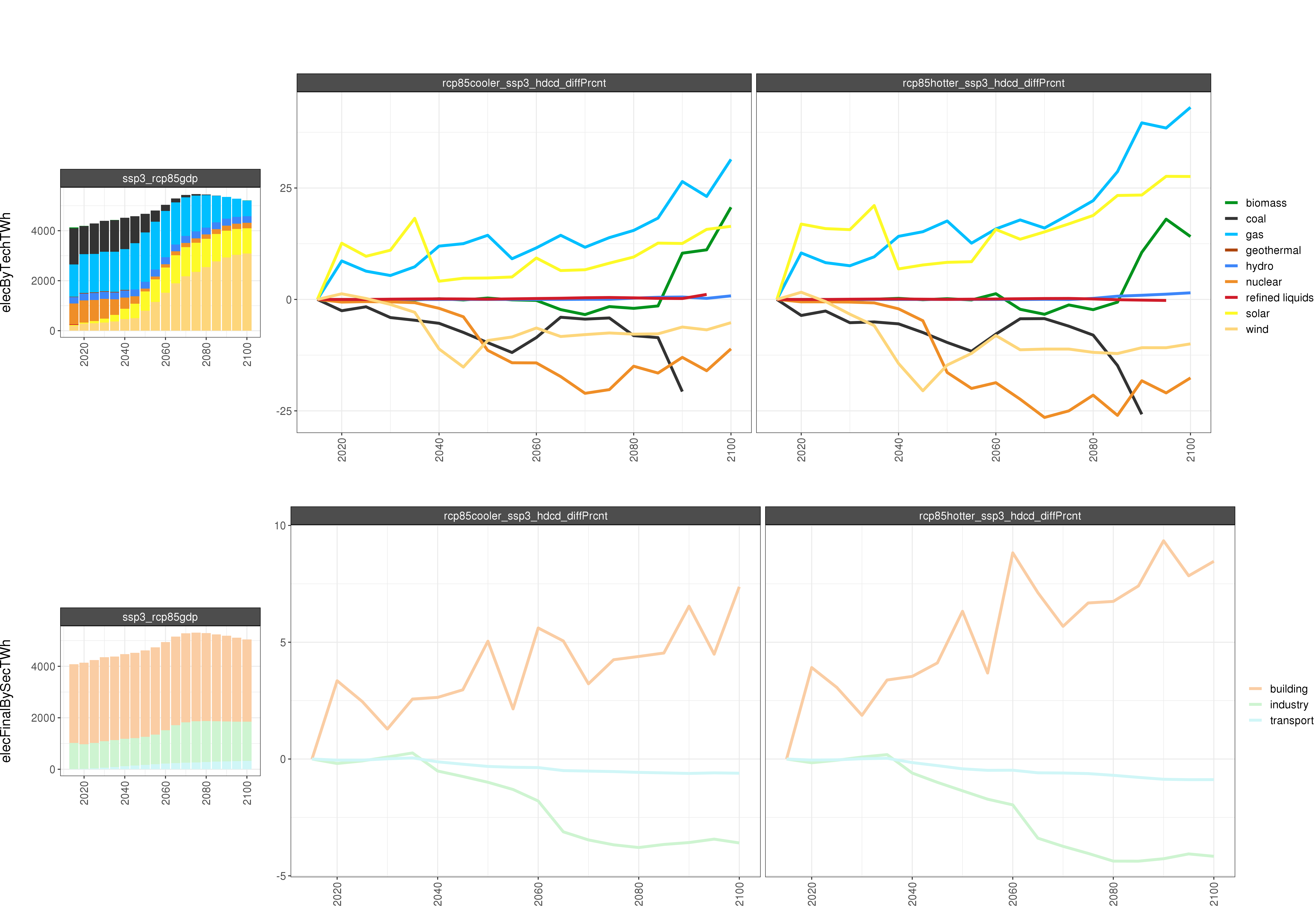
Comparison of GCAM electricity outputs % Diff
AGLU
RCP4.5
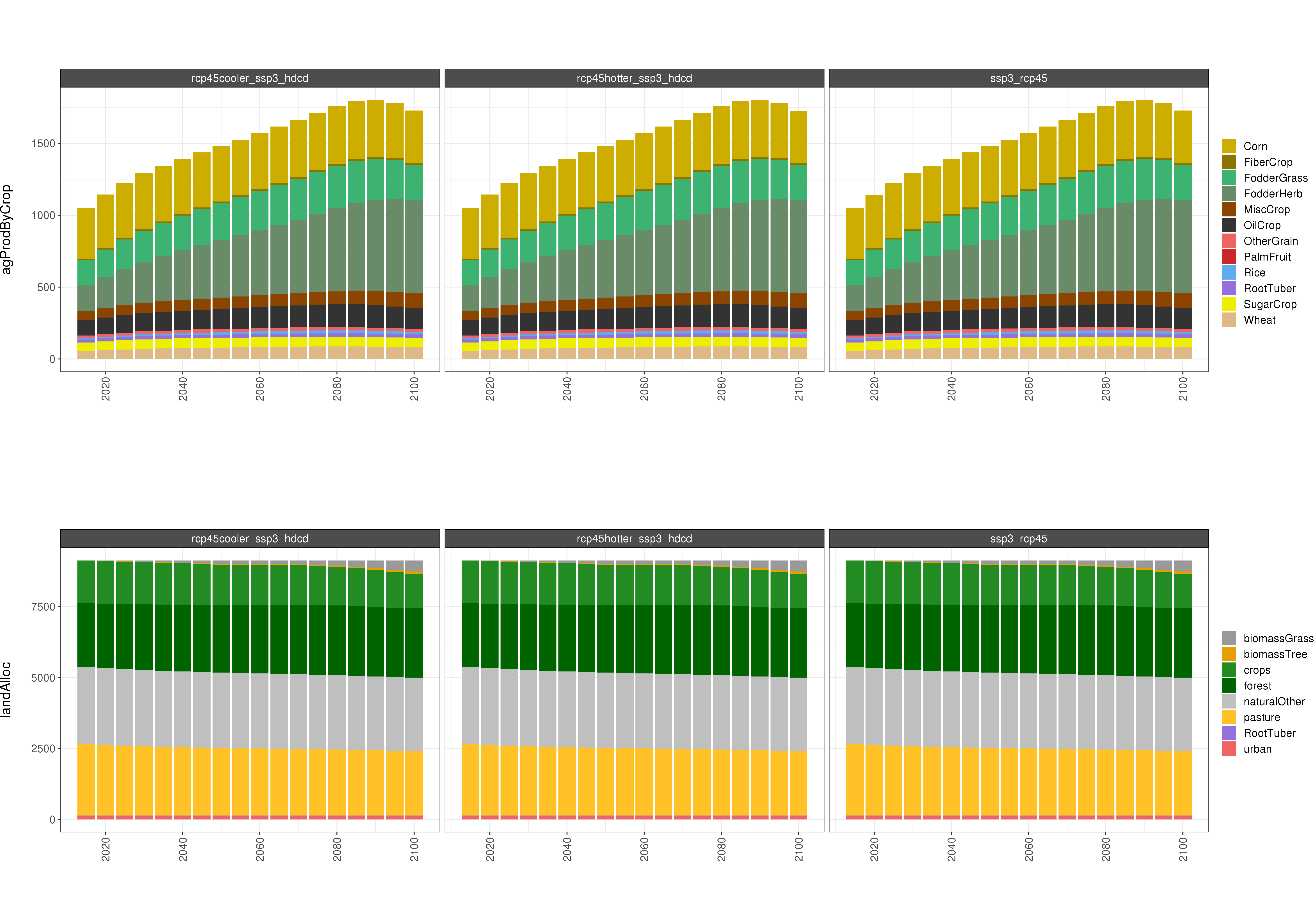
Absolute GCAM AGLU outputs
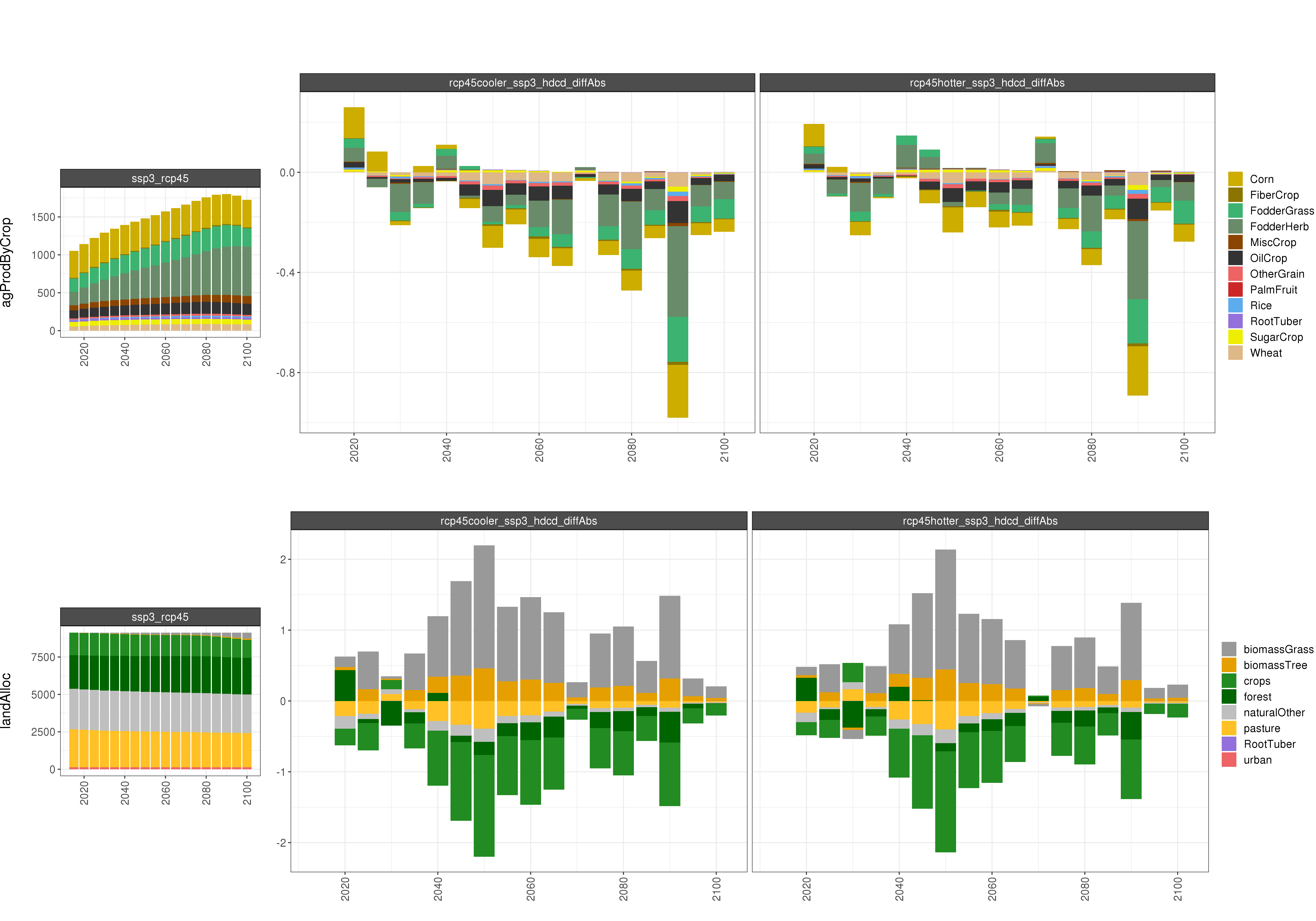
Comparison of GCAM AGLU outputs - absolute difference
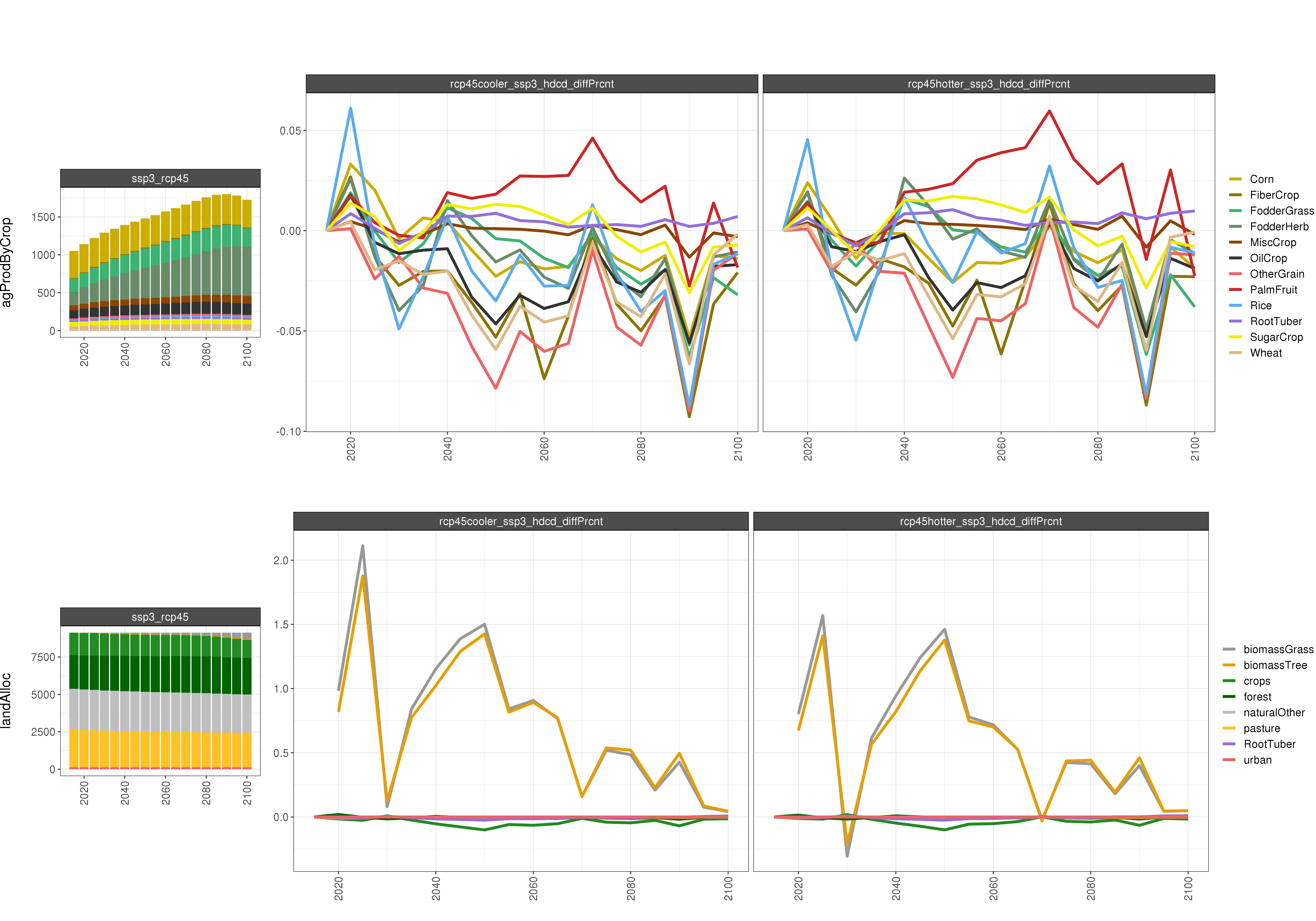
Comparison of GCAM AGLU outputs - percent difference
RCP8.5
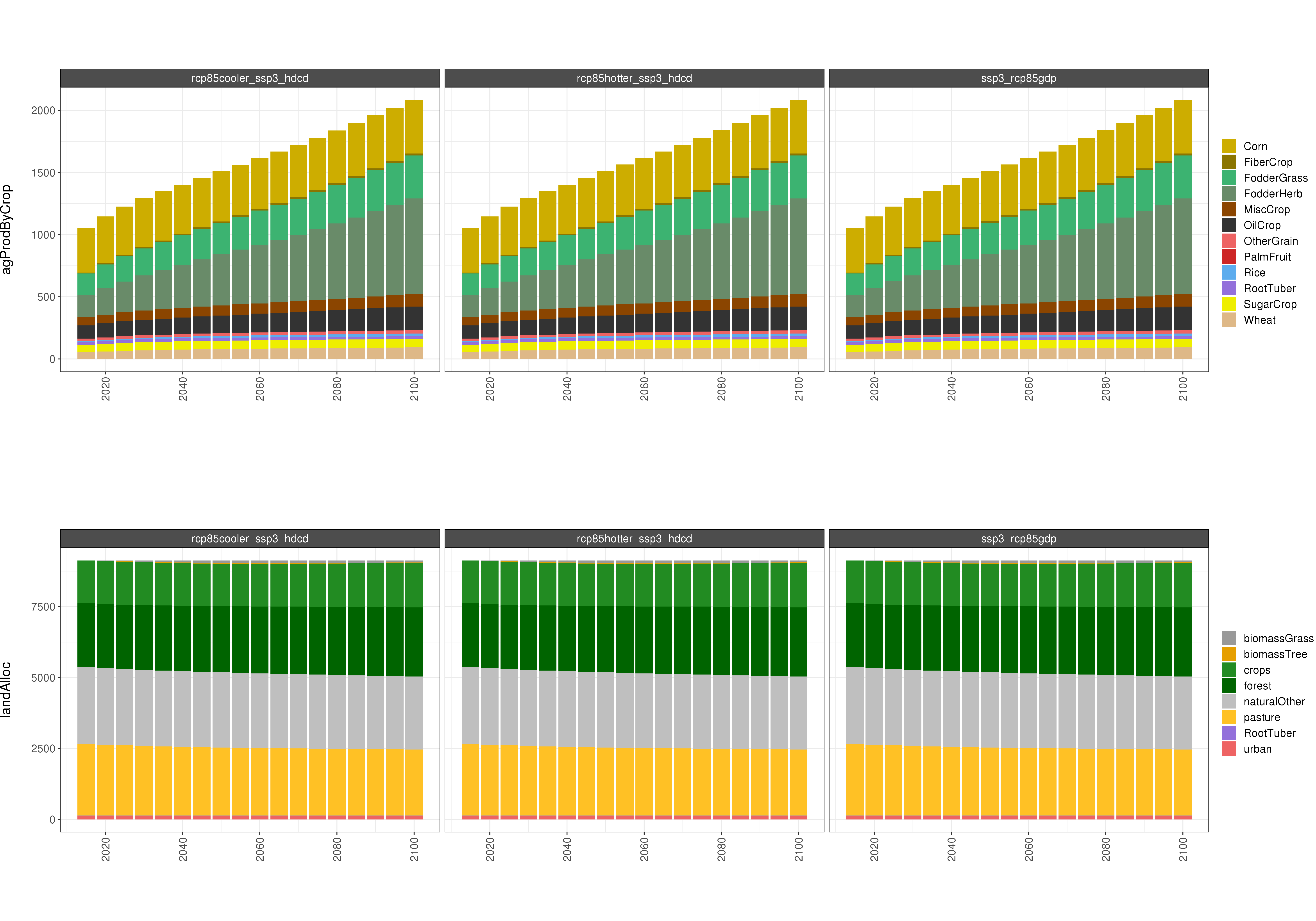
Absolute GCAM AGLU outputs
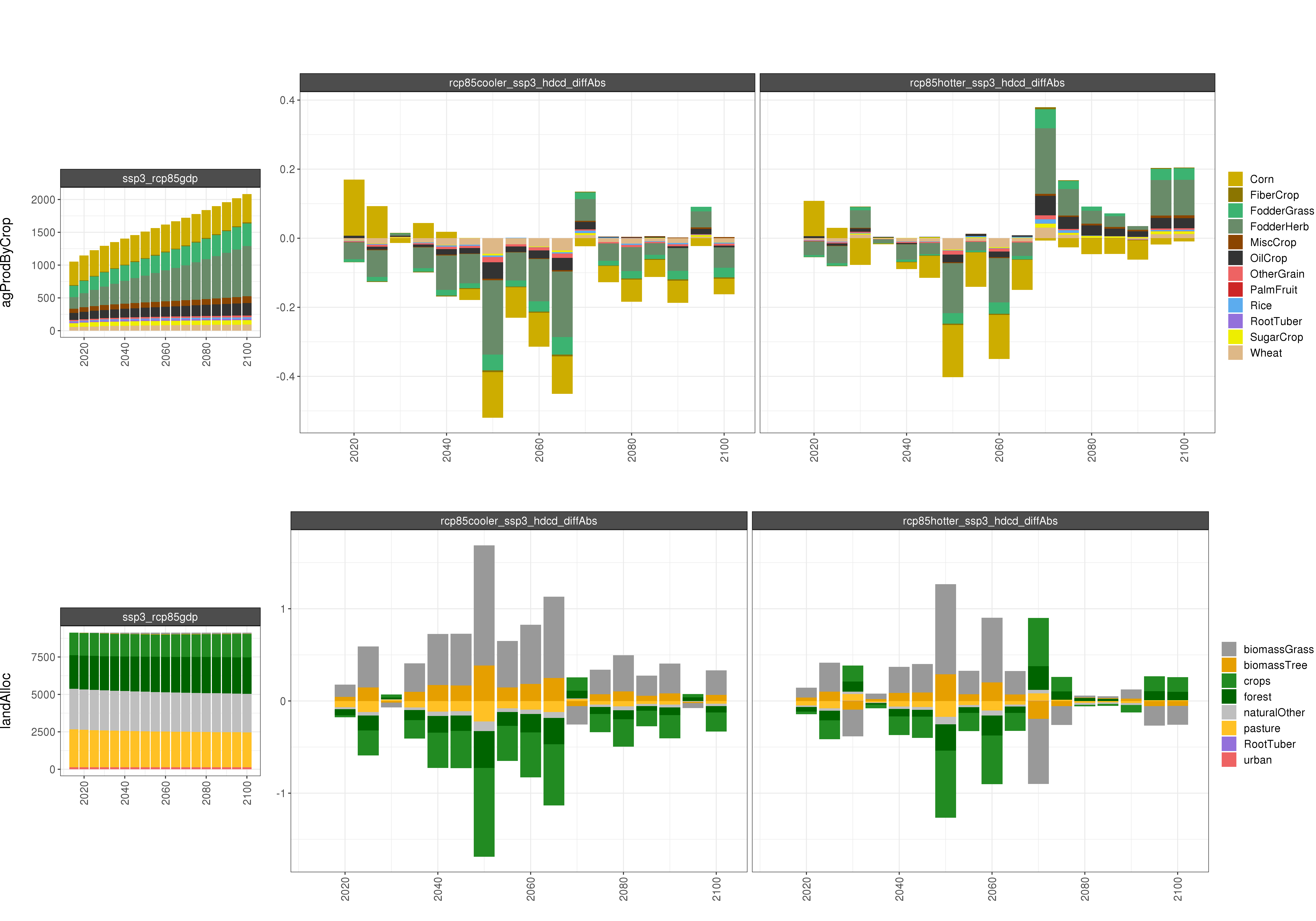
Comparison of GCAM AGLU outputs - absolute difference
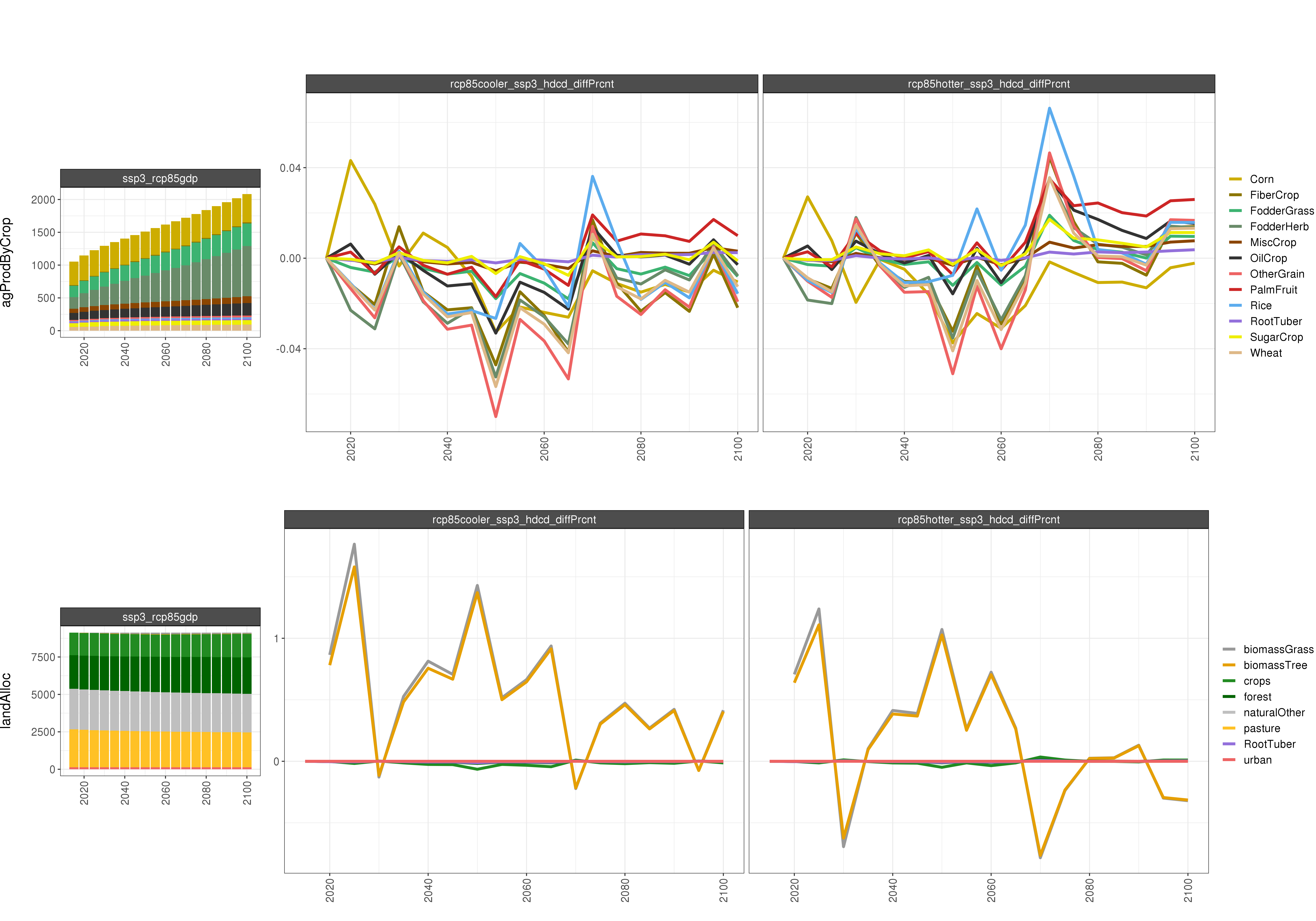
Comparison of GCAM AGLU outputs - percent difference
Emissions
RCP4.5
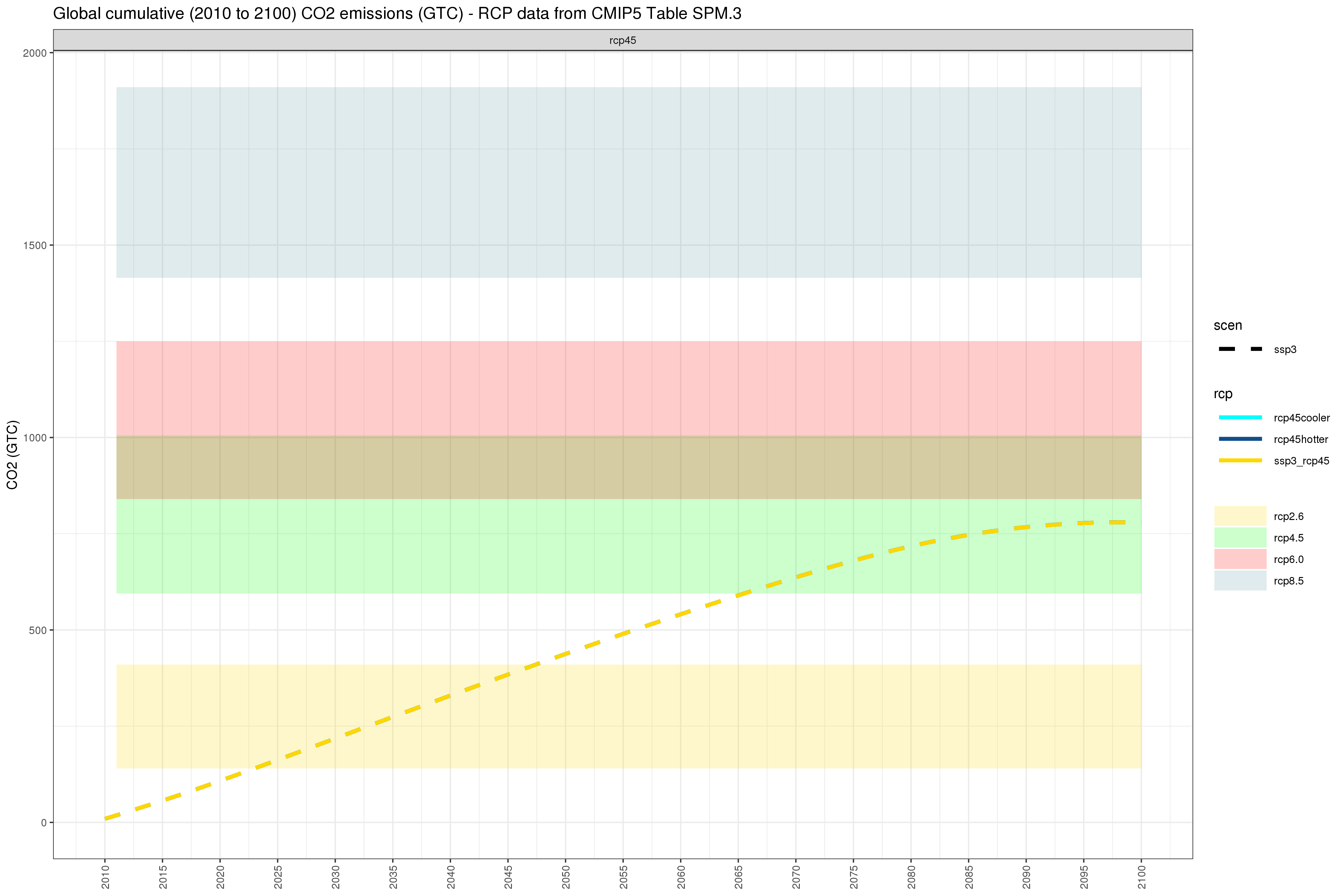
Cumulative global carbon emission pathways under different combinations of SSP3/SSP5 and RCP4.5/RCP8.5
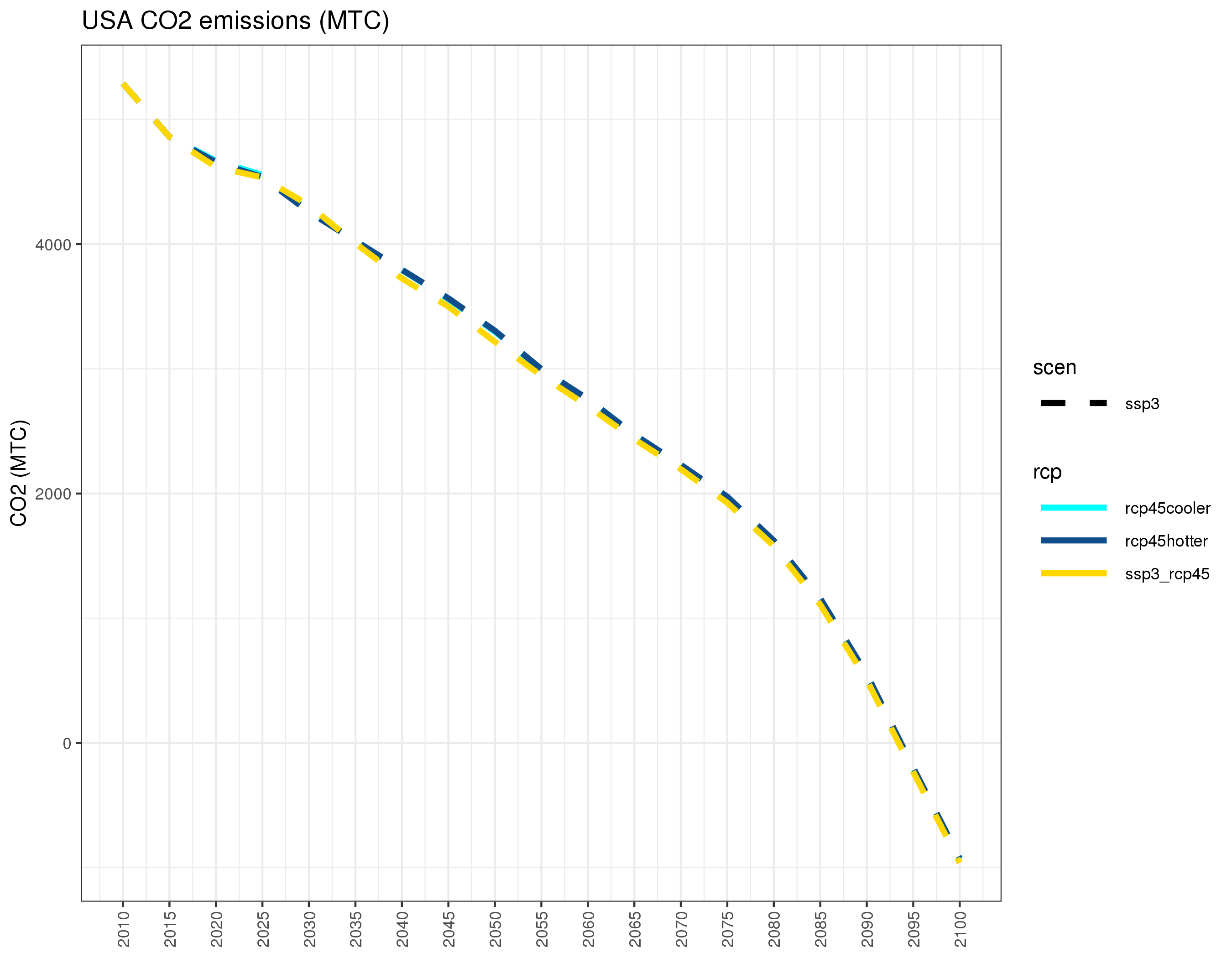
Annual US carbon emissions under different combinations of SSP3/SSP5 and RCP4.5/RCP8.5
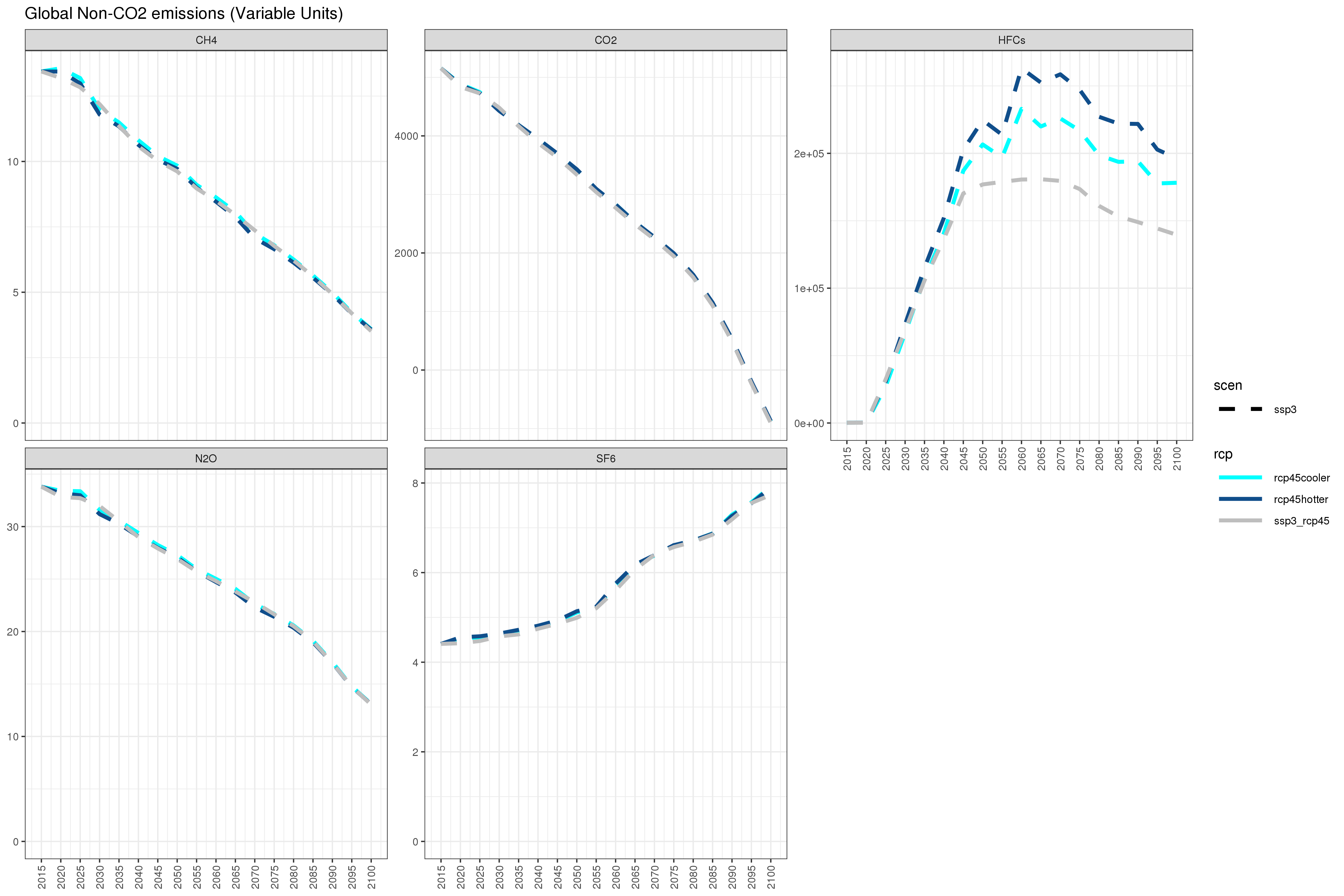
Annual global non-CO2 emissions under different combinations of SSP3/SSP5 and RCP4.5/RCP8.5
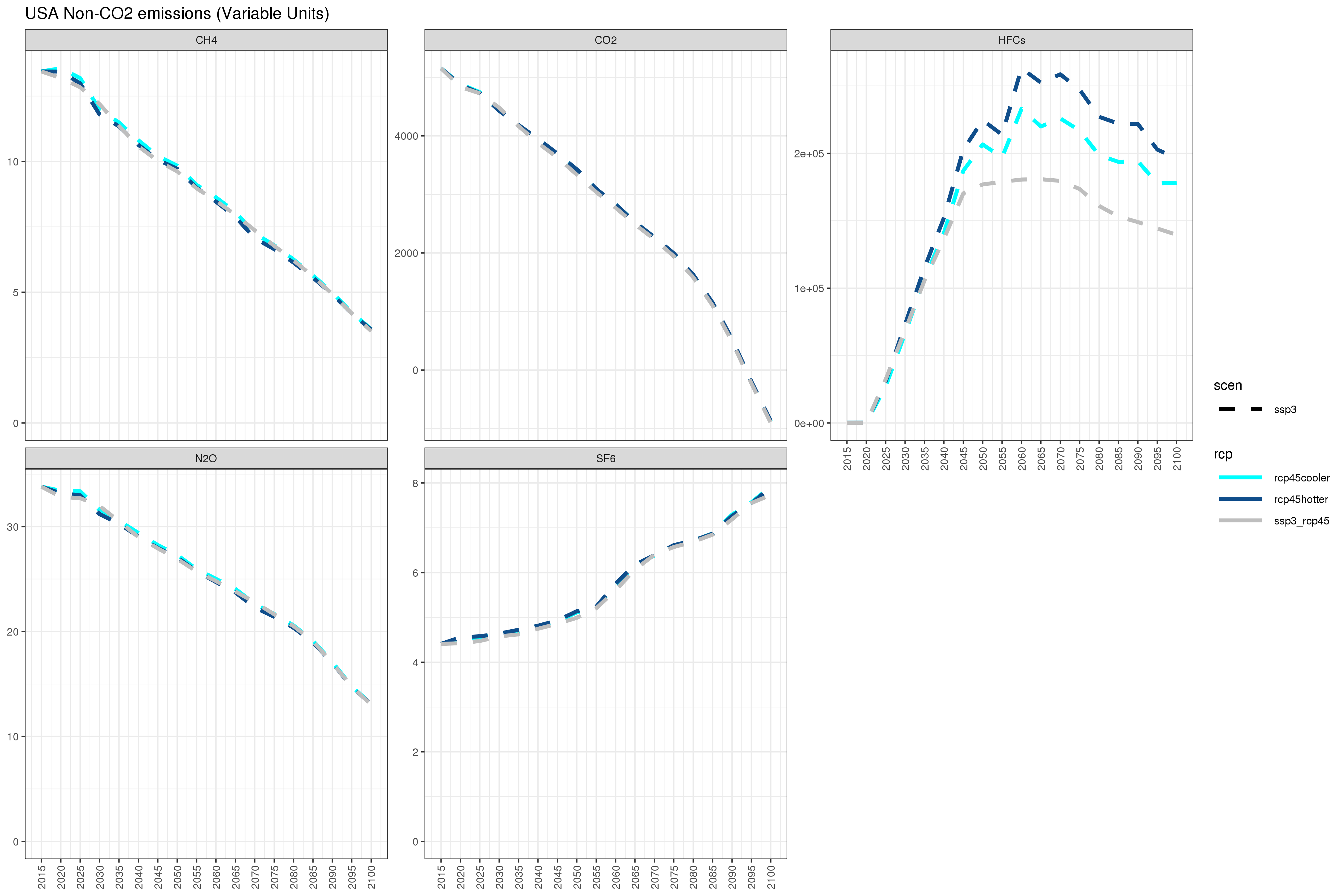
Annual US non-CO2 emissions under different combinations of SSP3/SSP5 and RCP4.5/RCP8.5
RCP8.5
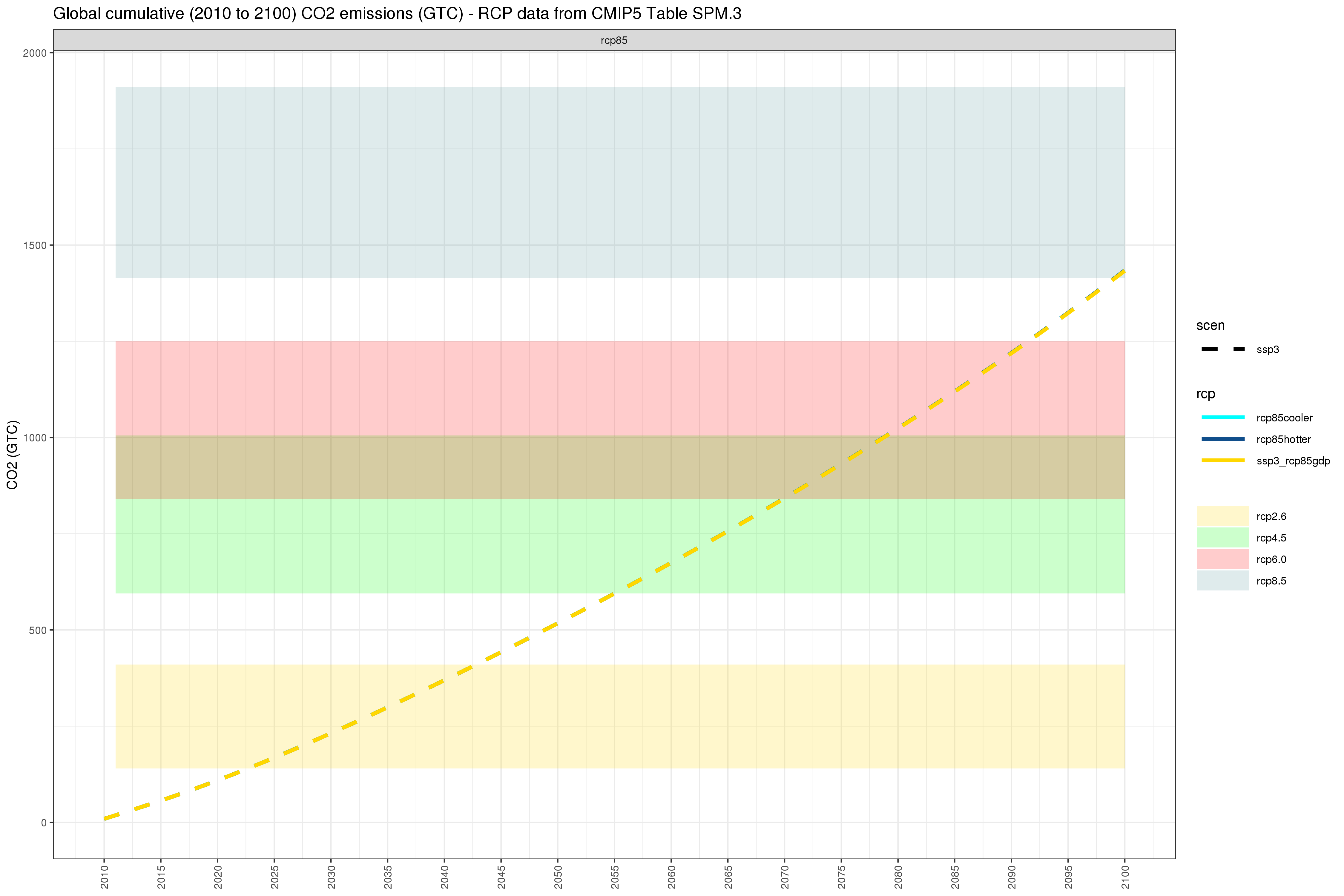
Cumulative global carbon emission pathways under different combinations of SSP3/SSP5 and RCP4.5/RCP8.5
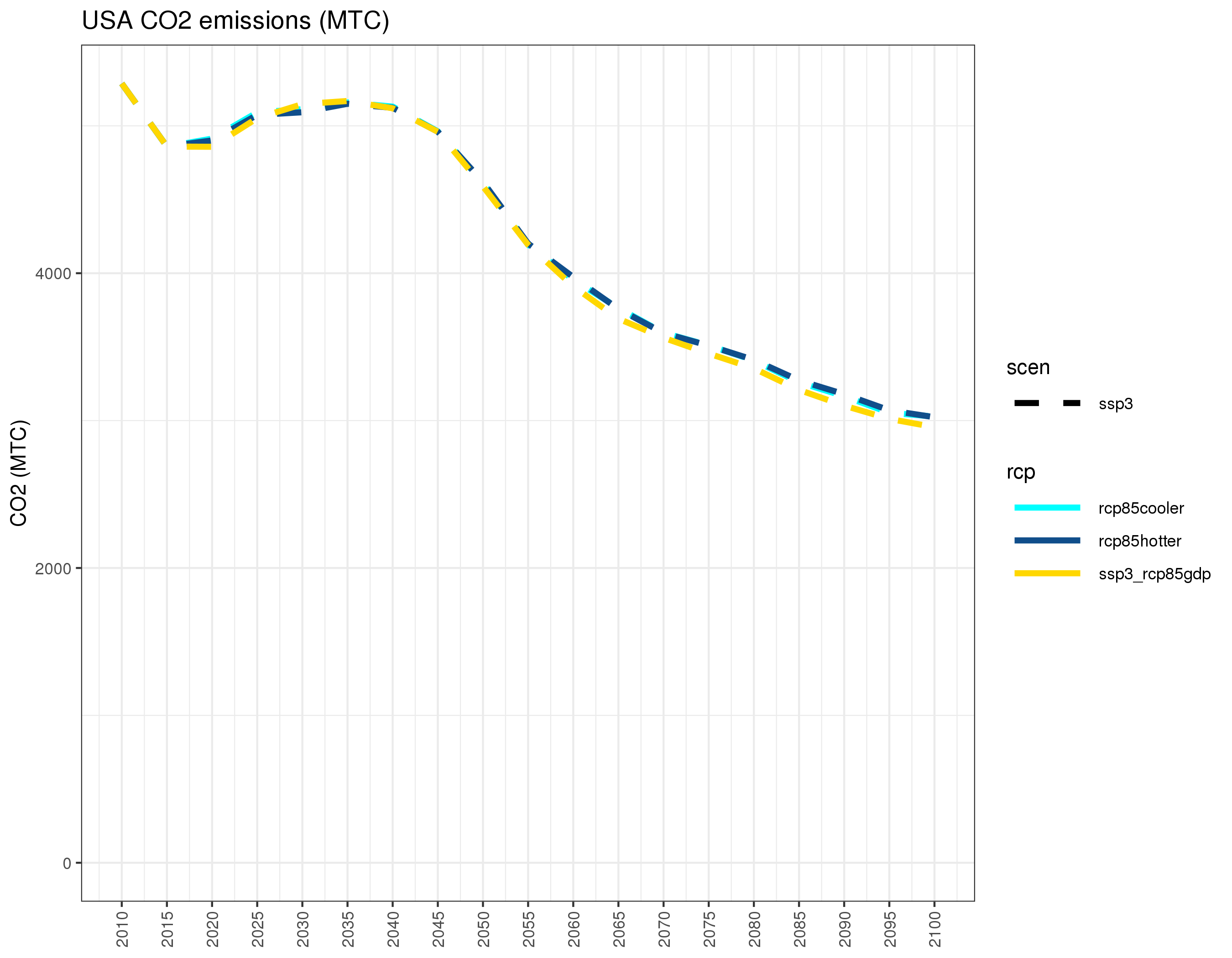
Annual US carbon emissions under different combinations of SSP3/SSP5 and RCP4.5/RCP8.5
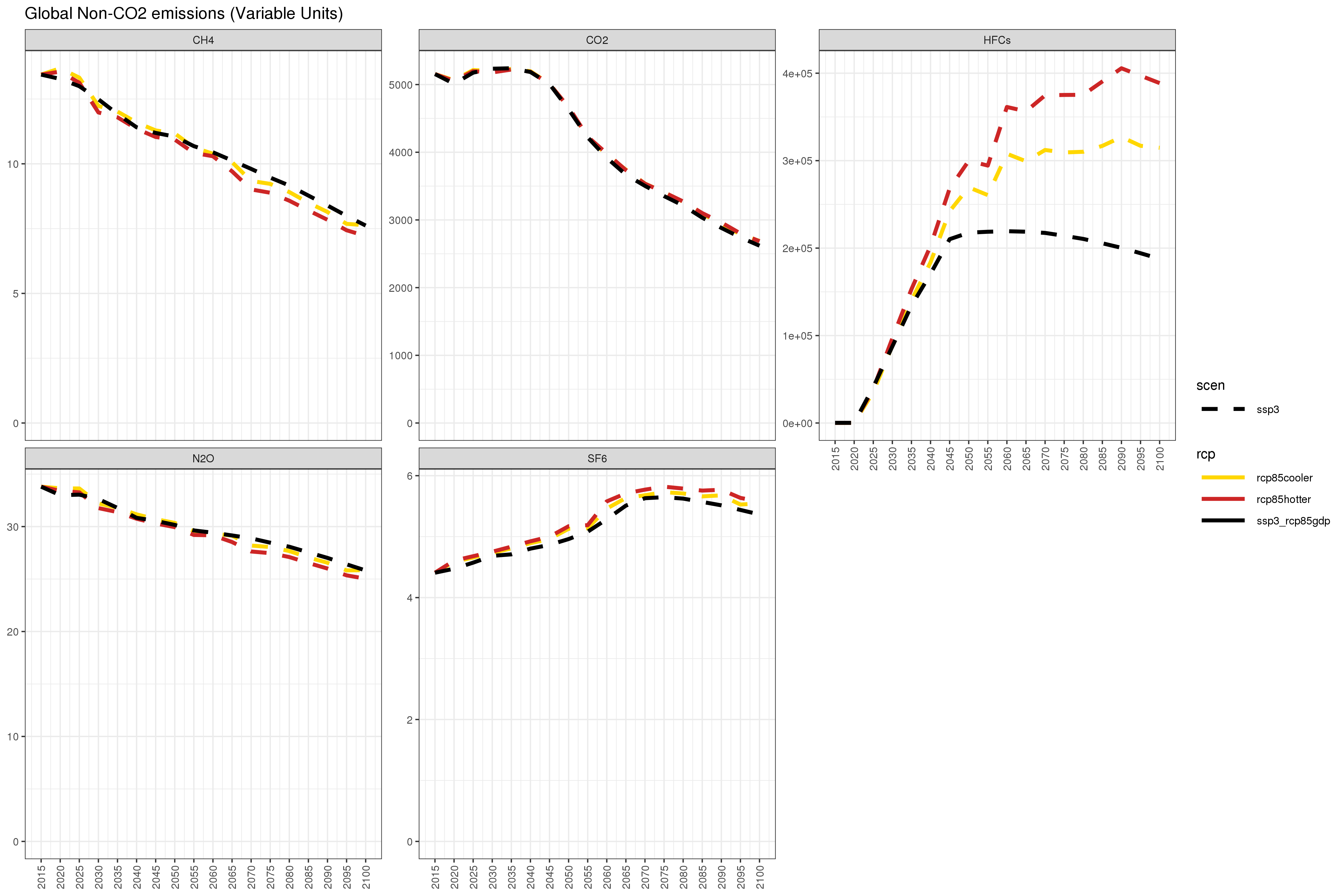
Annual global non-CO2 emissions under different combinations of SSP3/SSP5 and RCP4.5/RCP8.5
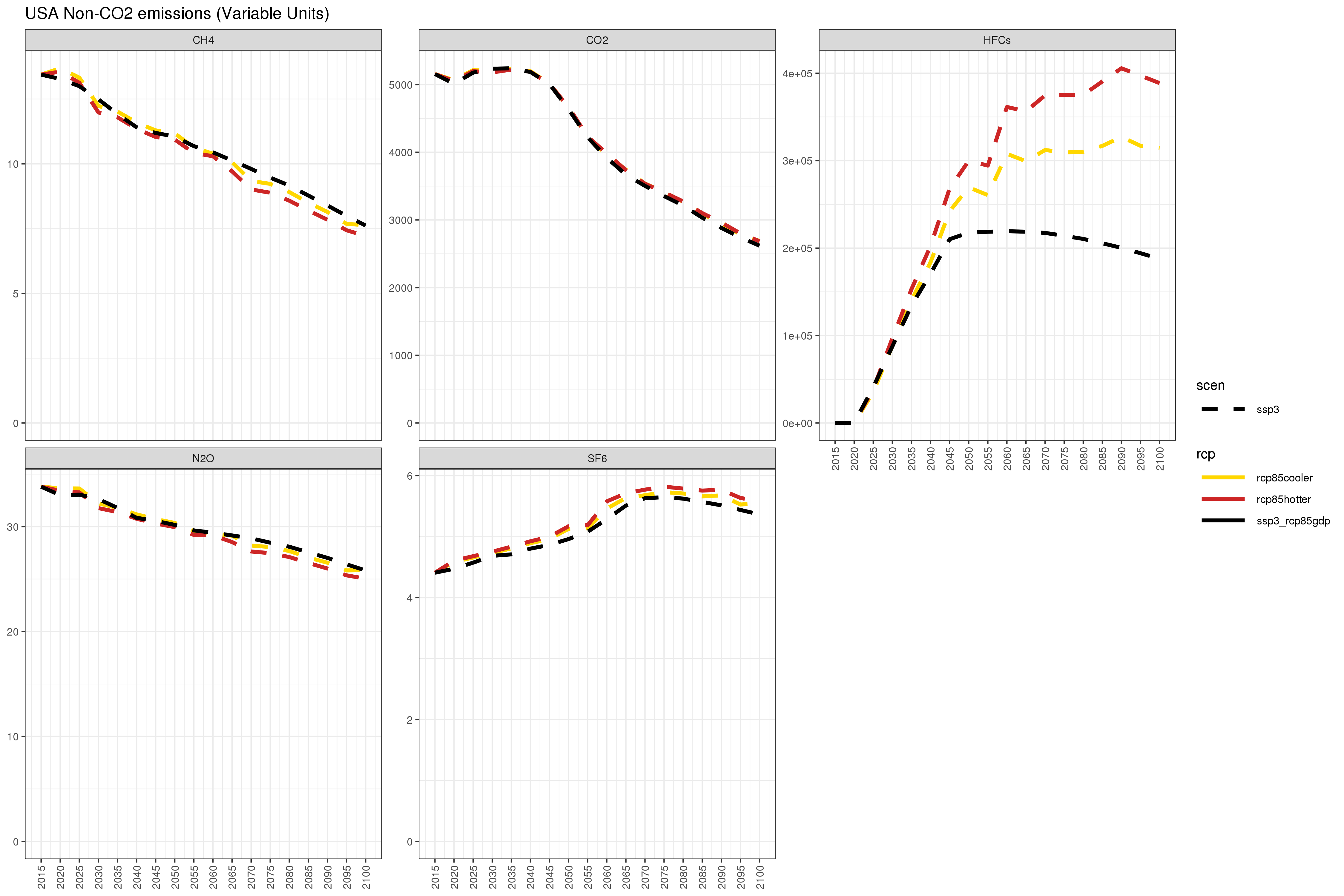
Annual US non-CO2 emissions under different combinations of SSP3/SSP5 and RCP4.5/RCP8.5
GCAM SSP5
Summary
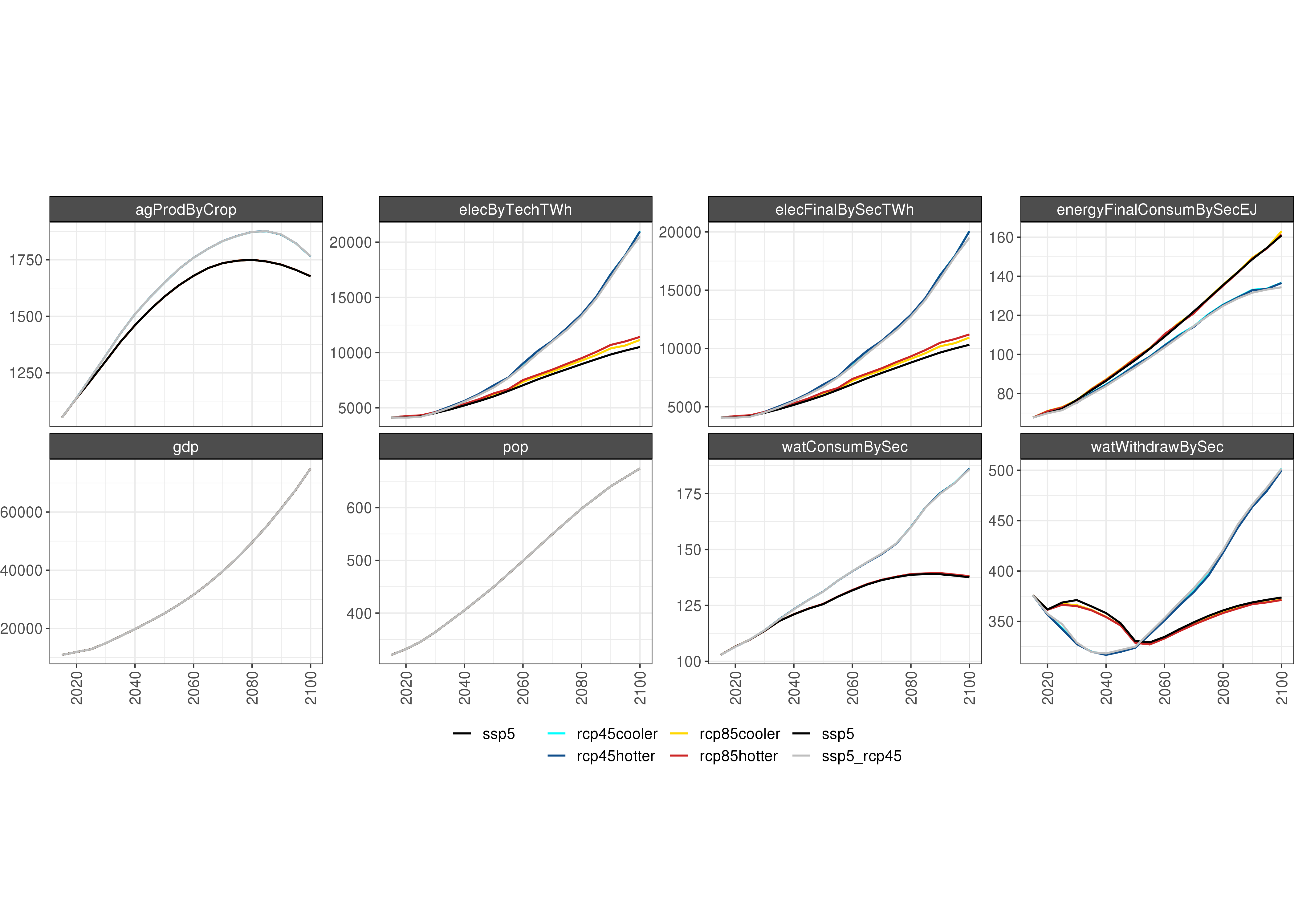
Comparison of GCAM global agyield outputs
Socioeconomics
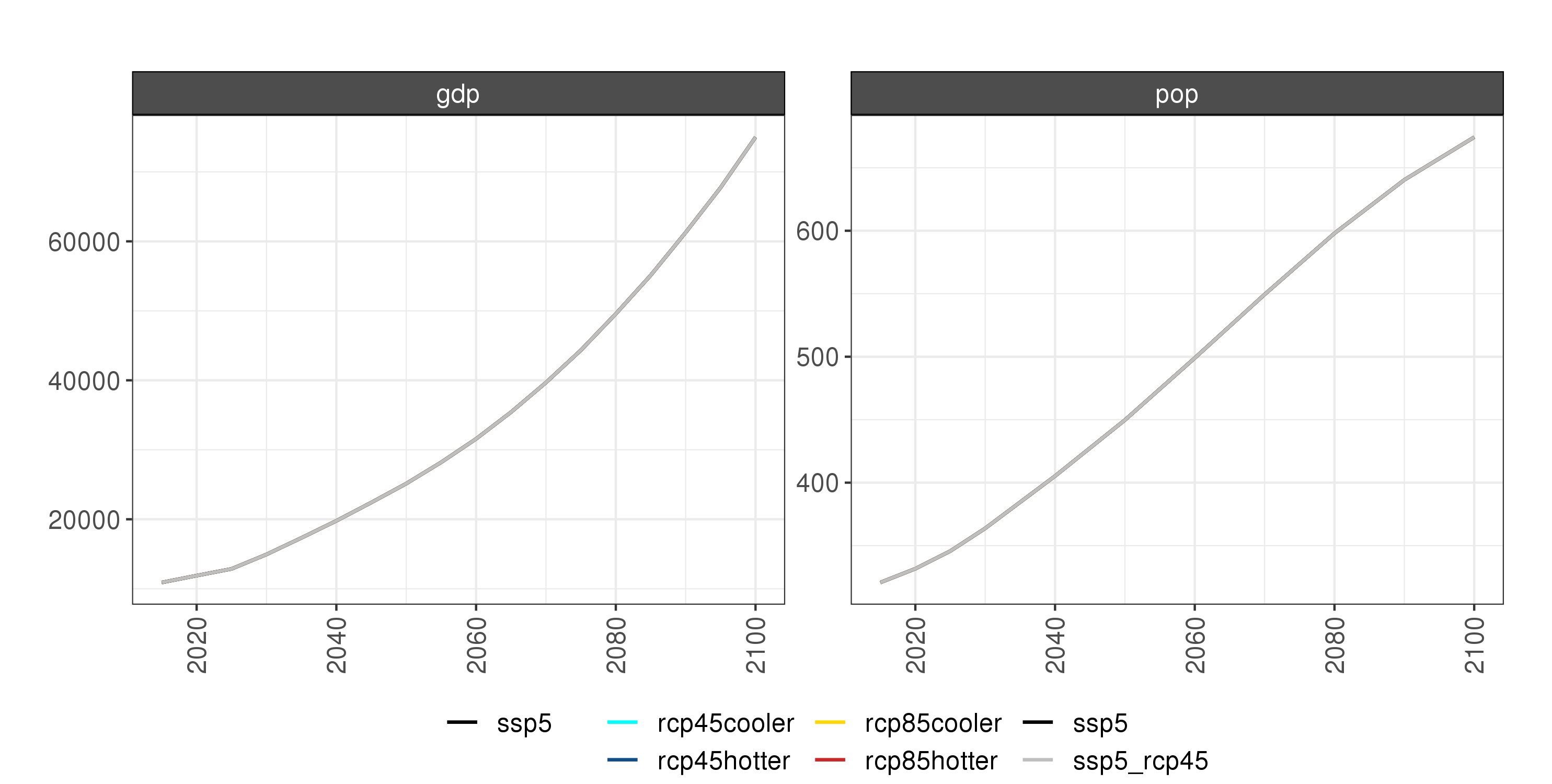
Comparison of GCAM socioeconomic outputs
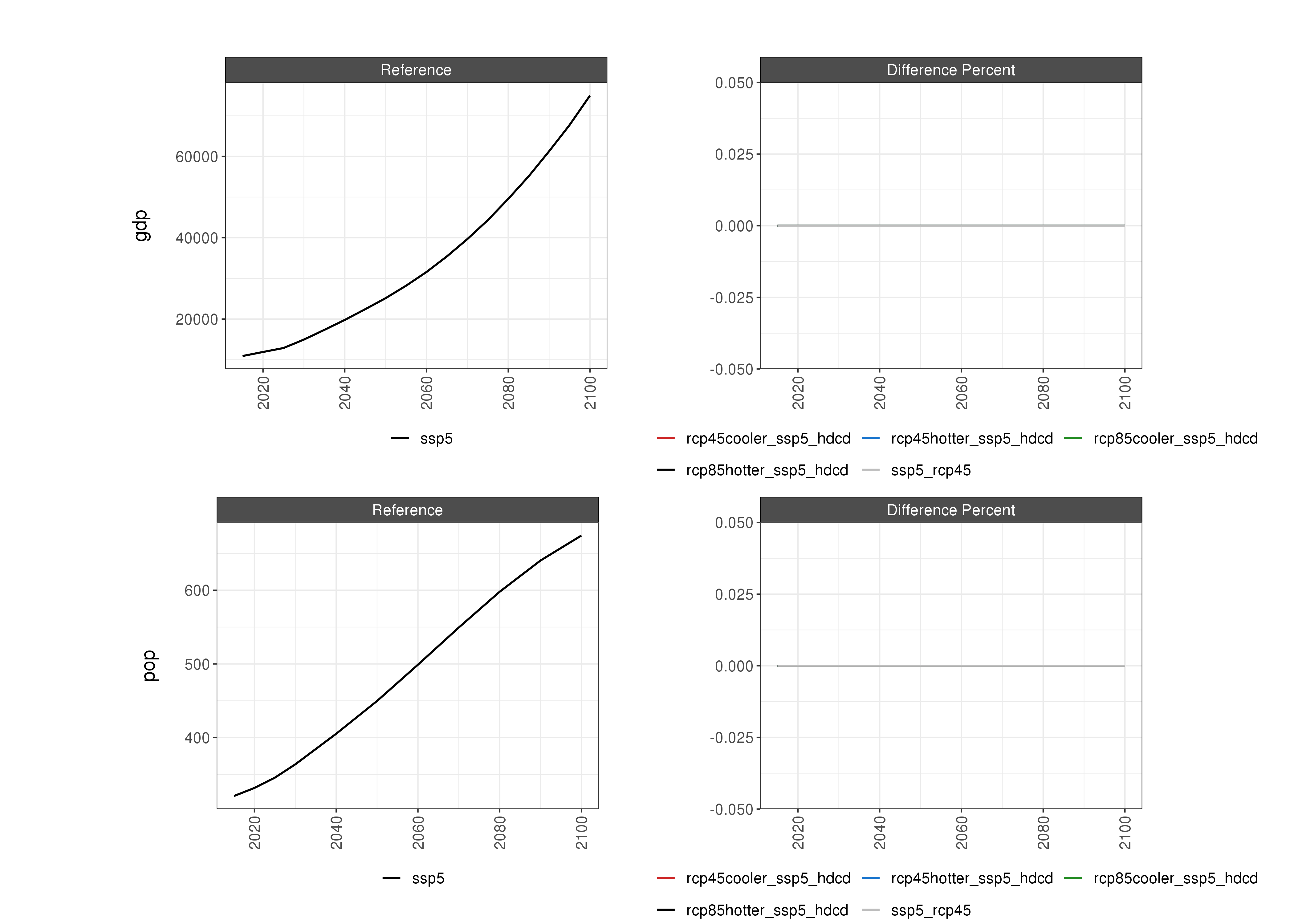
Comparison of GCAM socioeconomic outputs % Diff
Water
RCP4.5
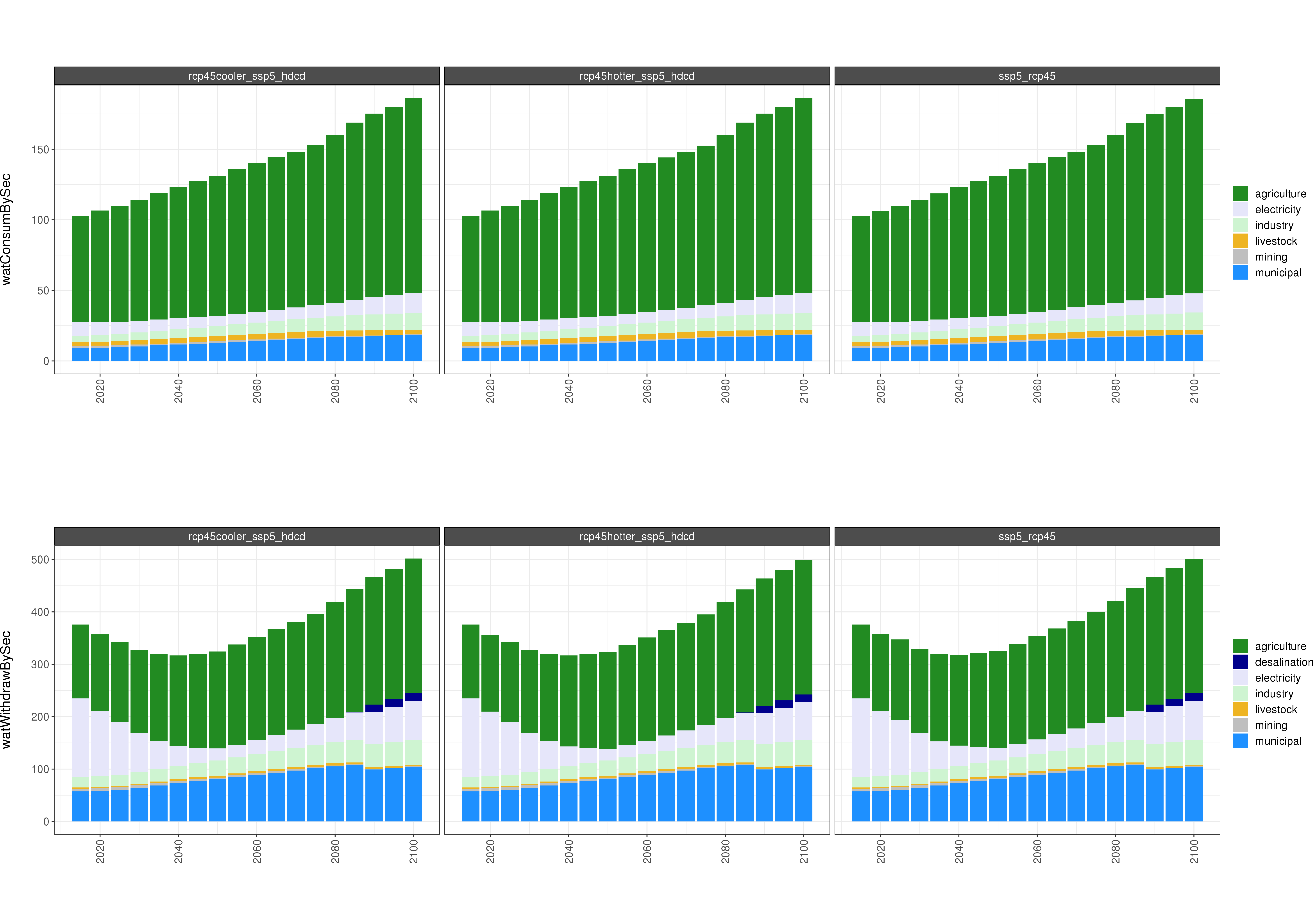
Absolute GCAM water outputs
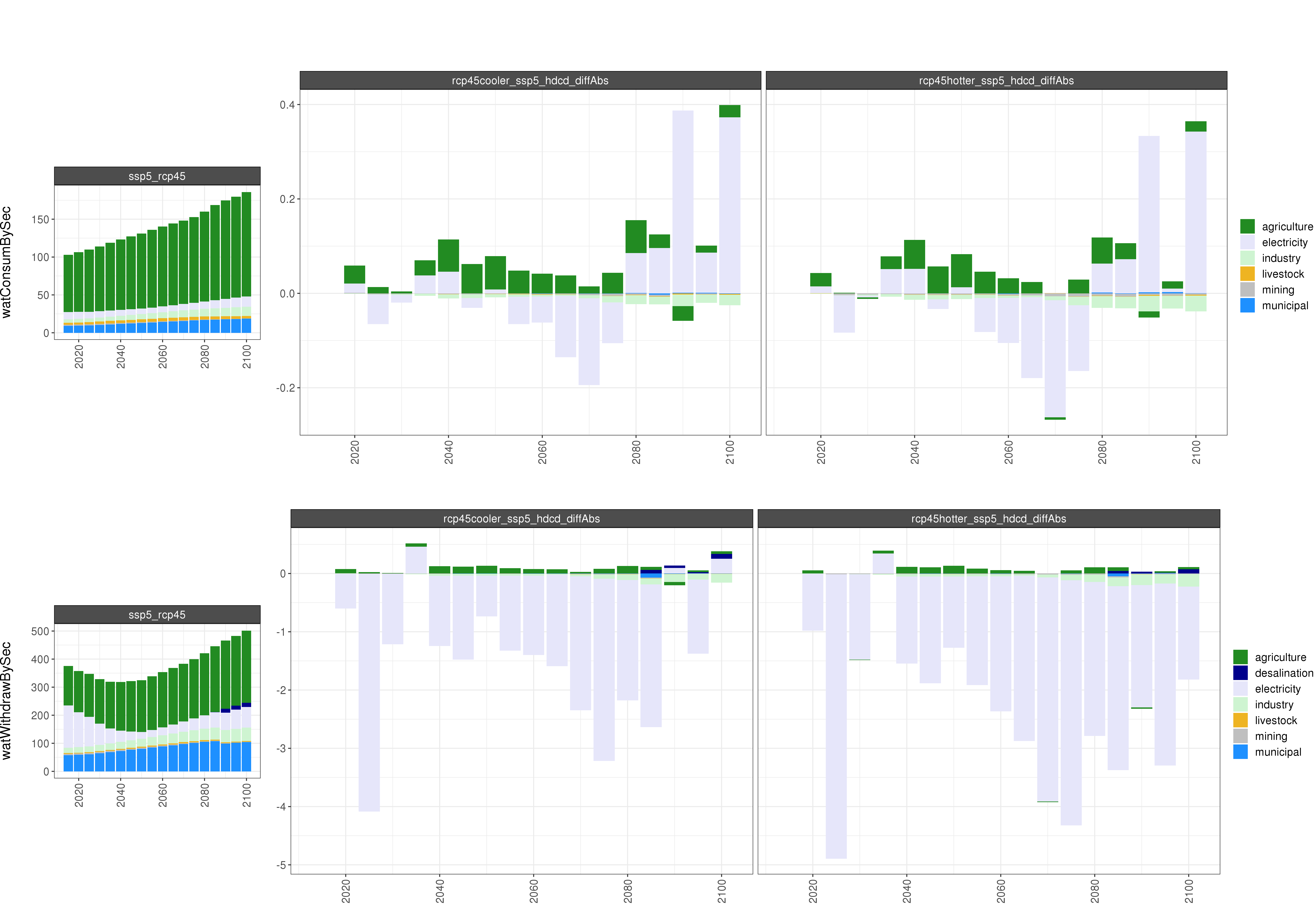
Comparison of GCAM water outputs
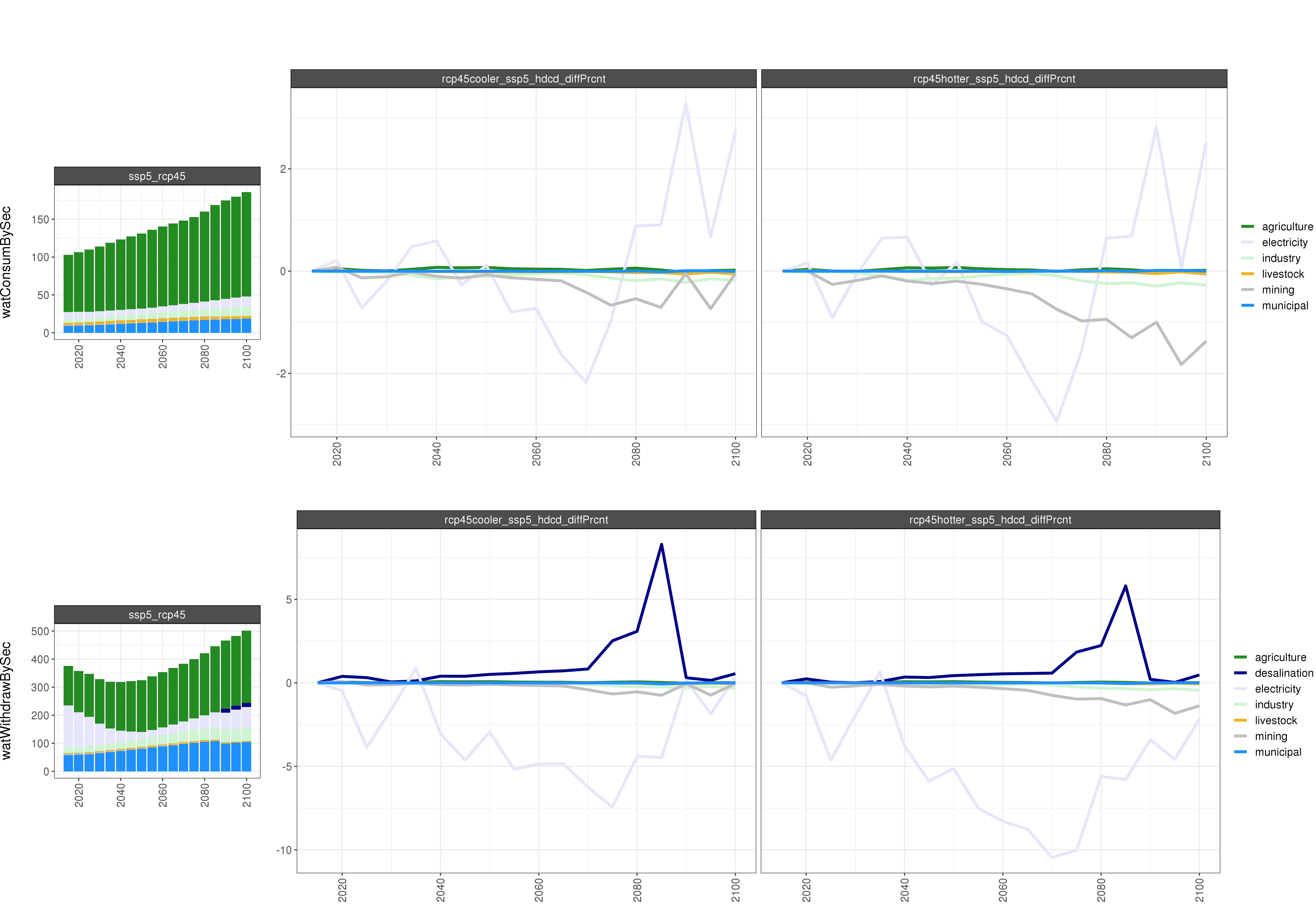
Comparison of GCAM water outputs % Diff
RCP8.5
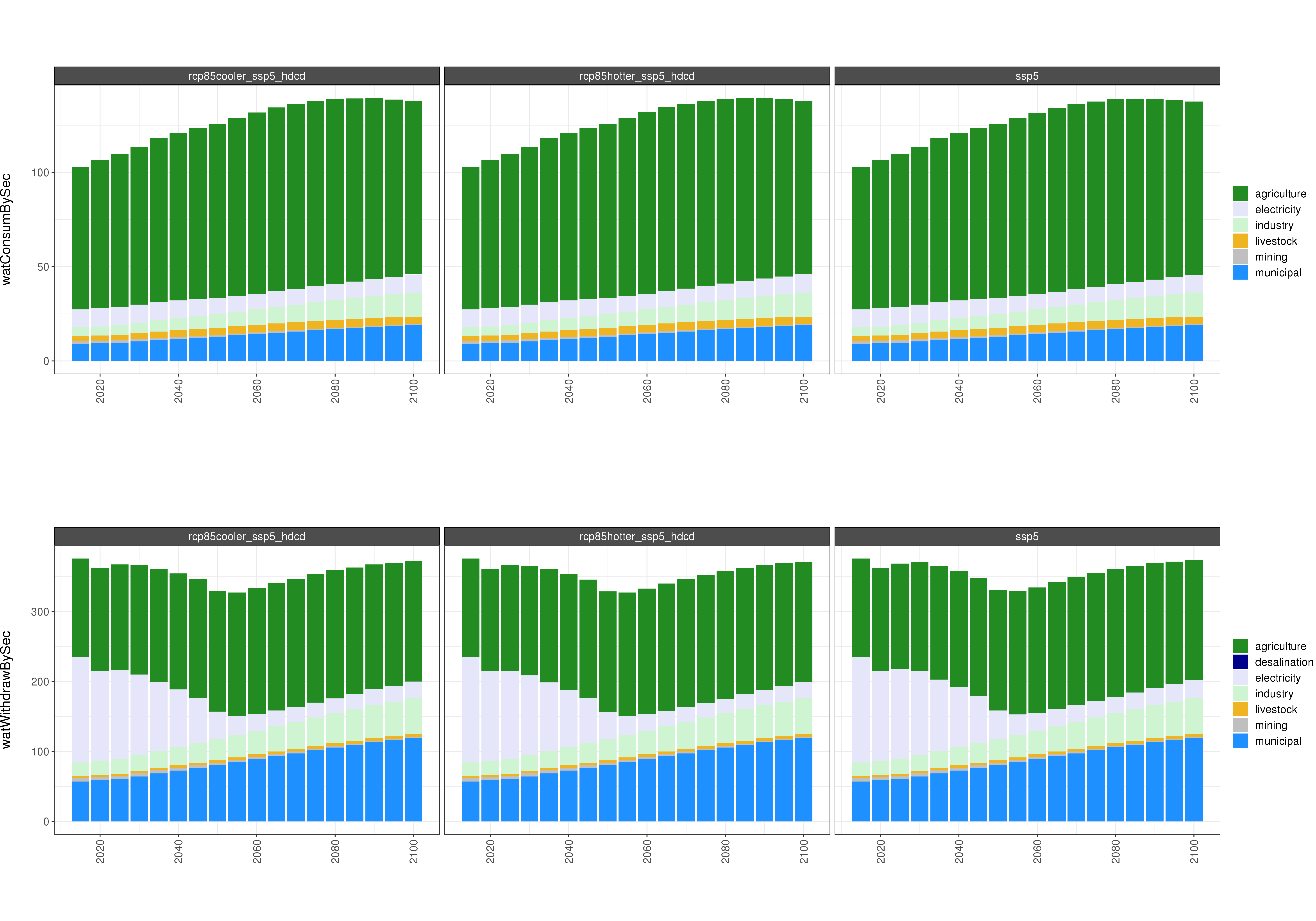
Absolute GCAM water outputs
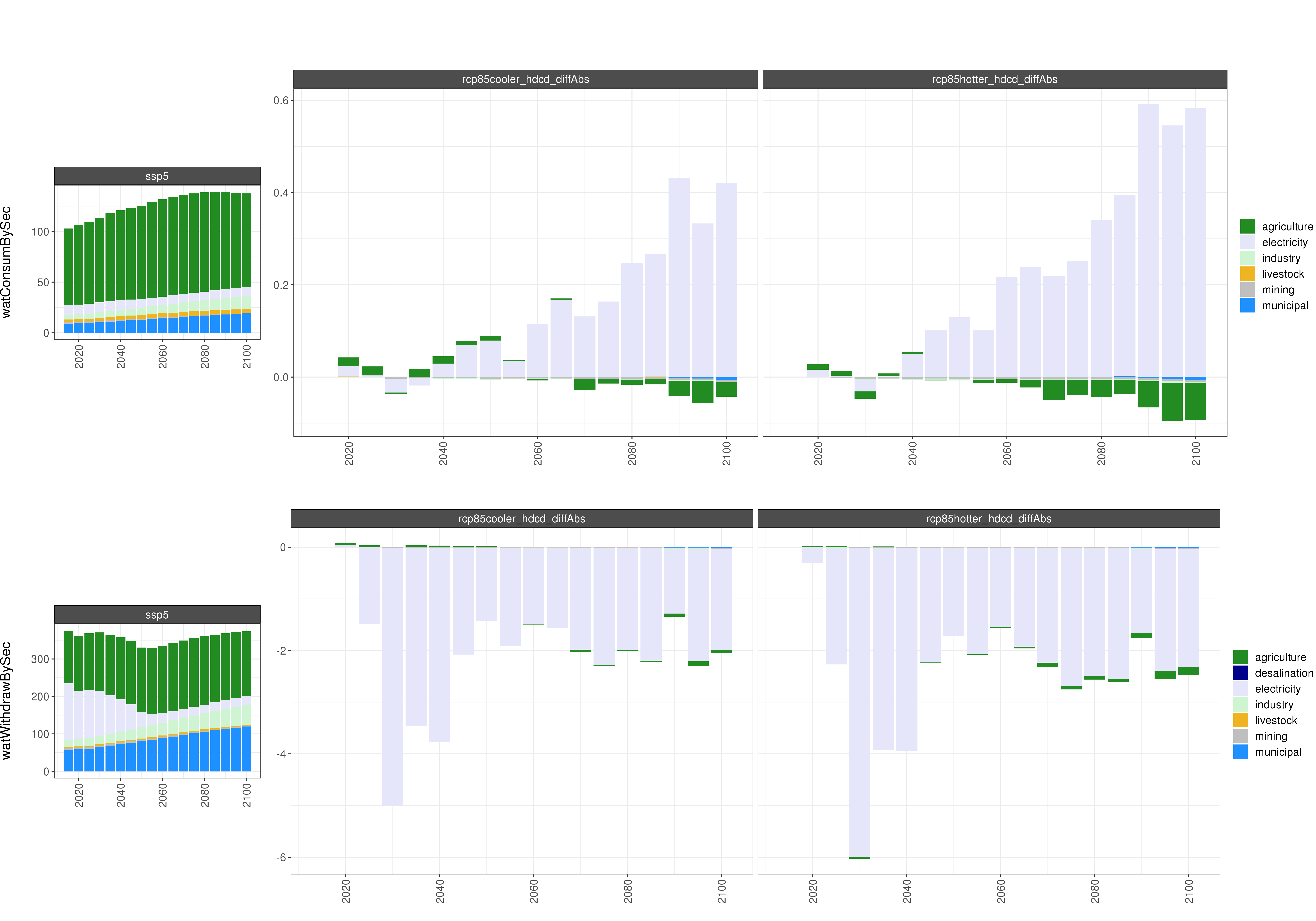
Comparison of GCAM water outputs
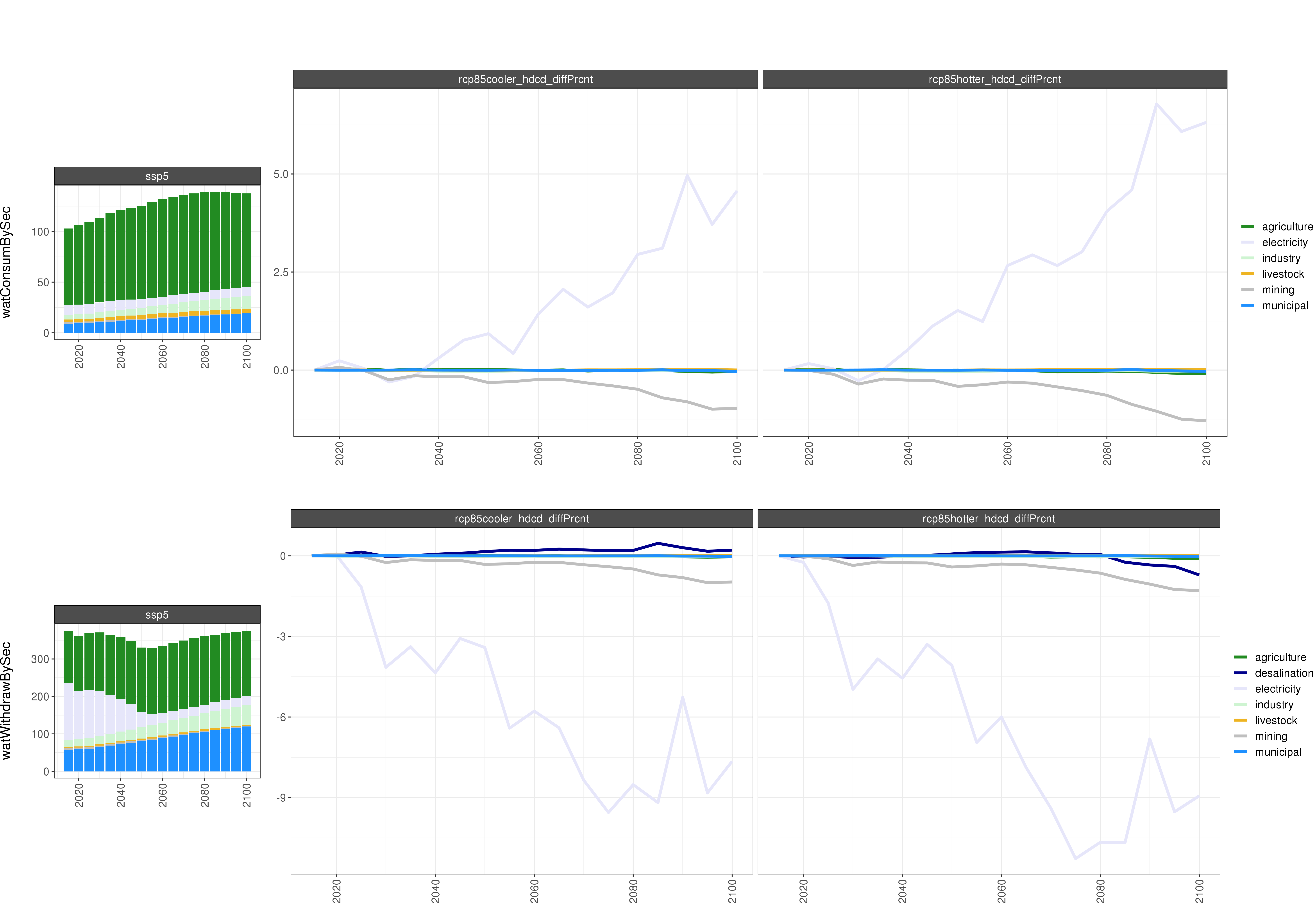
Comparison of GCAM water outputs % Diff
Energy
RCP4.5
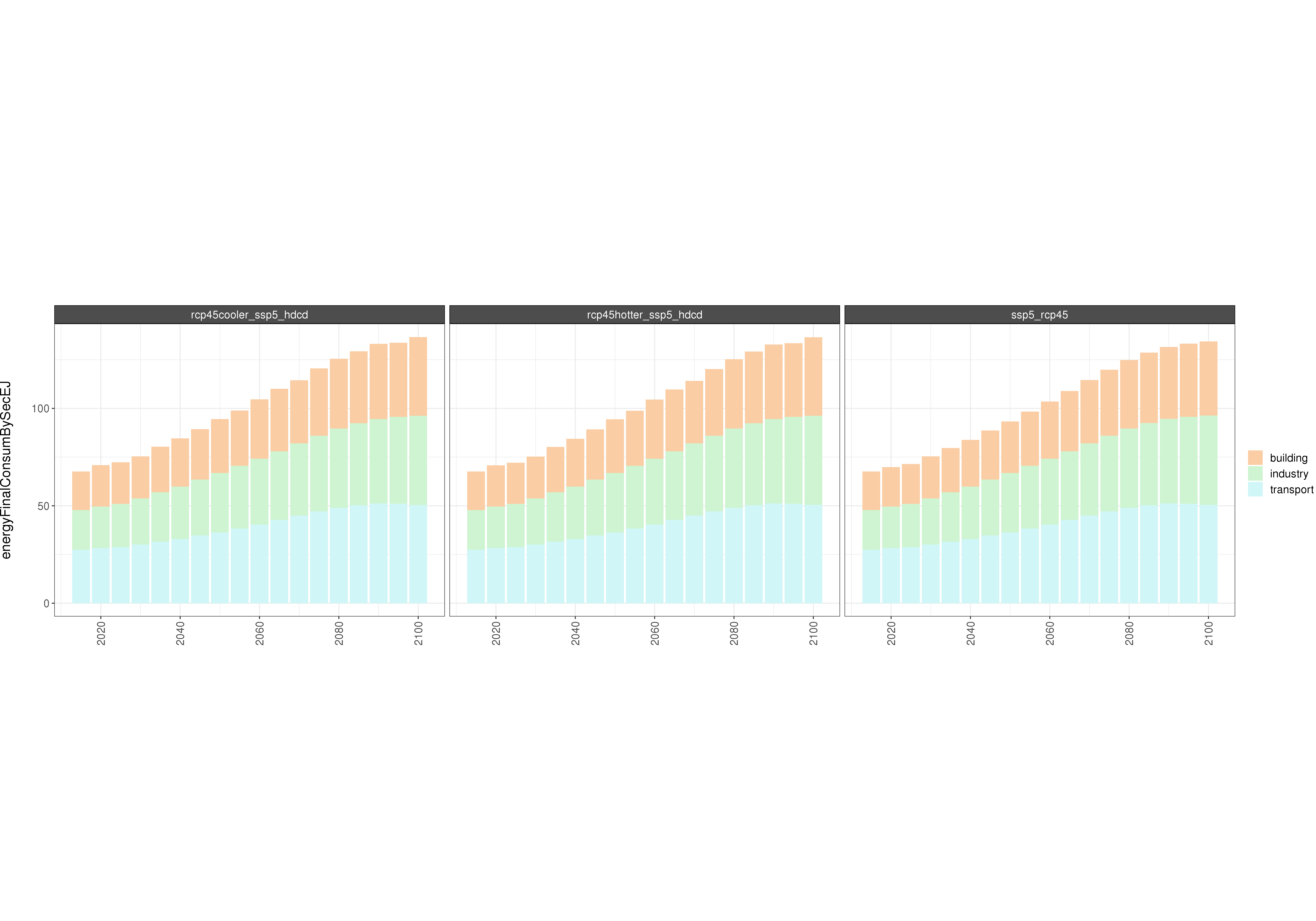
Absolute GCAM energy outputs
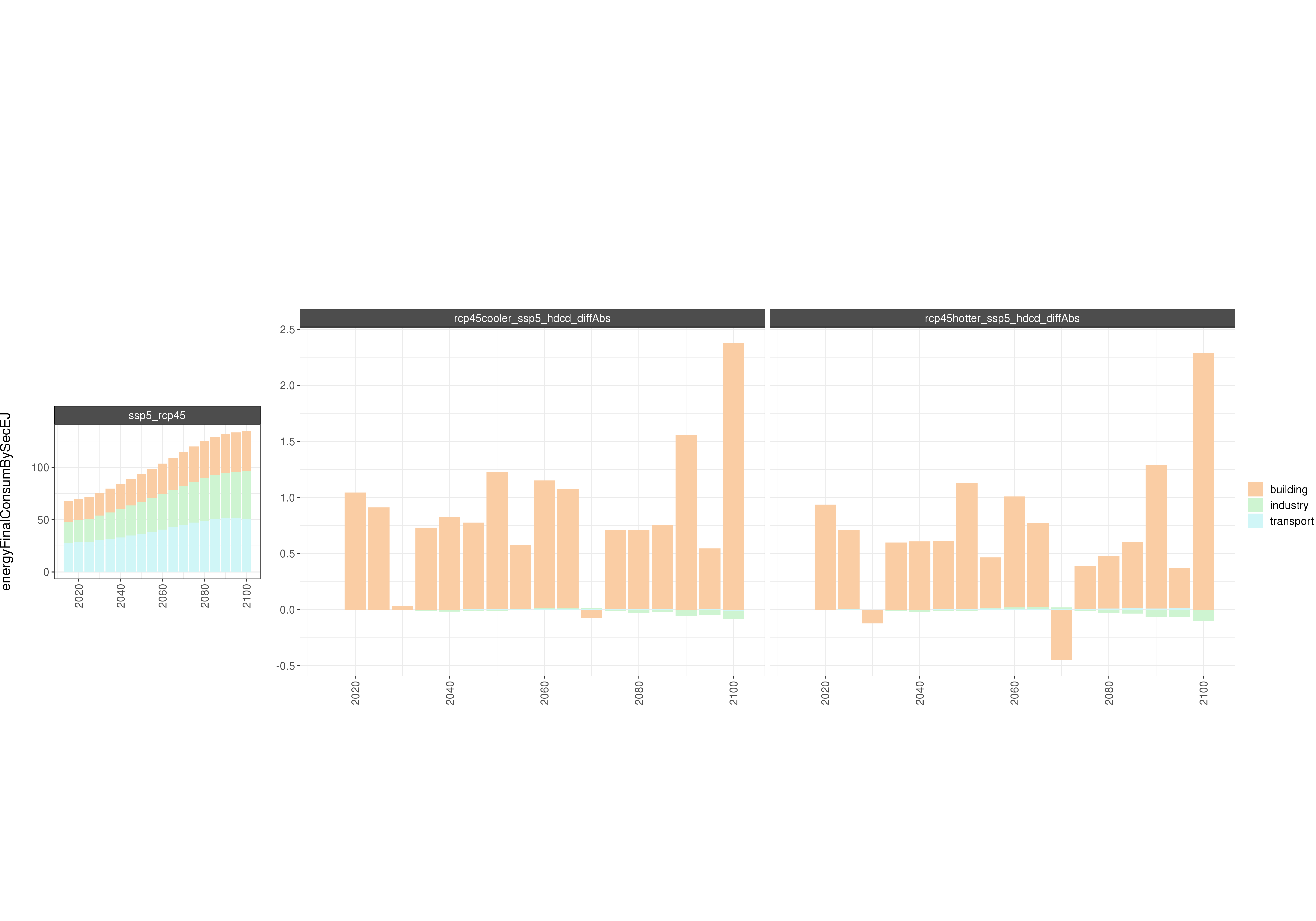
Comparison of GCAM energy outputs
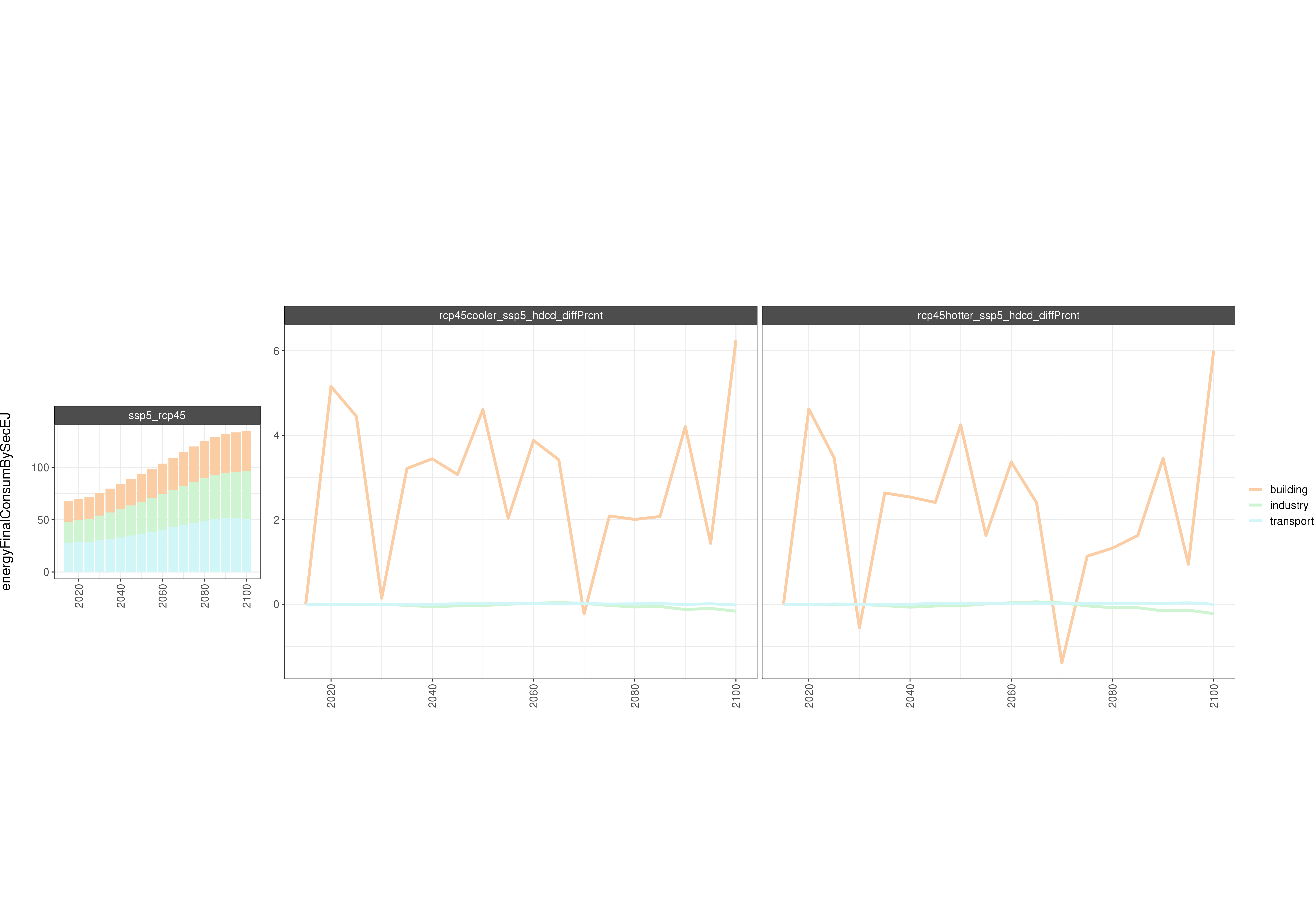
Comparison of GCAM energy outputs % Diff
RCP8.5
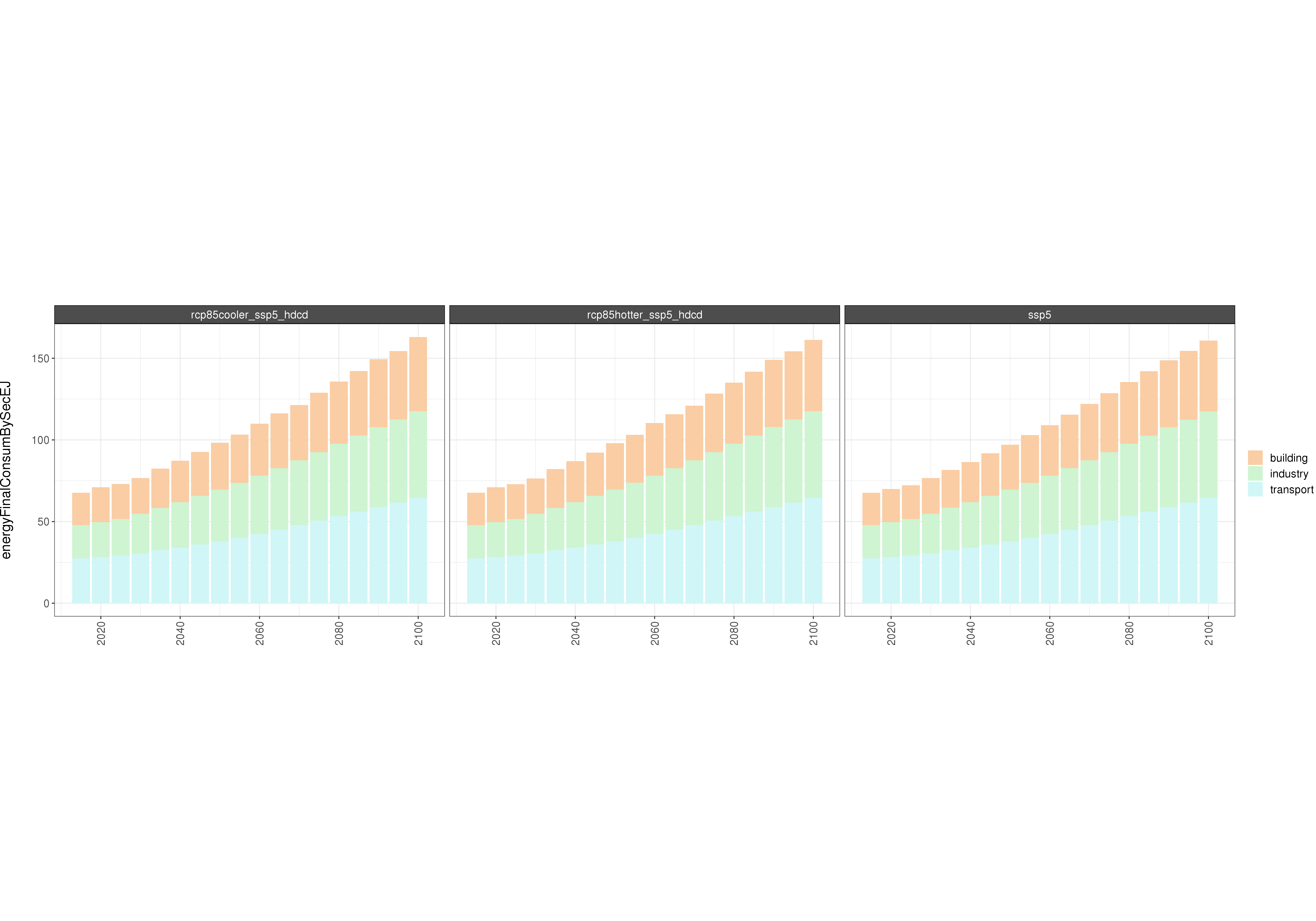
Absolute GCAM energy outputs
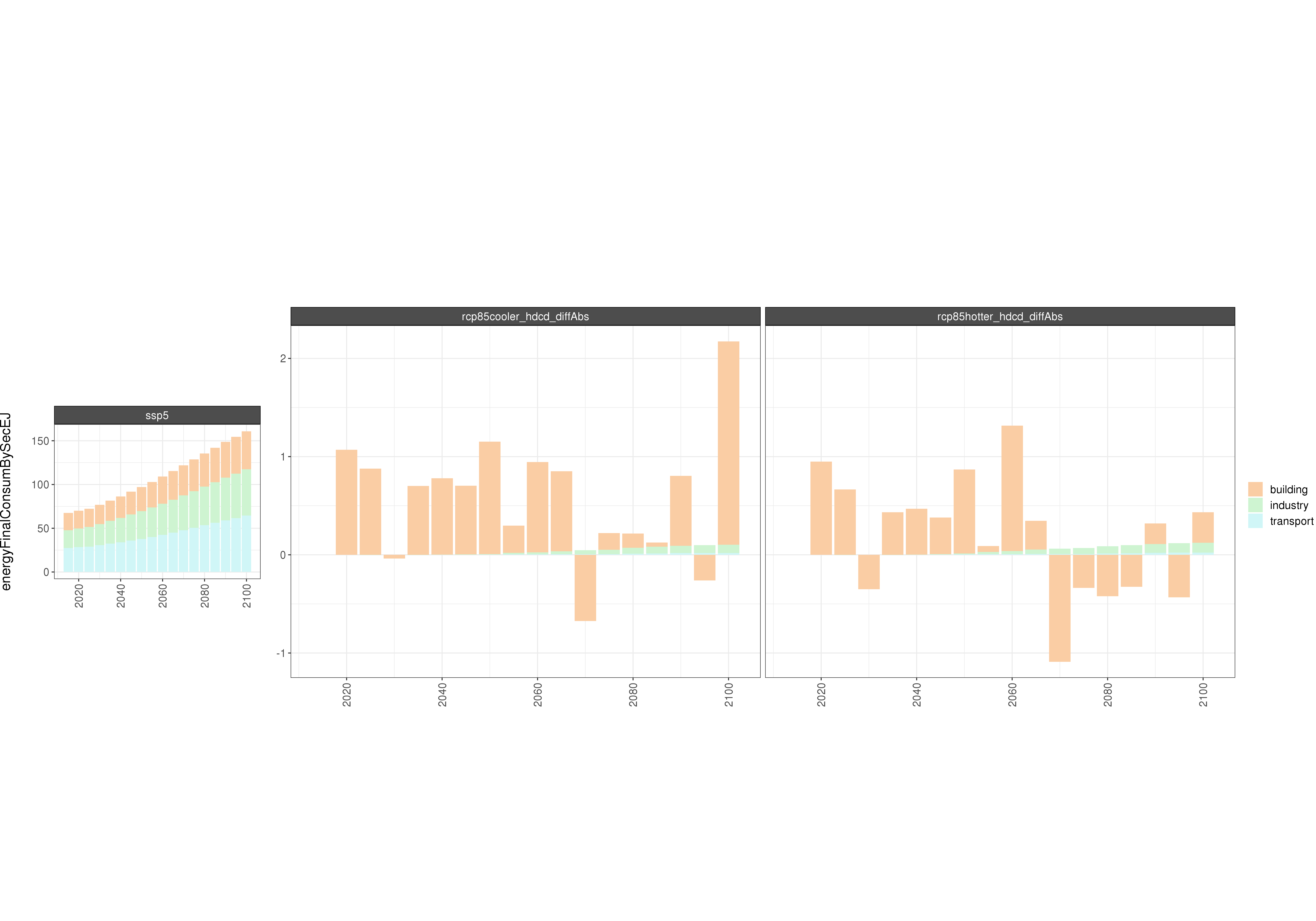
Comparison of GCAM energy outputs
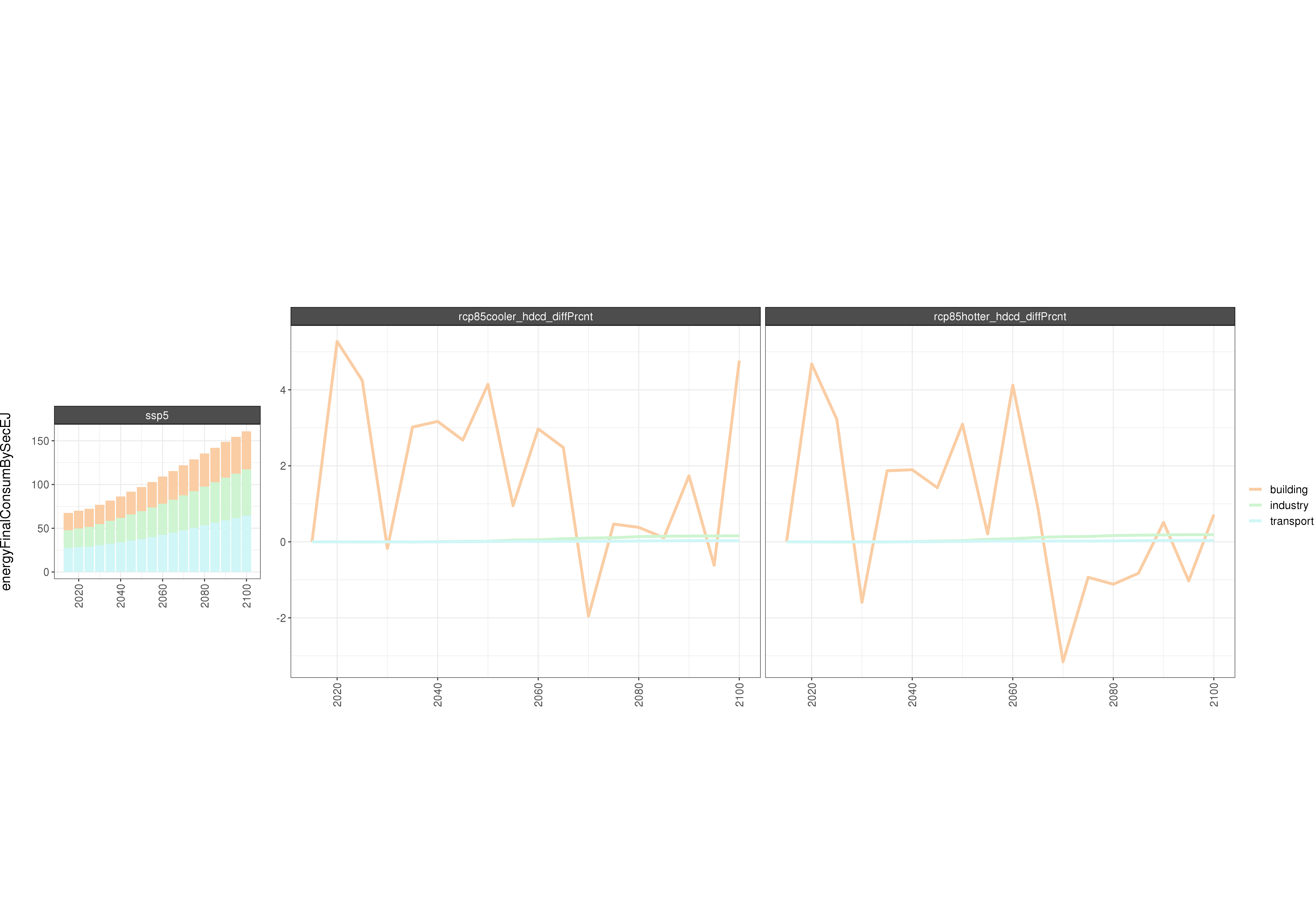
Comparison of GCAM energy outputs % Diff
Electricity
RCP4.5
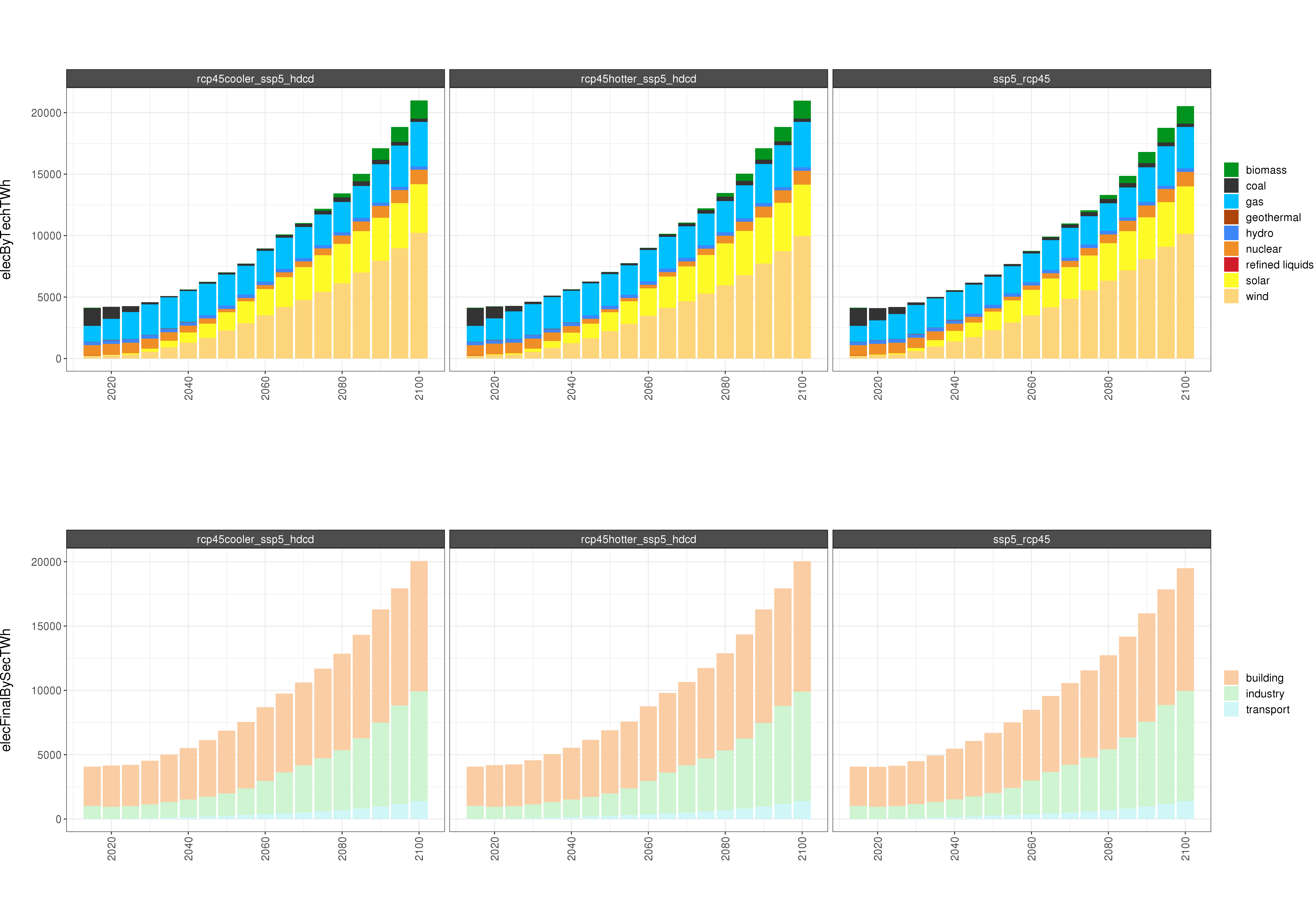
Absolute GCAM electricity outputs
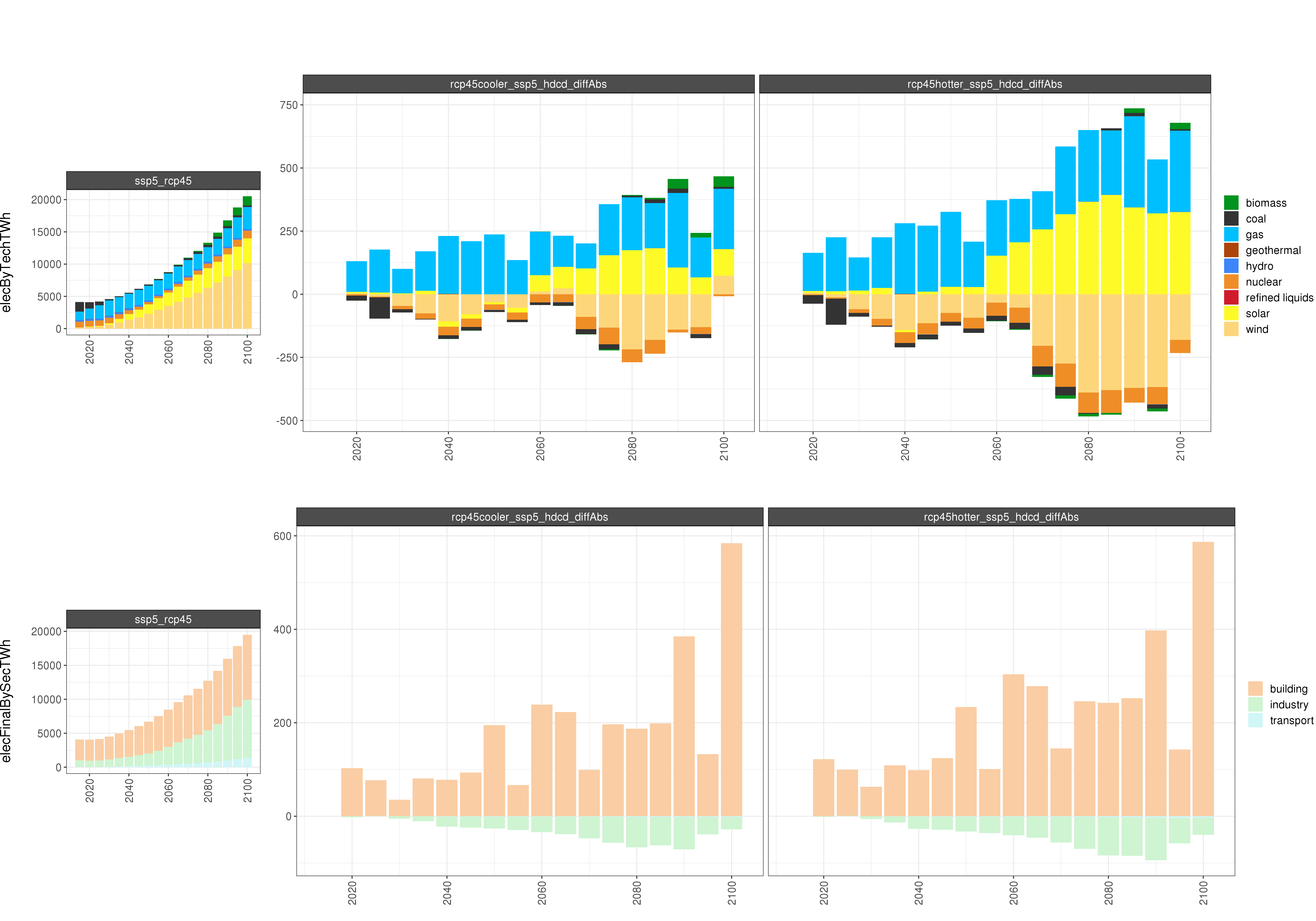
Comparison of GCAM electricity outputs
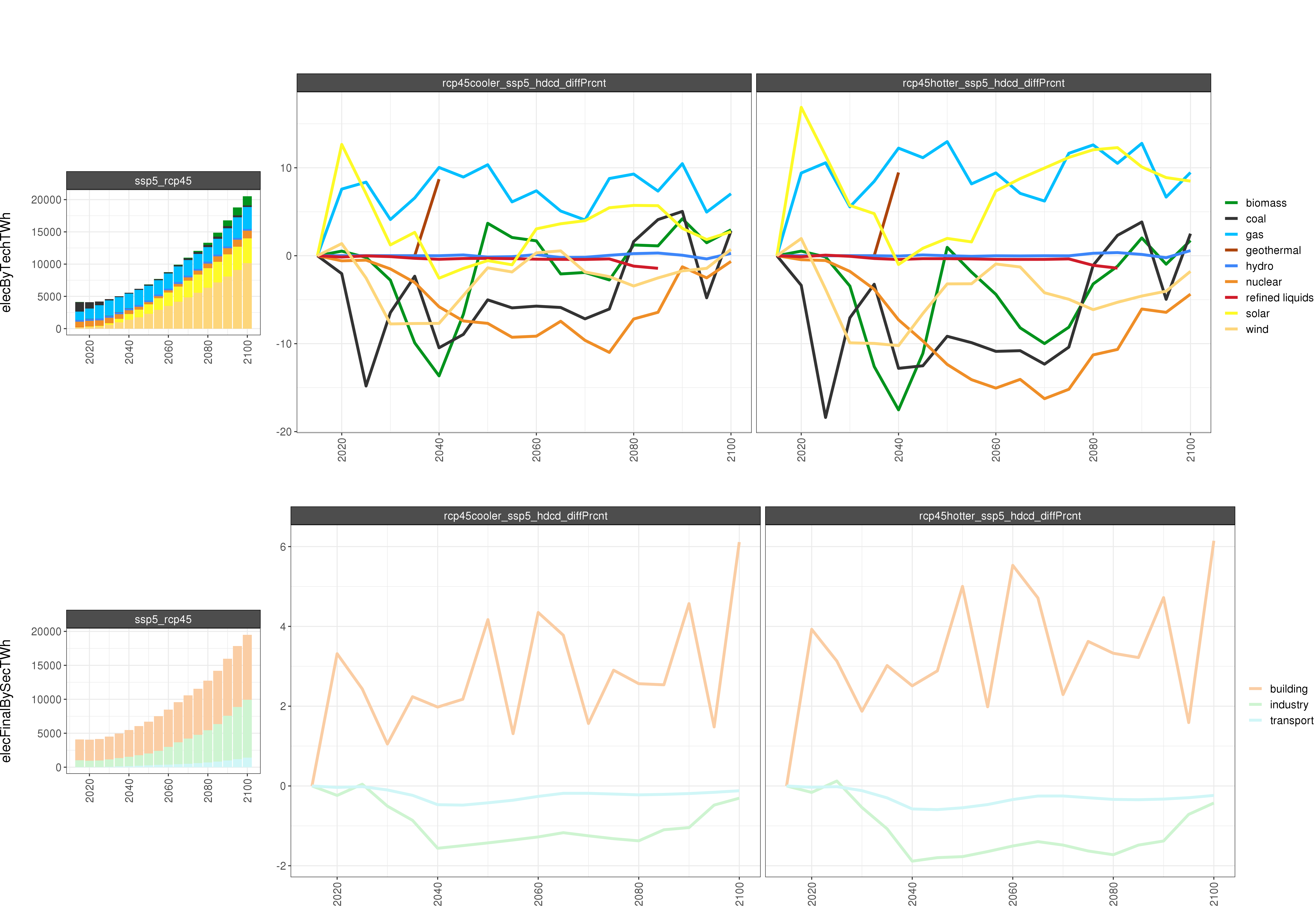
Comparison of GCAM electricity outputs % Diff
RCP8.5
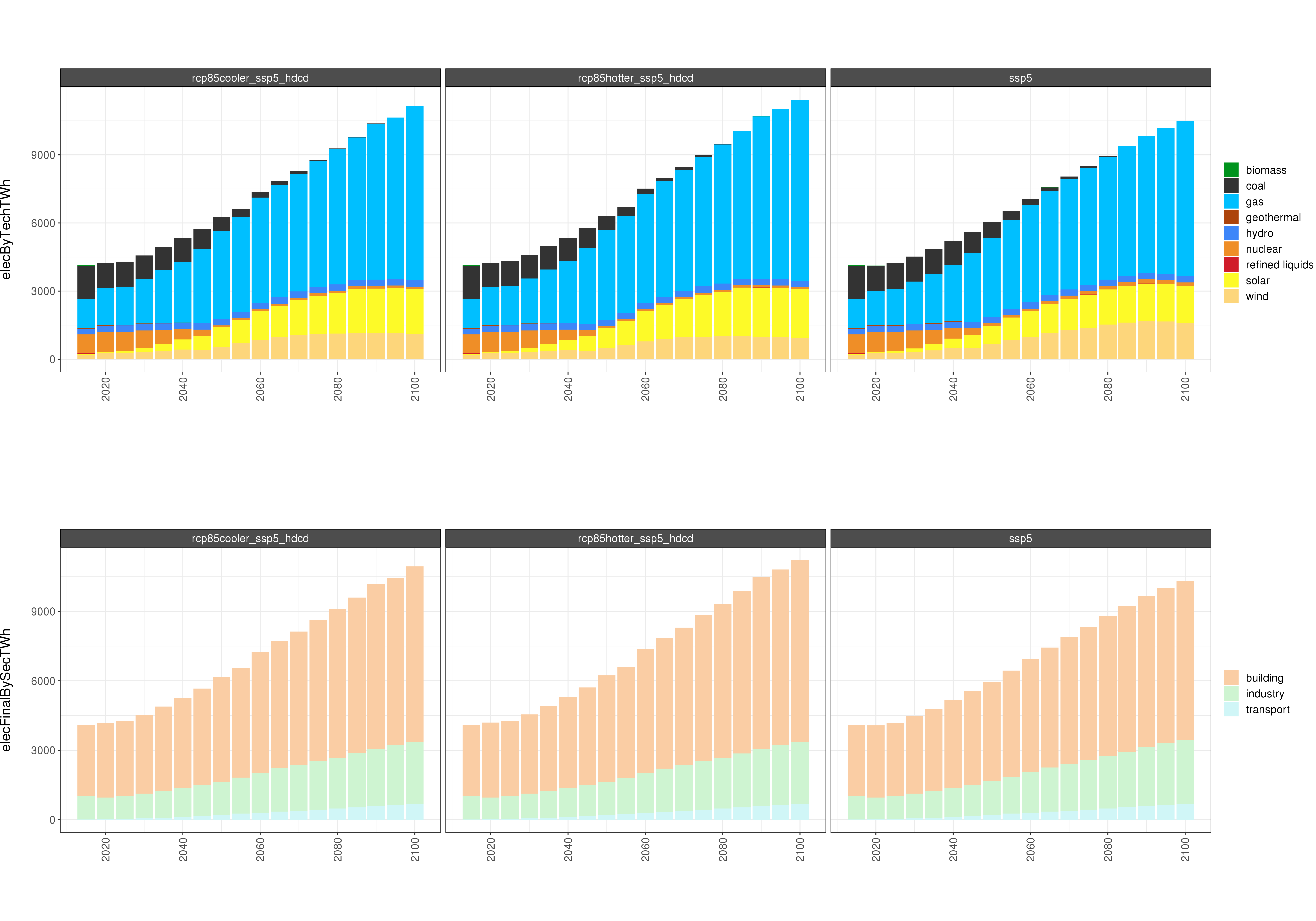
Absolute GCAM electricity outputs
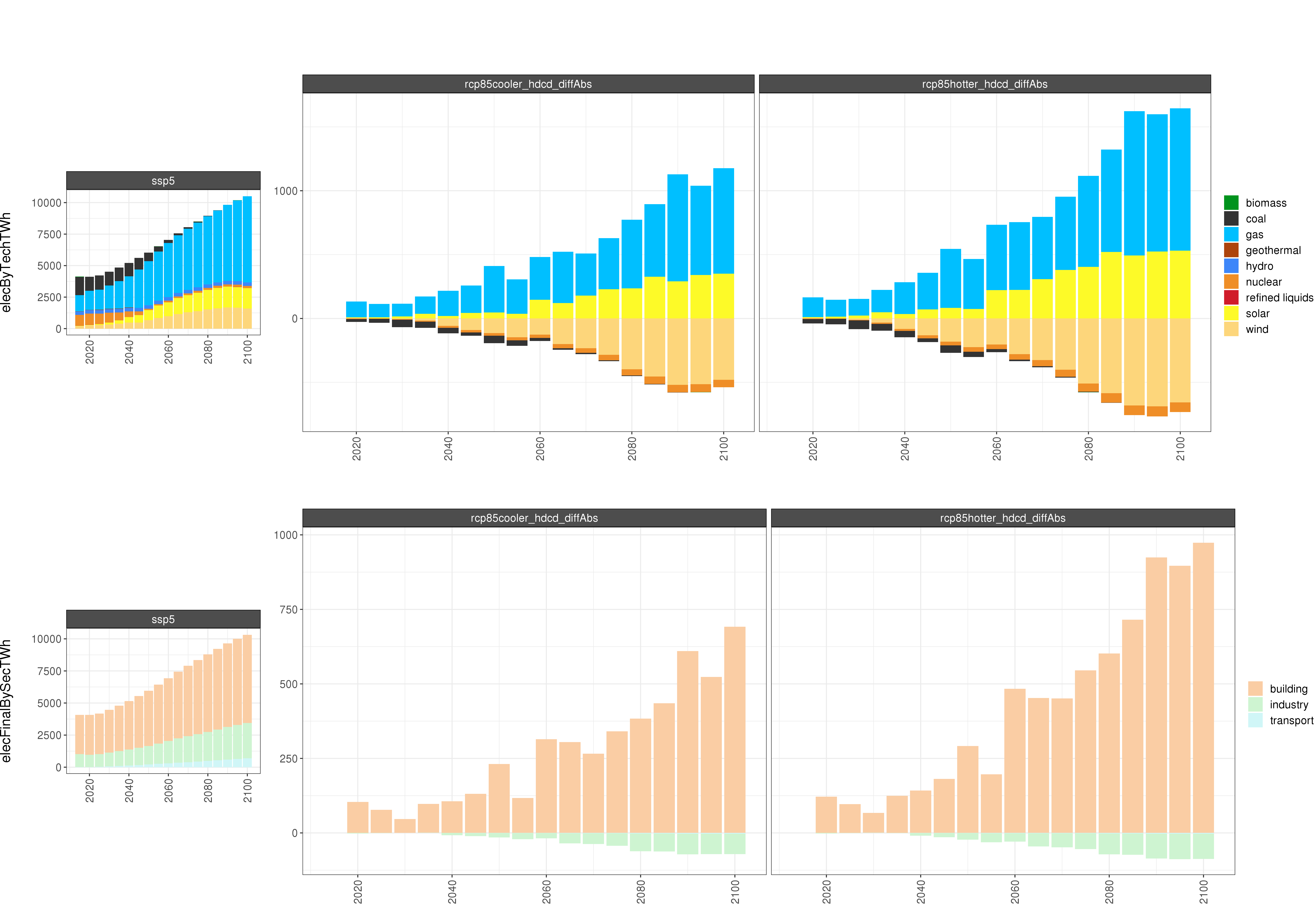
Comparison of GCAM electricity outputs
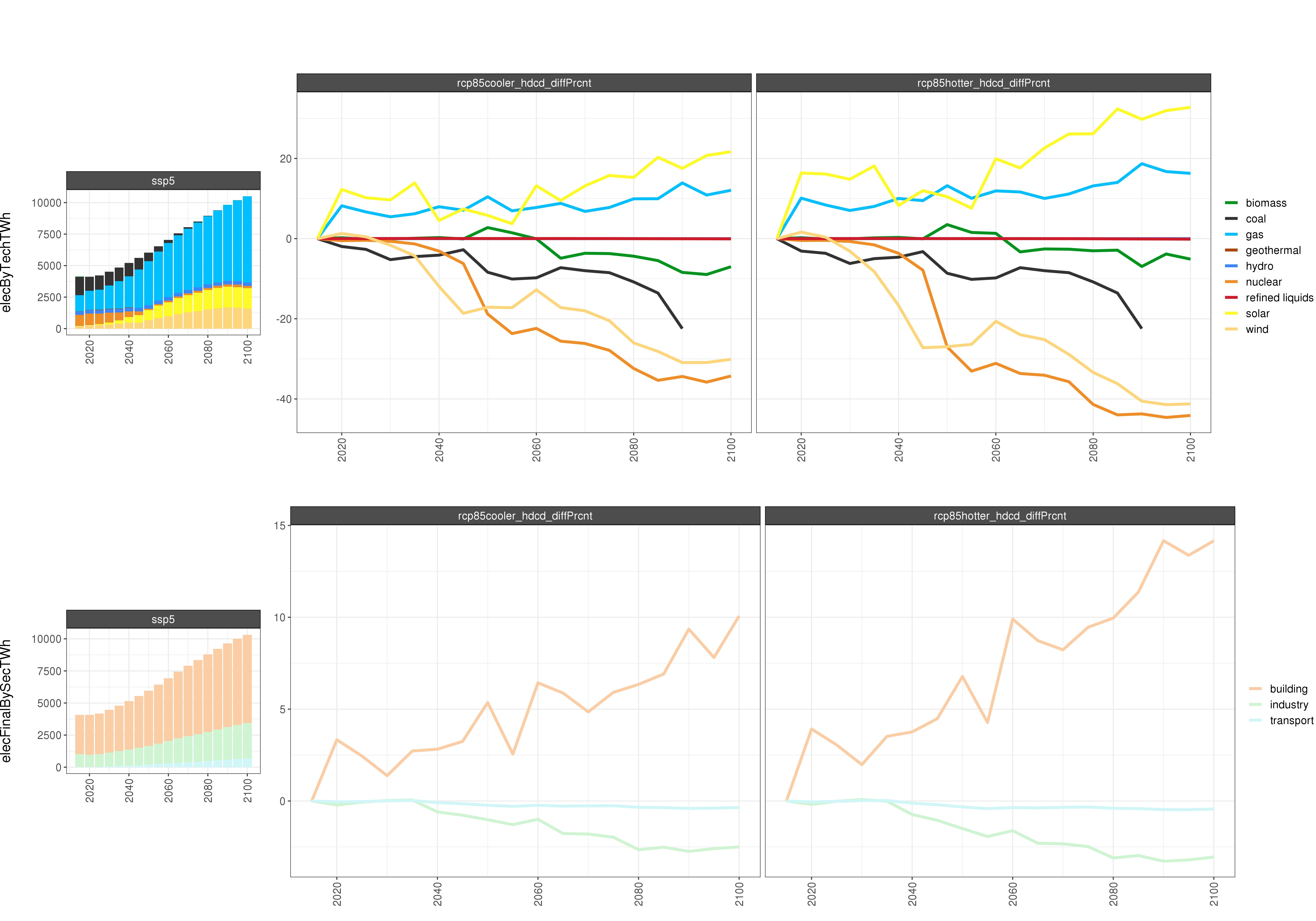
Comparison of GCAM electricity outputs % Diff
AGLU
RCP4.5
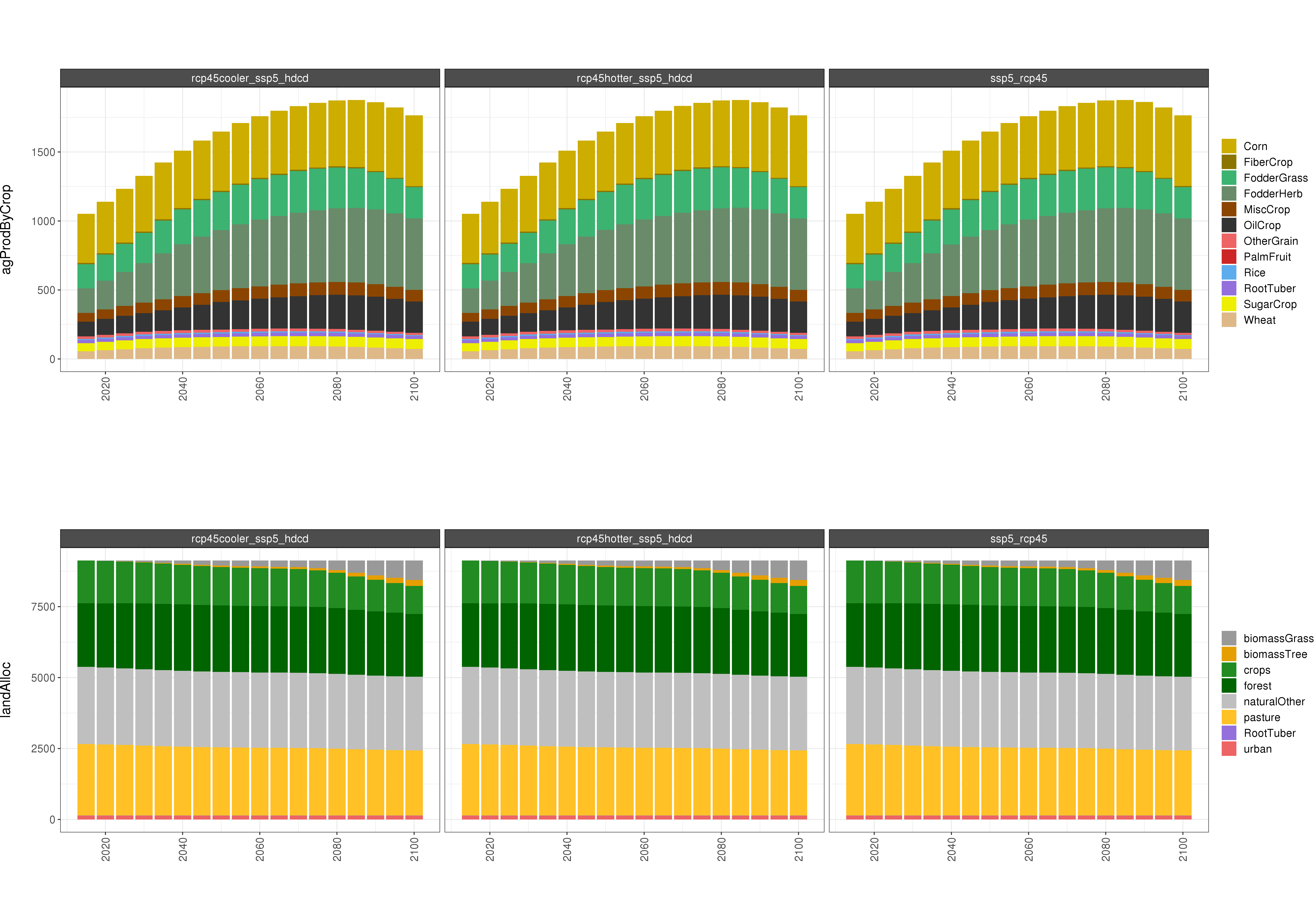
Absolute GCAM AGLU outputs
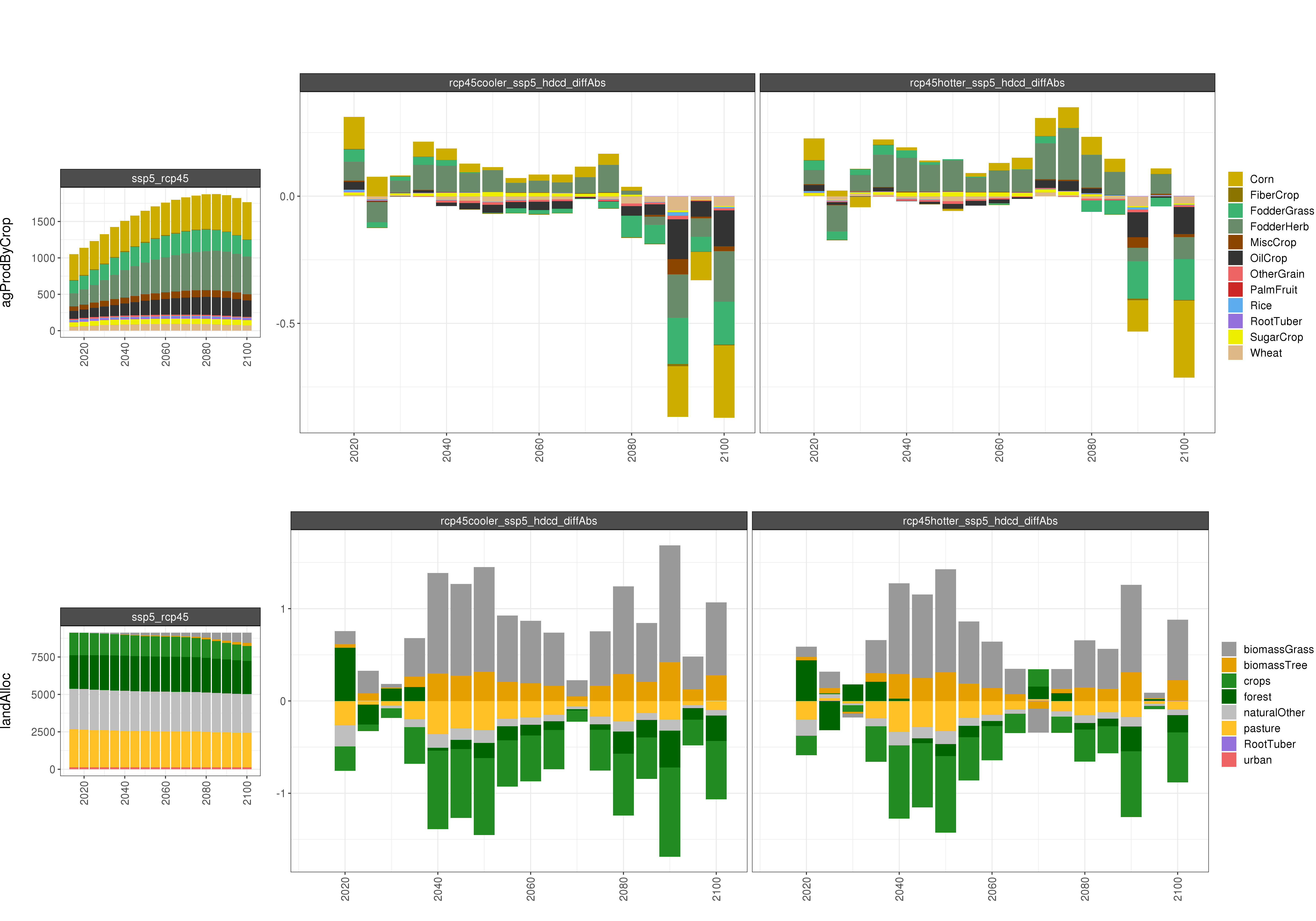
Comparison of GCAM AGLU outputs - absolute difference
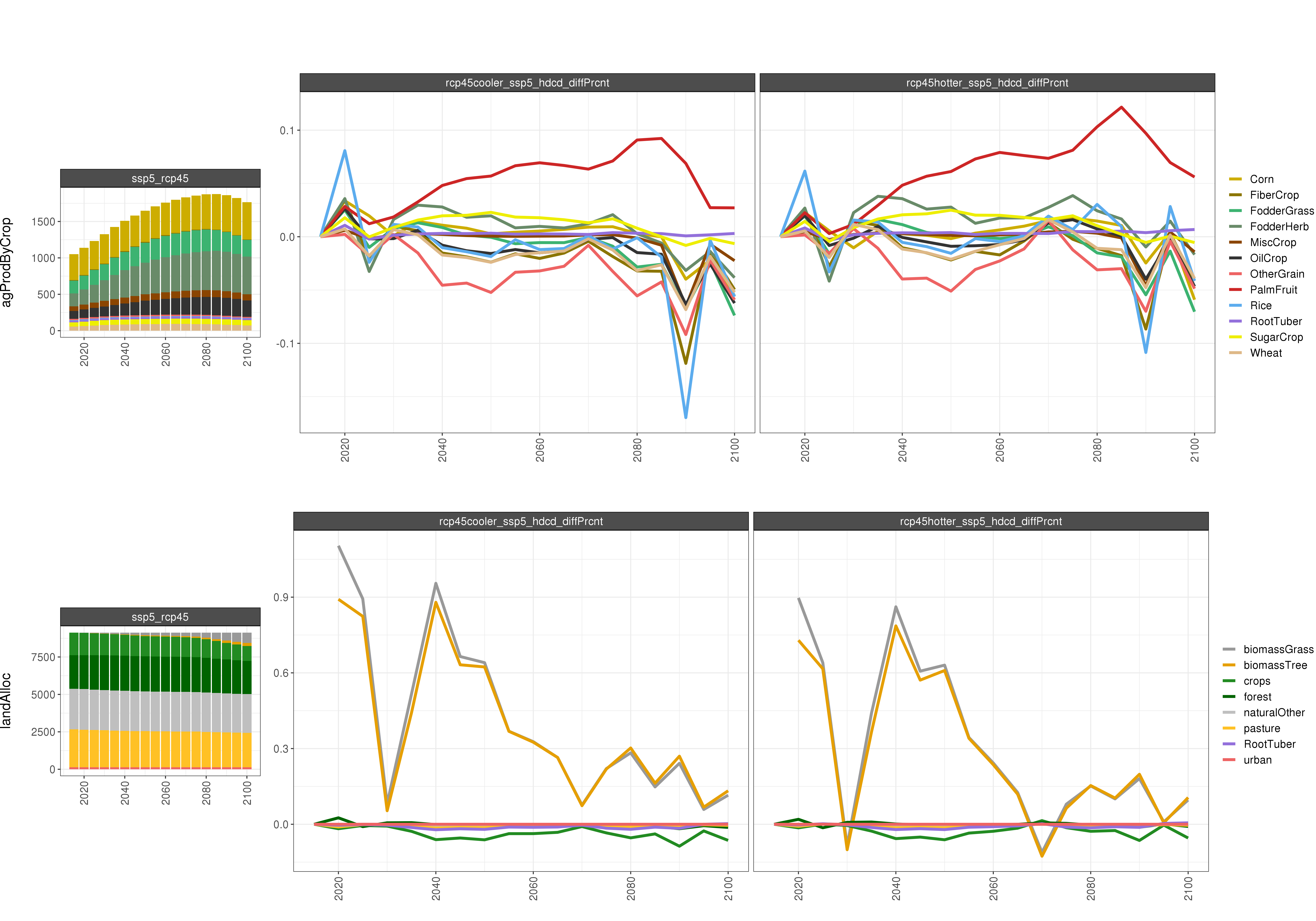
Comparison of GCAM AGLU outputs - percent difference
RCP8.5
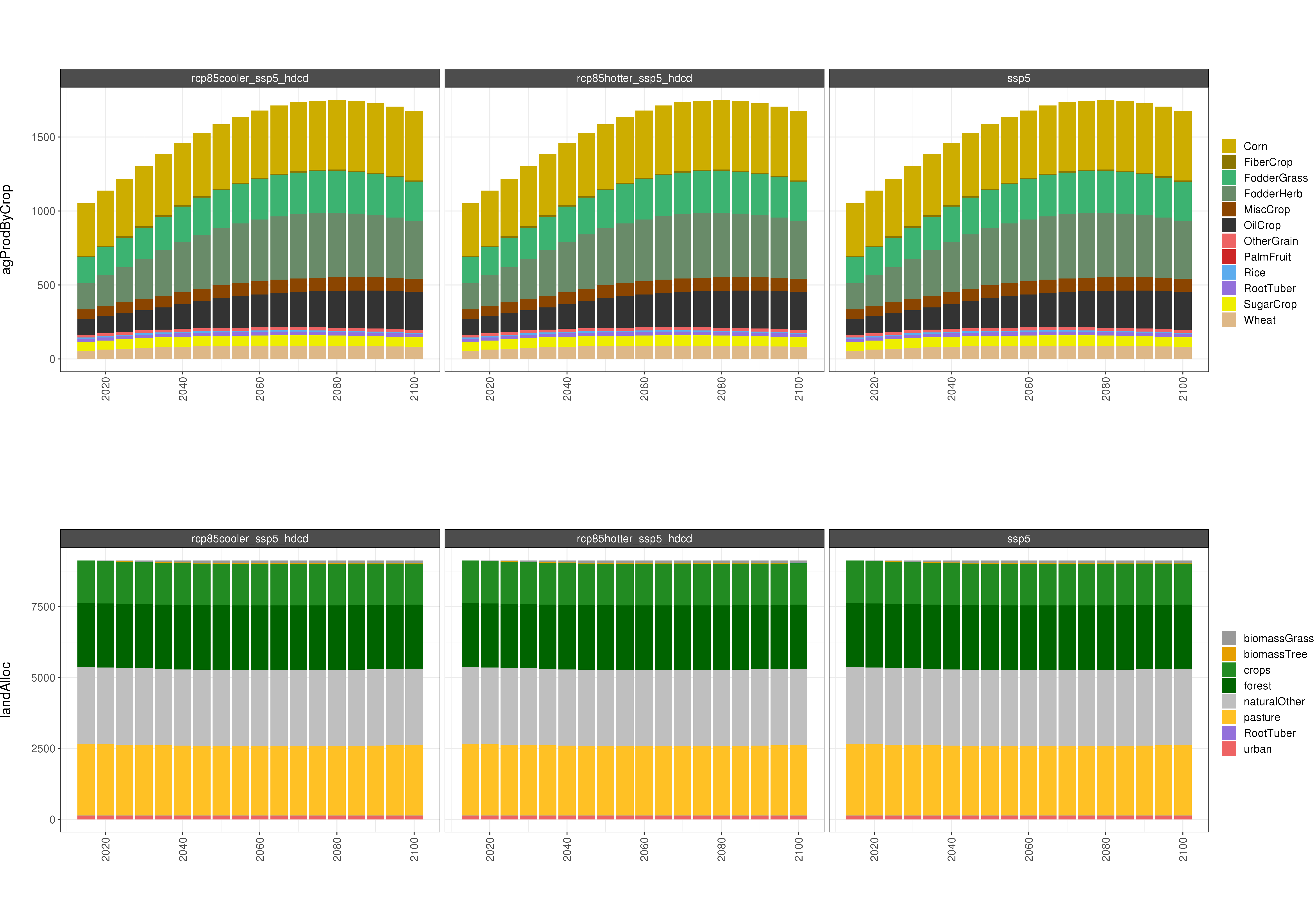
Absolute GCAM AGLU outputs
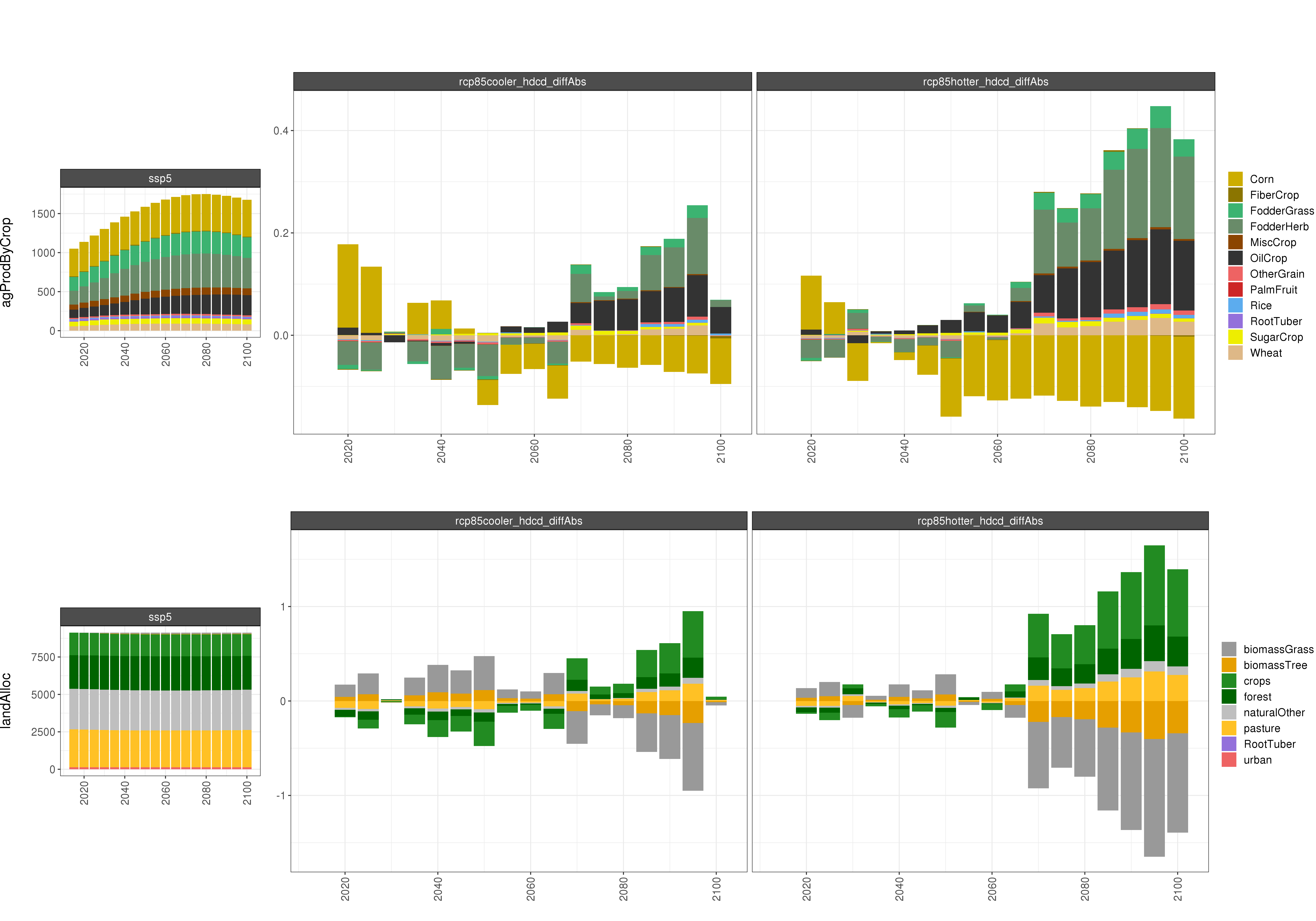
Comparison of GCAM AGLU outputs - absolute difference
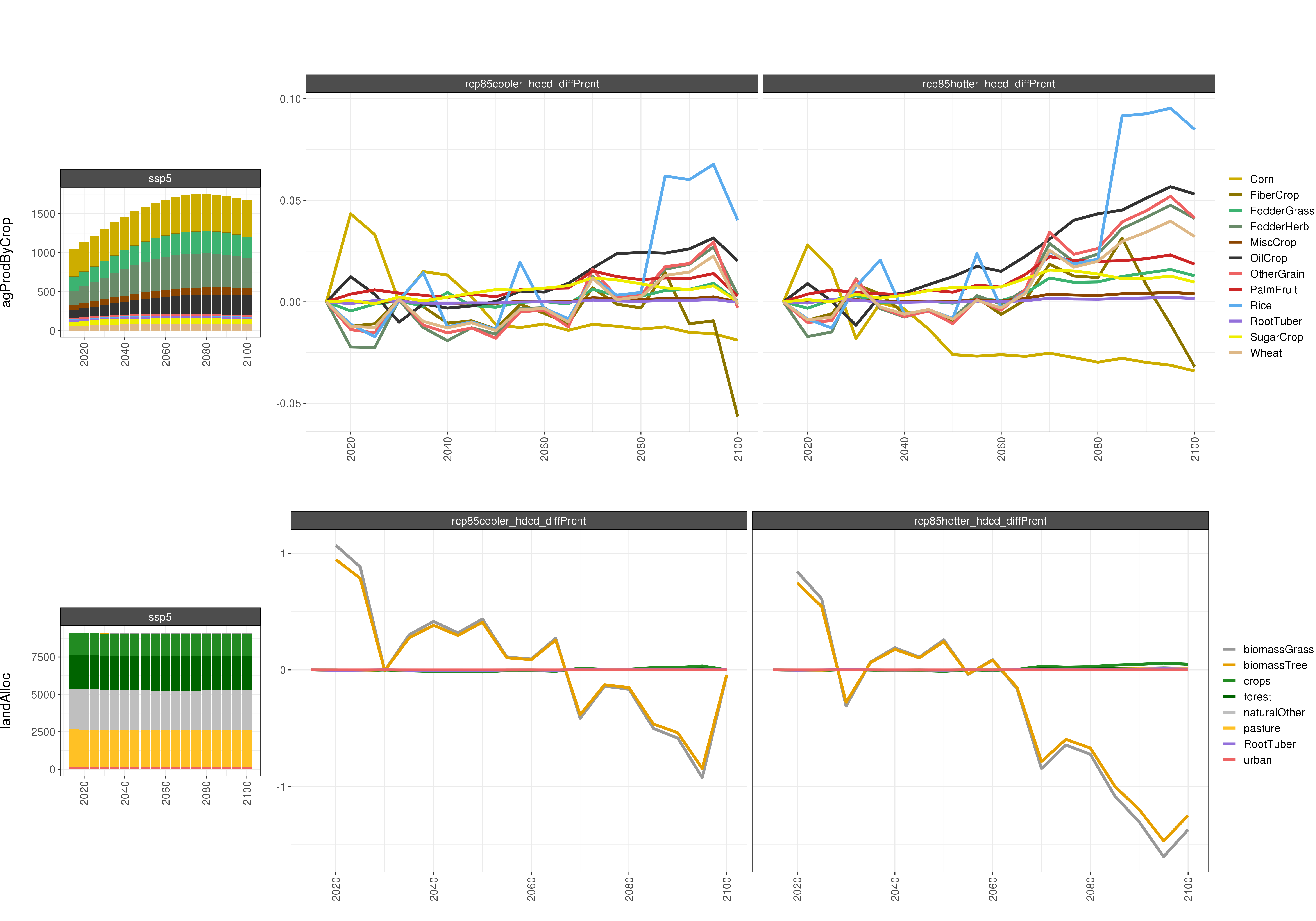
Comparison of GCAM AGLU outputs - percent difference
Emissions
RCP4.5
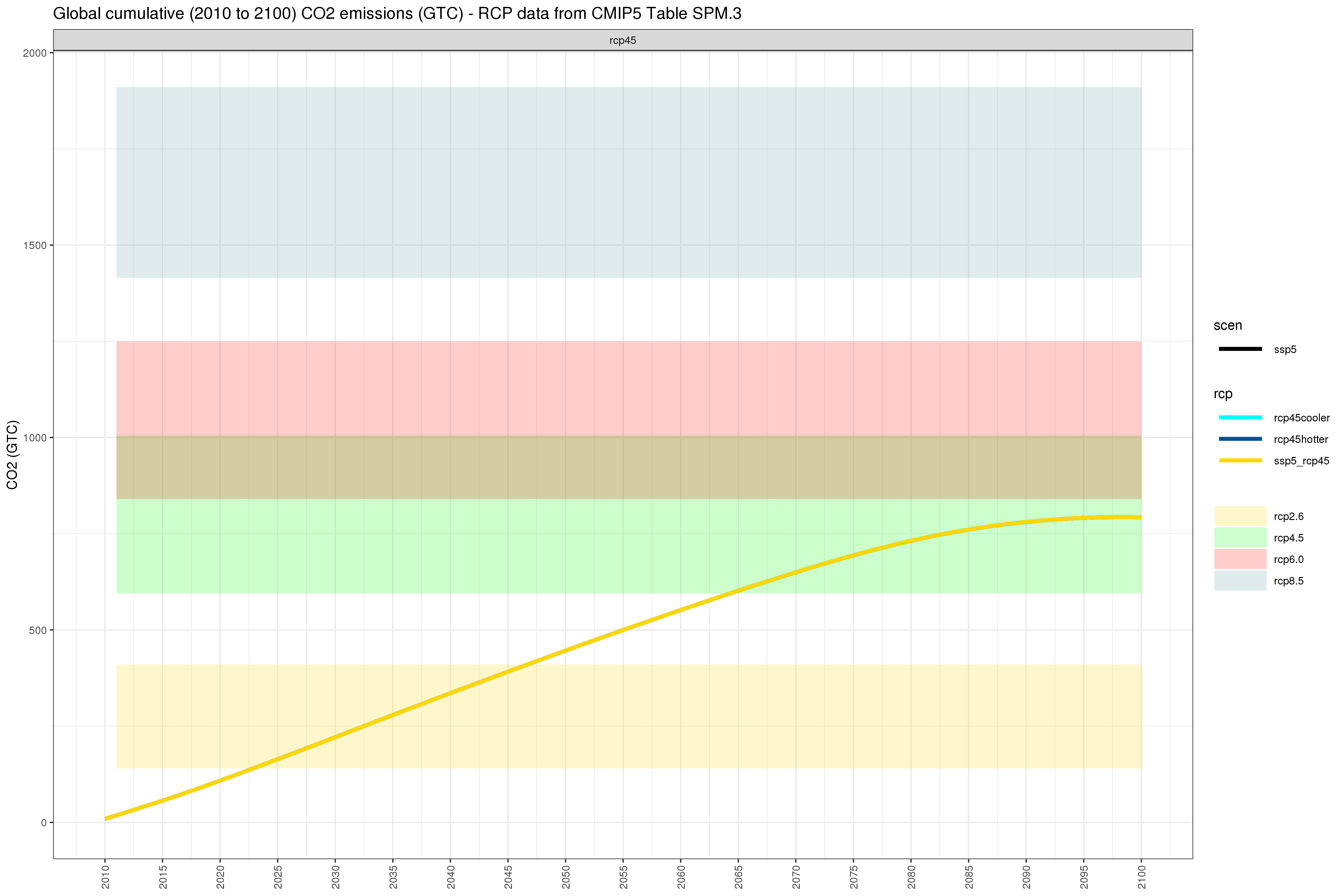
Cumulative global carbon emission pathways under different combinations of SSP3/SSP5 and RCP4.5/RCP8.5
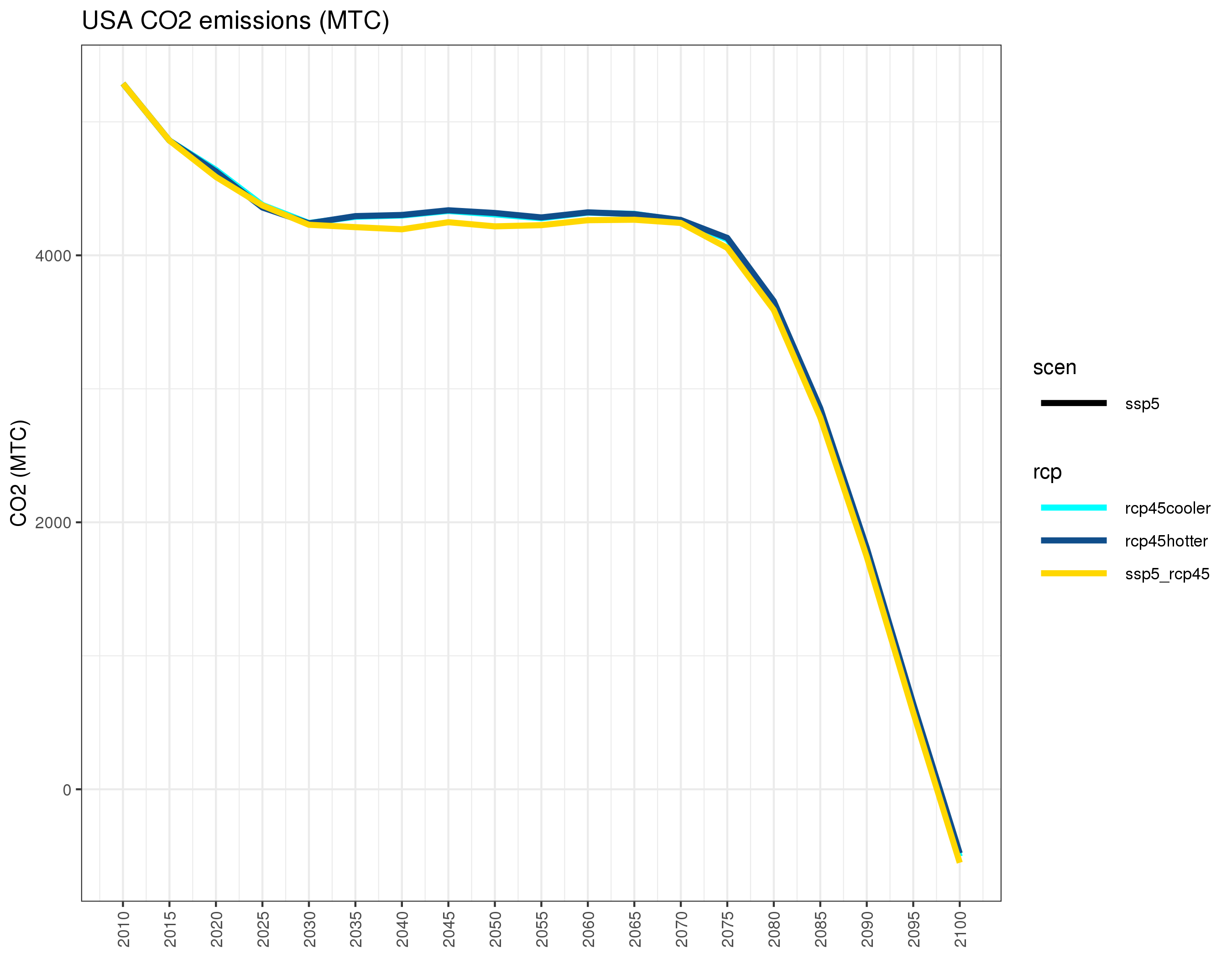
Annual US carbon emissions under different combinations of SSP3/SSP5 and RCP4.5/RCP8.5
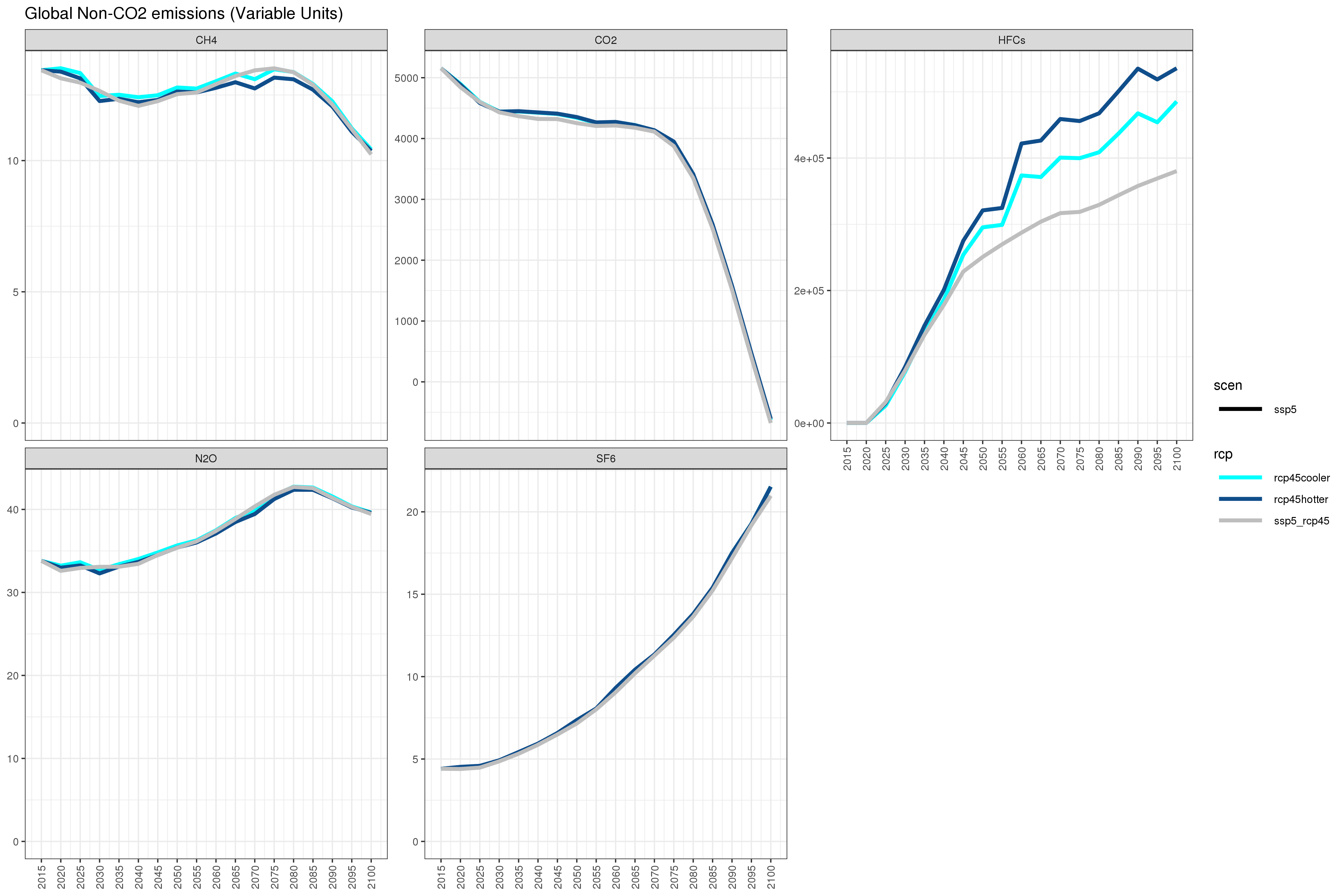
Annual global non-CO2 emissions under different combinations of SSP3/SSP5 and RCP4.5/RCP8.5
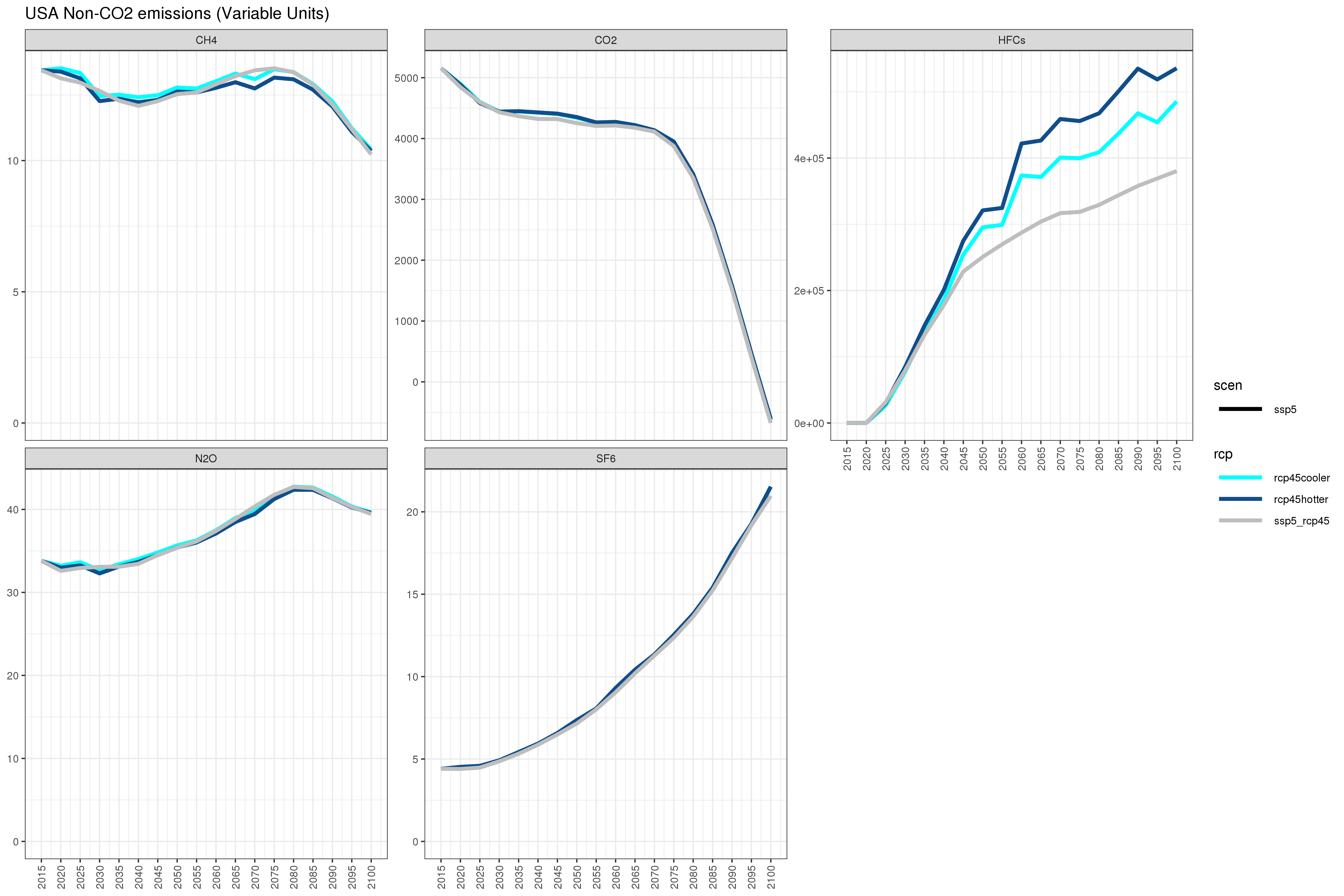
Annual US non-CO2 emissions under different combinations of SSP3/SSP5 and RCP4.5/RCP8.5
RCP8.5
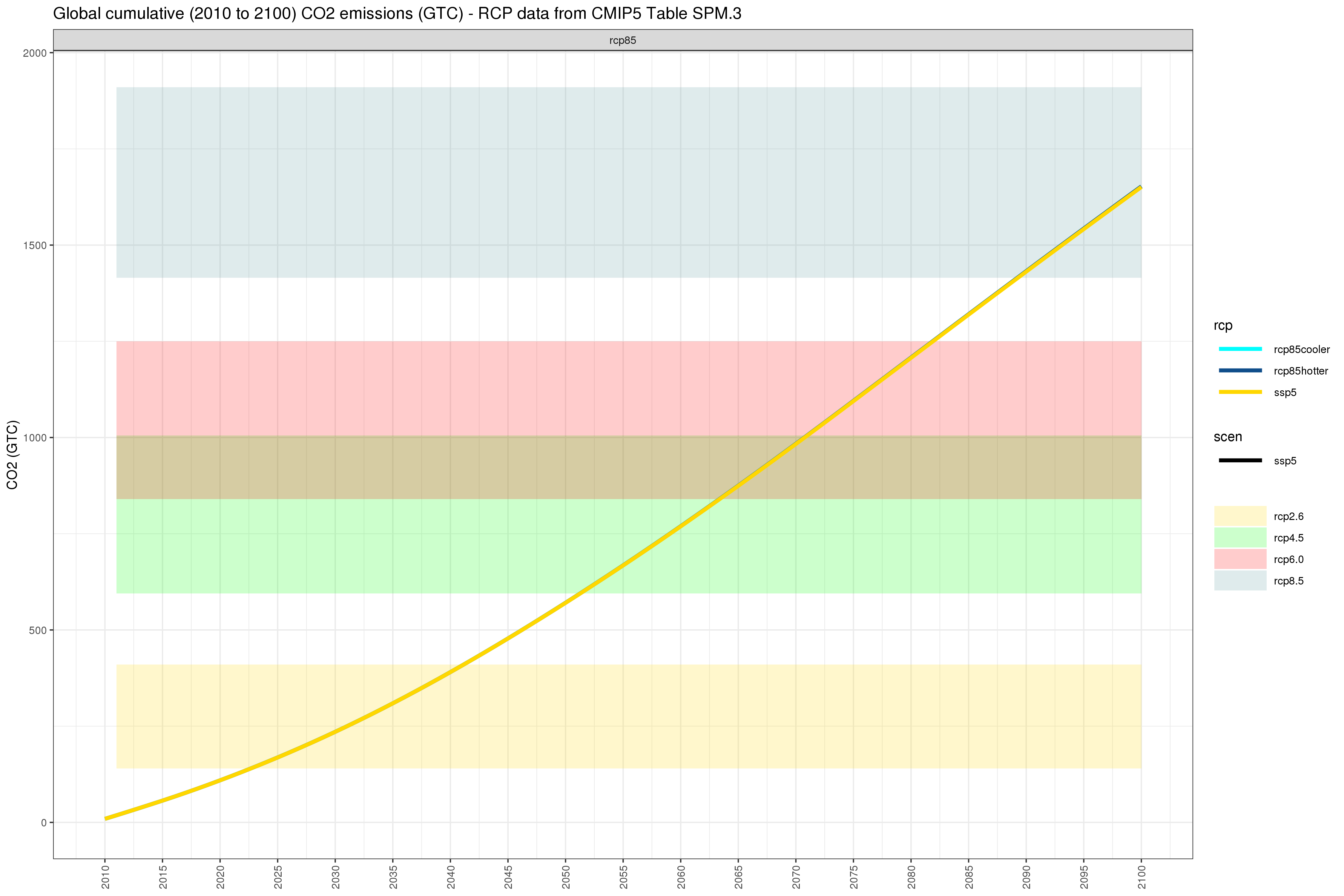
Cumulative global carbon emission pathways under different combinations of SSP3/SSP5 and RCP4.5/RCP8.5

Annual US carbon emissions under different combinations of SSP3/SSP5 and RCP4.5/RCP8.5
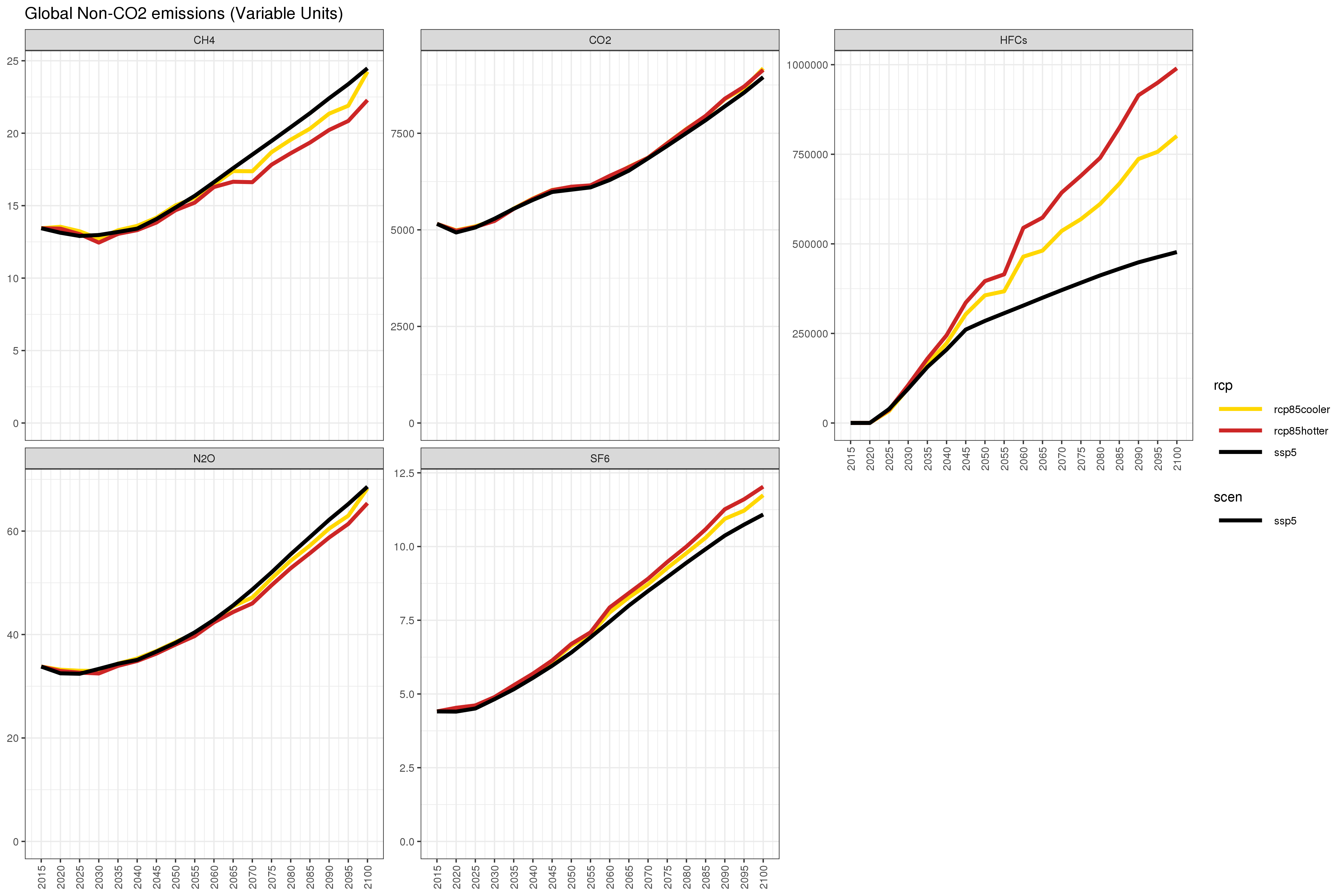
Annual global non-CO2 emissions under different combinations of SSP3/SSP5 and RCP4.5/RCP8.5
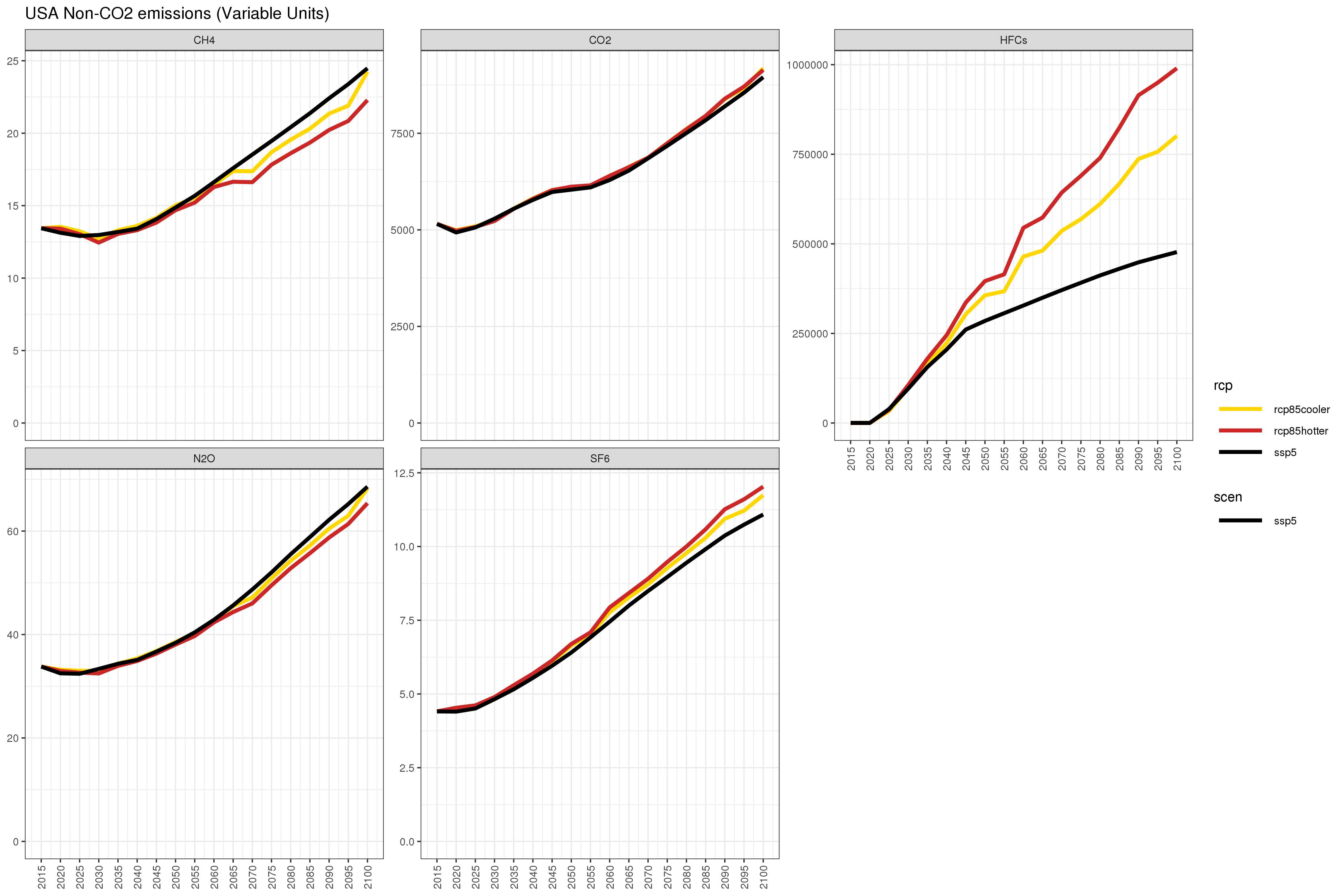
Annual US non-CO2 emissions under different combinations of SSP3/SSP5 and RCP4.5/RCP8.5
Workflow 3 - Ag Yields

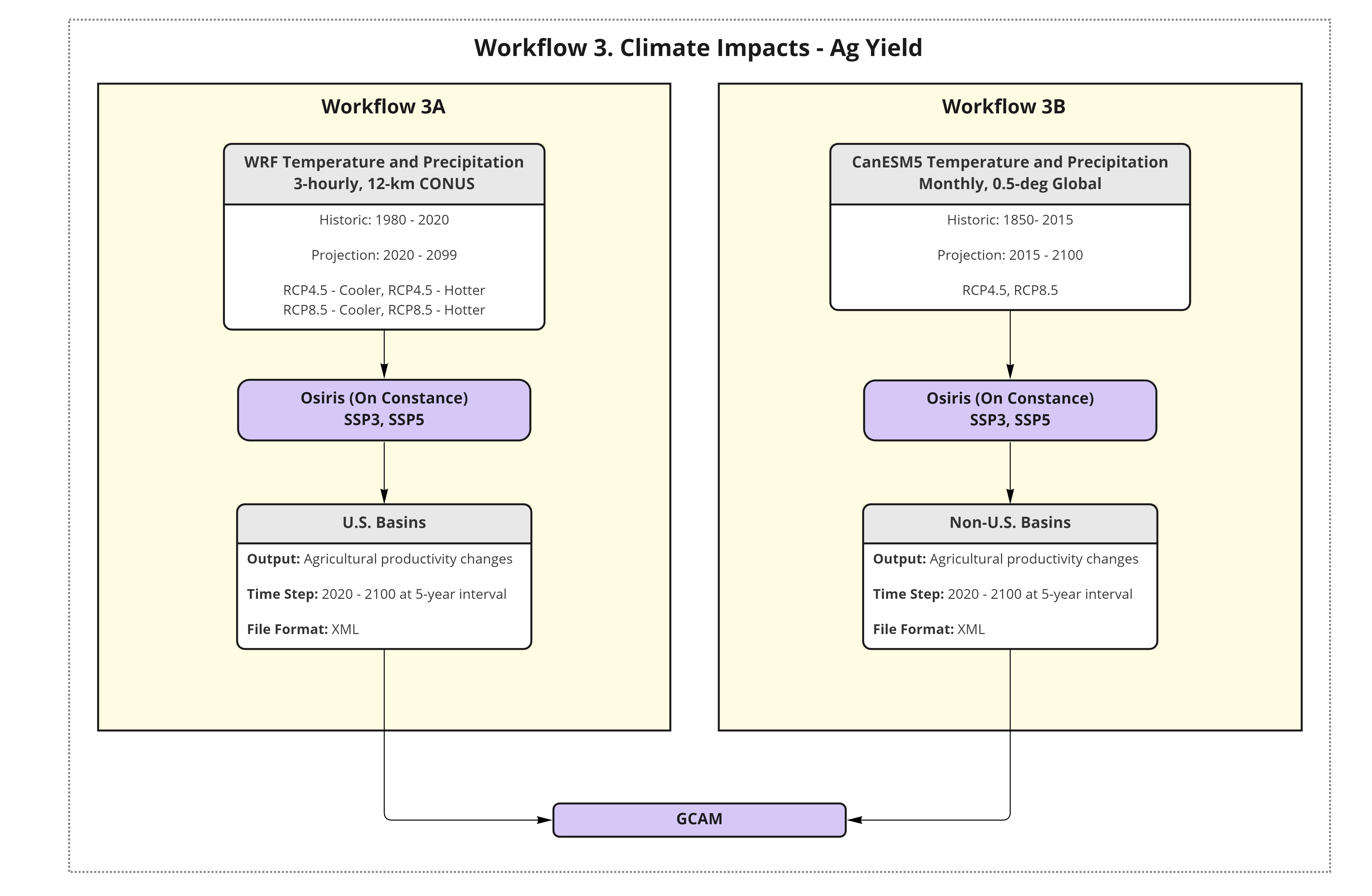
Workflow 3: Climate impacts on ag yields.
Workflow 3A US - Key Insights
Workflow 3A results in WRF outputs being processed and run through
osiris to produce agricultural production change time
series by crop and GCAM basin, for each climate and socioeconomic
scenarios.
Some preliminary trends we have observed:
- AgProdByCrop shows an increase from reference to cool and hot, especially for corn. However, we see the opposite trend in land use by crop. It goes down for crops.
- Water consumption and water withdrawal go down. Can these trends be explained by increasing crop yields which requires less land and water?
- Although rainfed ag yields for corn are high in some basins compared to irrigated, such as California and Pacific NW, this appears to be a relative measure of the trend and not necessarily the magnitude of crop production (possibly due to area of rfd vs irr not being considered here). For example, corn production actually drops in the California basin (based on ag production by tech query). The largest increase in corn production is in the Upper Mississippi Basin, which is also consistent with the aglu map.
Workflow 3B US and Global
Table Workflow 3
| Step | Description | Location |
|---|---|---|
| WRF Outputs Raw |
|
(NERSC) /global/cfs/cdirs/m2702/gsharing |
| Extract key variables into separate ncdf file | Since we get an error when trying to run Osiris on NERSC, we transfer the files to PIC and run Osiris there. We extract the relavant variables to reduce the file size. | (NERSC) /global/cfs/cdirs/m2702/gcamusa/osiris/wrf_extract.sh |
| Transfer files to PIC using globus | Log in to globus (need to make an account first), select and activate endpoints, and transfer files | (PIC) /pic/projects/im3/WRF_data |
| Run Osiris |
|
(PIC) /pic/projects/im3/gcamusa/climateimpacts/osiris |
| Run GCAM |
|
(PIC) /pic/projects/im3/gcamusa/gcam-usa-im3/exe |
| Run diagnostics |
|
(PIC) /pic/projects/im3/gcamusa/diagnostics |
Agyield Diagnostics
AgProdChange
Corn
RCP4.5 IRR
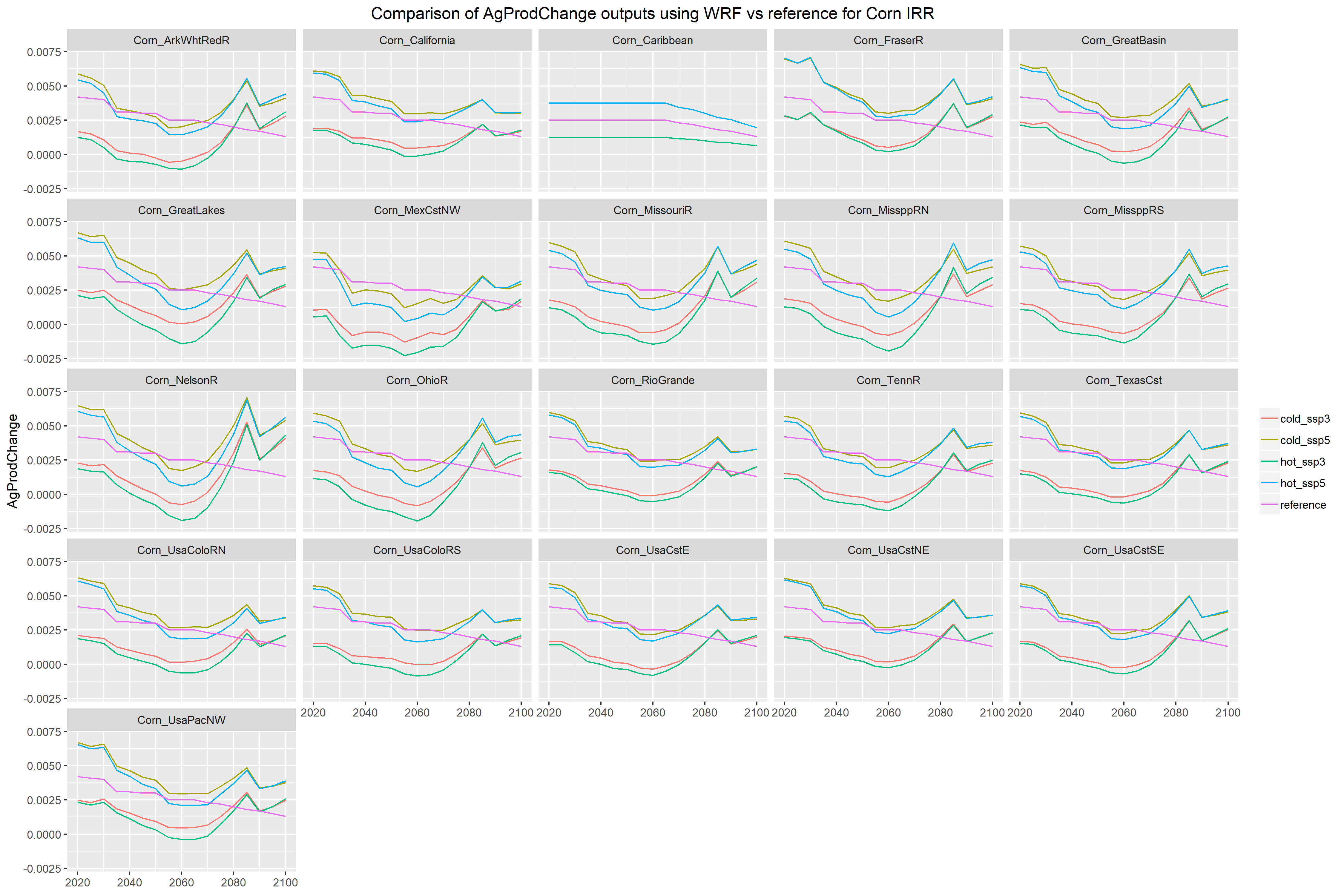
AgProdChange for RCP4.5 IRR Corn
RCP4.5 RFD

AgProdChange for RCP4.5 RFD Corn
RCP8.5 IRR
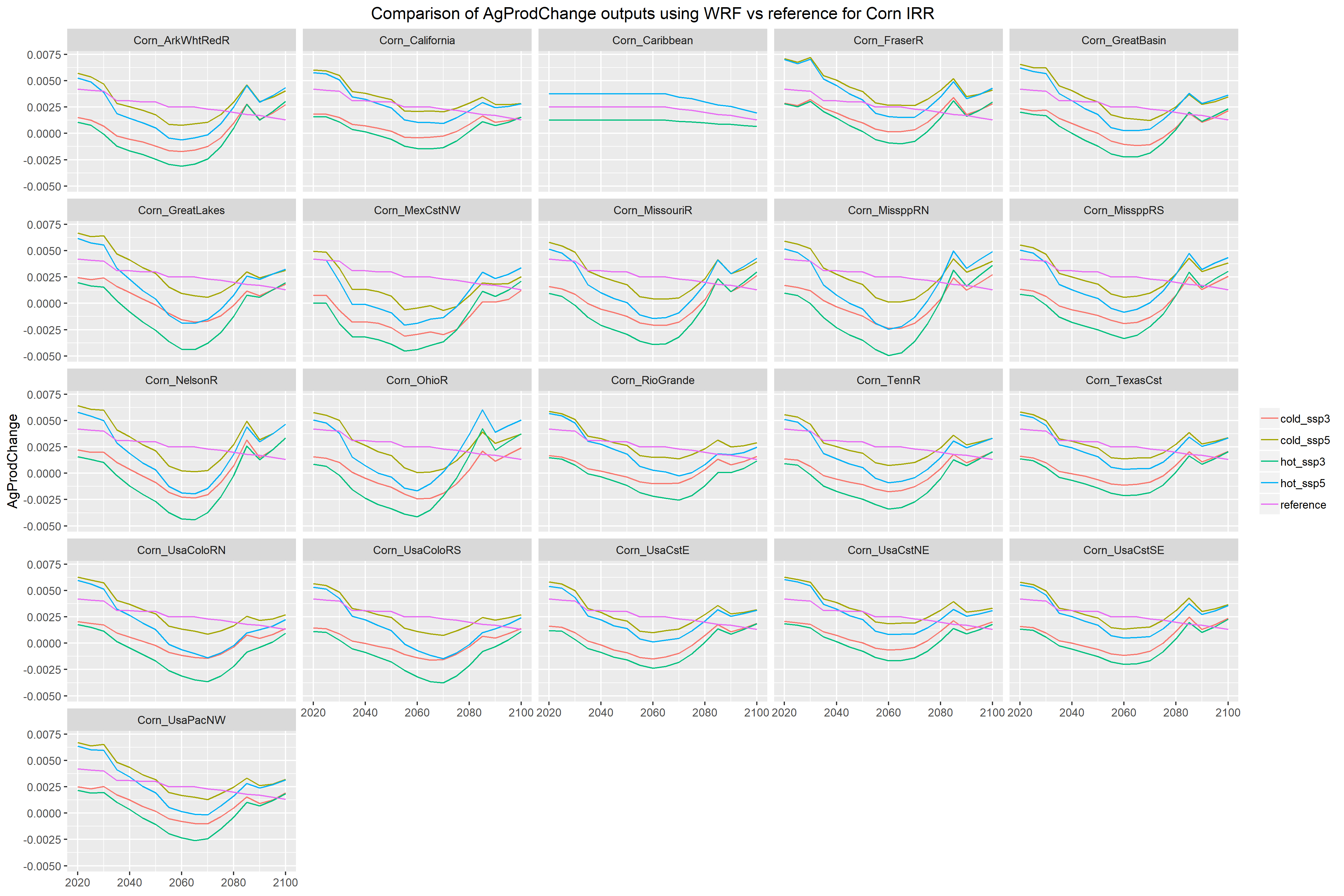
AgProdChange for RCP8.5 IRR Corn
RCP8.5 RFD
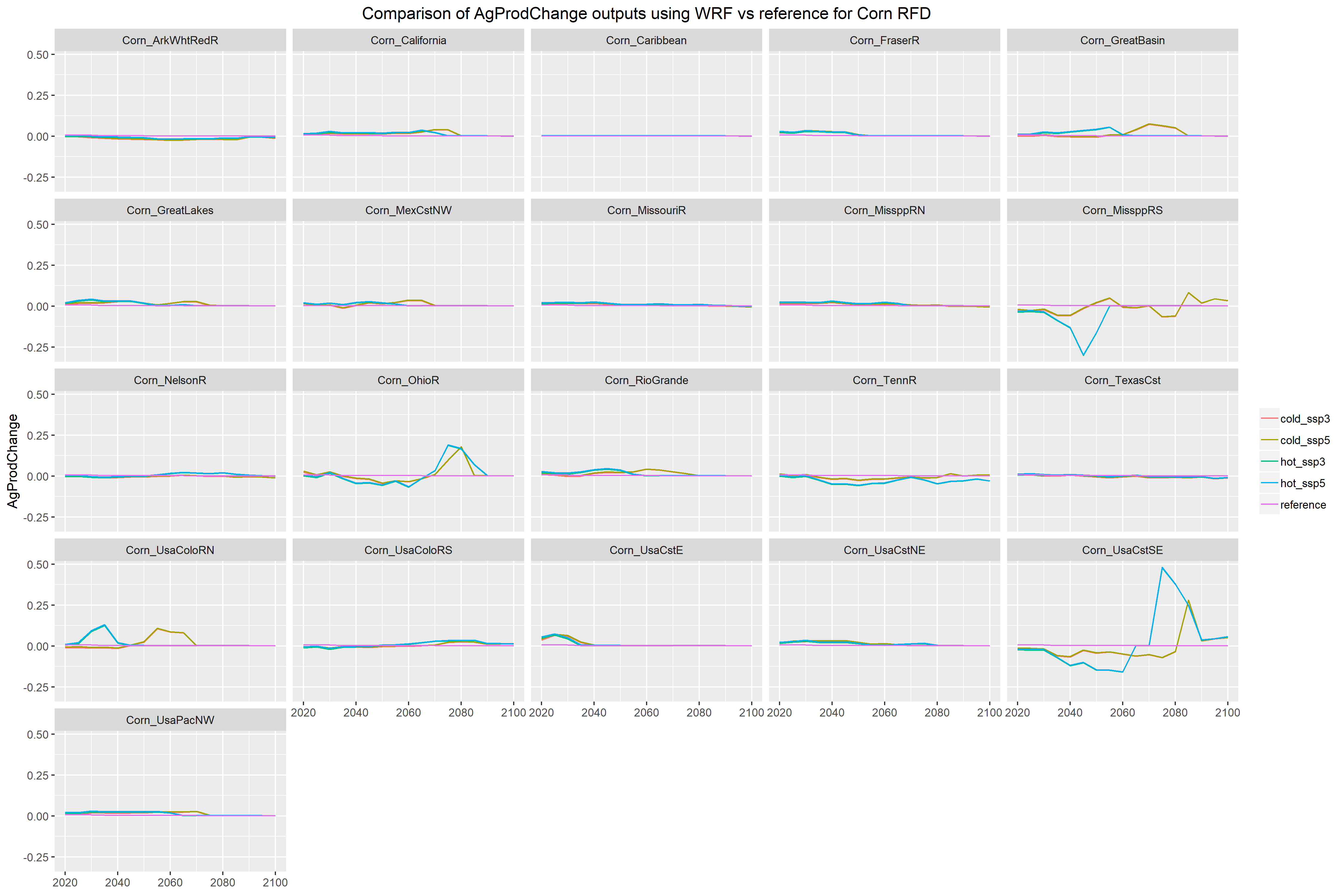
AgProdChange for RCP8.5 RFD Corn
Rice
RCP4.5 IRR
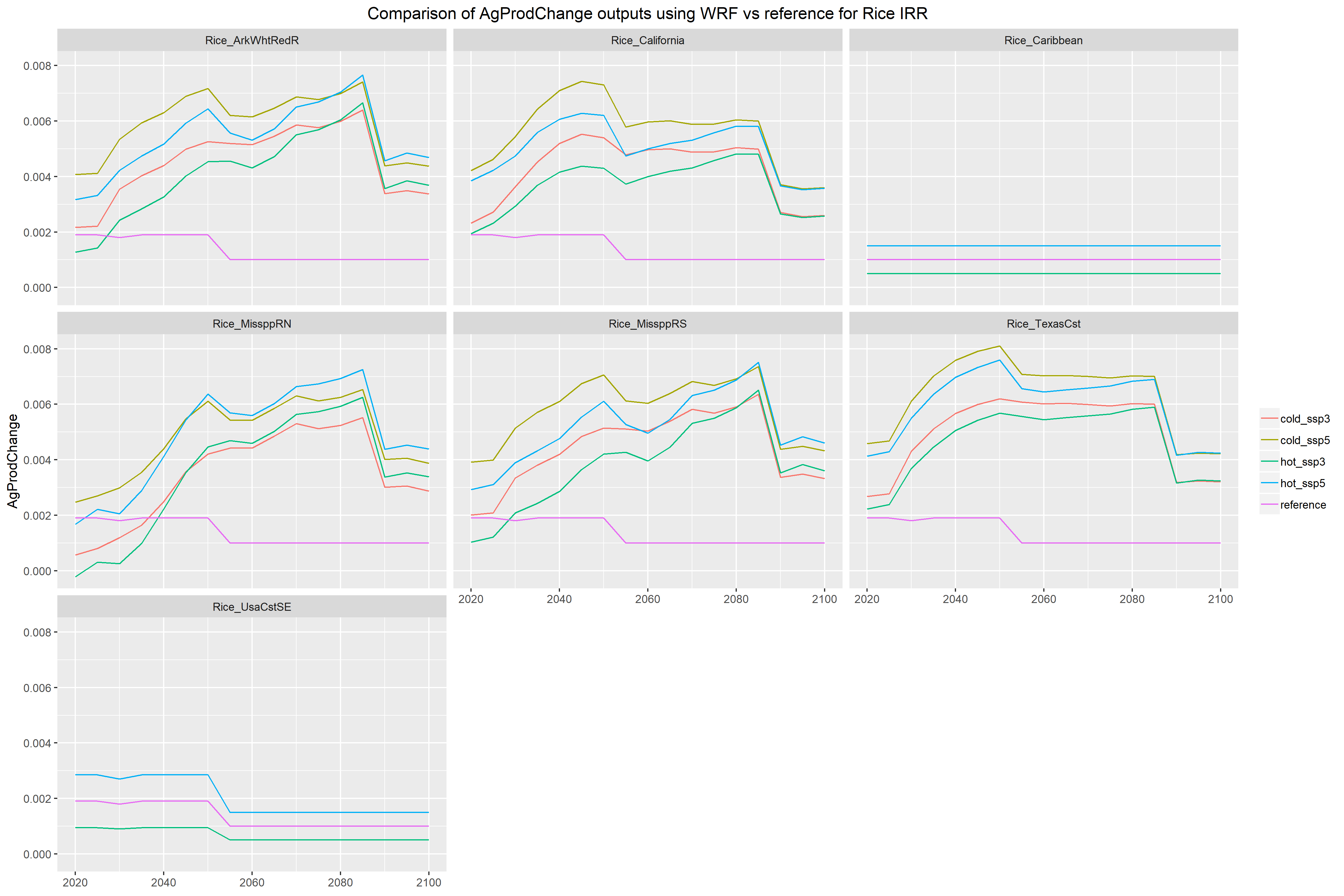
AgProdChange for RCP4.5 IRR Rice
RCP4.5 RFD
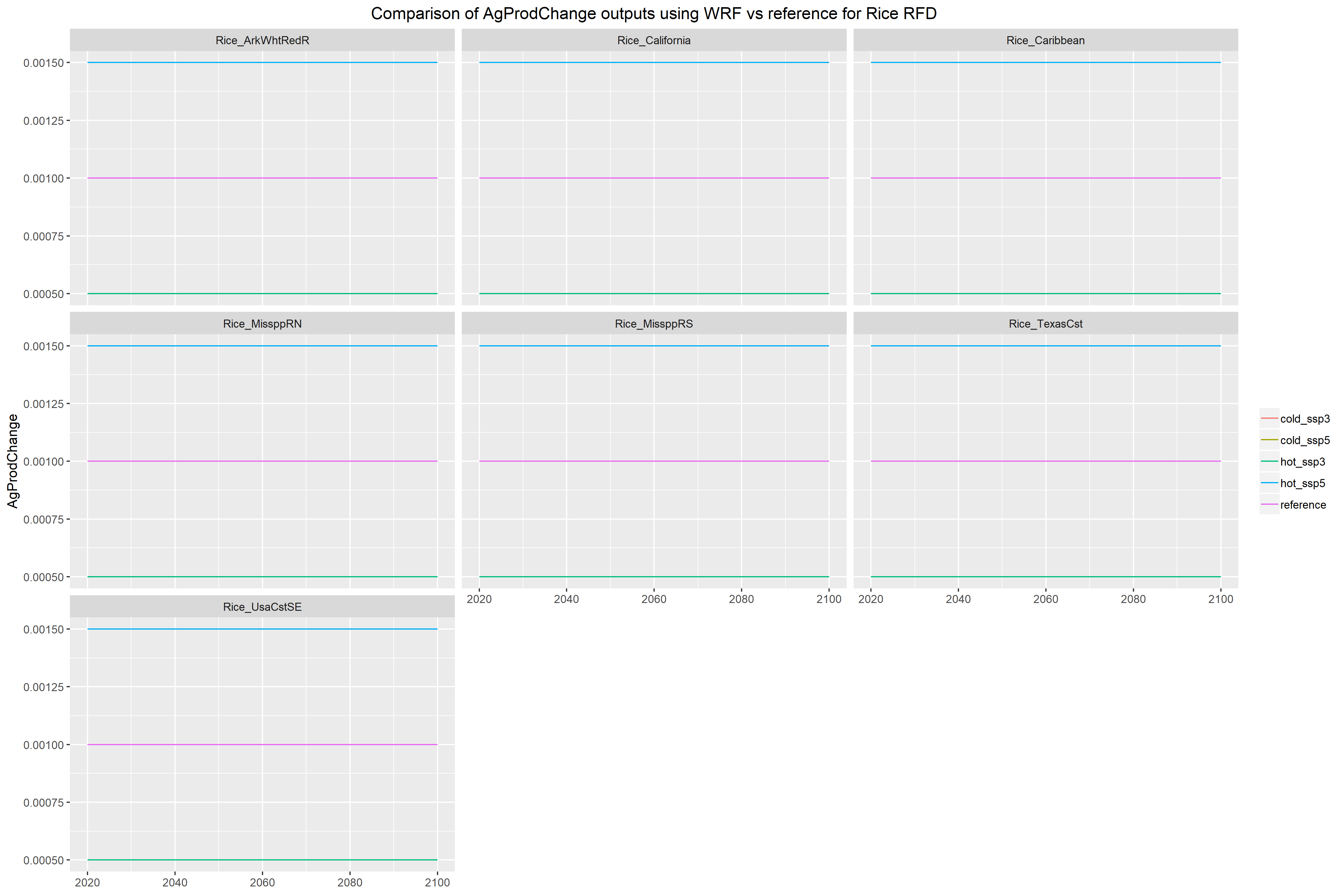
AgProdChange for RCP4.5 RFD Rice
RCP8.5 IRR
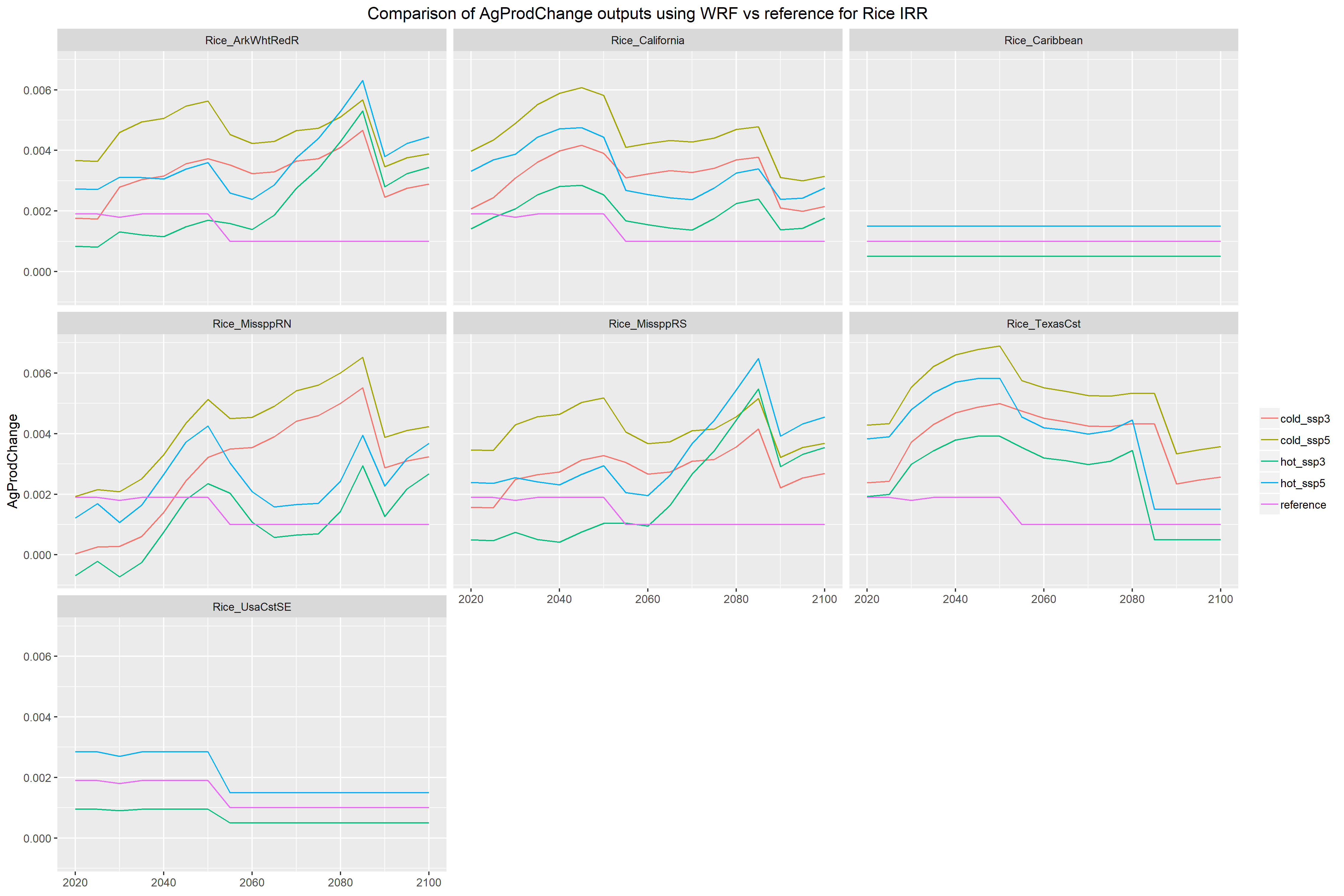
AgProdChange for RCP8.5 IRR Rice
RCP8.5 RFD
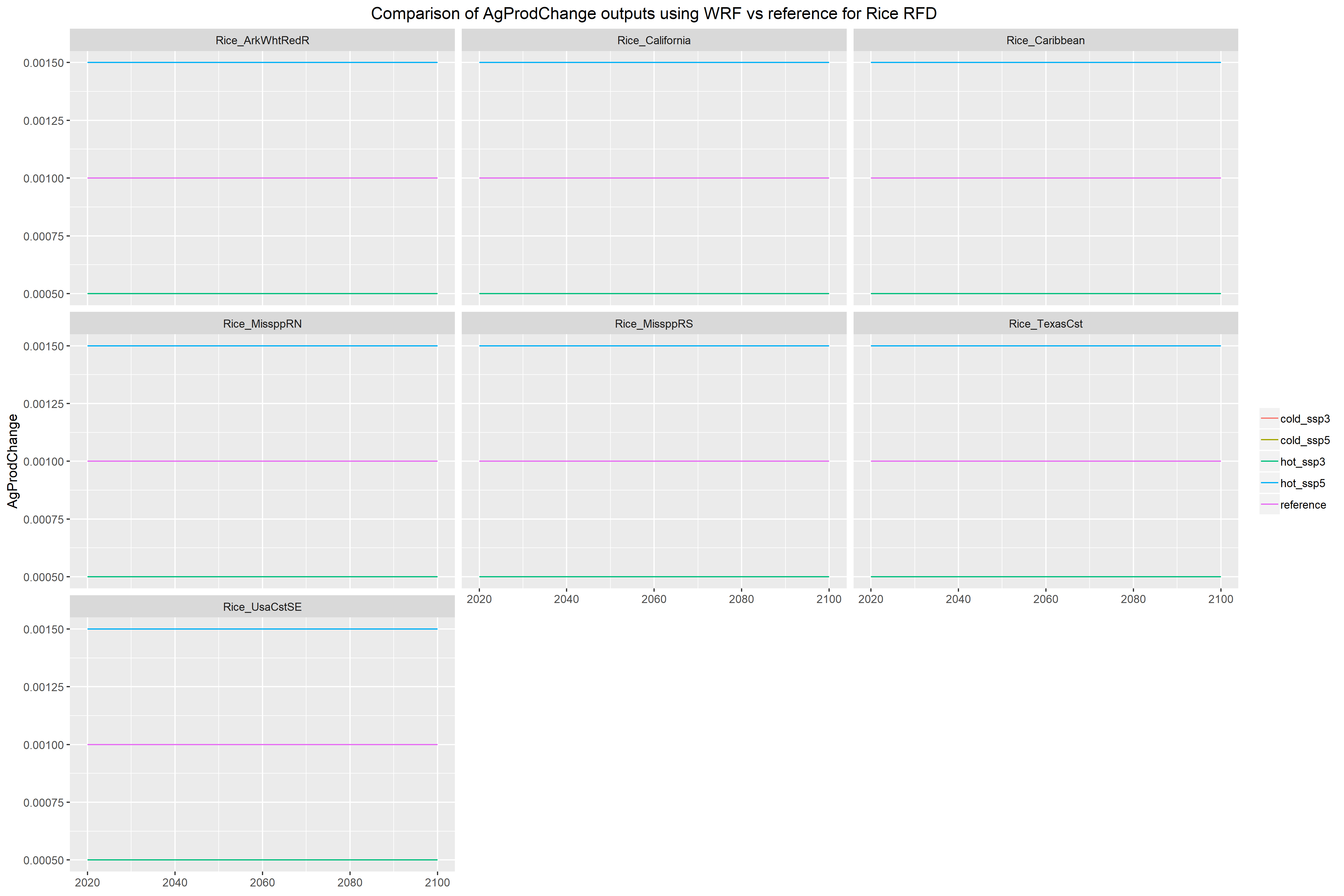
AgProdChange for RCP8.5 RFD Rice
Wheat
RCP4.5 IRR
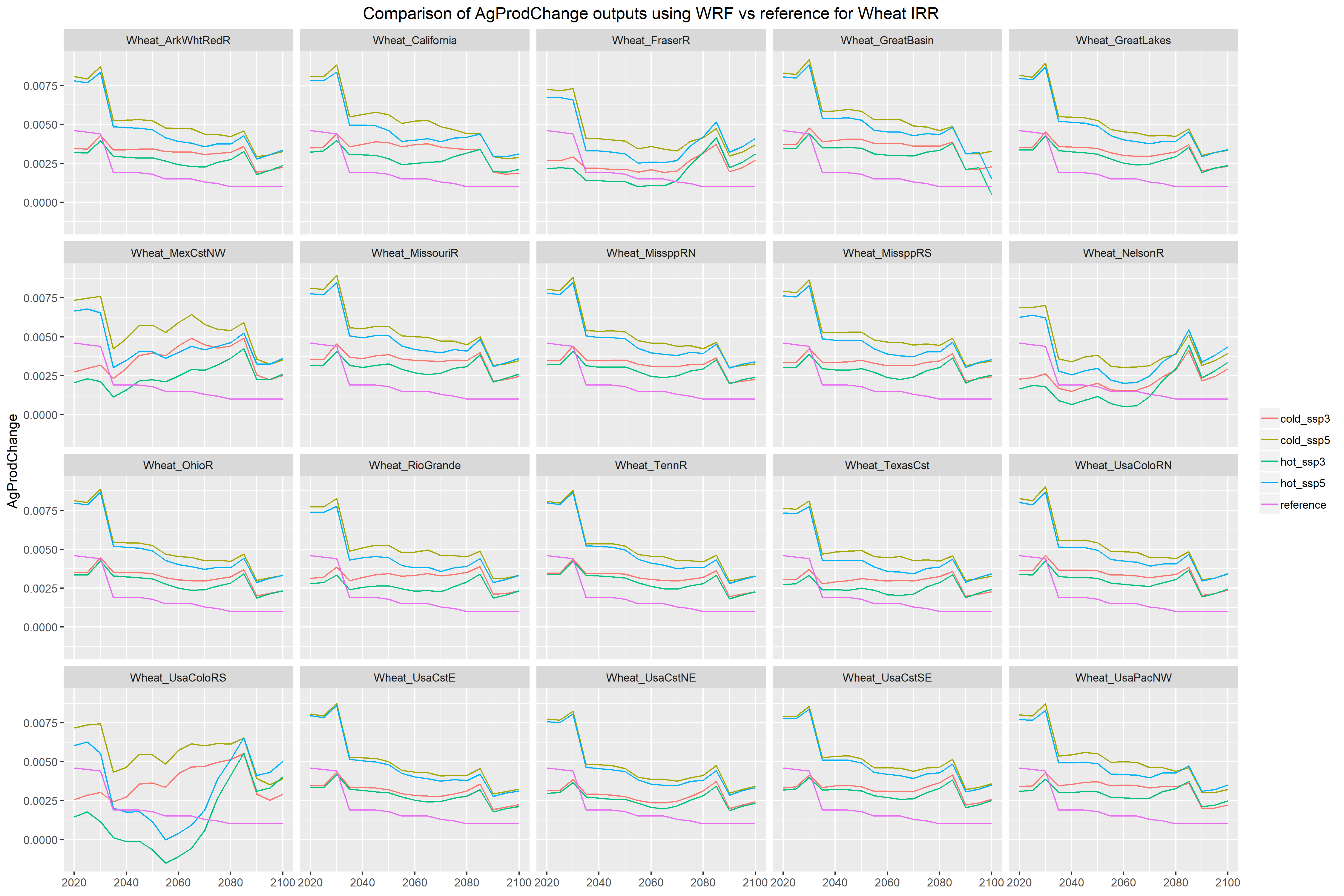
AgProdChange for RCP4.5 IRR Wheat
RCP4.5 RFD
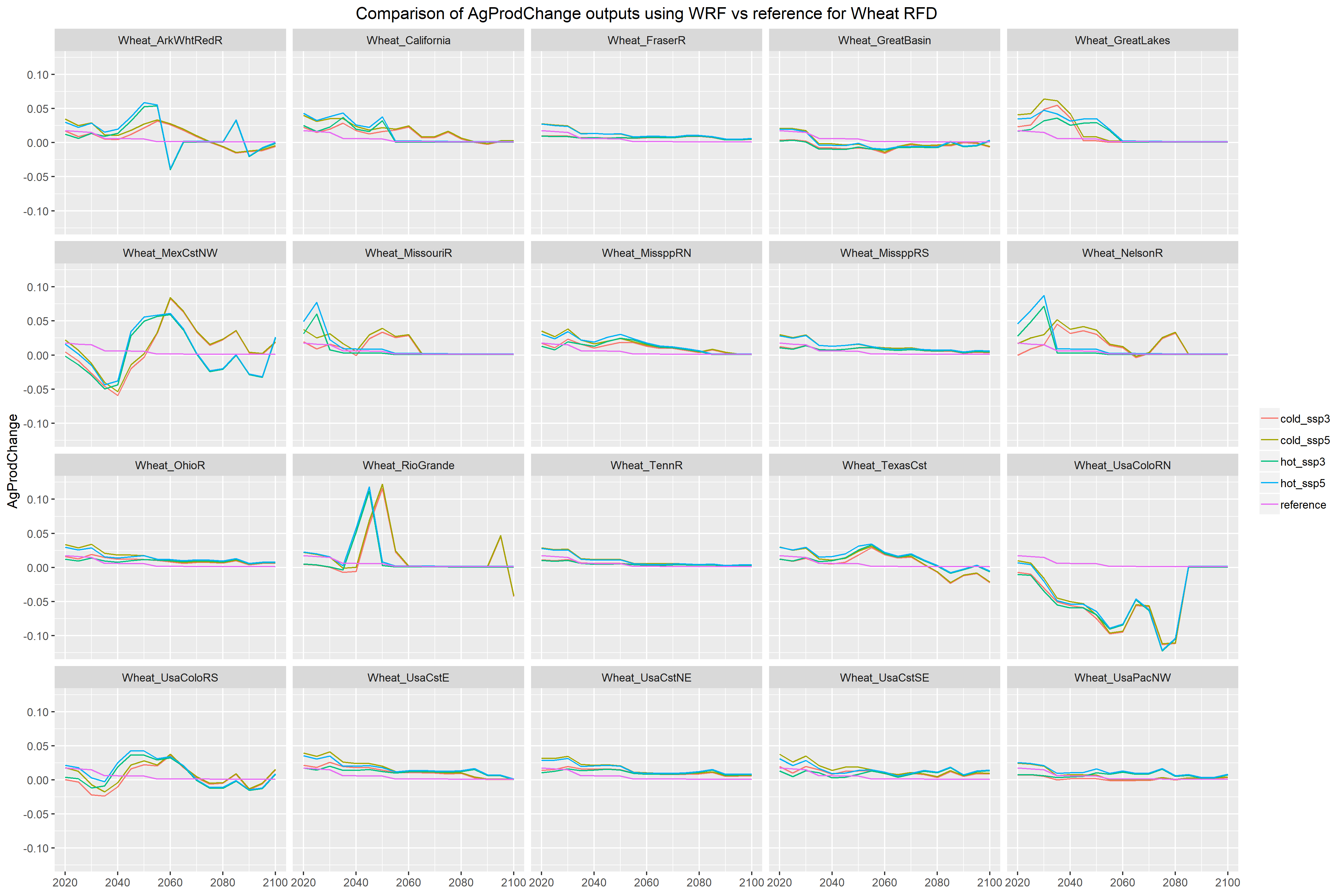
AgProdChange for RCP4.5 RFD Wheat
RCP8.5 IRR
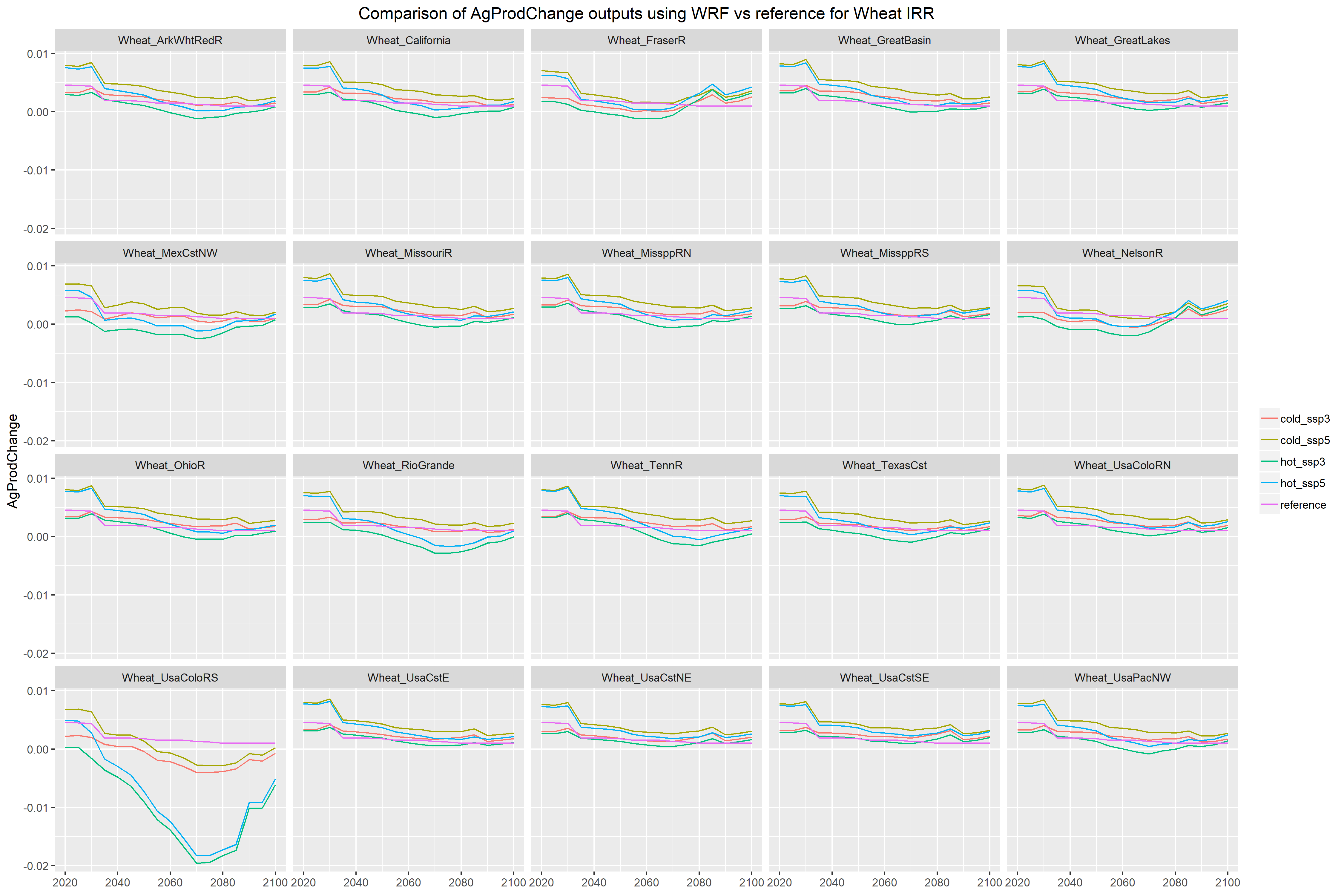
AgProdChange for RCP8.5 IRR Wheat
RCP8.5 RFD
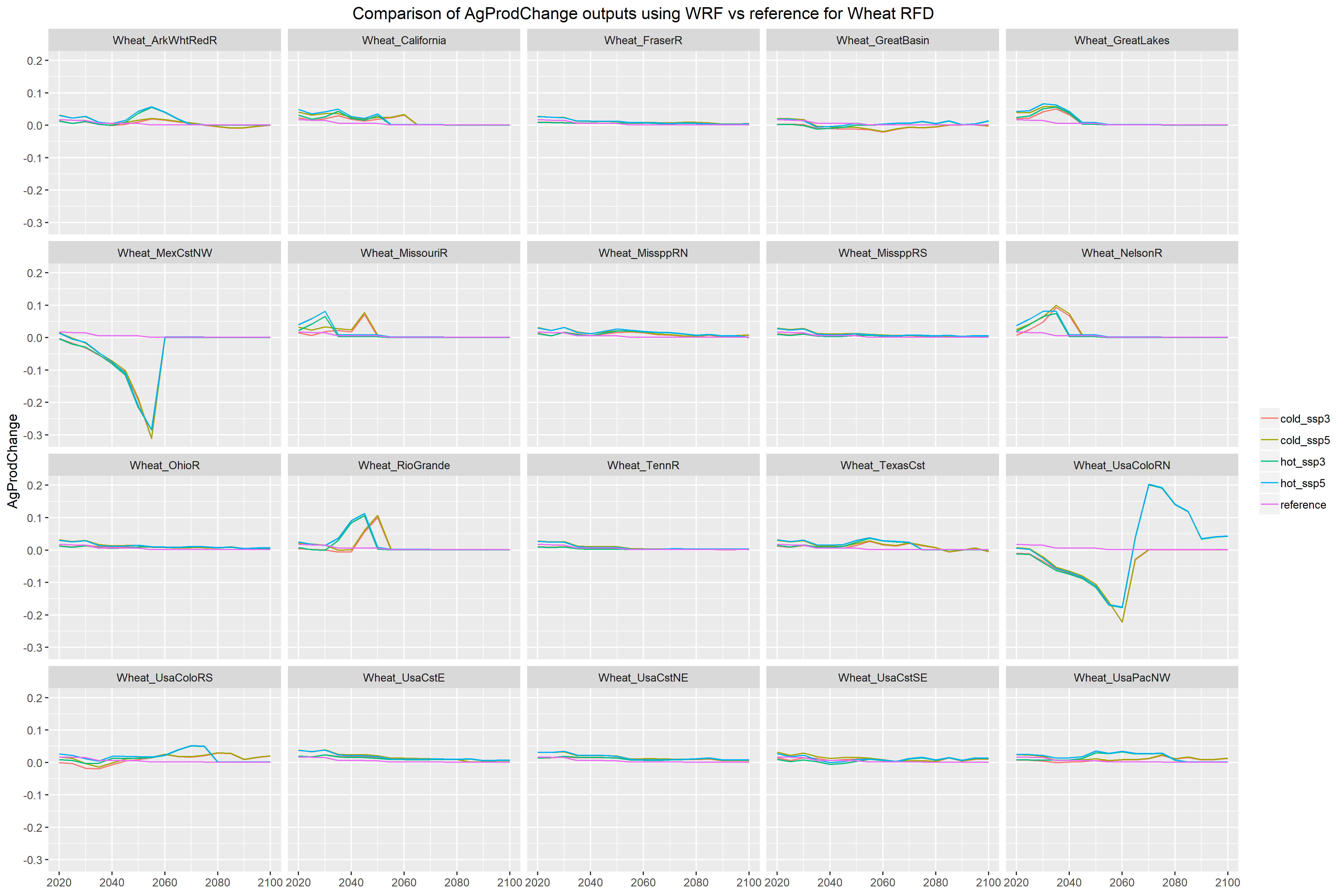
AgProdChange for RCP8.5 RFD Wheat
Oil Crop
RCP4.5 IRR
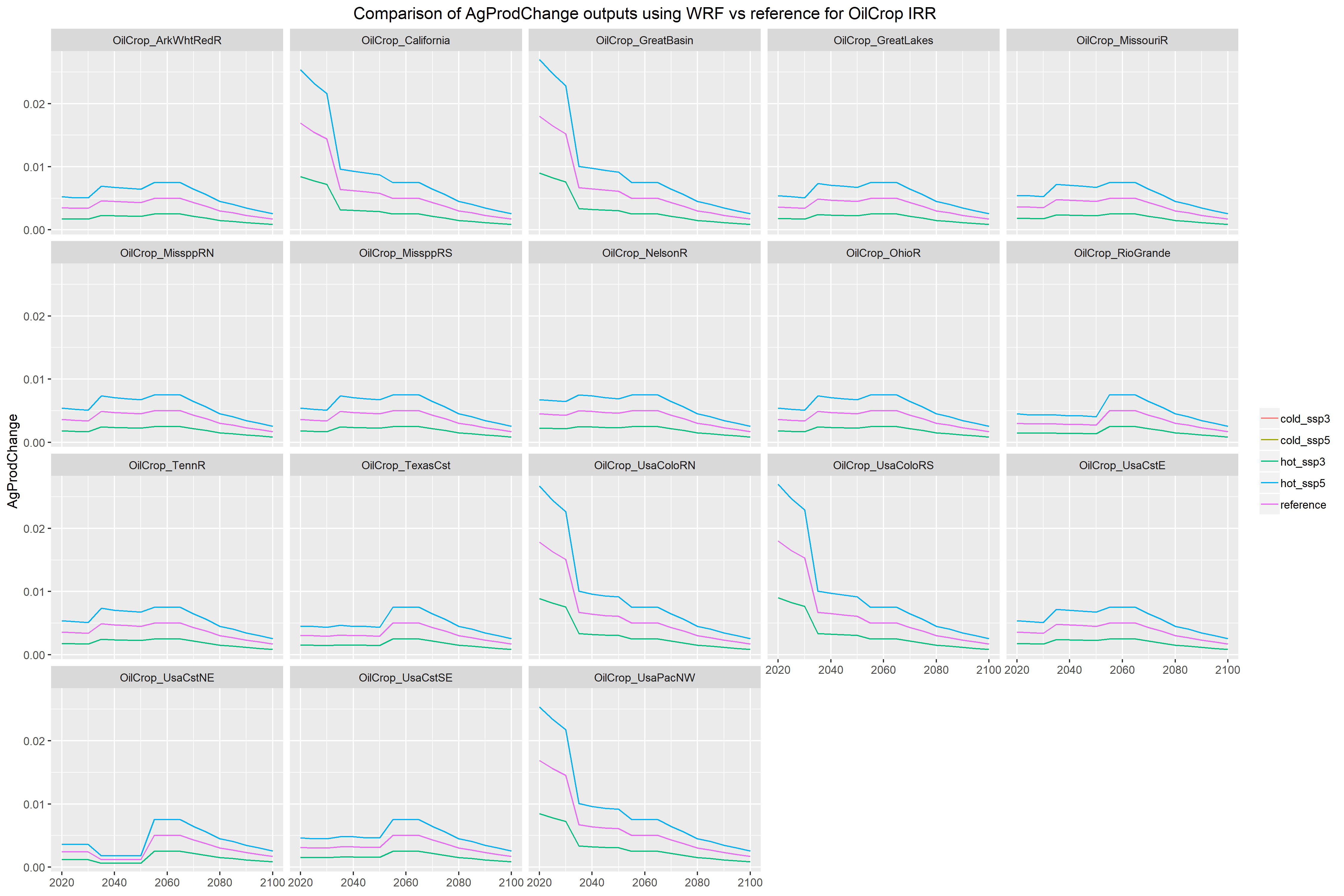
AgProdChange for RCP4.5 IRR Oil Crop
RCP4.5 RFD
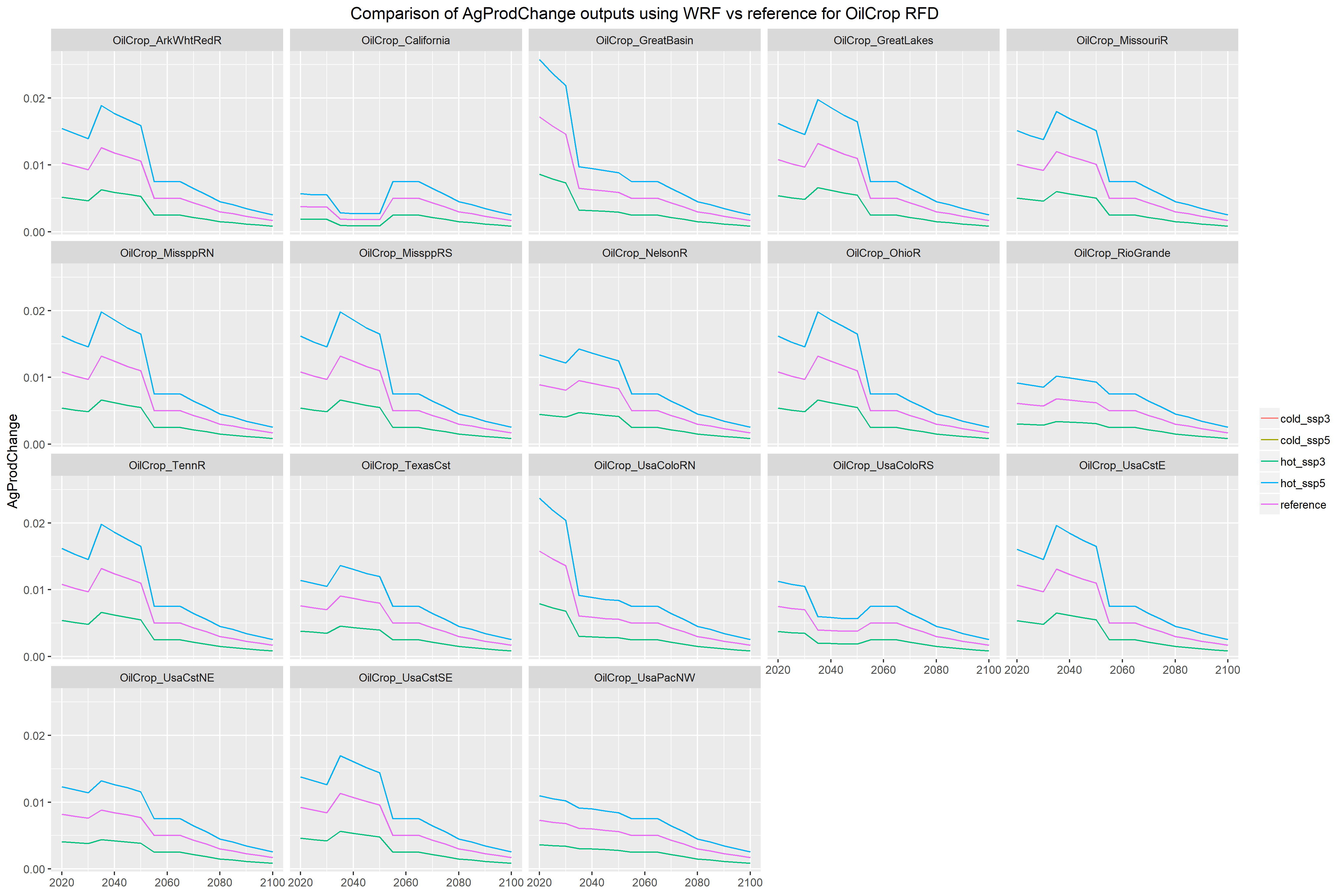
AgProdChange for RCP4.5 RFD Oil Crop
RCP8.5 IRR
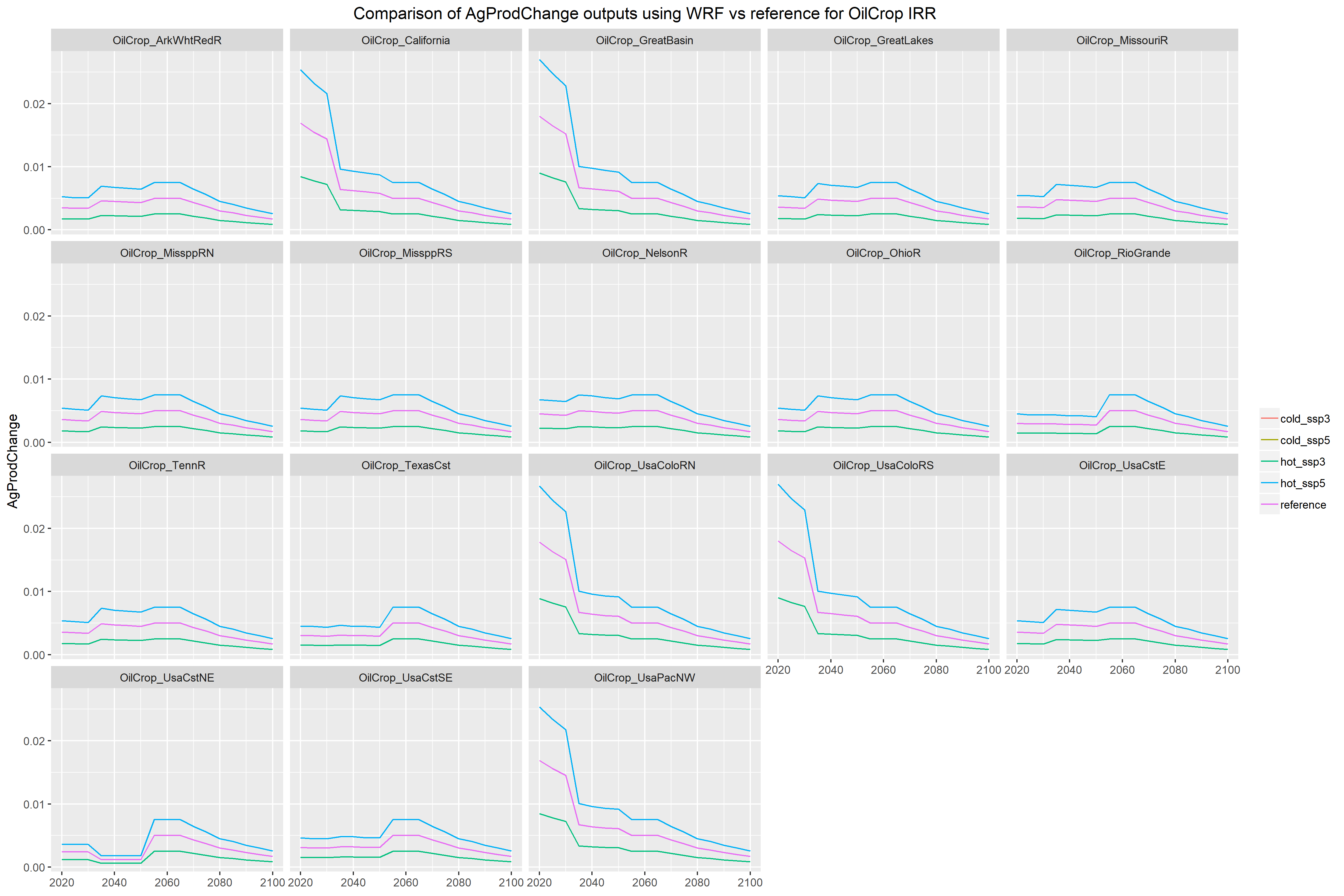
AgProdChange for RCP8.5 IRR Oil Crop
RCP8.5 RFD
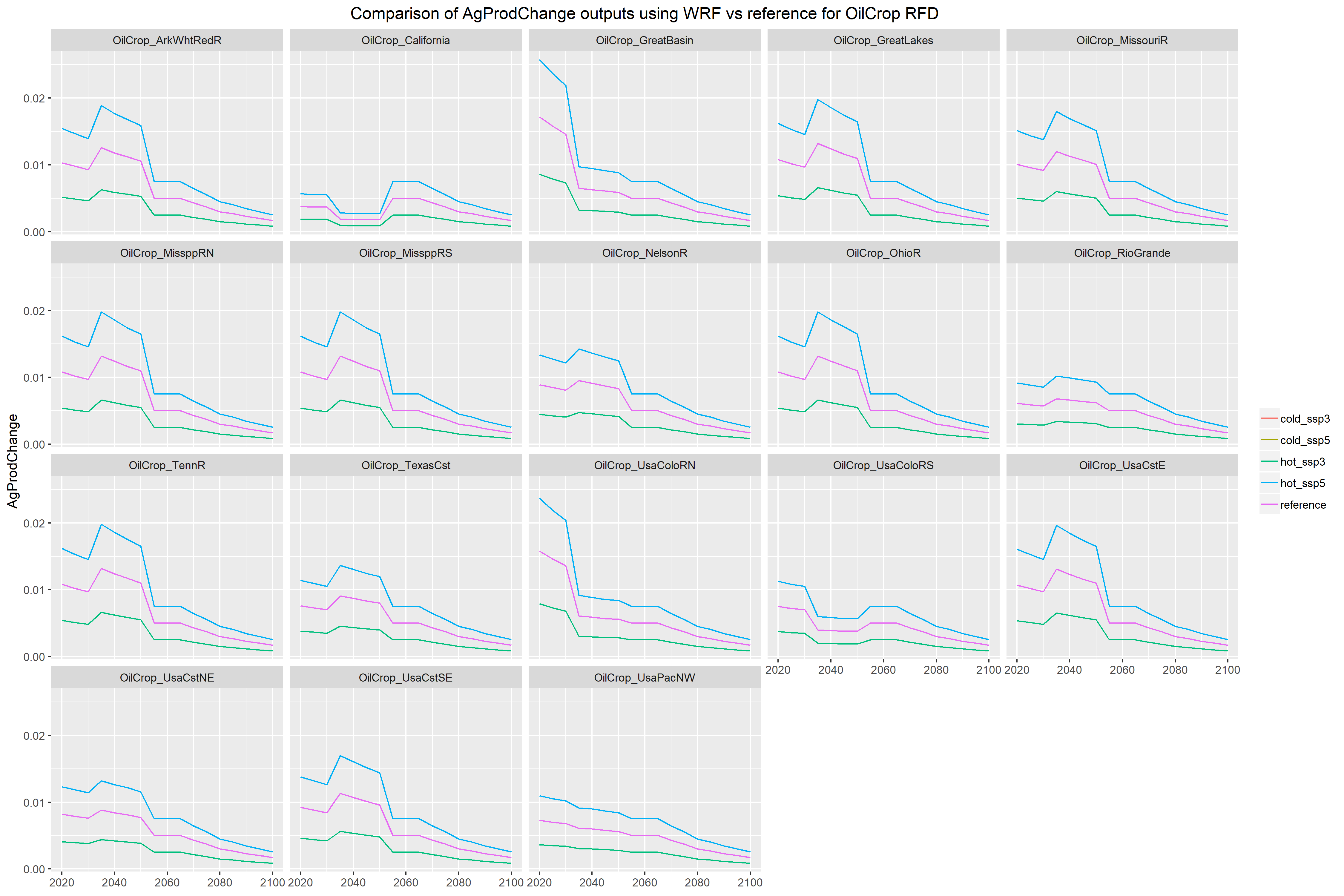
AgProdChange for RCP8.5 RFD Oil Crop
Agyield
Corn
RCP4.5 IRR
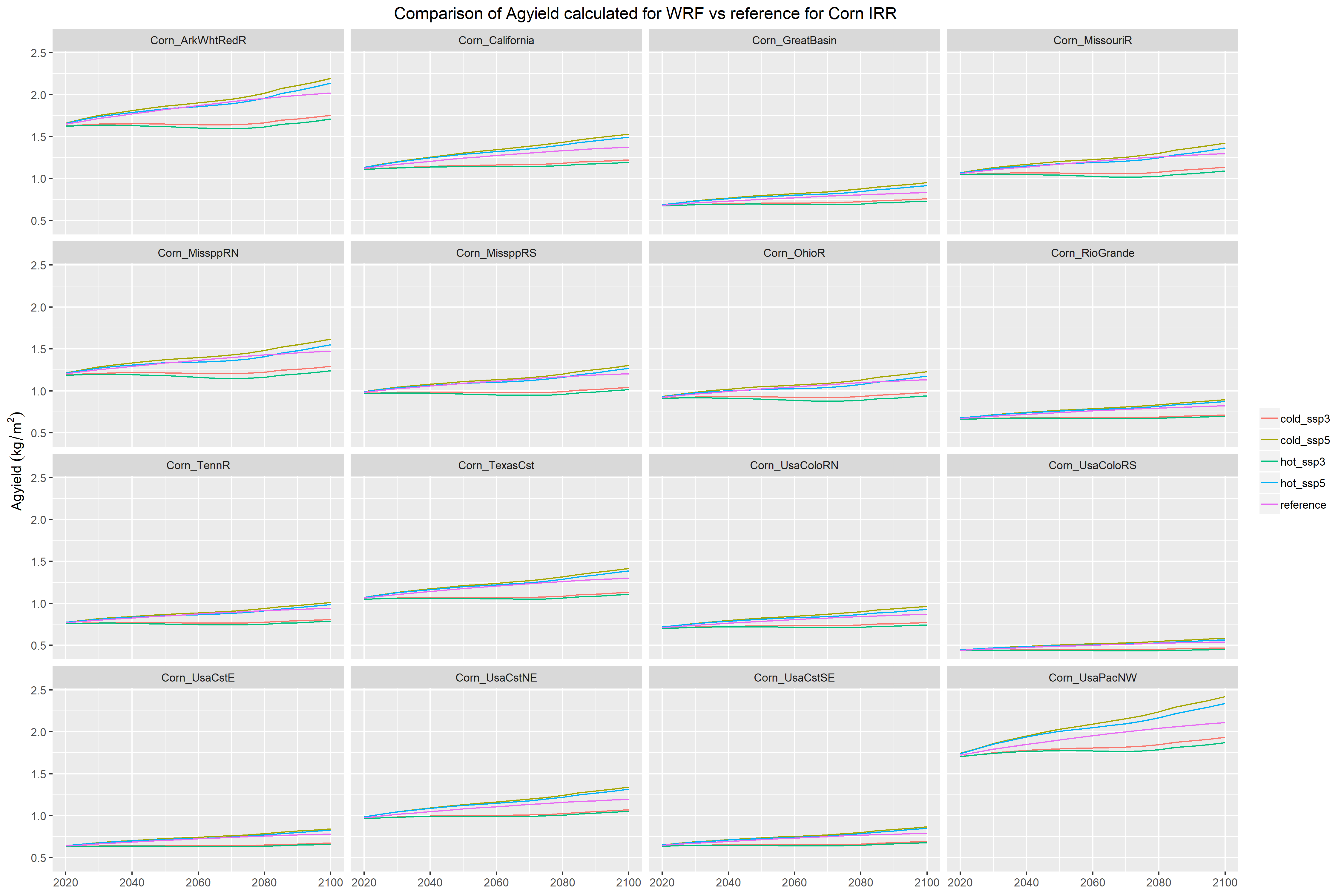
Agyield for RCP4.5 IRR Corn
RCP4.5 RFD
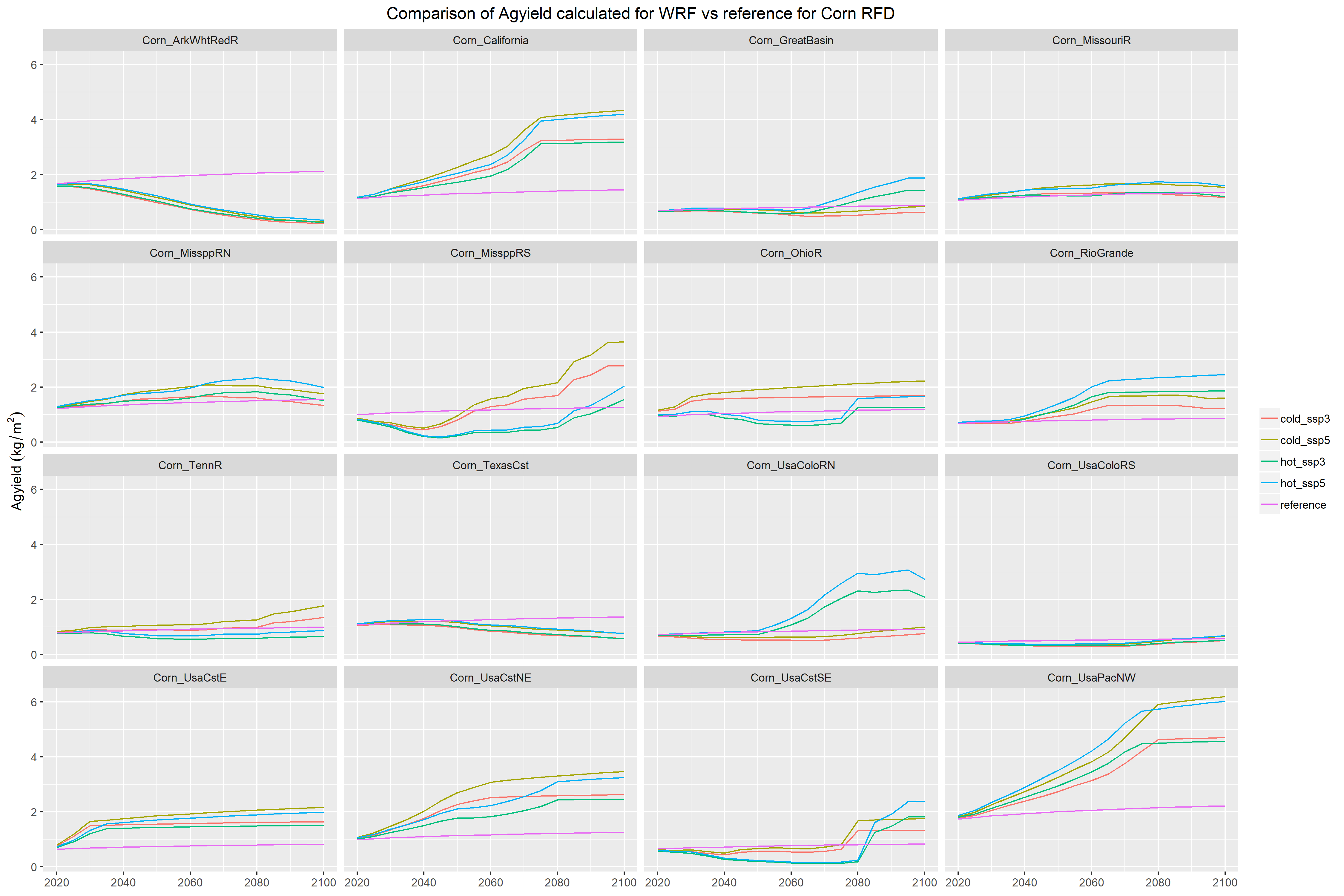
Agyield for RCP4.5 RFD Corn
RCP8.5 IRR
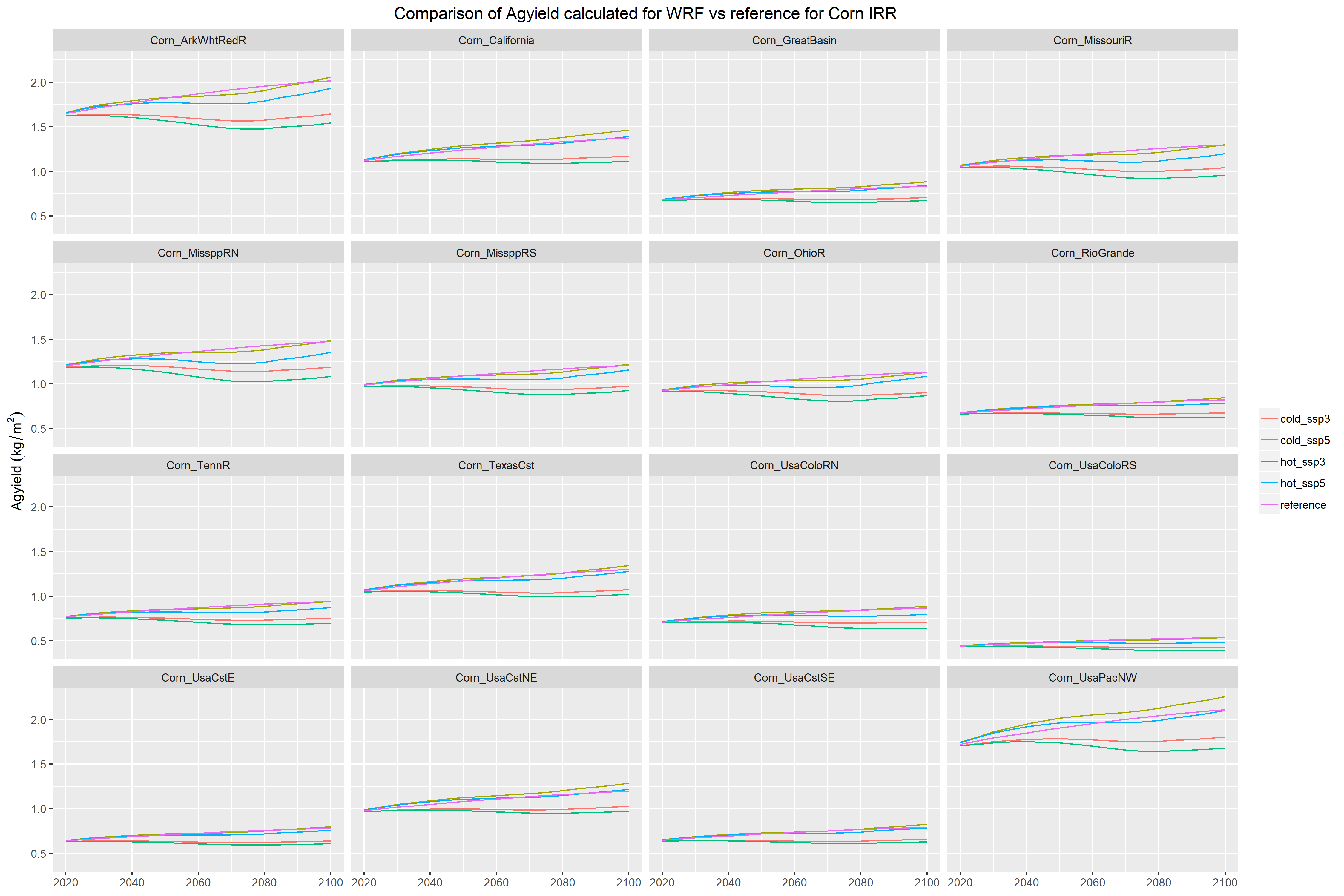
Agyield for RCP8.5 IRR Corn
RCP8.5 RFD
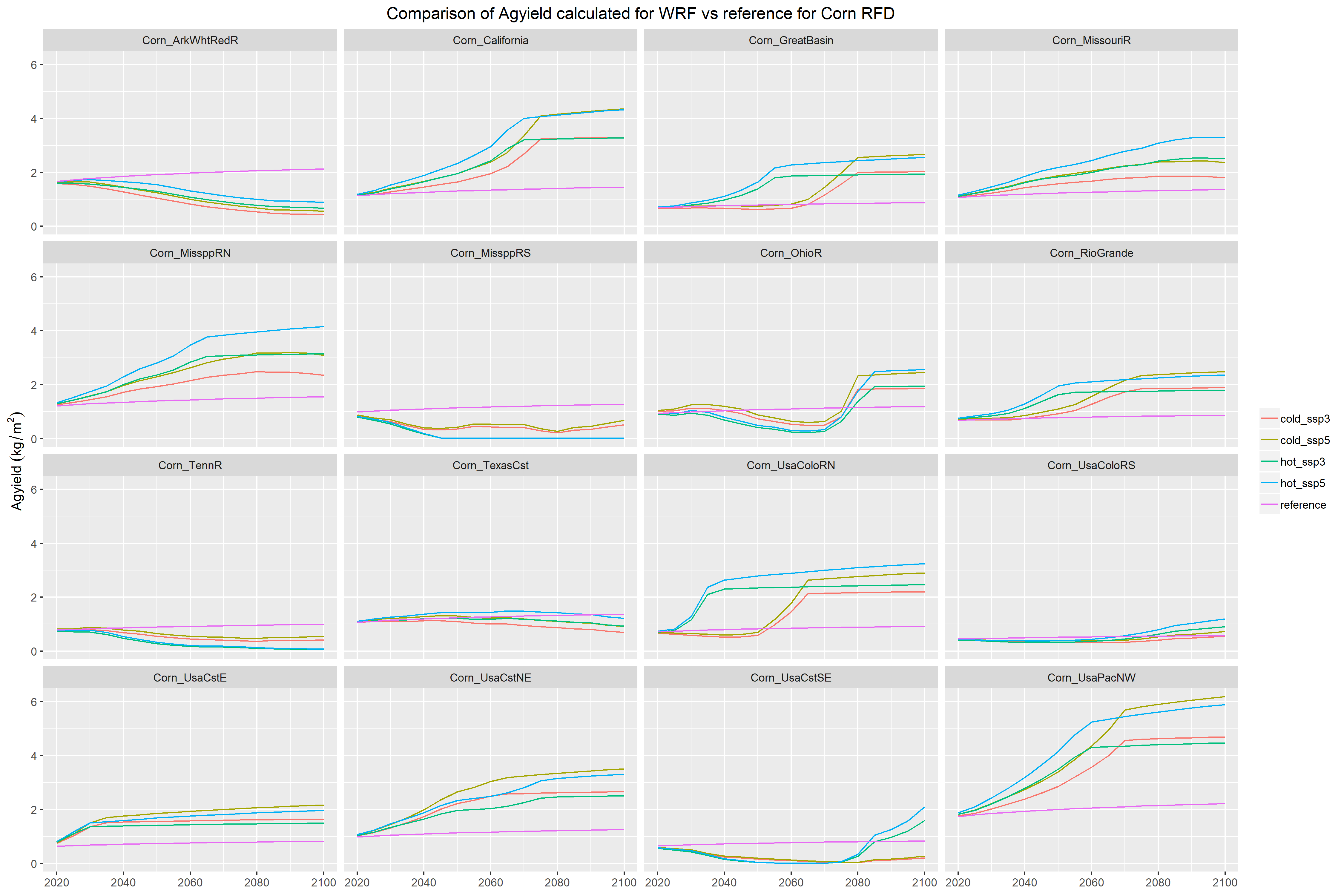
Agyield for RCP8.5 RFD Corn
Rice
RCP4.5 IRR
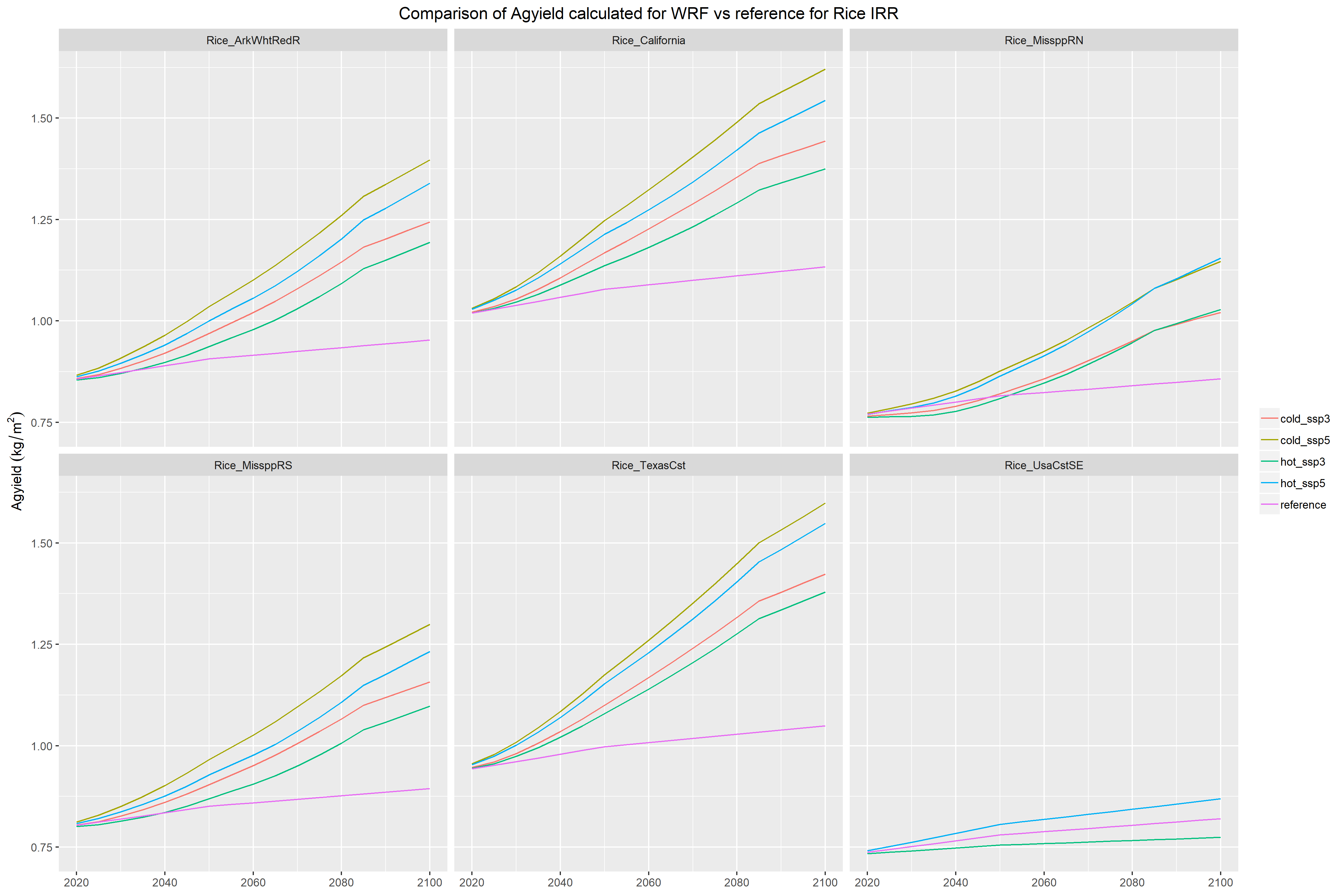
Agyield for RCP4.5 IRR Rice
RCP4.5 RFD
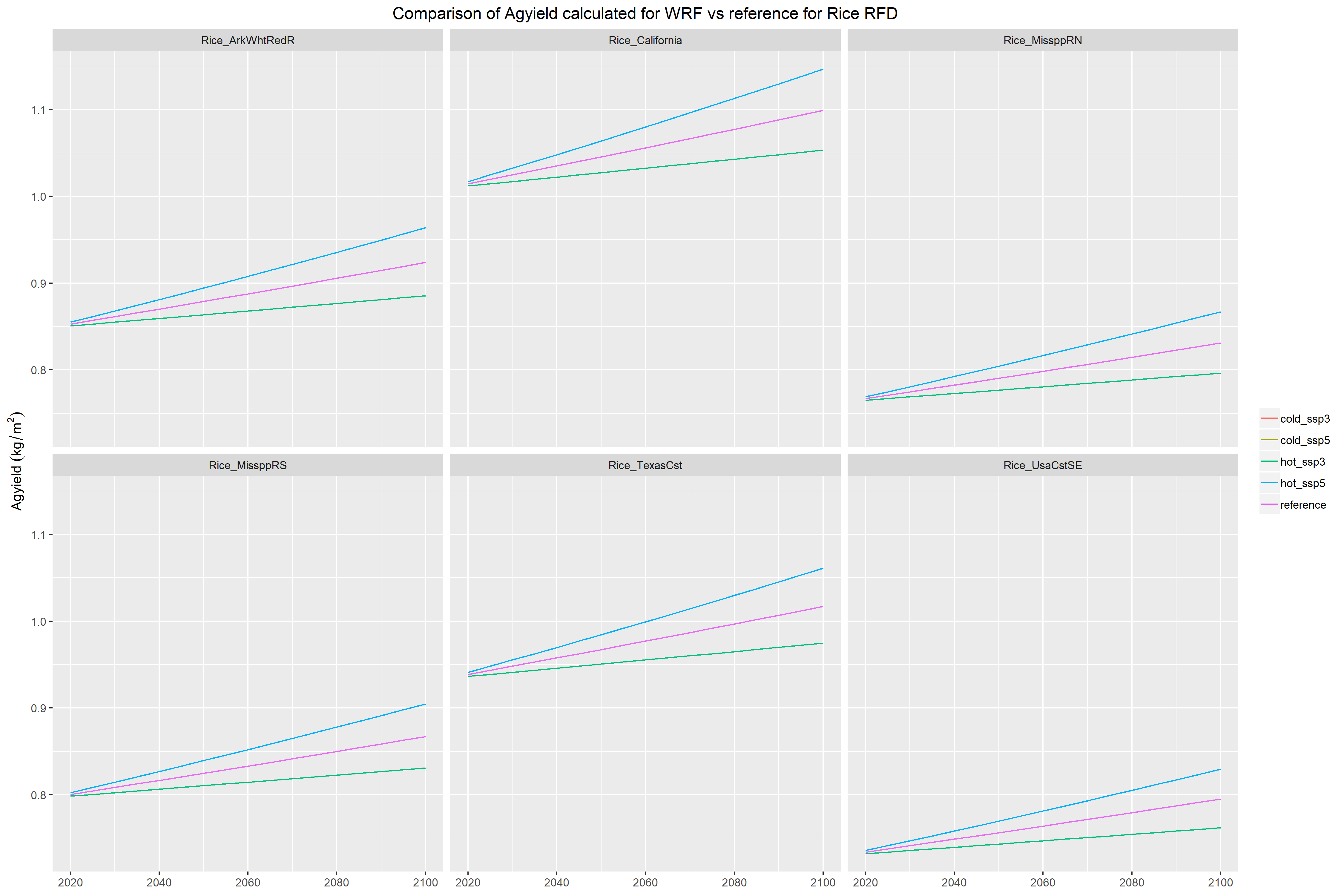
Agyield for RCP4.5 RFD Rice
RCP8.5 IRR
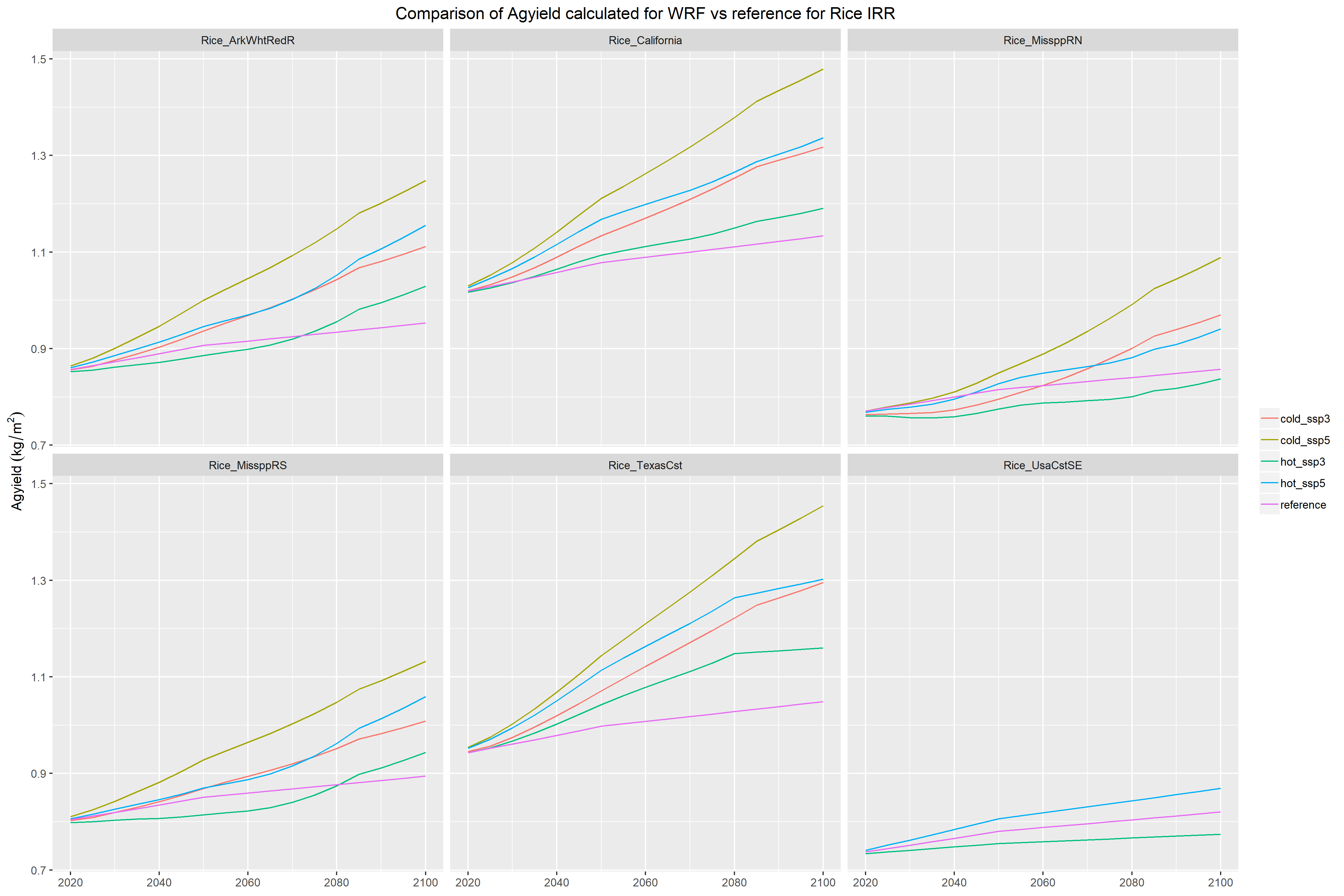
Agyield for RCP8.5 IRR Rice
RCP8.5 RFD
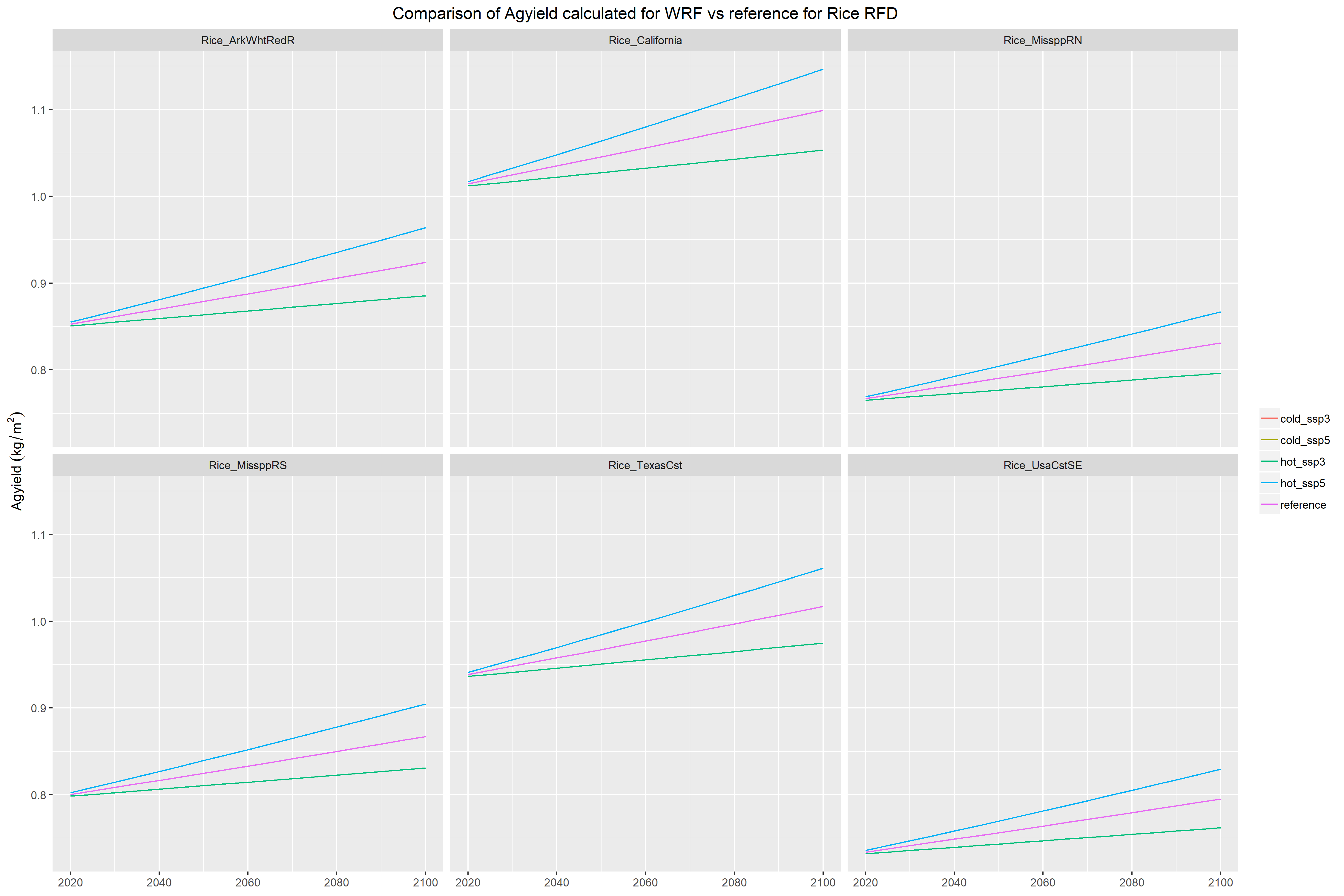
Agyield for RCP8.5 RFD Rice
Wheat
RCP4.5 IRR
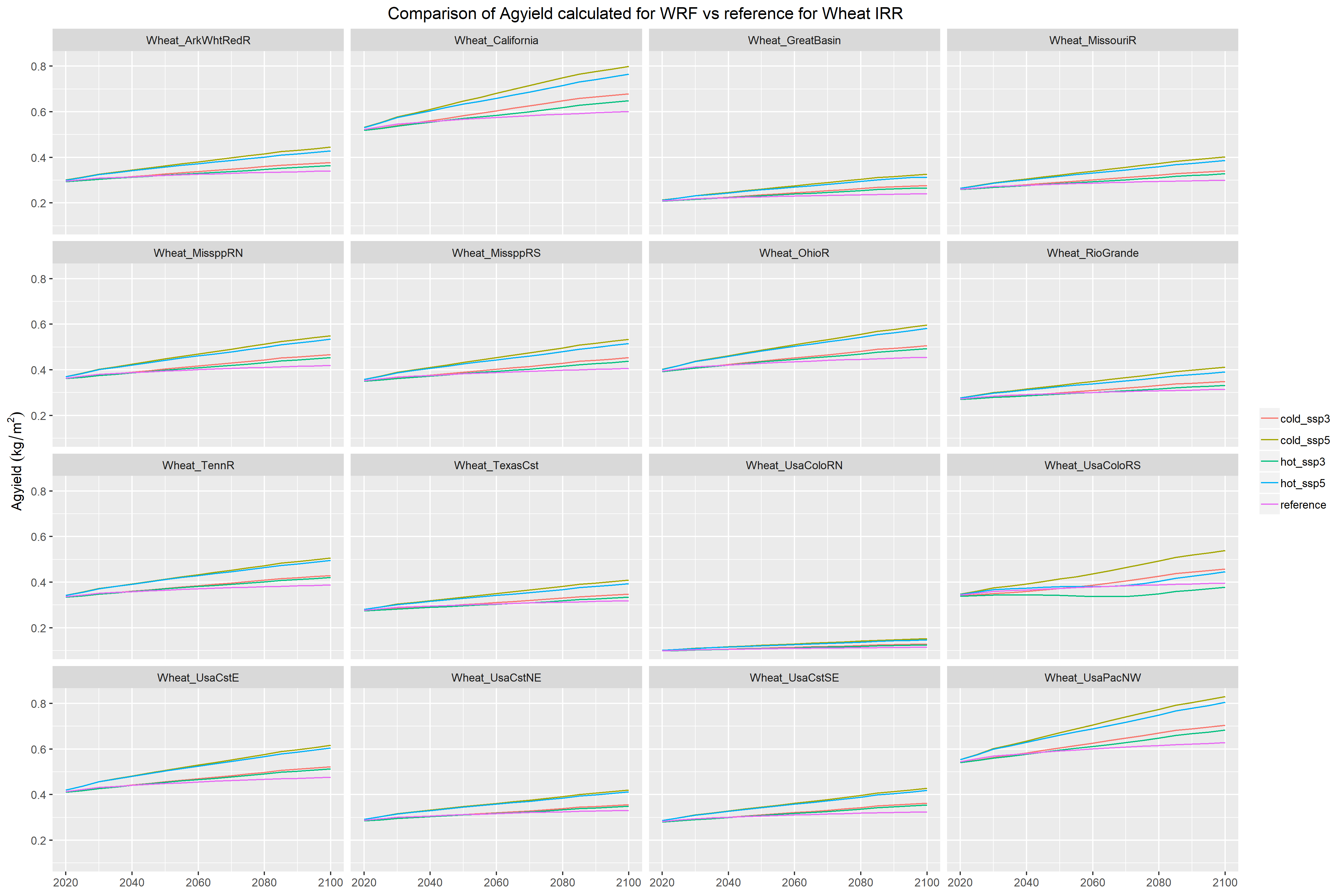
Agyield for RCP4.5 IRR Wheat
RCP4.5 RFD

Agyield for RCP4.5 RFD Wheat
RCP8.5 IRR
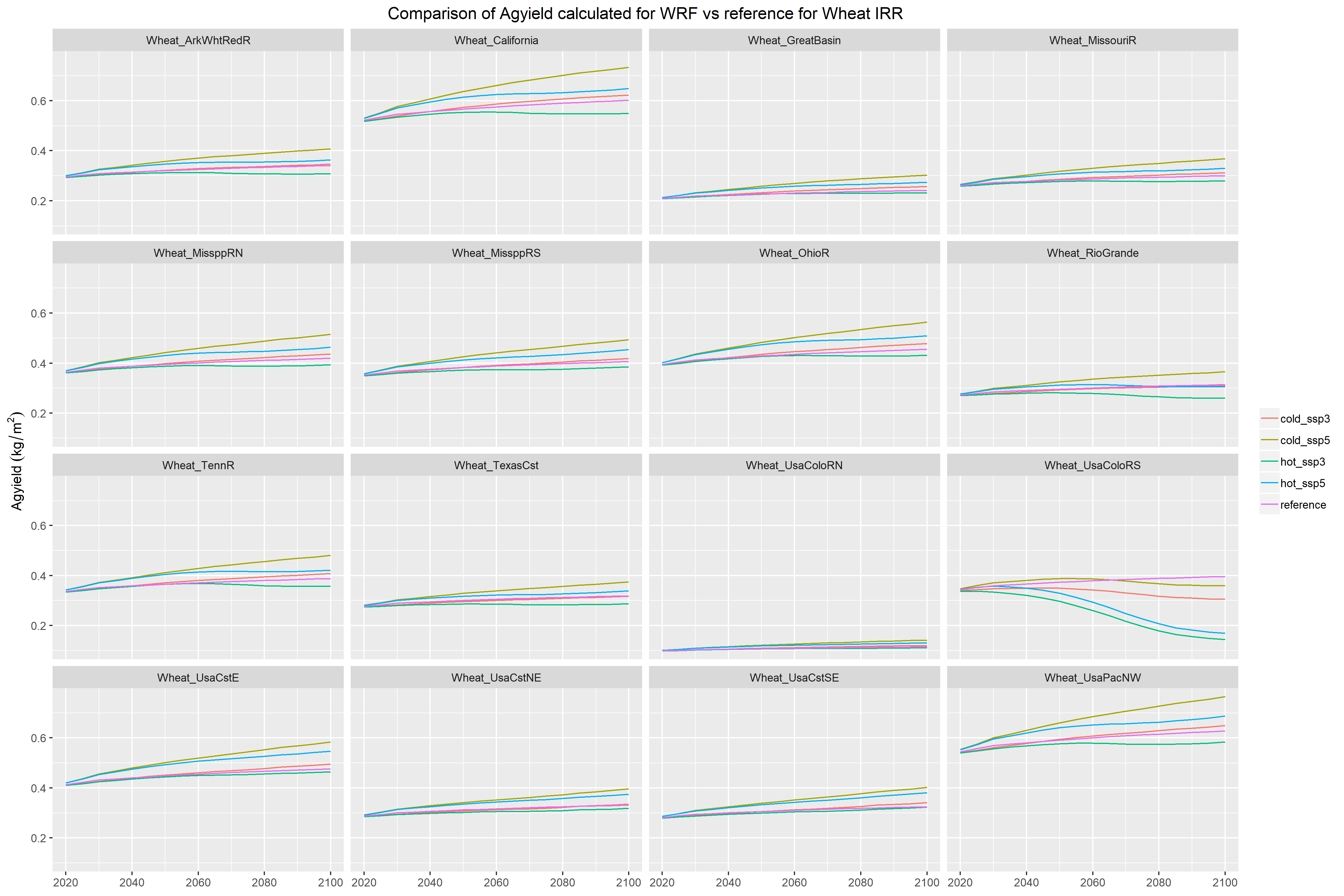
Agyield for RCP8.5 IRR Wheat
RCP8.5 RFD
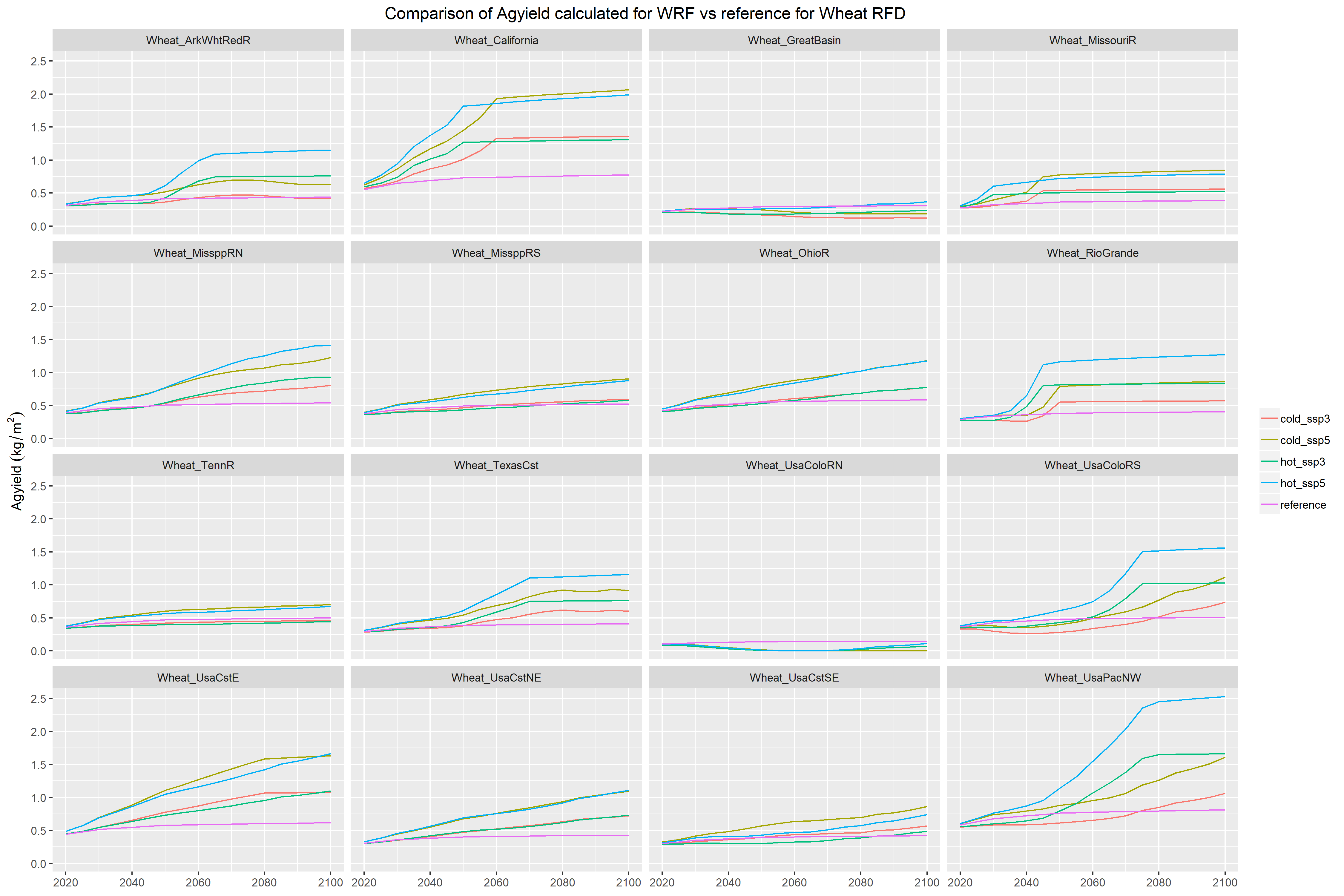
Agyield for RCP8.5 RFD Wheat
Oil Crop
RCP4.5 IRR
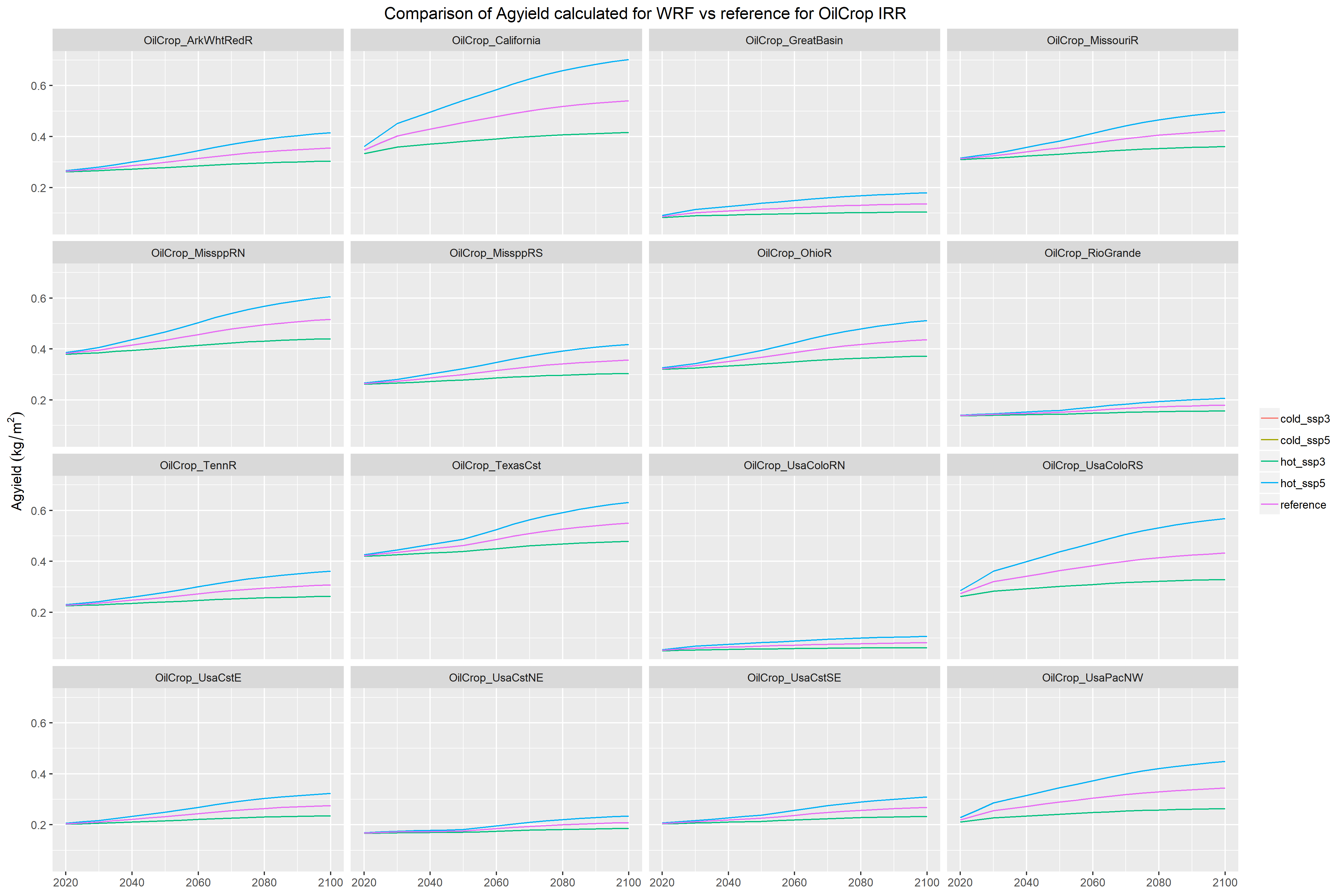
Agyield for RCP4.5 IRR Oil Crop
RCP4.5 RFD
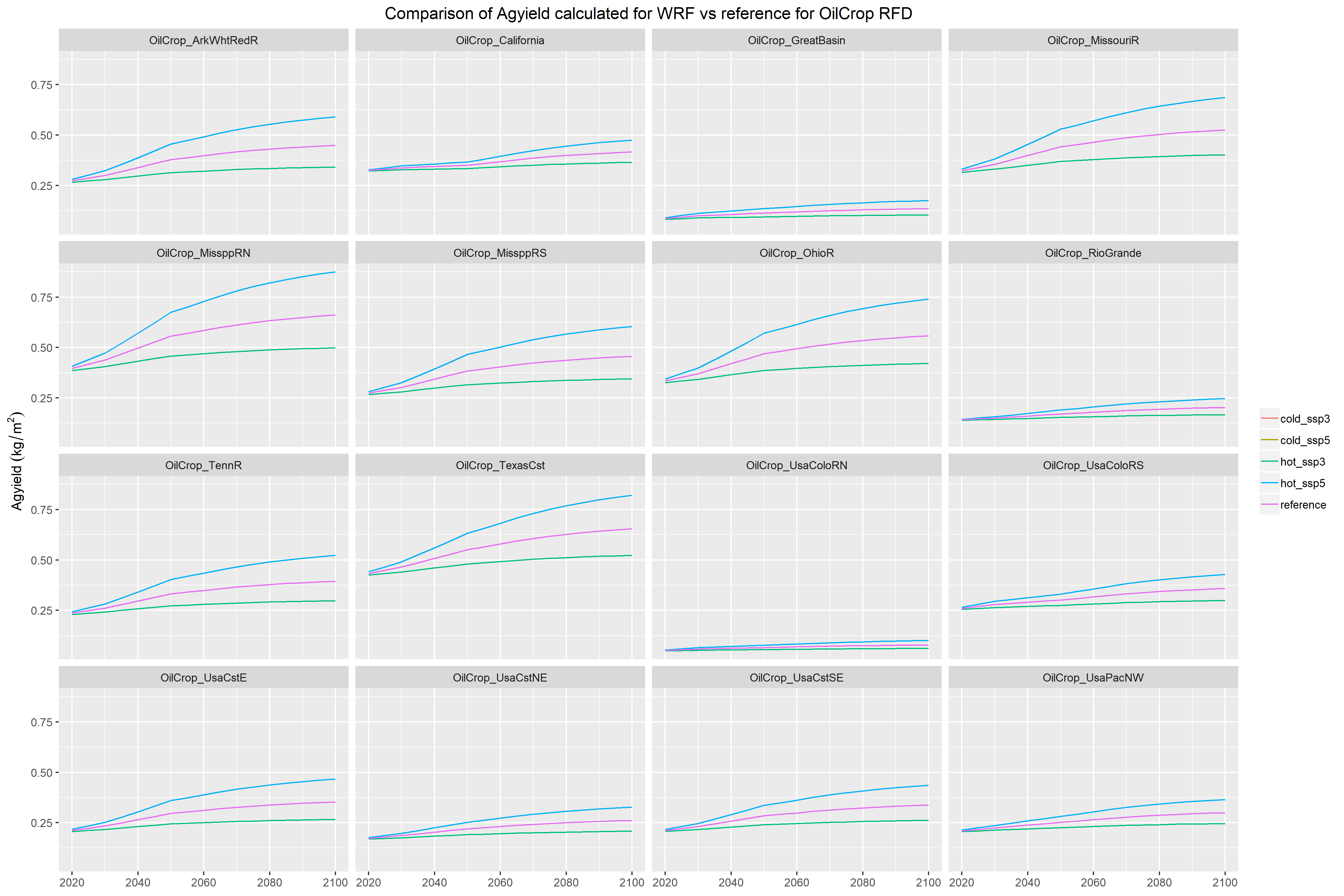
Agyield for RCP4.5 RFD Oil Crop
RCP8.5 IRR
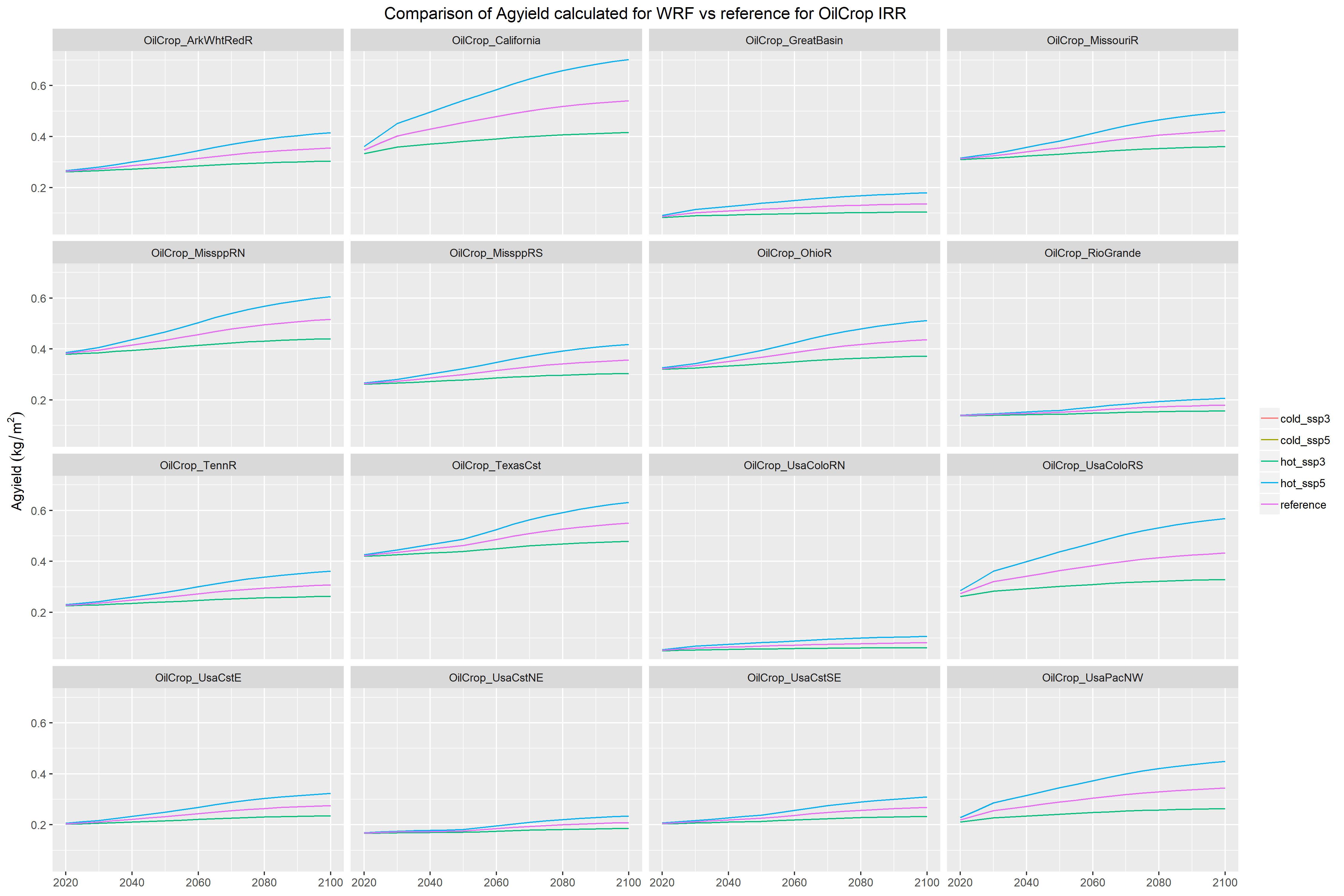
Agyield for RCP8.5 IRR Oil Crop
RCP8.5 RFD
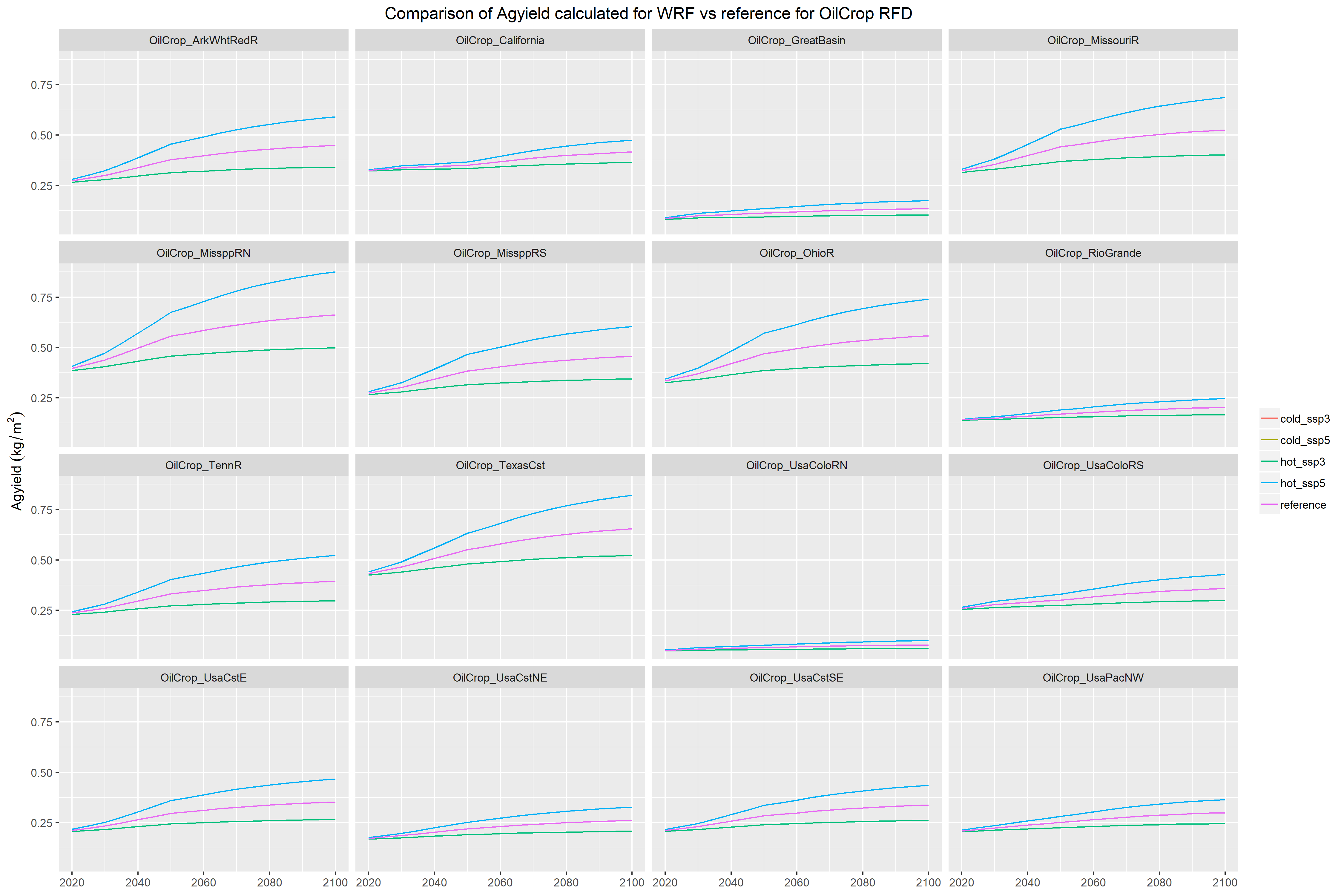
Agyield for RCP8.5 RFD Oil Crop
GCAM SSP3
Summary
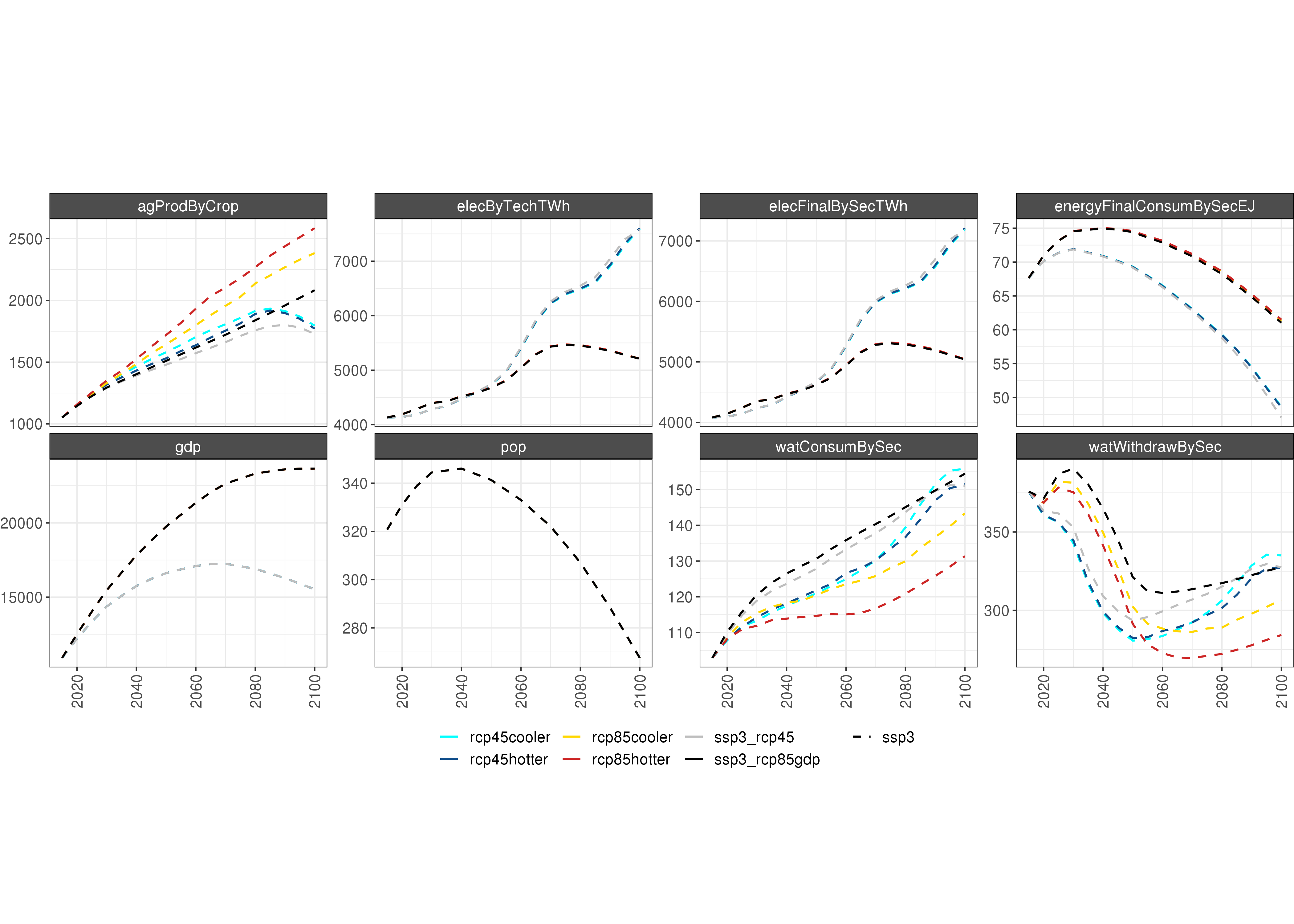
Comparison of GCAM global agyield outputs
Socioeconomics
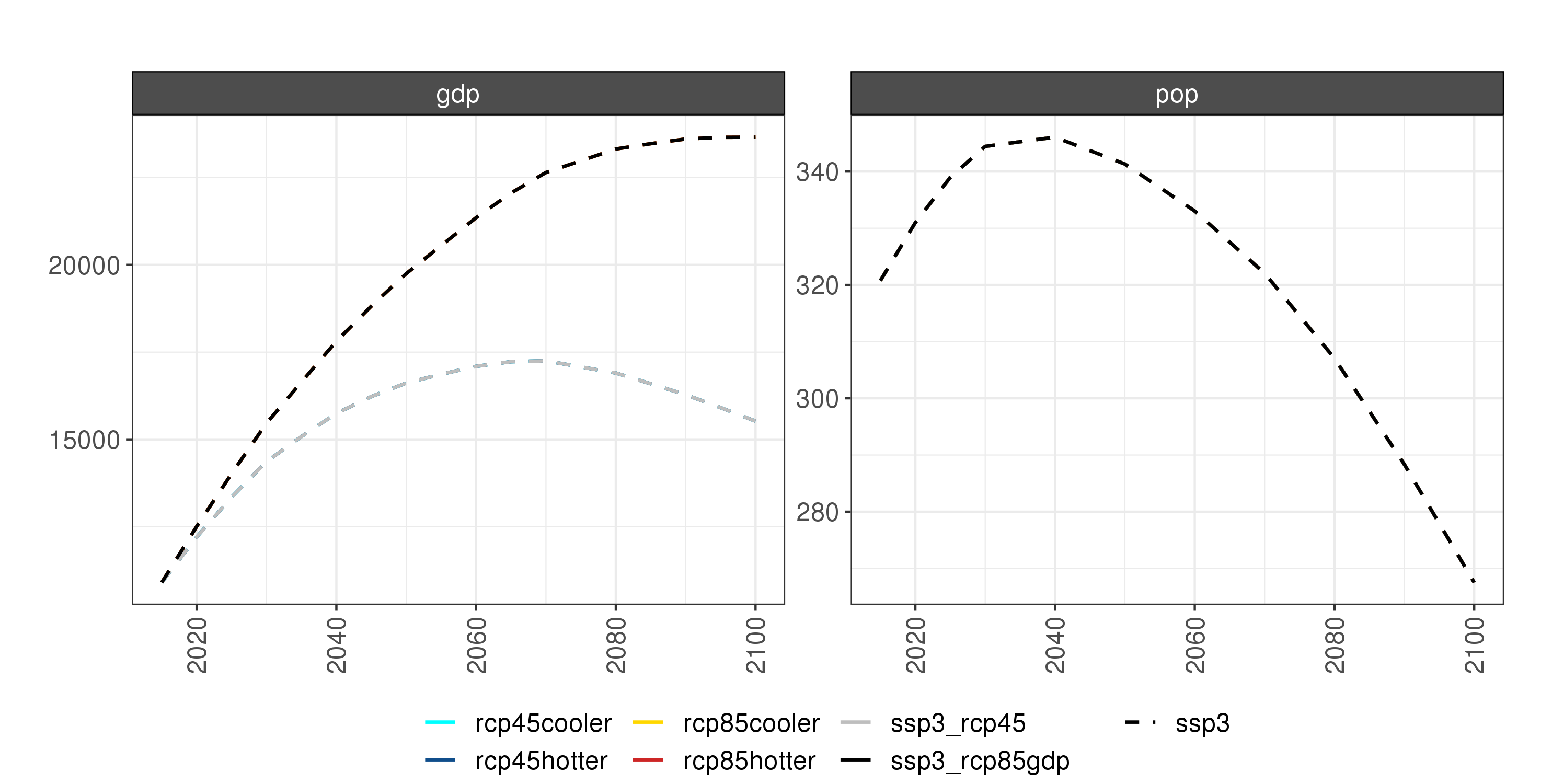
Comparison of GCAM socioeconomic outputs

Comparison of GCAM socioeconomic outputs % Diff
Water
RCP4.5
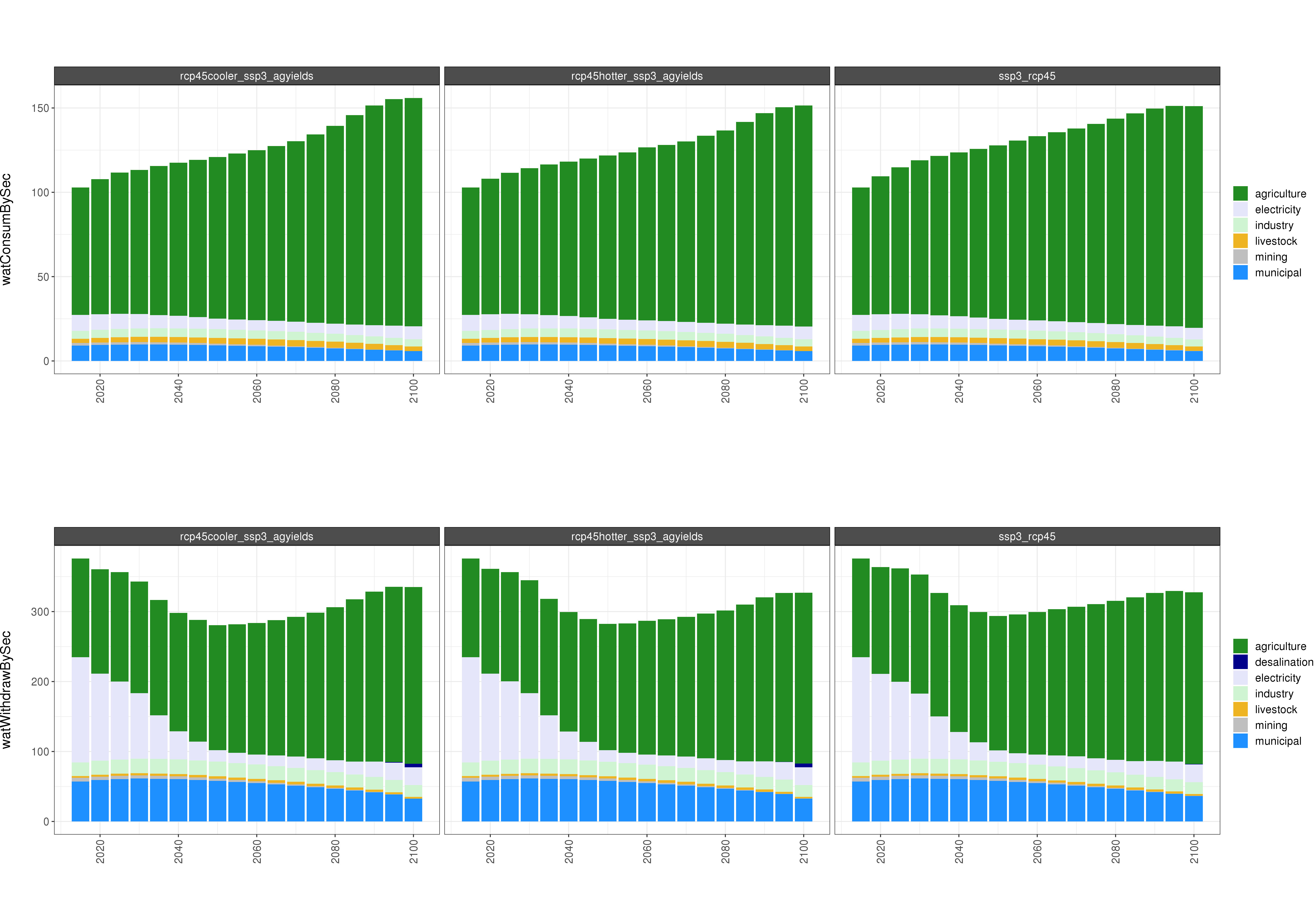
Absolute GCAM water outputs
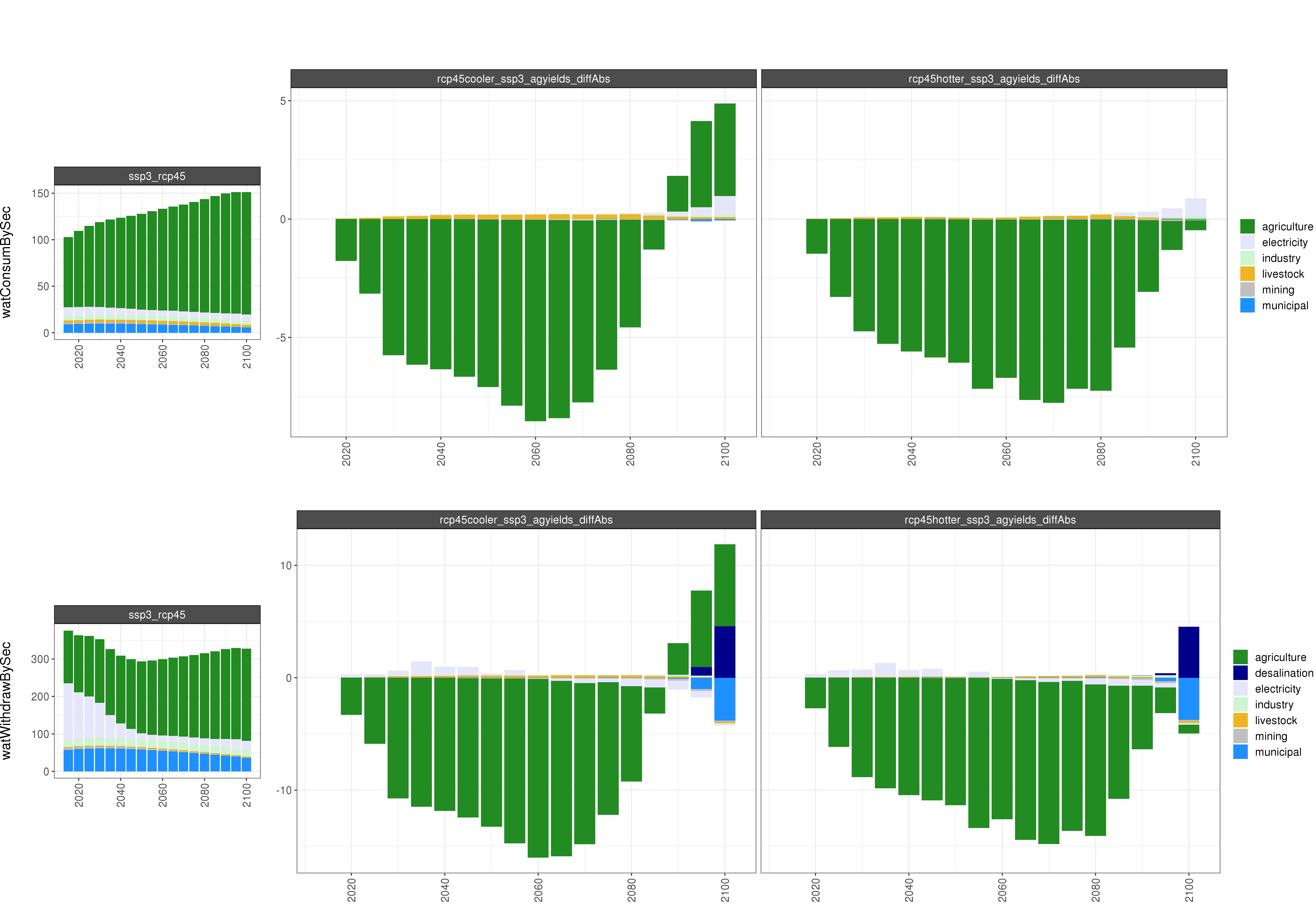
Comparison of GCAM water outputs
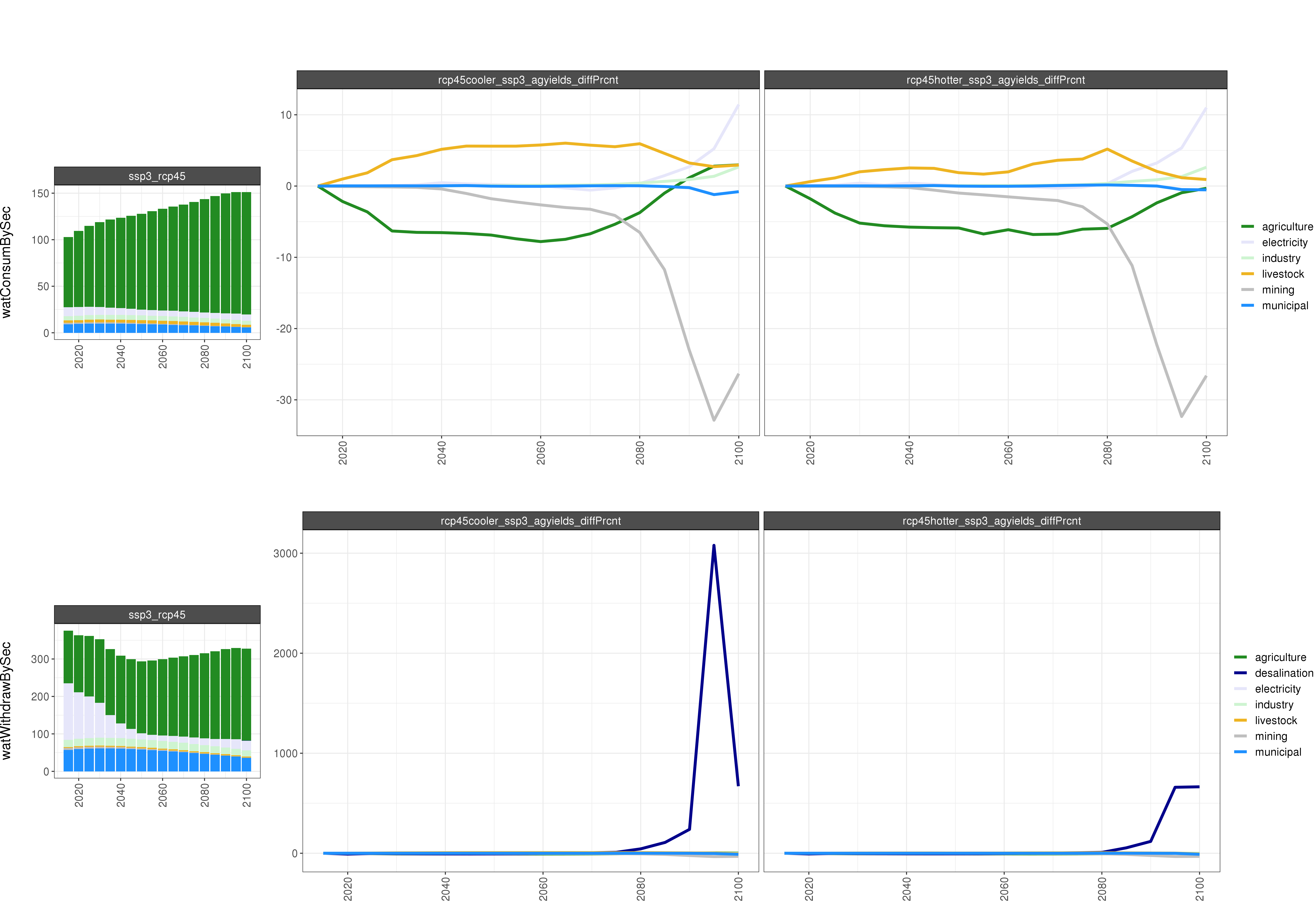
Comparison of GCAM water outputs % Diff
RCP8.5
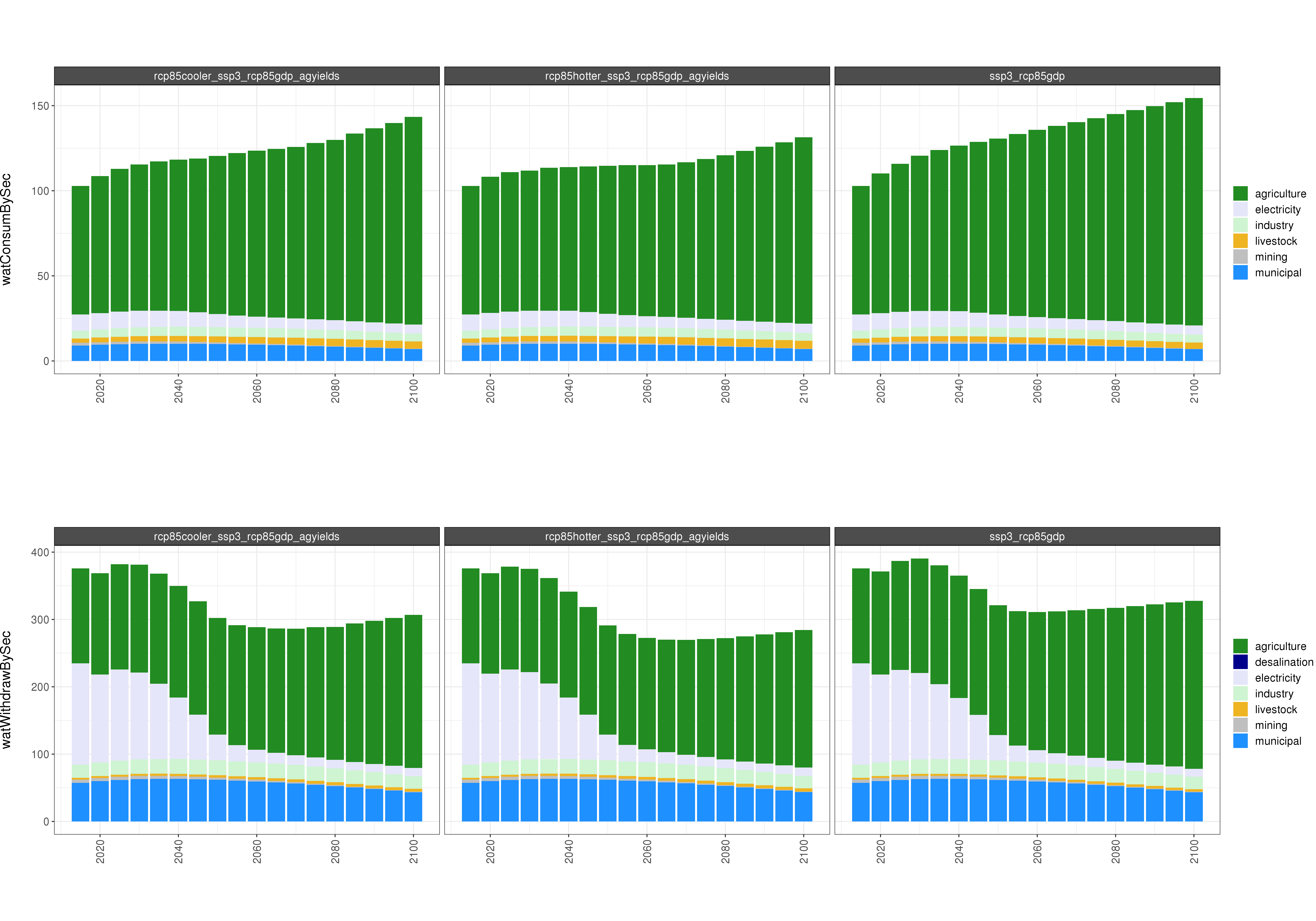
Absolute GCAM water outputs
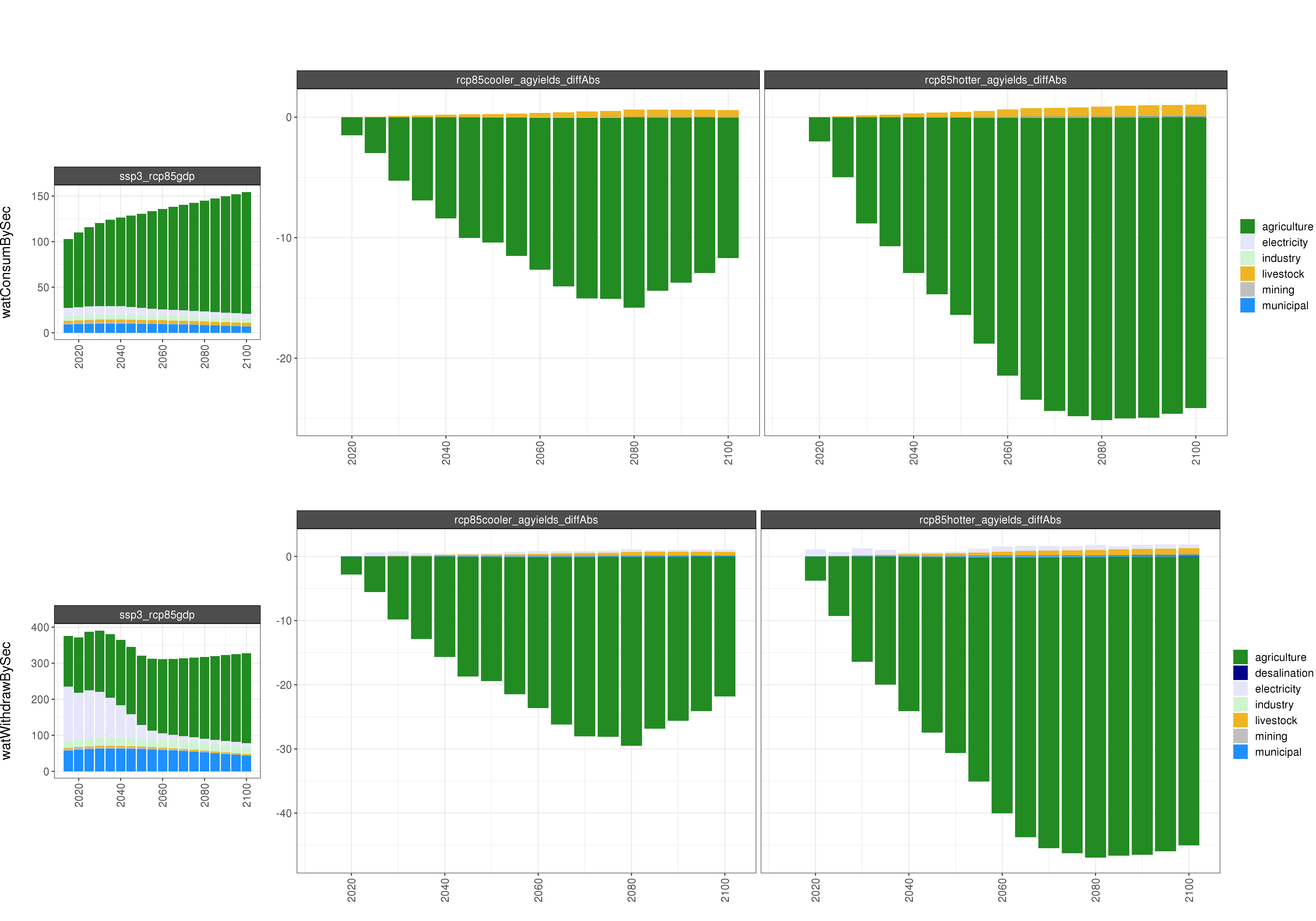
Comparison of GCAM water outputs
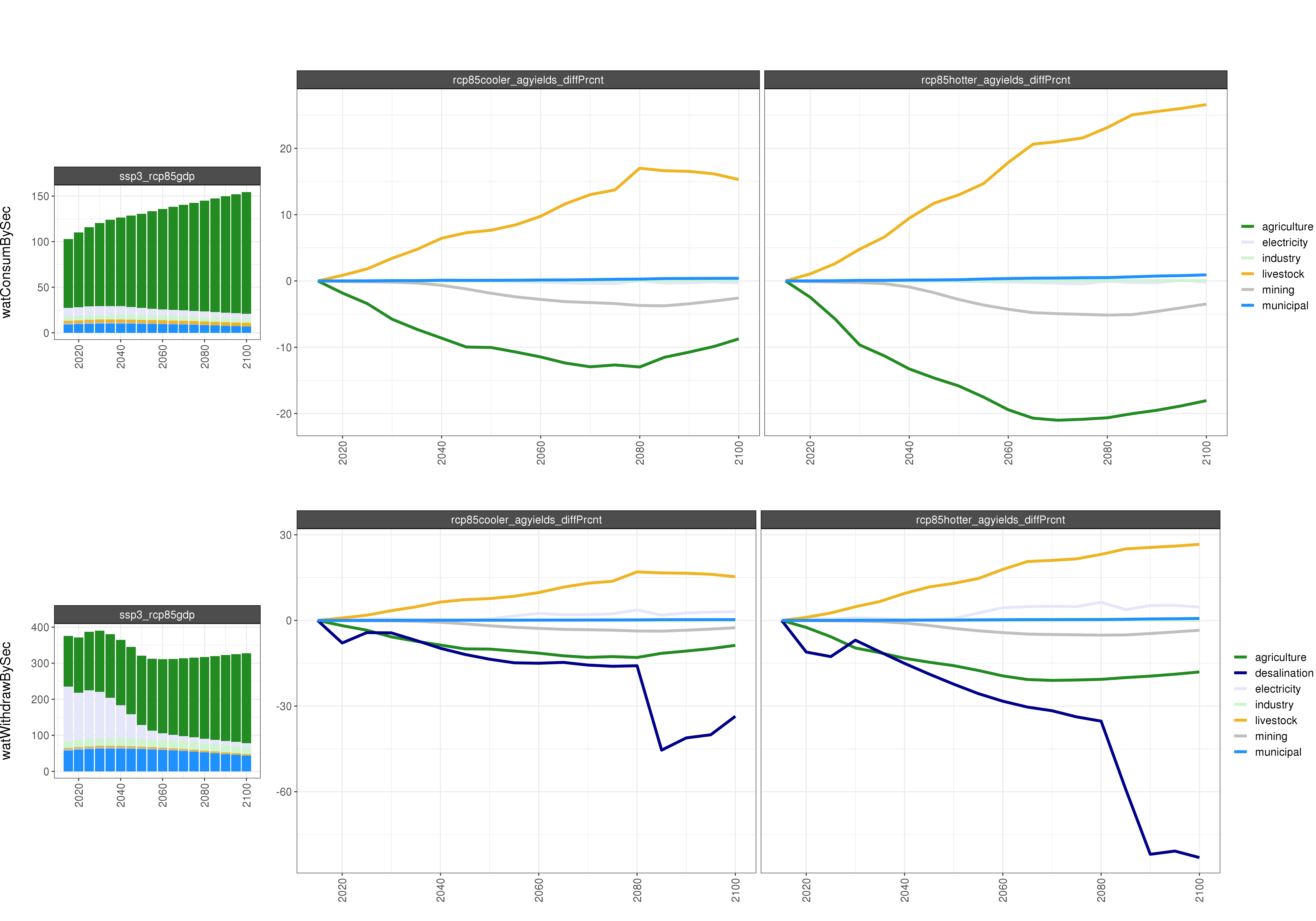
Comparison of GCAM water outputs % Diff
Energy
RCP4.5
Energy Demand
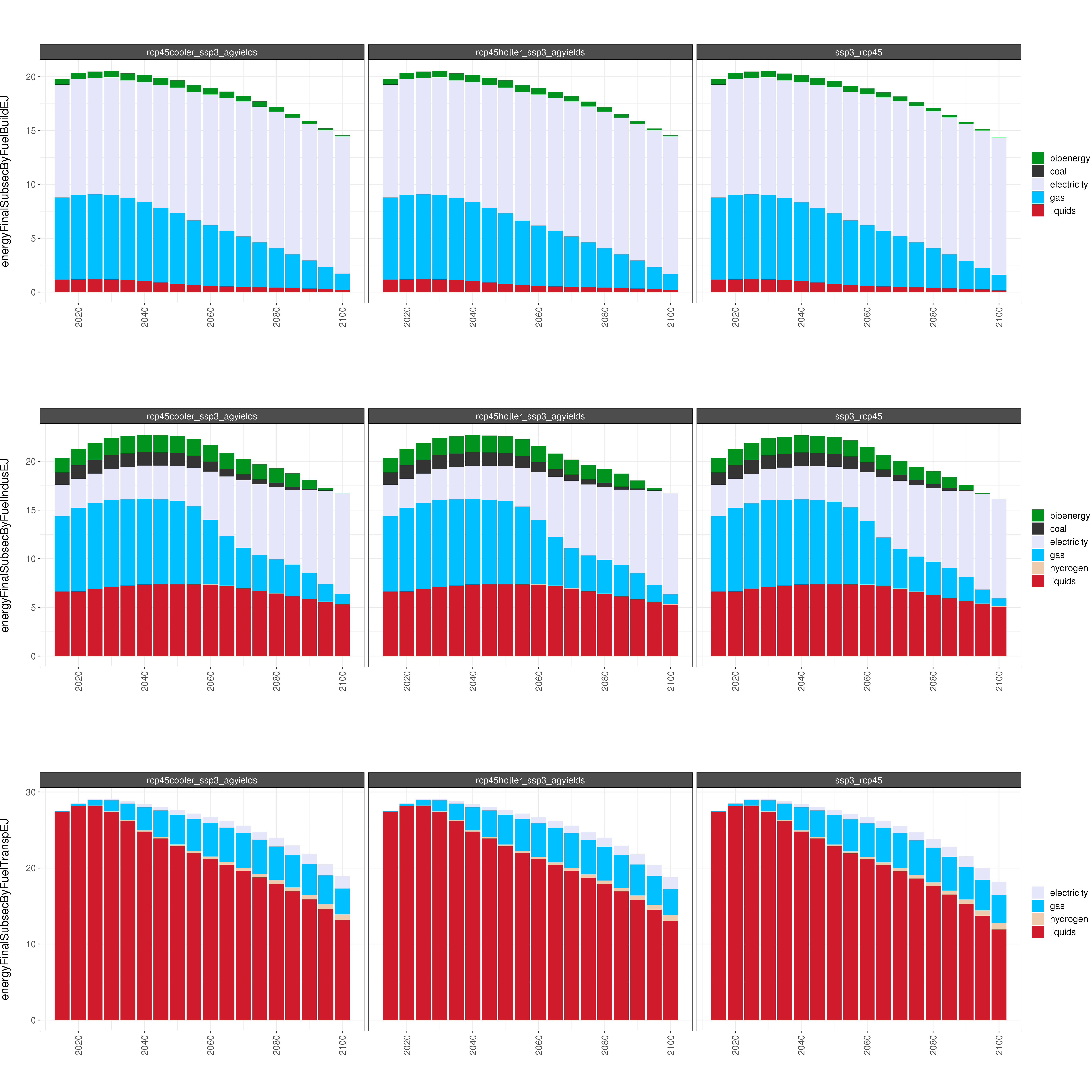
Comparison of GCAM energy outputs for 8 climate and socioeconomic scenarios.
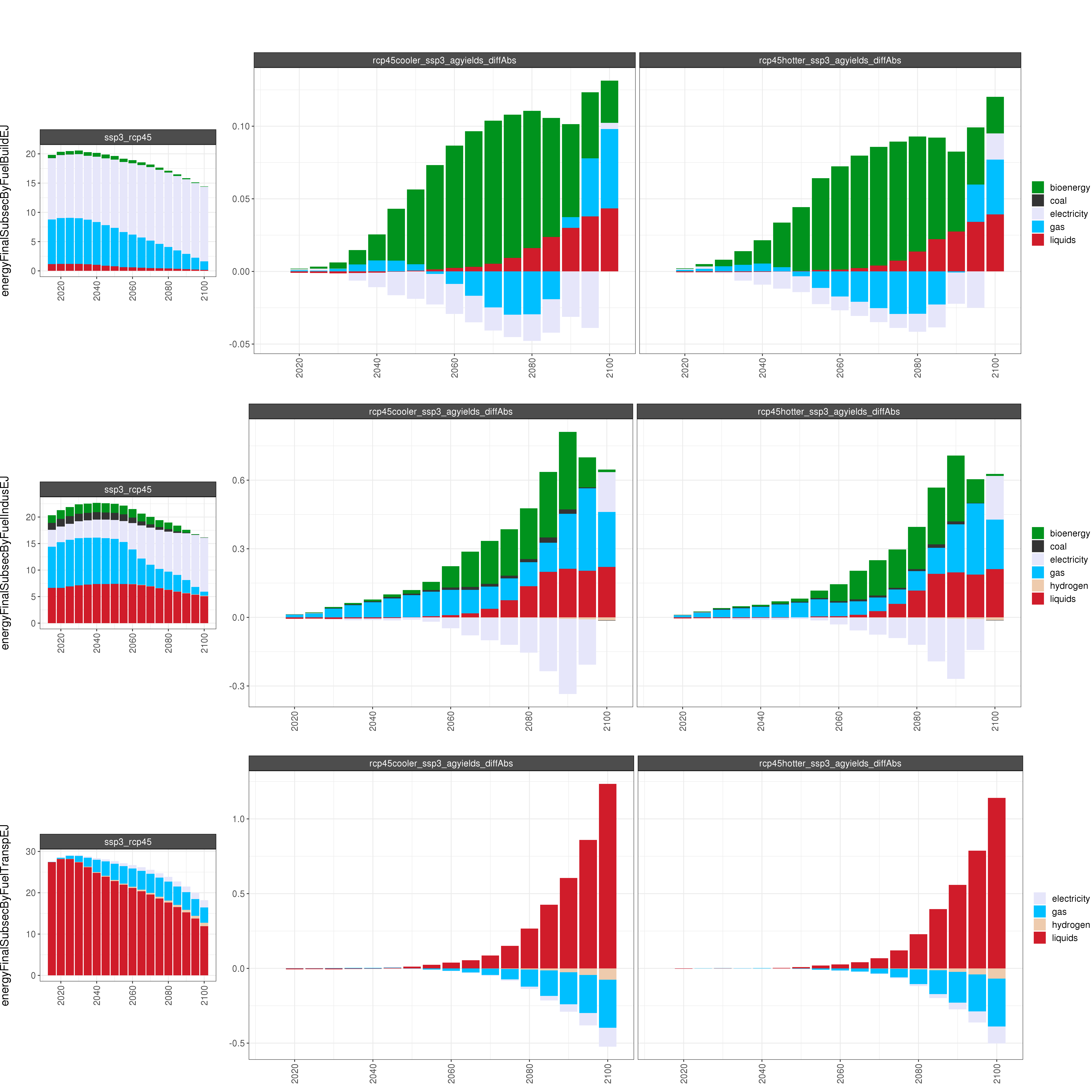
Comparison of GCAM energy outputs for 8 climate and socioeconomic scenarios (absolute difference).
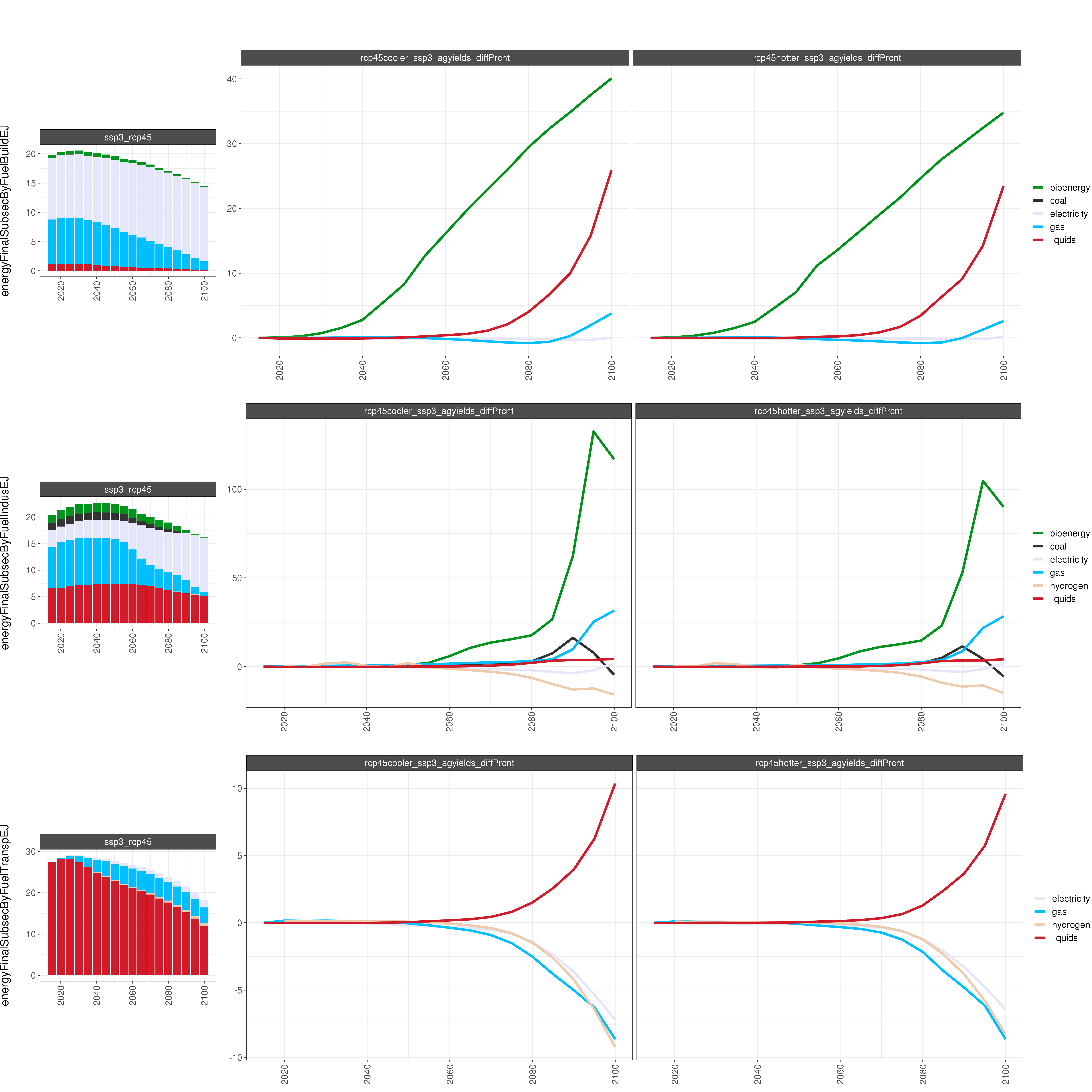
Comparison of GCAM energy outputs for 8 climate and socioeconomic scenarios (percent difference).
Energy Consumption
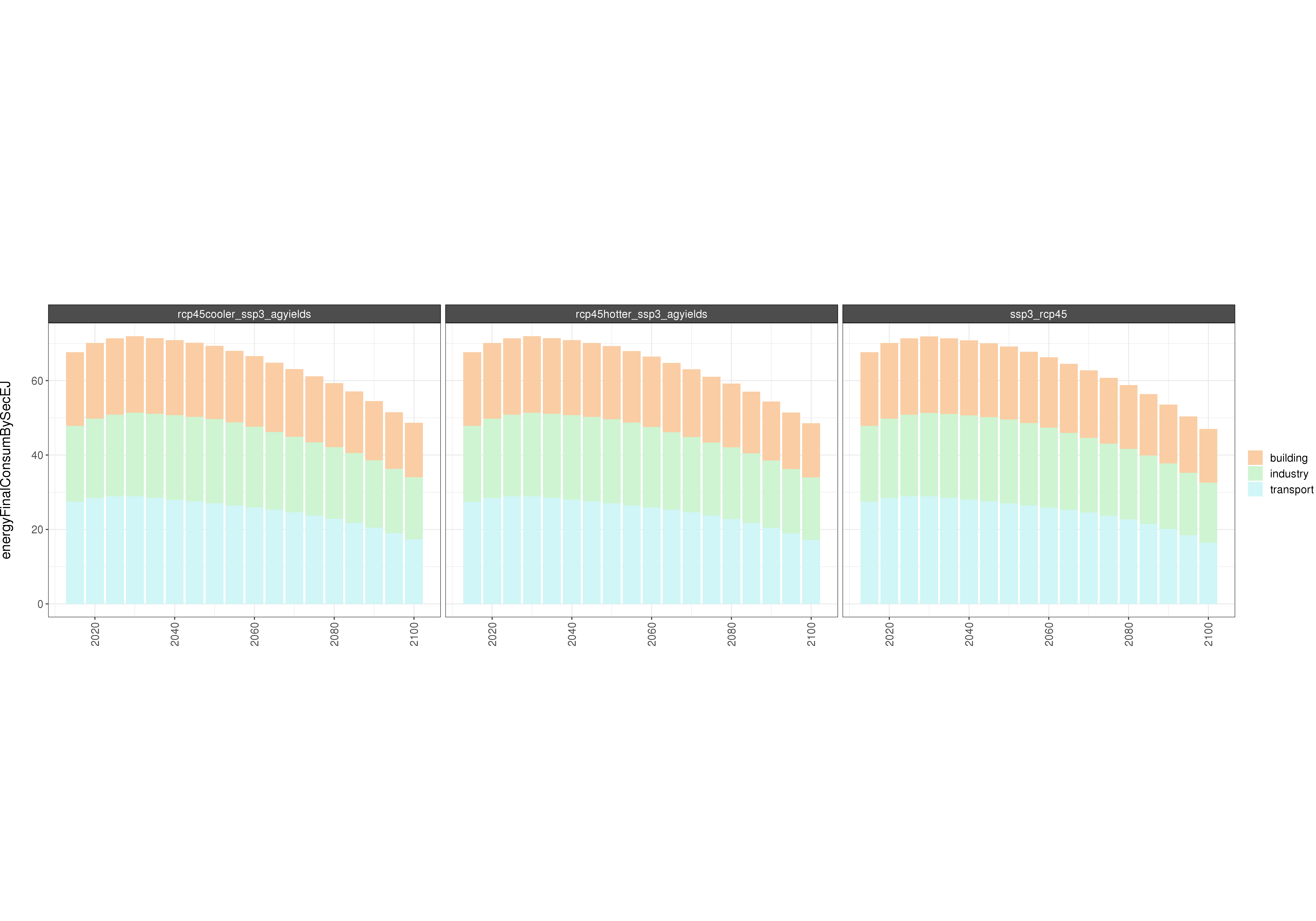
Absolute GCAM energy outputs
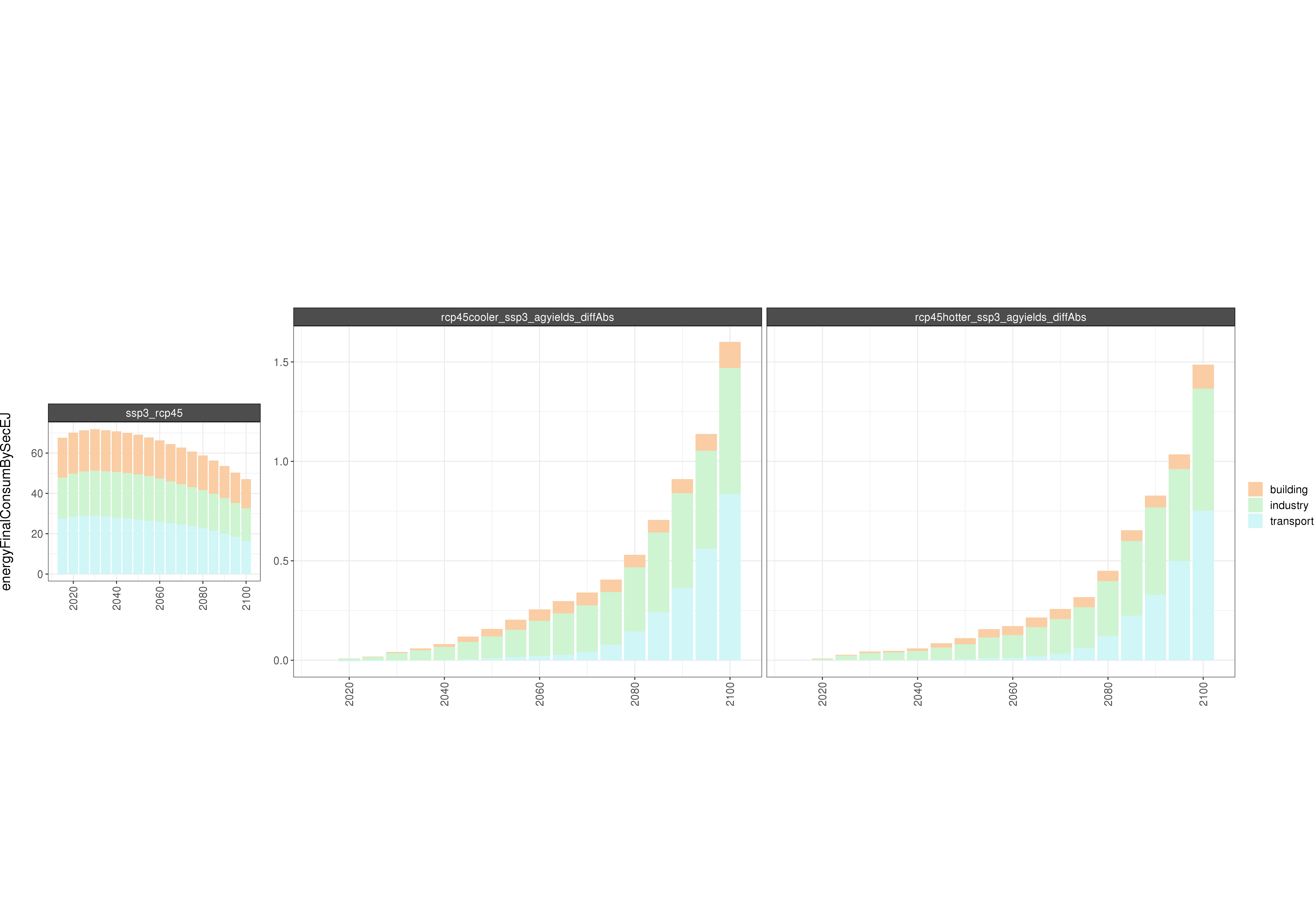
Comparison of GCAM energy outputs
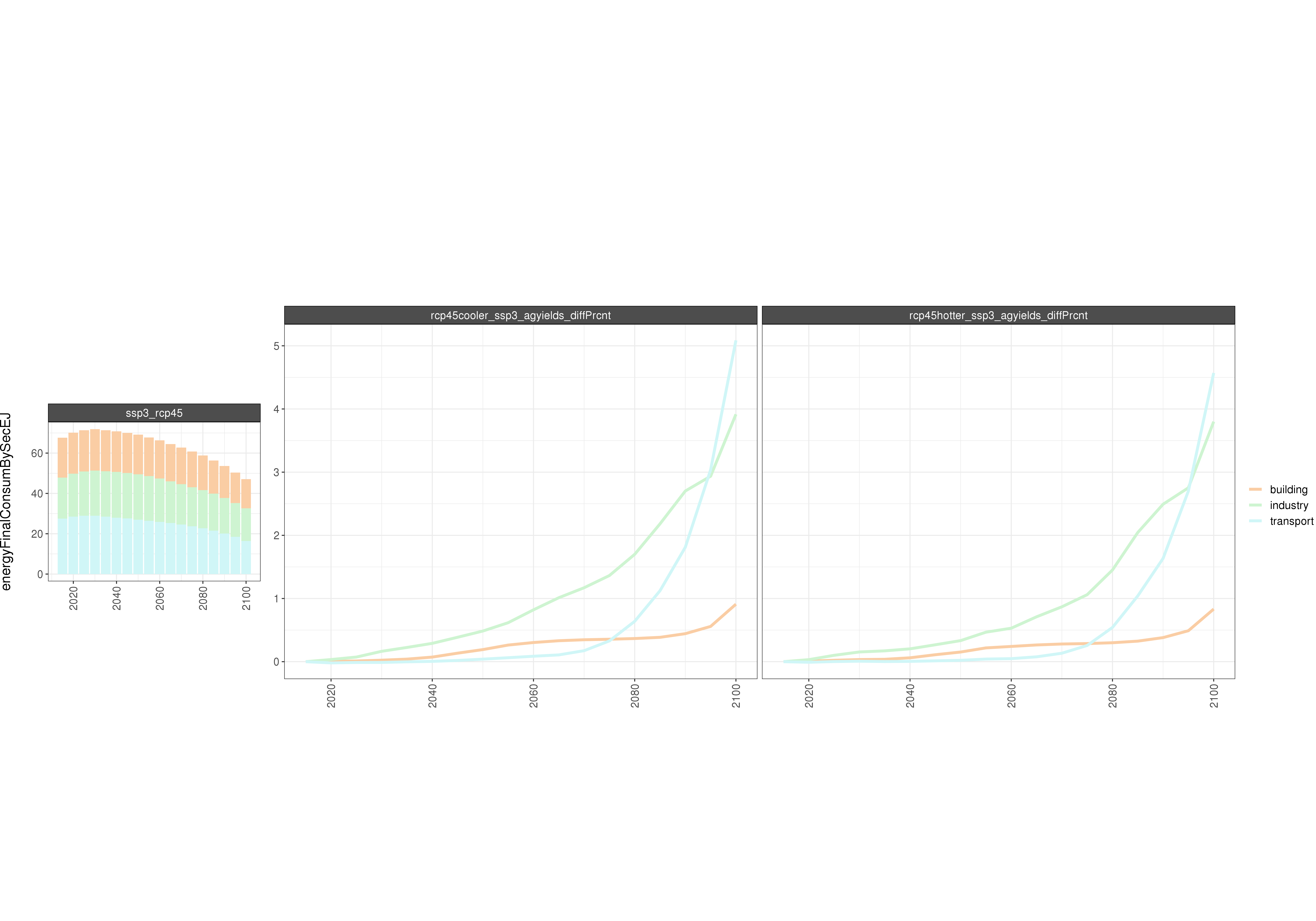
Comparison of GCAM energy outputs % Diff
RCP8.5
Energy Demand
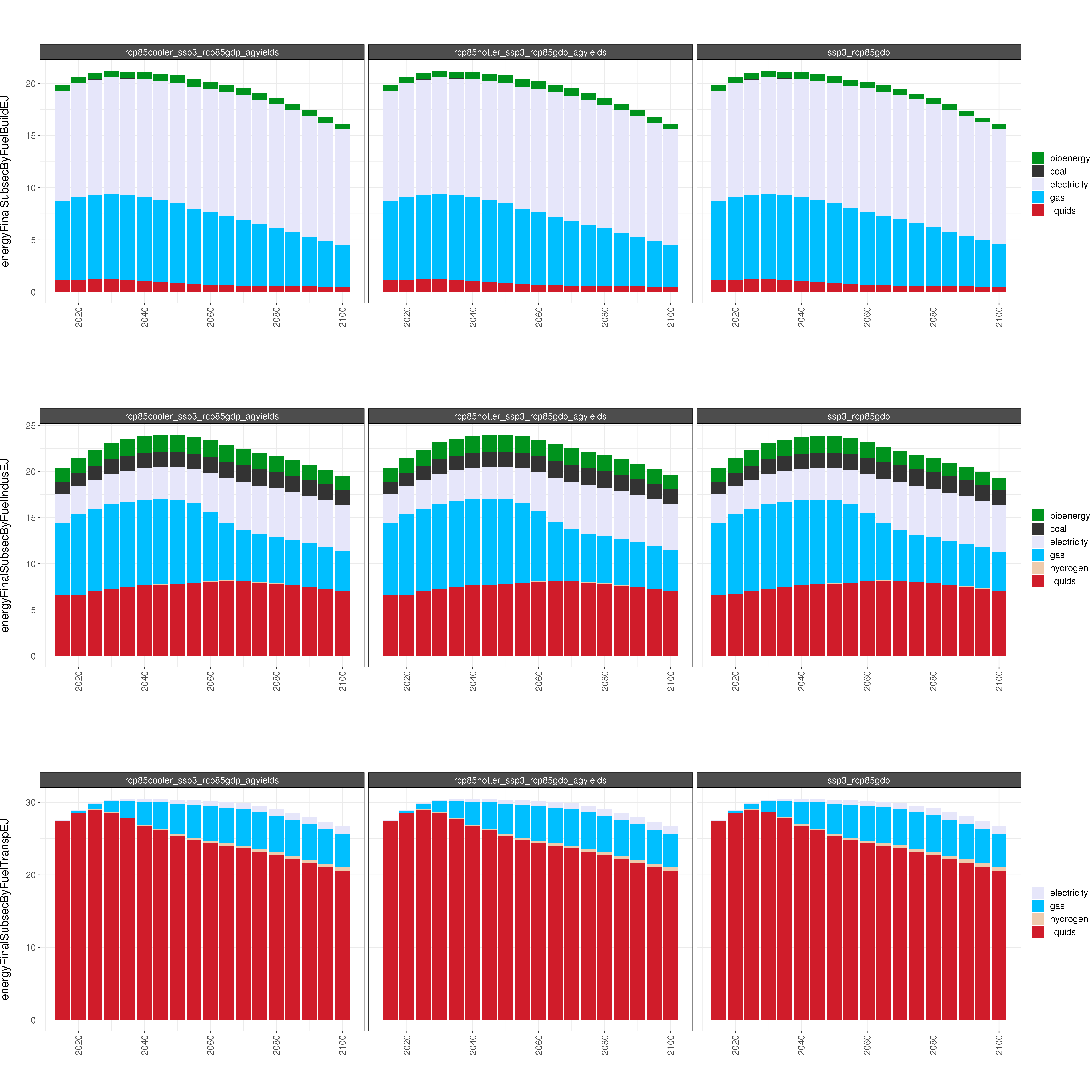
Comparison of GCAM energy outputs for 8 climate and socioeconomic scenarios.
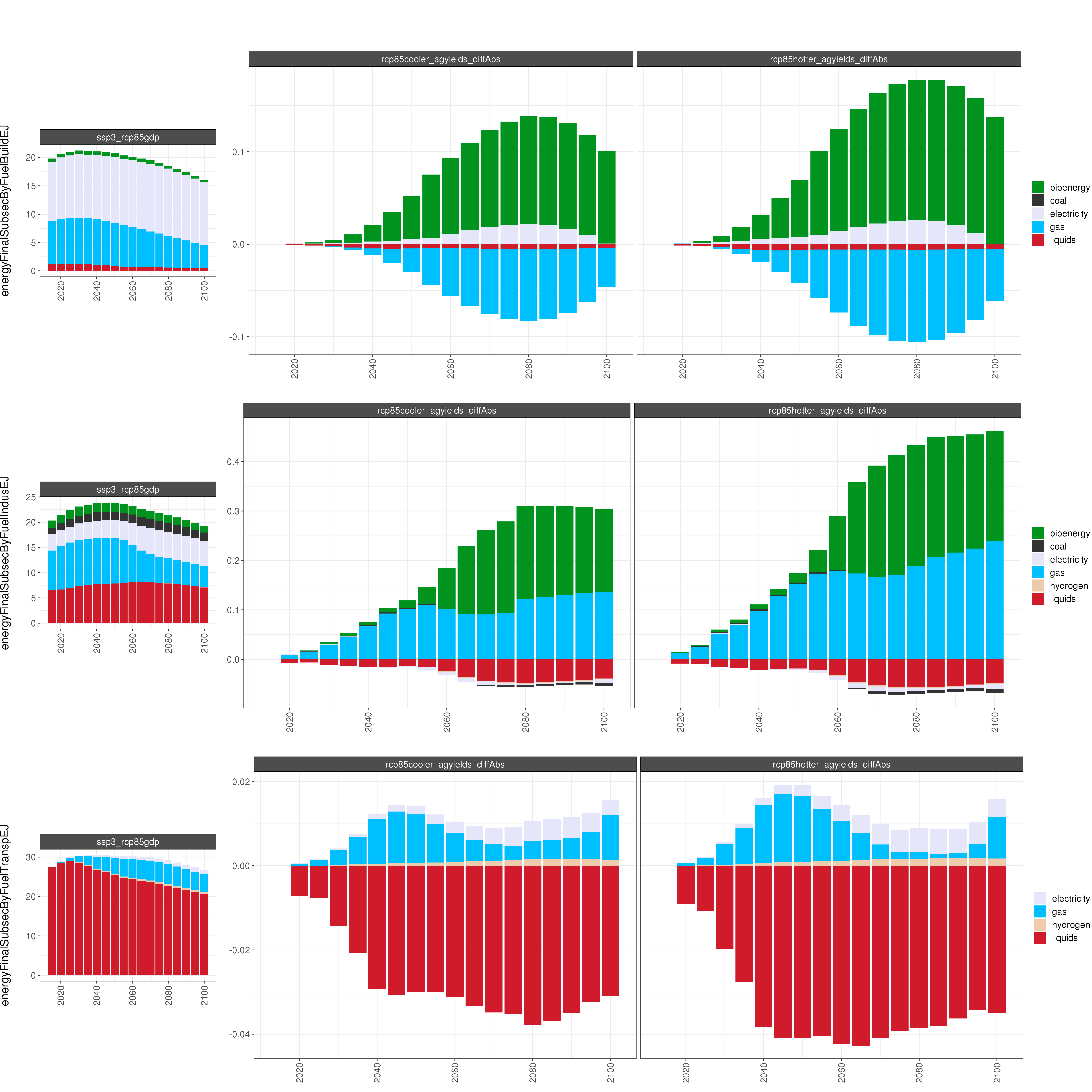
Comparison of GCAM energy outputs for 8 climate and socioeconomic scenarios (absolute difference).
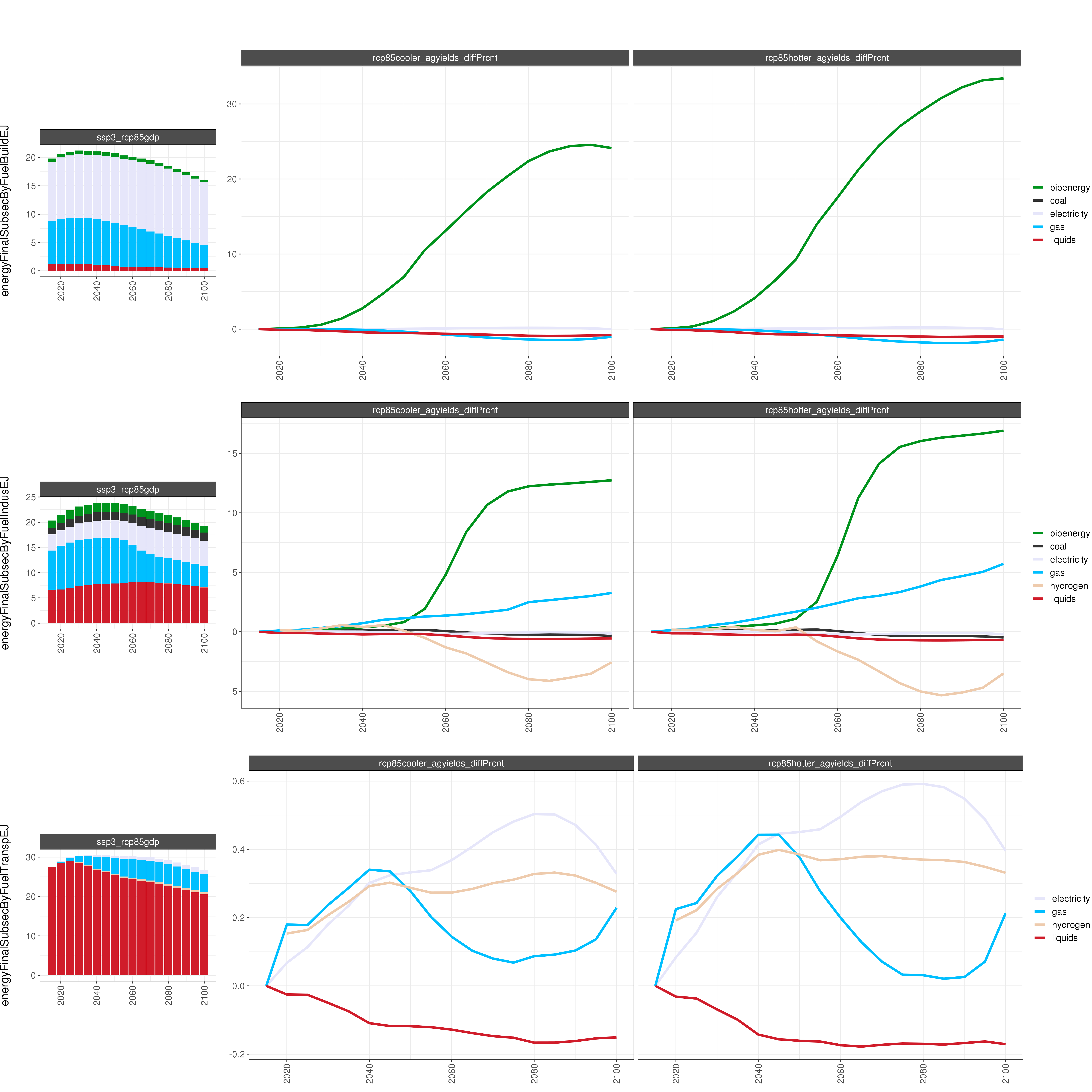
Comparison of GCAM energy outputs for 8 climate and socioeconomic scenarios (percent difference).
Energy Consumption
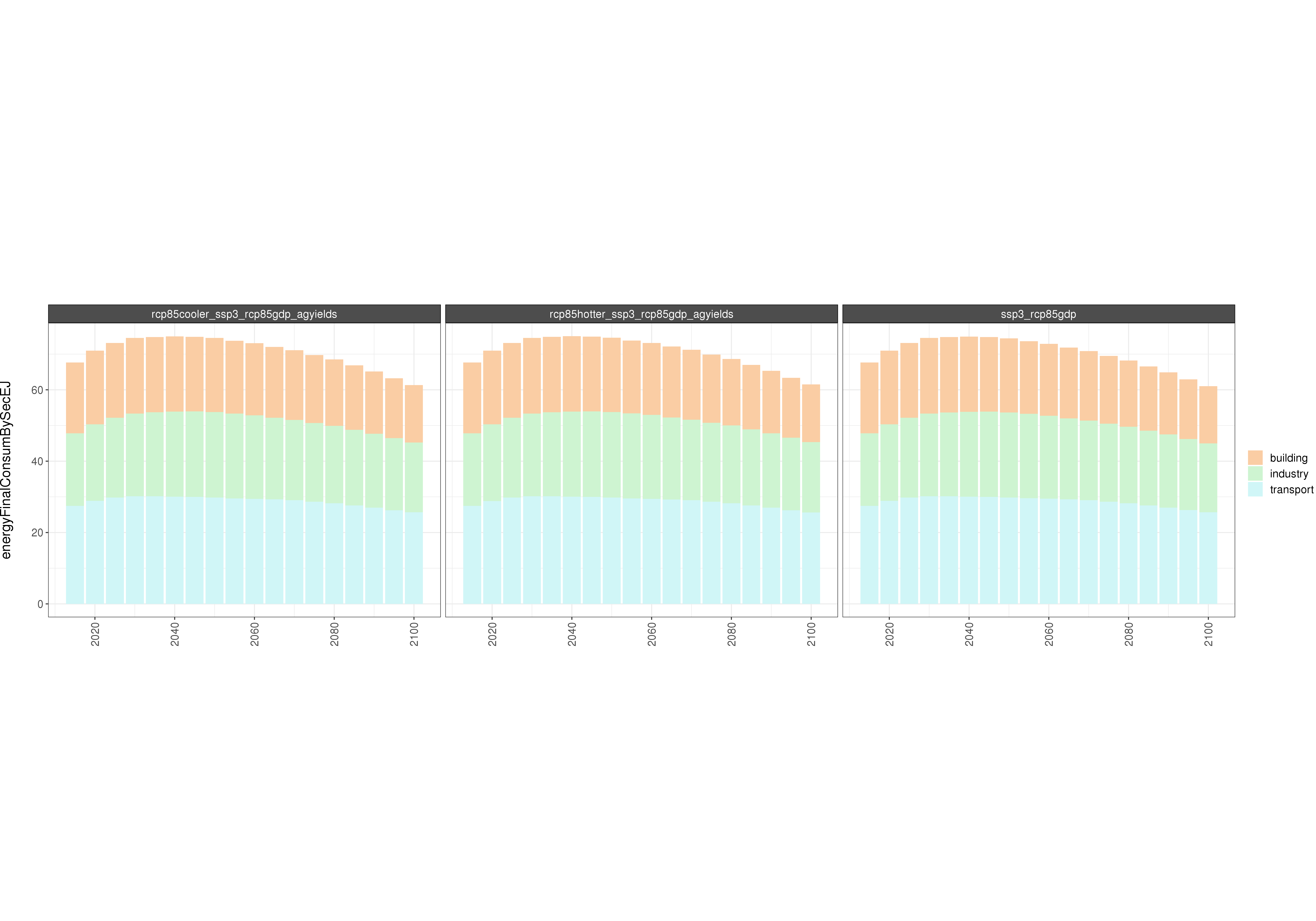
Absolute GCAM energy outputs
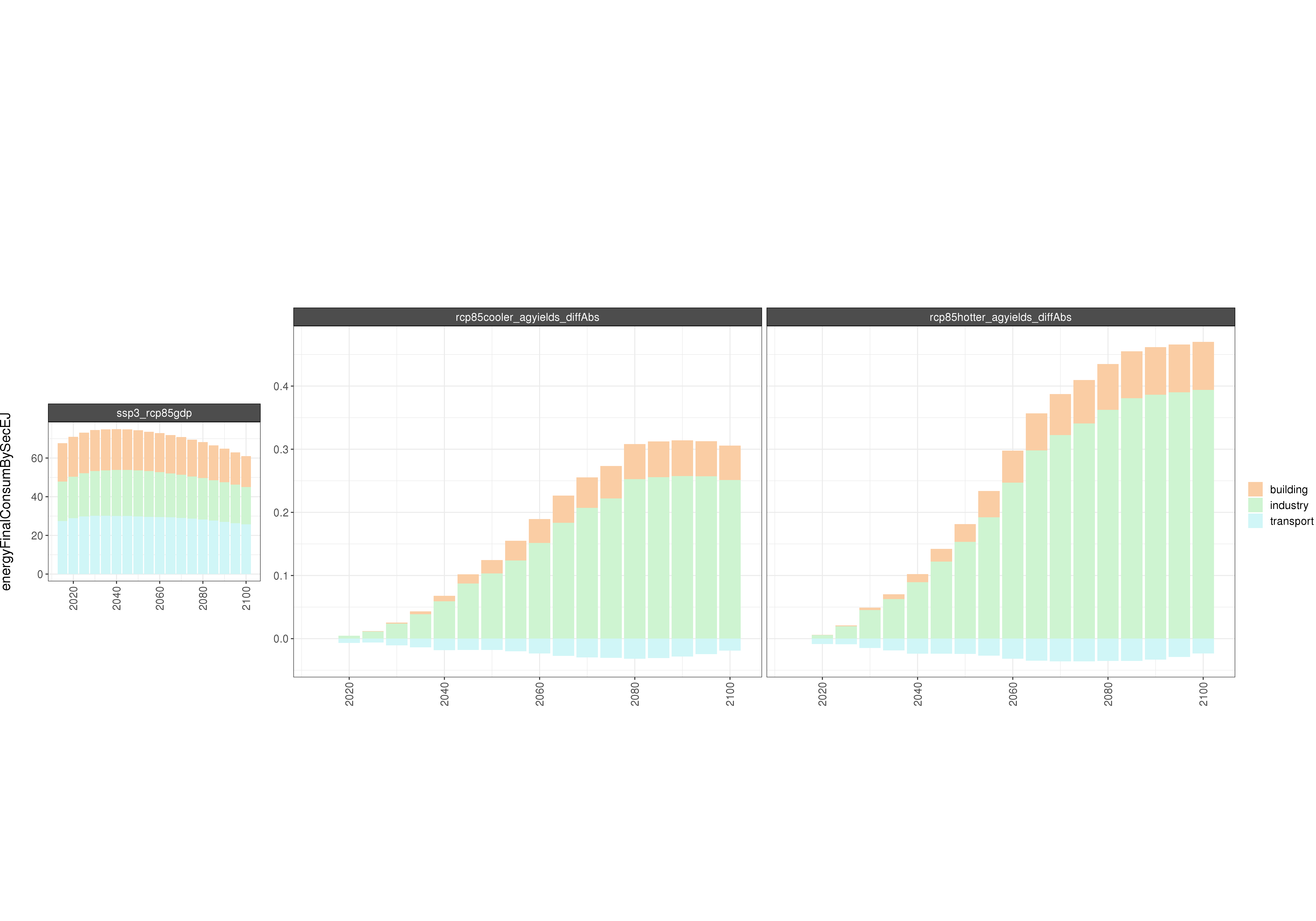
Comparison of GCAM energy outputs
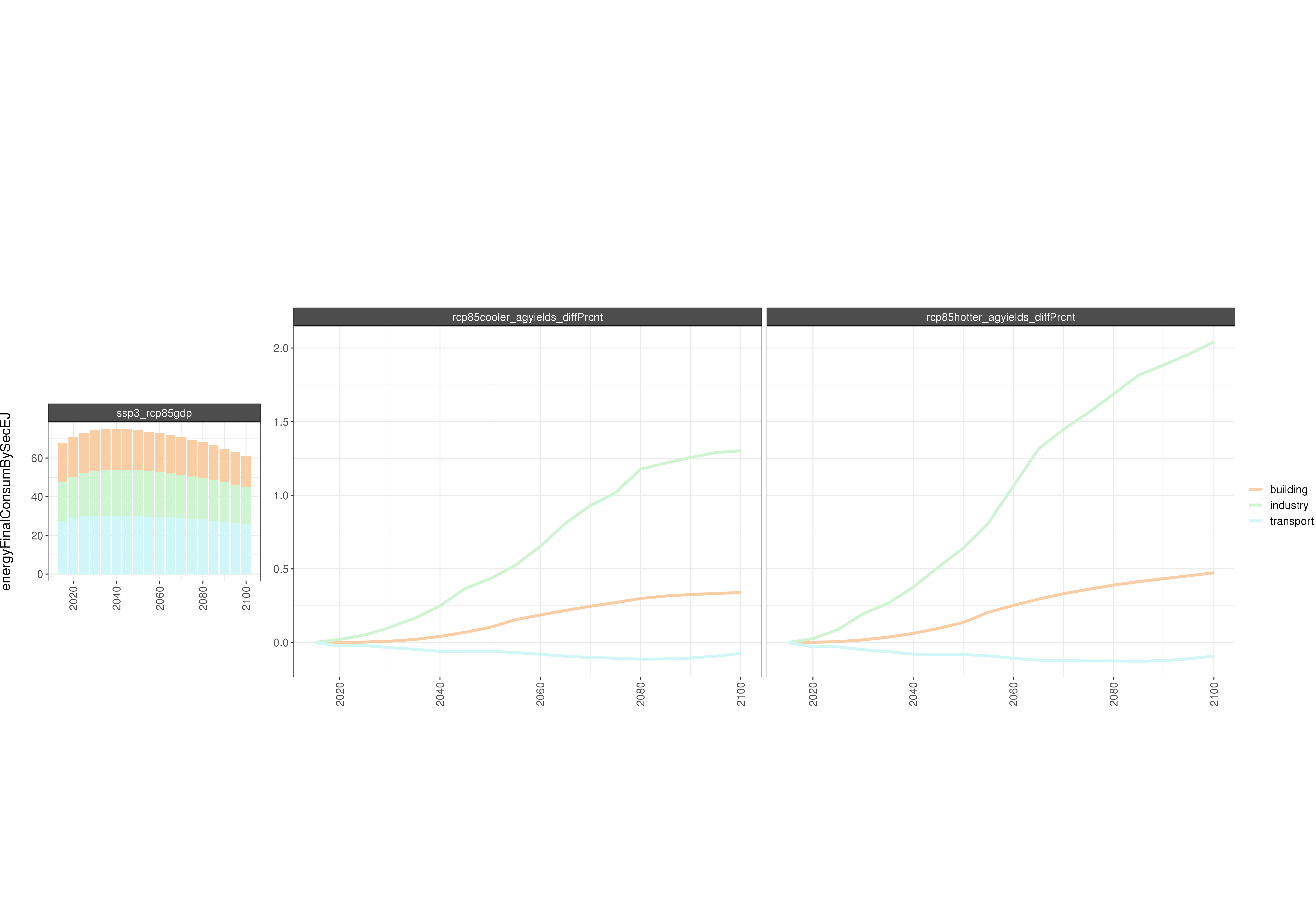
Comparison of GCAM energy outputs % Diff
Electricity
RCP4.5
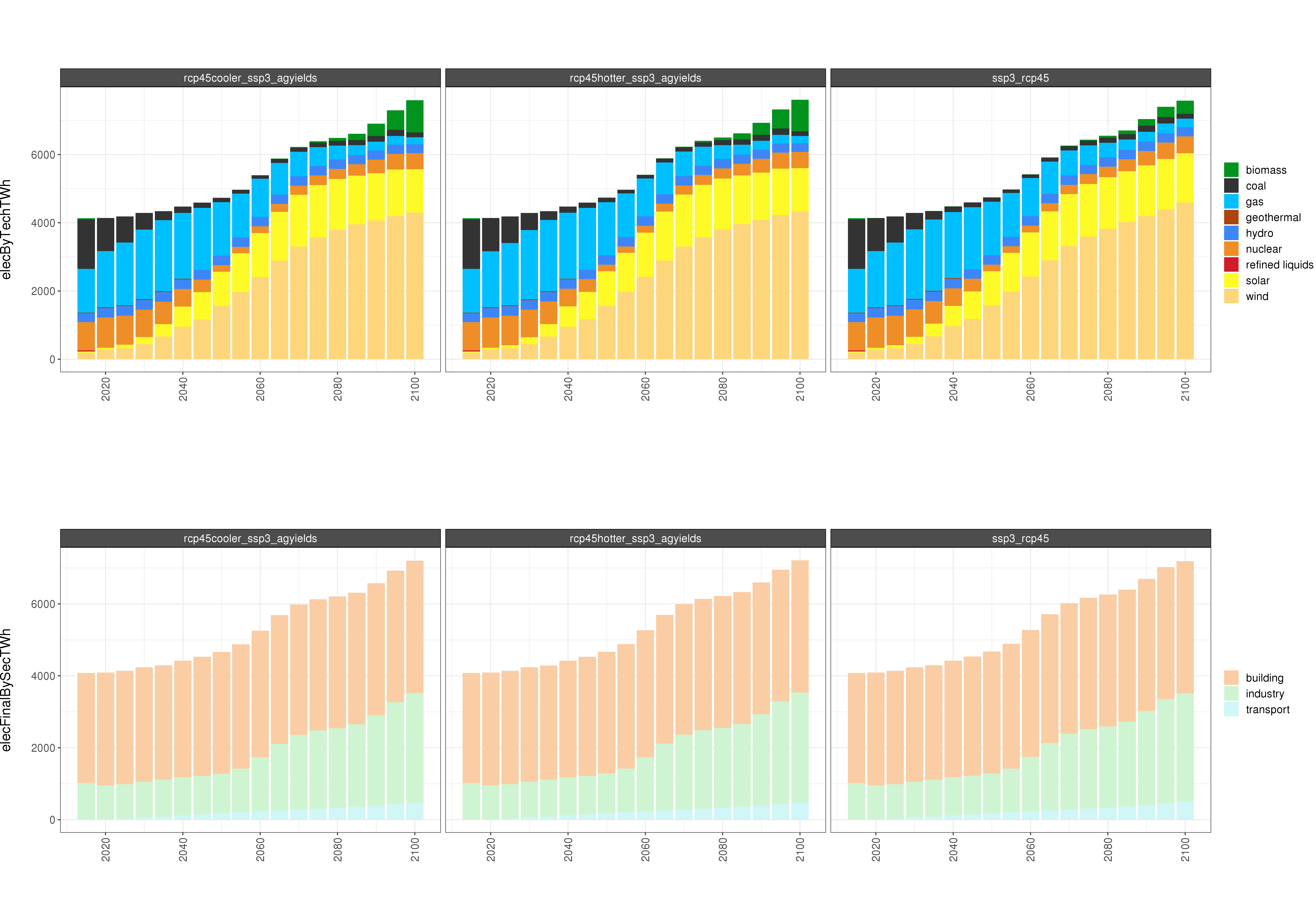
Absolute GCAM electricity outputs
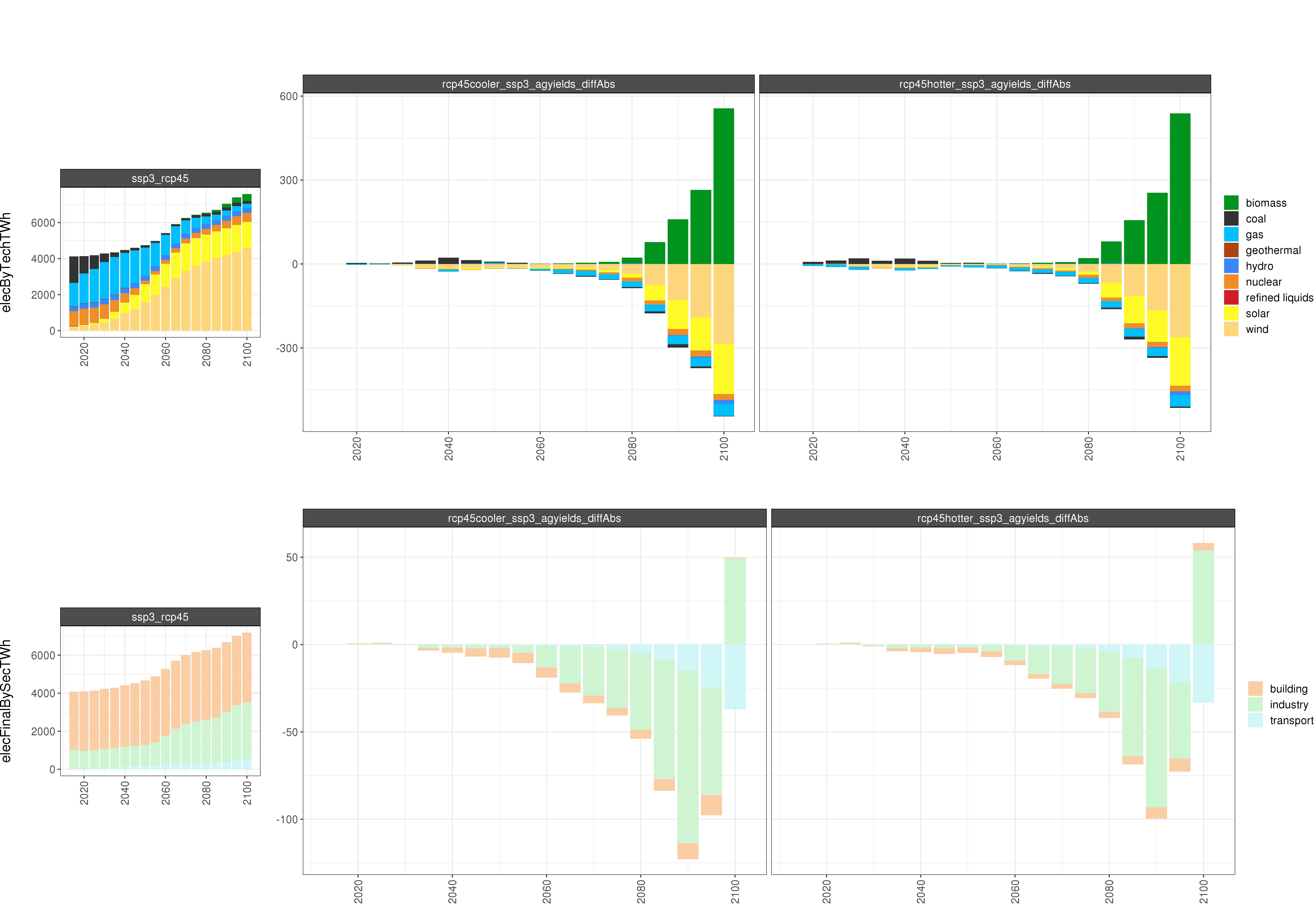
Comparison of GCAM electricity outputs
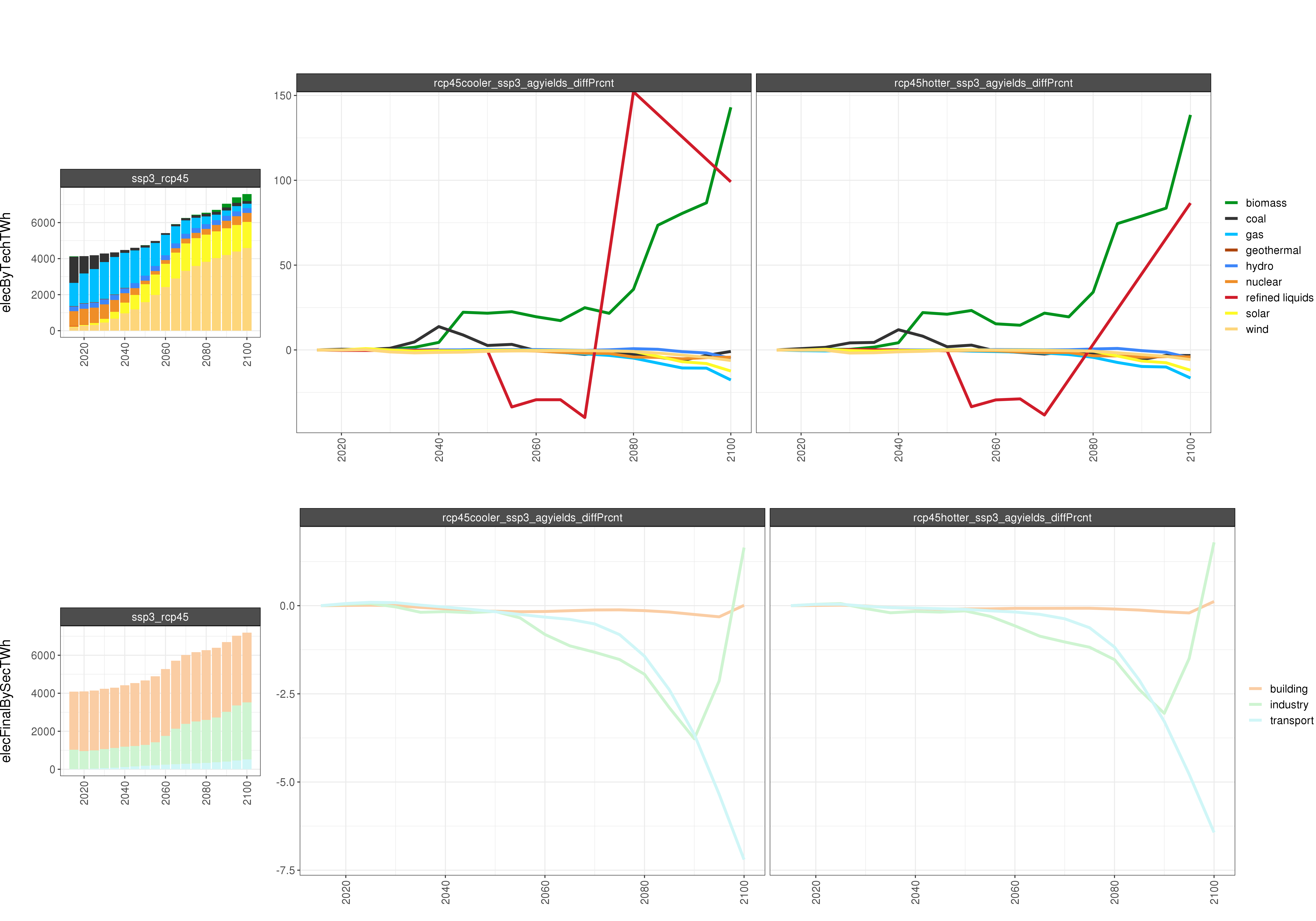
Comparison of GCAM electricity outputs % Diff
RCP8.5
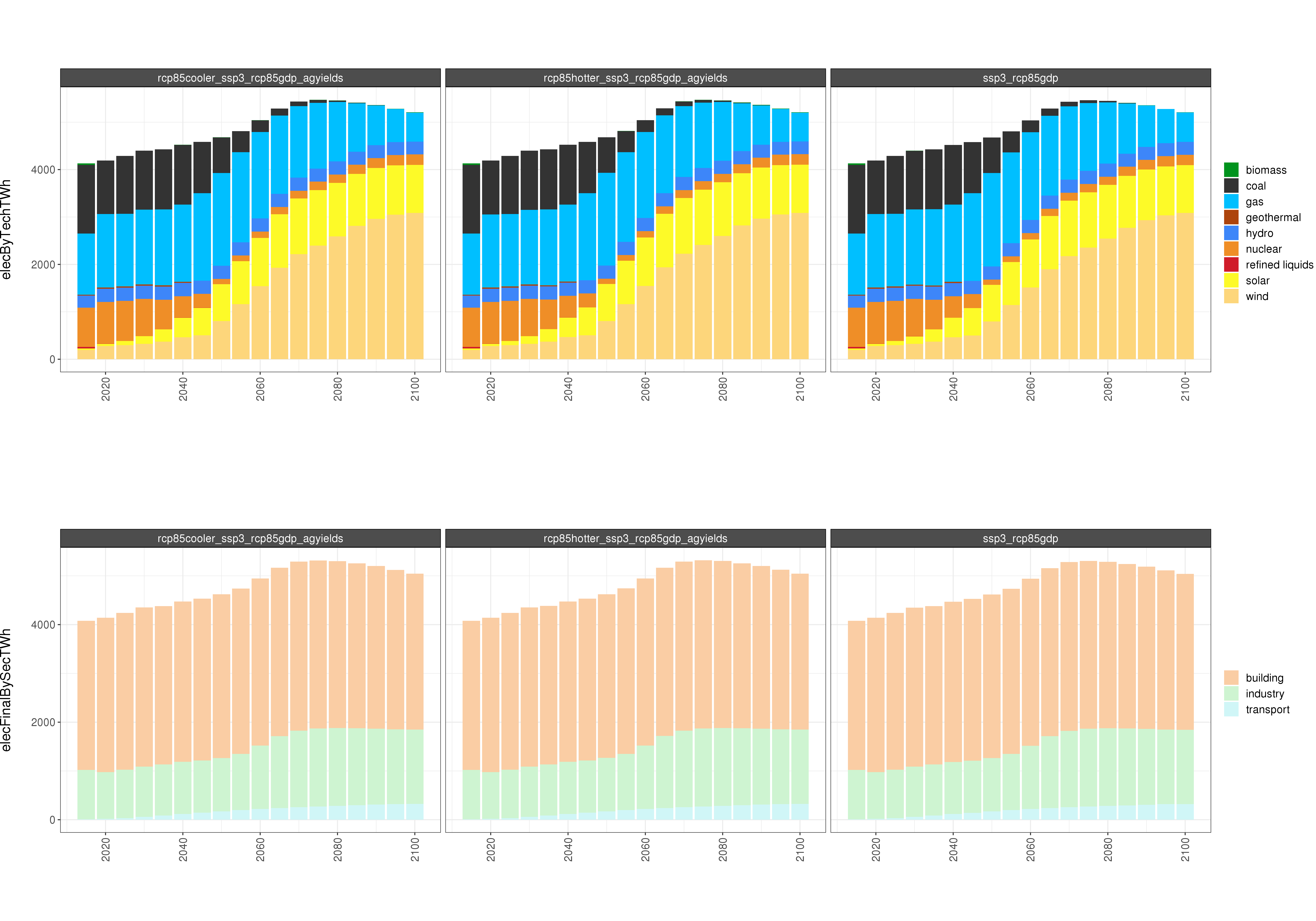
Absolute GCAM electricity outputs
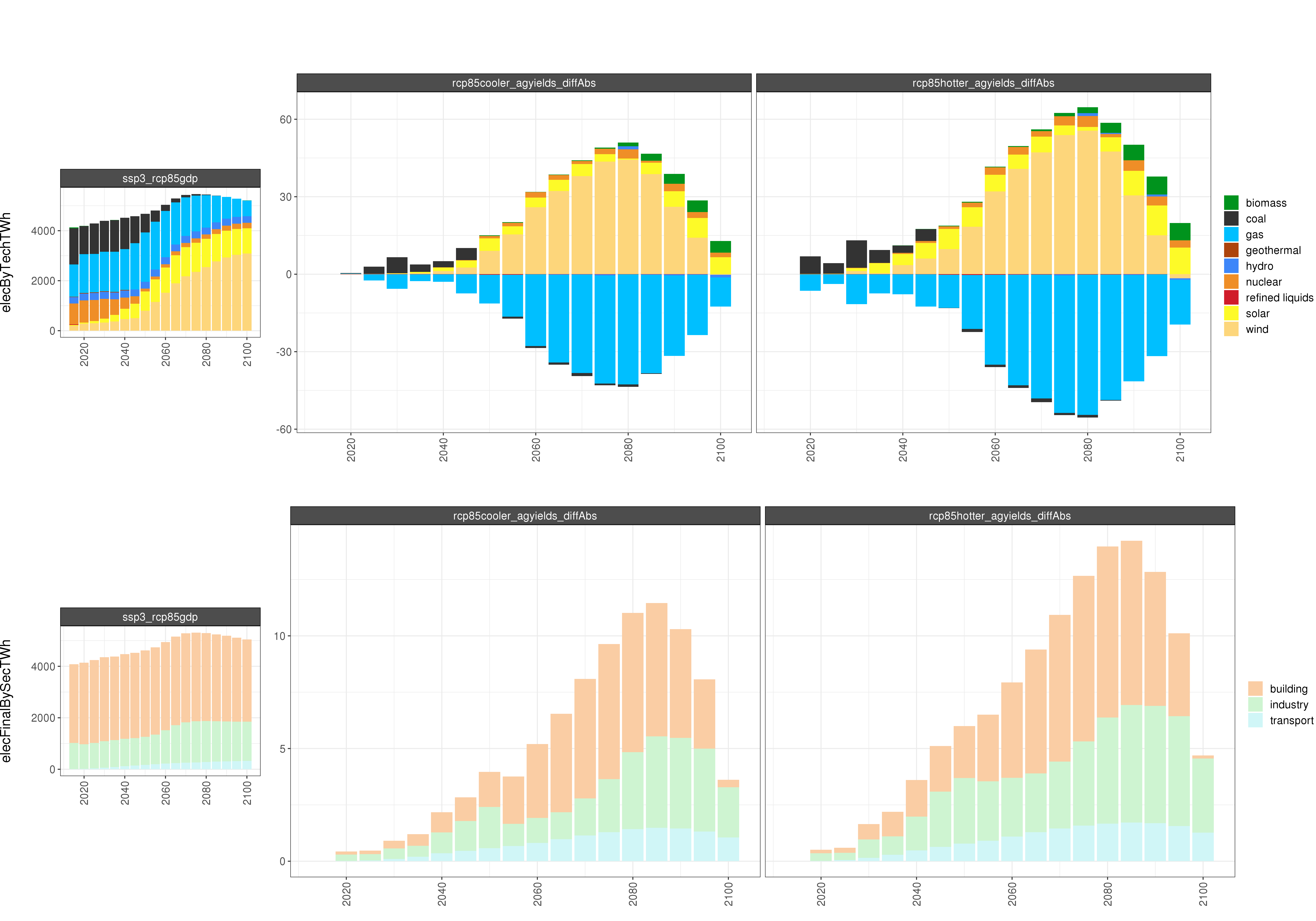
Comparison of GCAM electricity outputs
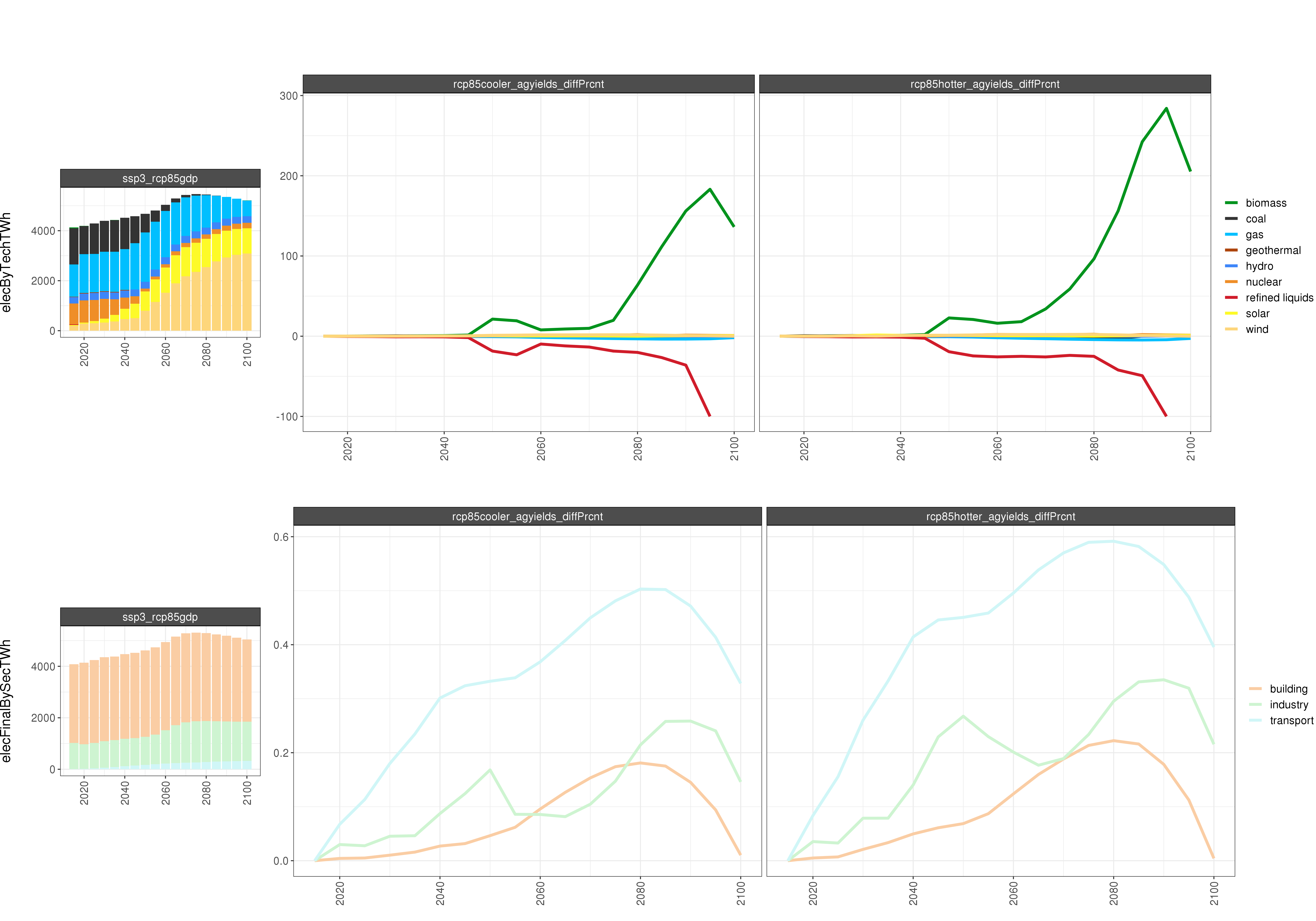
Comparison of GCAM electricity outputs % Diff
AGLU
Summary
RCP4.5 Charts
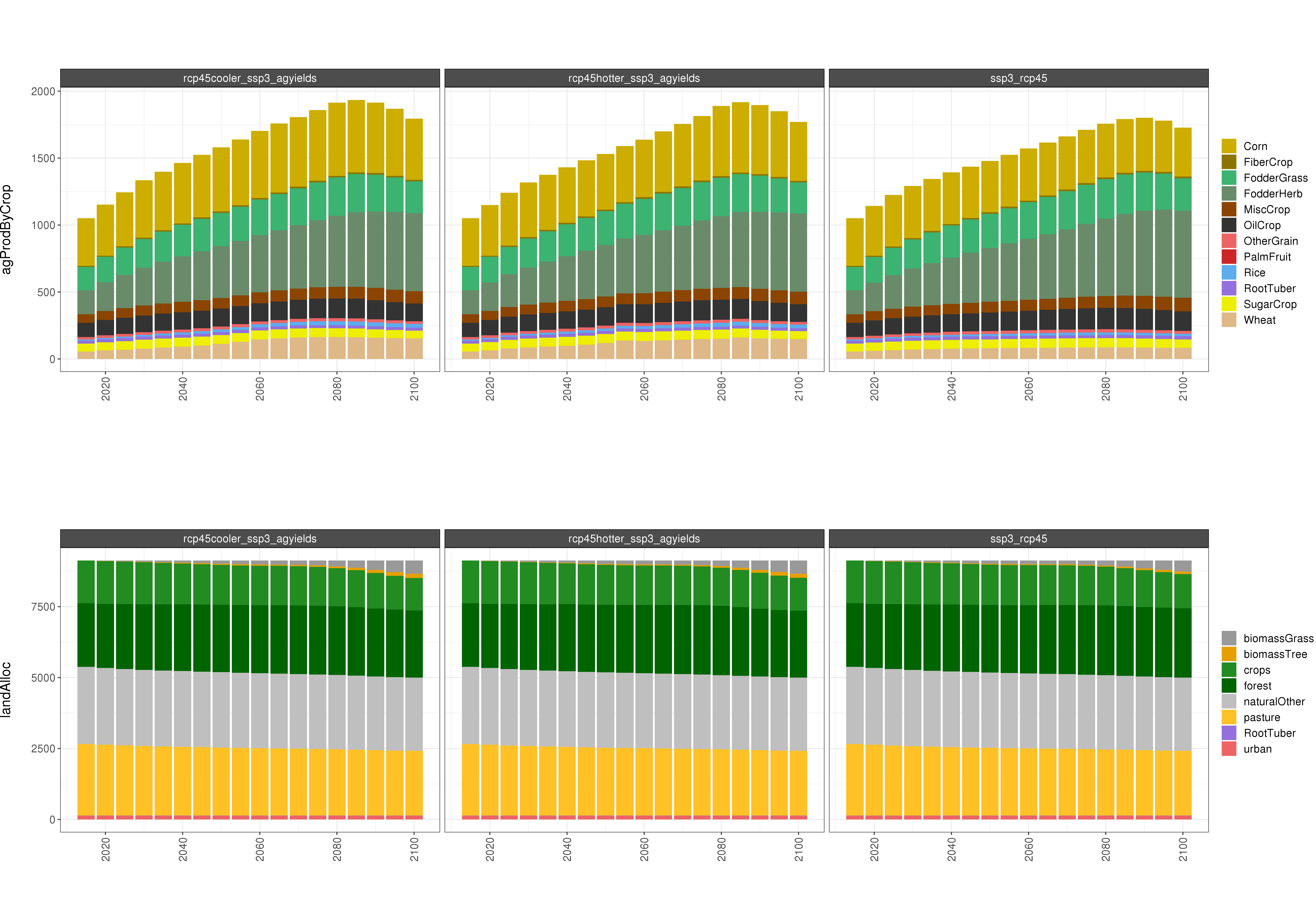
Absolute GCAM AGLU outputs
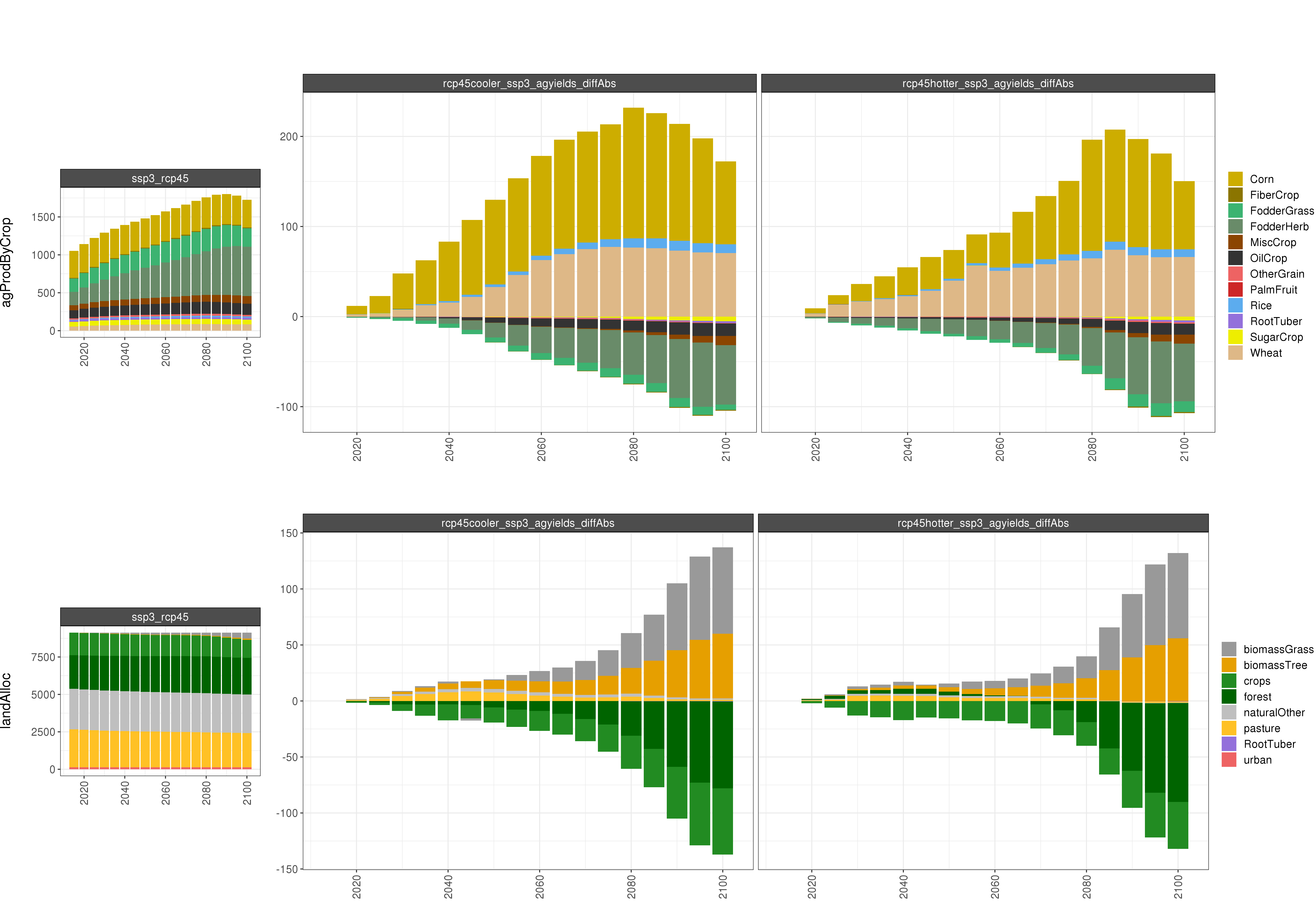
Comparison of GCAM AGLU outputs - absolute difference
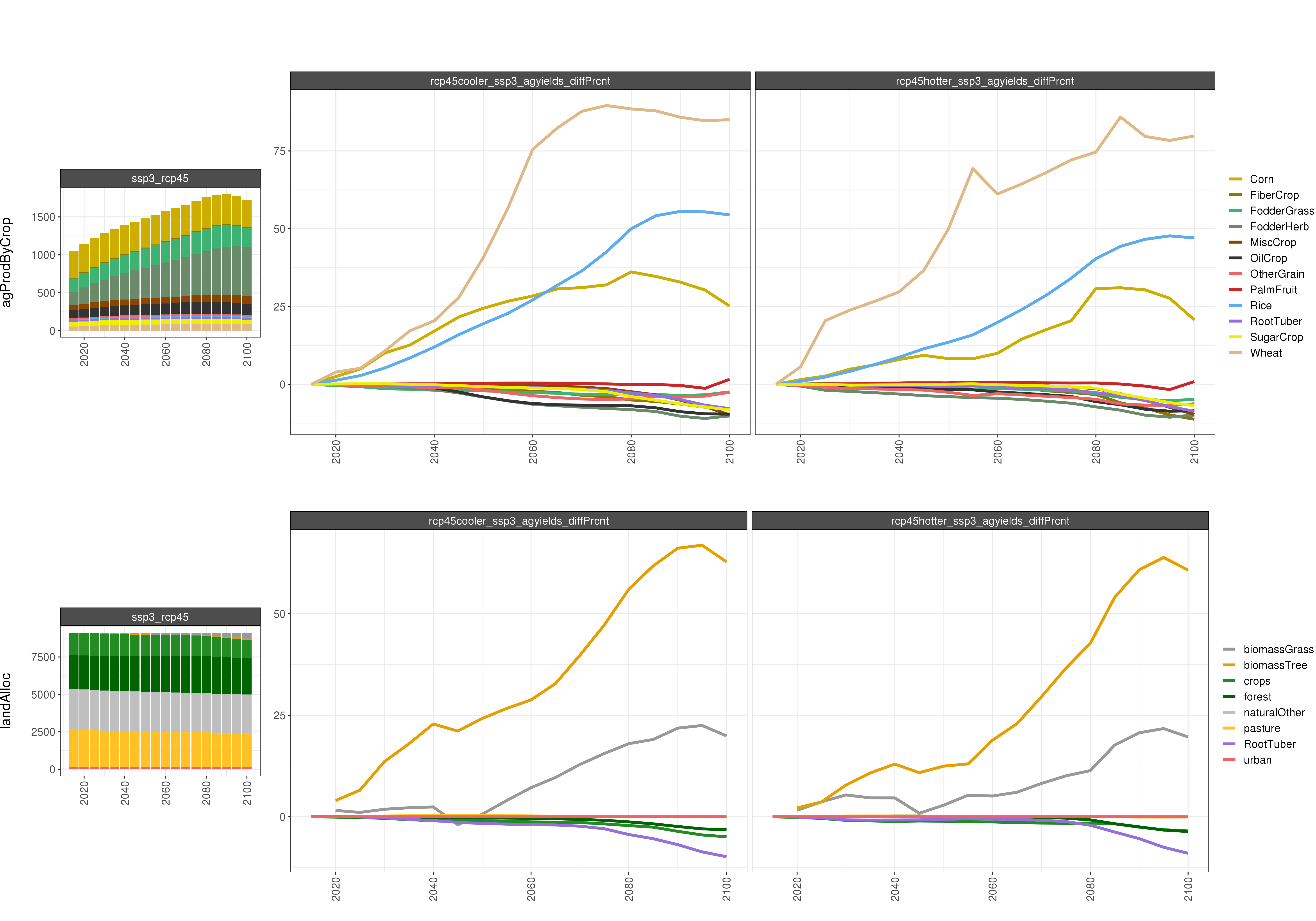
Comparison of GCAM AGLU outputs - percent difference
RCP8.5 Charts
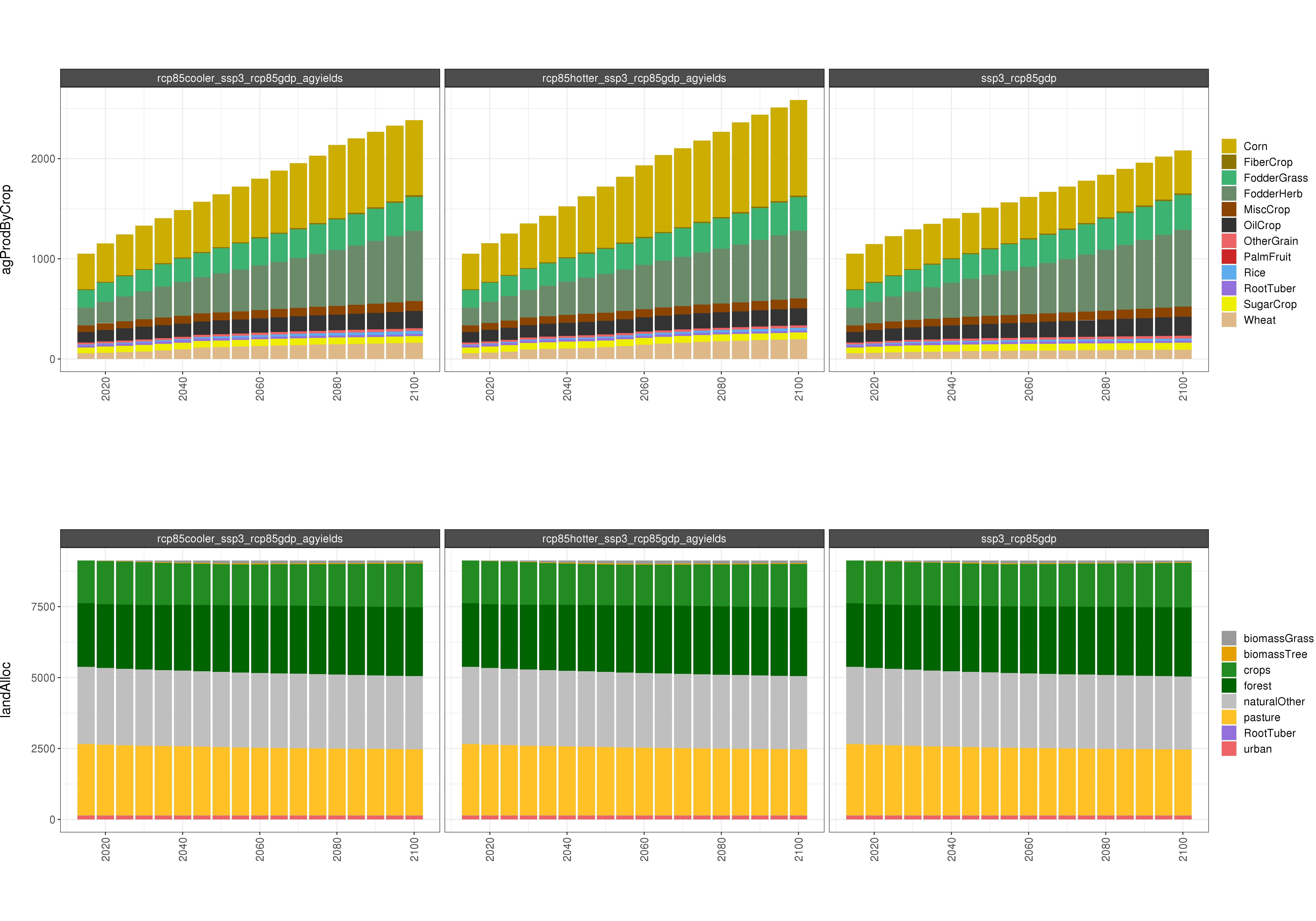
Absolute GCAM AGLU outputs
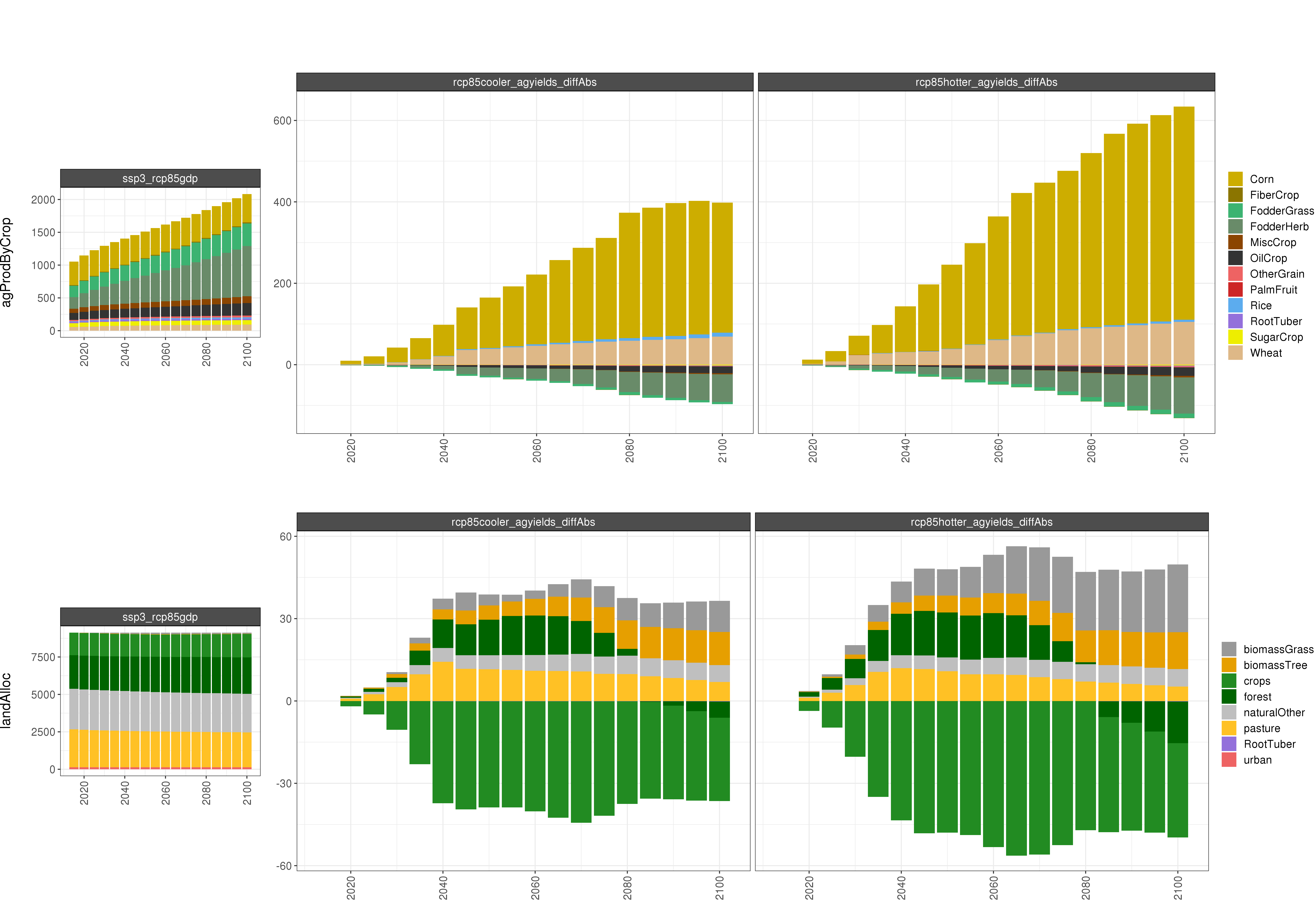
Comparison of GCAM AGLU outputs - absolute difference
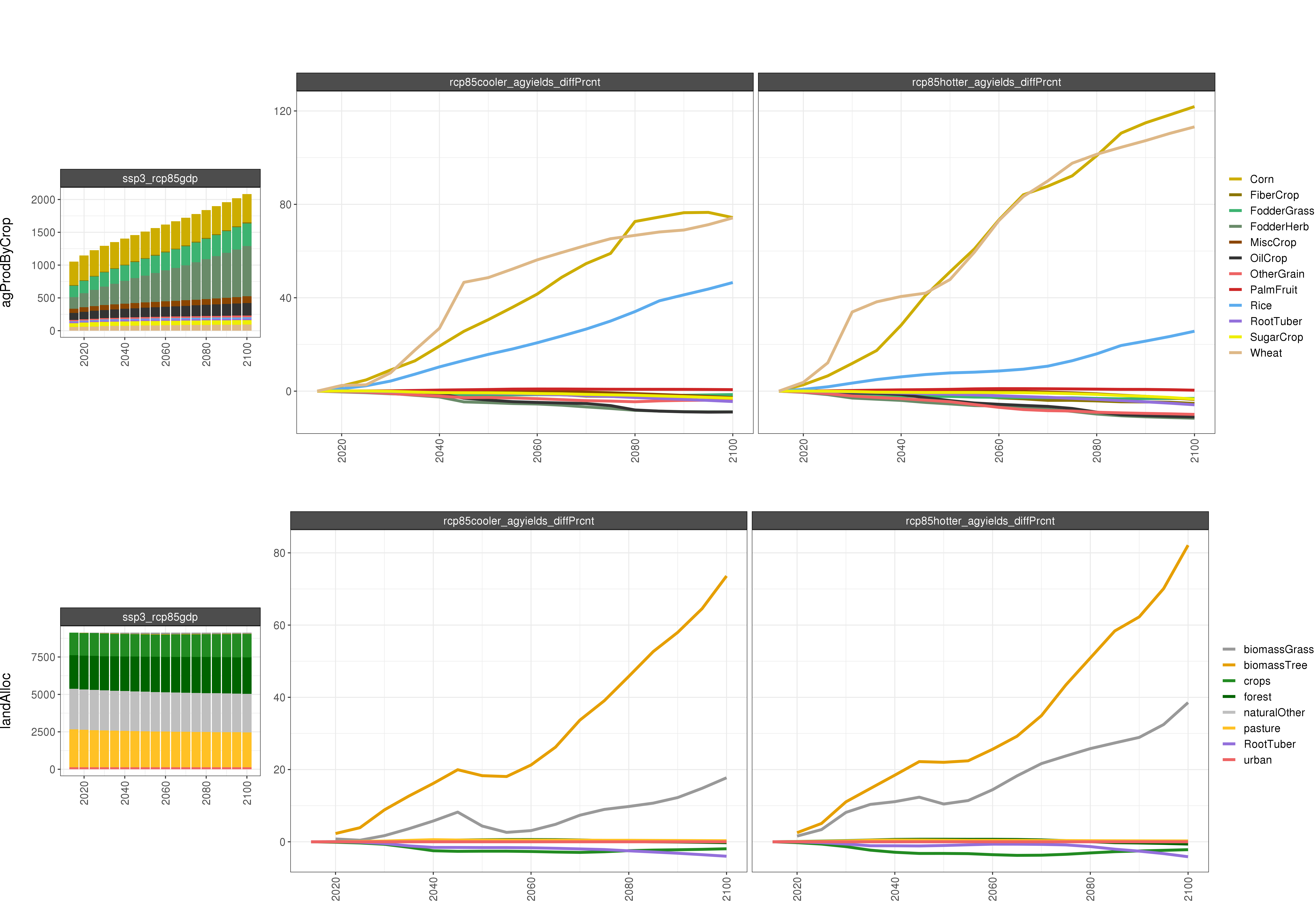
Comparison of GCAM AGLU outputs - percent difference
RCP4.5 Maps
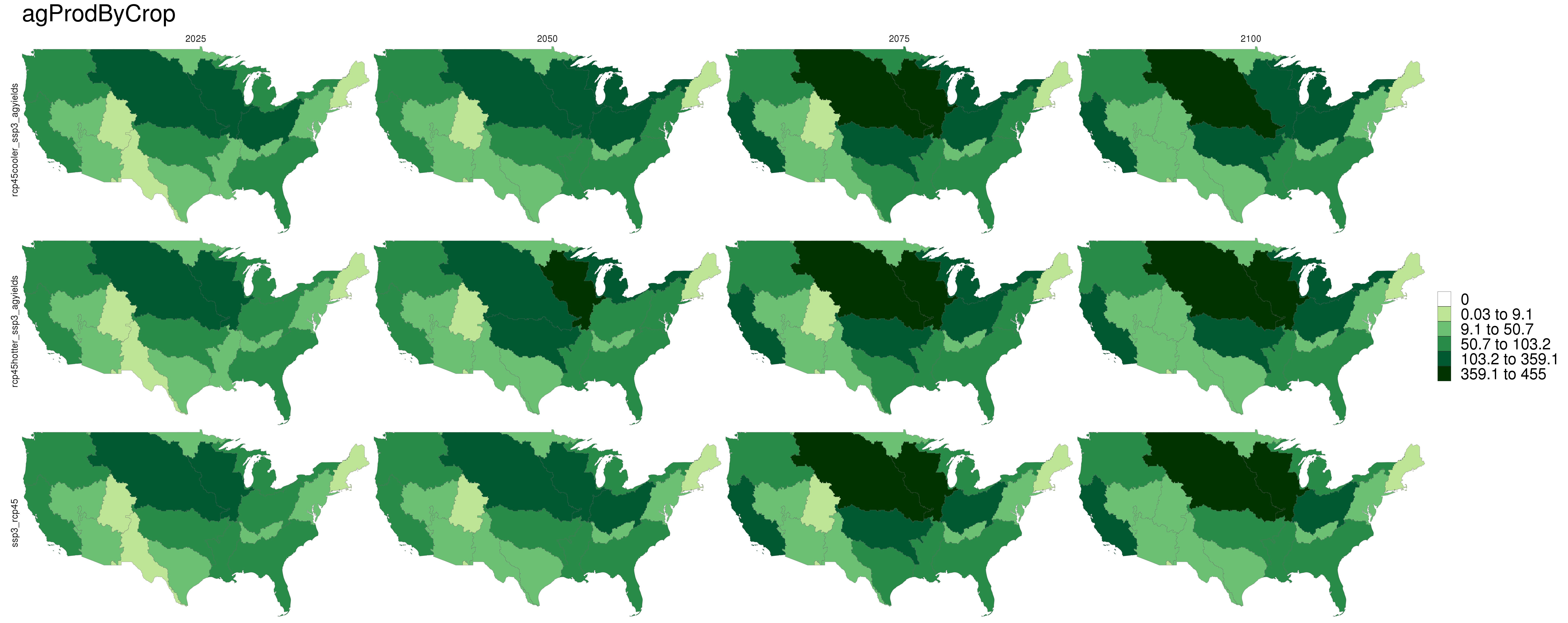
Comparison of agriculture production for RCP4.5 scenarios.

Absolute difference of agriculture production from RCP4.5 to Reference scenario (RCP4.5 - SSP3).

Percent difference of agriculture production from RCP4.5 to Reference scenario (RCP4.5 - SSP3).
RCP8.5 Maps
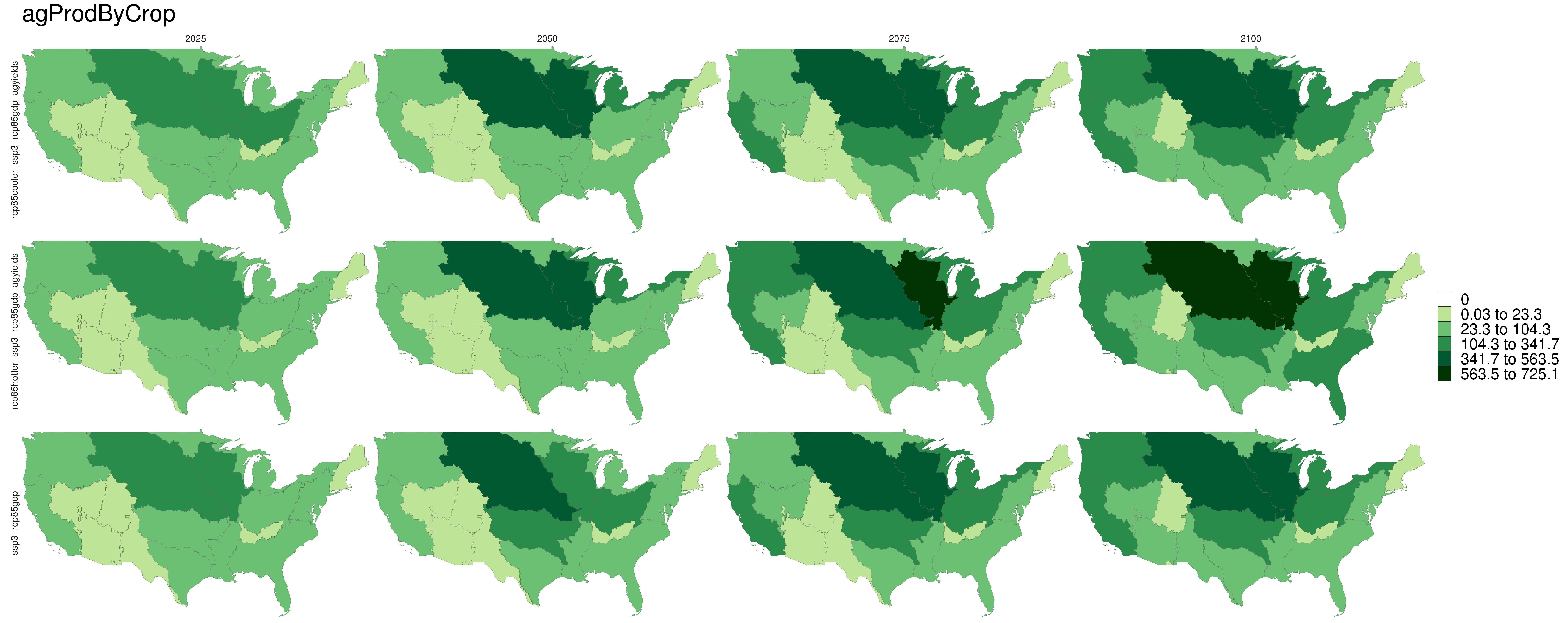
Comparison of agriculture production for RCP8.5 scenarios.

Absolute difference of agriculture production from RCP8.5 to Reference scenario (RCP8.5 - SSP3).

Percent difference of agriculture production from RCP8.5 to Reference scenario (RCP8.5 - SSP3).
Corn
RCP4.5
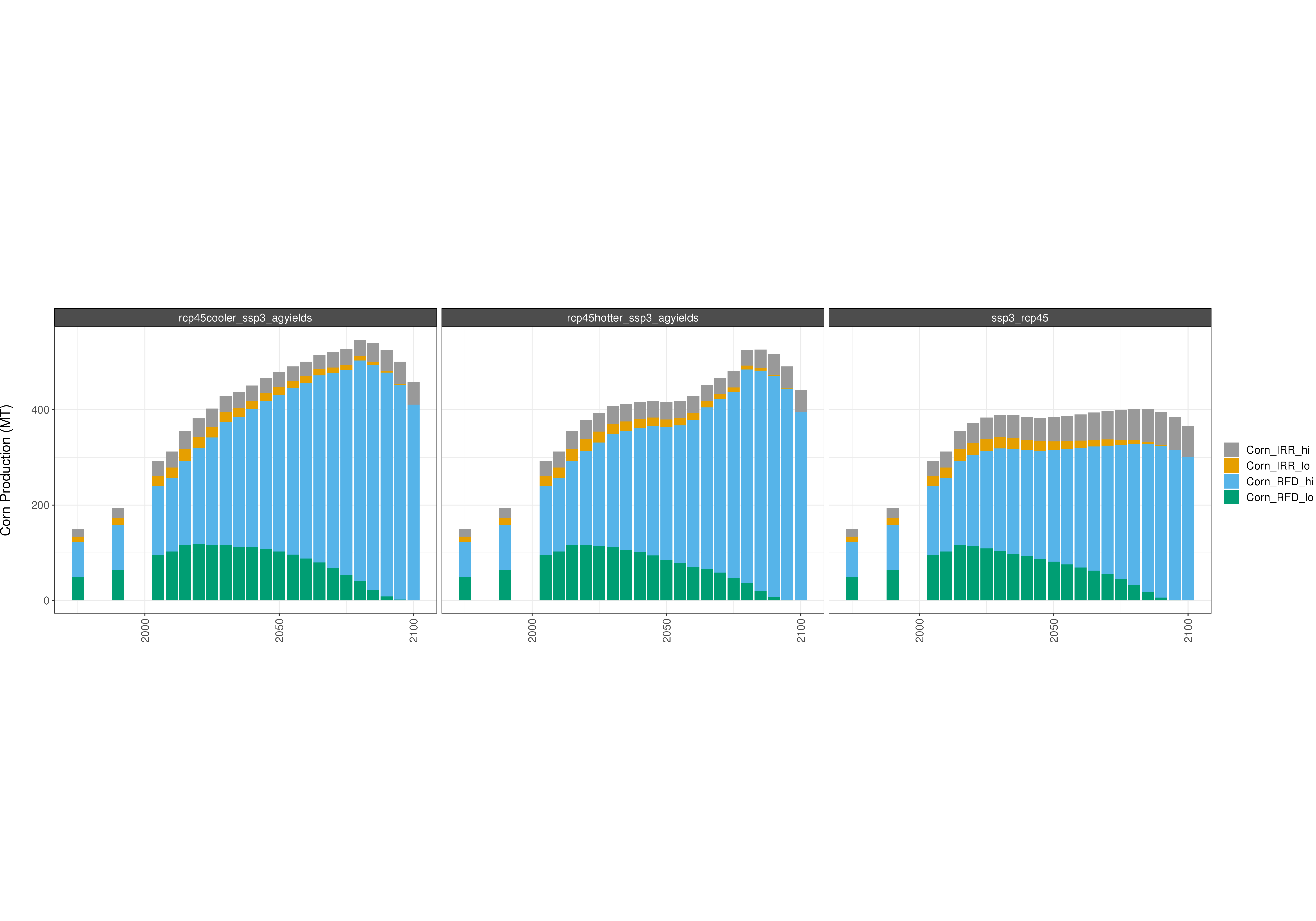
Absolute GCAM AGLU outputs
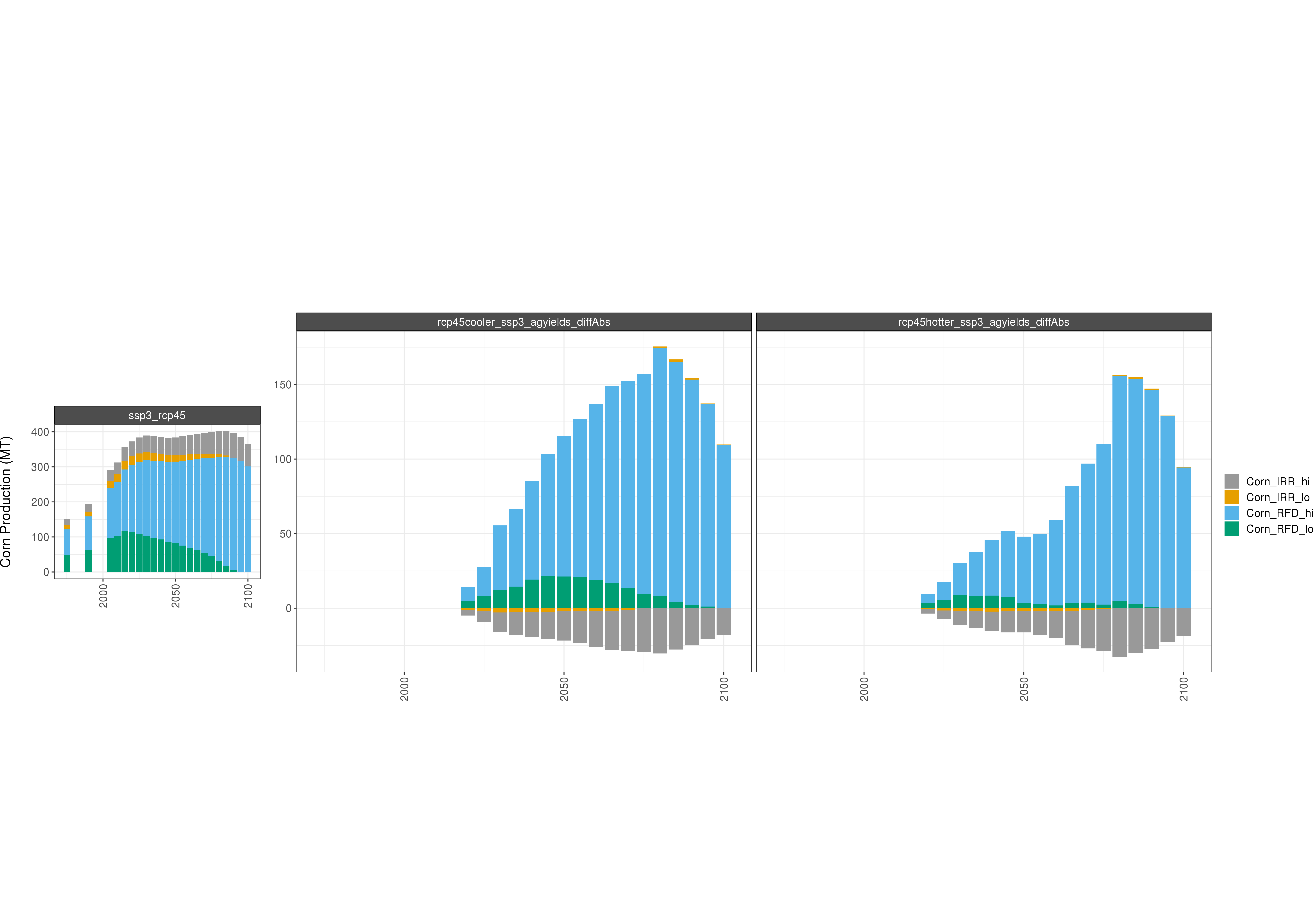
Comparison of GCAM AGLU outputs - absolute difference
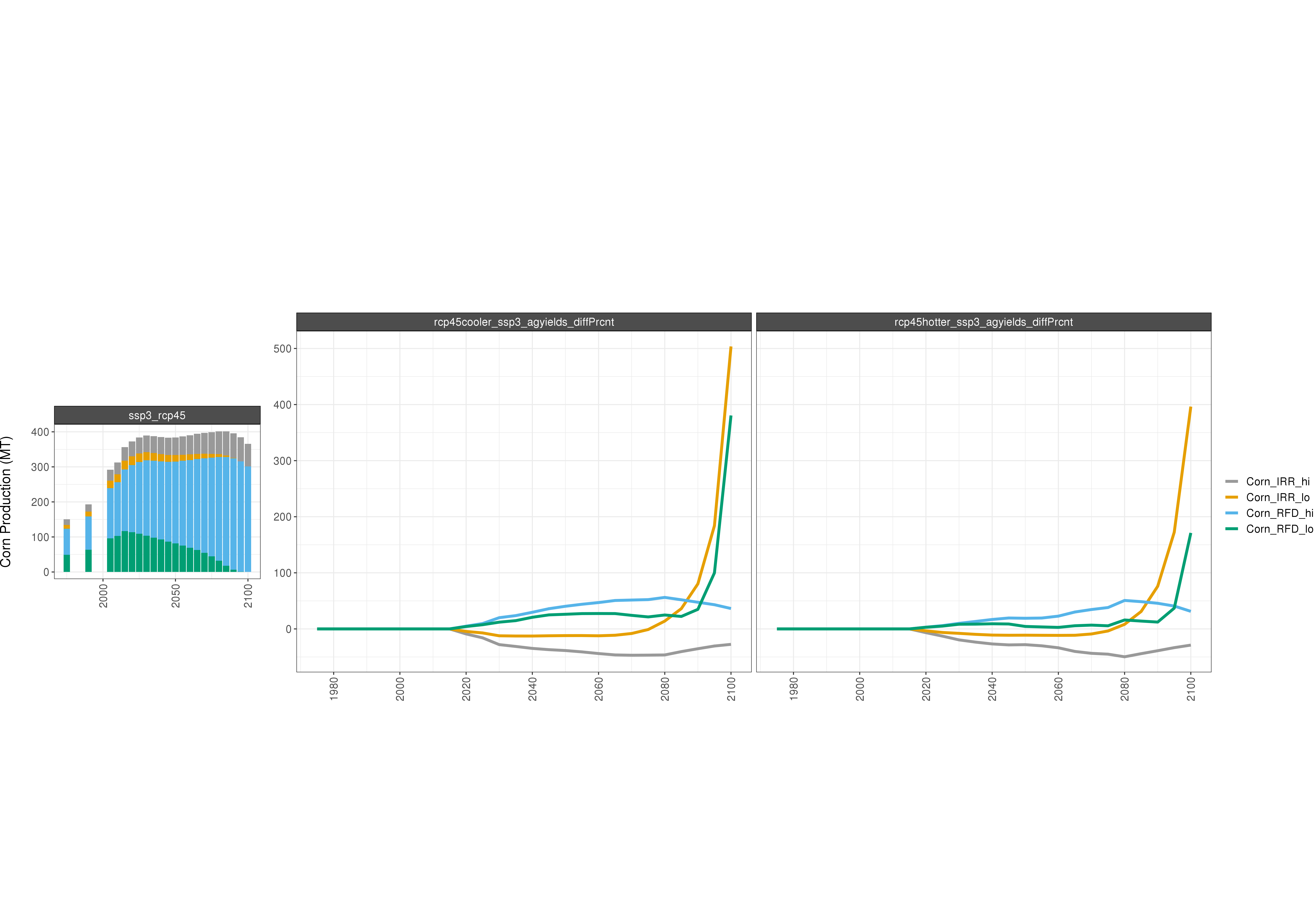
Comparison of GCAM AGLU outputs - percent difference
RCP8.5
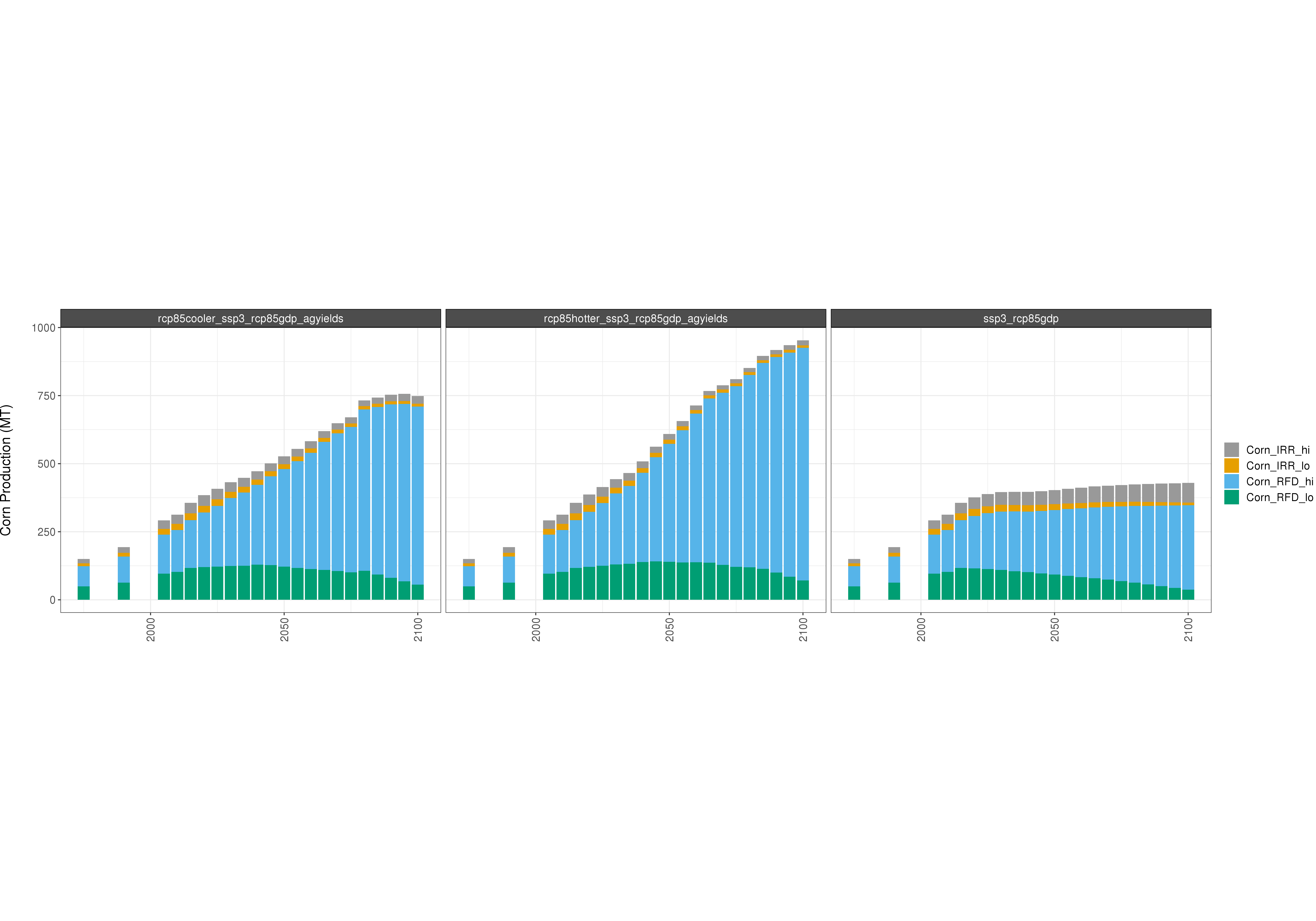
Absolute GCAM AGLU outputs

Comparison of GCAM AGLU outputs - absolute difference
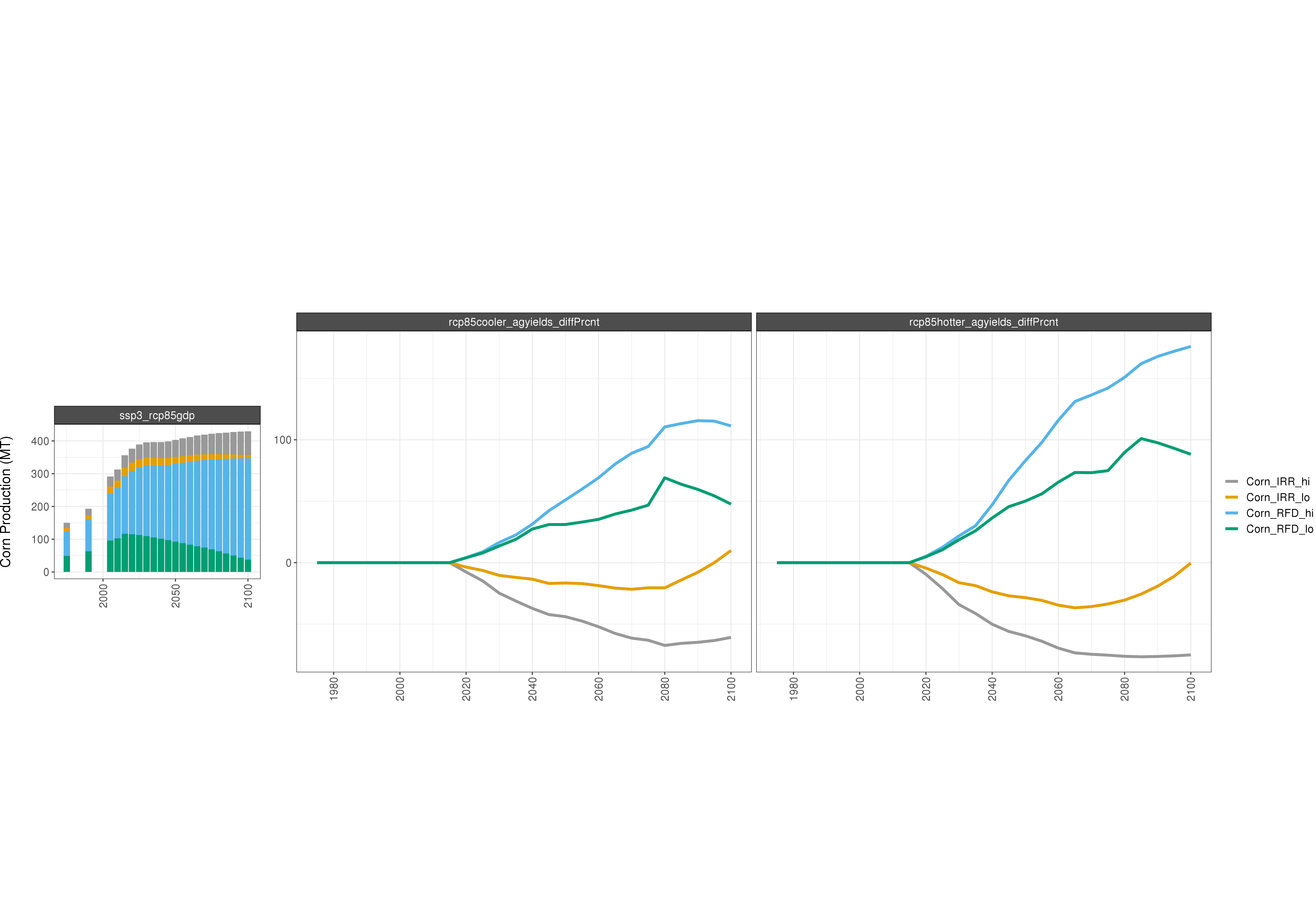
Comparison of GCAM AGLU outputs - percent difference
OilCrop
RCP4.5
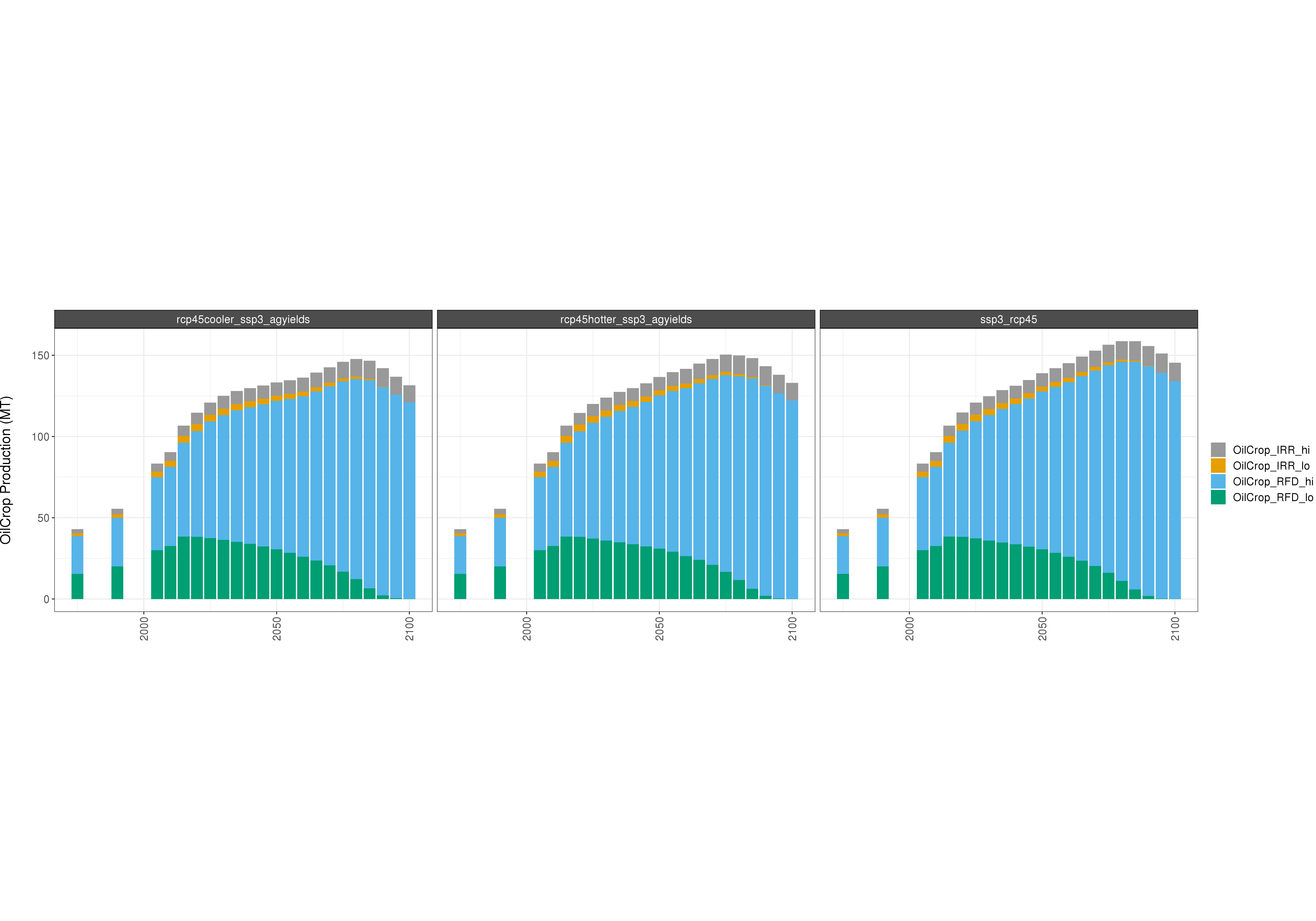
Absolute GCAM AGLU outputs
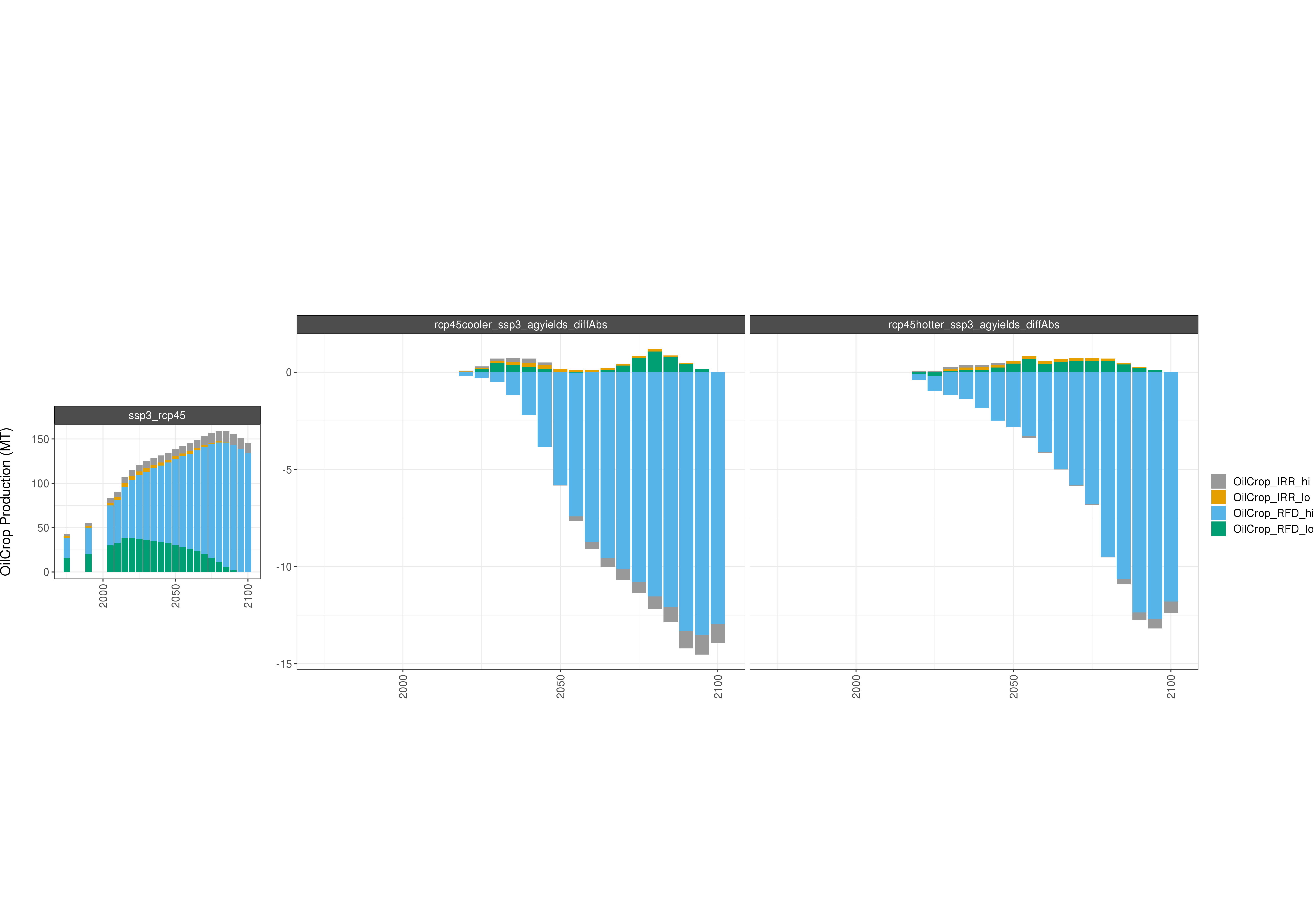
Comparison of GCAM AGLU outputs - absolute difference
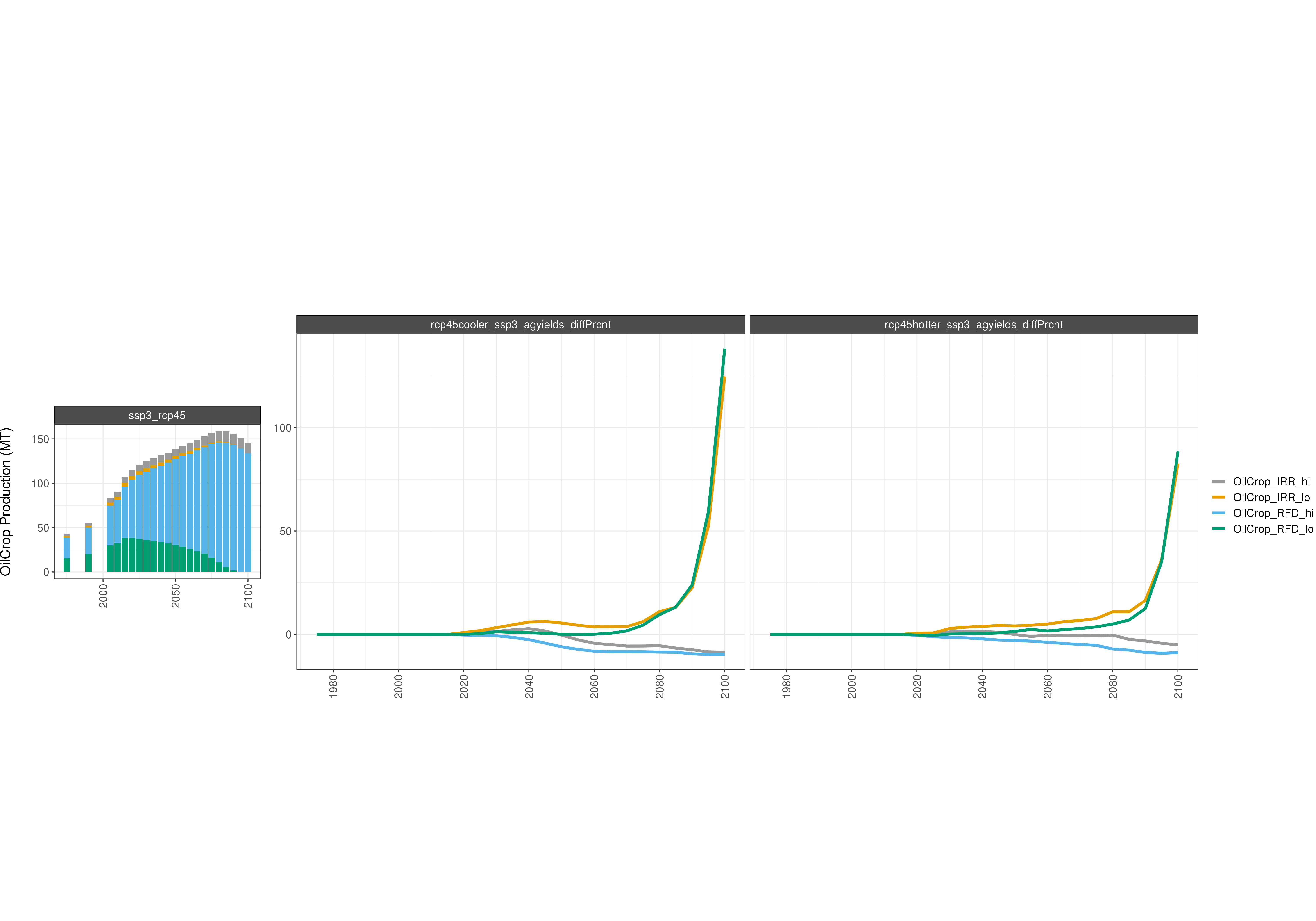
Comparison of GCAM AGLU outputs - percent difference
RCP8.5
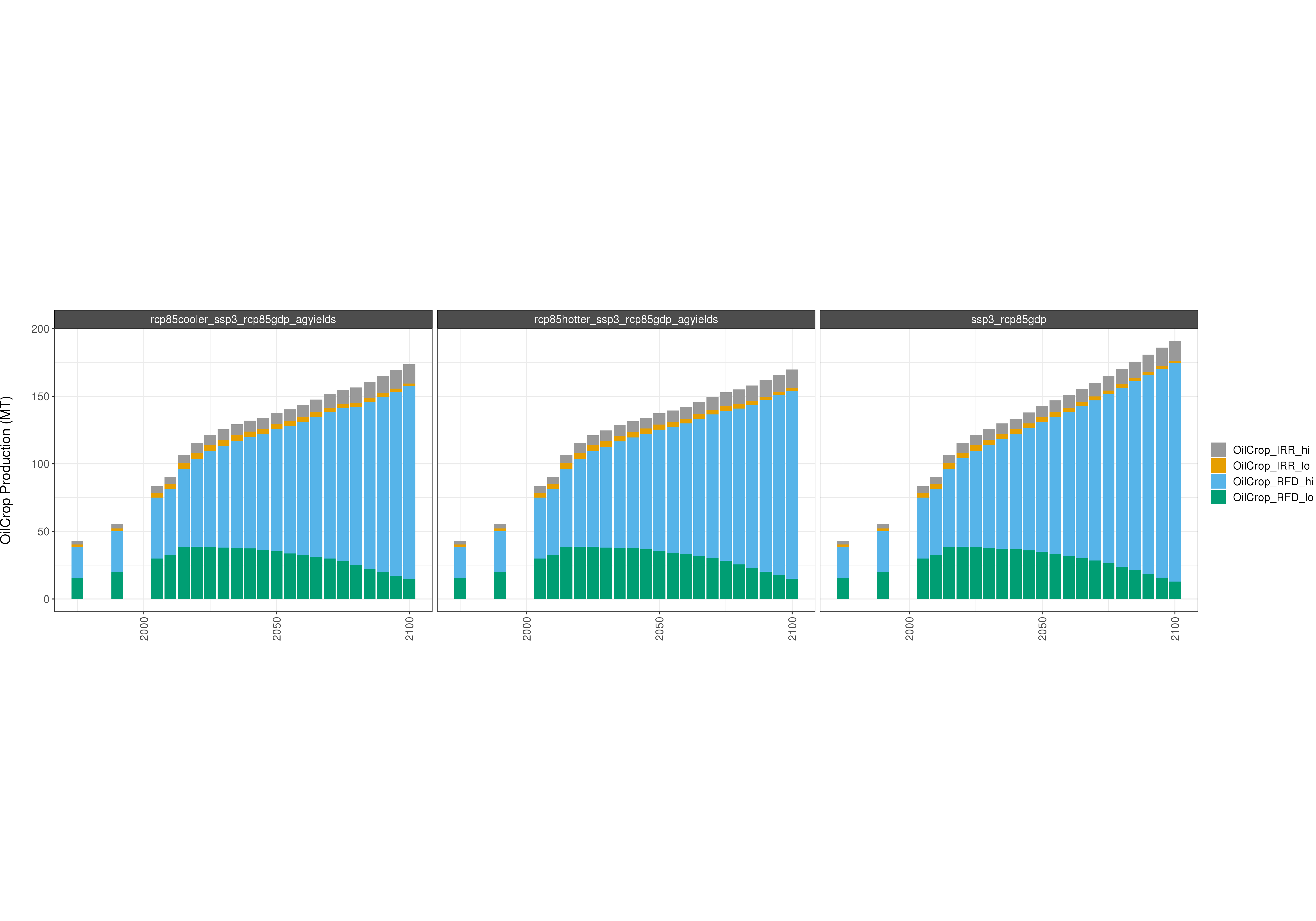
Absolute GCAM AGLU outputs
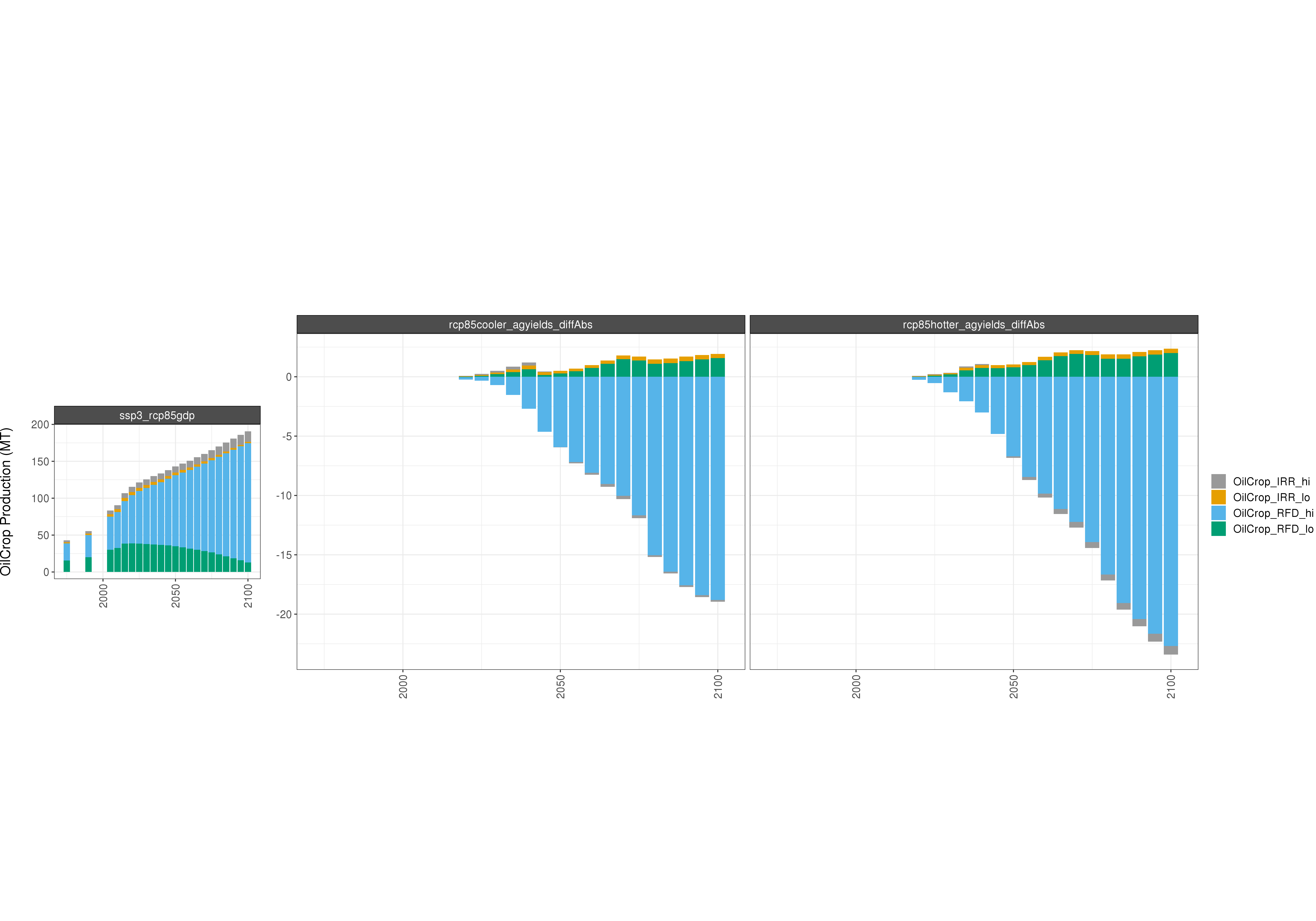
Comparison of GCAM AGLU outputs - absolute difference
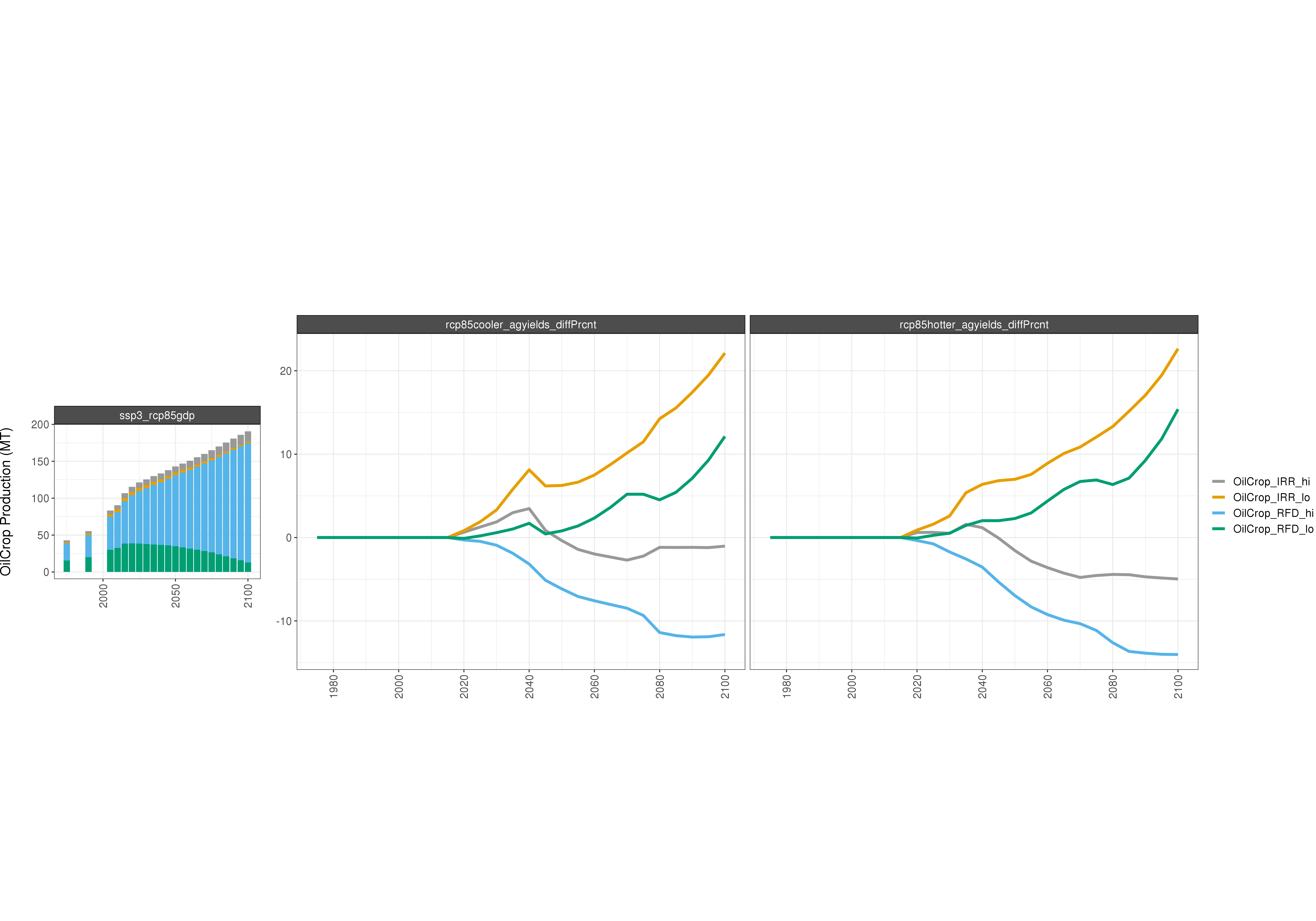
Comparison of GCAM AGLU outputs - percent difference
Rice
RCP4.5
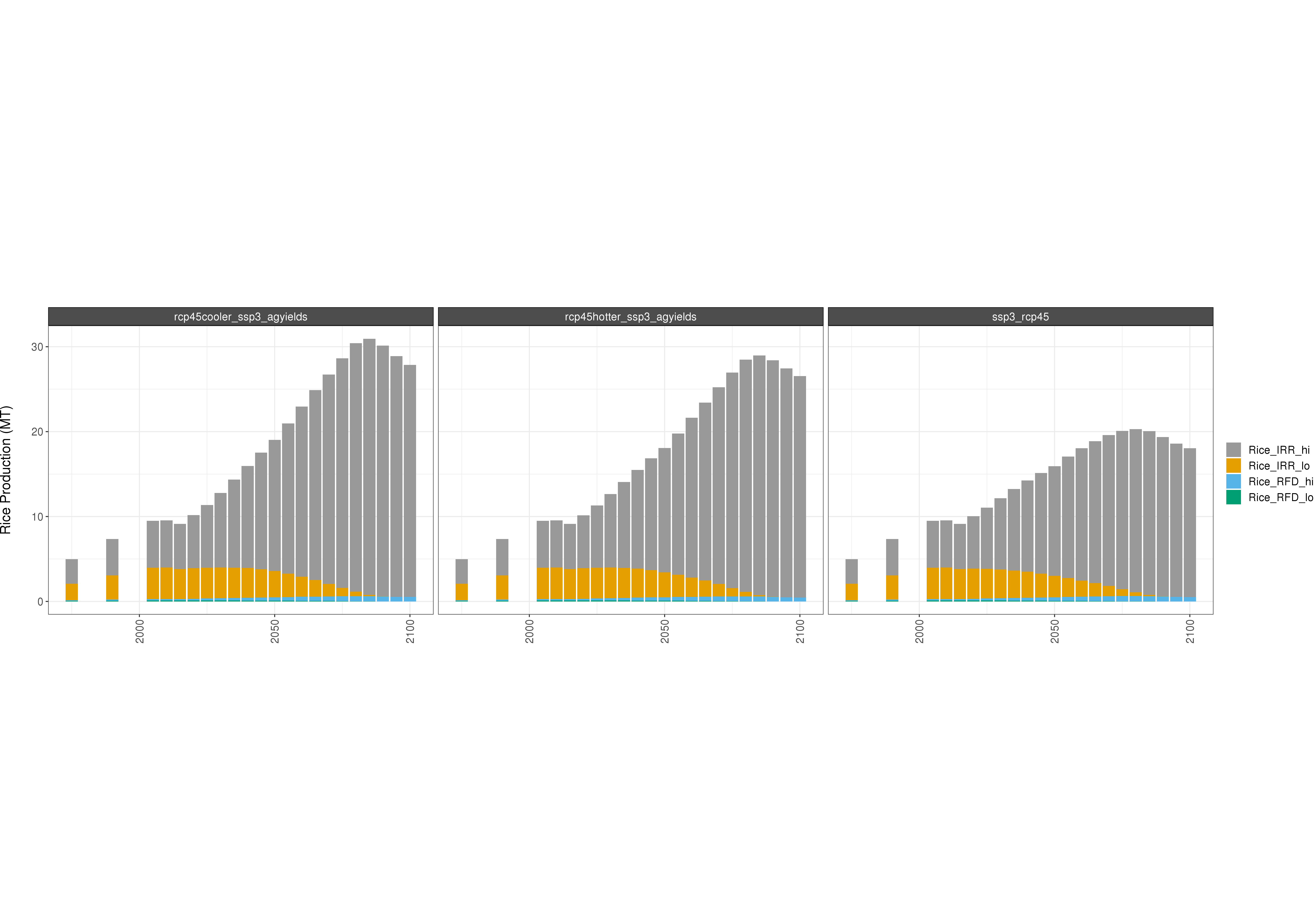
Absolute GCAM AGLU outputs
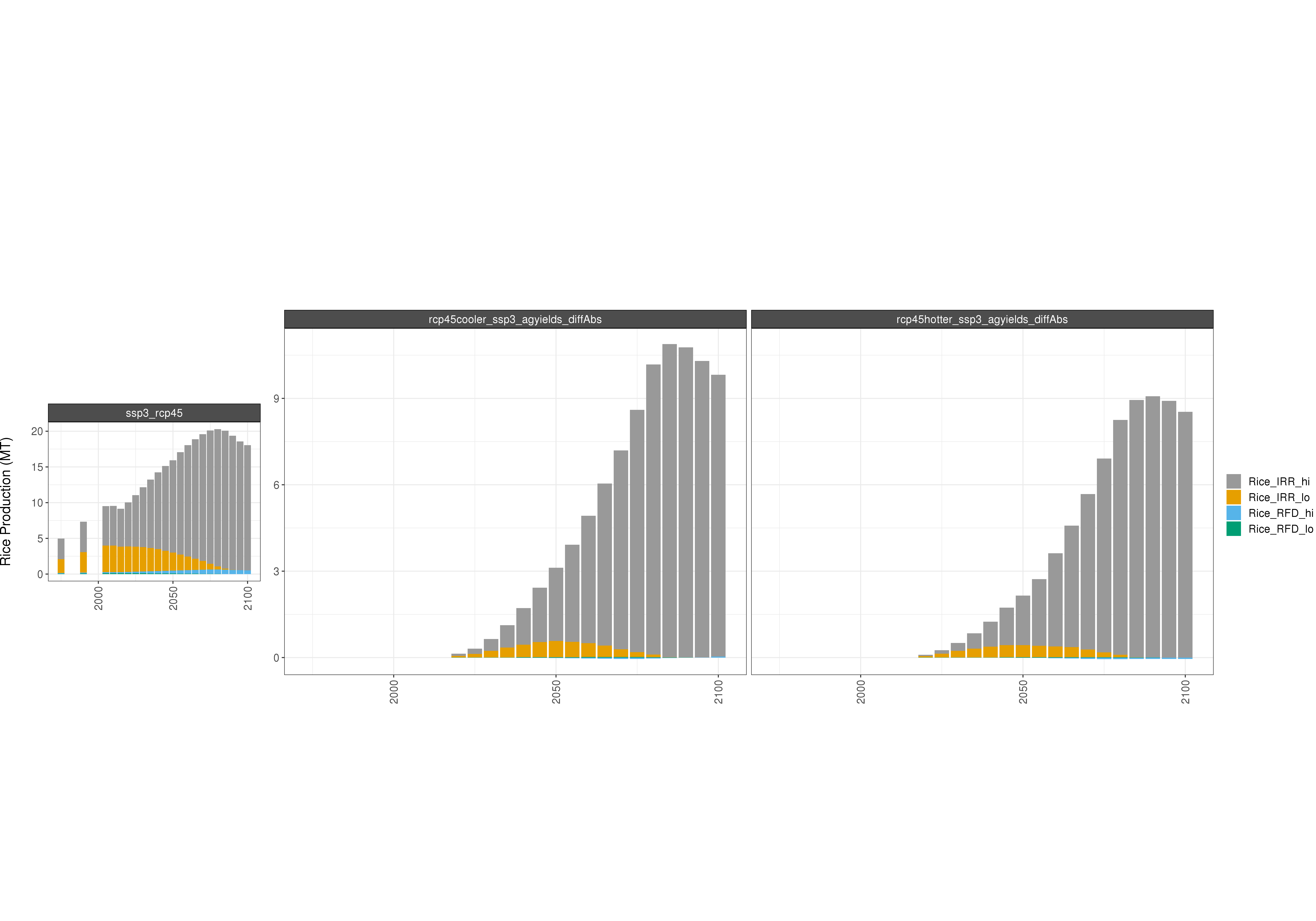
Comparison of GCAM AGLU outputs - absolute difference
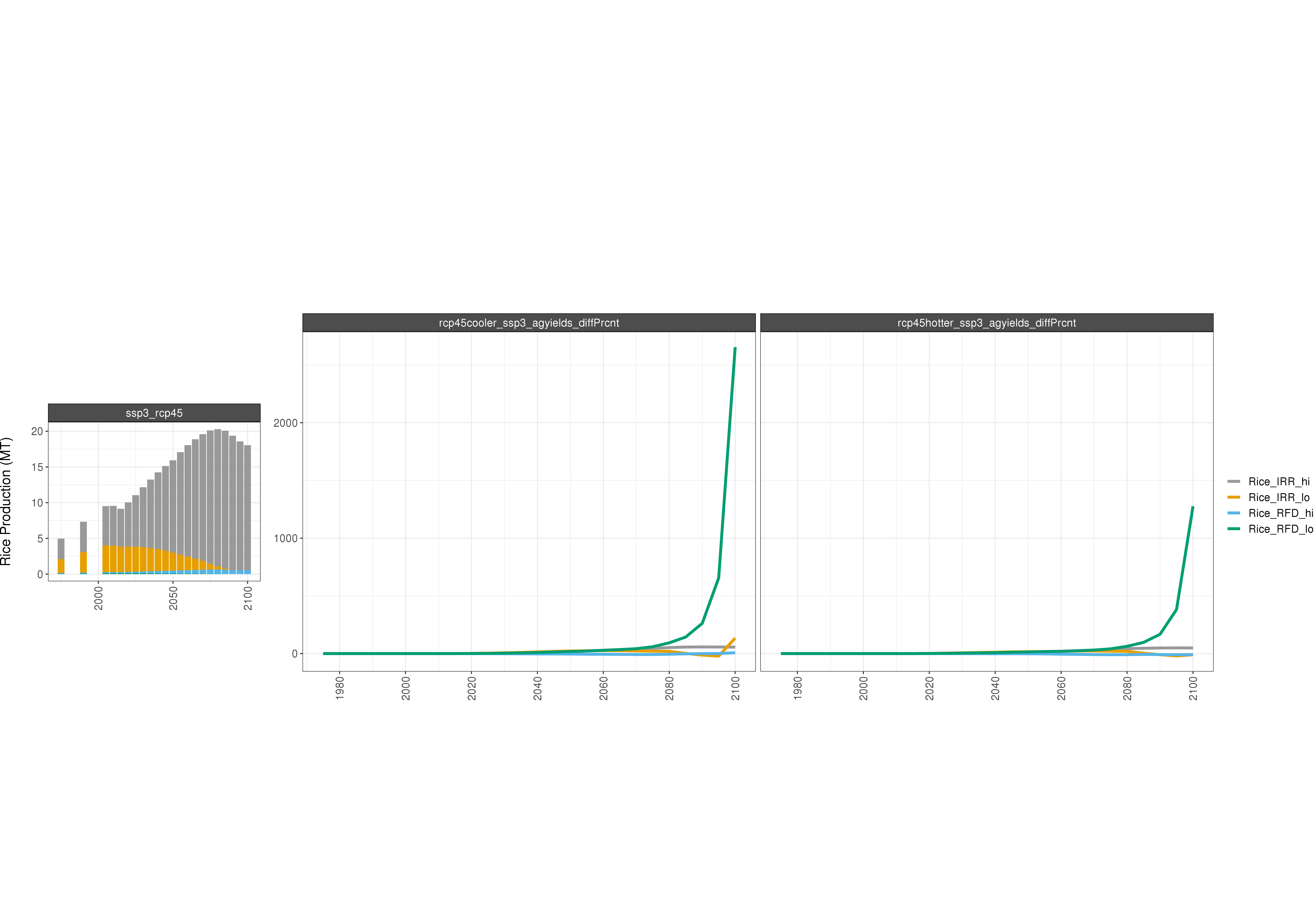
Comparison of GCAM AGLU outputs - percent difference
RCP8.5
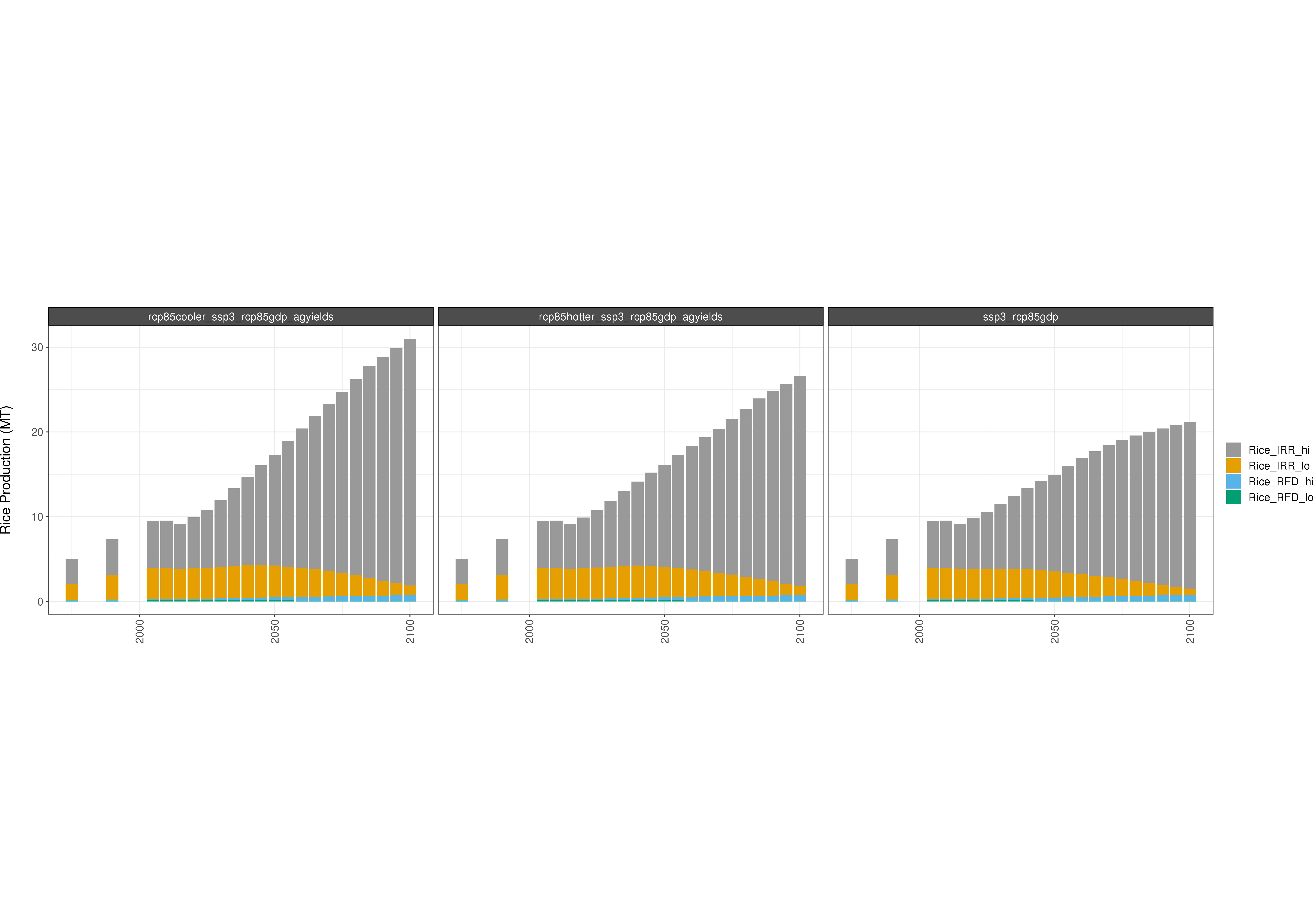
Absolute GCAM AGLU outputs
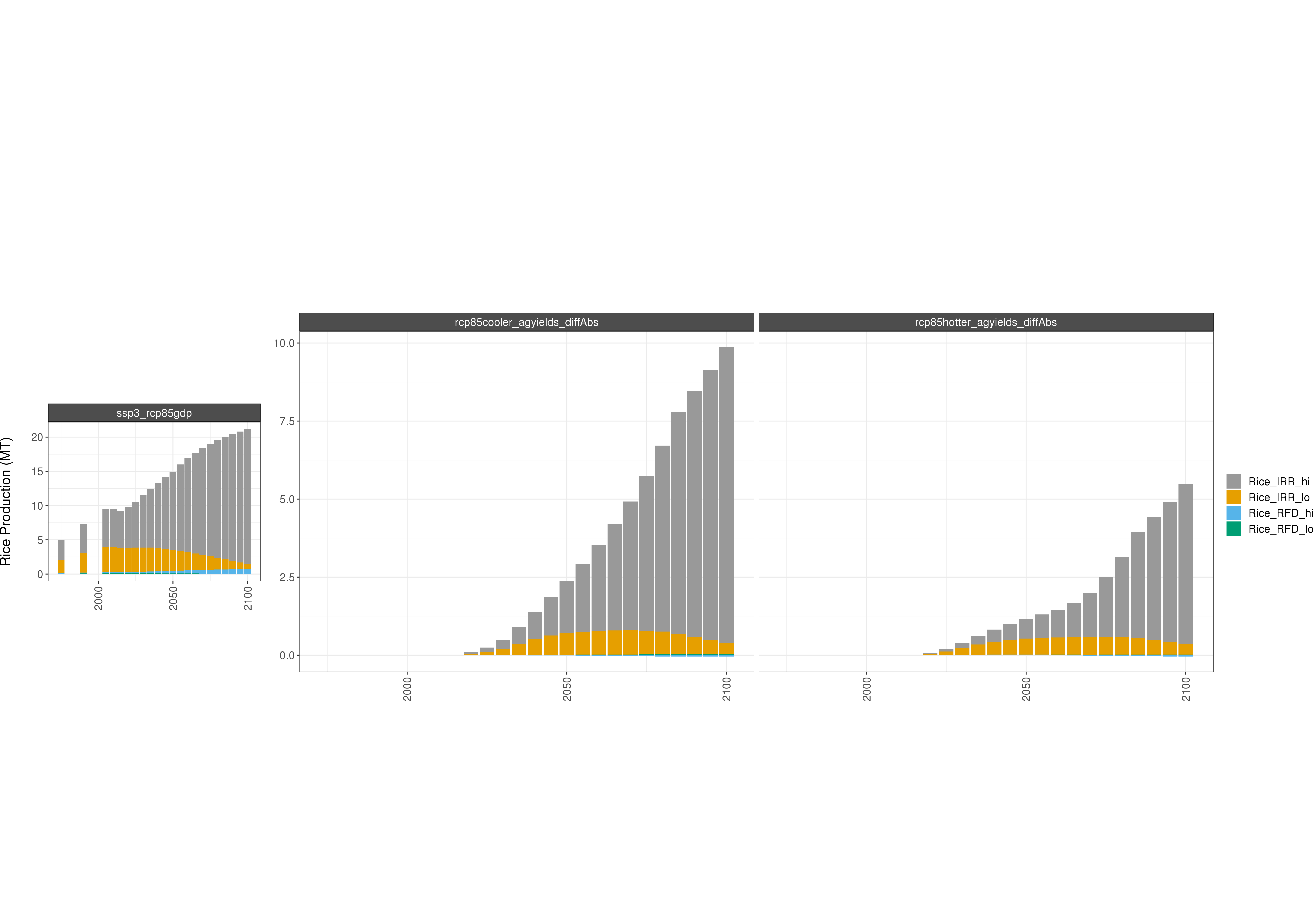
Comparison of GCAM AGLU outputs - absolute difference
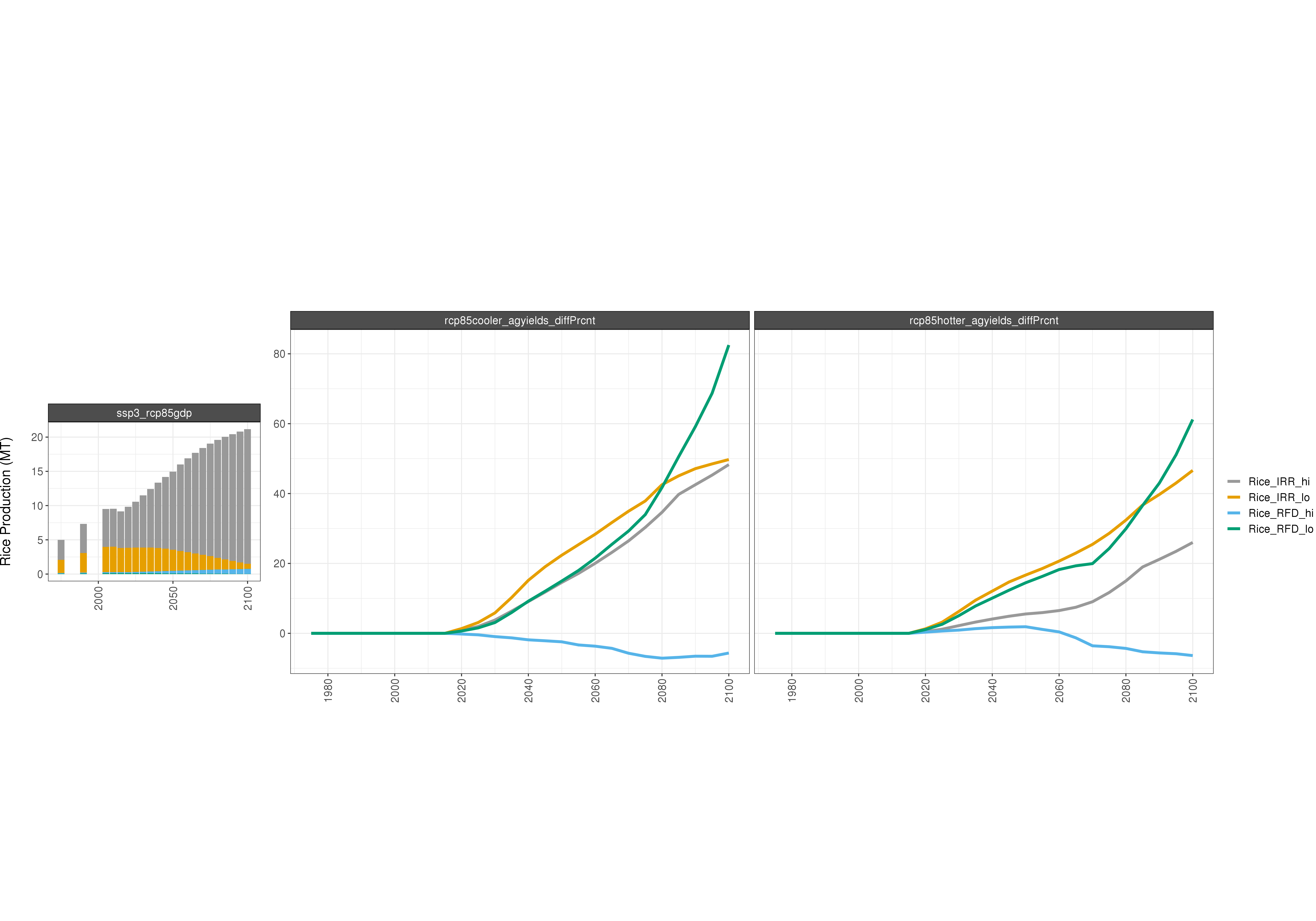
Comparison of GCAM AGLU outputs - percent difference
Wheat
RCP4.5

Absolute GCAM AGLU outputs
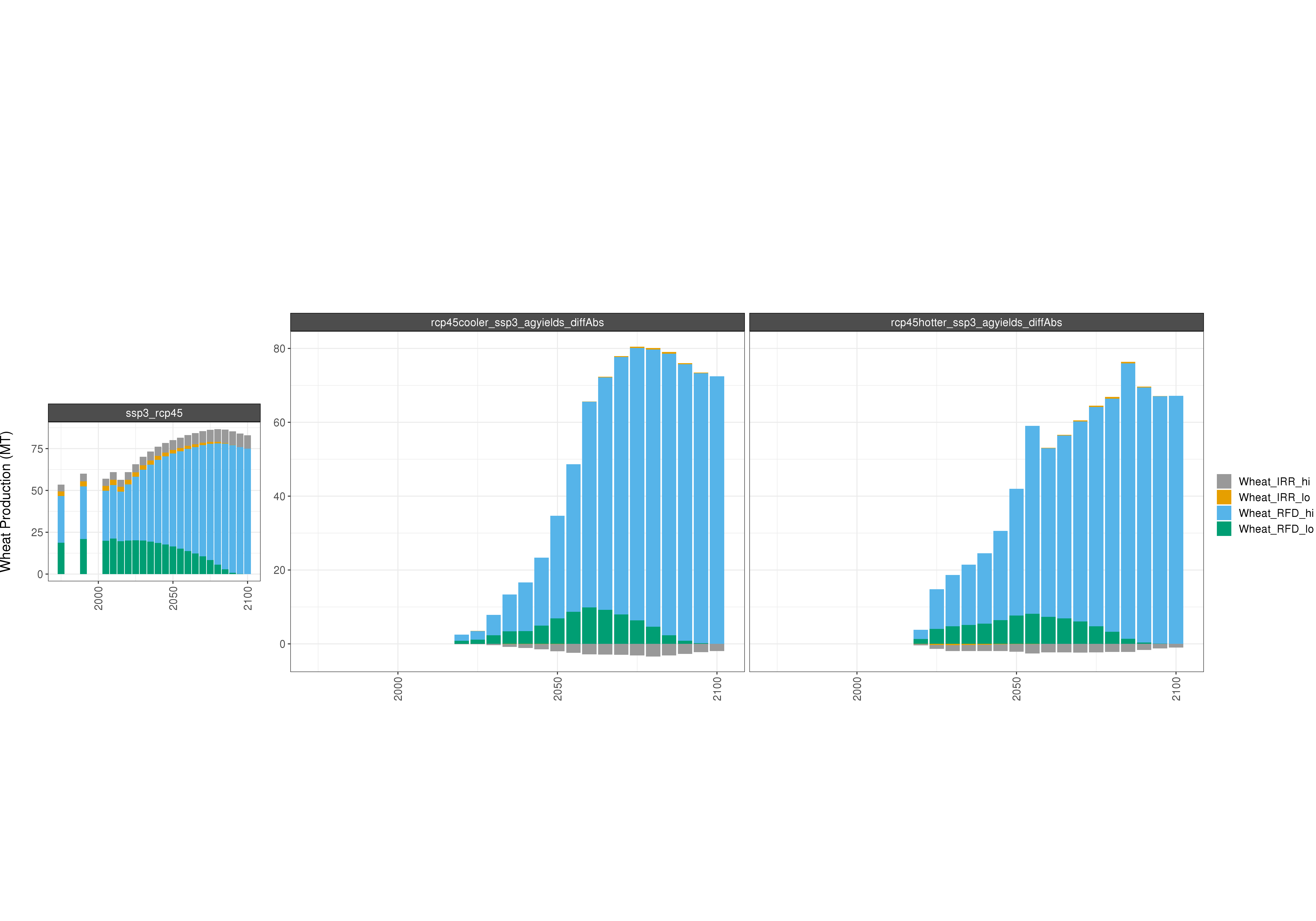
Comparison of GCAM AGLU outputs - absolute difference
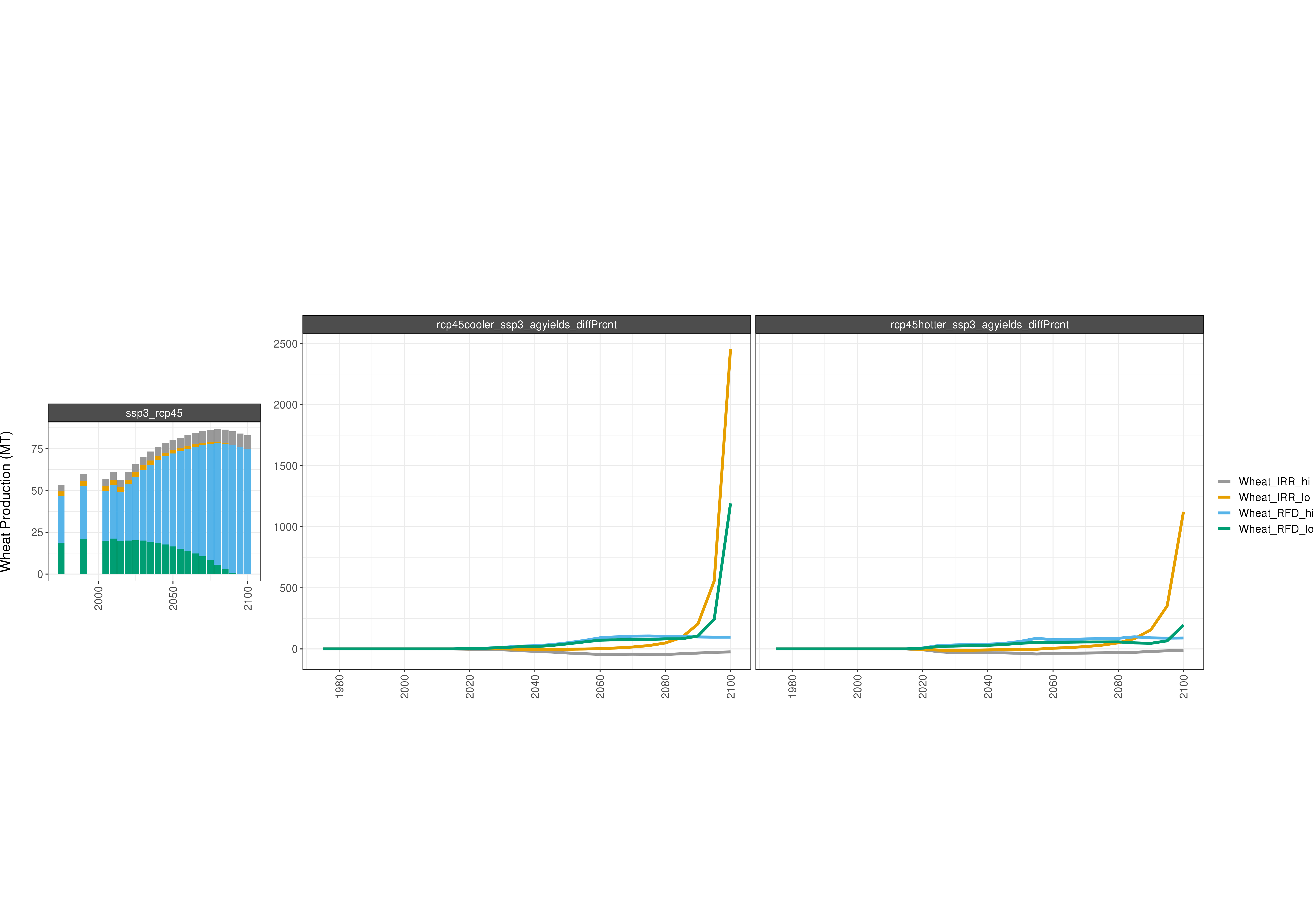
Comparison of GCAM AGLU outputs - percent difference
RCP8.5
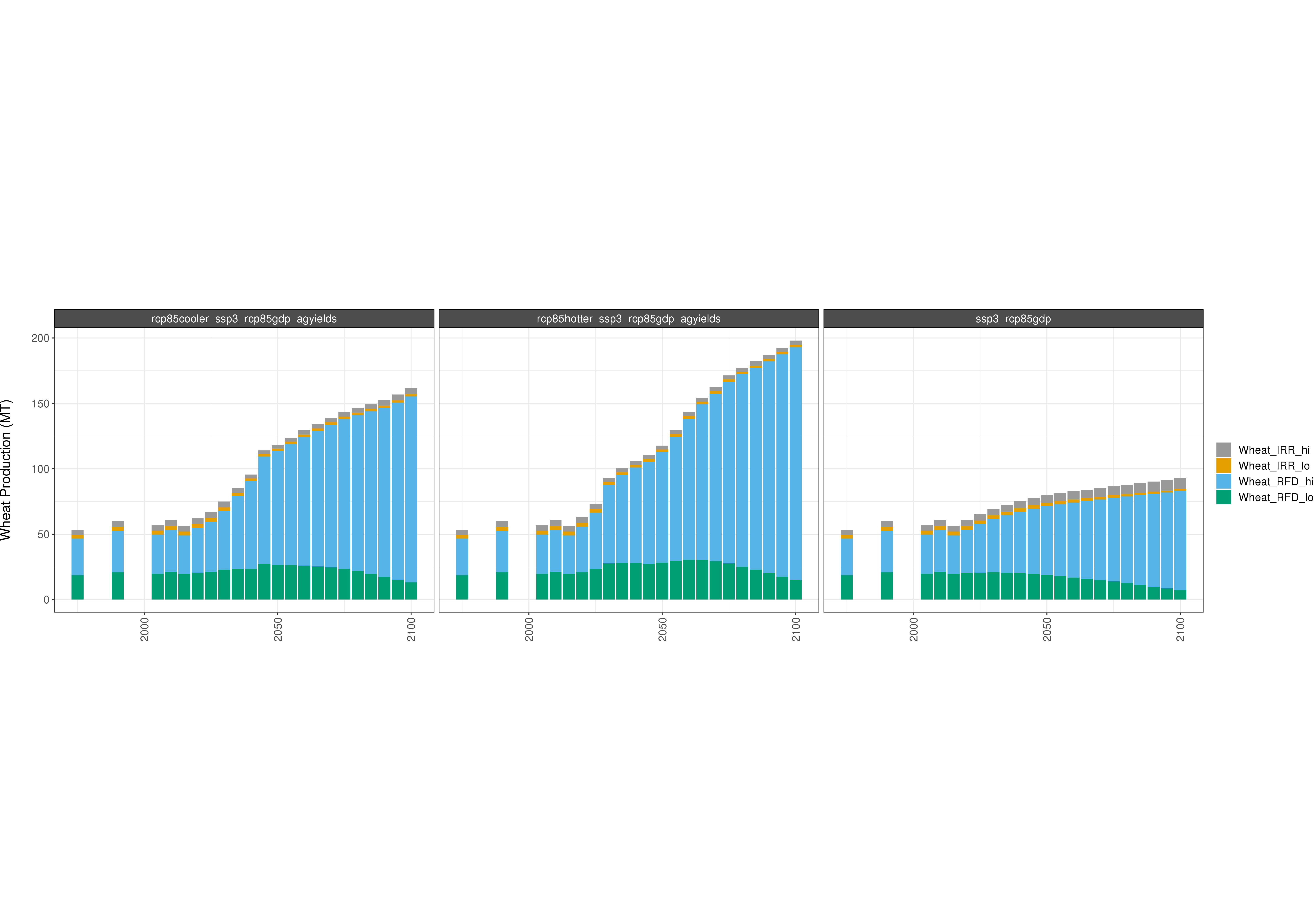
Absolute GCAM AGLU outputs
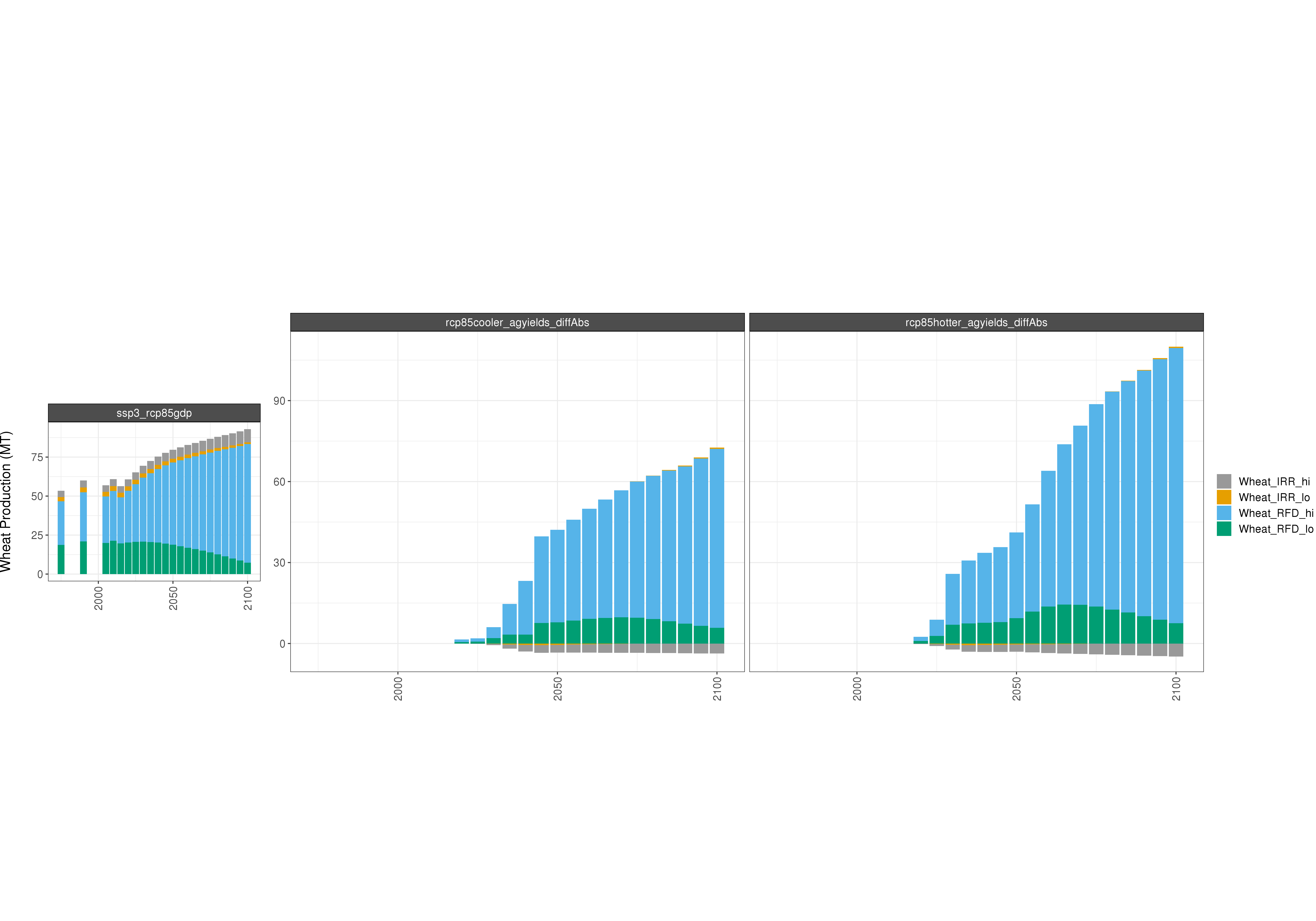
Comparison of GCAM AGLU outputs - absolute difference
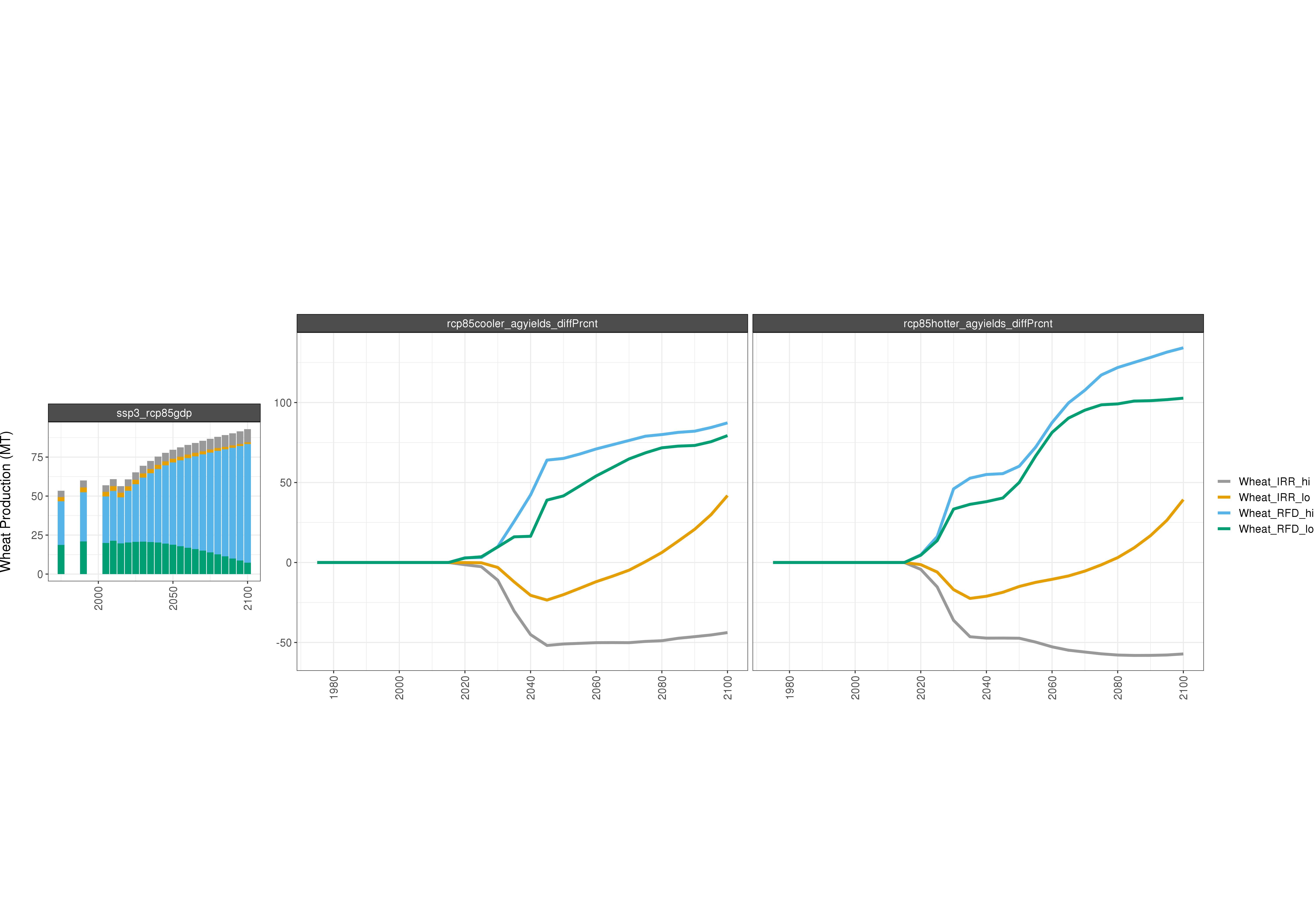
Comparison of GCAM AGLU outputs - percent difference
Emissions
RCP4.5
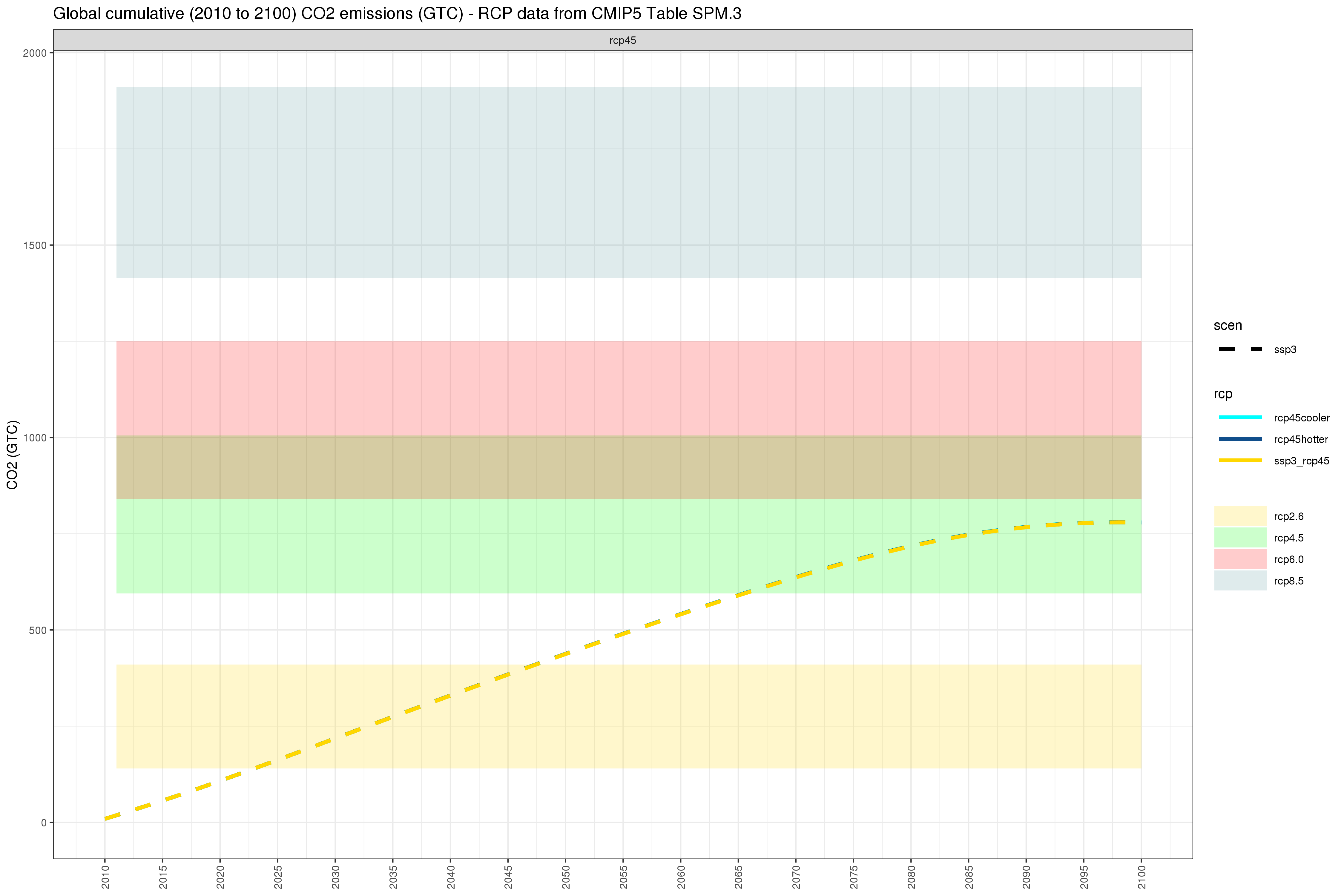
Cumulative global carbon emission pathways under different combinations of SSP3/SSP5 and RCP4.5/RCP8.5
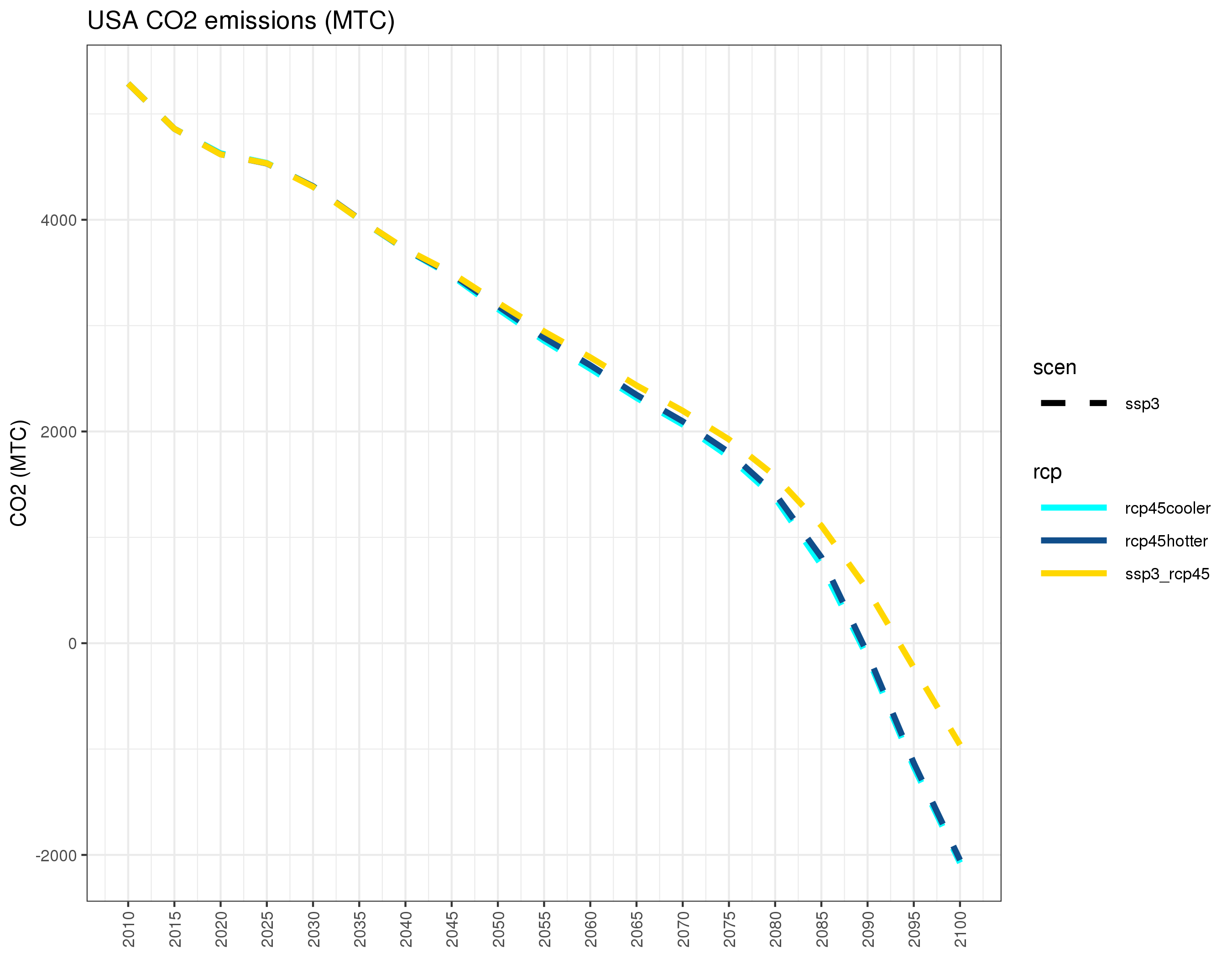
Annual US carbon emissions under different combinations of SSP3/SSP5 and RCP4.5/RCP8.5
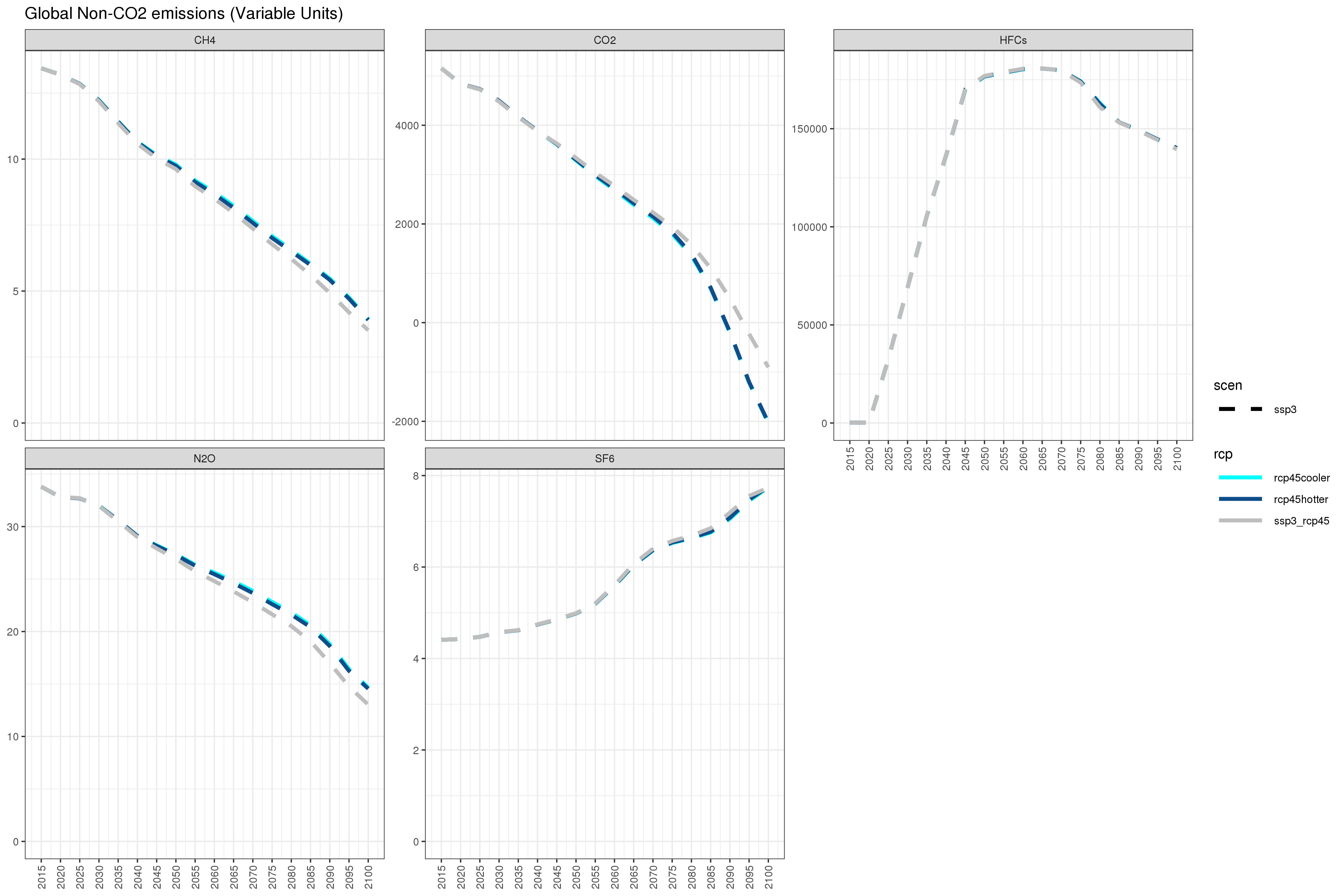
Annual global non-CO2 emissions under different combinations of SSP3/SSP5 and RCP4.5/RCP8.5
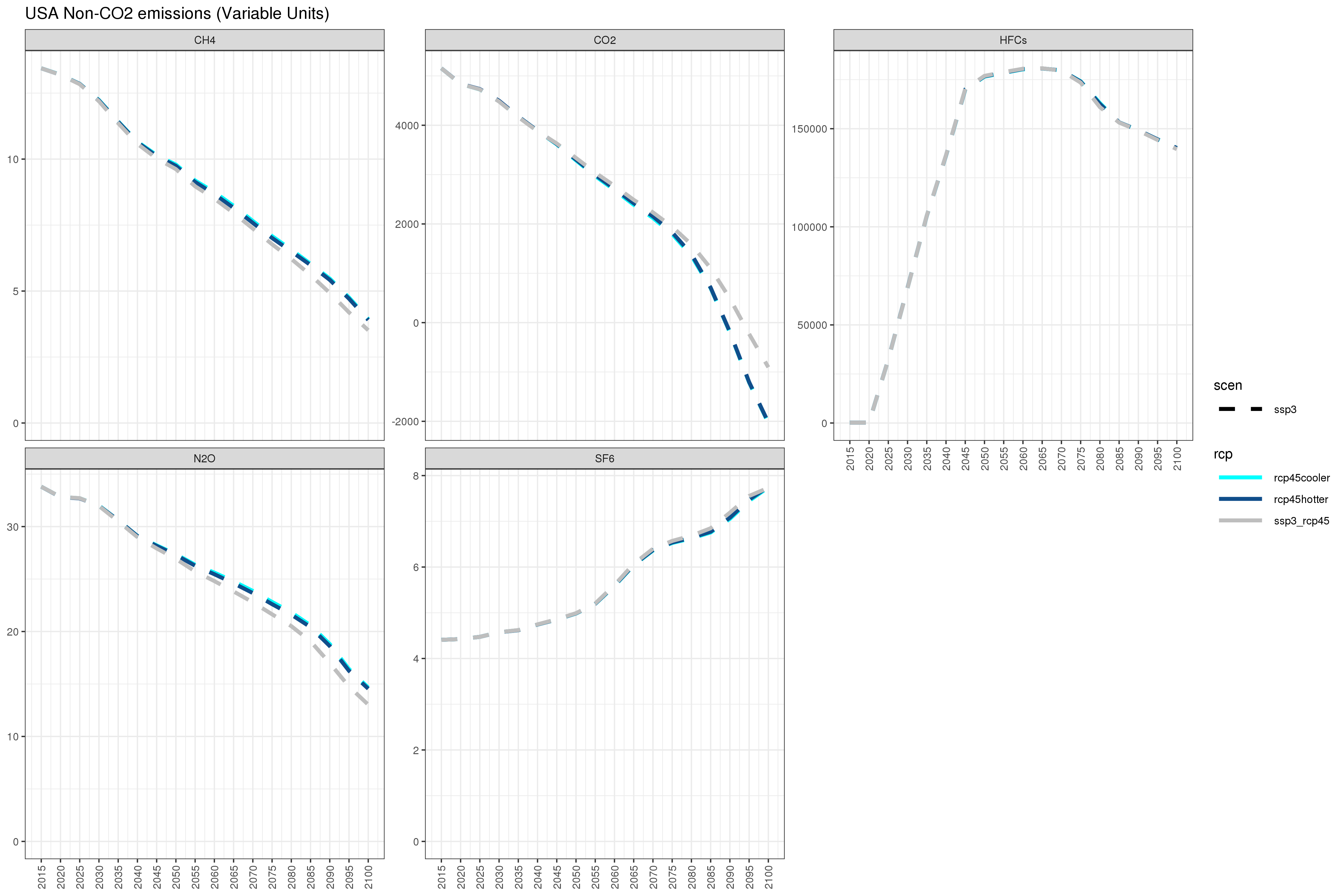
Annual US non-CO2 emissions under different combinations of SSP3/SSP5 and RCP4.5/RCP8.5
RCP8.5
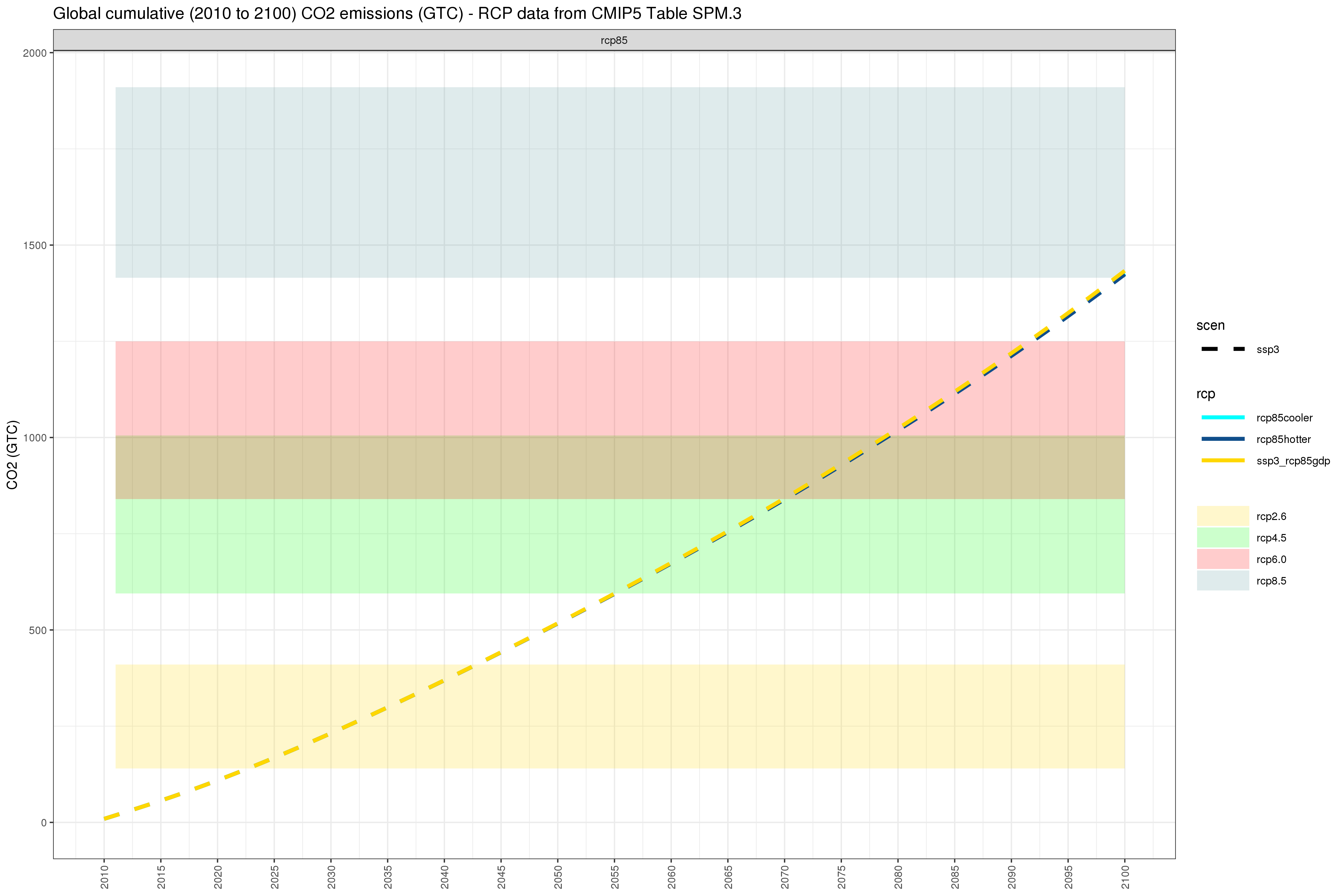
Cumulative global carbon emission pathways under different combinations of SSP3/SSP5 and RCP4.5/RCP8.5
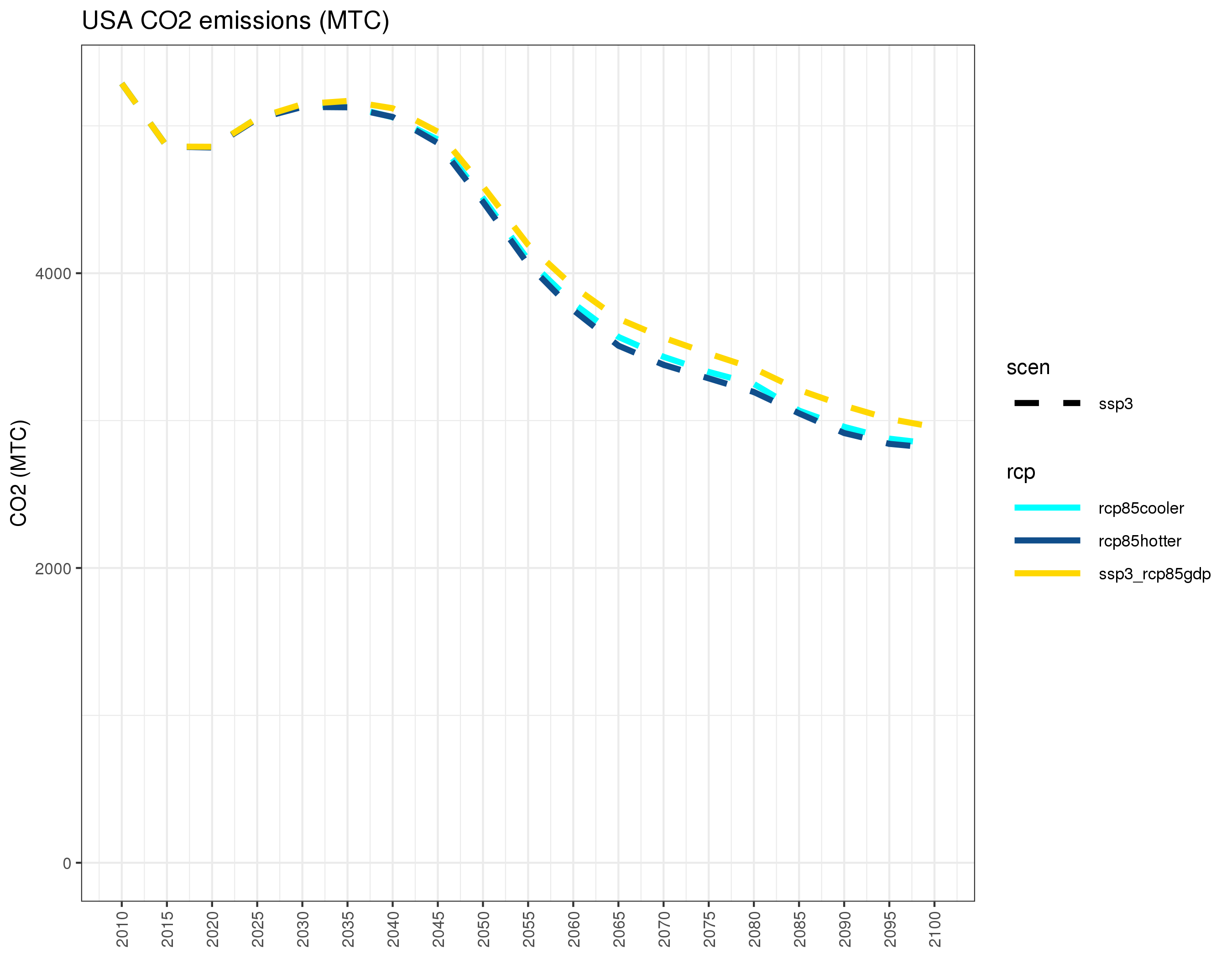
Annual US carbon emissions under different combinations of SSP3/SSP5 and RCP4.5/RCP8.5
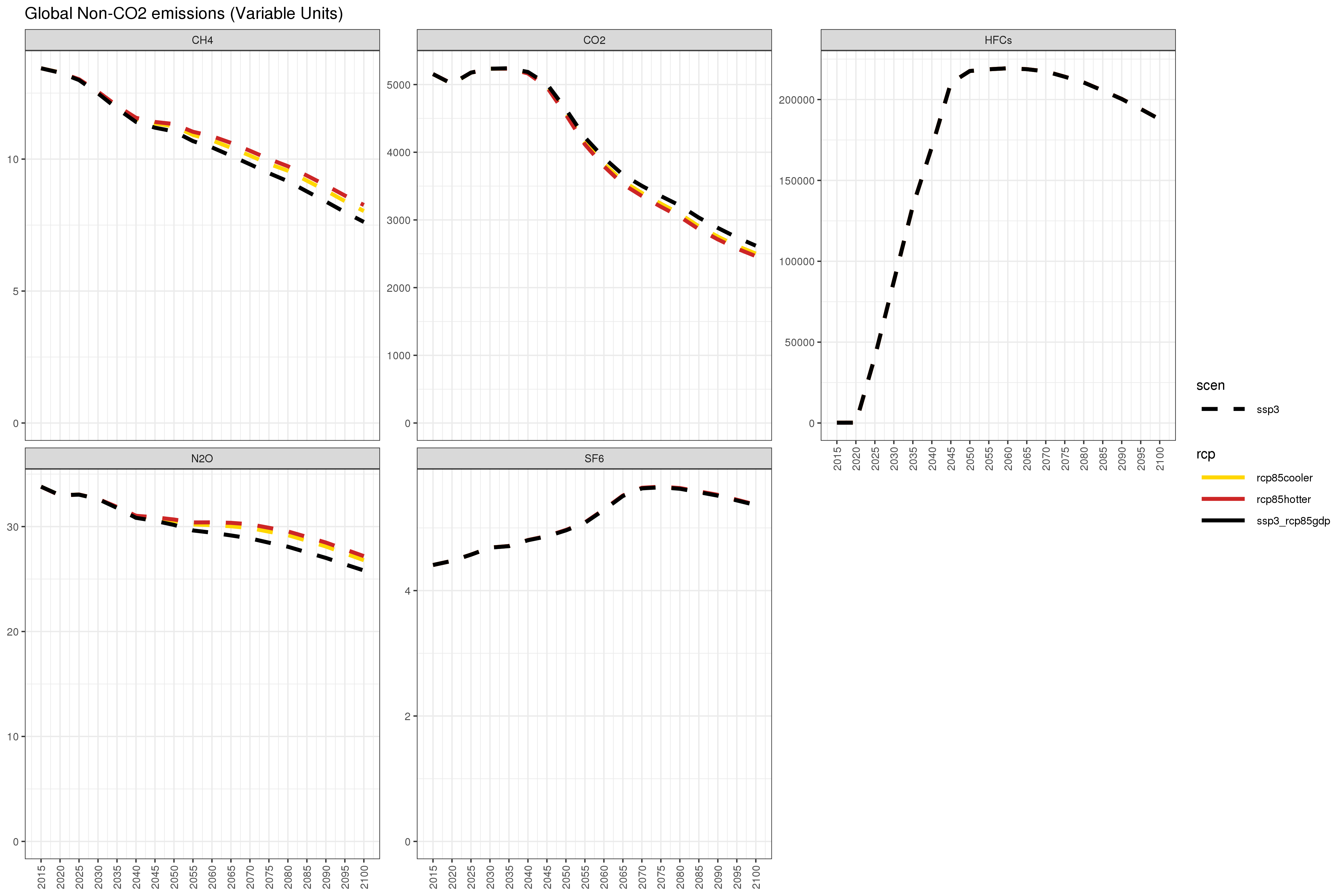
Annual global non-CO2 emissions under different combinations of SSP3/SSP5 and RCP4.5/RCP8.5
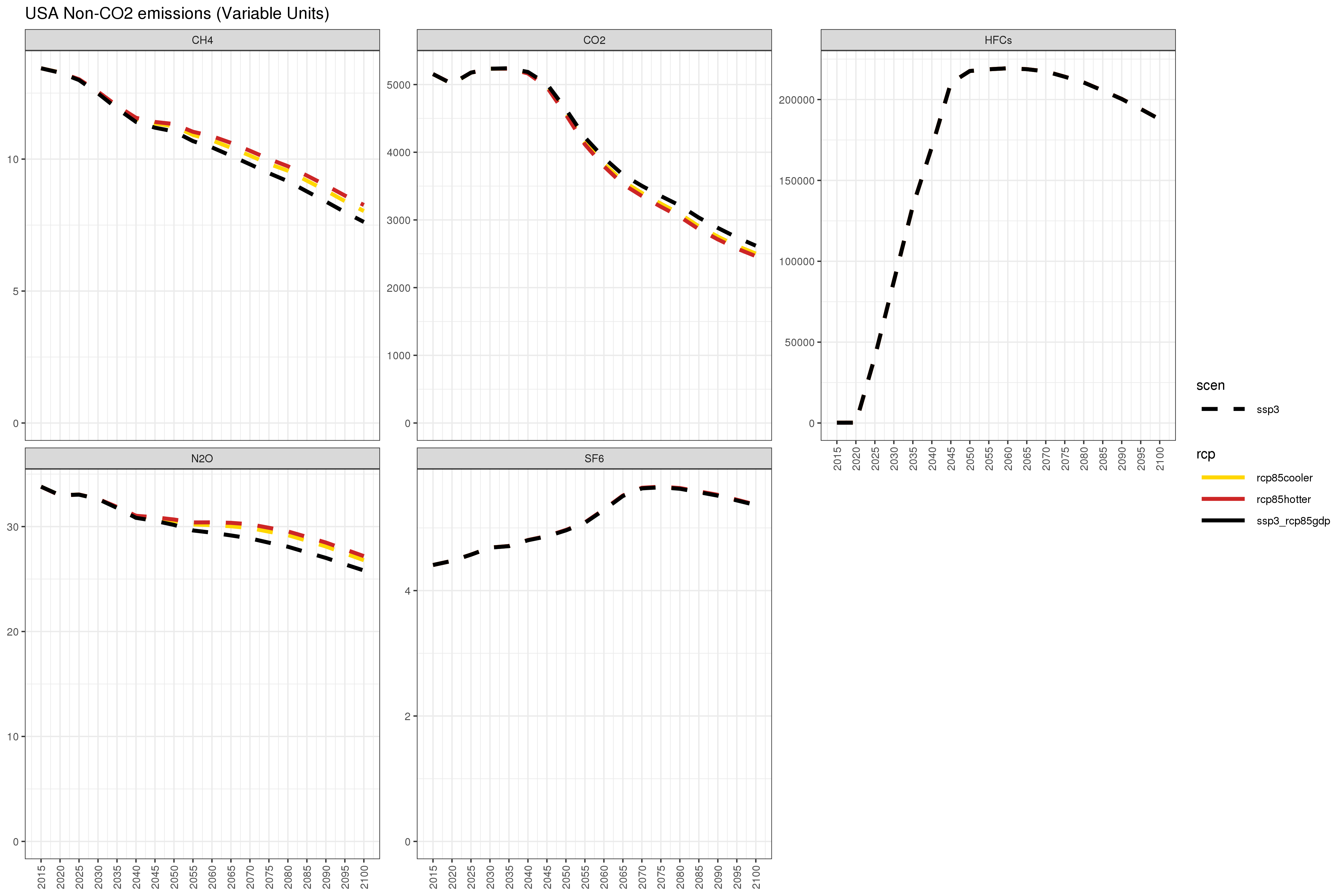
Annual US non-CO2 emissions under different combinations of SSP3/SSP5 and RCP4.5/RCP8.5
GCAM SSP5
Summary
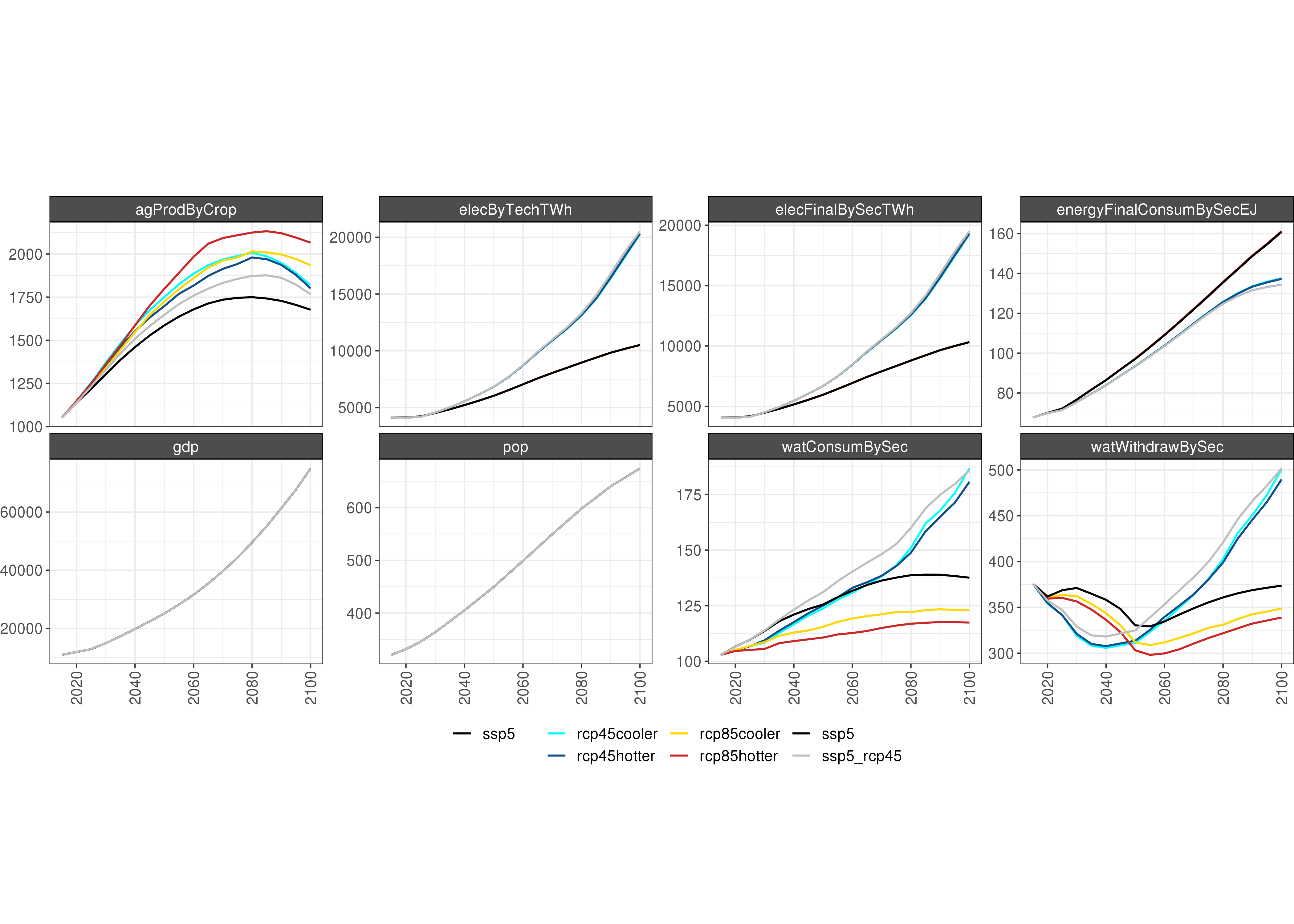
Comparison of GCAM global agyield outputs
Socioeconomics
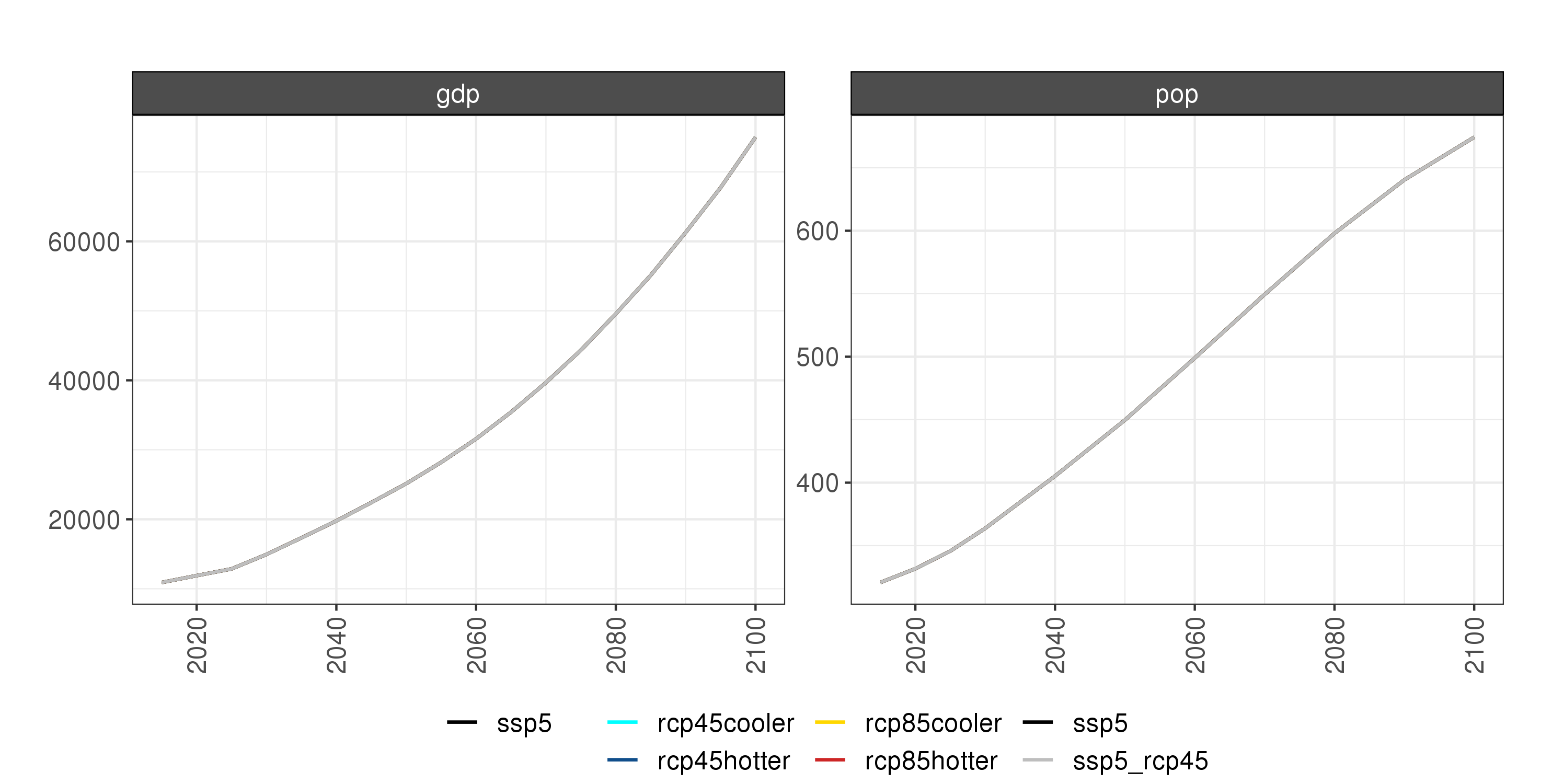
Comparison of GCAM socioeconomic outputs
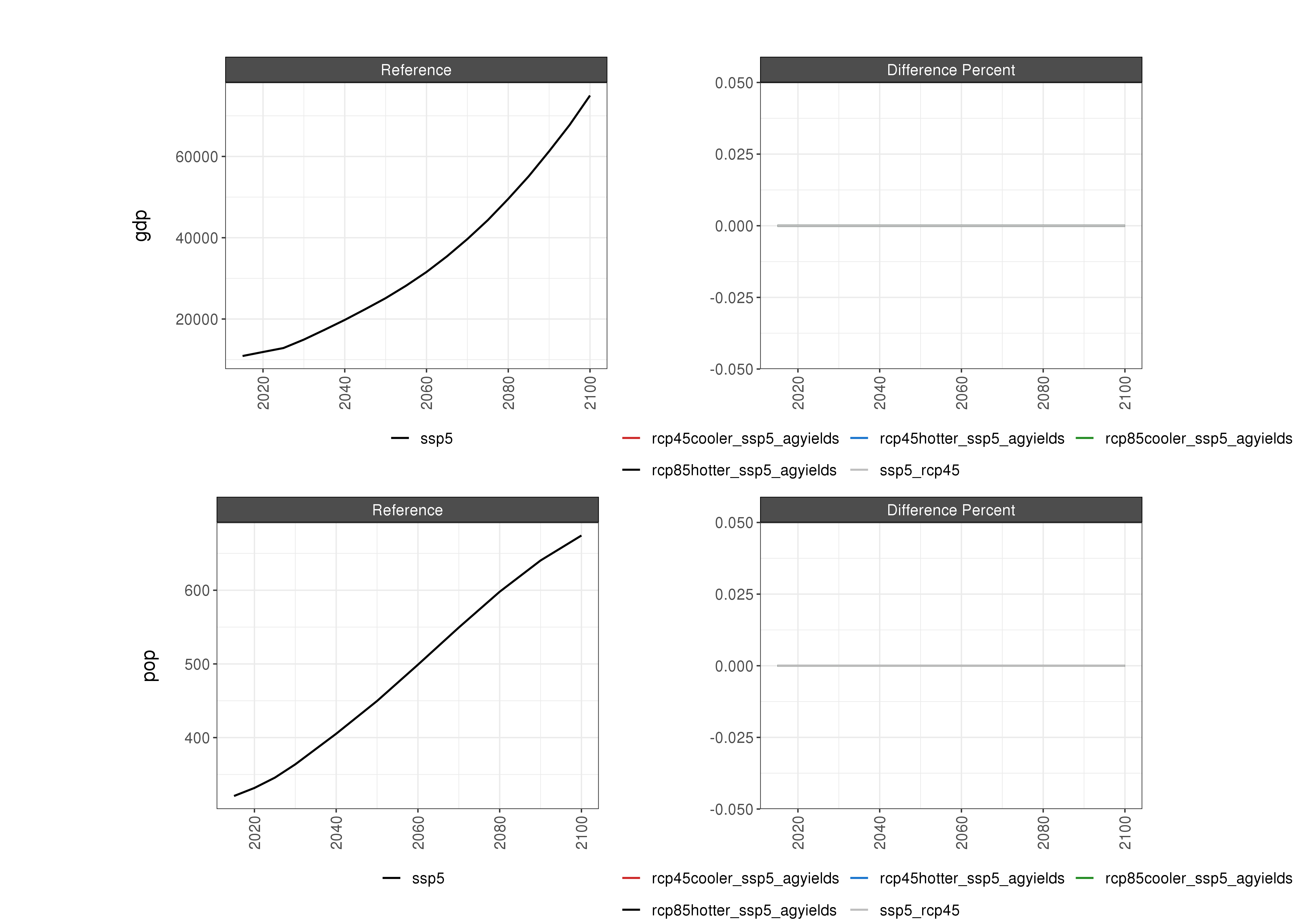
Comparison of GCAM socioeconomic outputs % Diff
Water
RCP4.5
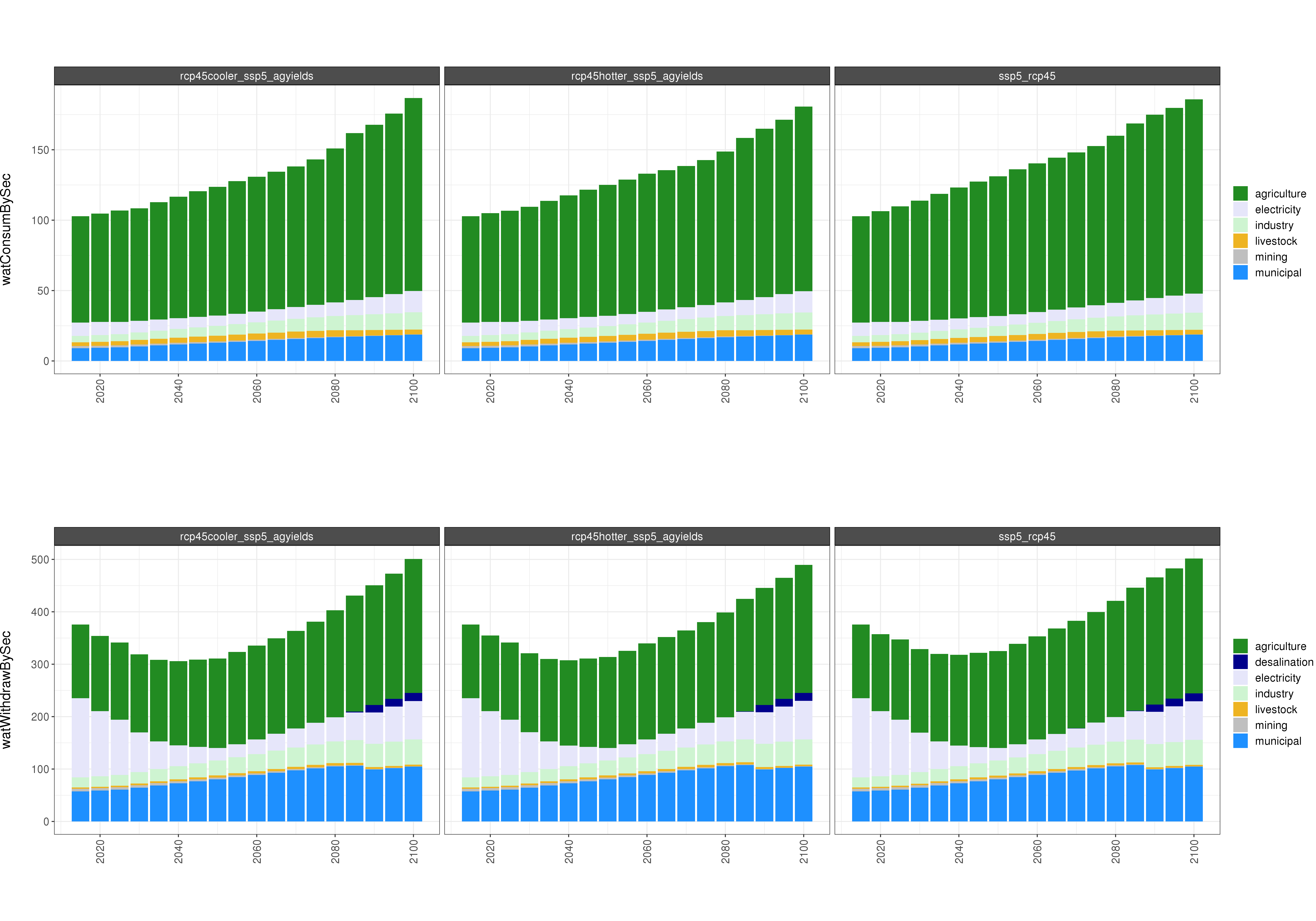
Absolute GCAM water outputs
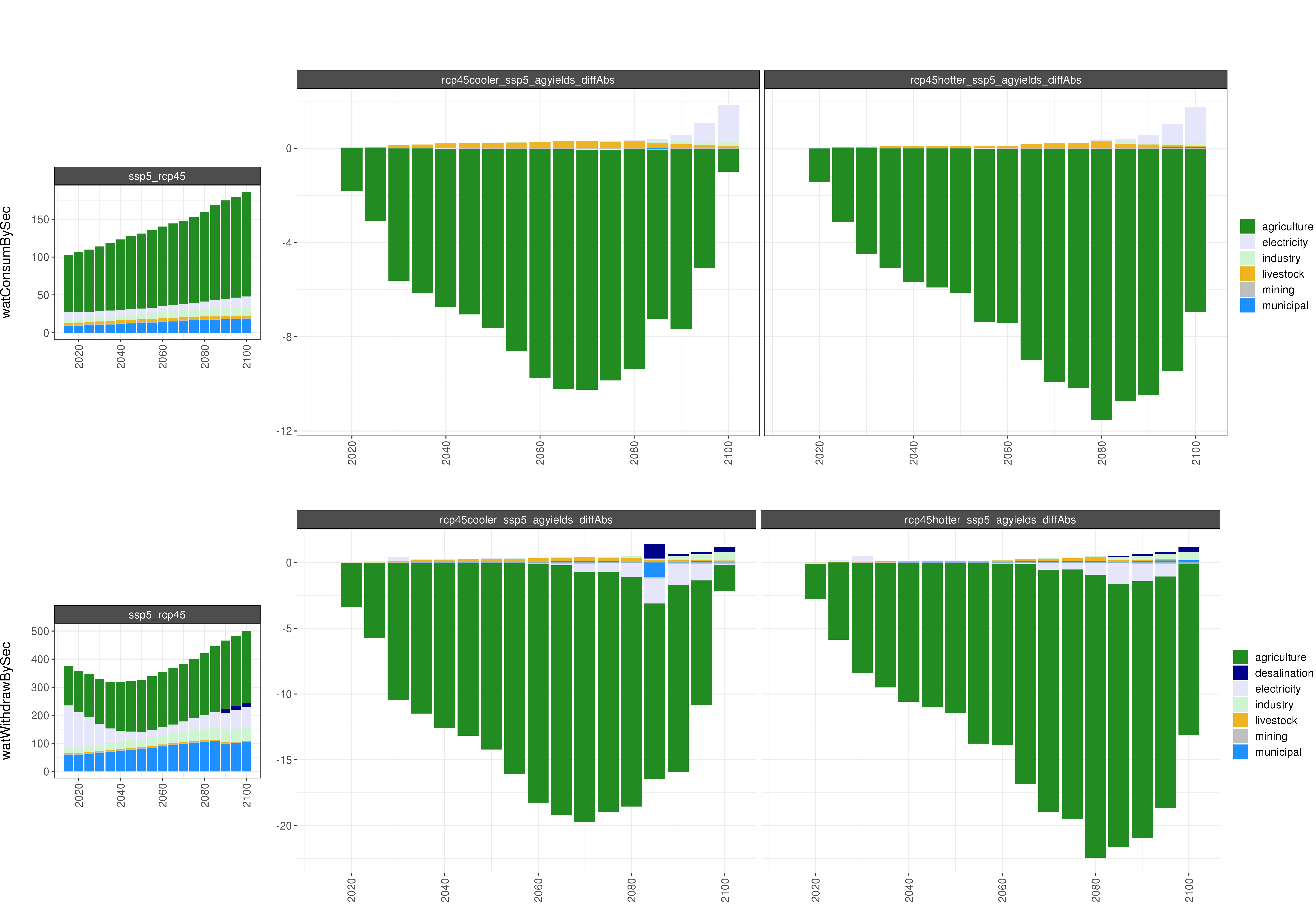
Comparison of GCAM water outputs
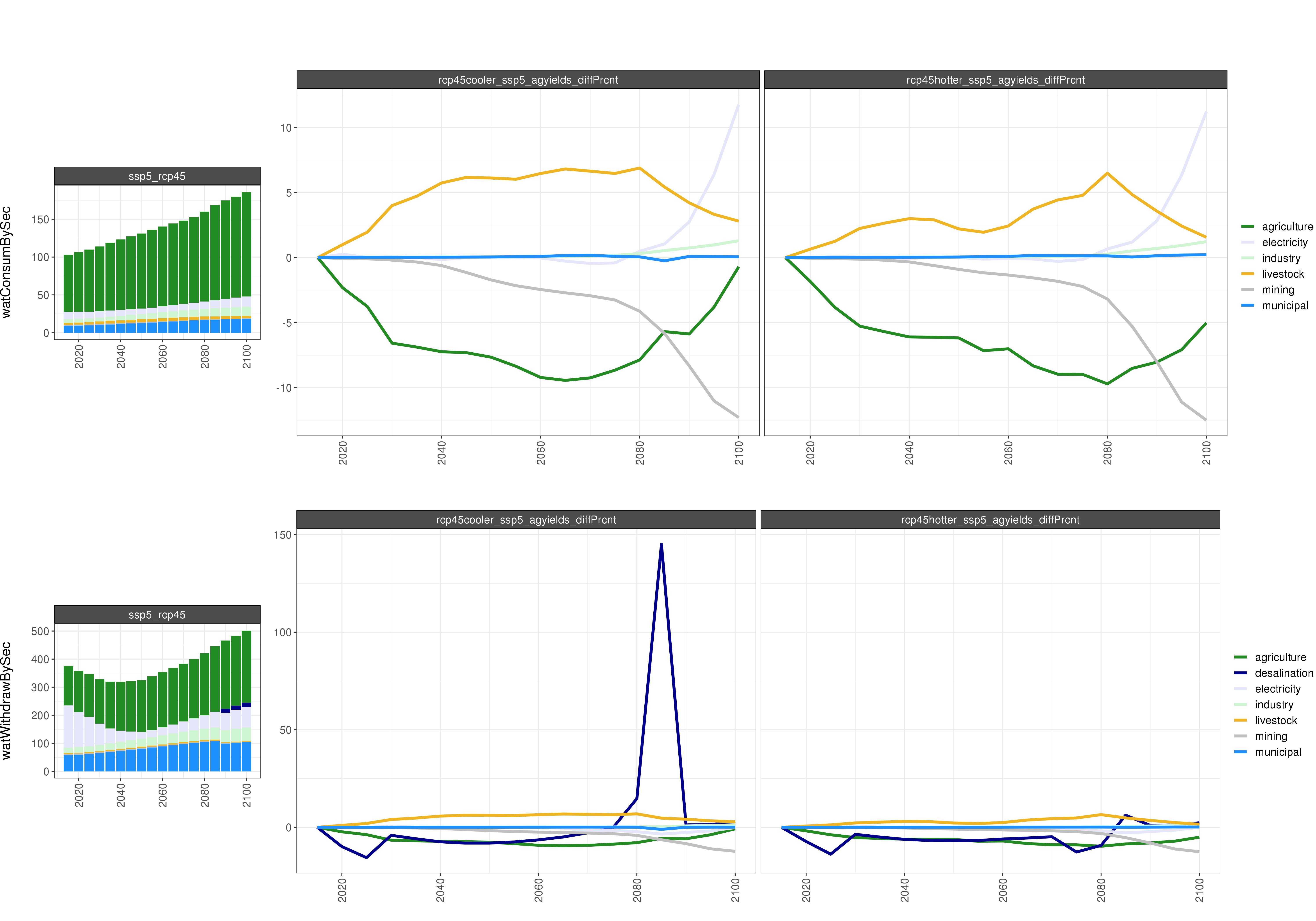
Comparison of GCAM water outputs % Diff
RCP8.5
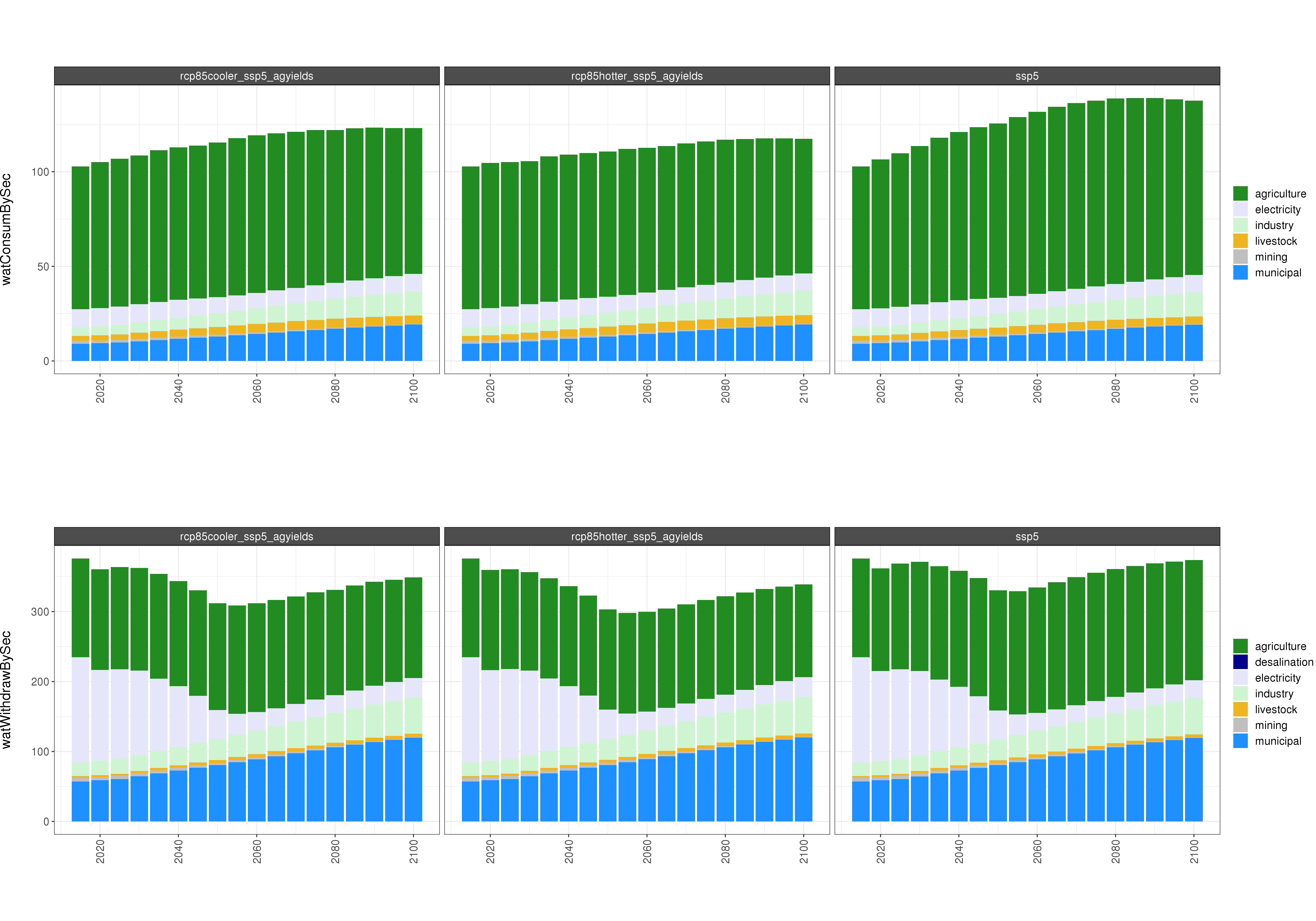
Absolute GCAM water outputs
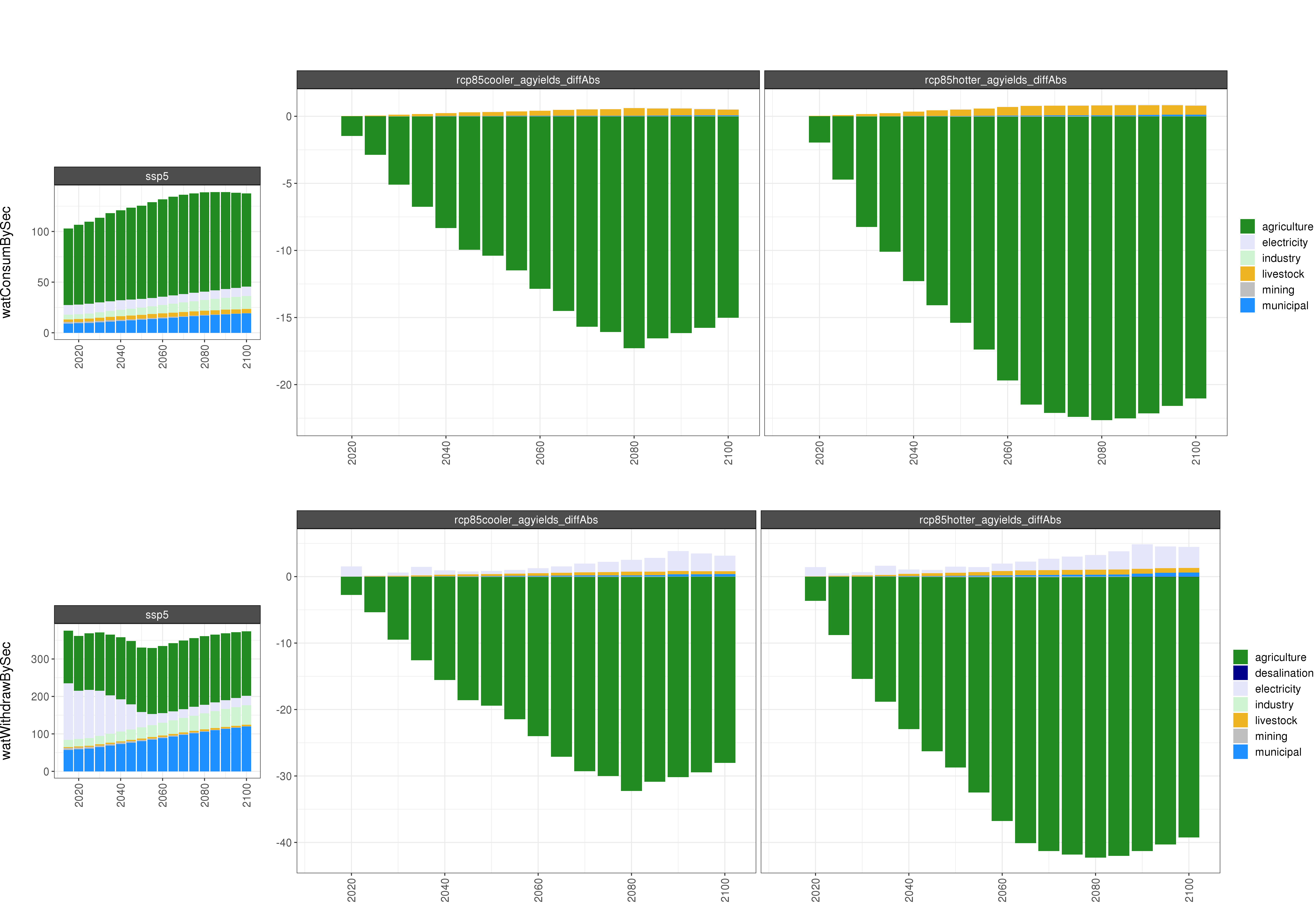
Comparison of GCAM water outputs
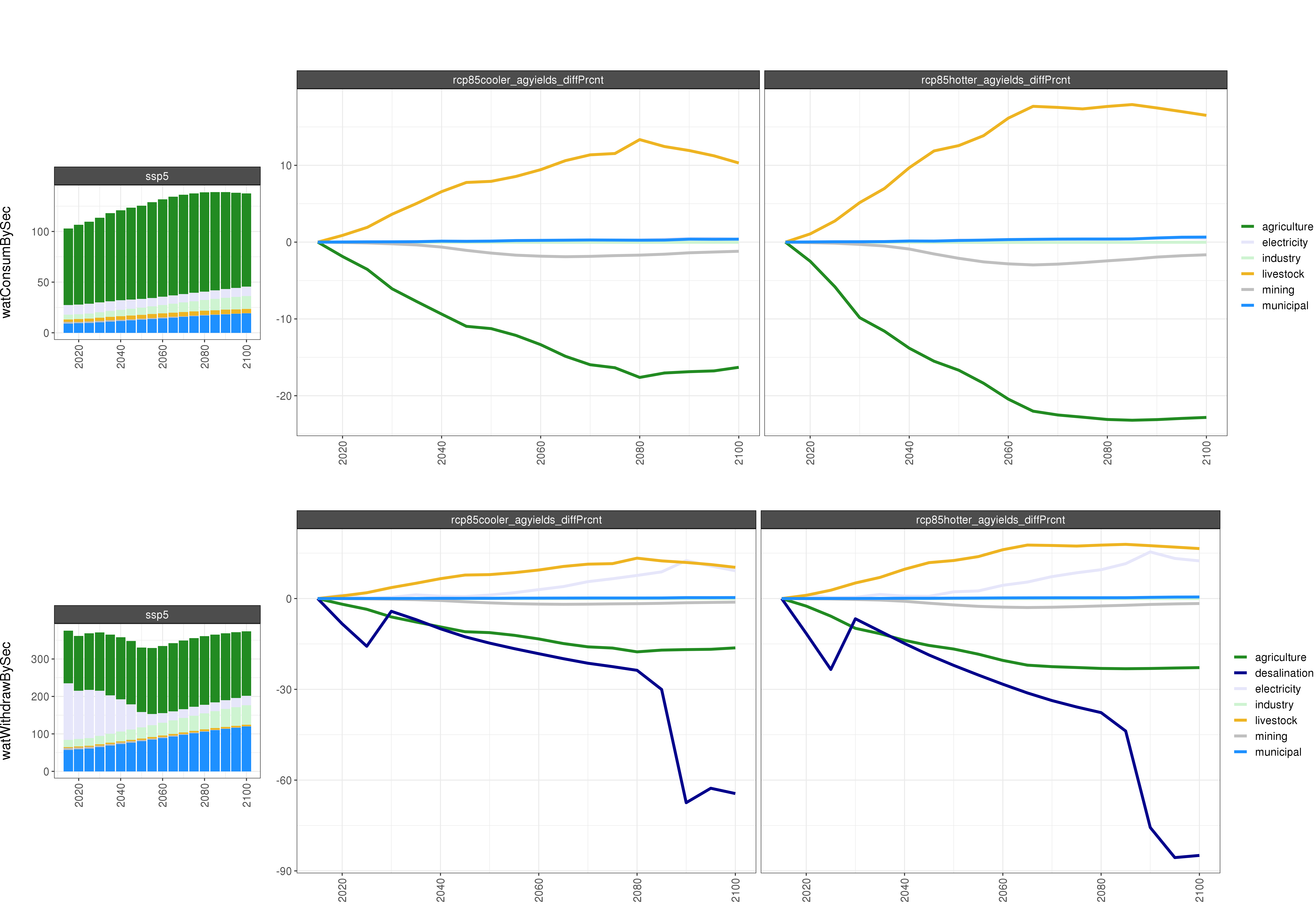
Comparison of GCAM water outputs % Diff
Energy
RCP4.5
Energy Demand
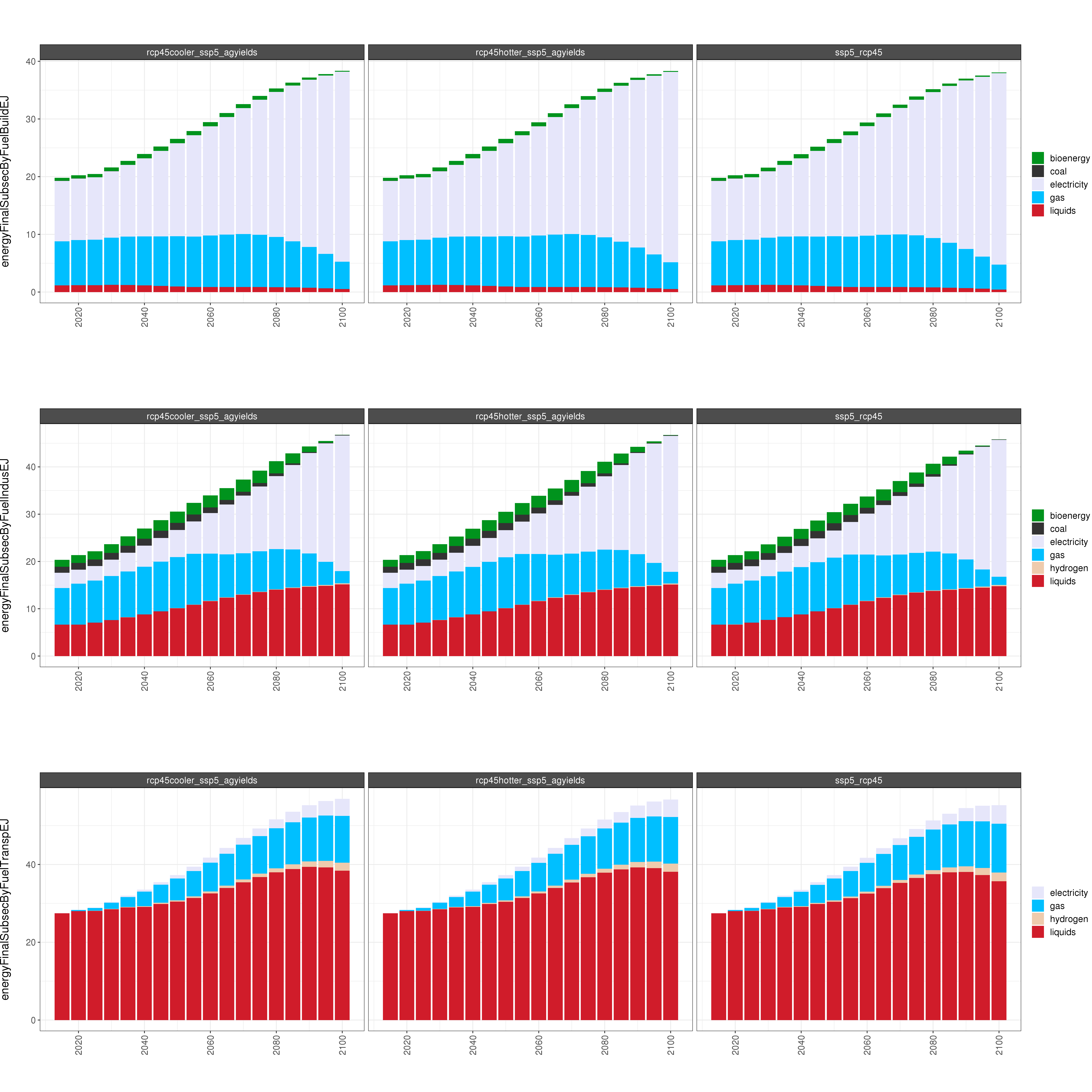
Comparison of GCAM energy outputs for 8 climate and socioeconomic scenarios.
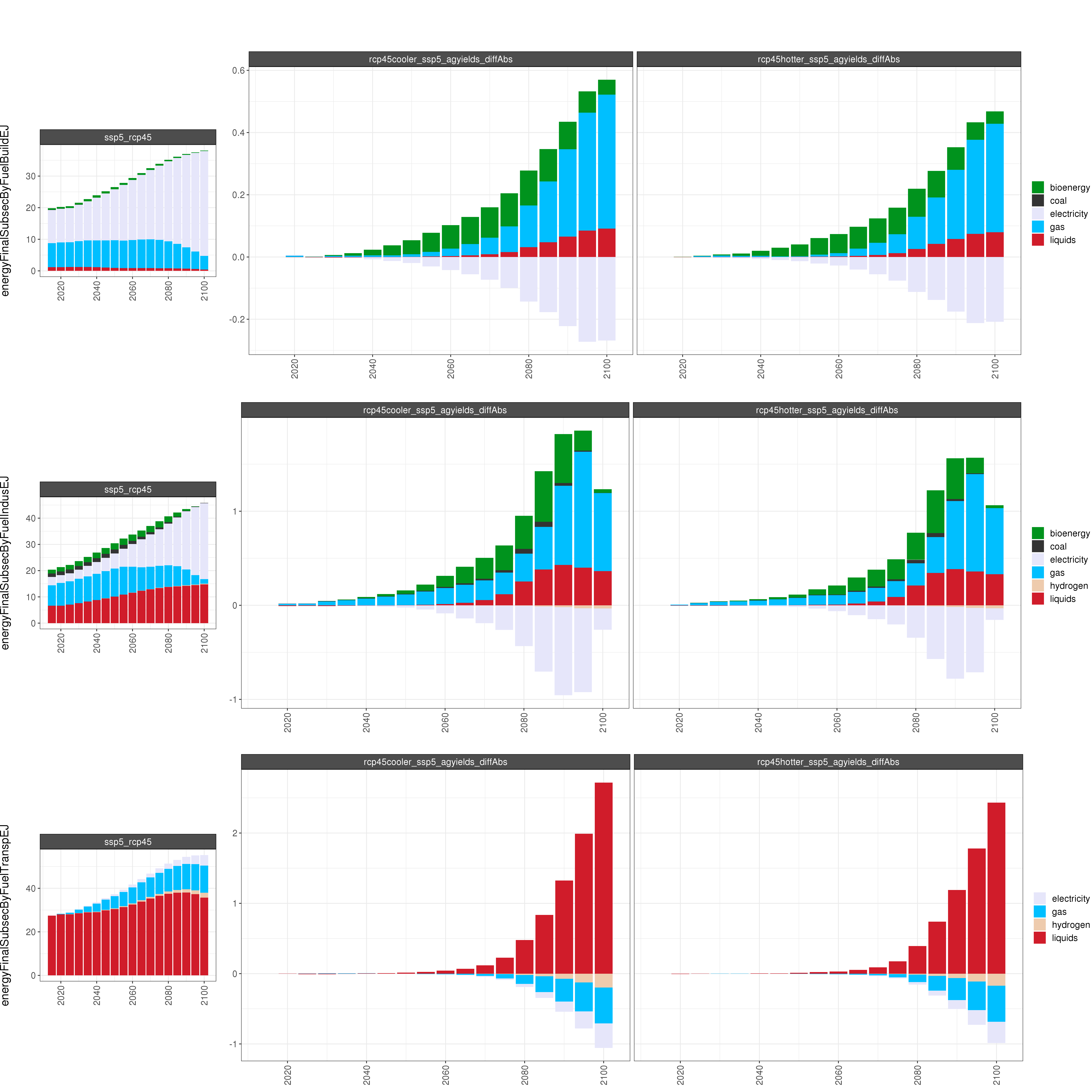
Comparison of GCAM energy outputs for 8 climate and socioeconomic scenarios (absolute difference).
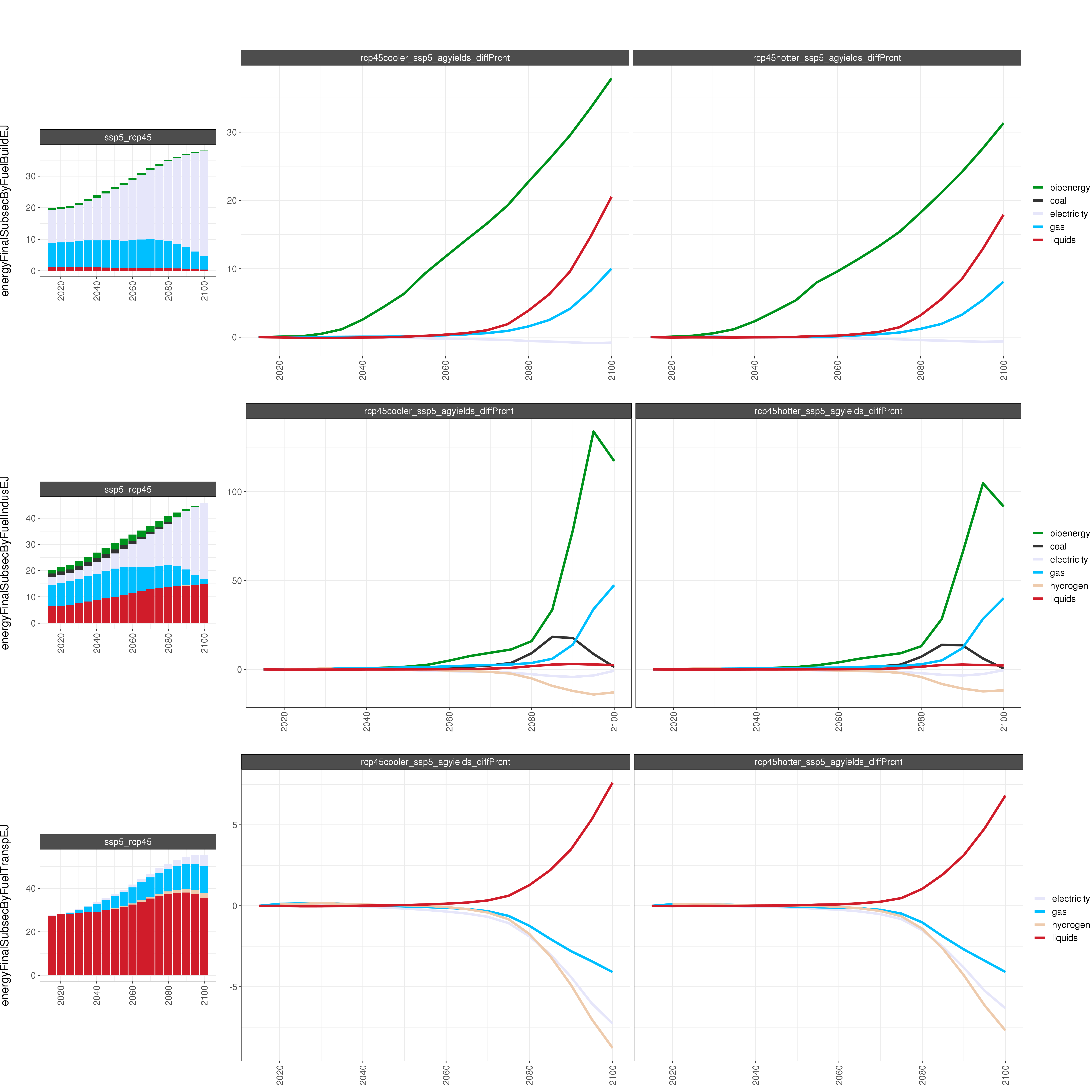
Comparison of GCAM energy outputs for 8 climate and socioeconomic scenarios (percent difference).
Energy Consumption
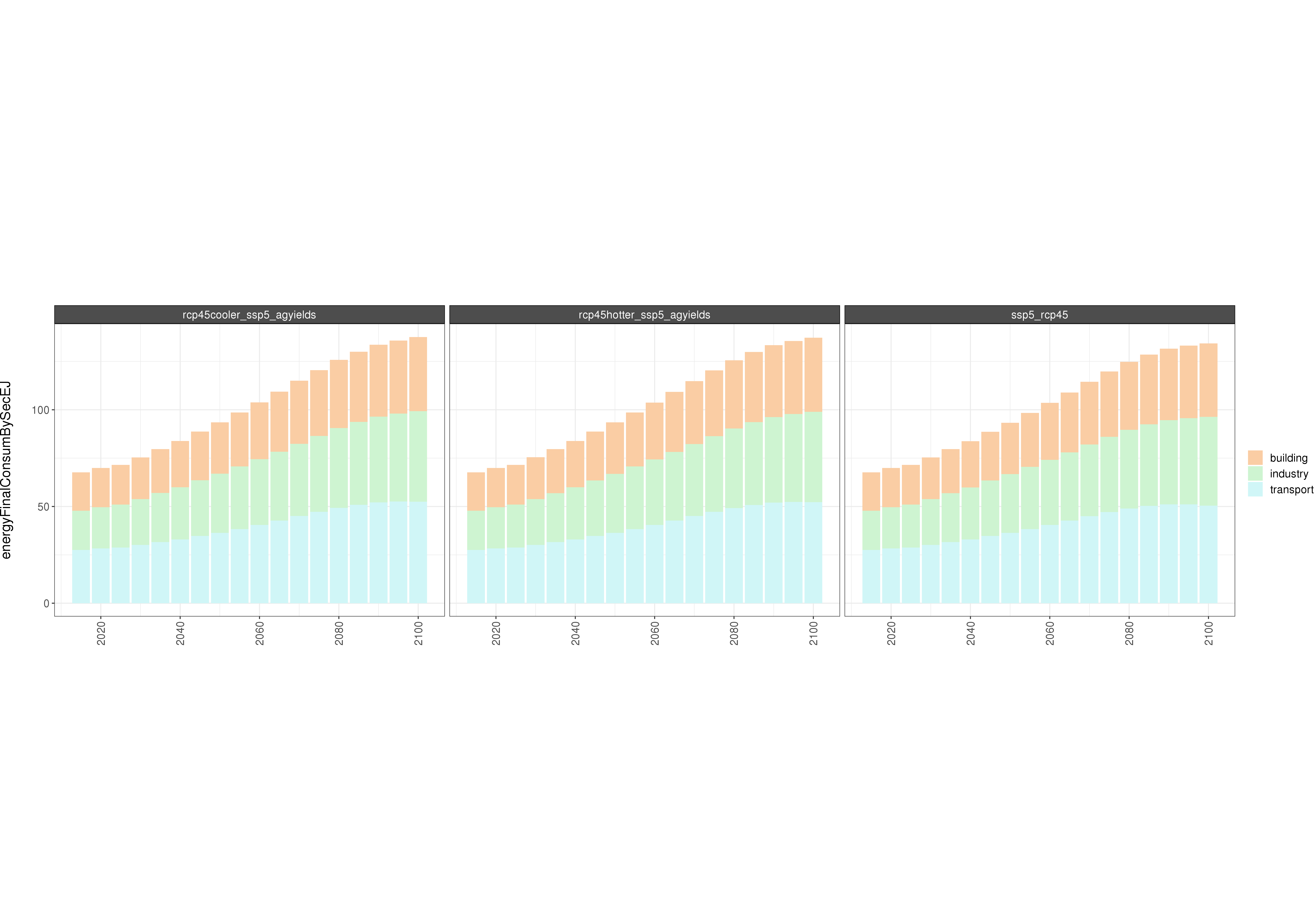
Absolute GCAM energy outputs
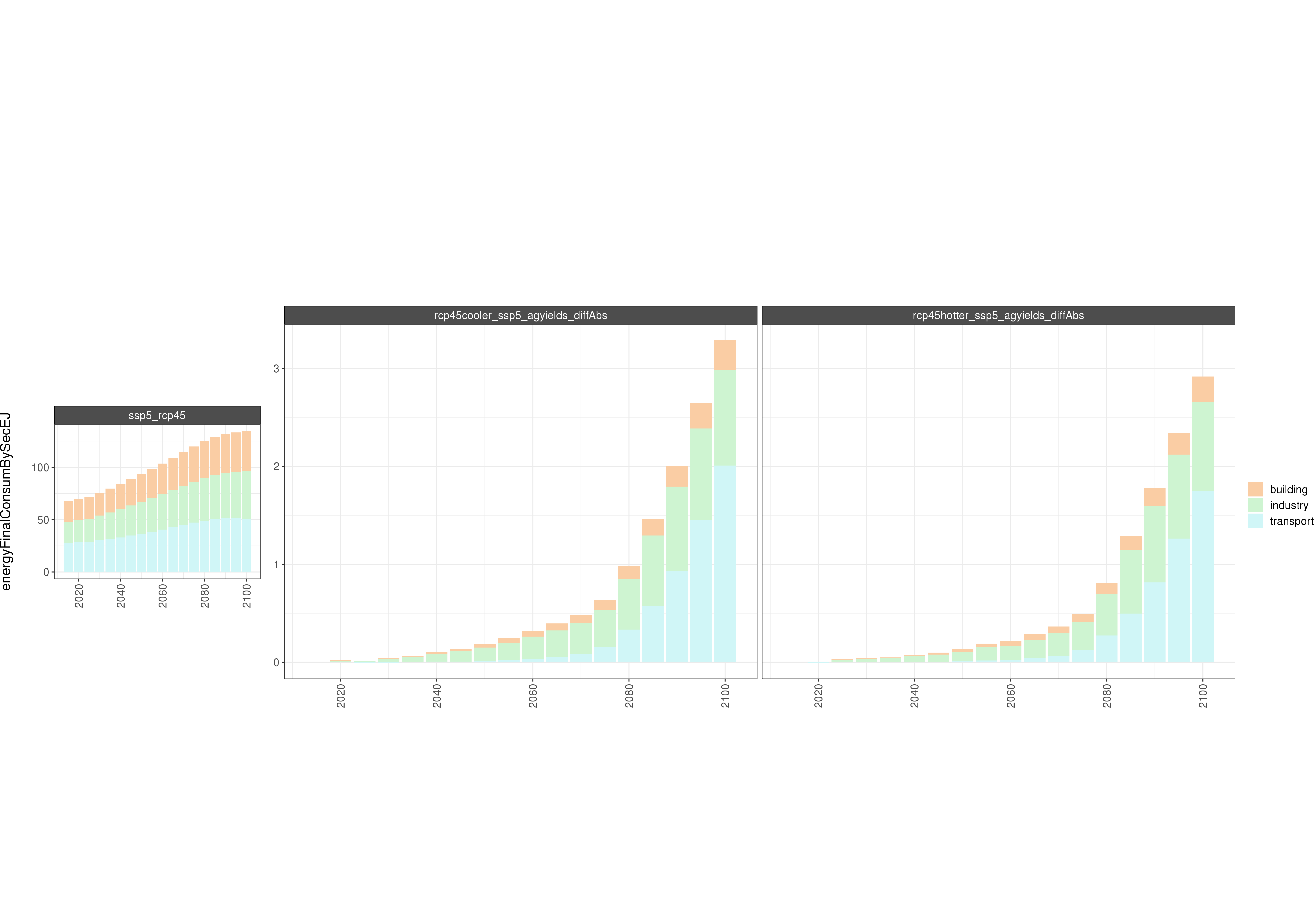
Comparison of GCAM energy outputs
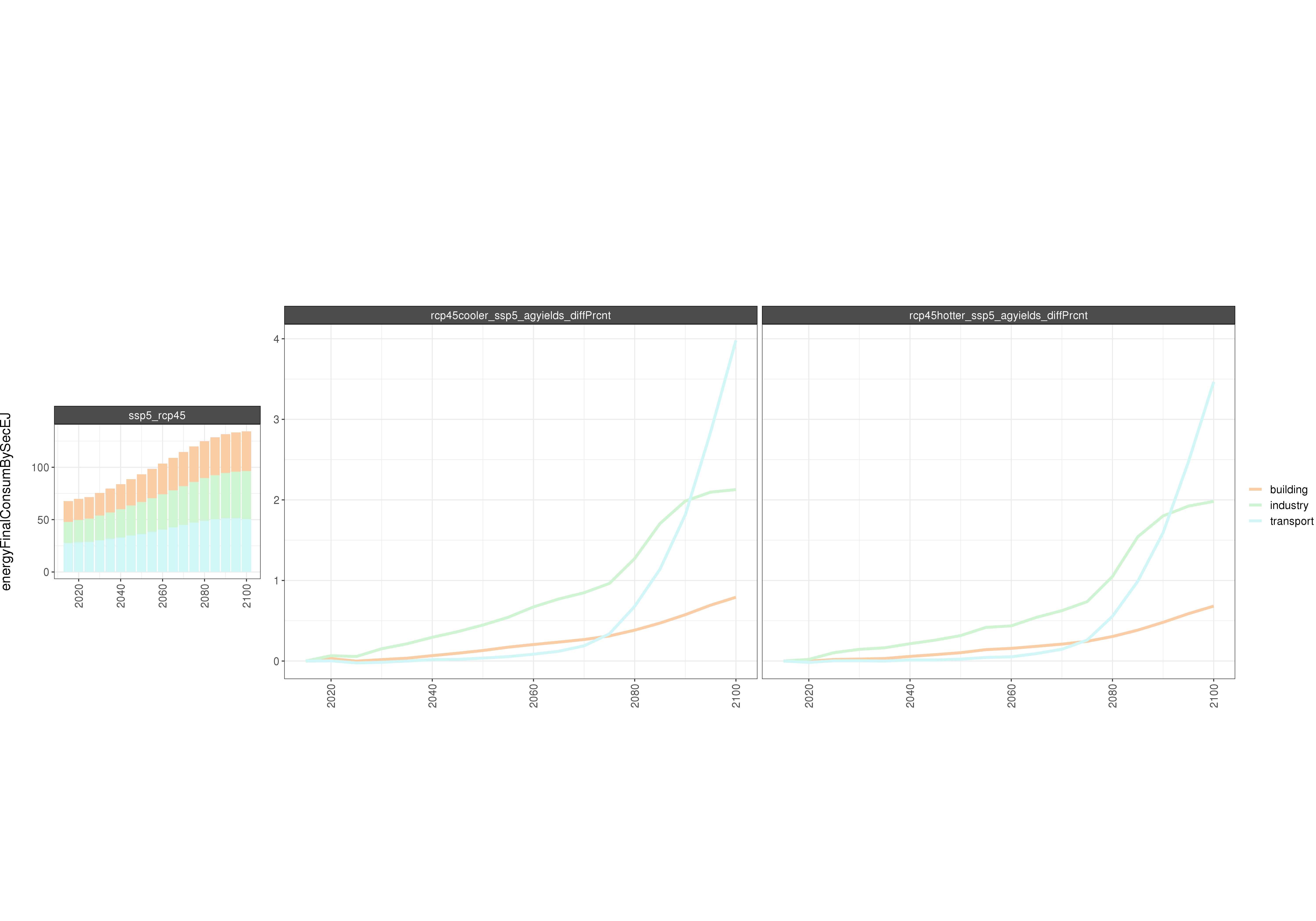
Comparison of GCAM energy outputs % Diff
RCP8.5
Energy Demand
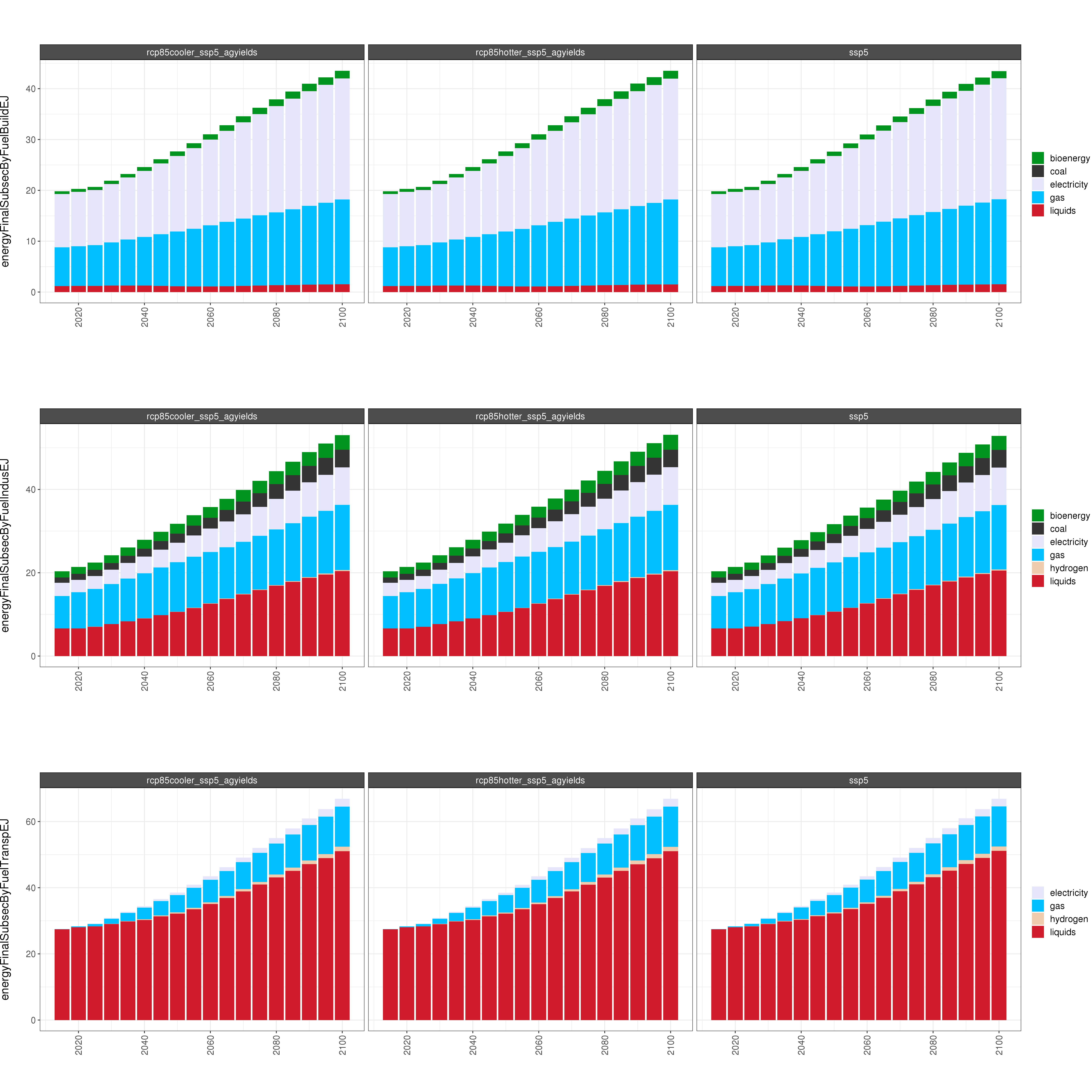
Comparison of GCAM energy outputs for 8 climate and socioeconomic scenarios.
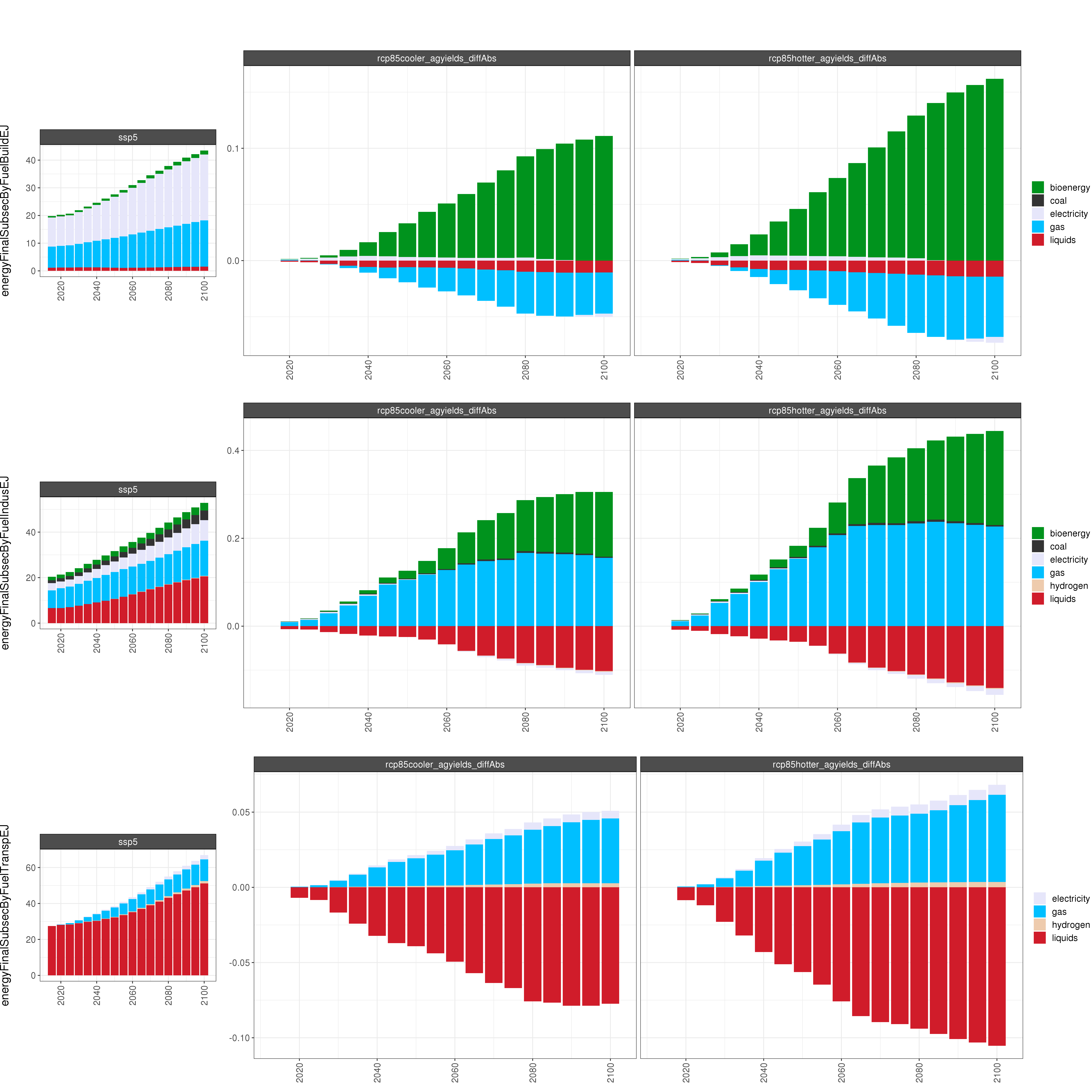
Comparison of GCAM energy outputs for 8 climate and socioeconomic scenarios (absolute difference).
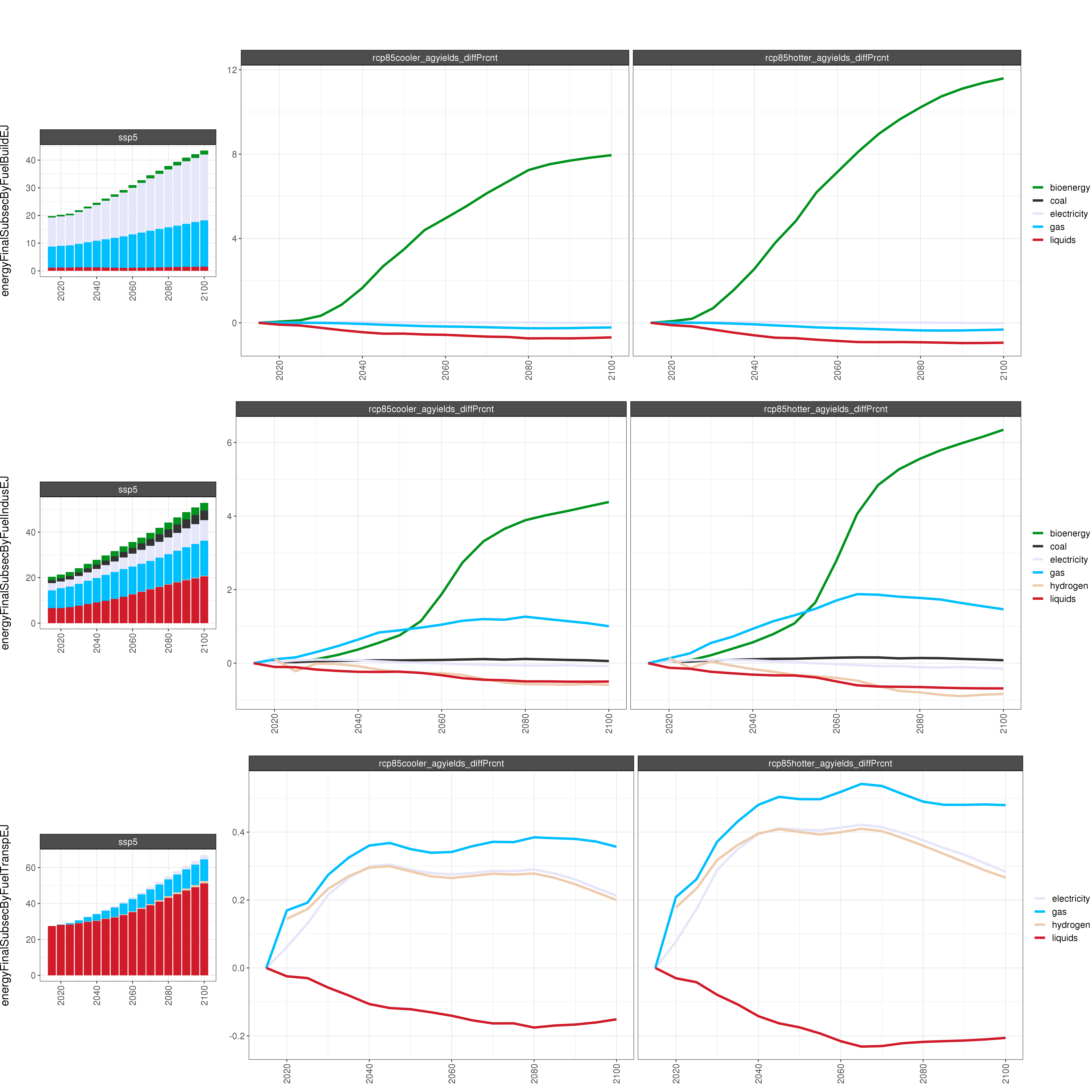
Comparison of GCAM energy outputs for 8 climate and socioeconomic scenarios (percent difference).
Energy Consumption
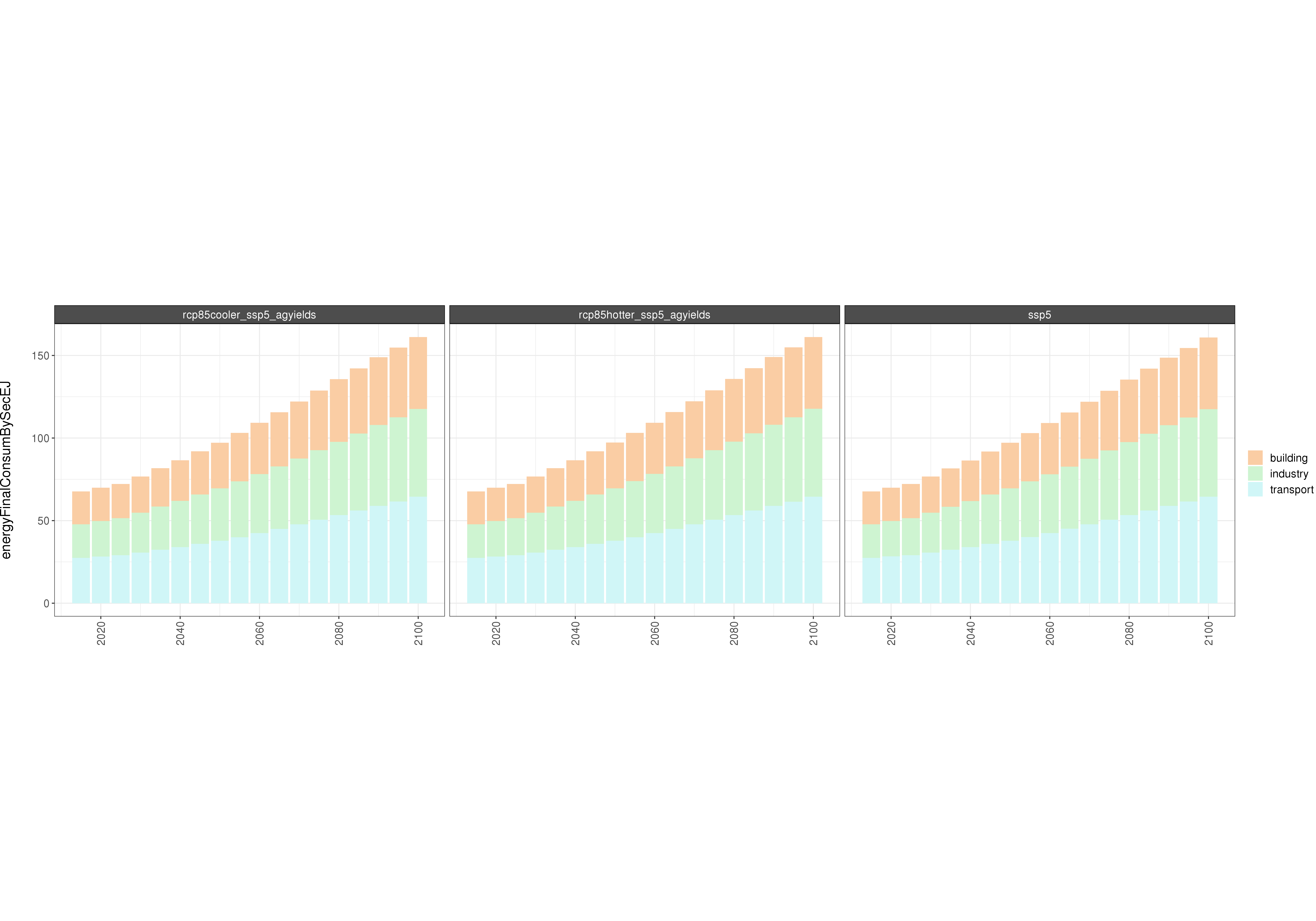
Absolute GCAM energy outputs
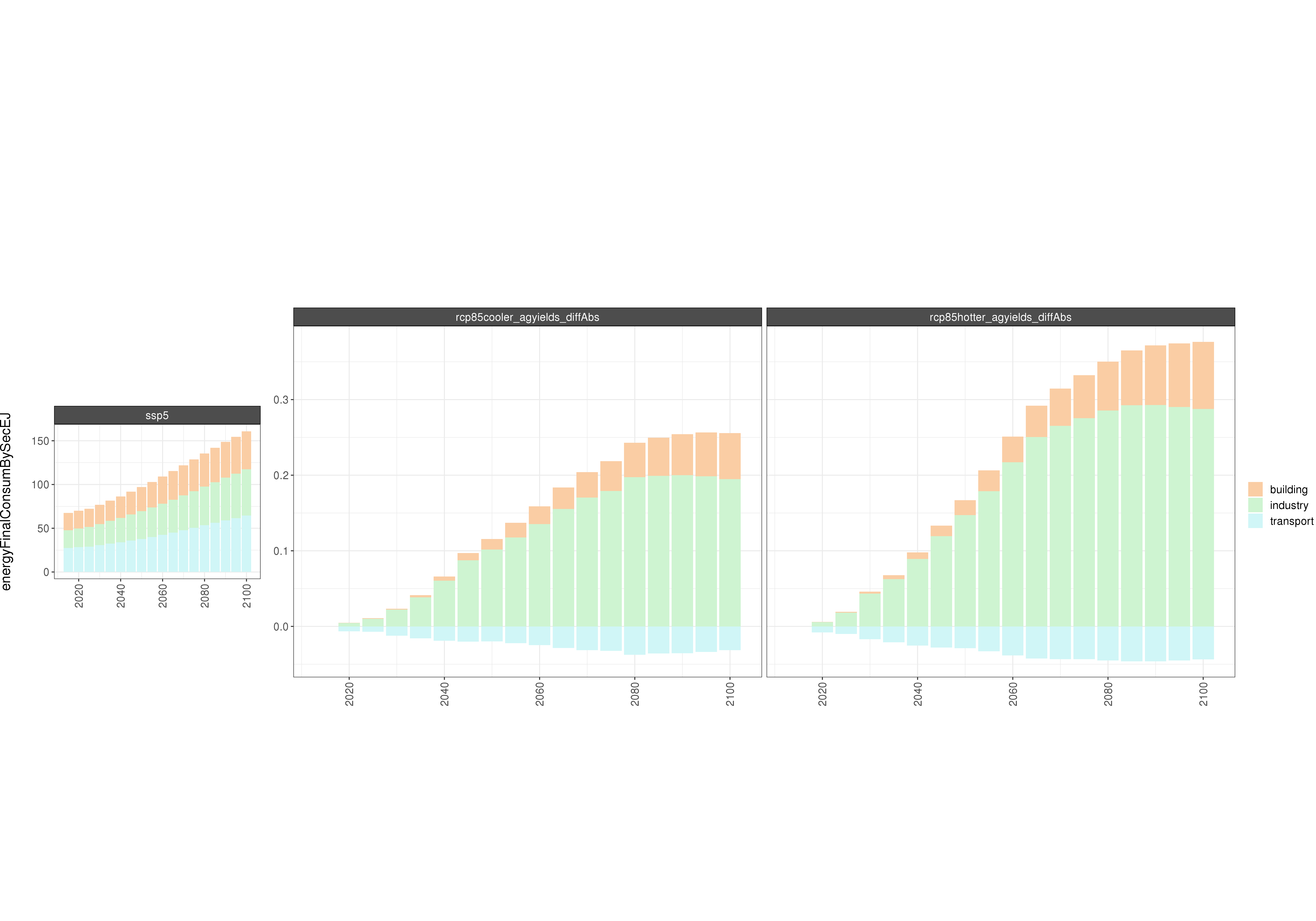
Comparison of GCAM energy outputs
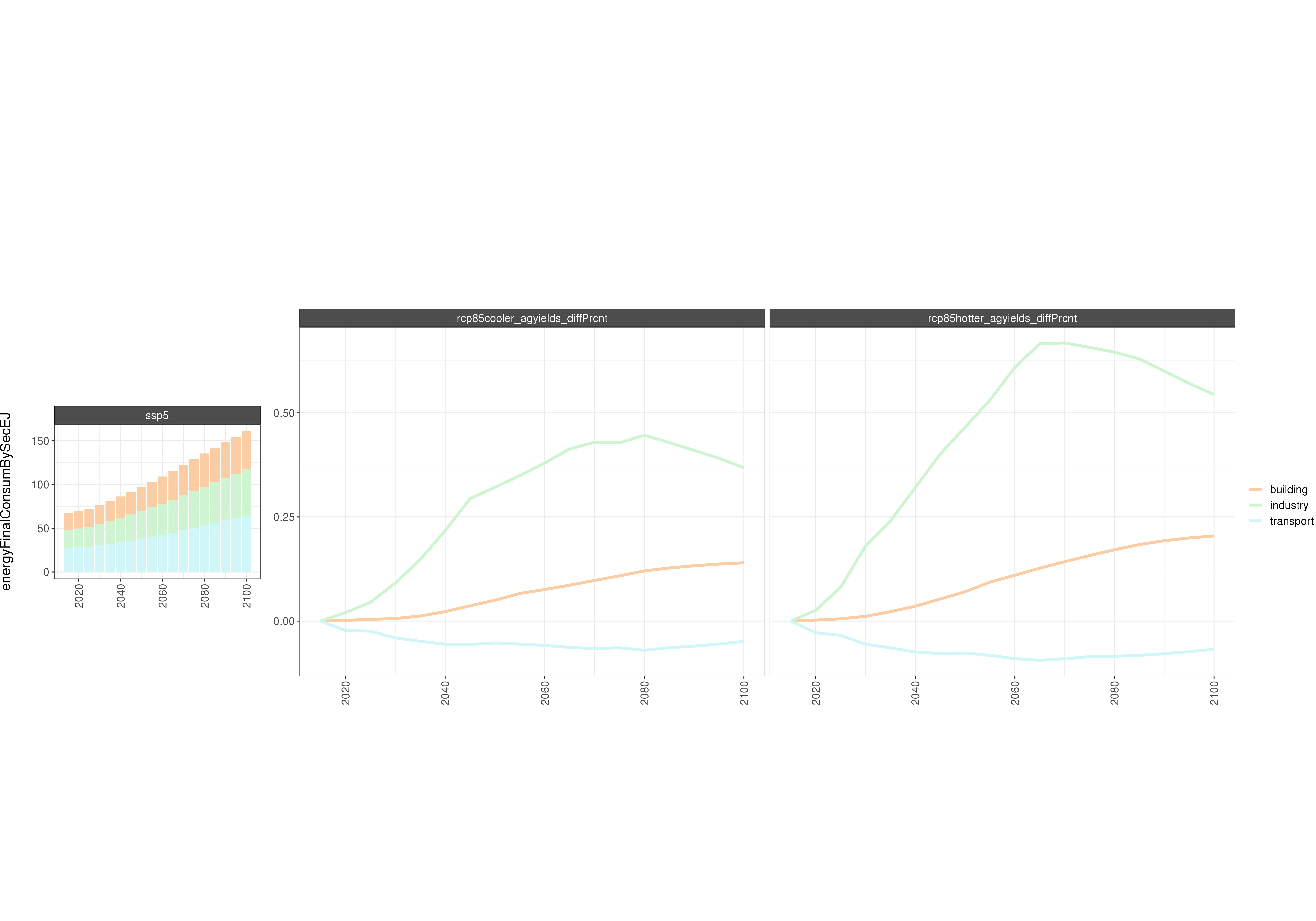
Comparison of GCAM energy outputs % Diff
Electricity
RCP4.5
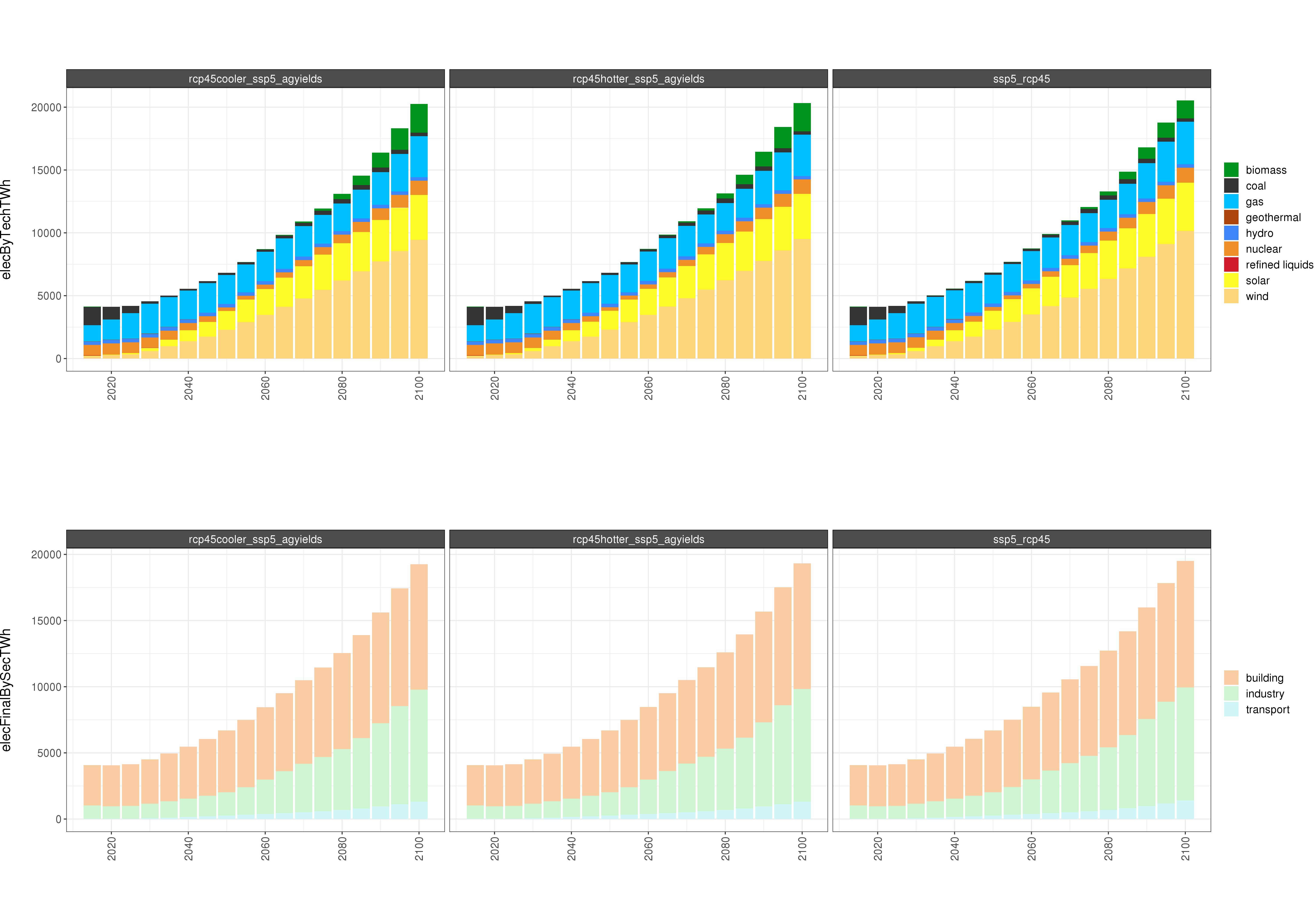
Absolute GCAM electricity outputs
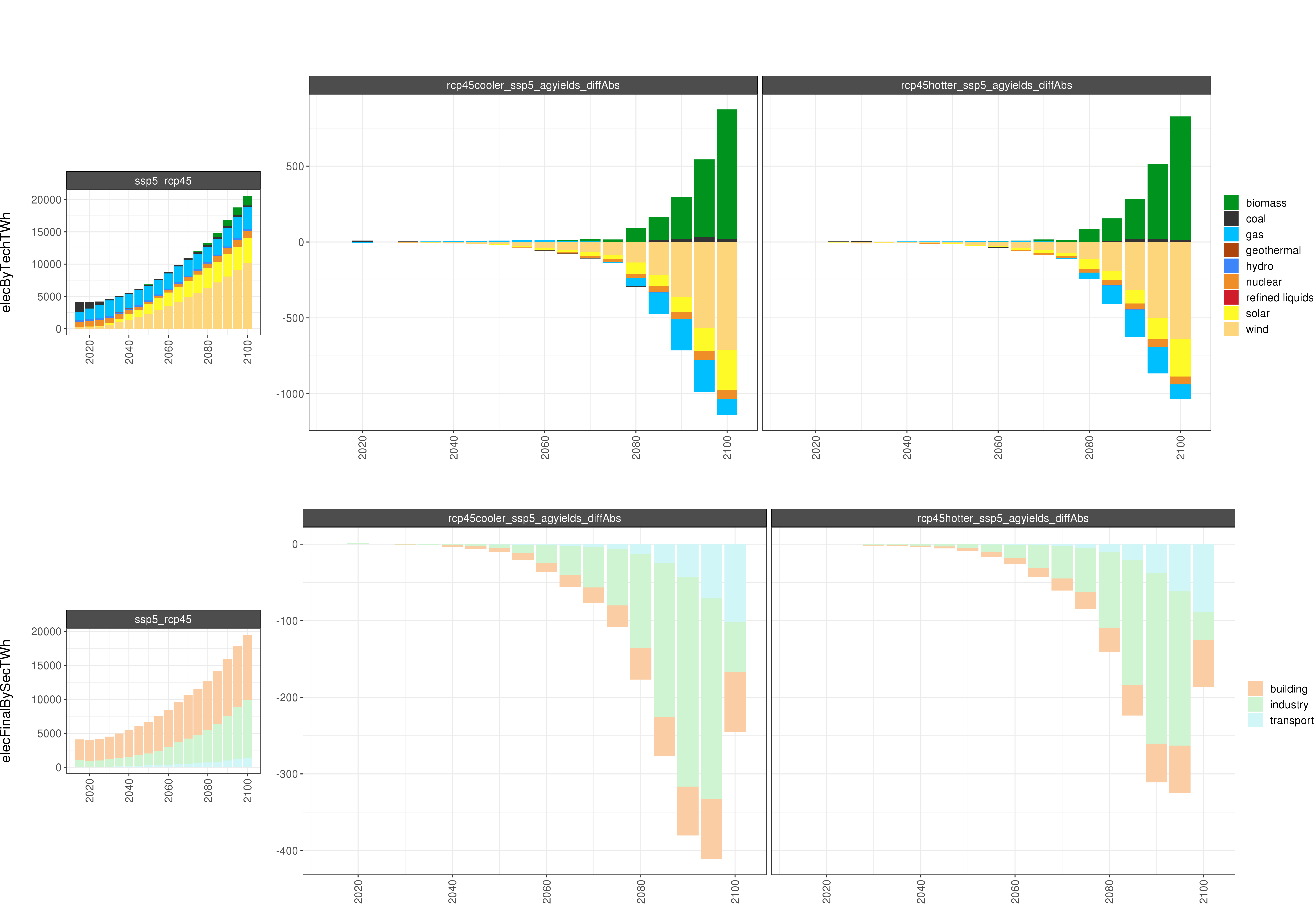
Comparison of GCAM electricity outputs
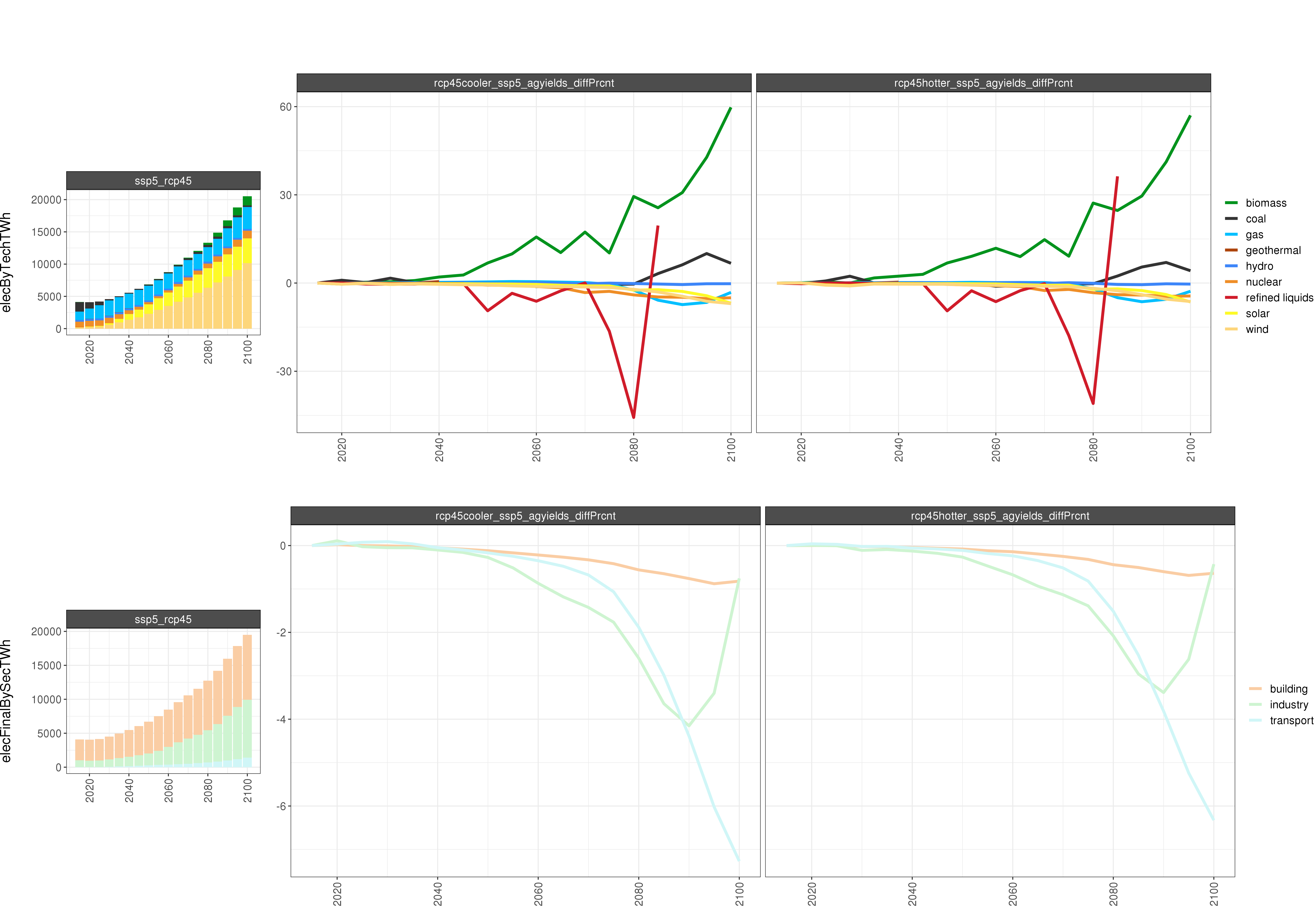
Comparison of GCAM electricity outputs % Diff
RCP8.5
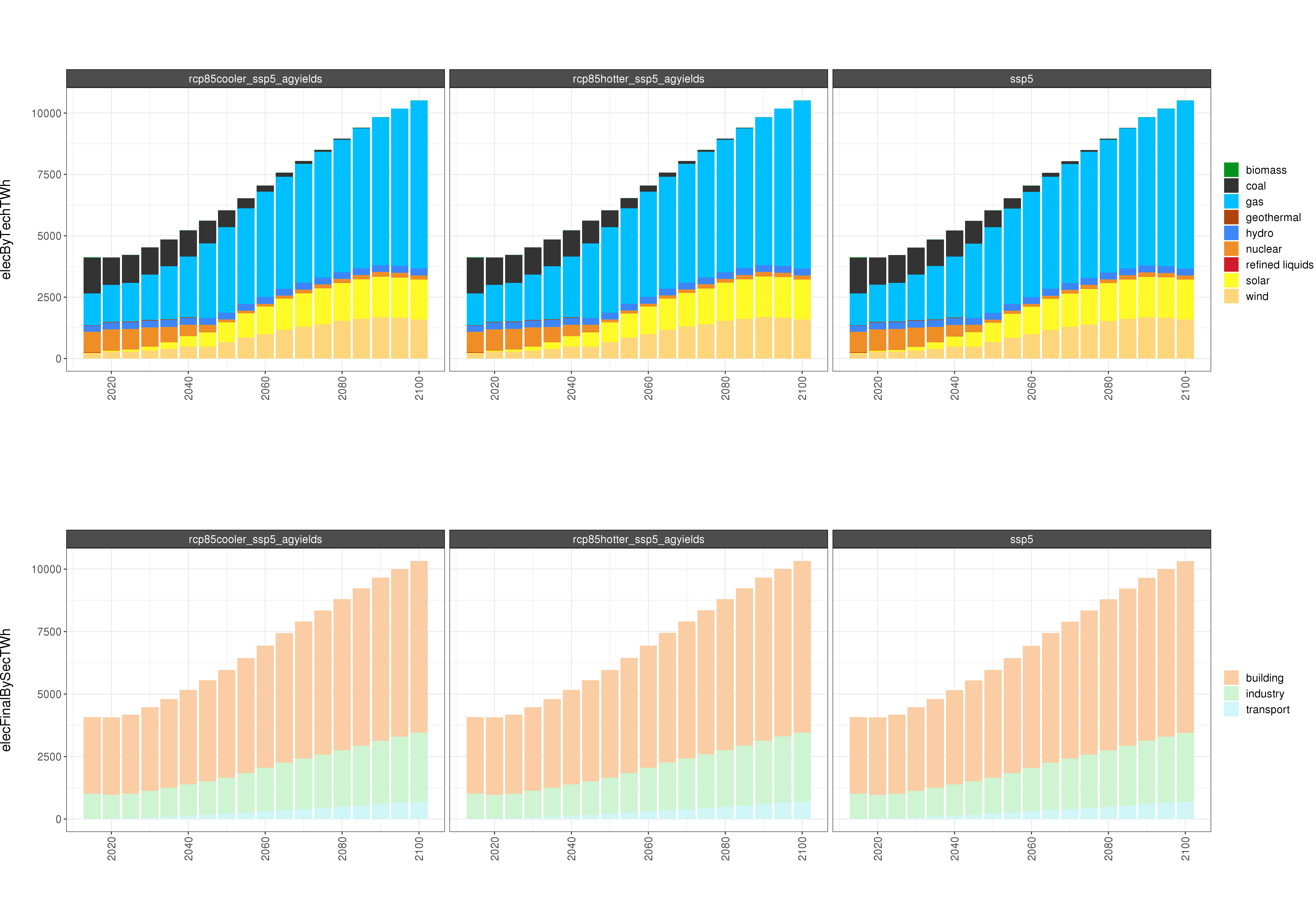
Absolute GCAM electricity outputs
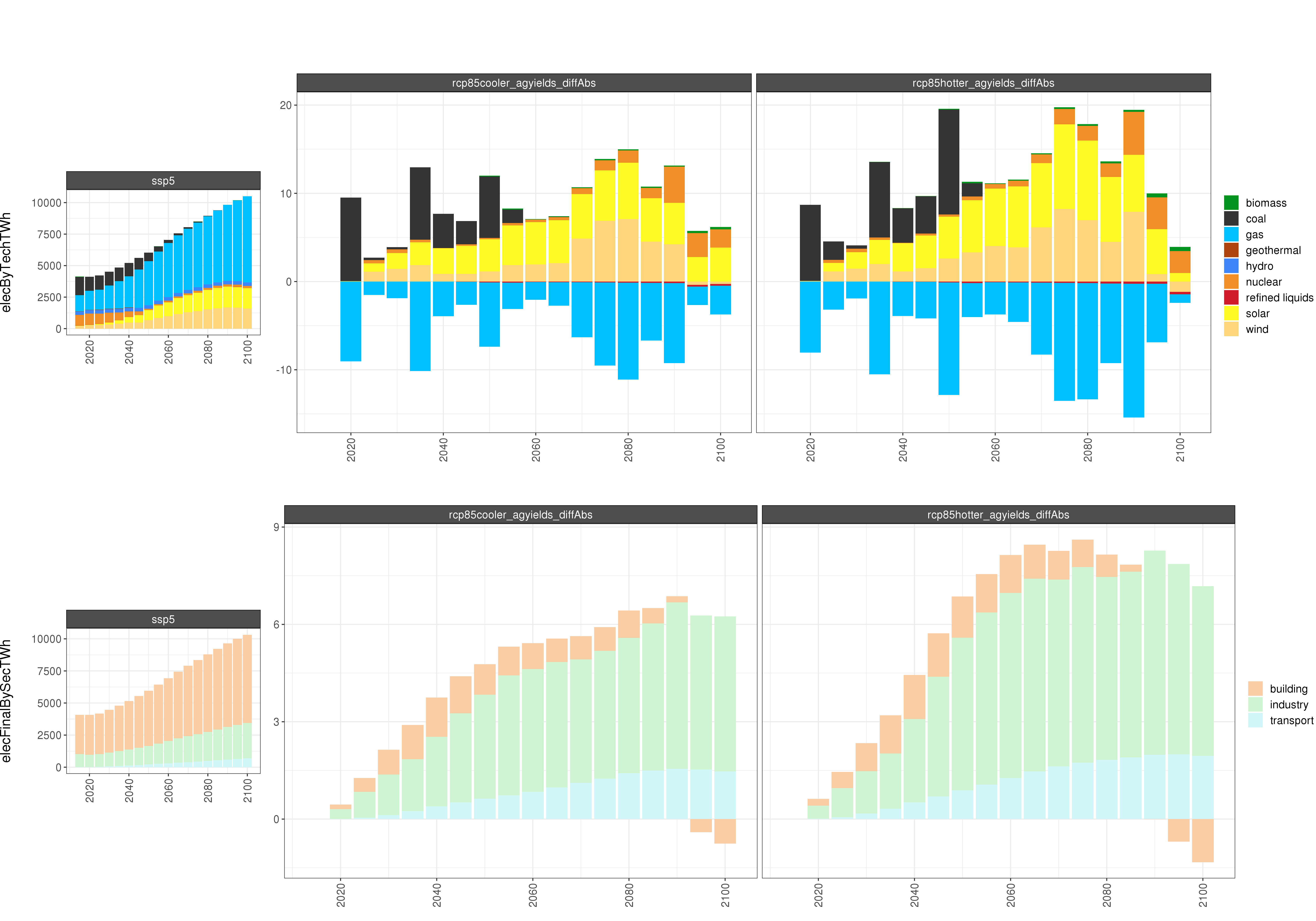
Comparison of GCAM electricity outputs
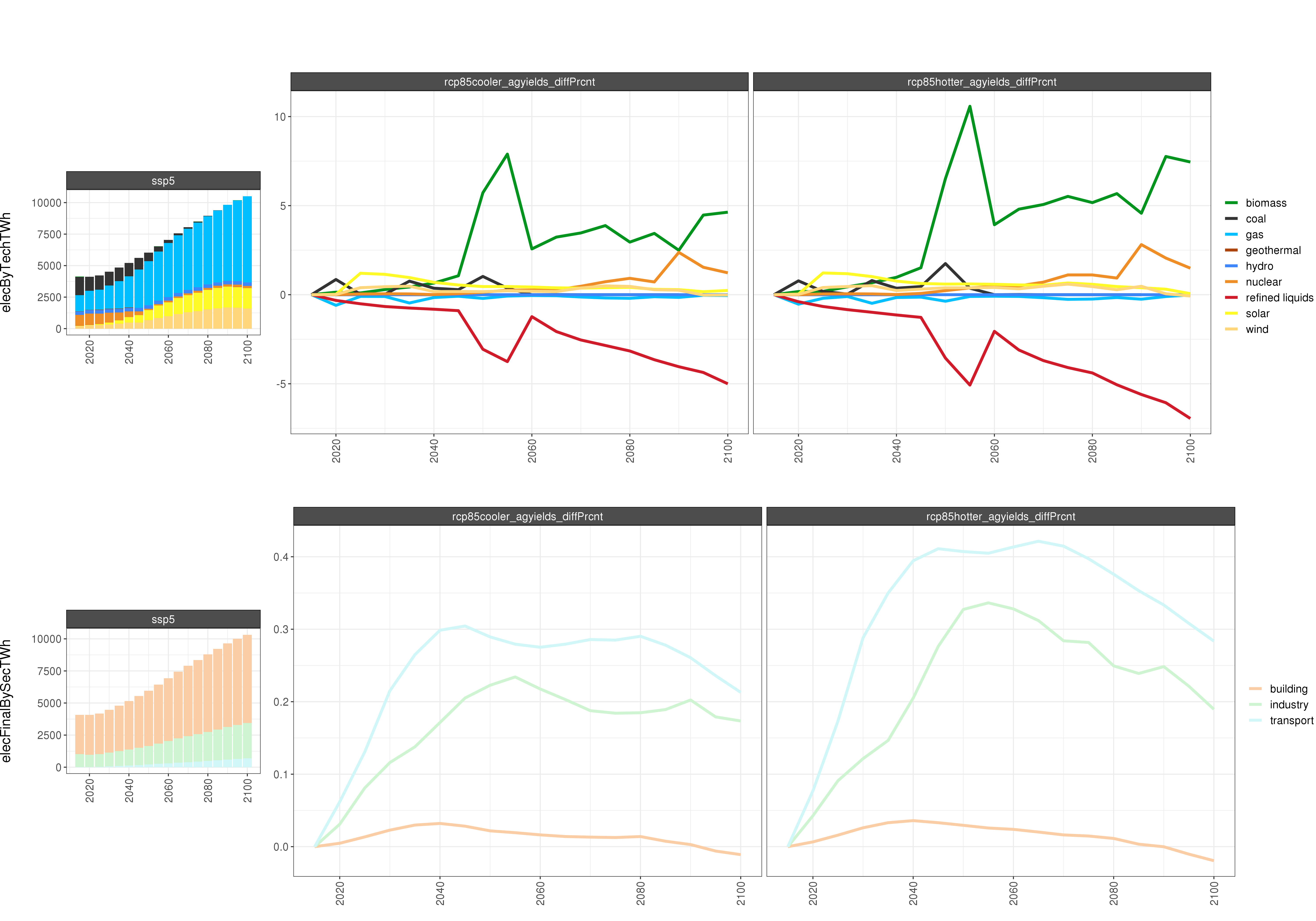
Comparison of GCAM electricity outputs % Diff
AGLU
Summary
RCP4.5 Charts
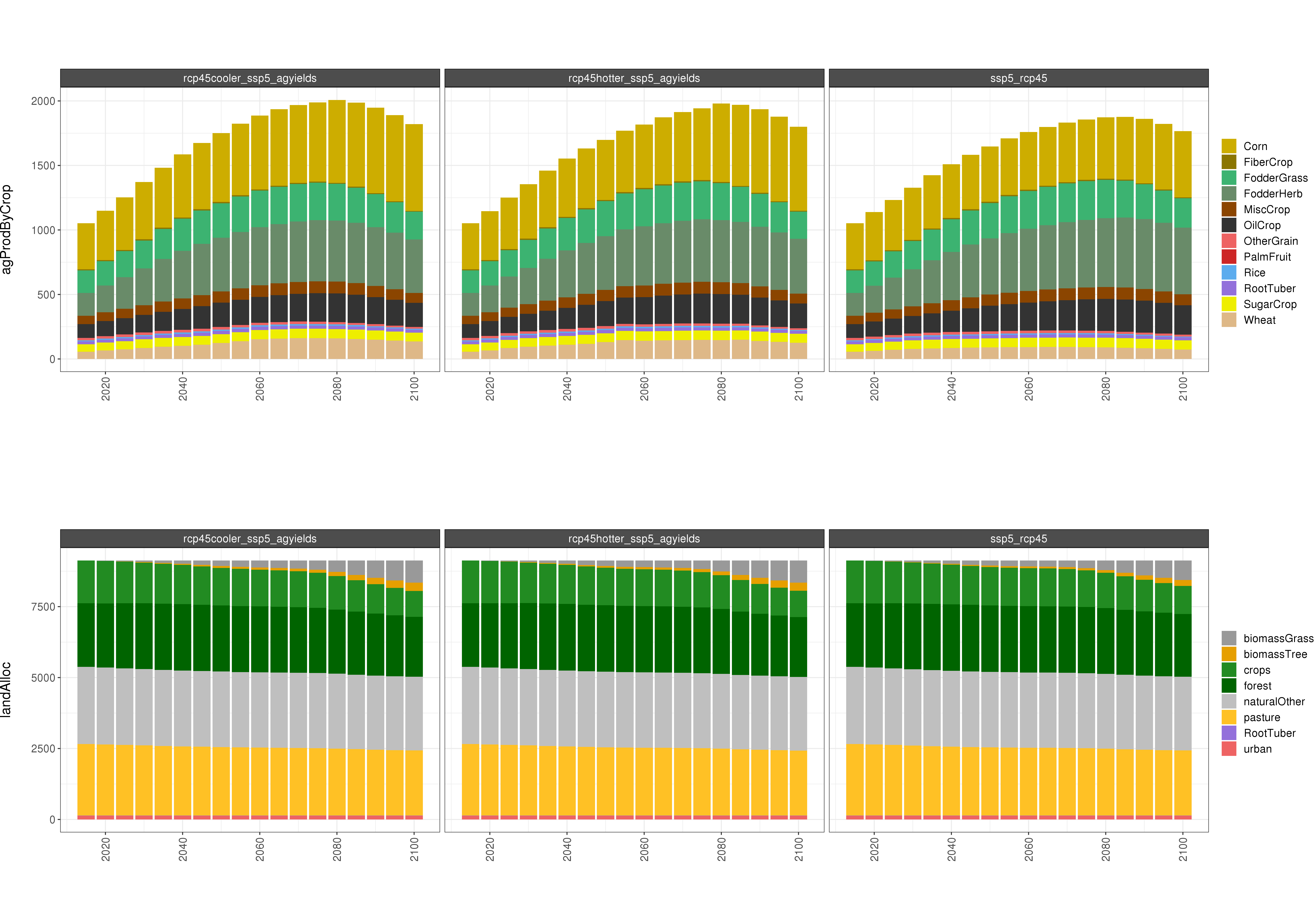
Absolute GCAM AGLU outputs
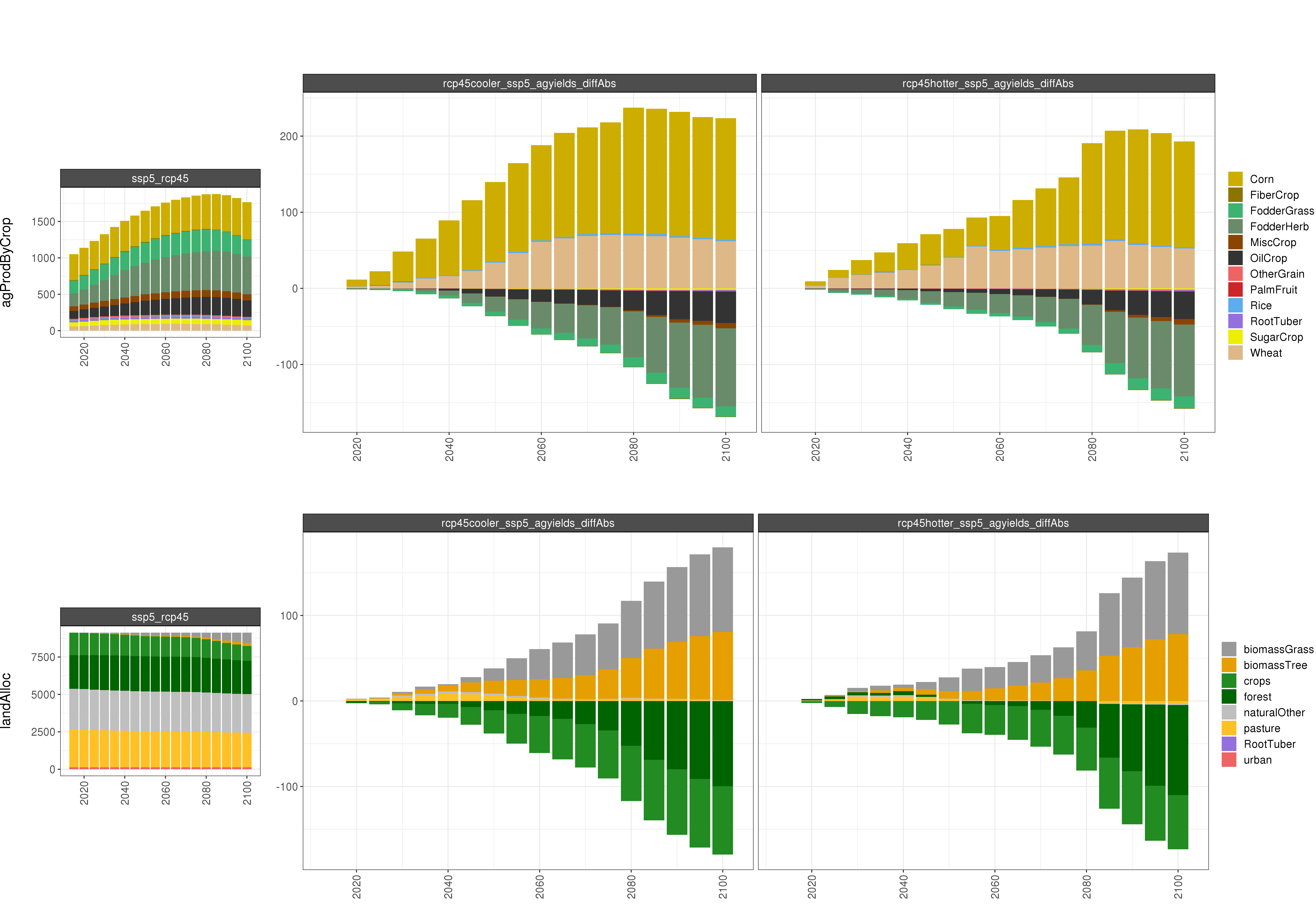
Comparison of GCAM AGLU outputs - absolute difference
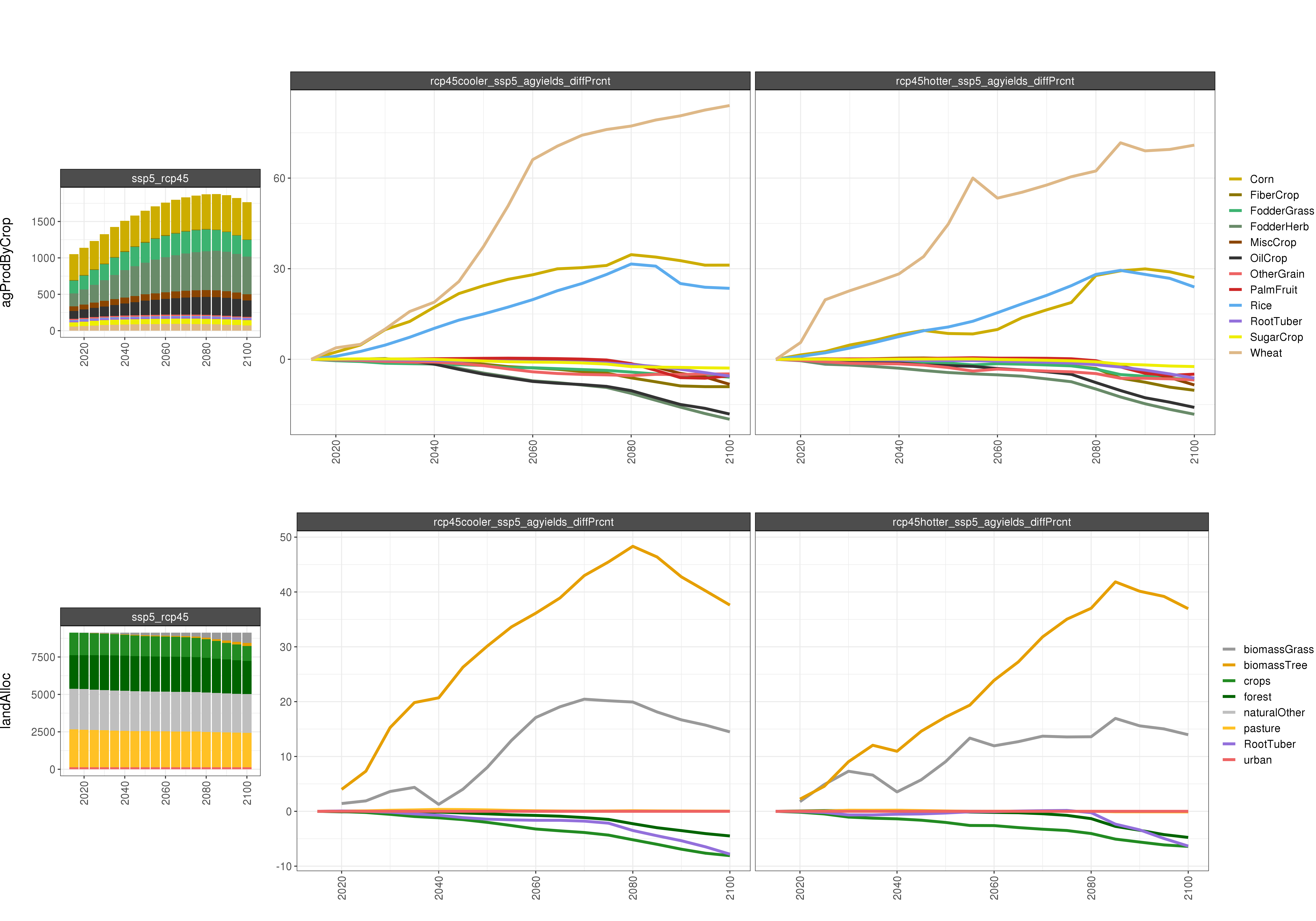
Comparison of GCAM AGLU outputs - percent difference
RCP8.5 Charts
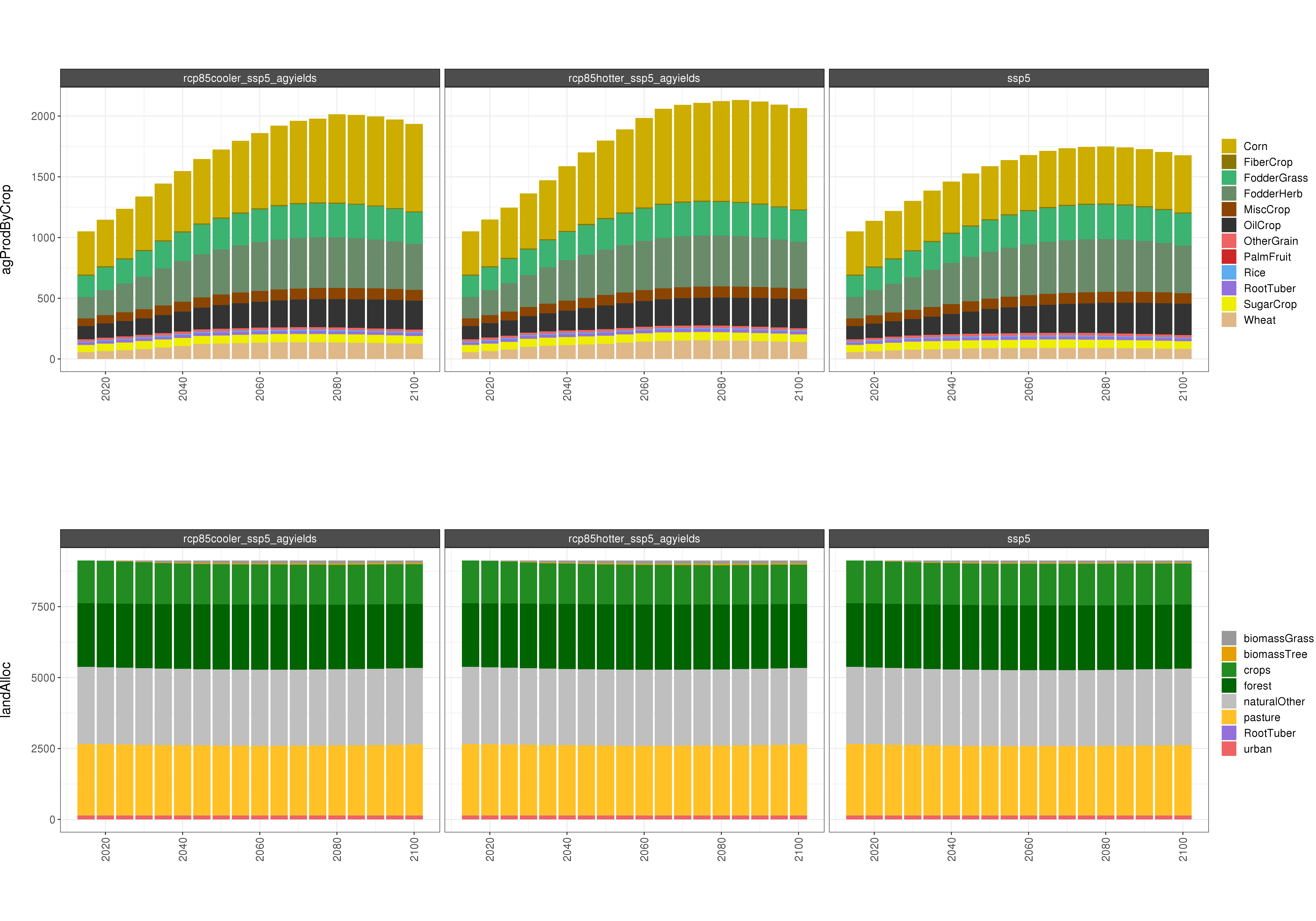
Absolute GCAM AGLU outputs
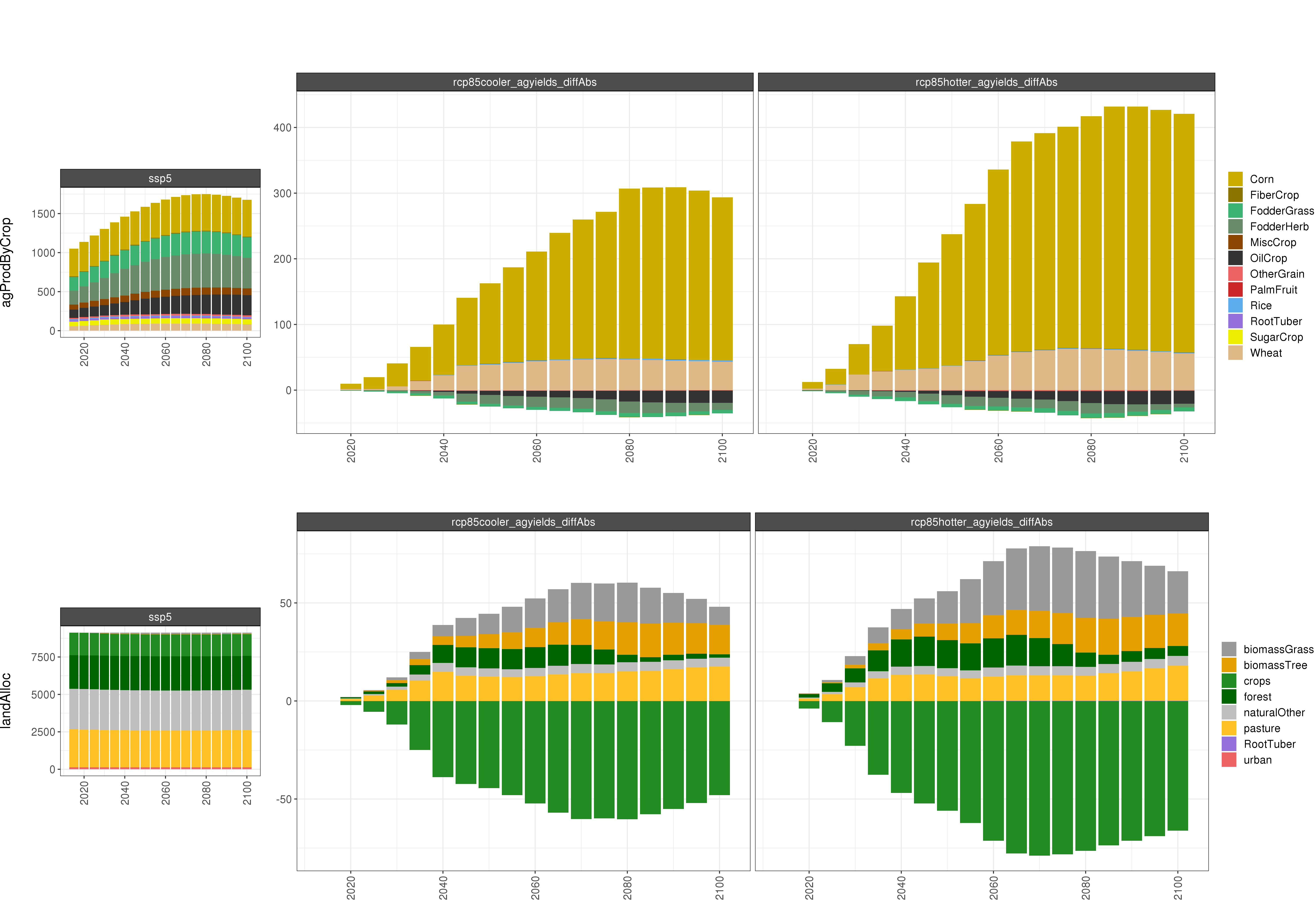
Comparison of GCAM AGLU outputs - absolute difference
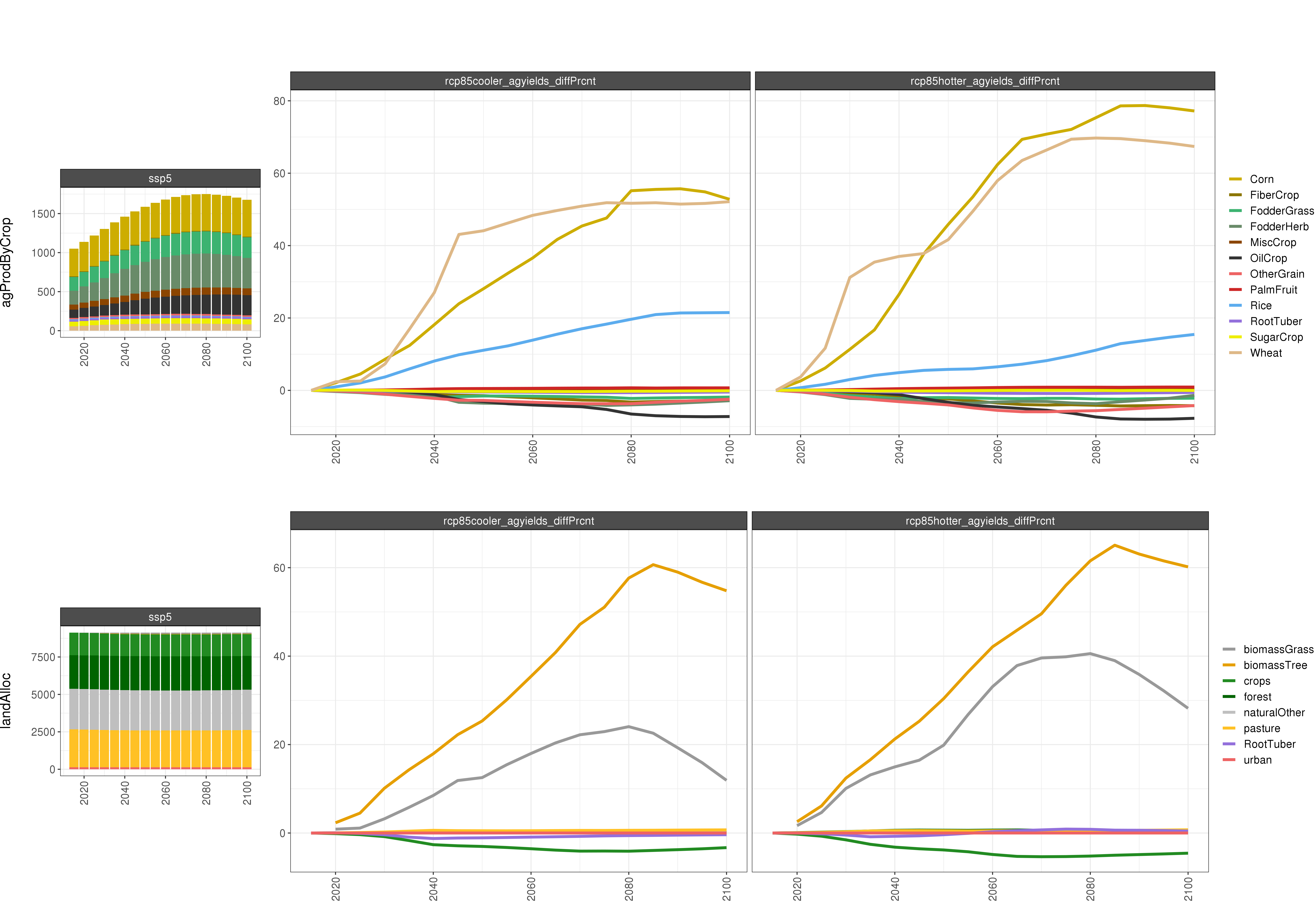
Comparison of GCAM AGLU outputs - percent difference
RCP4.5 Maps
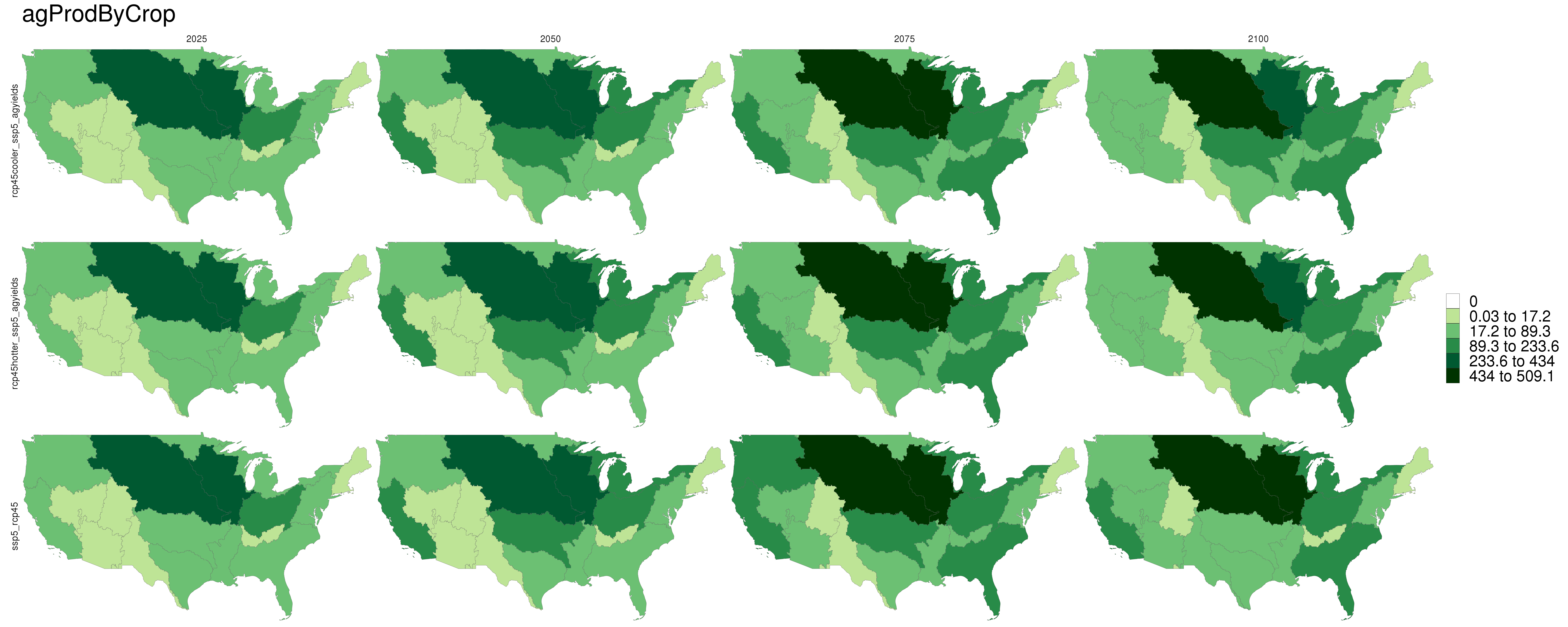
Comparison of agriculture production for RCP4.5 scenarios.

Absolute difference of agriculture production from RCP4.5 to Reference scenario (RCP4.5 - SSP5).

Percent difference of agriculture production from RCP4.5 to Reference scenario (RCP4.5 - SSP5.
RCP8.5 Maps
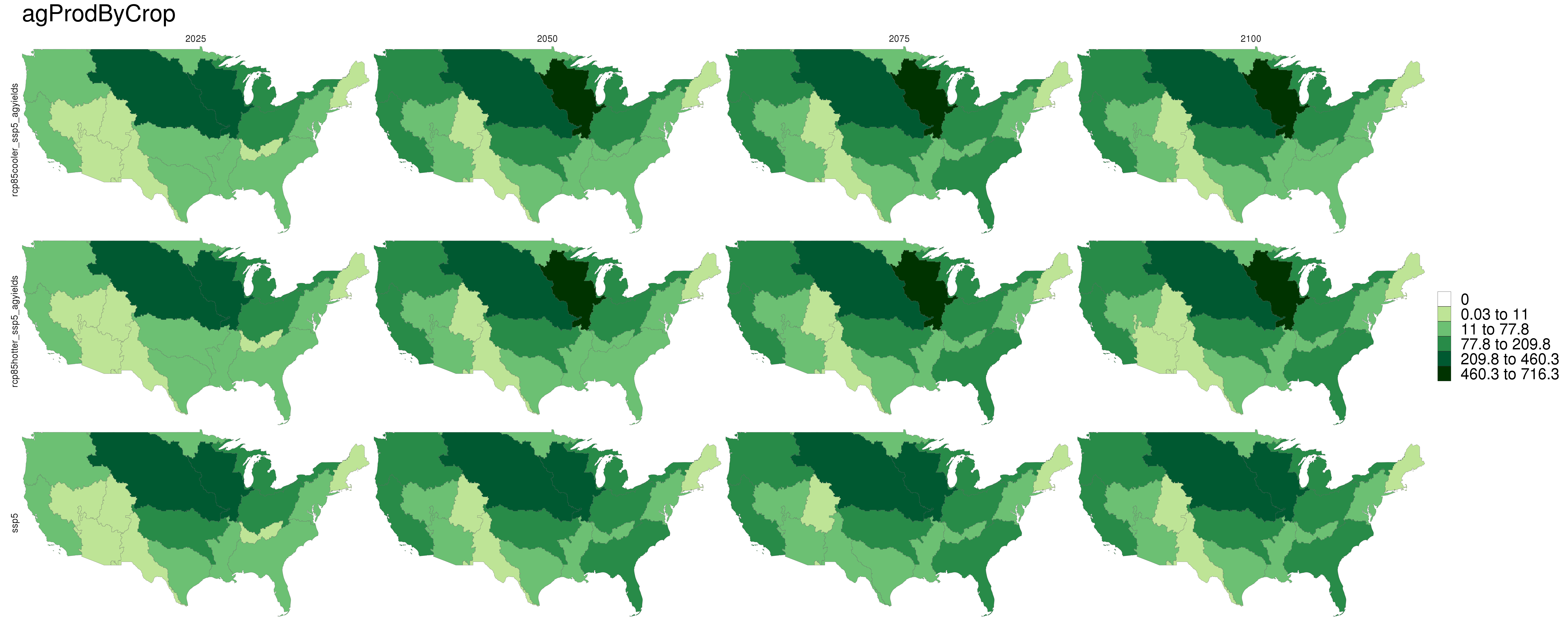
Comparison of agriculture production for RCP8.5 scenarios.

Absolute difference of agriculture production from RCP8.5 to Reference scenario (RCP8.5 - SSP5).

Percent difference of agriculture production from RCP8.5 to Reference scenario (RCP8.5 - SSP5).
Corn
RCP4.5
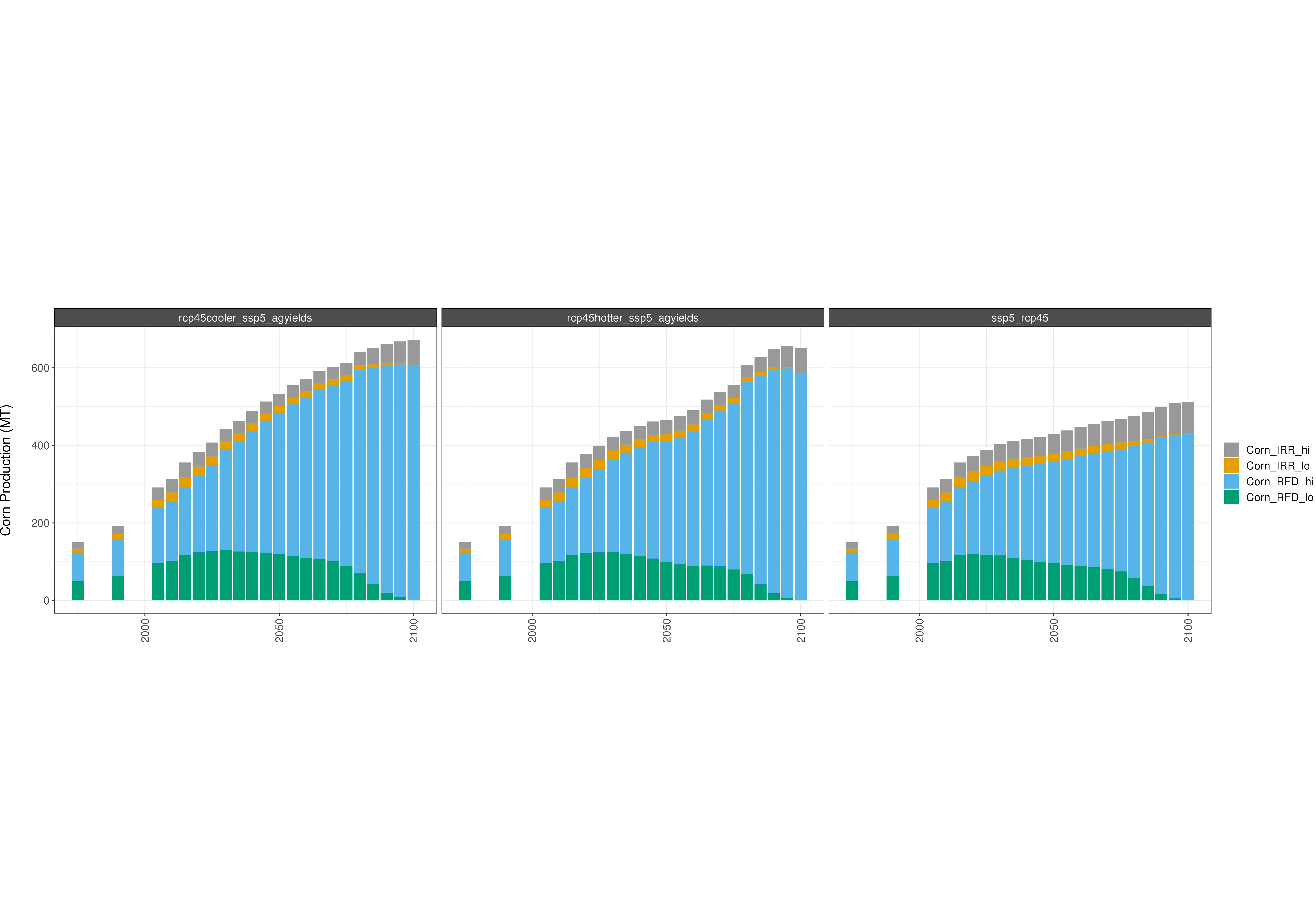
Absolute GCAM AGLU outputs
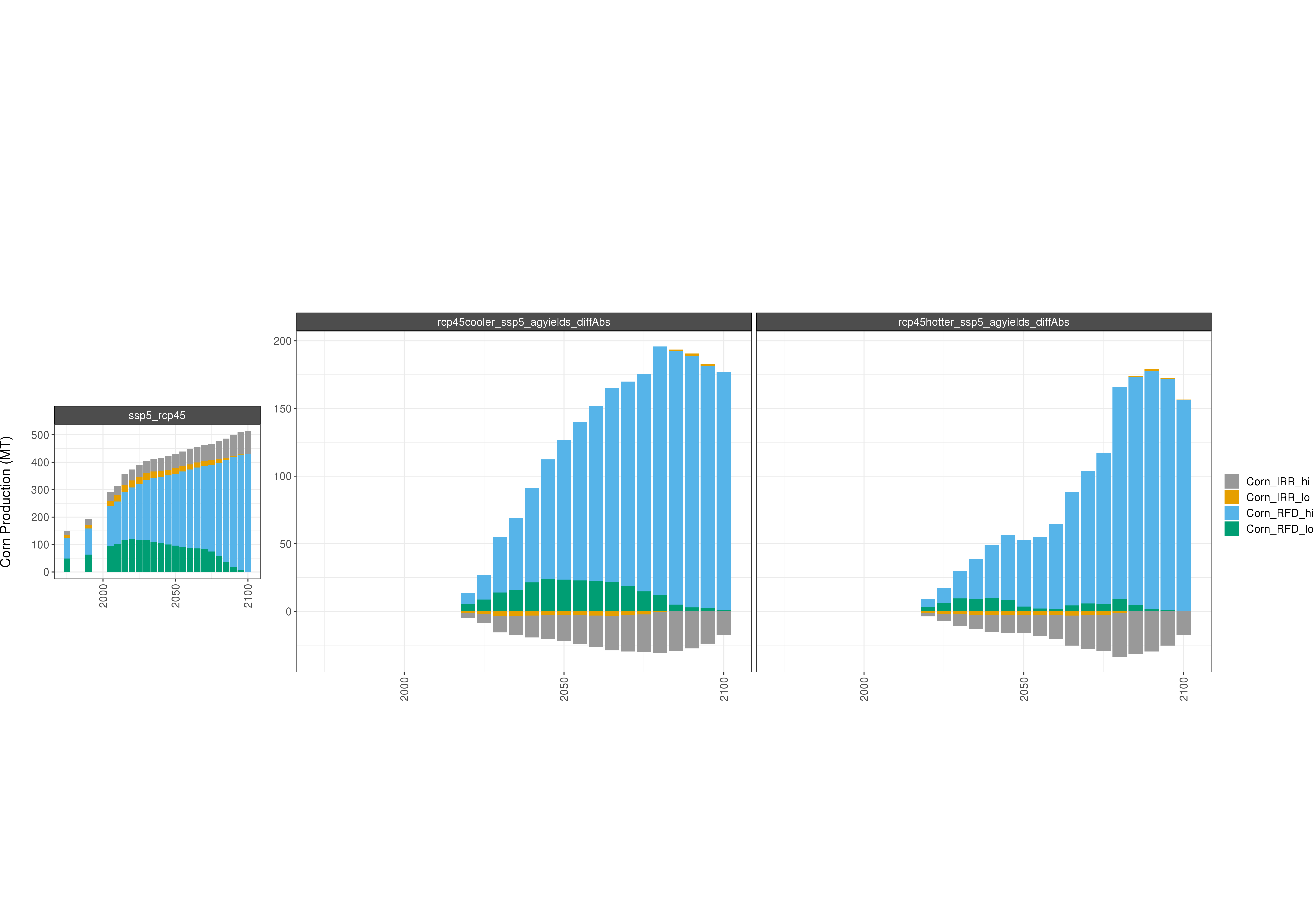
Comparison of GCAM AGLU outputs - absolute difference
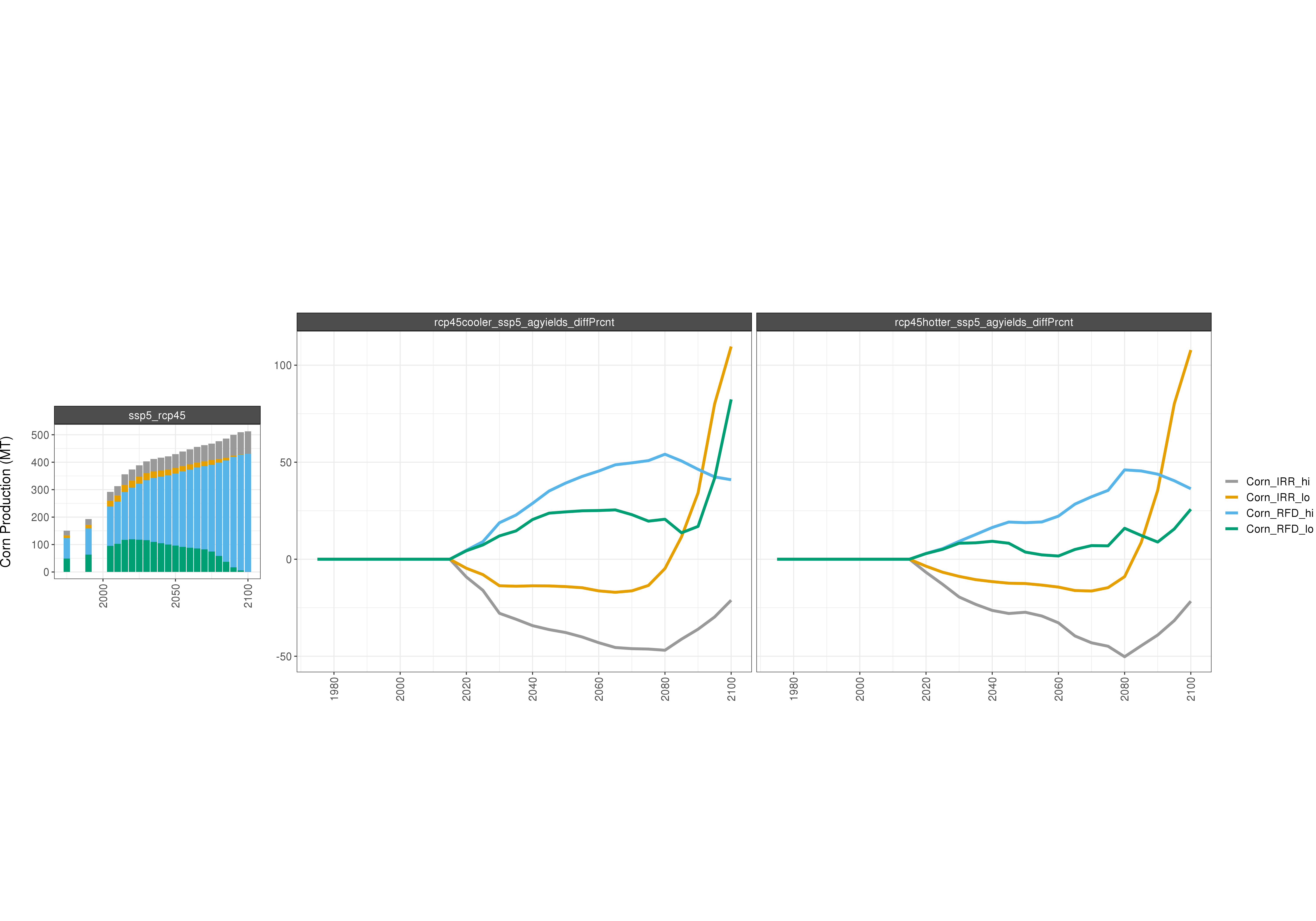
Comparison of GCAM AGLU outputs - percent difference
RCP8.5
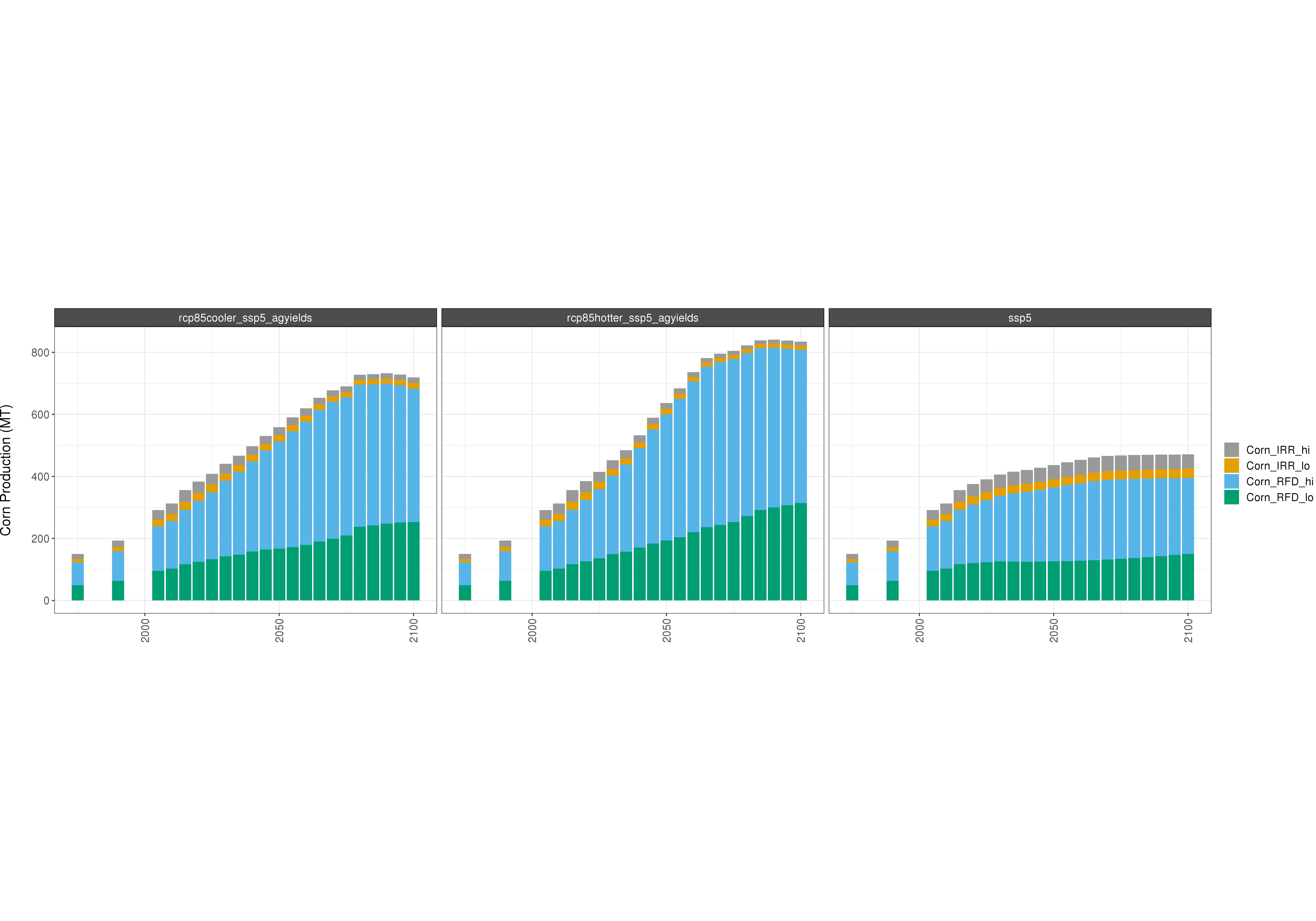
Absolute GCAM AGLU outputs
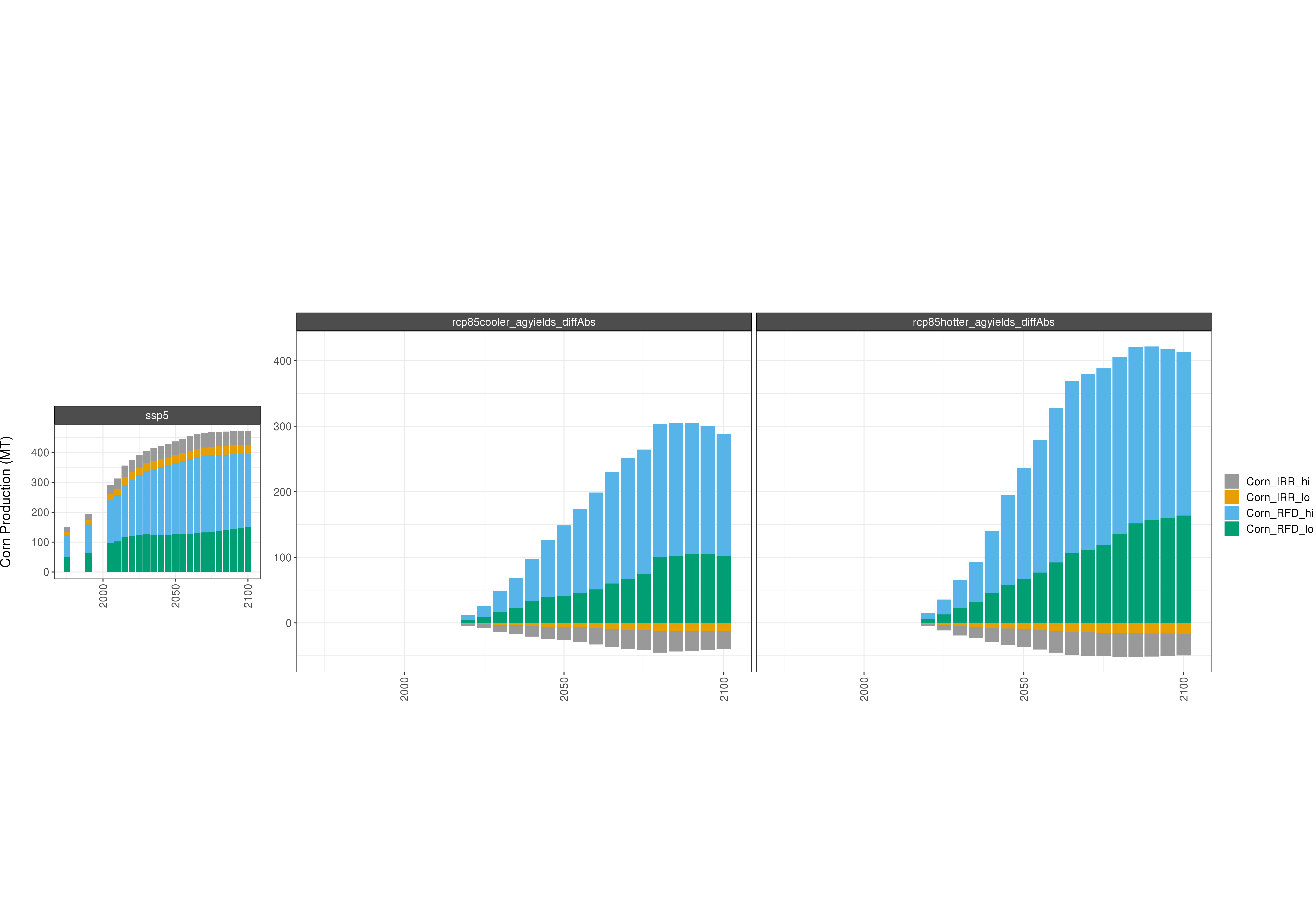
Comparison of GCAM AGLU outputs - absolute difference
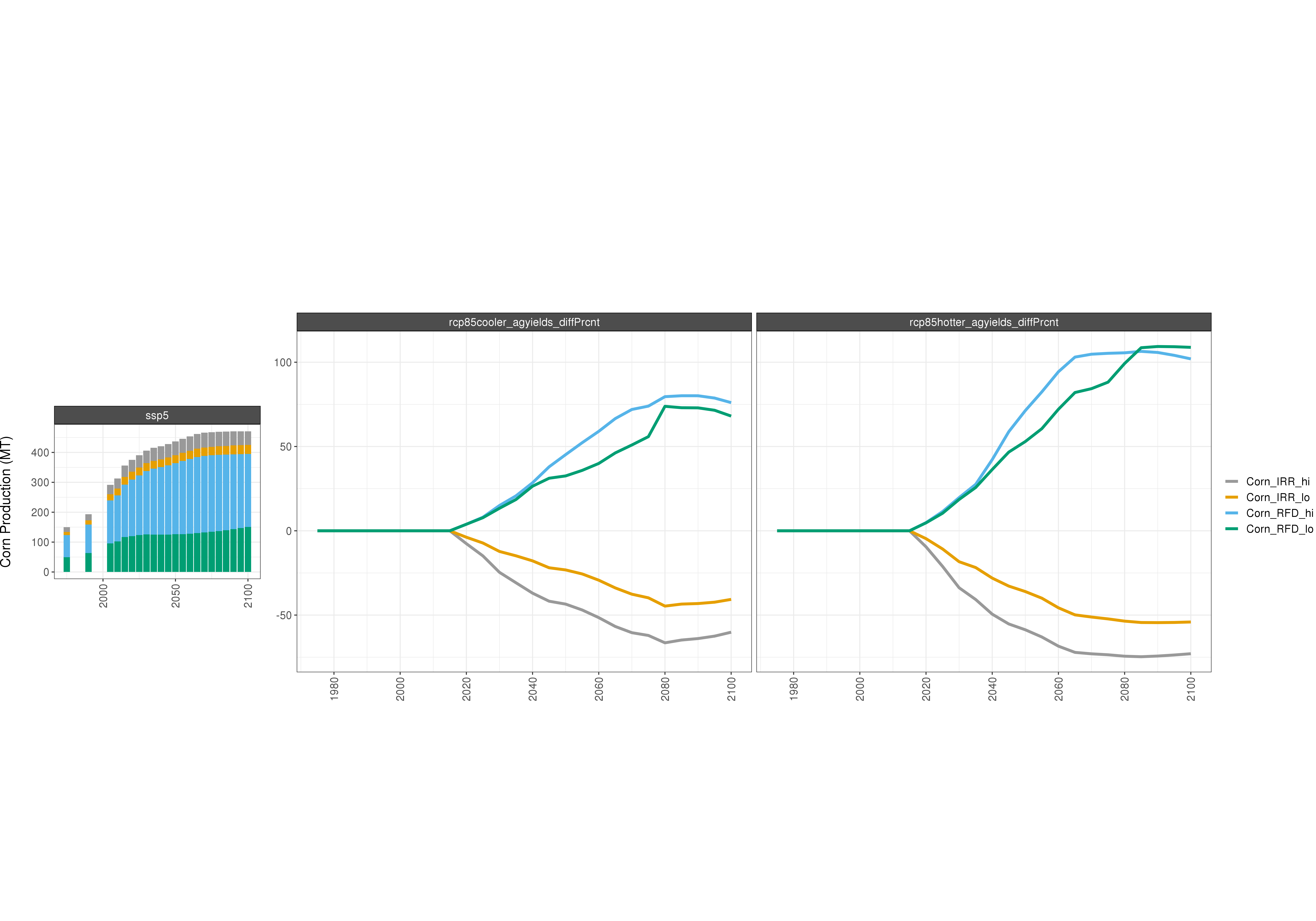
Comparison of GCAM AGLU outputs - percent difference
OilCrop
RCP4.5
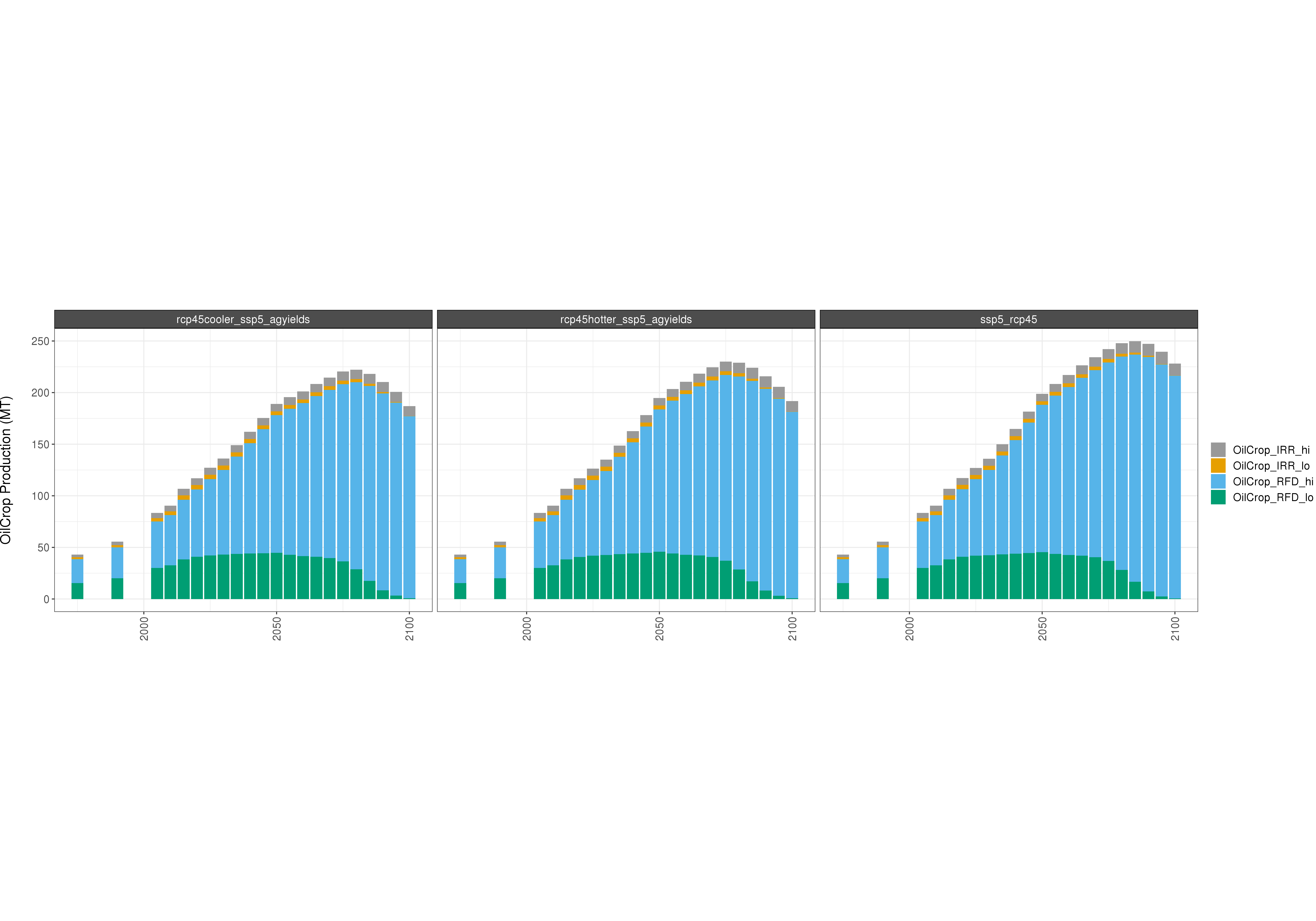
Absolute GCAM AGLU outputs
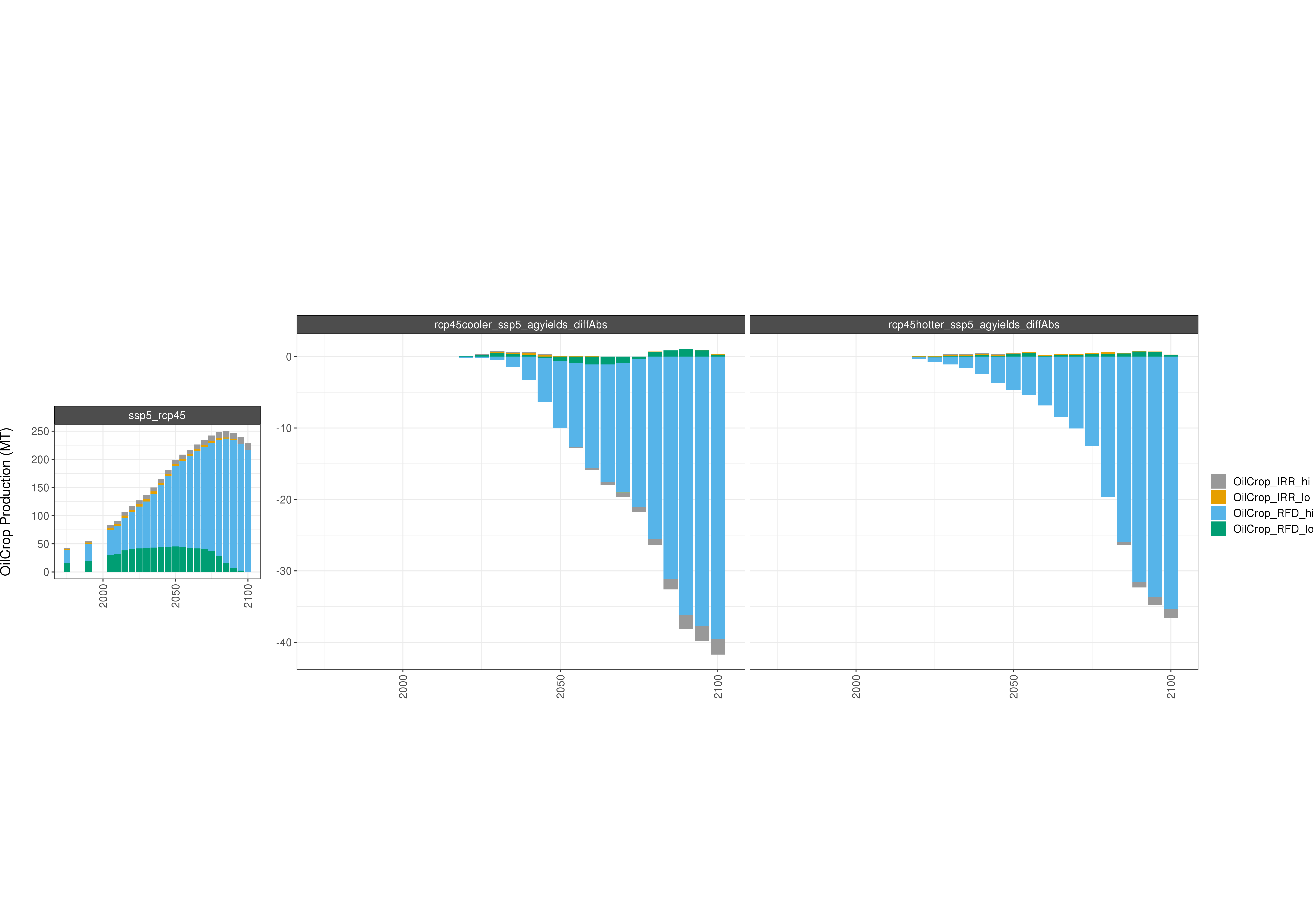
Comparison of GCAM AGLU outputs - absolute difference
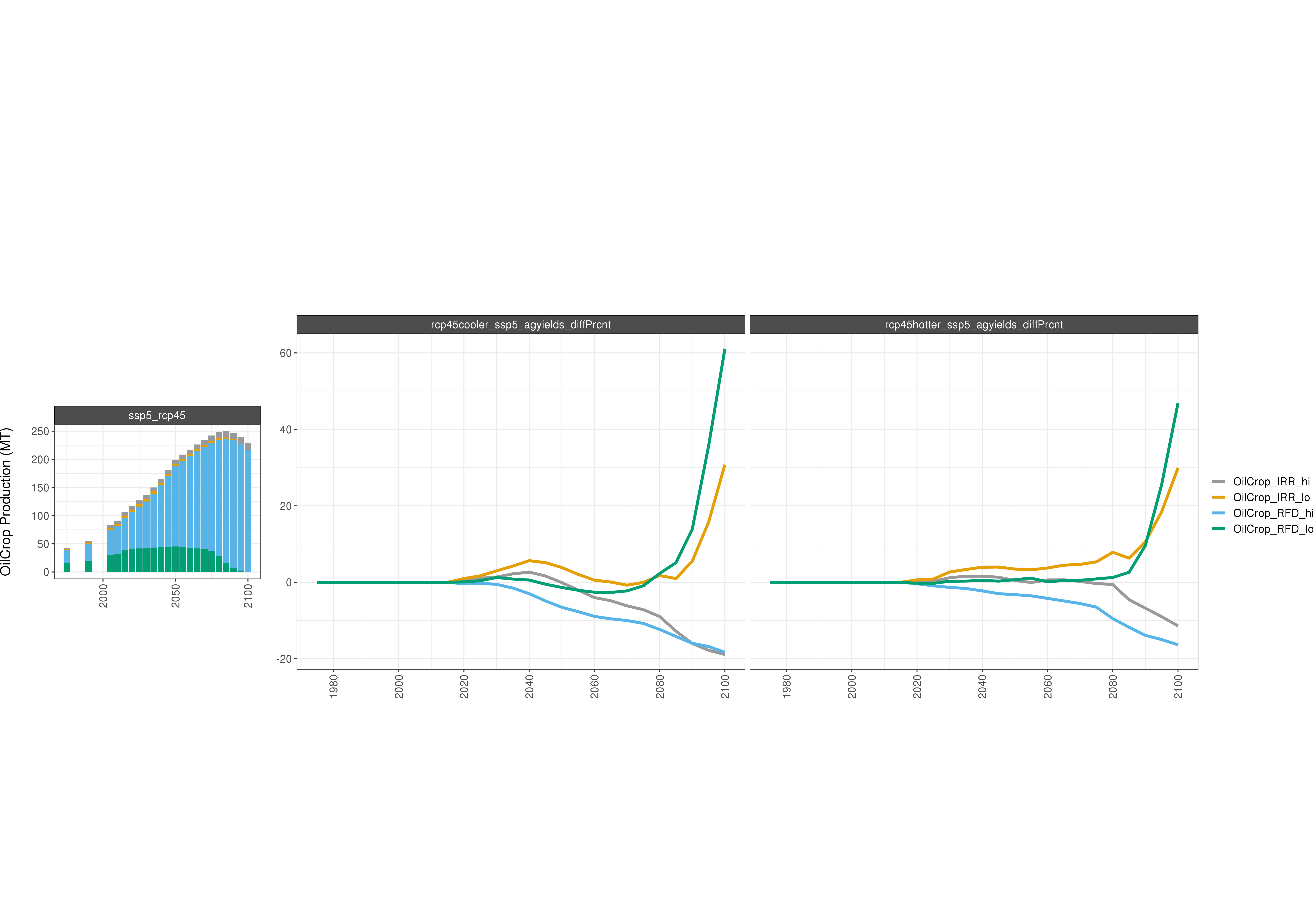
Comparison of GCAM AGLU outputs - percent difference
RCP8.5
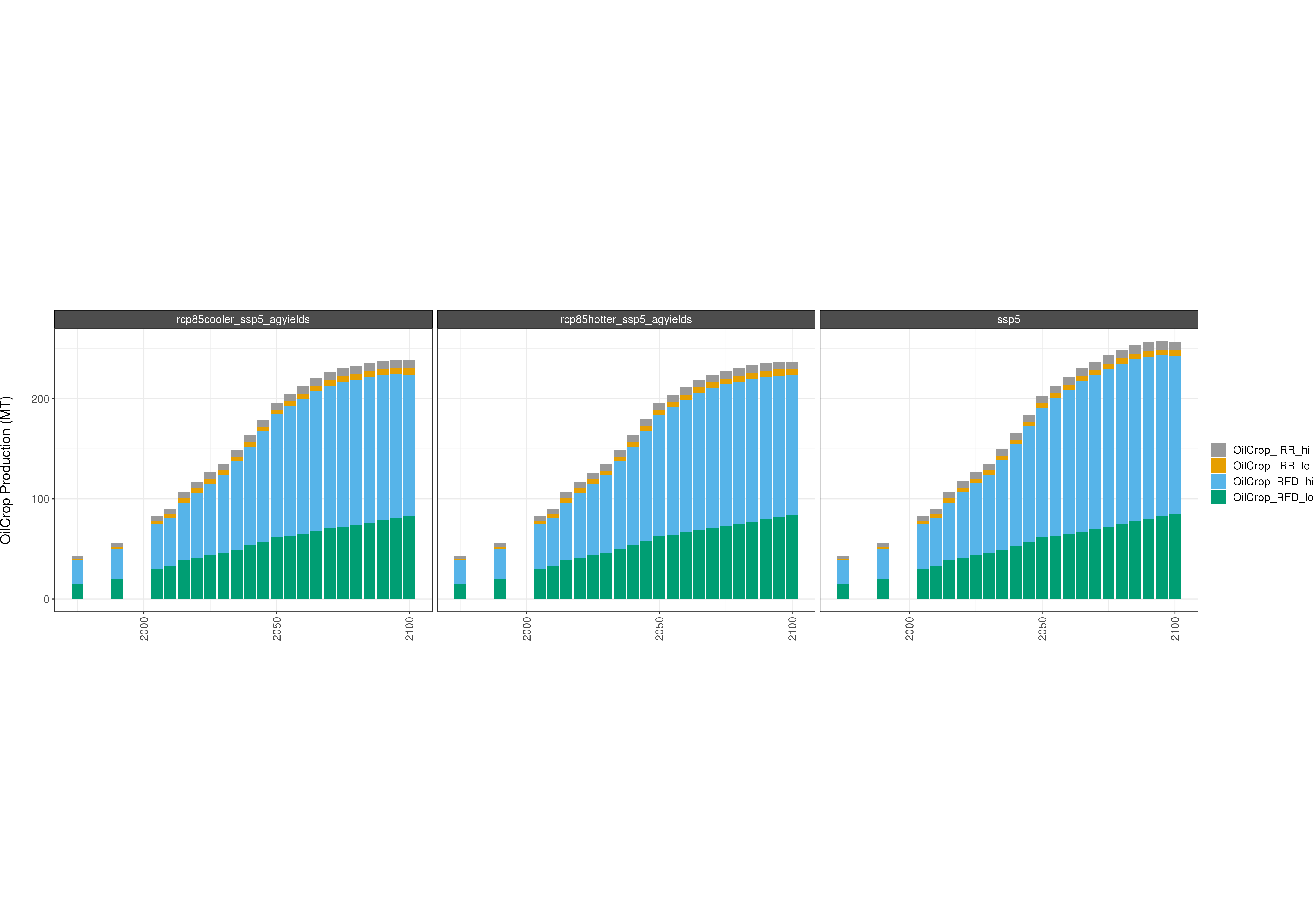
Absolute GCAM AGLU outputs
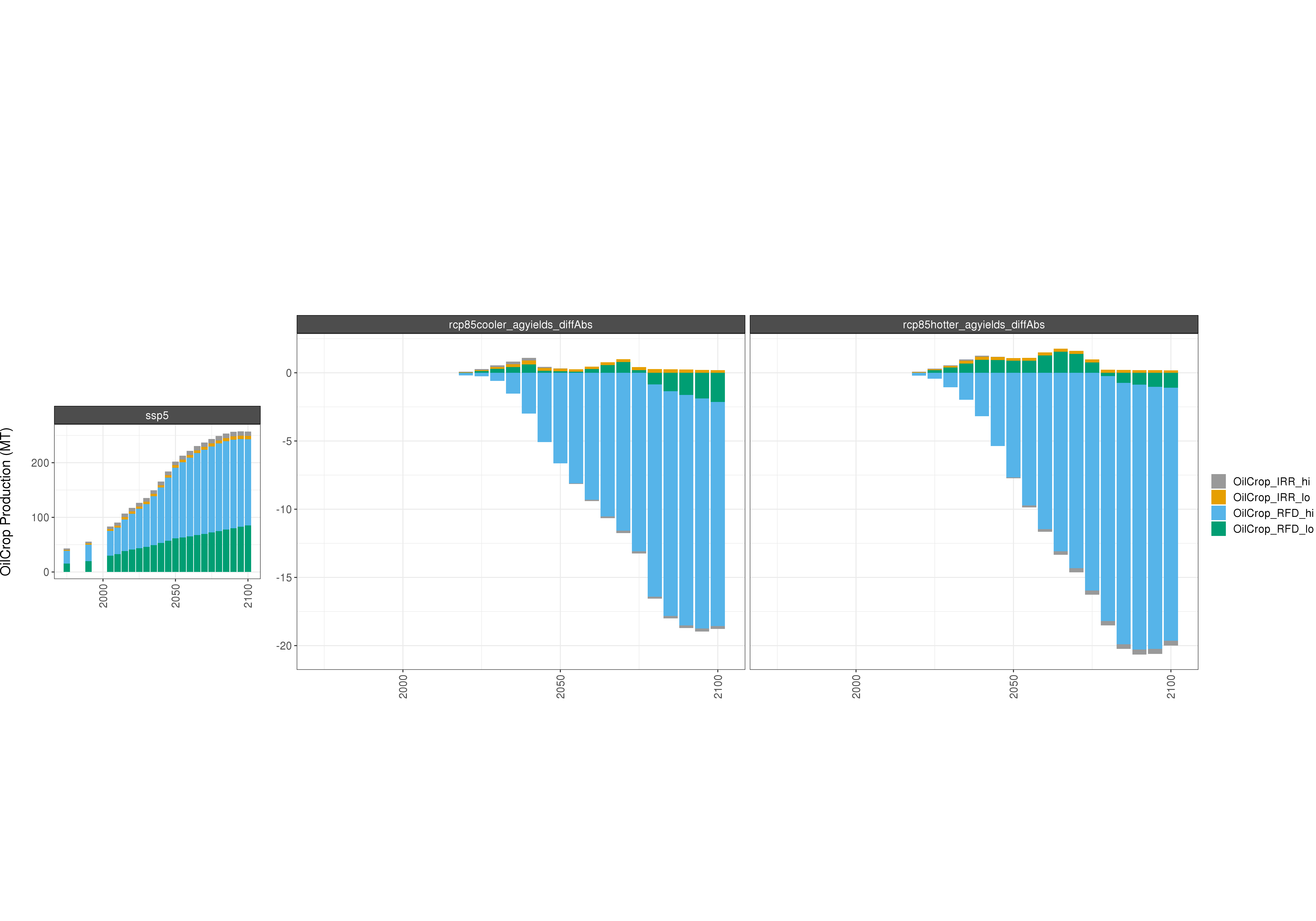
Comparison of GCAM AGLU outputs - absolute difference
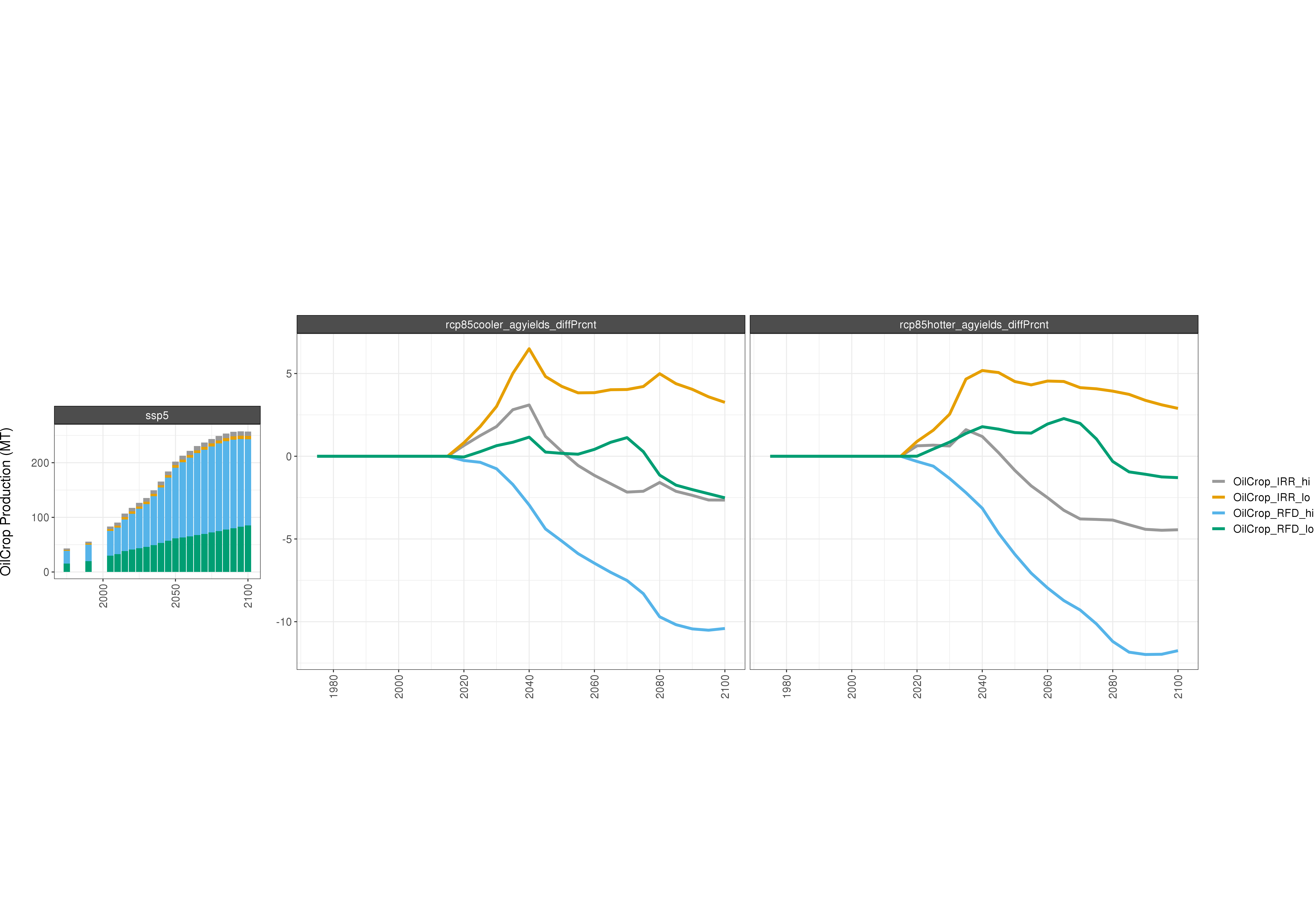
Comparison of GCAM AGLU outputs - percent difference
Rice
RCP4.5
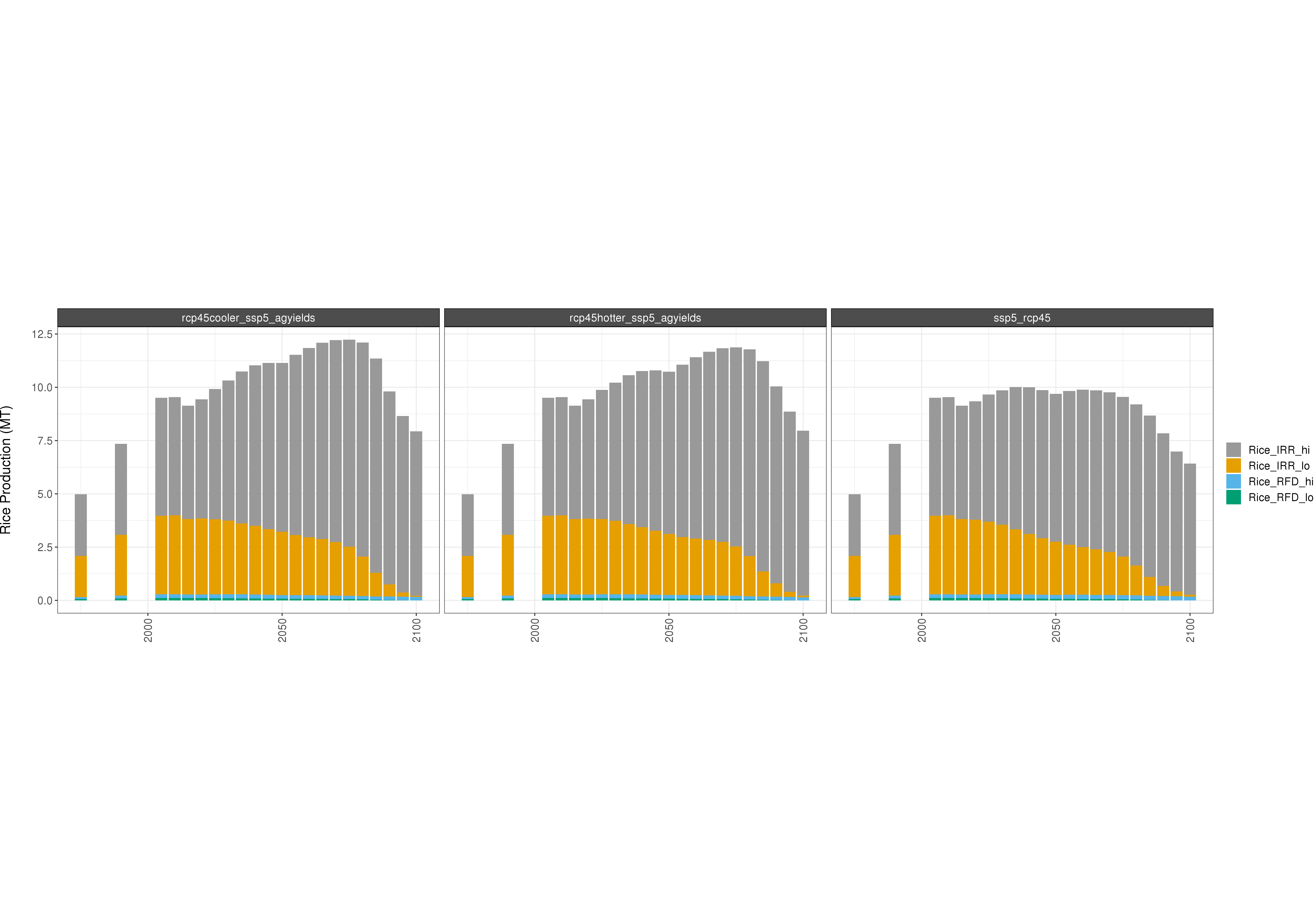
Absolute GCAM AGLU outputs
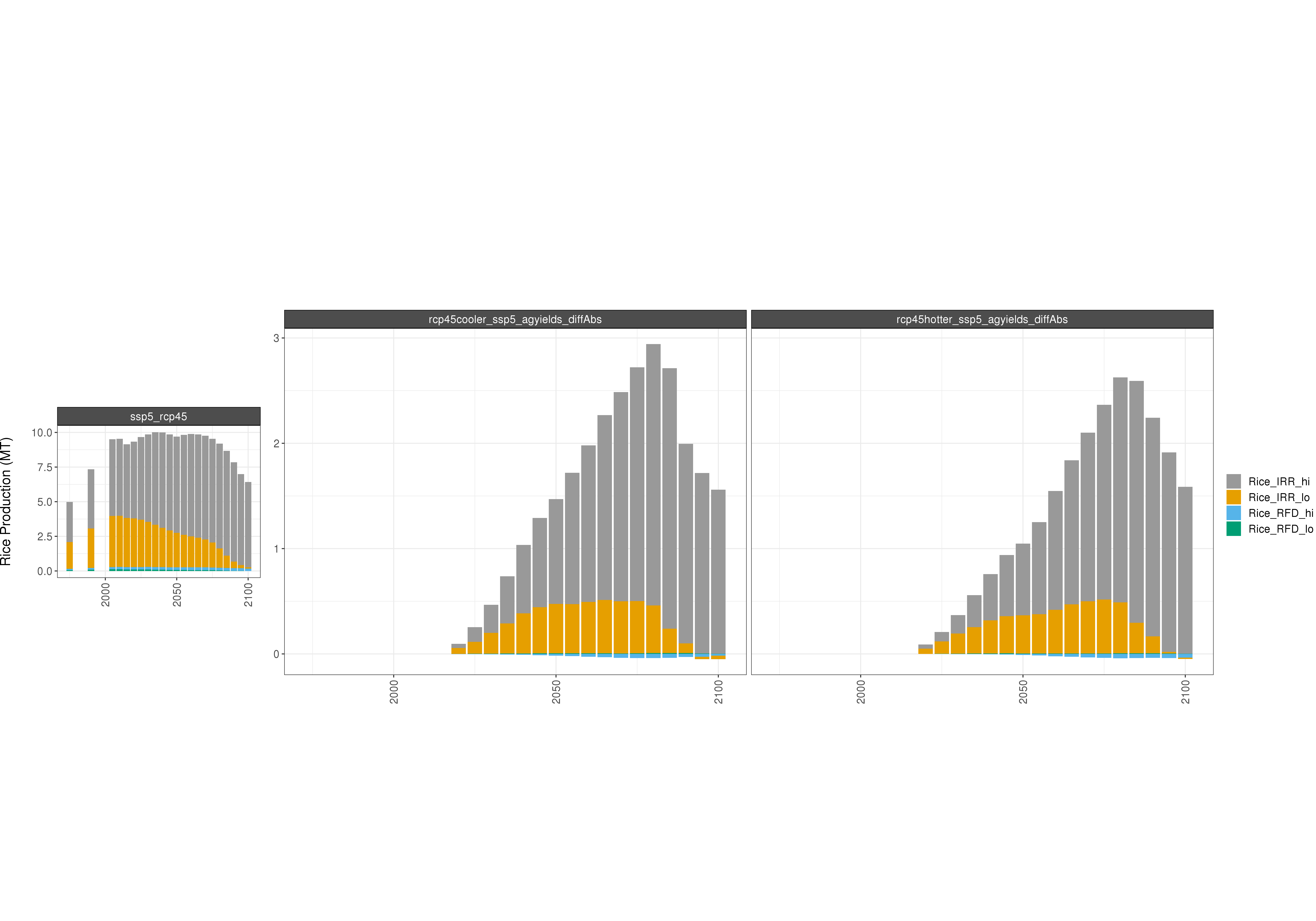
Comparison of GCAM AGLU outputs - absolute difference
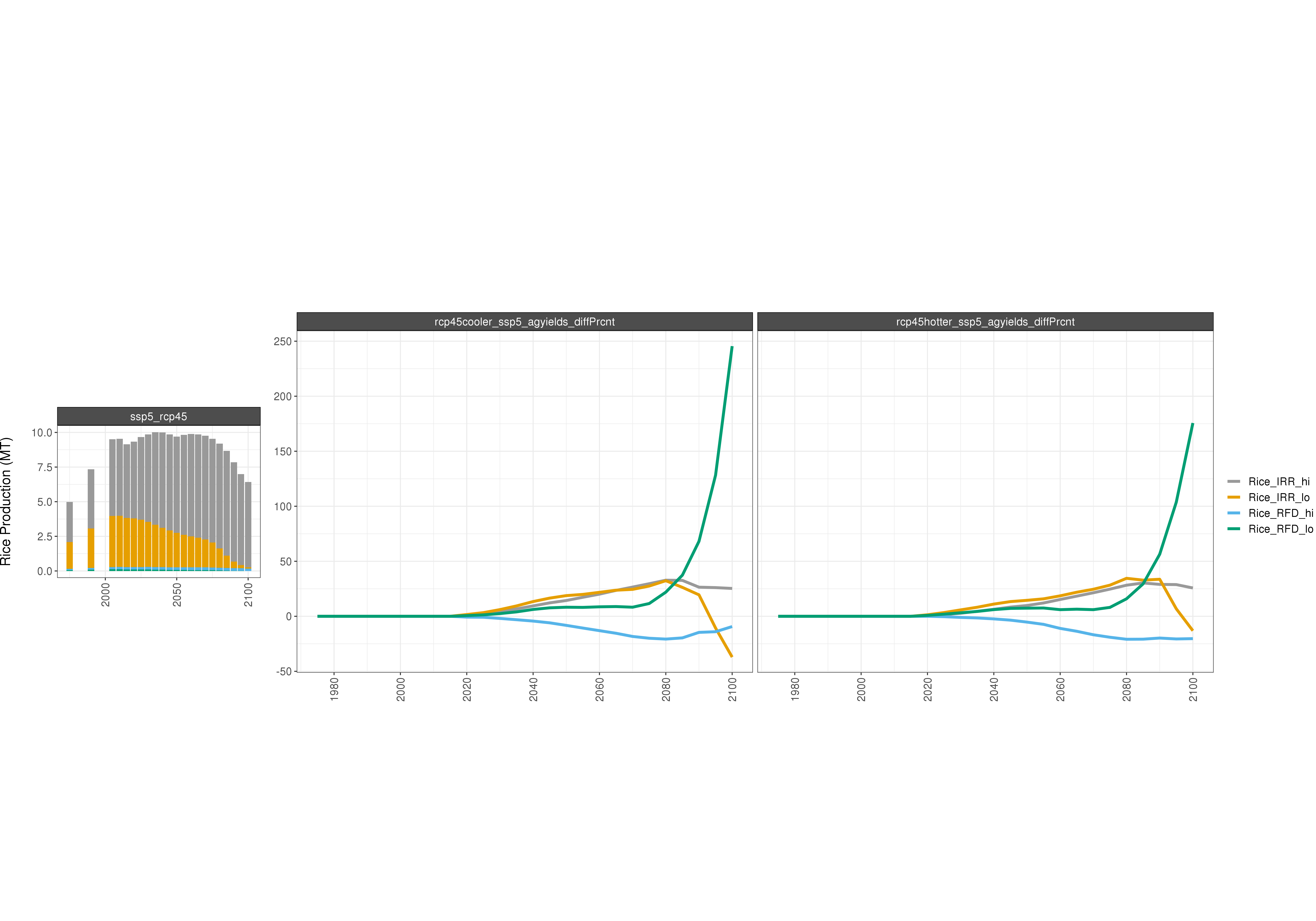
Comparison of GCAM AGLU outputs - percent difference
RCP8.5
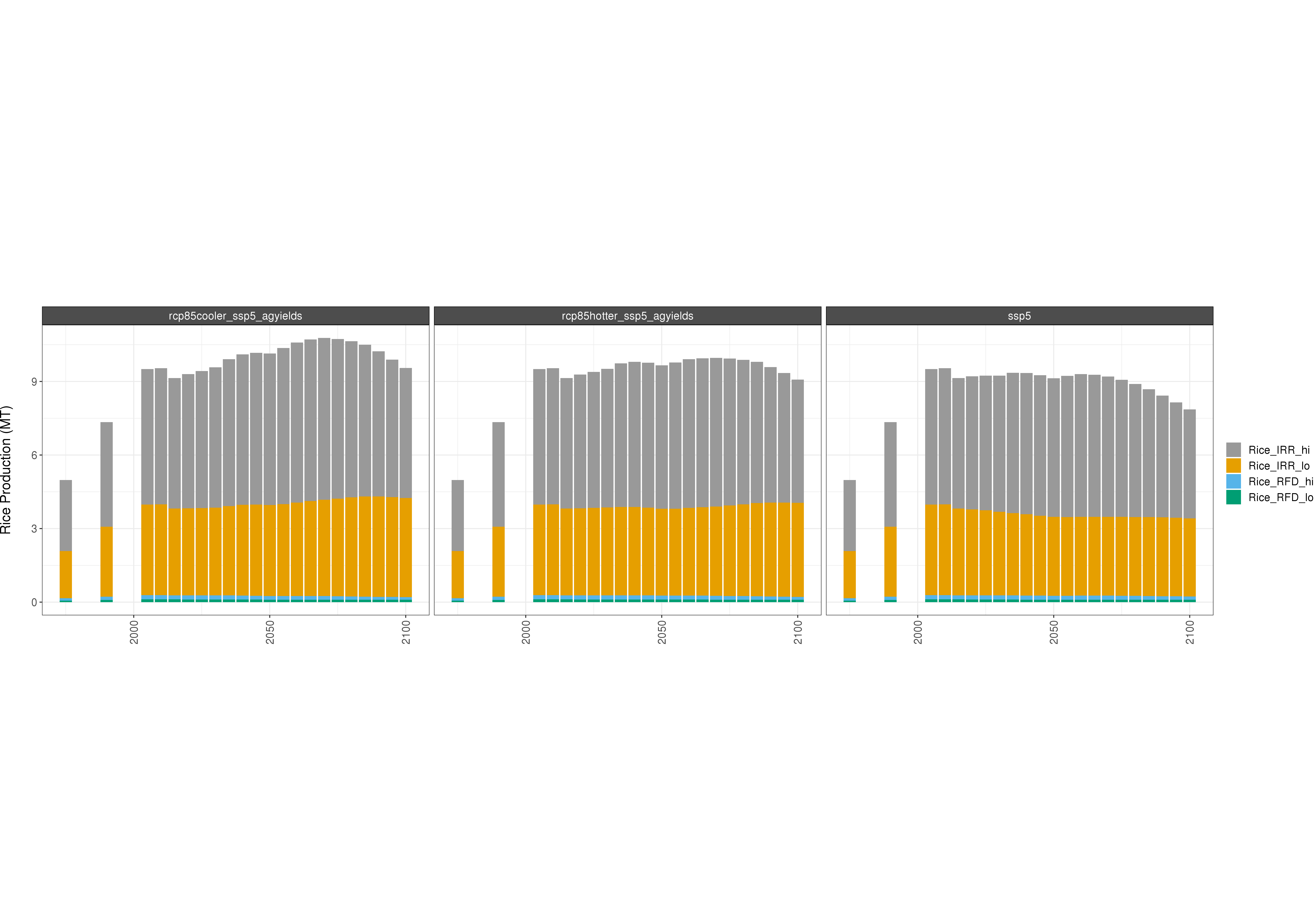
Absolute GCAM AGLU outputs
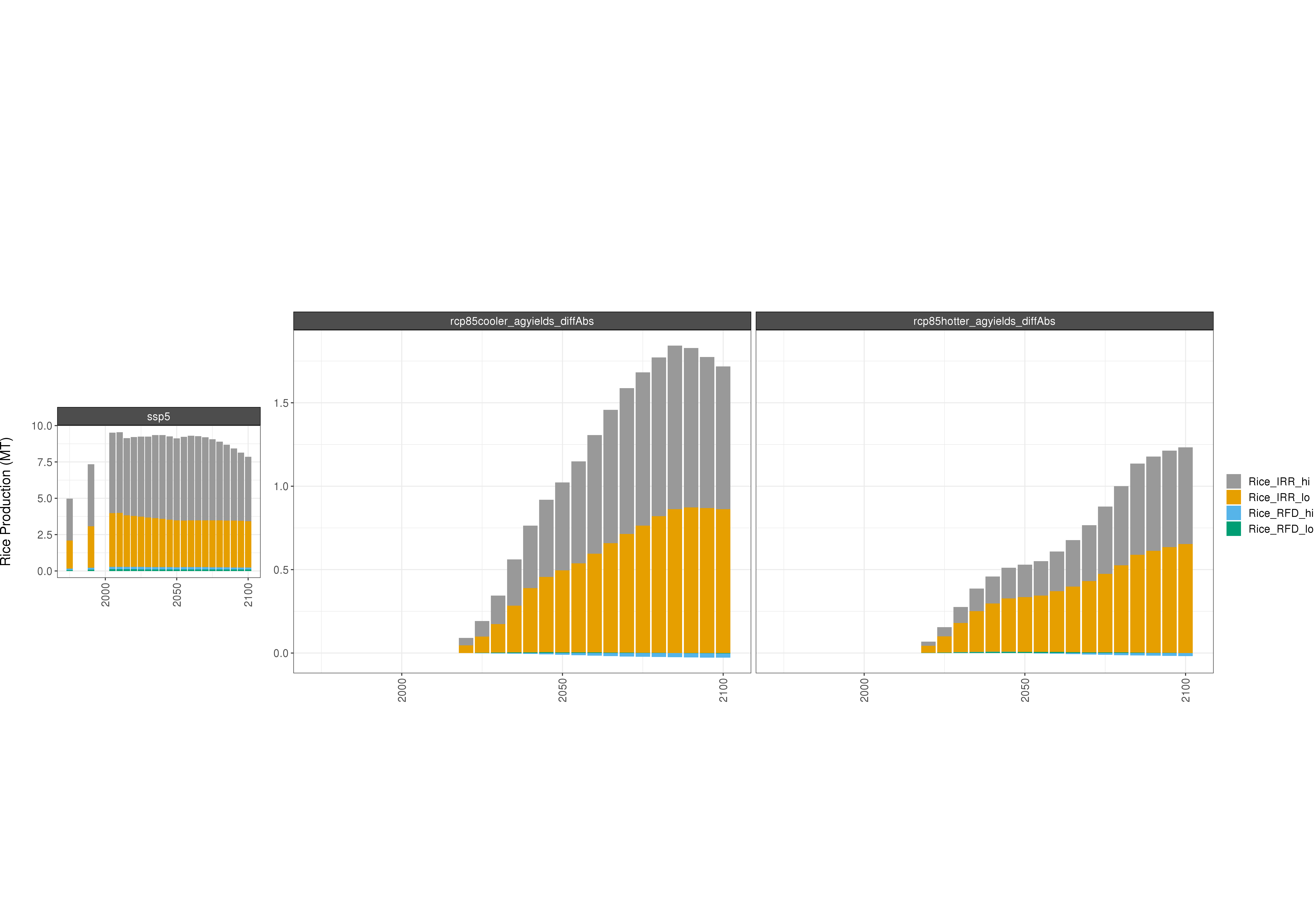
Comparison of GCAM AGLU outputs - absolute difference
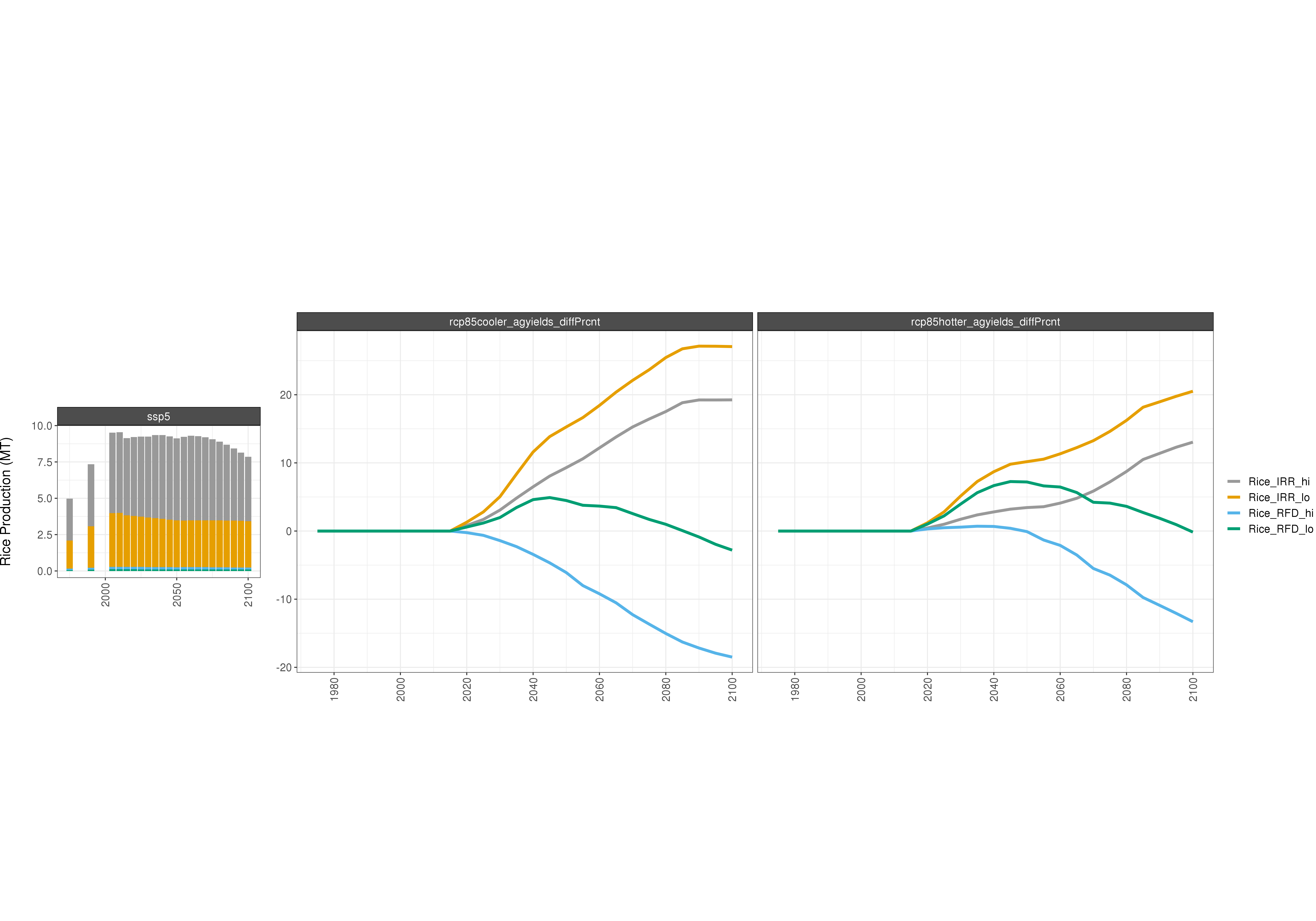
Comparison of GCAM AGLU outputs - percent difference
Wheat
RCP4.5
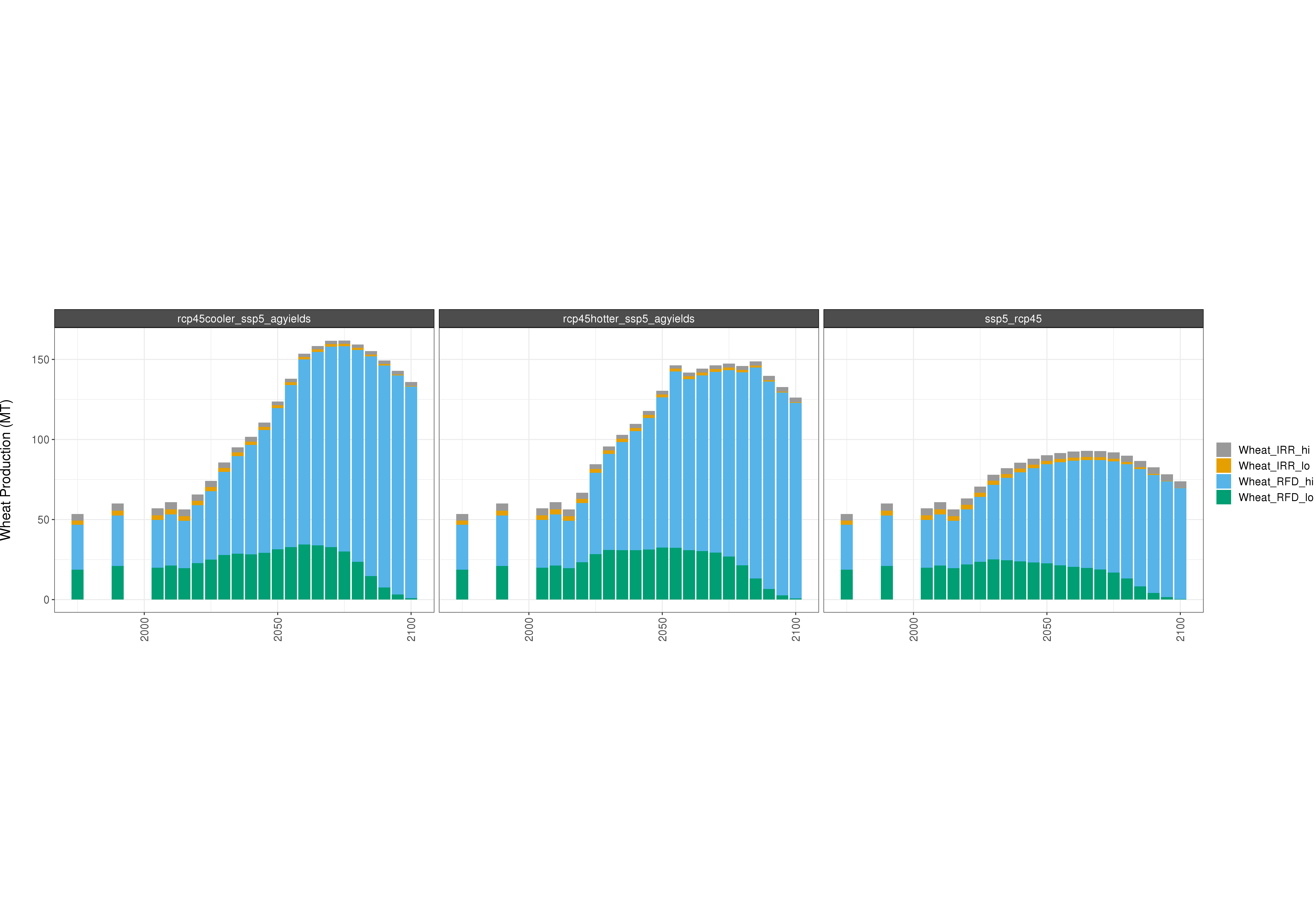
Absolute GCAM AGLU outputs
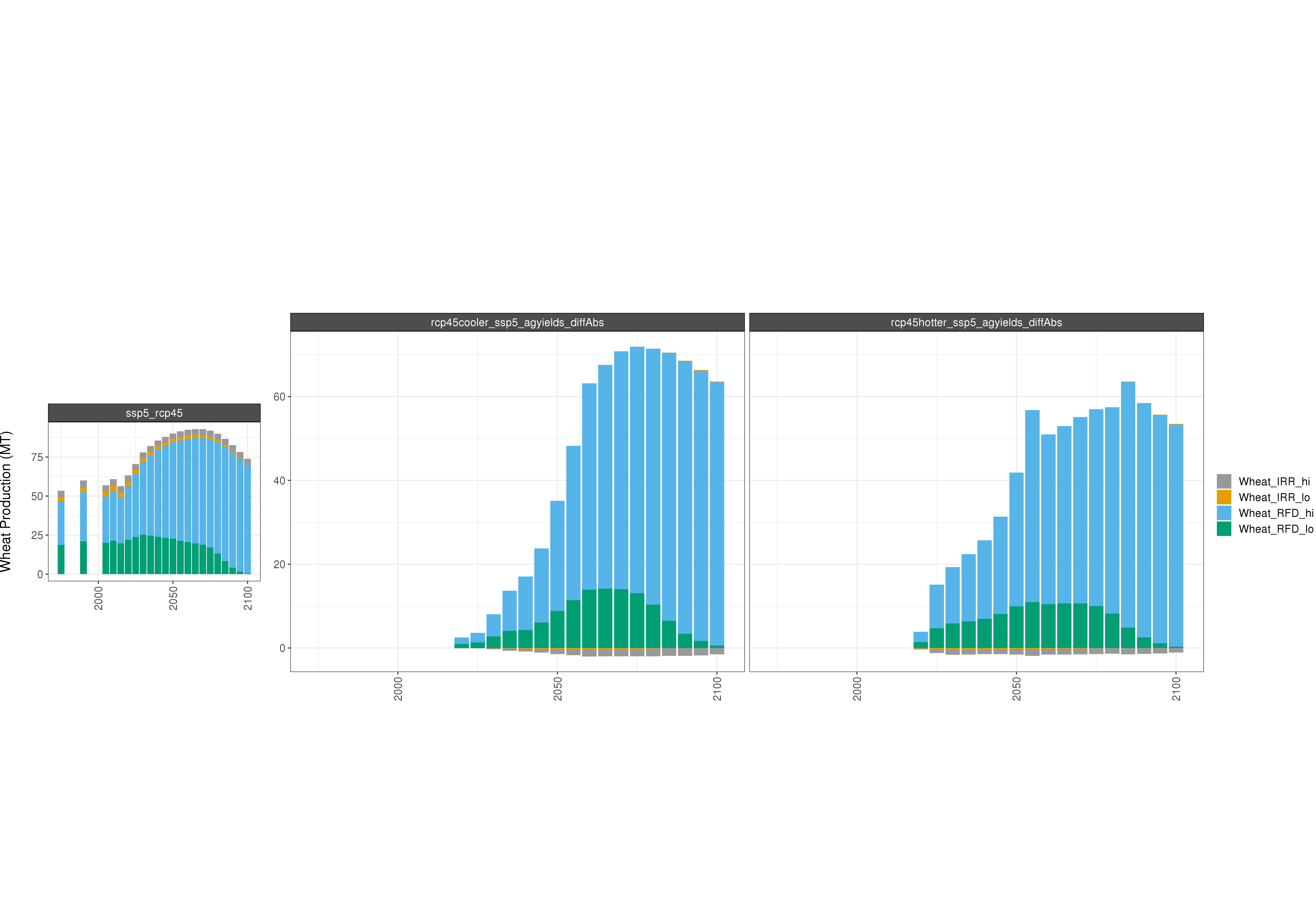
Comparison of GCAM AGLU outputs - absolute difference
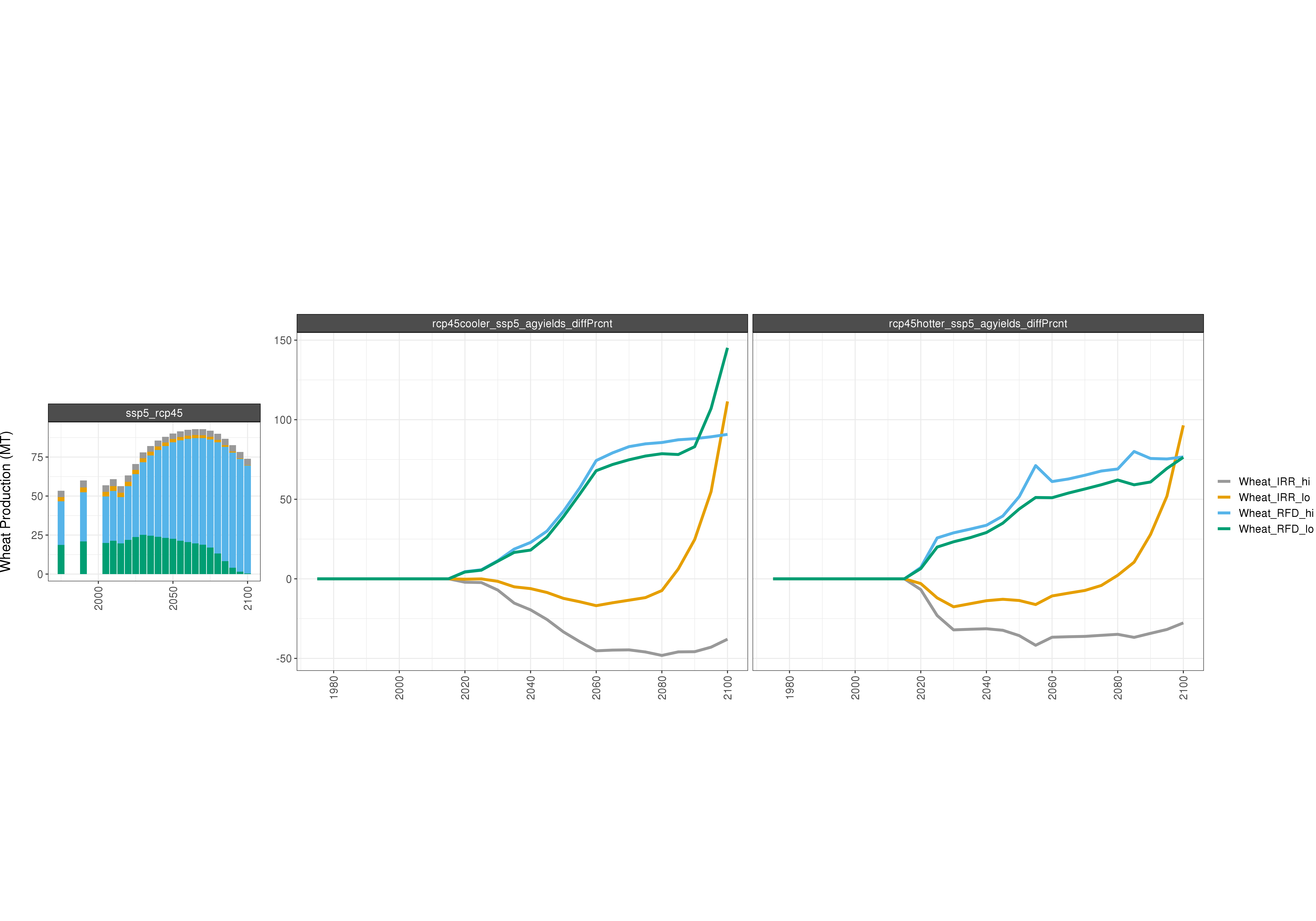
Comparison of GCAM AGLU outputs - percent difference
RCP8.5
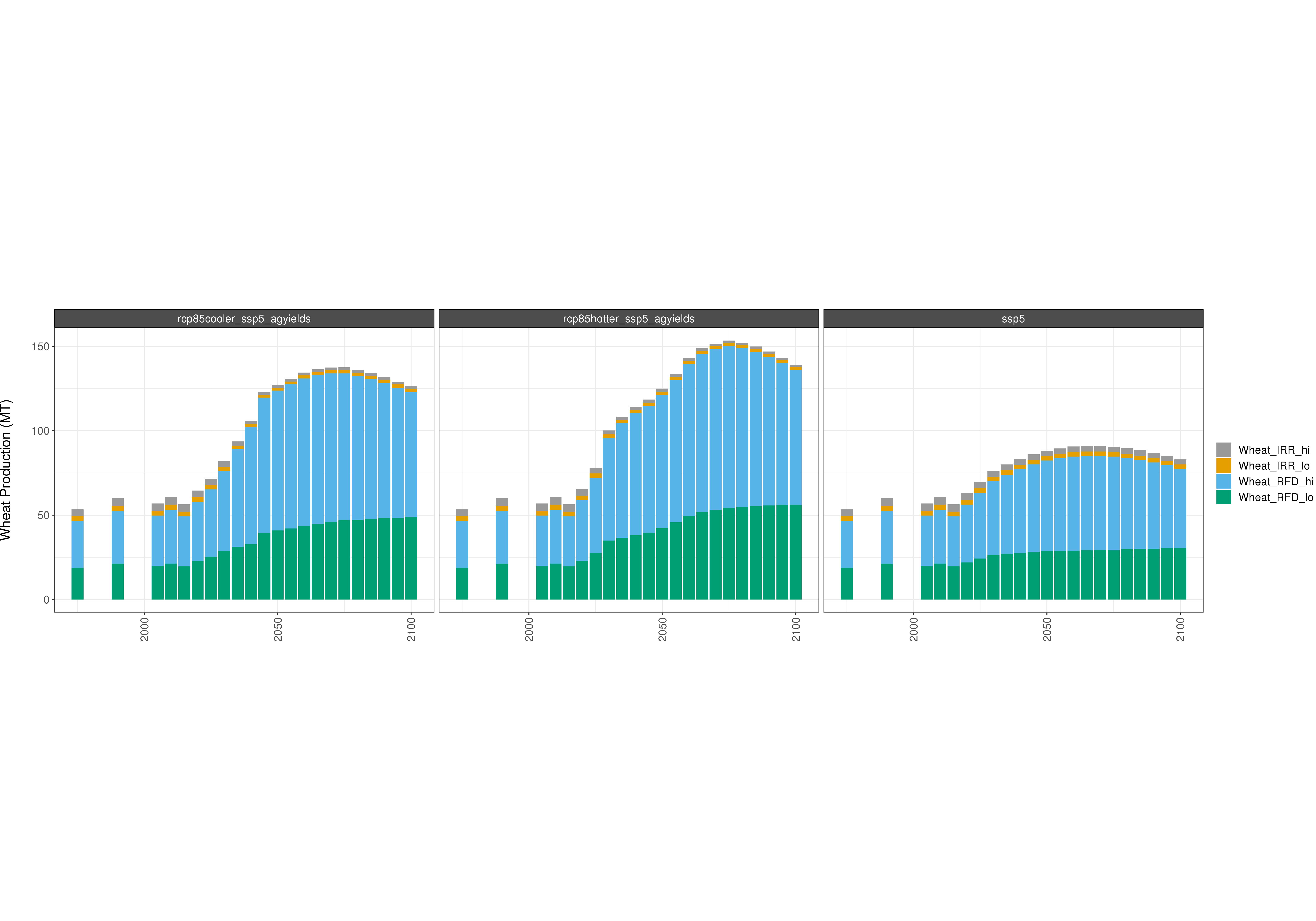
Absolute GCAM AGLU outputs
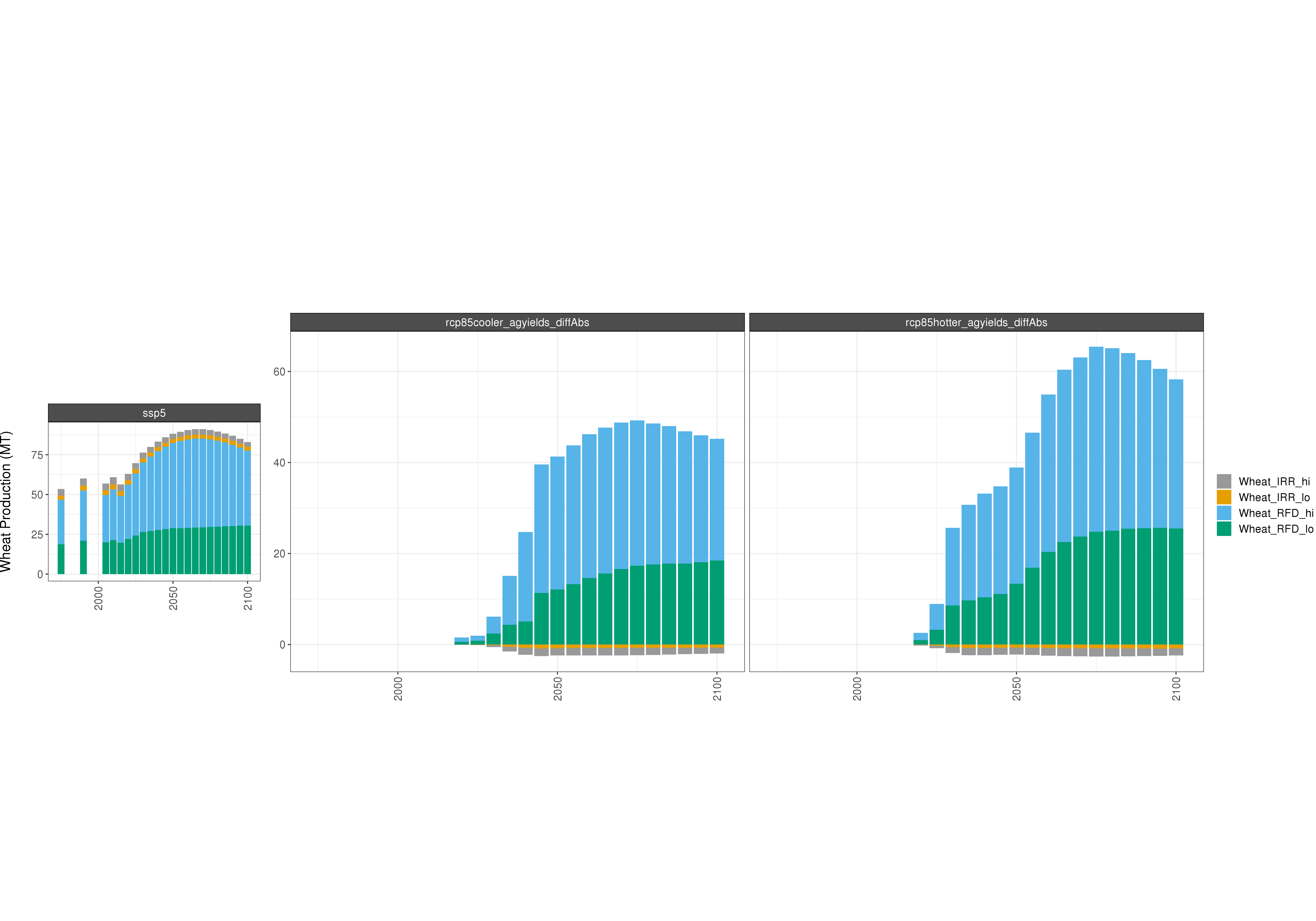
Comparison of GCAM AGLU outputs - absolute difference
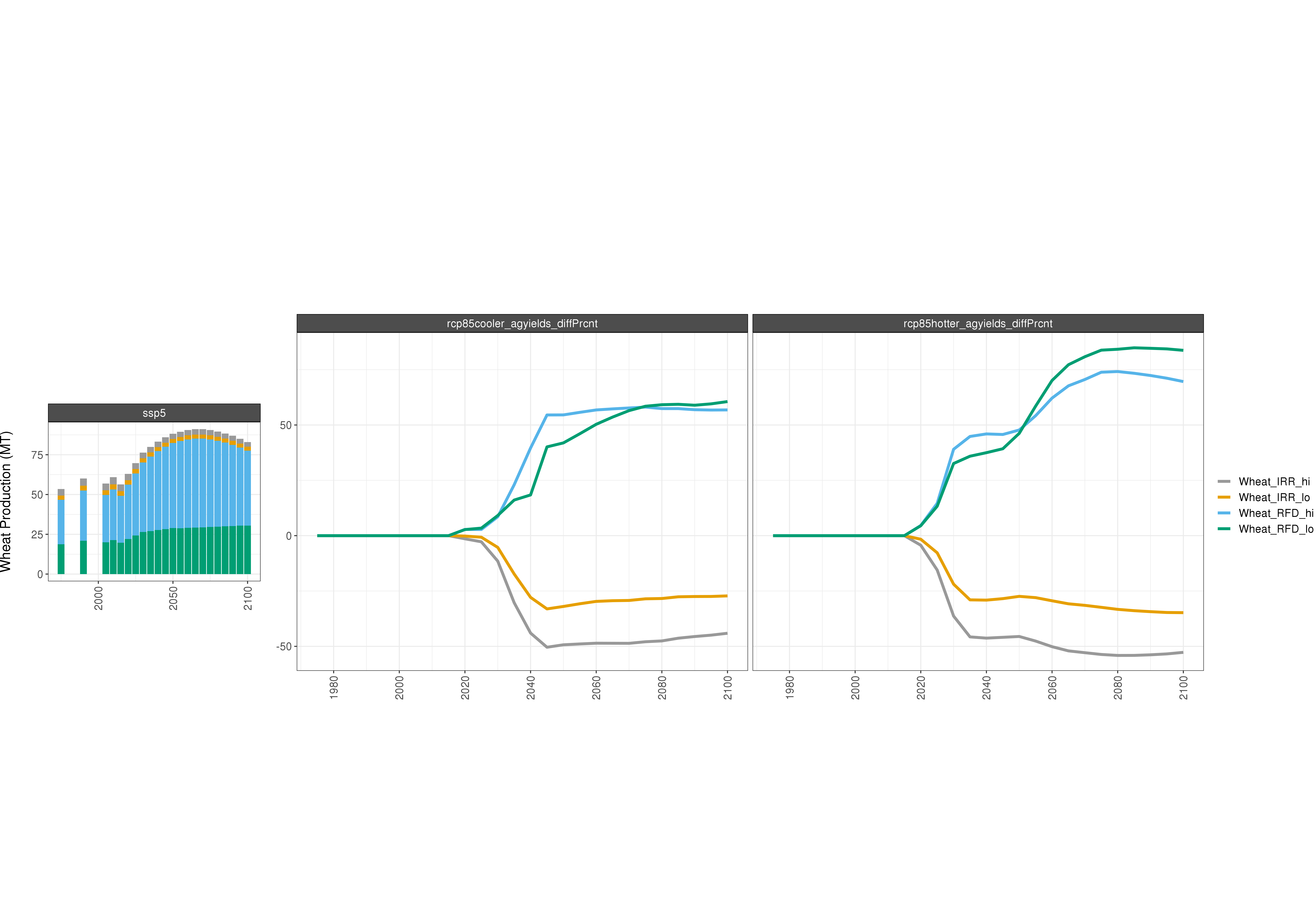
Comparison of GCAM AGLU outputs - percent difference
Emissions
RCP4.5
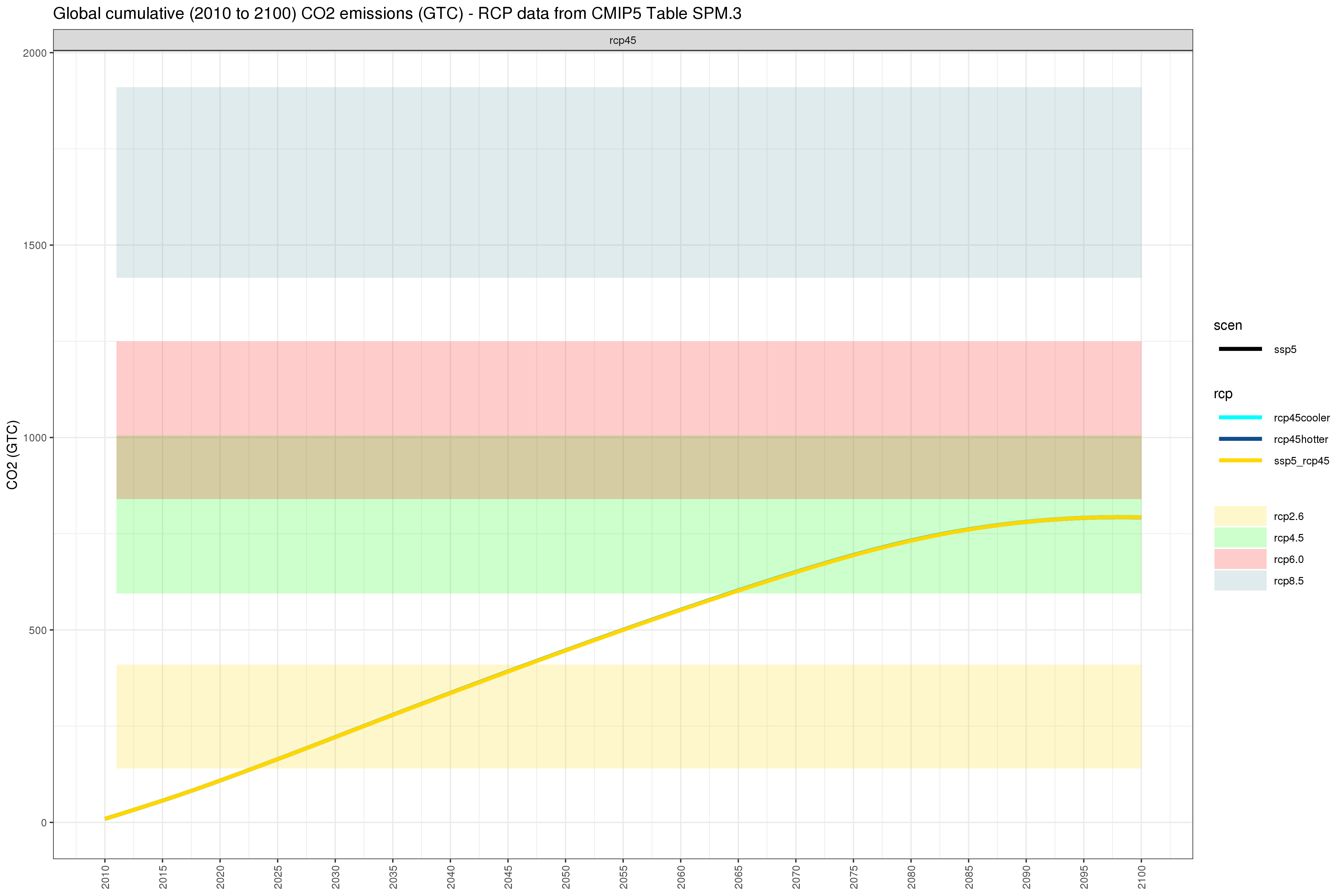
Cumulative global carbon emission pathways under different combinations of SSP3/SSP5 and RCP4.5/RCP8.5
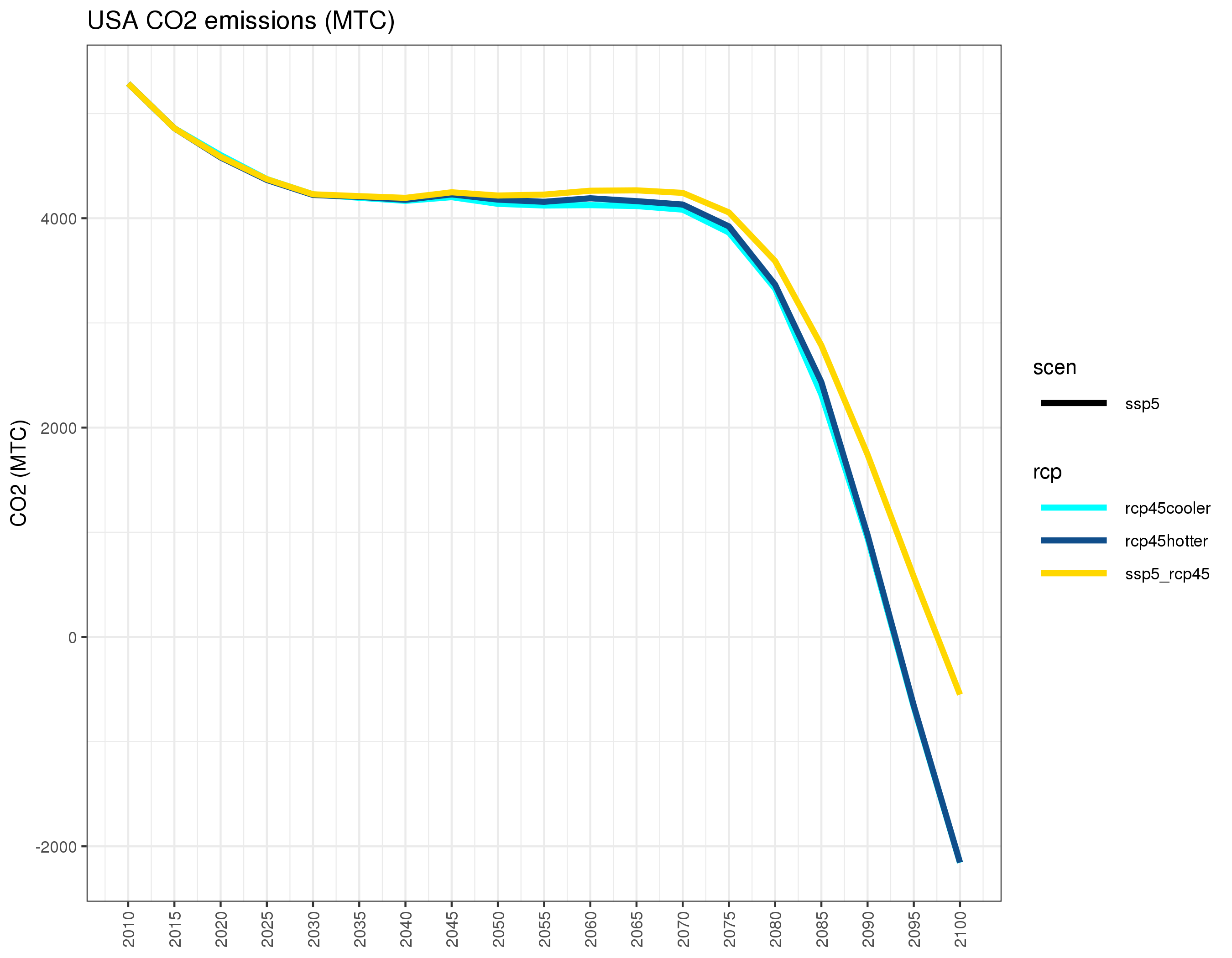
Annual US carbon emissions under different combinations of SSP3/SSP5 and RCP4.5/RCP8.5
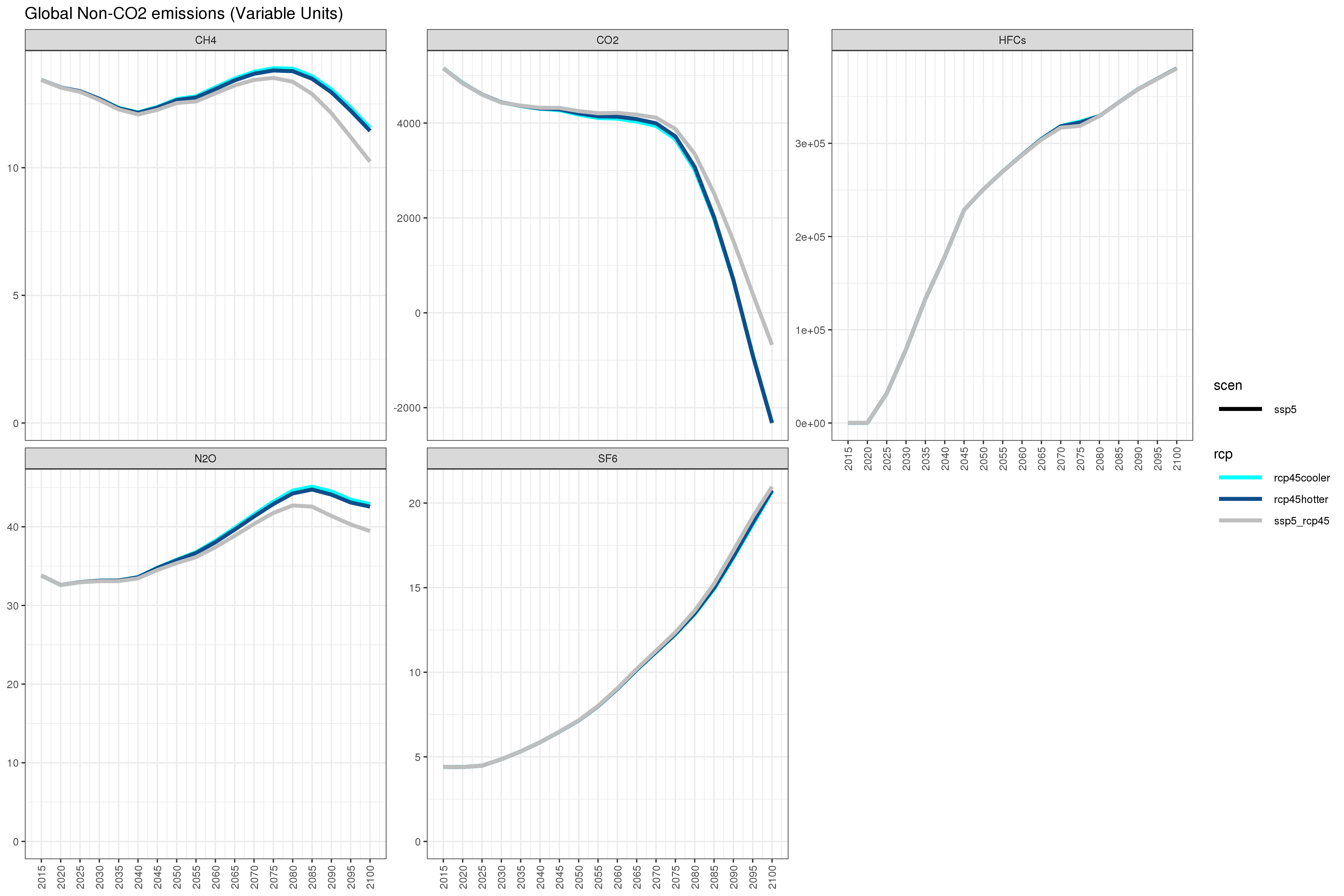
Annual global non-CO2 emissions under different combinations of SSP3/SSP5 and RCP4.5/RCP8.5
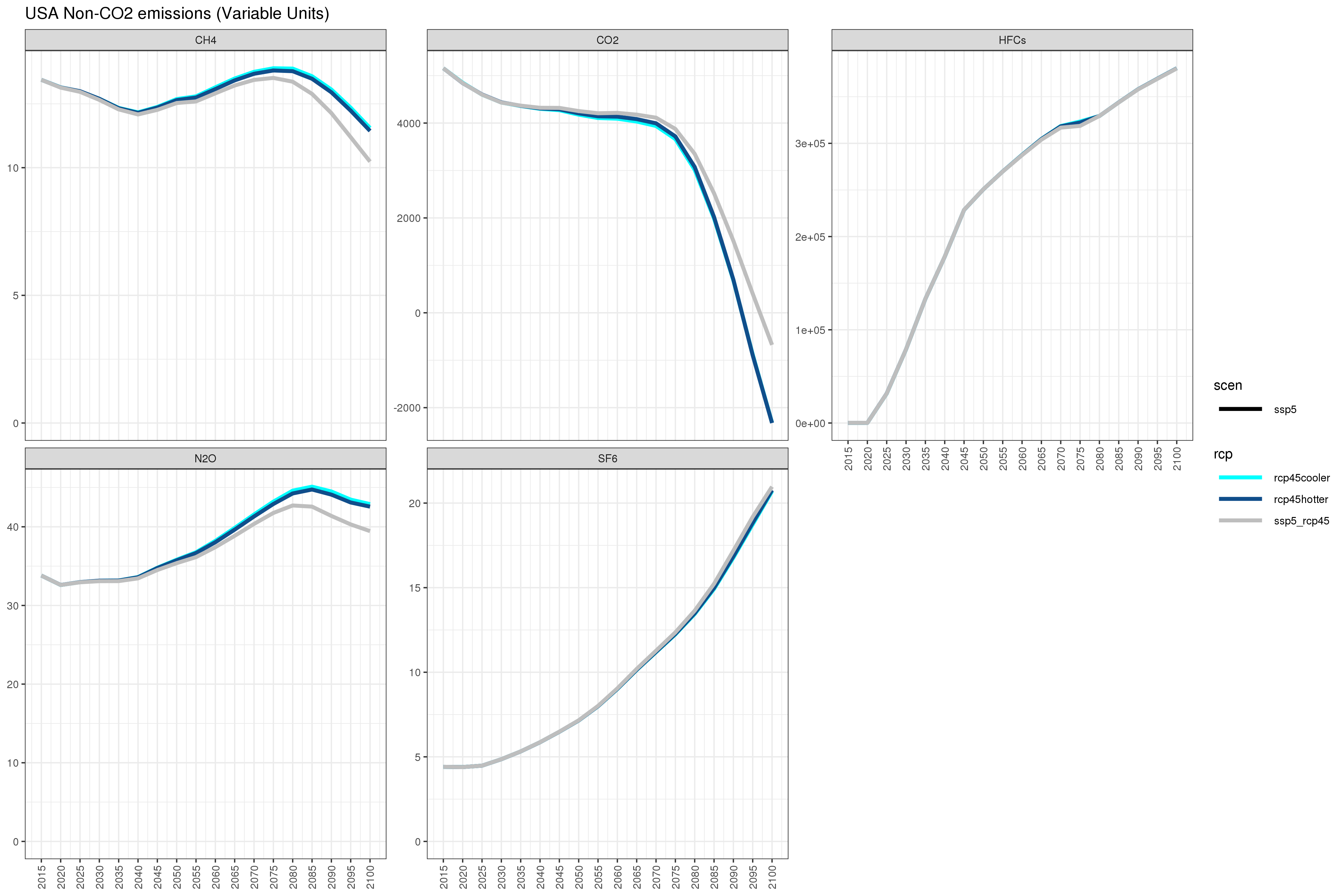
Annual US non-CO2 emissions under different combinations of SSP3/SSP5 and RCP4.5/RCP8.5
RCP8.5
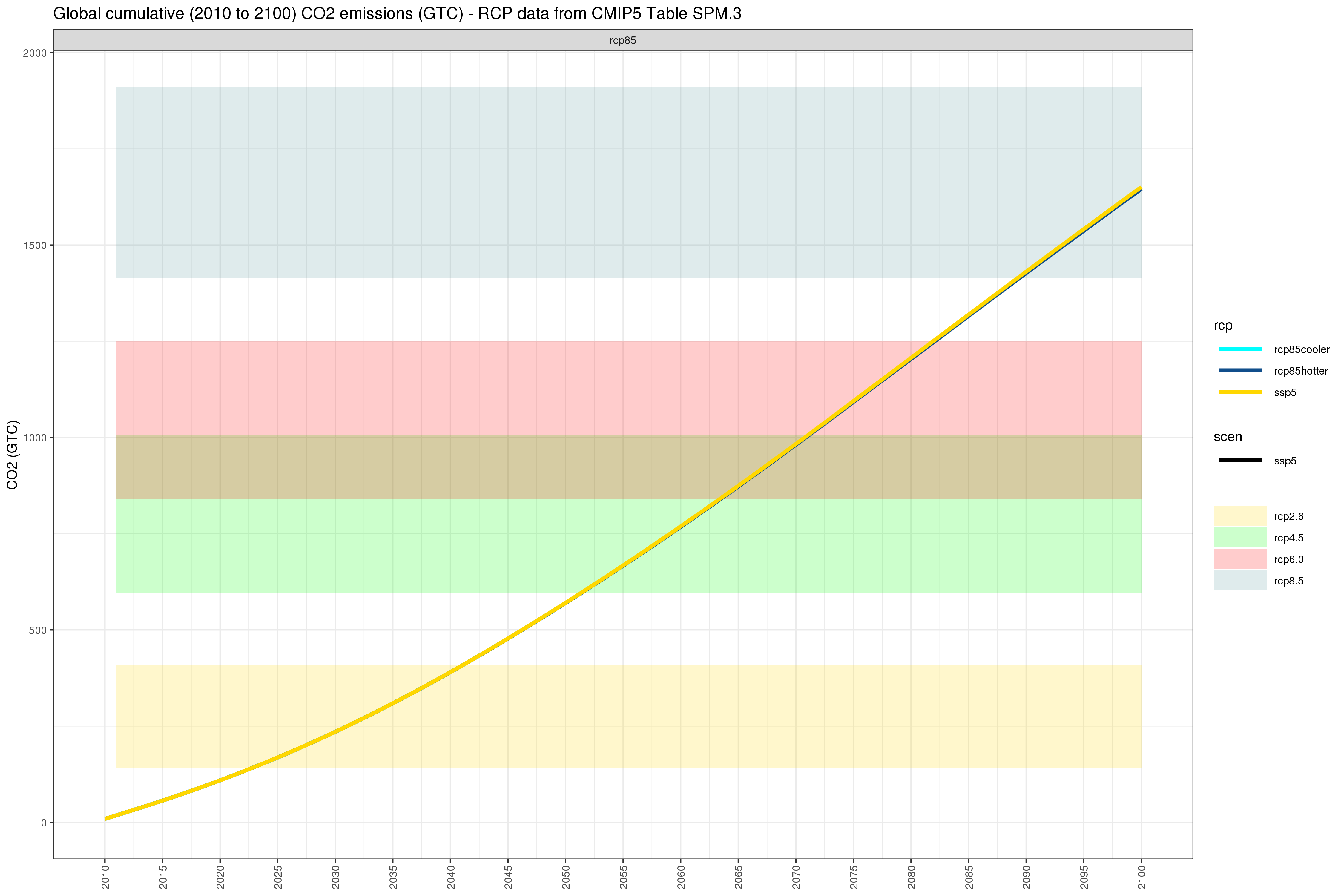
Cumulative global carbon emission pathways under different combinations of SSP3/SSP5 and RCP4.5/RCP8.5
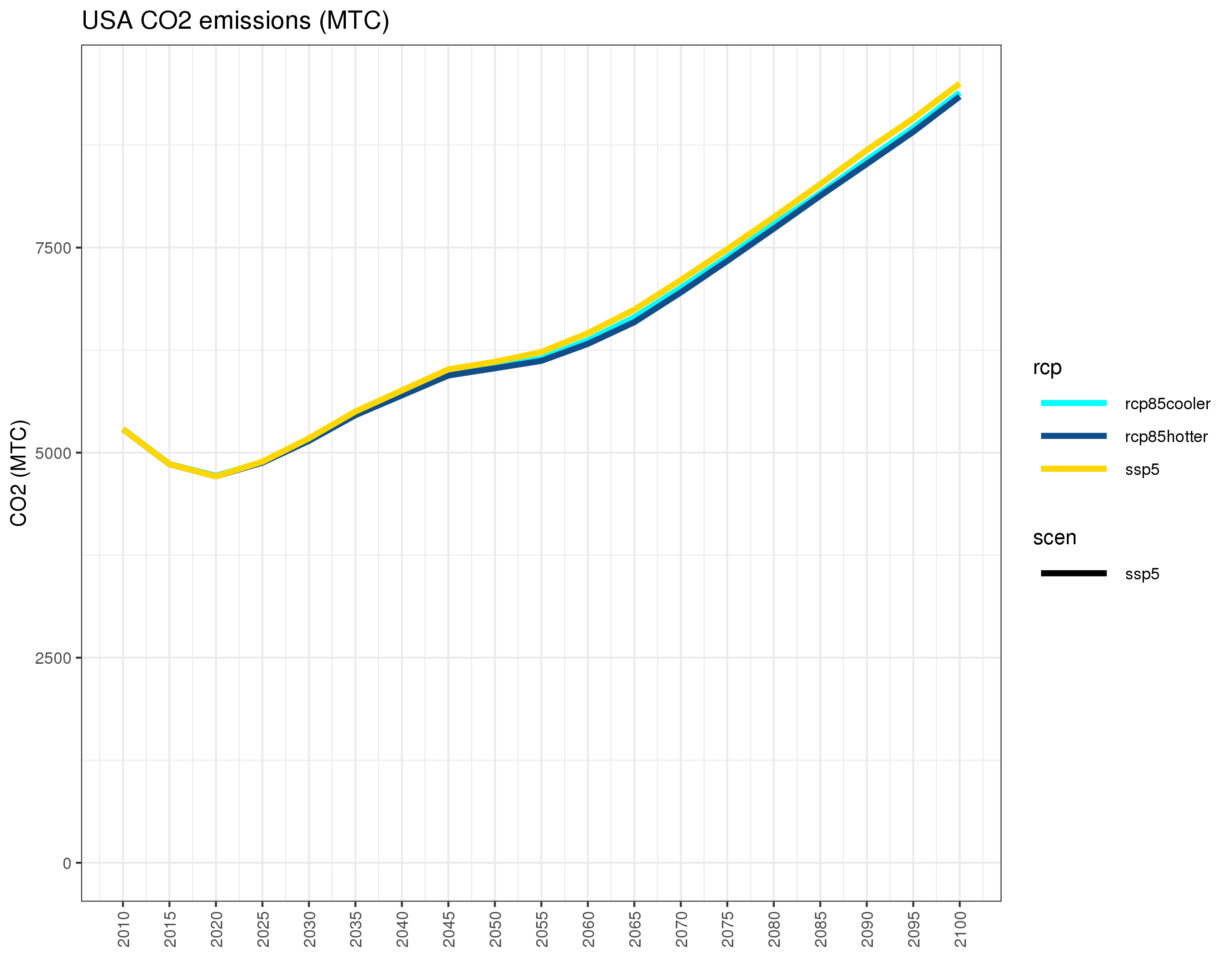
Annual US carbon emissions under different combinations of SSP3/SSP5 and RCP4.5/RCP8.5
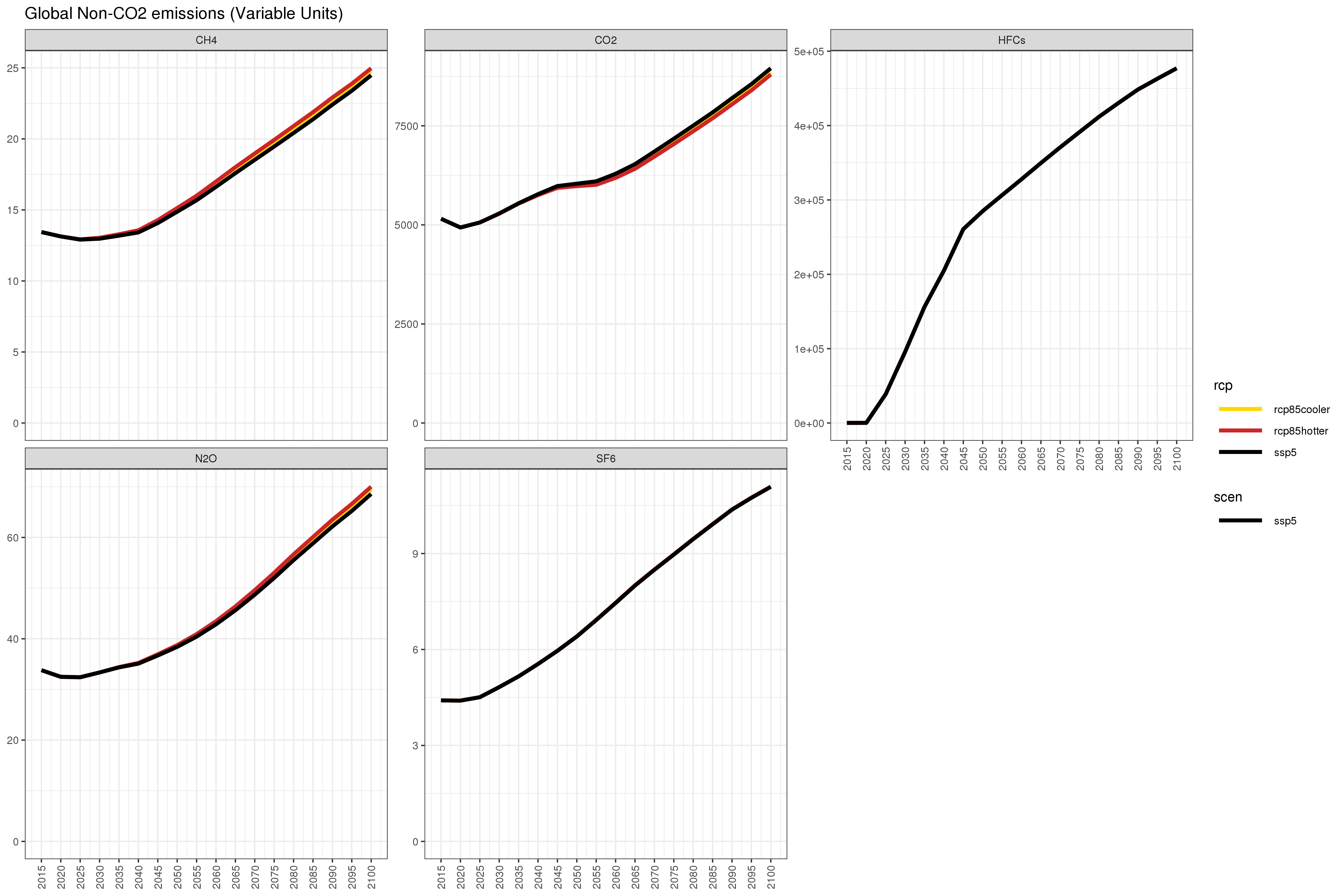
Annual global non-CO2 emissions under different combinations of SSP3/SSP5 and RCP4.5/RCP8.5
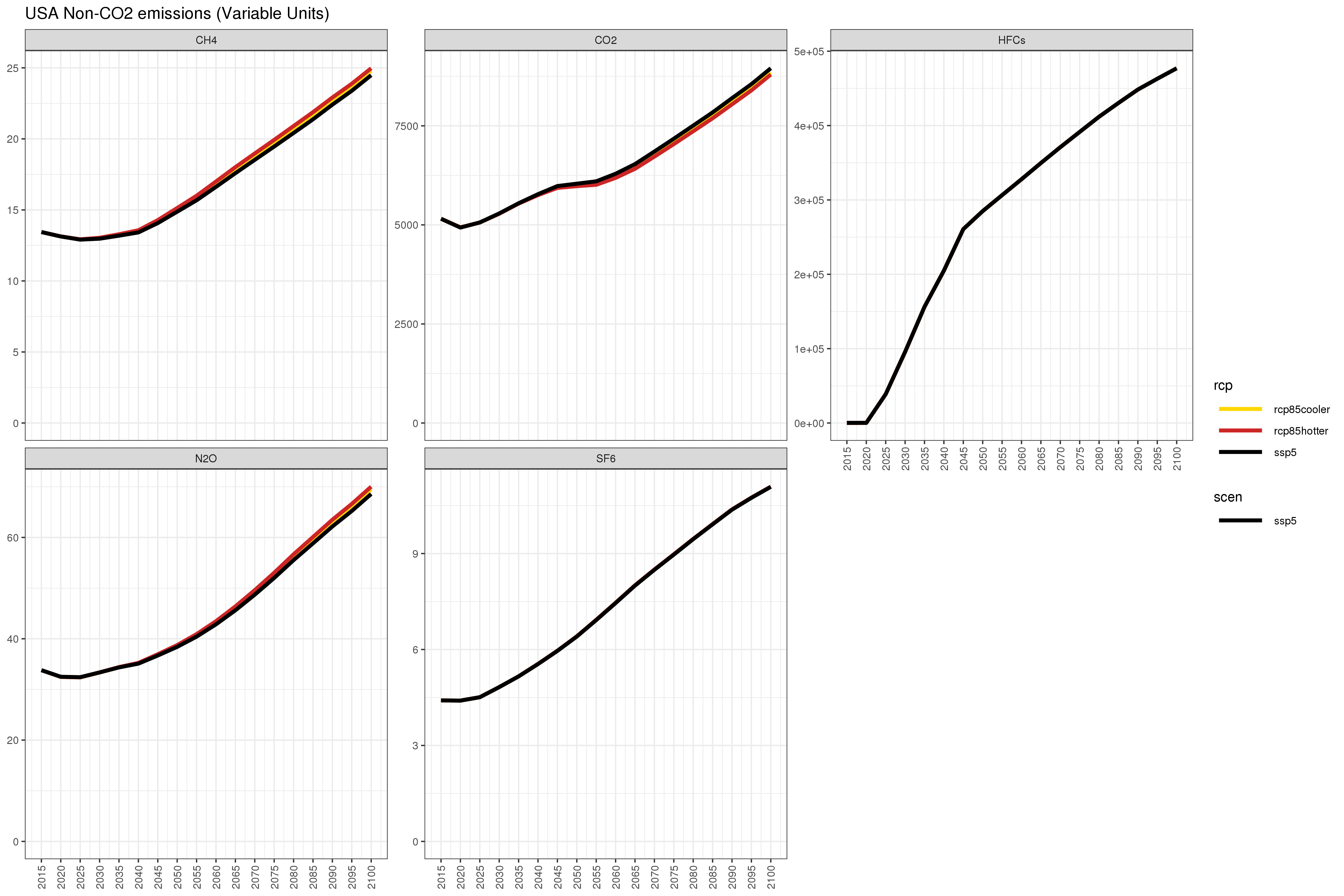
Annual US non-CO2 emissions under different combinations of SSP3/SSP5 and RCP4.5/RCP8.5
Workflows 4/5 - SSPs

Narratives
Full details of the GCAM-USA model used for this study are available in Binsted et al. 20221. The table below provides an overview of key characteristics of Shared Socioeconomic Pathways (SSP) Scenarios used in this study. This study uses SSP3 and SSP5 which is built off the baseline SSP2 scenario with additional files used to modify certain sectors to reflect the characteristics of SSP3 and SSP5. A summary figure from O’Neill et al. 20142 shows the mitigation and adaptation challenges across all the SSPs. Additional details on SSP assumptions in GCAM can be found in the official documentation on the SSP page.
1Binsted, M., Iyer, G., Patel, P., Graham, N. T., Ou, Y., Khan, Z., Kholod, N., Narayan, K., Hejazi, M., Kim, S., Calvin, K., and Wise, M.: GCAM-USA v5.3_water_dispatch: integrated modeling of subnational US energy, water, and land systems within a global framework, Geosci. Model Dev., 15, 2533–2559, https://doi.org/10.5194/gmd-15-2533-2022, 2022
2O’Neill, B.C., Kriegler, E., Riahi, K. et al. A new scenario framework for climate change research: the concept of shared socioeconomic pathways. Climatic Change 122, 387–400 (2014). https://doi.org/10.1007/s10584-013-0905-2
The ‘challenges space’ to be spanned by SSPs divided into five ‘domains’ with one SSP located within each domain, represented by a star (O’Neill et al. 2014)
| Detail | SSP2 | SSP3 | SSP5 |
|---|---|---|---|
| Overall Narrative | Middle of the Road: (Medium challenges to mitigation and adaptation) The world follows a path in which social, economic, and technological trends do not shift markedly from historical patterns. Development and income growth proceeds unevenly, with some countries making relatively good progress while others fall short of expectations. Global and national institutions work toward but make slow progress in achieving sustainable development goals. Environmental systems experience degradation, although there are some improvements and overall the intensity of resource and energy use declines. Global population growth is moderate and levels off in the second half of the century. Income inequality persists or improves only slowly and challenges to reducing vulnerability to societal and environmental changes remain. | Regional Rivalry: (High challenges to mitigation and adaptation) A resurgent nationalism, concerns about competitiveness and security, and regional conflicts push countries to increasingly focus on domestic or, at most, regional issues. Policies shift over time to become increasingly oriented toward national and regional security issues. Countries focus on achieving energy and food security goals within their own regions at the expense of broader-based development. Investments in education and technological development decline. Economic development is slow, consumption is material-intensive, and inequalities persist or worsen over time. Population growth is low in industrialized and high in developing countries. A low international priority for addressing environmental concerns leads to strong environmental degradation in some regions. | Fossil-fueled Development: (High challenges to mitigation, low challenges to adaptation) This world places increasing faith in competitive markets, innovation and participatory societies to produce rapid technological progress and development of human capital as the path to sustainable development. Global markets are increasingly integrated. There are also strong investments in health, education, and institutions to enhance human and social capital. At the same time, the push for economic and social development is coupled with the exploitation of abundant fossil fuel resources and the adoption of resource and energy intensive lifestyles around the world. All these factors lead to rapid growth of the global economy, while global population peaks and declines in the 21st century. Local environmental problems like air pollution are successfully managed. There is faith in the ability to effectively manage social and ecological systems, including by geo-engineering if necessary. |
| Population |
|
|
|
| Economic Growth |
|
|
|
| Emissions |
|
|
|
| Technology & consumption patterns in the US |
|
|
|
Emissions pathways

We model two emissions pathways, RCP8.5 and RCP4.5. RCP8.5 is the default pathway in GCAM-USA. Thus, no modifications to the source code are required in order to run an RCP8.5 scenario. For RCP4.5, we impose a global CO2 emissions constraint. This emissions constraint in turn is based on the GCAM core model, release version 5.4 (publicly available here), a global model differentiating 32 world regions. Specifically, we run GCAM 5.4 in target finder mode.
Running GCAM 5.4 in target finder mode
As described in the GCAM
online documentation on GitHub, running GCAM 5.4 in target finder
mode requires enabling (setting to 1) the find-path option
in the respective configuration file, which is
gcam-core/exe/configuration_RCP45.xml when running an
RCP4.5 scenario:
"<Value name="find-path">1</Value>"
Then, the configuration file must be called in
gcam-core/exe/run-gcam.sh as follows:
gcam.exe -C configuration_RCP45.xml
Once the model run is finished, results can be extracted using the
model interface:
gcam-core/ModelInterface/run-model-interface.bat.
Specifically, we query “CO2 emissions by region” and “LUC emissions by
region” for the region “Global” and sum up the values for each year in a
separate spreadsheet.
The figure below illustrates the final CO2 pathway, as well as the corresponding CO2-price pathway and the resulting radiative forcing:

Overview of the RCP4.5 emissions pathway in GCAM.
Implementing CO2 Emissions Constraint In GCAM-USA
The resulting pathway of CO2 emissions from land use and
energy is then used as a CO2 emissions constraint in
GCAM-USA. Therefore, we use a file named
/pic/projects/im3/gcamusa/gcam-usa-im3/input/policy/global_CO2_constraint.xml
into which we input the CO2 emissions values calculated by
GCAM 5.4 (as described above) as constraints. We also add an
accompanying file called
/pic/projects/im3/gcamusa/gcam-usa-im3/input/policy/global_CO2_link.xml
which performs additional required tasks.
We then create a set of new configuration files in
/pic/projects/im3/gcamusa/gcam-usa-im3/exe/ based on
existing ones:
| Exisitng.file | New.file |
|---|---|
| configuration_rcp85cooler_ssp3_rcp85gdp_runoff.xml | configuration_rcp45cooler_ssp3_rcp45gdp_runoff.xml |
| configuration_rcp85hotter_ssp3_rcp85gdp_runoff.xml | configuration_rcp45hotter_ssp3_rcp45gdp_runoff.xml |
| configuration_rcp85cooler_ssp5_runoff.xml | configuration_rcp45cooler_ssp5_runoff.xml |
| configuration_rcp85hotter_ssp5_runoff.xml | configuration_rcp45hotter_ssp5_runoff.xml |
The main difference in our new configuration files is the addition of
the following lines of code immediately after
cal_broyden_config.xml is called:
<!--POLICY ADD ONS-->
<Value name = "global_CO2_constraint">../input/policy/global_CO2_constraint.xml</Value>
<Value name = "global_CO2_link">../input/policy/global_CO2_link.xml</Value>In addition, the following lines need to be updated accordingly in
each configuration file (e.g. replace rcp85hotter by
rcp45cooler etc.):
<Value write-output="1" append-scenario-name="0" name="xmldb-location">../output/database_rcp85hotter_ssp3_rcp85gdp_runoff</Value>
<Value name="ccs_supply">../input/im3scenarios/rcp85hotter/Basin_runoff_km3peryear_comb_ssp585_rcp85_noresm_1979_2100_window5trail_delta_applied2015.xml</Value>
<Value name="scenarioName">rcp85hotter_ssp3_rcp85gdp_runoff</Value>
Nuclear Sensitivity

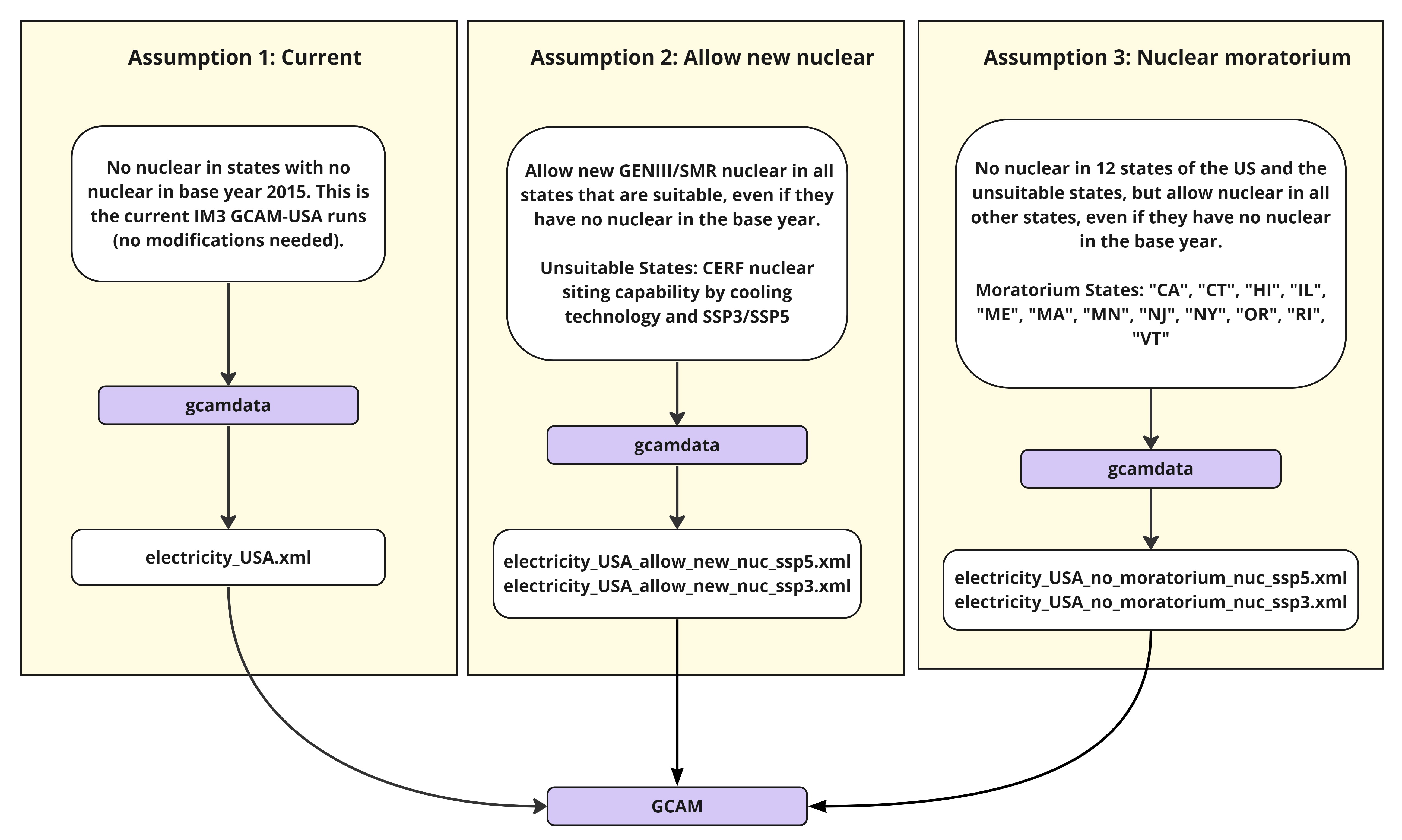
Nuclear Sensitivity Workflow
Table Workflow
| Step | Description | Location |
|---|---|---|
| Create Nuclear Scenarios XML |
|
PNNL stash |
| Run GCAM-USA scenario 1: current |
|
(Constance) /pic/projects/im3/gcamusa/gcam-usa-im3/exe |
| Run GCAM-USA scenario 2: allow new nuclear |
|
(Constance) /pic/projects/im3/gcamusa/gcam-usa-im3/exe |
| Run GCAM-USA scenario 3: nuclear moratorium |
|
(Constance) /pic/projects/im3/gcamusa/gcam-usa-im3/exe |
| Run Diagnostics |
|
(Constance) /pic/projects/im3/gcamusa/diagnostics |
| Diagnostics Outputs |
|
(Constance) /pic/projects/im3/gcamusa/diagnostics/outputs_im3_nuclear |
RCP4.5Cooler SSP3
Summary
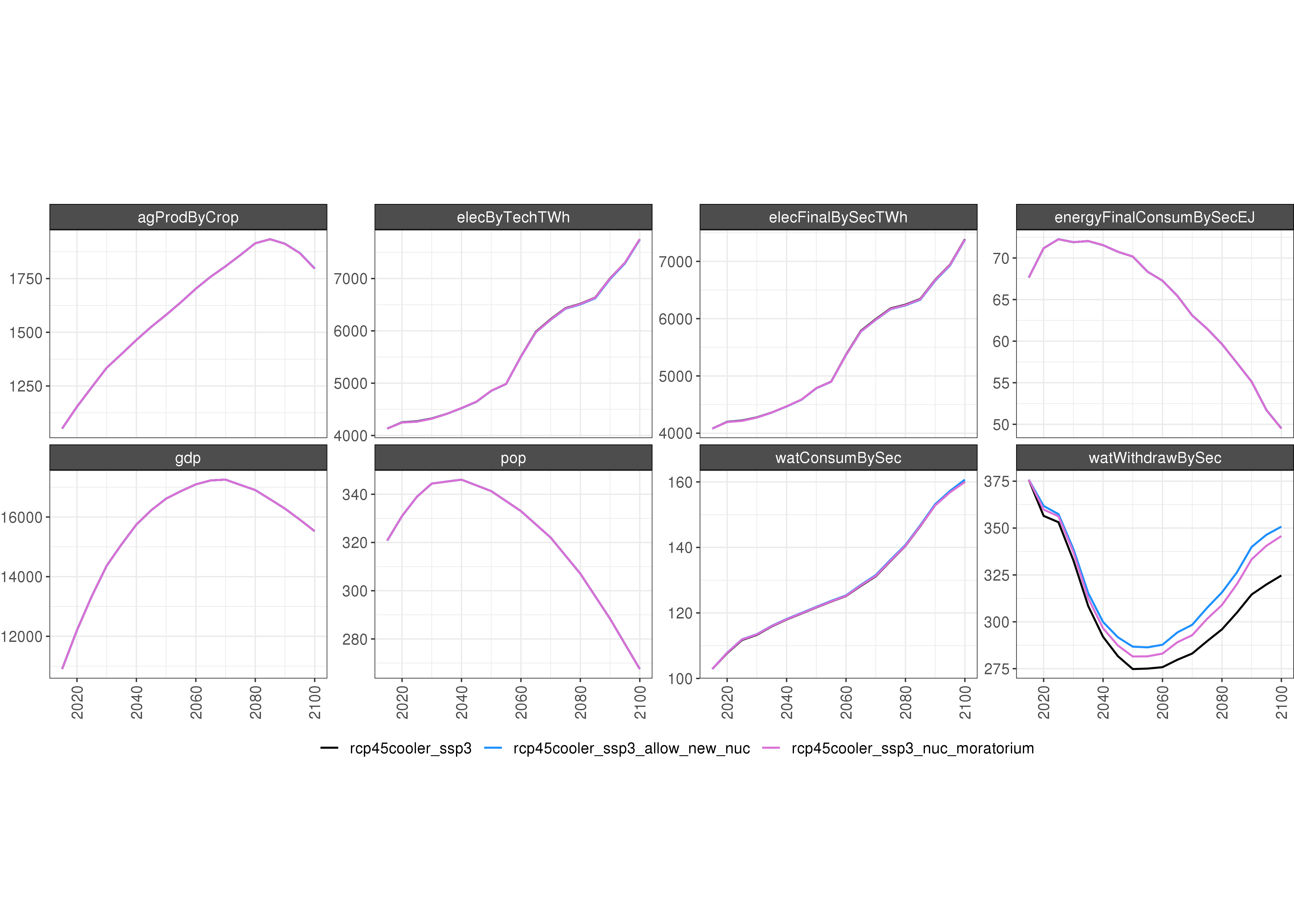
Comparison of GCAM outputs under 3 scenarios: (1) RCP4.5 Cooler SSP3, (2) RCP4.5 Cooler SSP3 + Allow New Nuclear, and (3) RCP4.5 Cooler SSP3 + Nuclear Moratorium.
Water
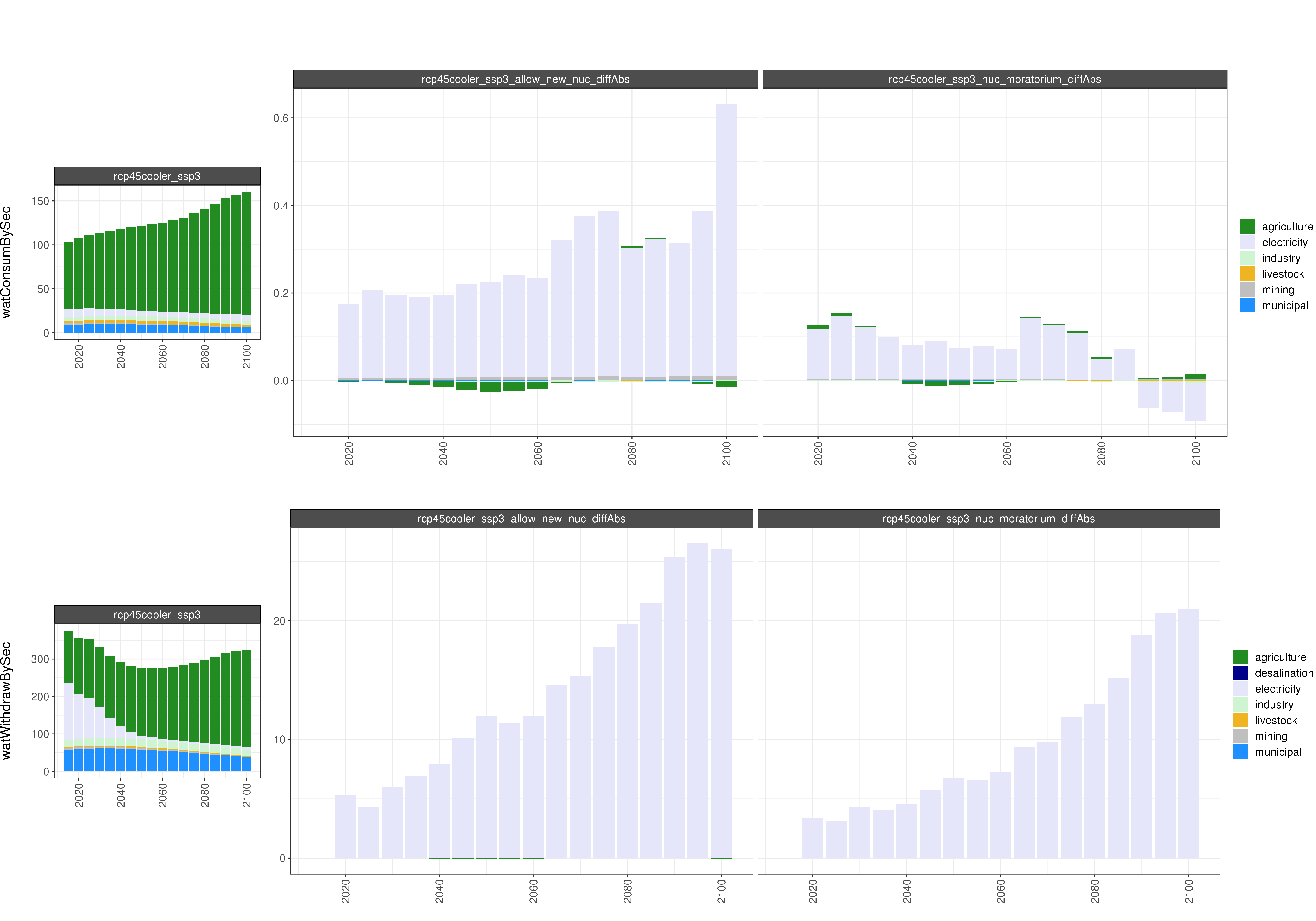
Comparison of GCAM water outputs (absolute difference).
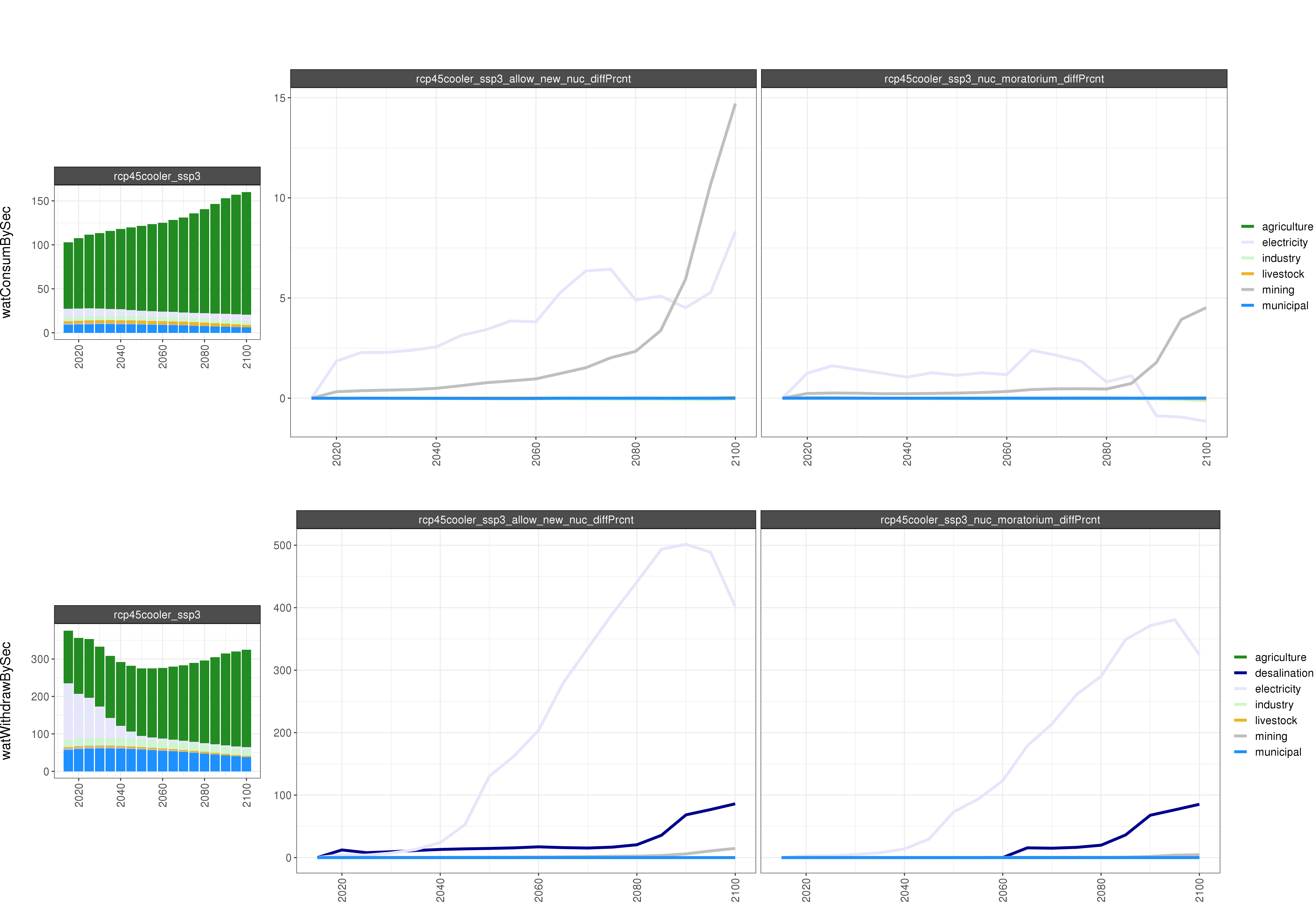
Comparison of GCAM water outputs (percent difference).
Energy
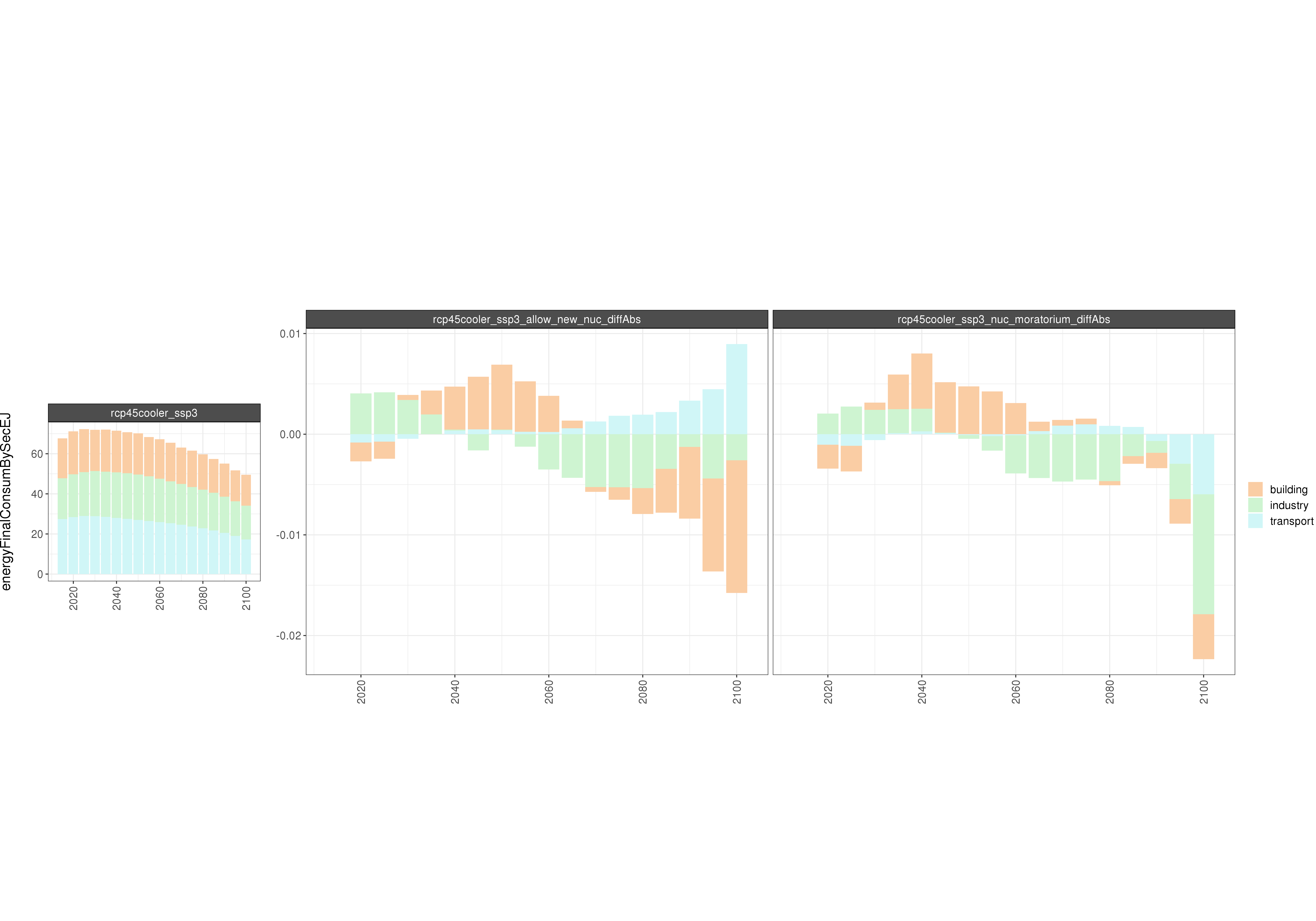
Comparison of GCAM energy outputs (absolute difference).
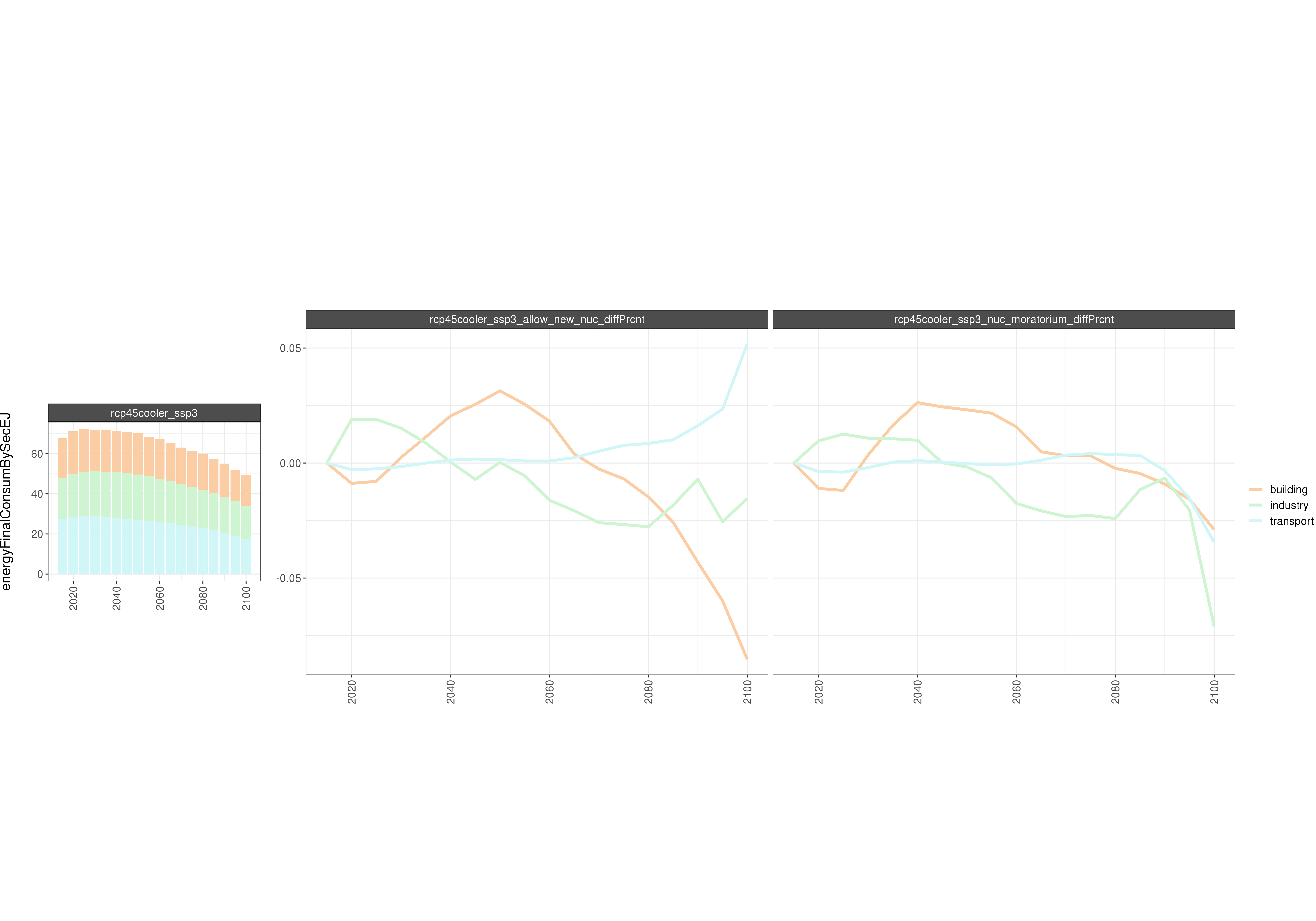
Comparison of GCAM energy outputs (percent difference).
Electricity
Total Electricity
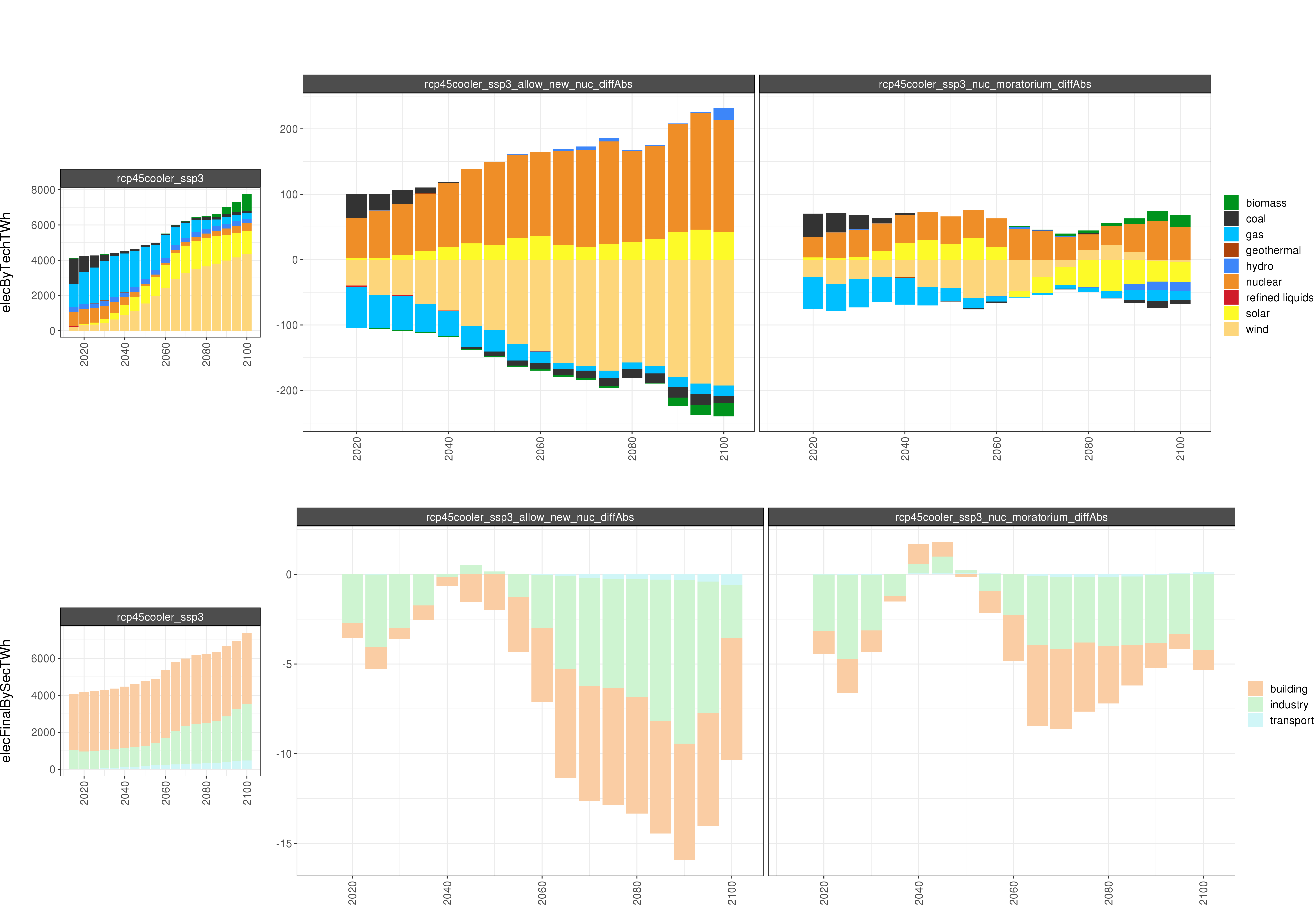
Comparison of GCAM electricity outputs (absolute difference).
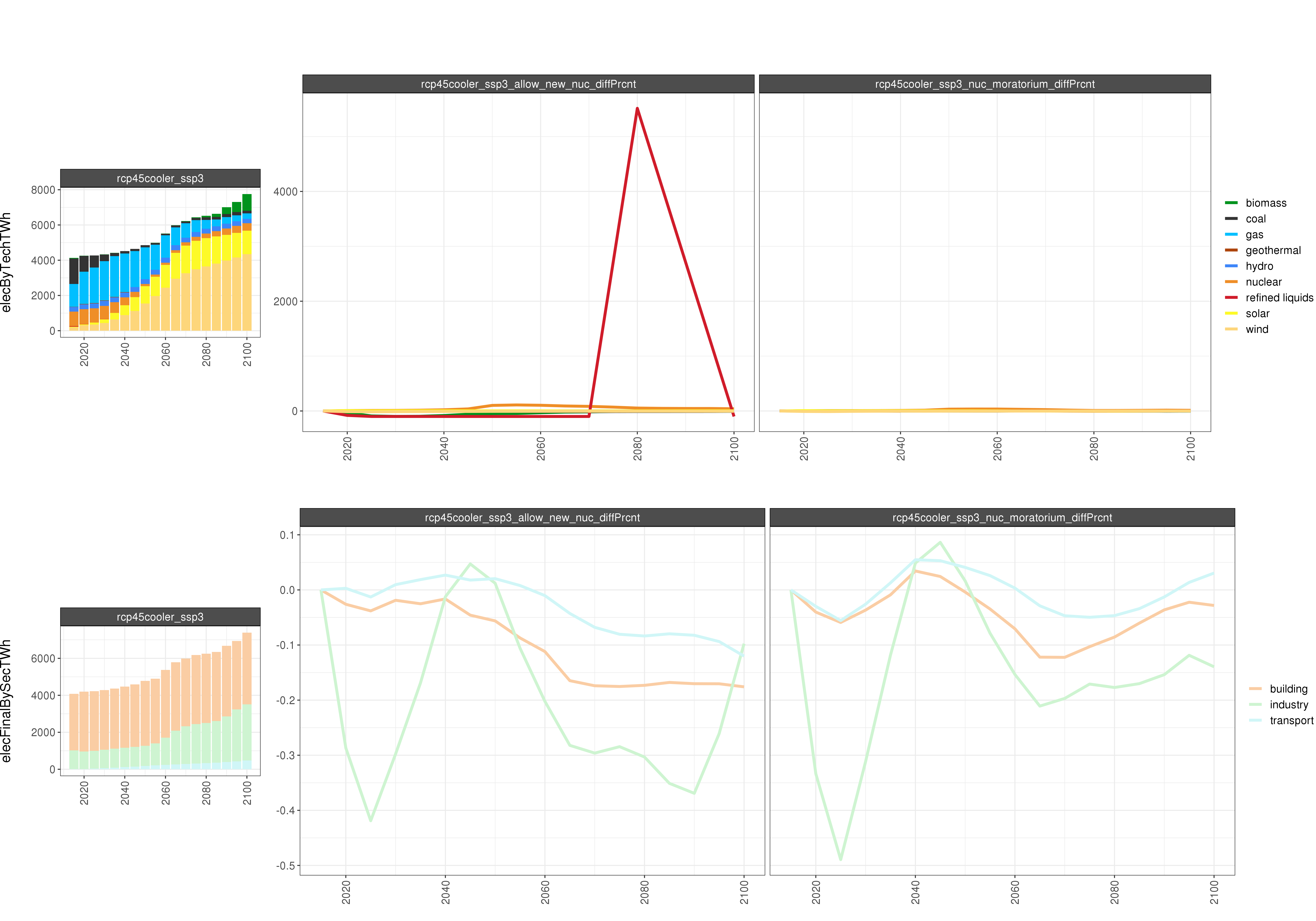
Comparison of GCAM electricity outputs (percent difference).
Superpeak
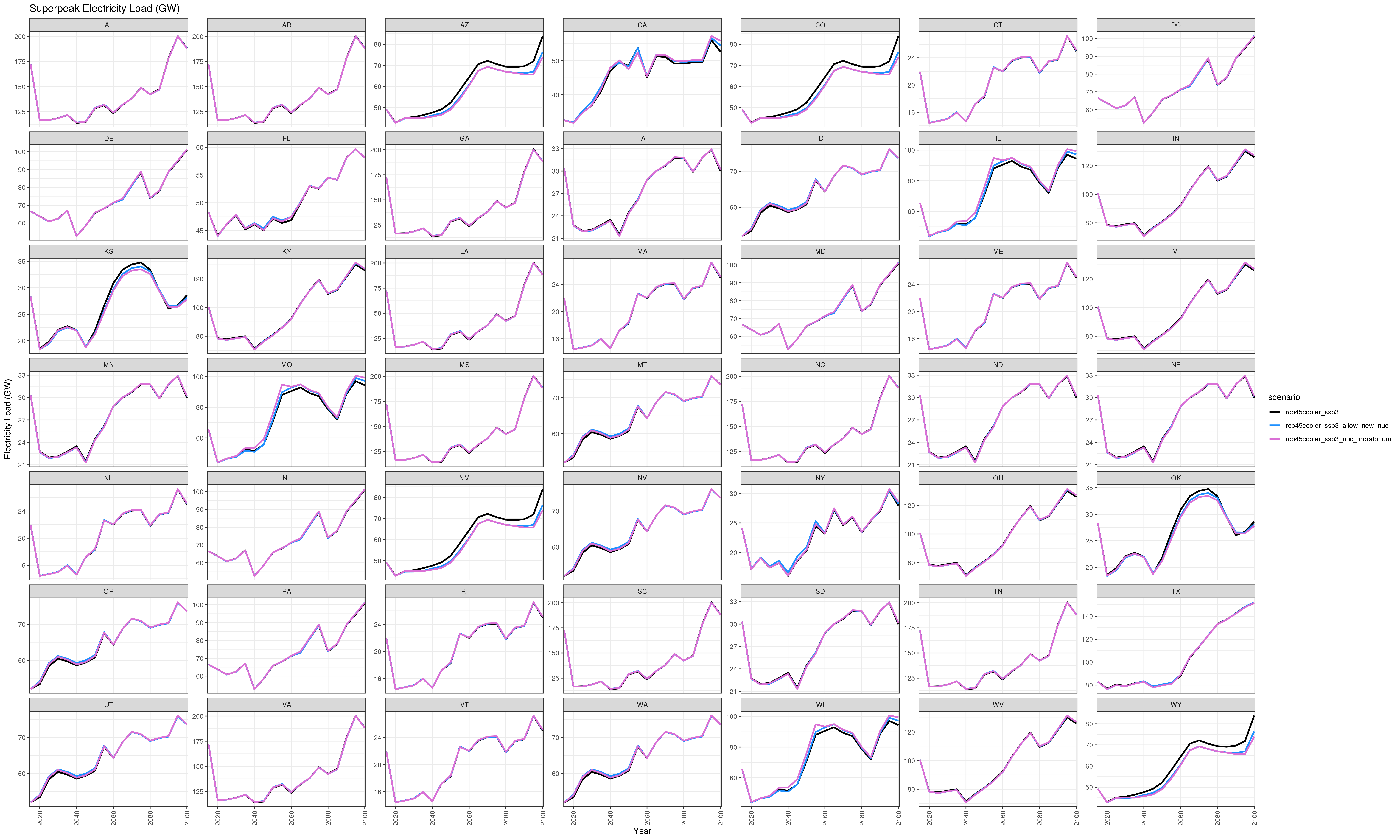
Comparison of GCAM superpeak outputs (percent difference).
AGLU
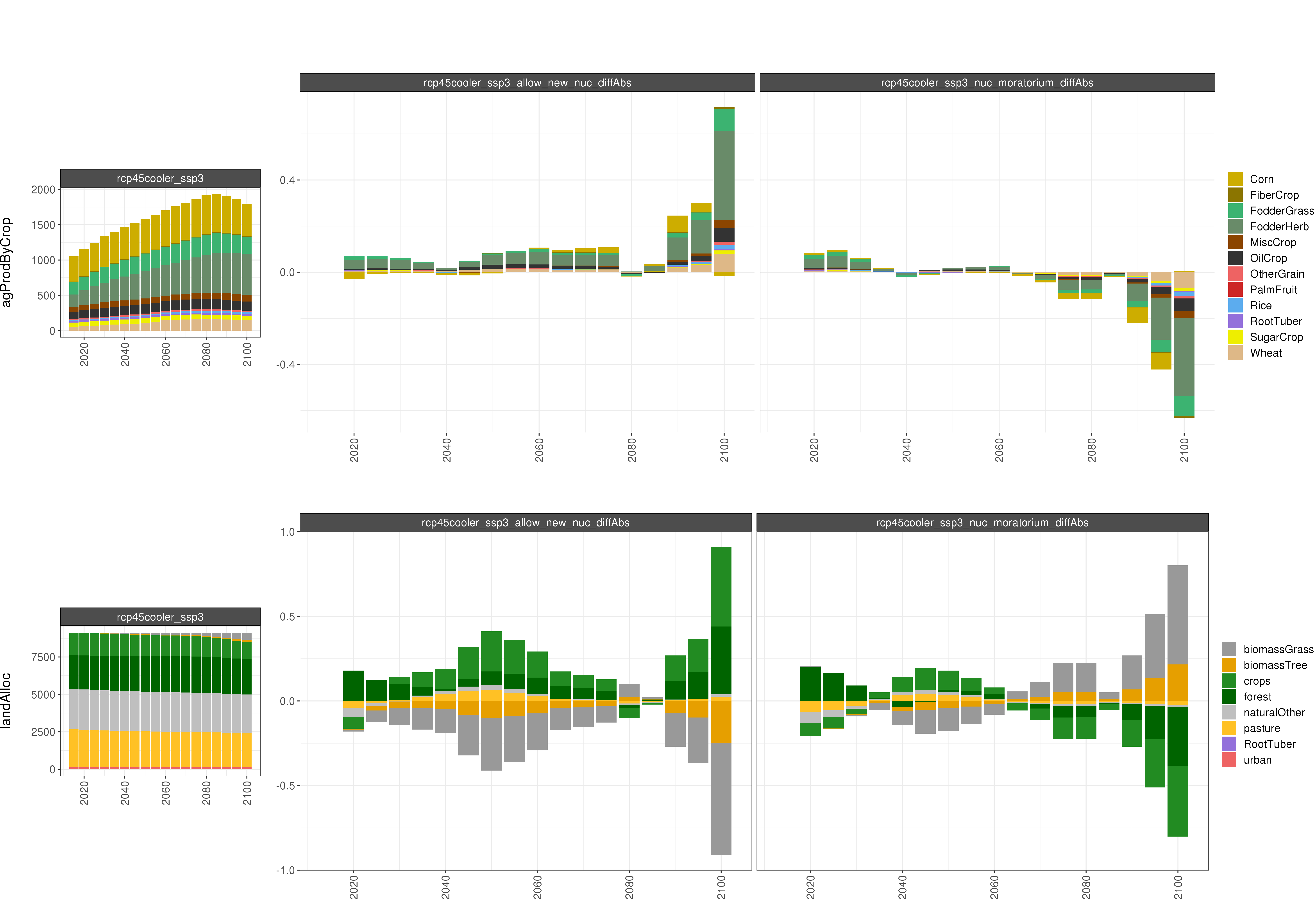
Comparison of GCAM AGLU outputs (absolute difference).
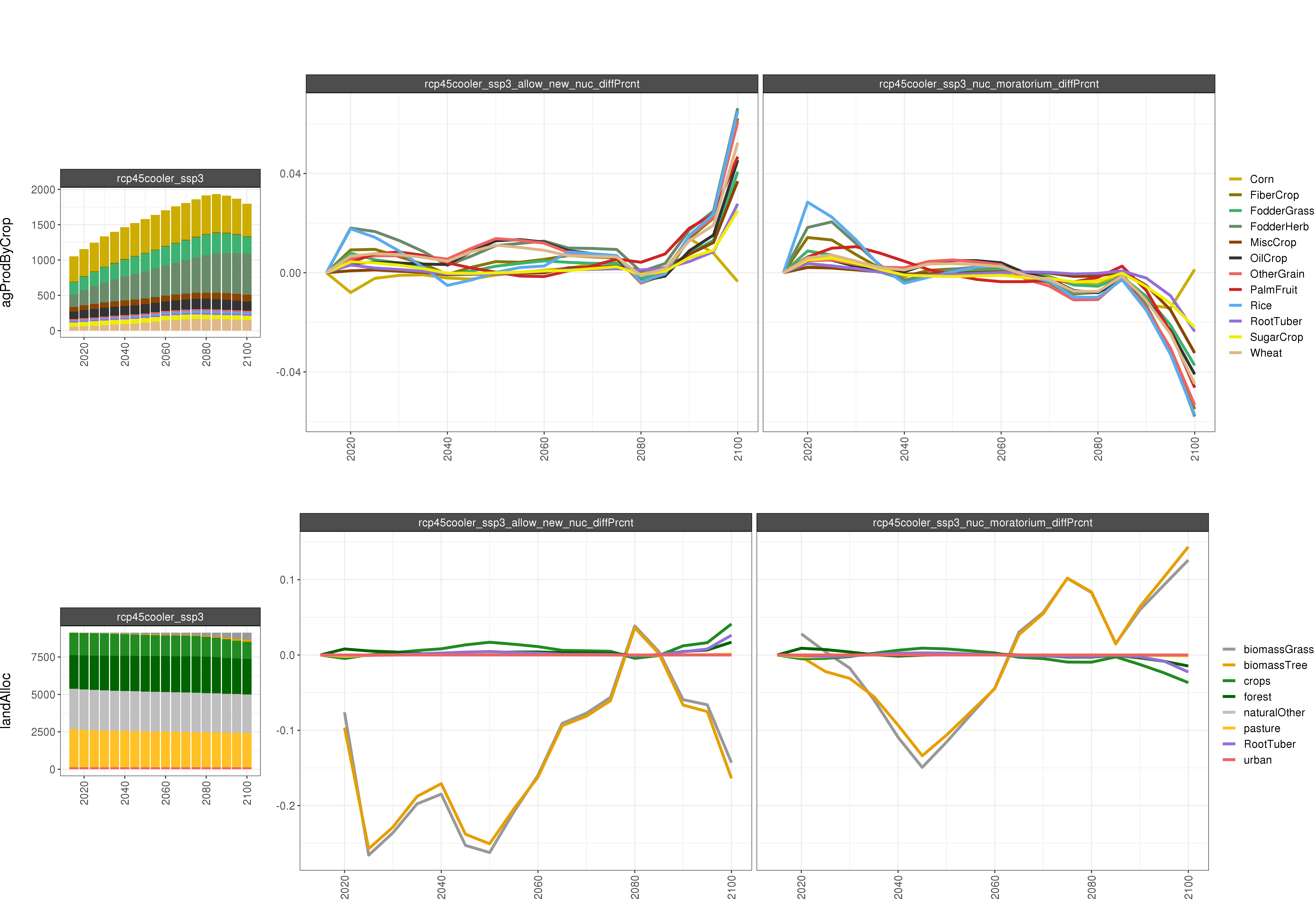
Comparison of GCAM AGLU outputs (percent difference).
Emissions
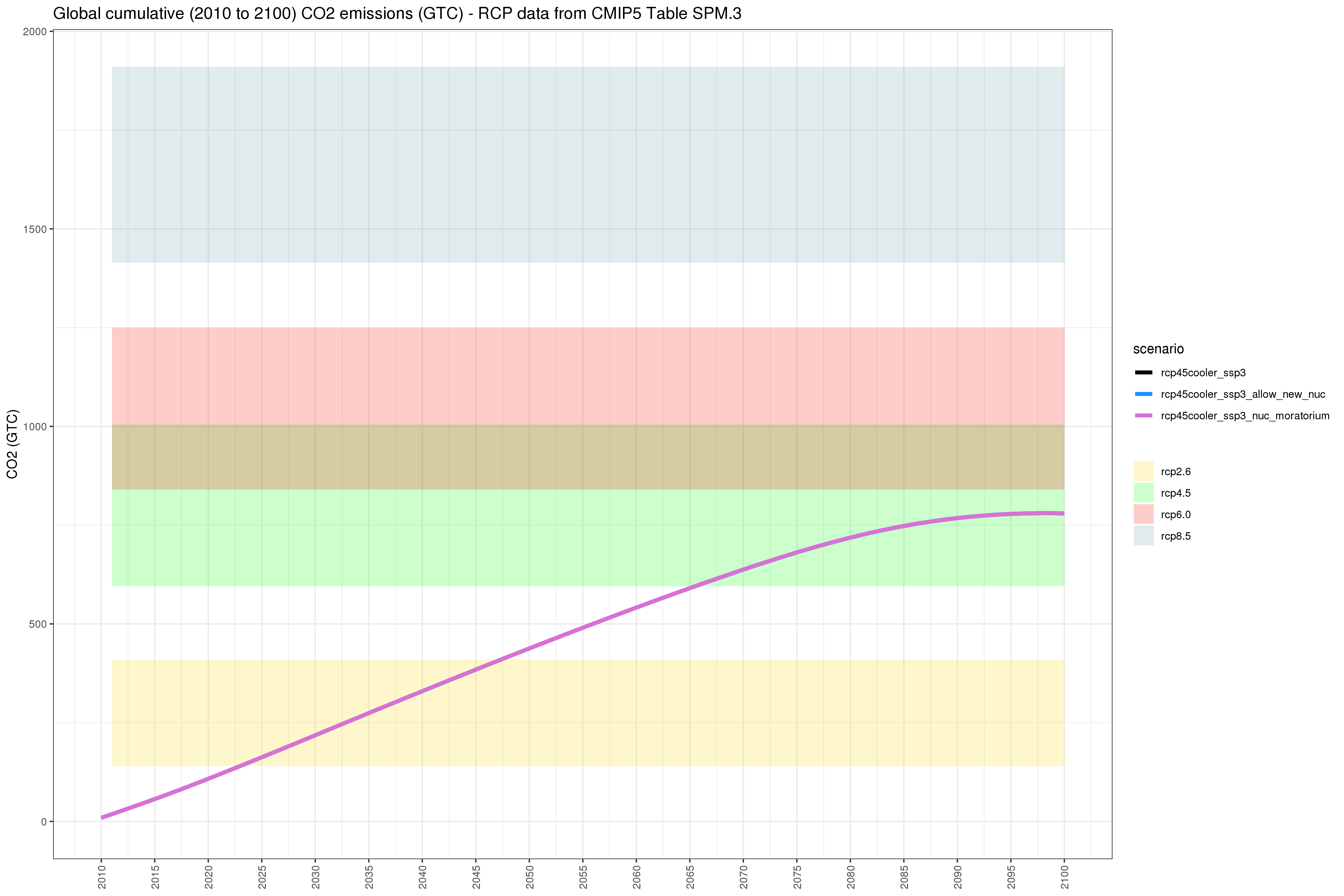
Comparison of GCAM emissions outputs
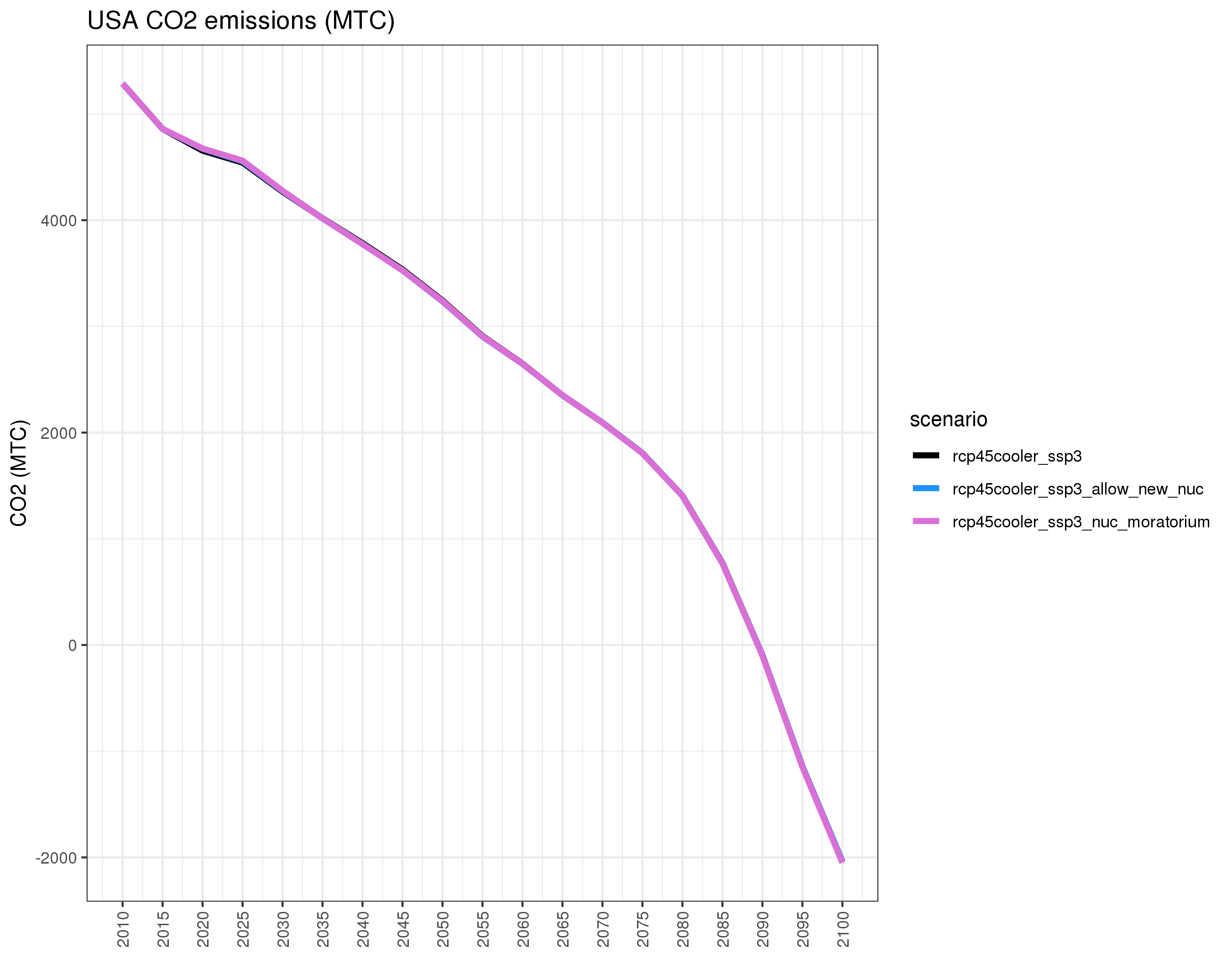
Comparison of GCAM emissions outputs.
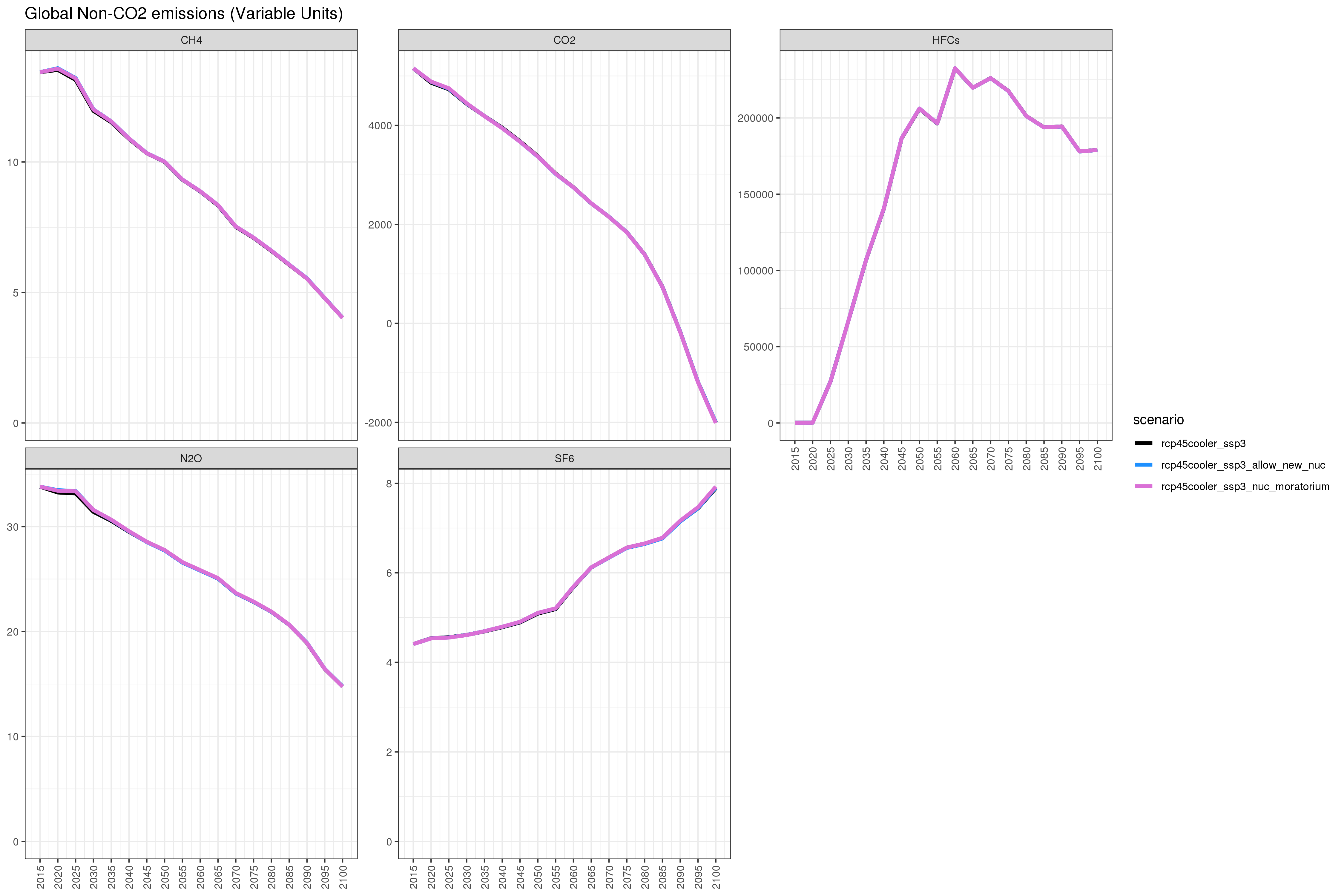
Comparison of GCAM emissions outputsS
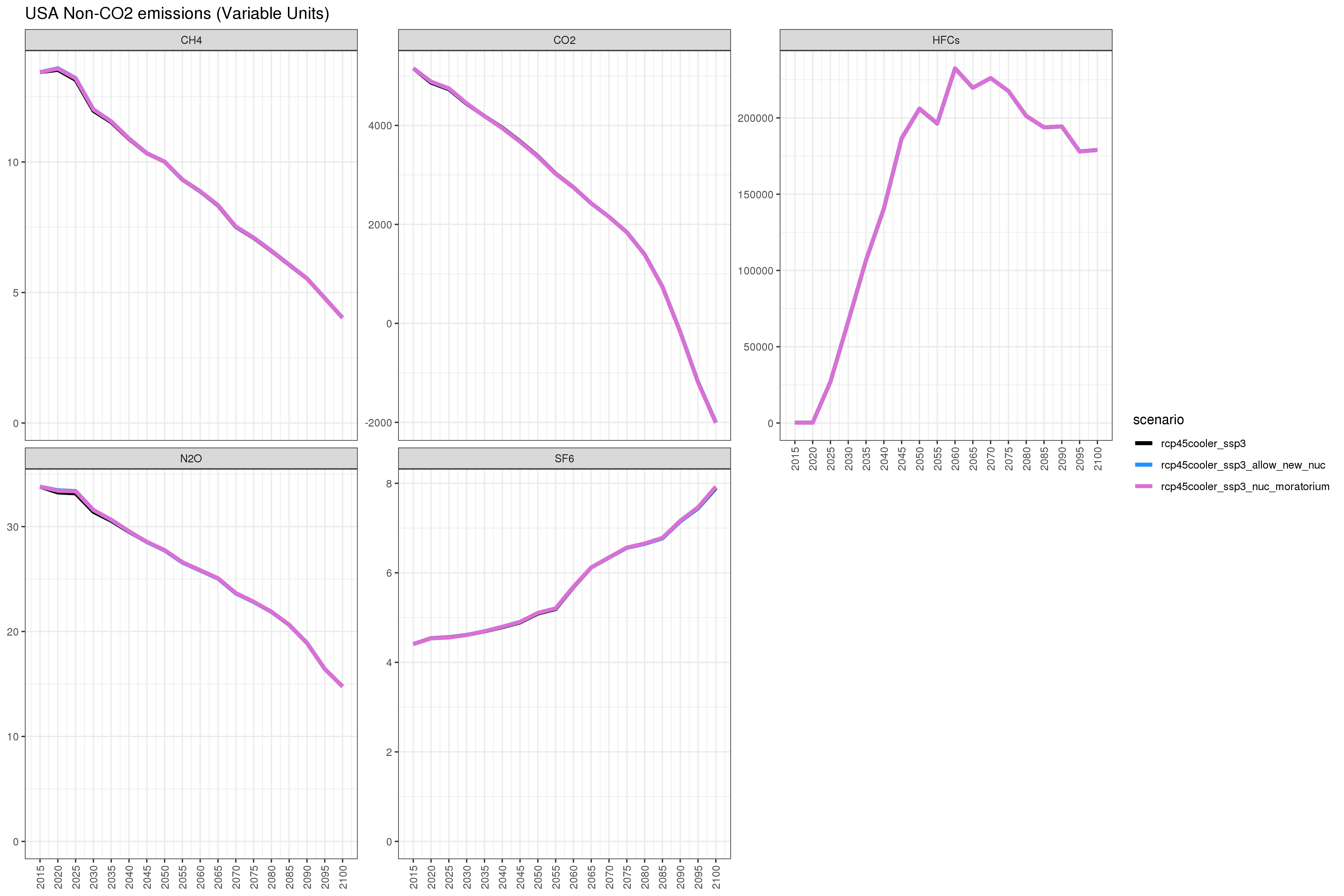
Comparison of GCAM emissions outputs
Nuclear Capacity
Nuclear Capacity by States
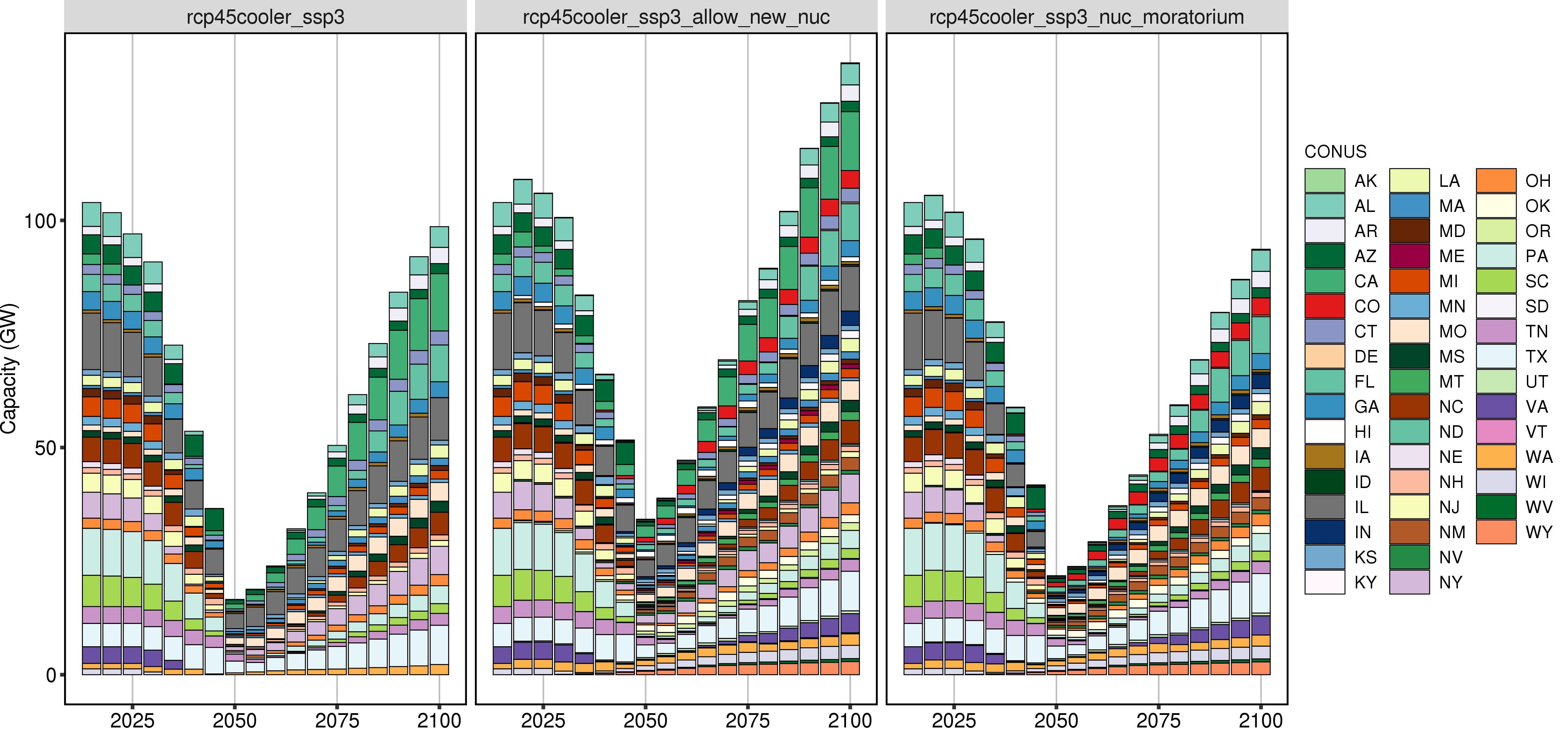
Comparison of GCAM Nuclear Capacity by States (absolute values).
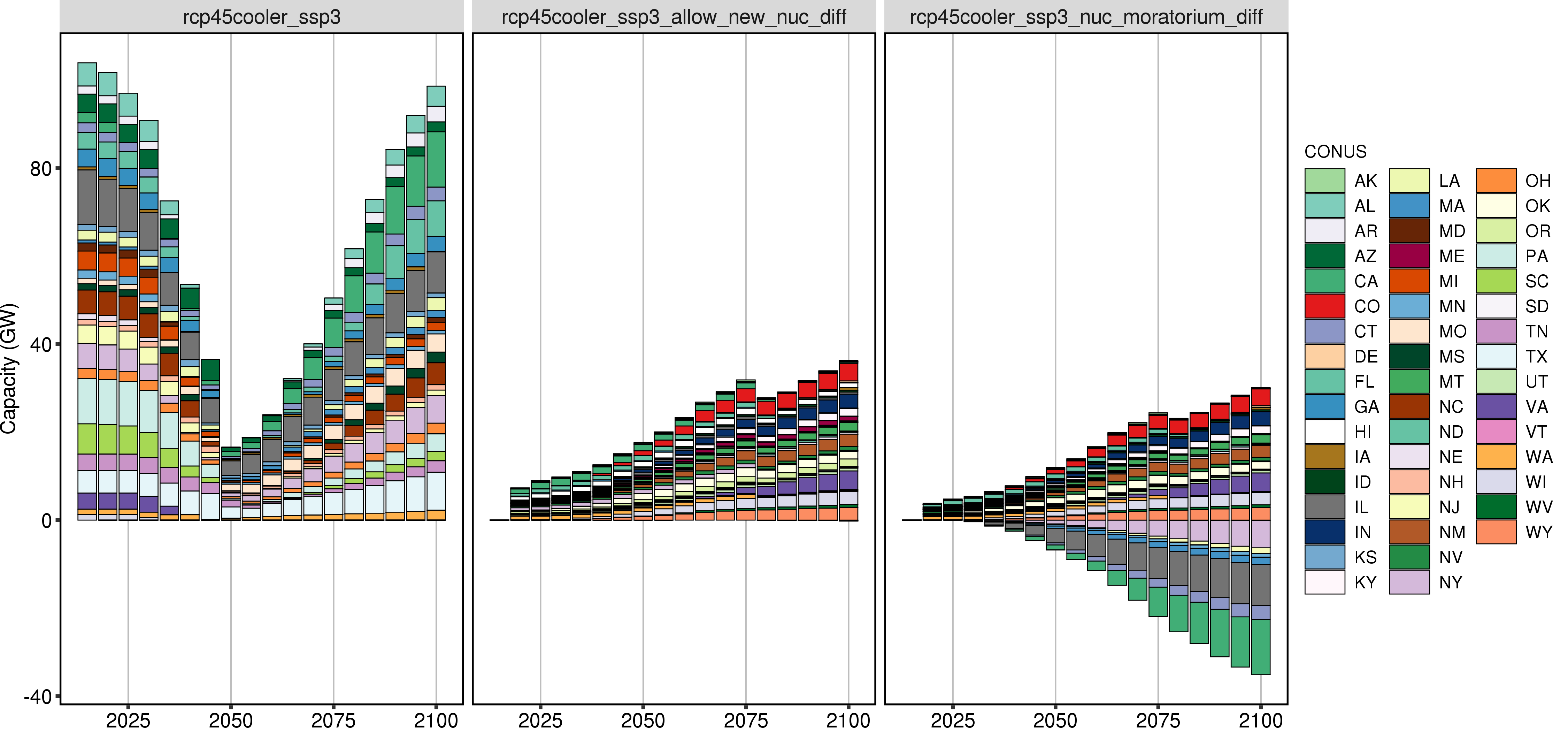
Comparison of GCAM Nuclear Capacity by States (difference).
Nuclear Capacity by Technology
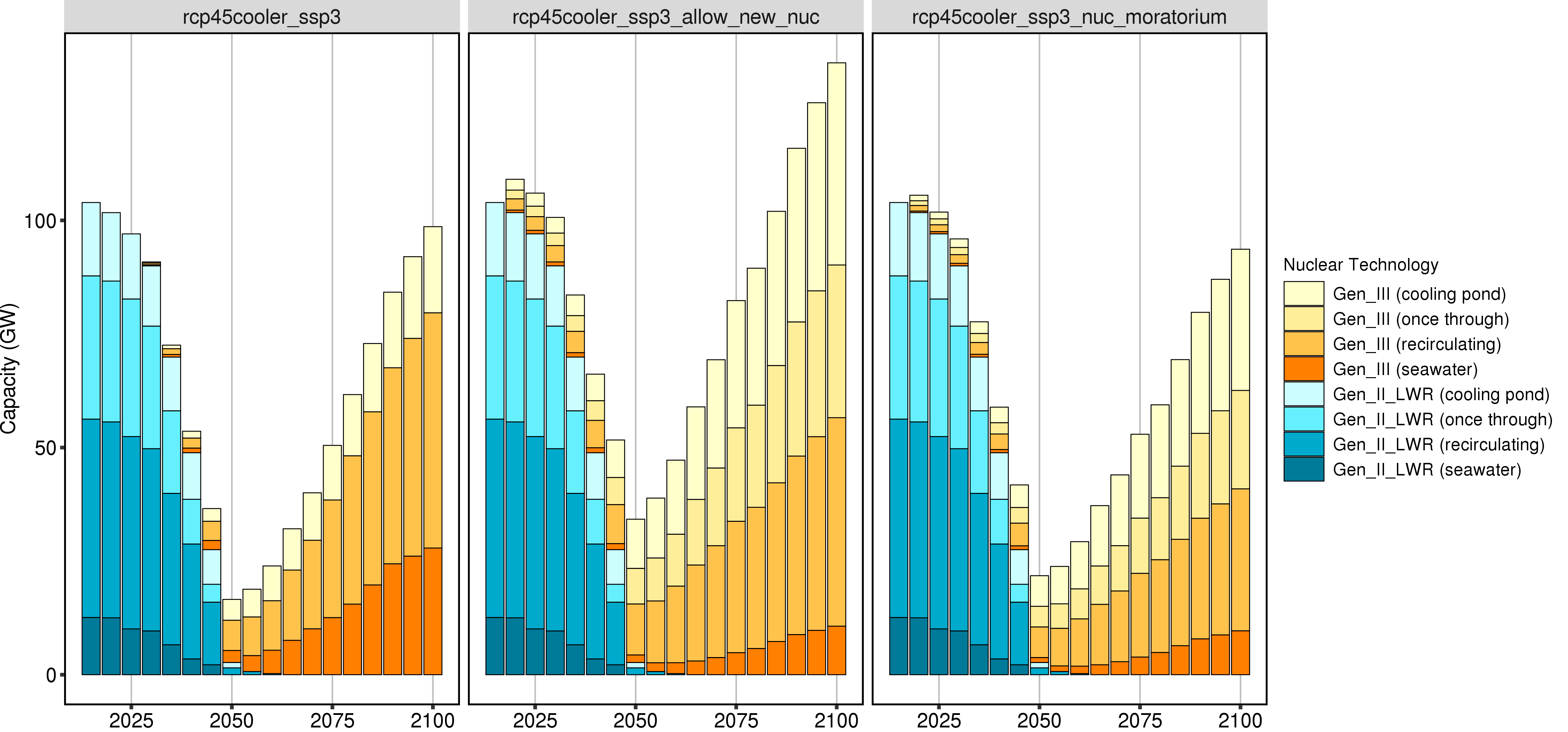
Comparison of GCAM Nuclear Capacity by Technology (absolute values).
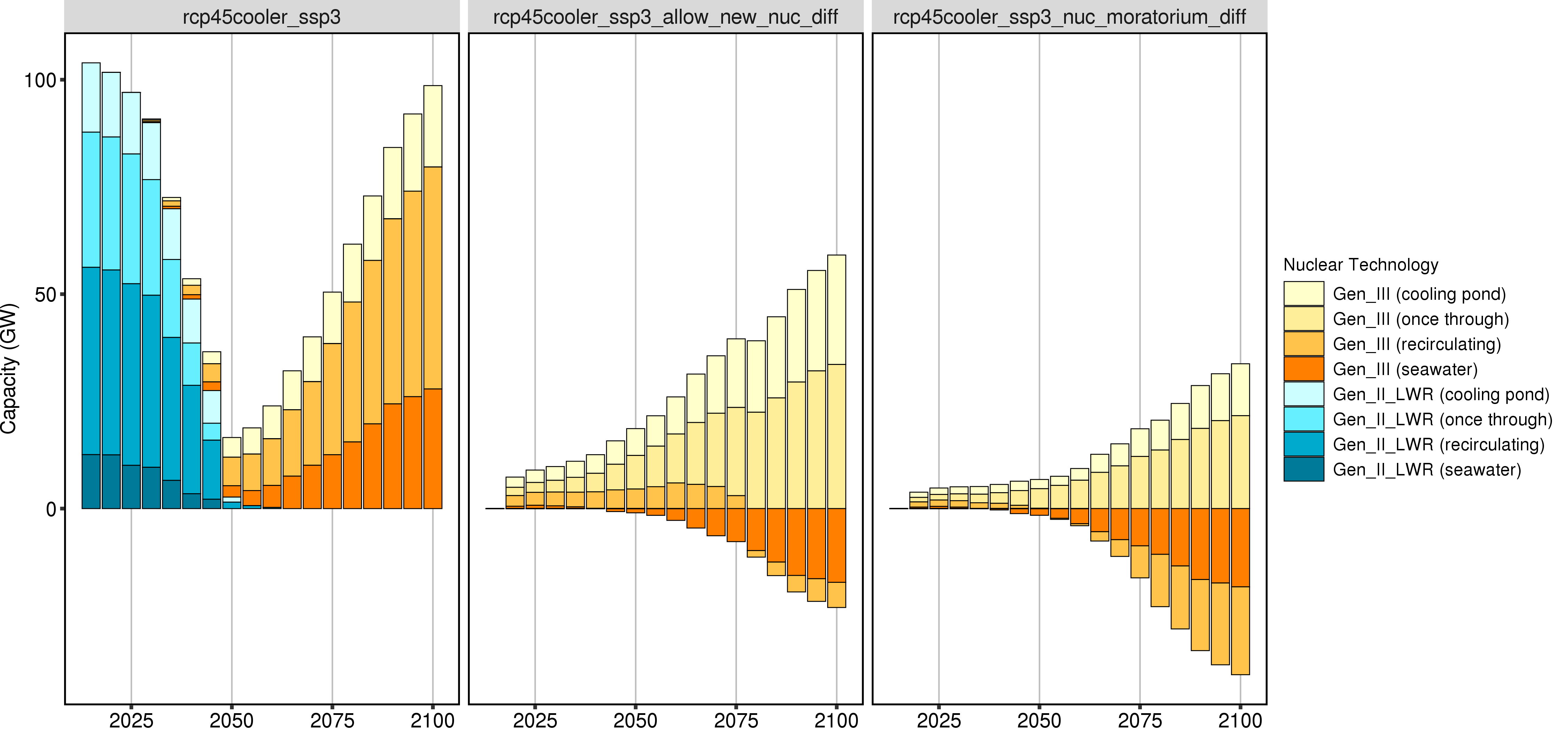
Comparison of GCAM Nuclear Capacity by Technology (difference).
Nuclear Capacity for States with New Nuclear
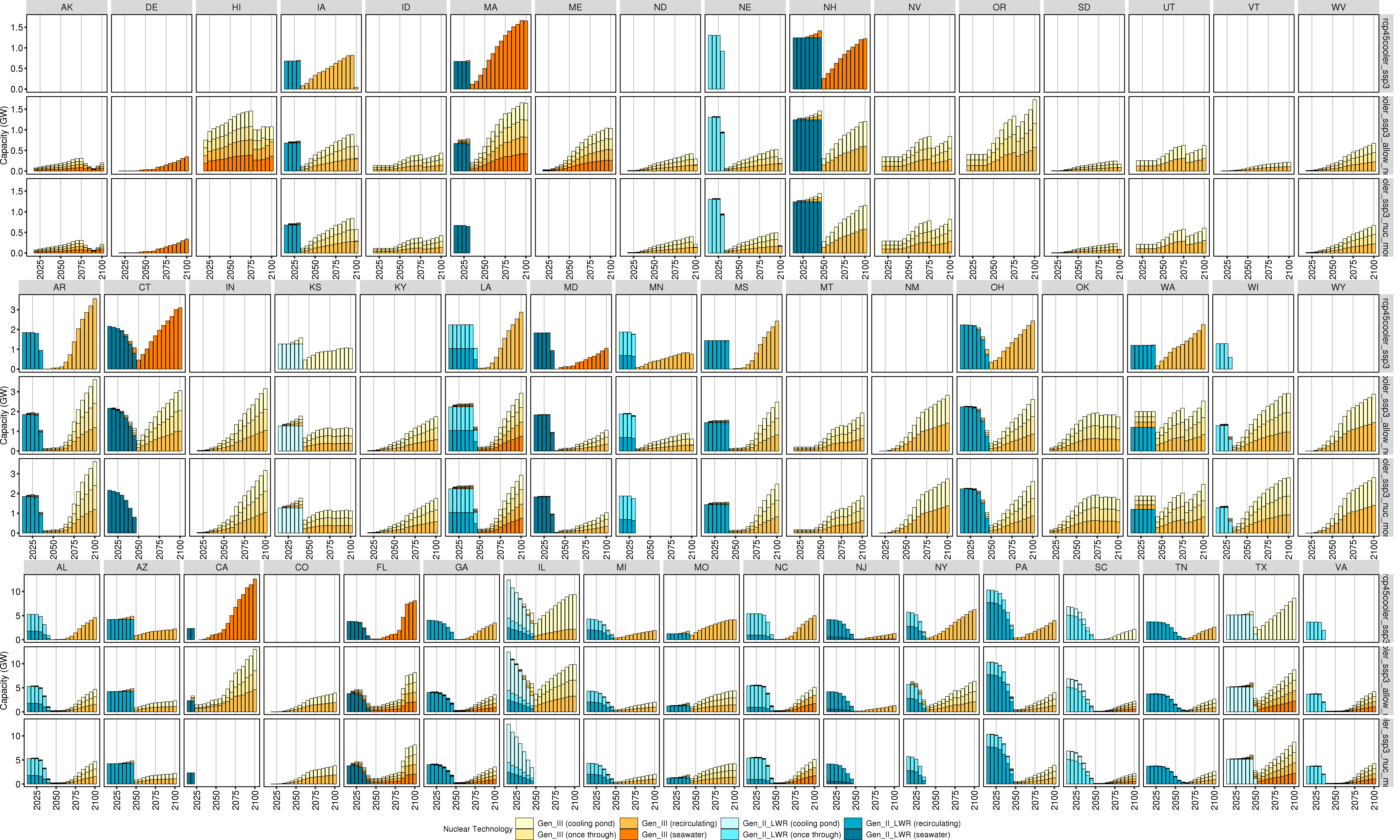
Comparison of GCAM Nuclear Capacity for Individual State (absolute values).
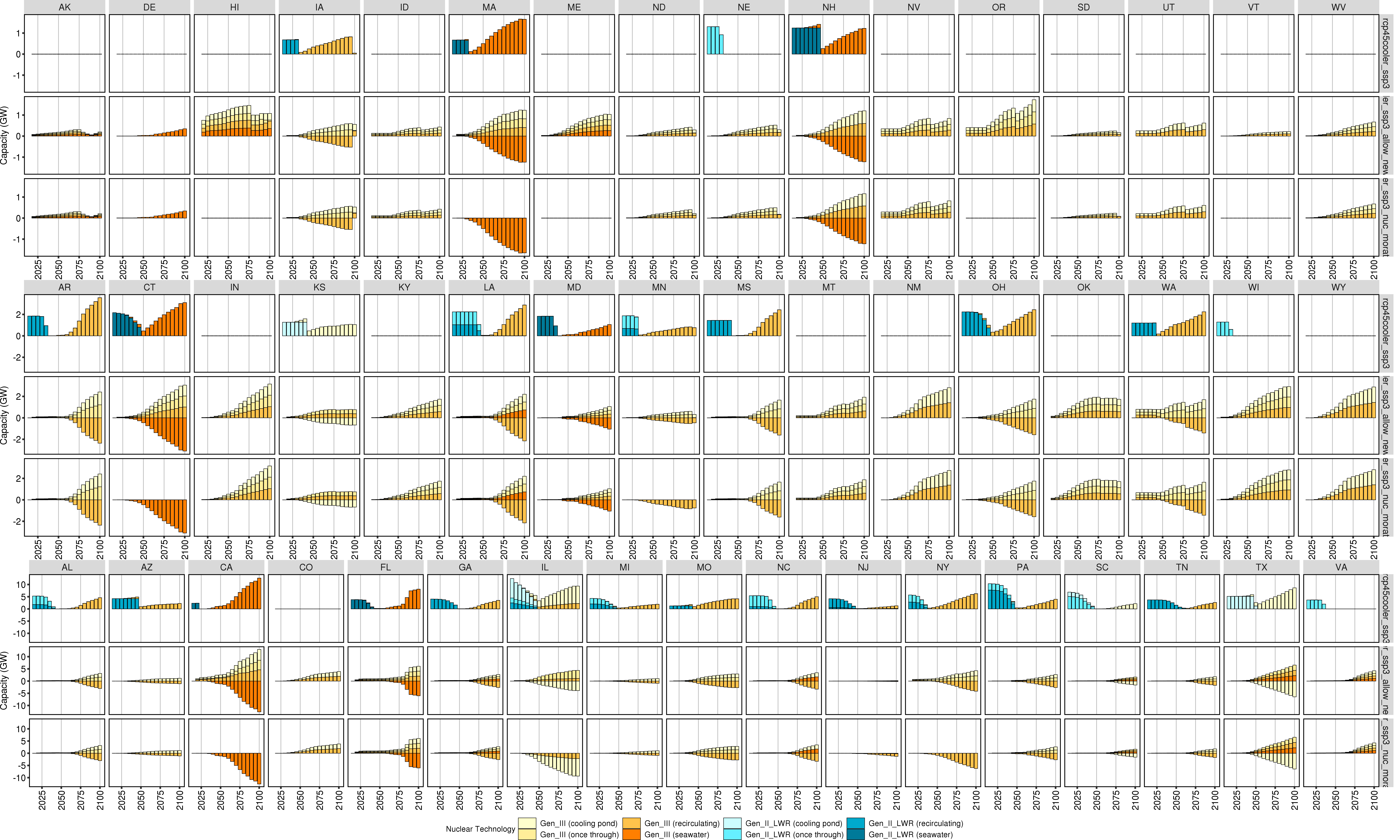
Comparison of GCAM Nuclear Capacity for Individual State (difference).
RCP4.5Cooler SSP5
Summary

Comparison of GCAM outputs under 3 scenarios: (1) RCP4.5 Cooler SSP5, (2) RCP4.5 Cooler SSP5 + Allow New Nuclear, and (3) RCP4.5 Cooler SSP5 + Nuclear Moratorium.
Water

Comparison of GCAM water outputs (absolute difference).

Comparison of GCAM water outputs (percent difference).
Energy

Comparison of GCAM energy outputs (absolute difference).

Comparison of GCAM energy outputs (percent difference).
Electricity
Total Electricity

Comparison of GCAM electricity outputs (absolute difference).

Comparison of GCAM electricity outputs (percent difference).
Superpeak

Comparison of GCAM superpeak outputs (percent difference).
AGLU

Comparison of GCAM AGLU outputs (absolute difference).

Comparison of GCAM AGLU outputs (percent difference).
Emissions

Comparison of GCAM emissions outputs

Comparison of GCAM emissions outputs.

Comparison of GCAM emissions outputsS

Comparison of GCAM emissions outputs
Nuclear Capacity
Nuclear Capacity by States

Comparison of GCAM Nuclear Capacity by States (absolute values).

Comparison of GCAM Nuclear Capacity by States (difference).
Nuclear Capacity by Technology

Comparison of GCAM Nuclear Capacity by Technology (absolute values).

Comparison of GCAM Nuclear Capacity by Technology (difference).
Nuclear Capacity for States with New Nuclear

Comparison of GCAM Nuclear Capacity for Individual State (absolute values).

Comparison of GCAM Nuclear Capacity for Individual State (difference).
RCP4.5Hotter SSP3
Summary

Comparison of GCAM outputs under 3 scenarios: (1) RCP4.5 Hotter SSP3, (2) RCP4.5 Hotter SSP3 + Allow New Nuclear, and (3) RCP4.5 Hotter SSP3 + Nuclear Moratorium.
Water

Comparison of GCAM water outputs (absolute difference).

Comparison of GCAM water outputs (percent difference).
Energy

Comparison of GCAM energy outputs (absolute difference).

Comparison of GCAM energy outputs (percent difference).
Electricity
Total Electricity

Comparison of GCAM electricity outputs (absolute difference).

Comparison of GCAM electricity outputs (percent difference).
Superpeak

Comparison of GCAM superpeak outputs (percent difference).
AGLU

Comparison of GCAM AGLU outputs (absolute difference).

Comparison of GCAM AGLU outputs (percent difference).
Emissions

Comparison of GCAM emissions outputs

Comparison of GCAM emissions outputs.

Comparison of GCAM emissions outputsS

Comparison of GCAM emissions outputs
Nuclear Capacity
Nuclear Capacity by States

Comparison of GCAM Nuclear Capacity by States (absolute values).

Comparison of GCAM Nuclear Capacity by States (difference).
Nuclear Capacity by Technology

Comparison of GCAM Nuclear Capacity by Technology (absolute values).

Comparison of GCAM Nuclear Capacity by Technology (difference).
Nuclear Capacity for States with New Nuclear

Comparison of GCAM Nuclear Capacity for Individual State (absolute values).

Comparison of GCAM Nuclear Capacity for Individual State (difference).
RCP4.5Hotter SSP5
Summary

Comparison of GCAM outputs under 3 scenarios: (1) RCP4.5 Hotter SSP5, (2) RCP4.5 Hotter SSP5 + Allow New Nuclear, and (3) RCP4.5 Hotter SSP5 + Nuclear Moratorium.
Water

Comparison of GCAM water outputs (absolute difference).

Comparison of GCAM water outputs (percent difference).
Energy

Comparison of GCAM energy outputs (absolute difference).

Comparison of GCAM energy outputs (percent difference).
Electricity
Total Electricity

Comparison of GCAM electricity outputs (absolute difference).

Comparison of GCAM electricity outputs (percent difference).
Superpeak

Comparison of GCAM superpeak outputs (percent difference).
AGLU

Comparison of GCAM AGLU outputs (absolute difference).

Comparison of GCAM AGLU outputs (percent difference).
Emissions

Comparison of GCAM emissions outputs

Comparison of GCAM emissions outputs.

Comparison of GCAM emissions outputsS

Comparison of GCAM emissions outputs
Nuclear Capacity
Nuclear Capacity by States

Comparison of GCAM Nuclear Capacity by States (absolute values).

Comparison of GCAM Nuclear Capacity by States (difference).
Nuclear Capacity by Technology

Comparison of GCAM Nuclear Capacity by Technology (absolute values).

Comparison of GCAM Nuclear Capacity by Technology (difference).
Nuclear Capacity for States with New Nuclear

Comparison of GCAM Nuclear Capacity for Individual State (absolute values).

Comparison of GCAM Nuclear Capacity for Individual State (difference).
RCP8.5Cooler SSP3
Summary

Comparison of GCAM outputs under 3 scenarios: (1) RCP8.5 Cooler SSP3, (2) RCP8.5 Cooler SSP3 + Allow New Nuclear, and (3) RCP8.5 Cooler SSP3 + Nuclear Moratorium.
Water

Comparison of GCAM water outputs (absolute difference).

Comparison of GCAM water outputs (percent difference).
Energy

Comparison of GCAM energy outputs (absolute difference).

Comparison of GCAM energy outputs (percent difference).
Electricity
Total Electricity

Comparison of GCAM electricity outputs (absolute difference).

Comparison of GCAM electricity outputs (percent difference).
Superpeak

Comparison of GCAM superpeak outputs (percent difference).
AGLU

Comparison of GCAM AGLU outputs (absolute difference).

Comparison of GCAM AGLU outputs (percent difference).
Emissions

Comparison of GCAM emissions outputs

Comparison of GCAM emissions outputs.

Comparison of GCAM emissions outputsS

Comparison of GCAM emissions outputs
Nuclear Capacity
Nuclear Capacity by States

Comparison of GCAM Nuclear Capacity by States (absolute values).

Comparison of GCAM Nuclear Capacity by States (difference).
Nuclear Capacity by Technology

Comparison of GCAM Nuclear Capacity by Technology (absolute values).

Comparison of GCAM Nuclear Capacity by Technology (difference).
Nuclear Capacity for States with New Nuclear

Comparison of GCAM Nuclear Capacity for Individual State (absolute values).

Comparison of GCAM Nuclear Capacity for Individual State (difference).
RCP8.5Cooler SSP5
Summary

Comparison of GCAM outputs under 3 scenarios: (1) RCP8.5 Cooler SSP5, (2) RCP8.5 Cooler SSP5 + Allow New Nuclear, and (3) RCP8.5 Cooler SSP5 + Nuclear Moratorium.
Water

Comparison of GCAM water outputs (absolute difference).

Comparison of GCAM water outputs (percent difference).
Energy

Comparison of GCAM energy outputs (absolute difference).

Comparison of GCAM energy outputs (percent difference).
Electricity
Total Electricity

Comparison of GCAM electricity outputs (absolute difference).

Comparison of GCAM electricity outputs (percent difference).
Superpeak

Comparison of GCAM superpeak outputs (percent difference).
AGLU

Comparison of GCAM AGLU outputs (absolute difference).

Comparison of GCAM AGLU outputs (percent difference).
Emissions

Comparison of GCAM emissions outputs

Comparison of GCAM emissions outputs.

Comparison of GCAM emissions outputsS

Comparison of GCAM emissions outputs
Nuclear Capacity
Nuclear Capacity by States

Comparison of GCAM Nuclear Capacity by States (absolute values).

Comparison of GCAM Nuclear Capacity by States (difference).
Nuclear Capacity by Technology

Comparison of GCAM Nuclear Capacity by Technology (absolute values).

Comparison of GCAM Nuclear Capacity by Technology (difference).
Nuclear Capacity for States with New Nuclear

Comparison of GCAM Nuclear Capacity for Individual State (absolute values).

Comparison of GCAM Nuclear Capacity for Individual State (difference).
RCP8.5Hotter SSP3
Summary

Comparison of GCAM outputs under 3 scenarios: (1) RCP8.5 Hotter SSP3, (2) RCP8.5 Hotter SSP3 + Allow New Nuclear, and (3) RCP8.5 Hotter SSP3 + Nuclear Moratorium.
Water

Comparison of GCAM water outputs (absolute difference).

Comparison of GCAM water outputs (percent difference).
Energy

Comparison of GCAM energy outputs (absolute difference).

Comparison of GCAM energy outputs (percent difference).
Electricity
Total Electricity

Comparison of GCAM electricity outputs (absolute difference).

Comparison of GCAM electricity outputs (percent difference).
Superpeak

Comparison of GCAM superpeak outputs (percent difference).
AGLU

Comparison of GCAM AGLU outputs (absolute difference).

Comparison of GCAM AGLU outputs (percent difference).
Emissions

Comparison of GCAM emissions outputs

Comparison of GCAM emissions outputs.

Comparison of GCAM emissions outputsS

Comparison of GCAM emissions outputs
Nuclear Capacity
Nuclear Capacity by States

Comparison of GCAM Nuclear Capacity by States (absolute values).

Comparison of GCAM Nuclear Capacity by States (difference).
Nuclear Capacity by Technology

Comparison of GCAM Nuclear Capacity by Technology (absolute values).

Comparison of GCAM Nuclear Capacity by Technology (difference).
Nuclear Capacity for States with New Nuclear

Comparison of GCAM Nuclear Capacity for Individual State (absolute values).

Comparison of GCAM Nuclear Capacity for Individual State (difference).
RCP8.5Hotter SSP5
Summary

Comparison of GCAM outputs under 3 scenarios: (1) RCP8.5 Hotter SSP5, (2) RCP8.5 Hotter SSP5 + Allow New Nuclear, and (3) RCP8.5 Hotter SSP5 + Nuclear Moratorium.
Water

Comparison of GCAM water outputs (absolute difference).

Comparison of GCAM water outputs (percent difference).
Energy

Comparison of GCAM energy outputs (absolute difference).

Comparison of GCAM energy outputs (percent difference).
Electricity
Total Electricity

Comparison of GCAM electricity outputs (absolute difference).

Comparison of GCAM electricity outputs (percent difference).
Superpeak

Comparison of GCAM superpeak outputs (percent difference).
AGLU

Comparison of GCAM AGLU outputs (absolute difference).

Comparison of GCAM AGLU outputs (percent difference).
Emissions

Comparison of GCAM emissions outputs

Comparison of GCAM emissions outputs.

Comparison of GCAM emissions outputsS

Comparison of GCAM emissions outputs
Nuclear Capacity
Nuclear Capacity by States

Comparison of GCAM Nuclear Capacity by States (absolute values).

Comparison of GCAM Nuclear Capacity by States (difference).
Nuclear Capacity by Technology

Comparison of GCAM Nuclear Capacity by Technology (absolute values).

Comparison of GCAM Nuclear Capacity by Technology (difference).
Nuclear Capacity for States with New Nuclear

Comparison of GCAM Nuclear Capacity for Individual State (absolute values).

Comparison of GCAM Nuclear Capacity for Individual State (difference).